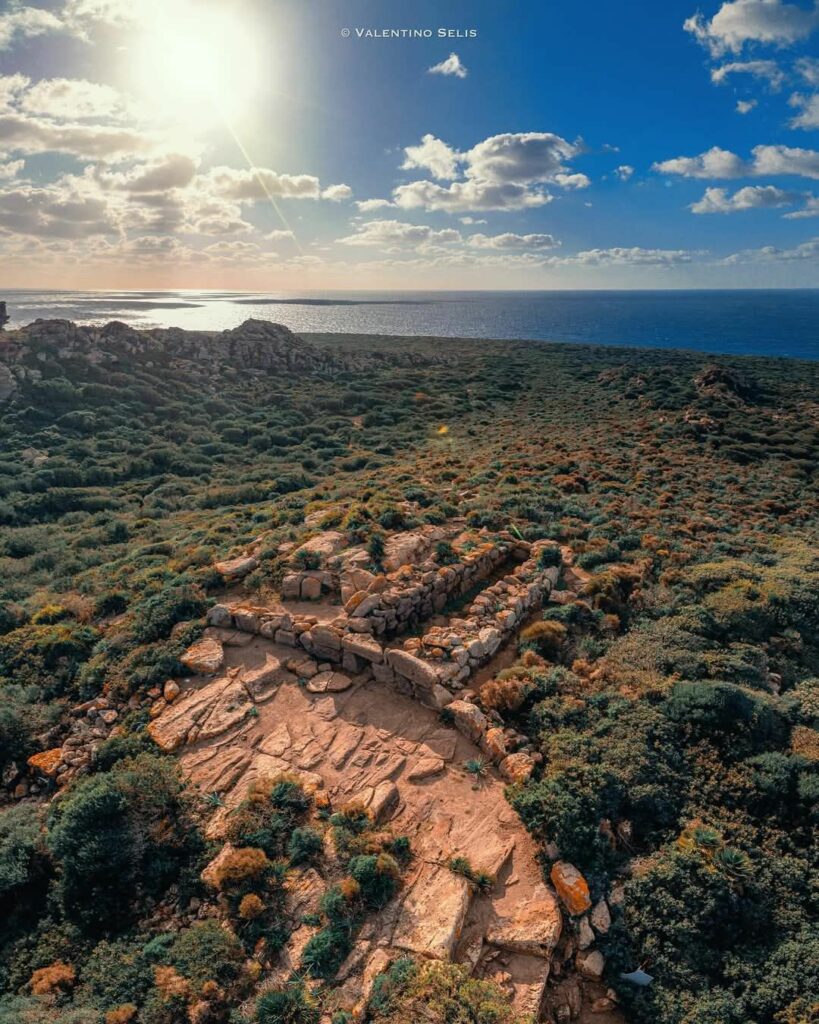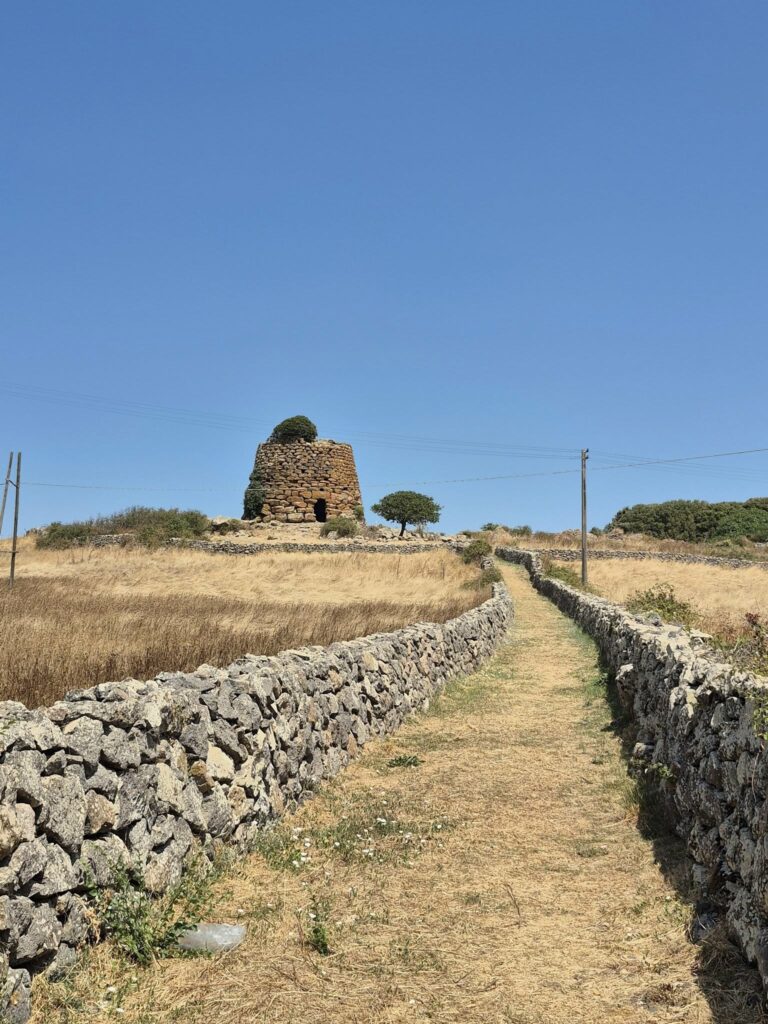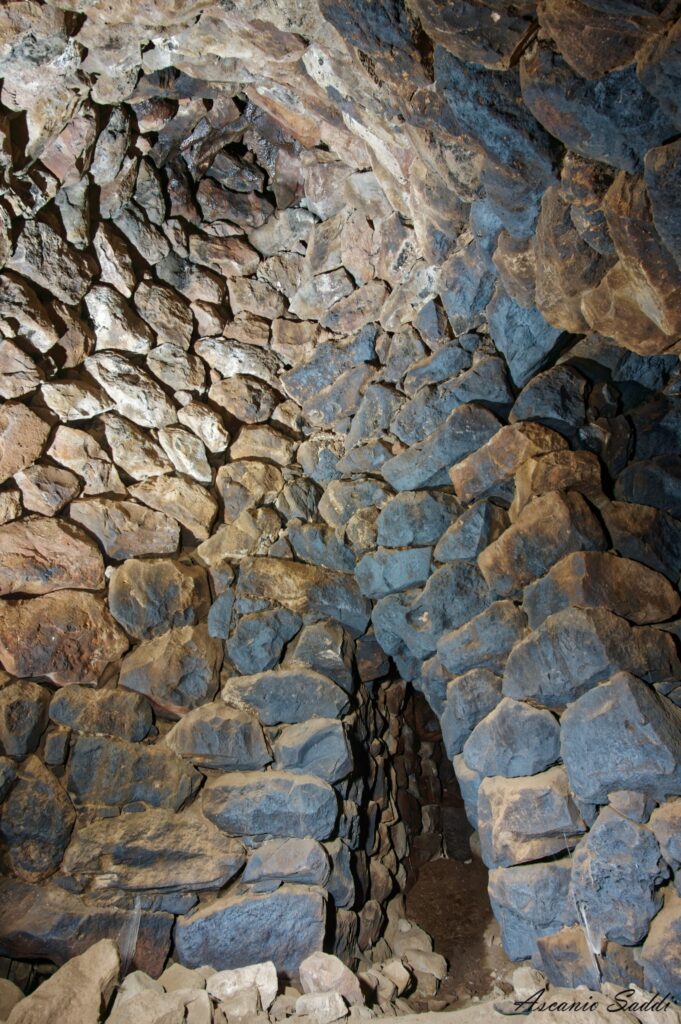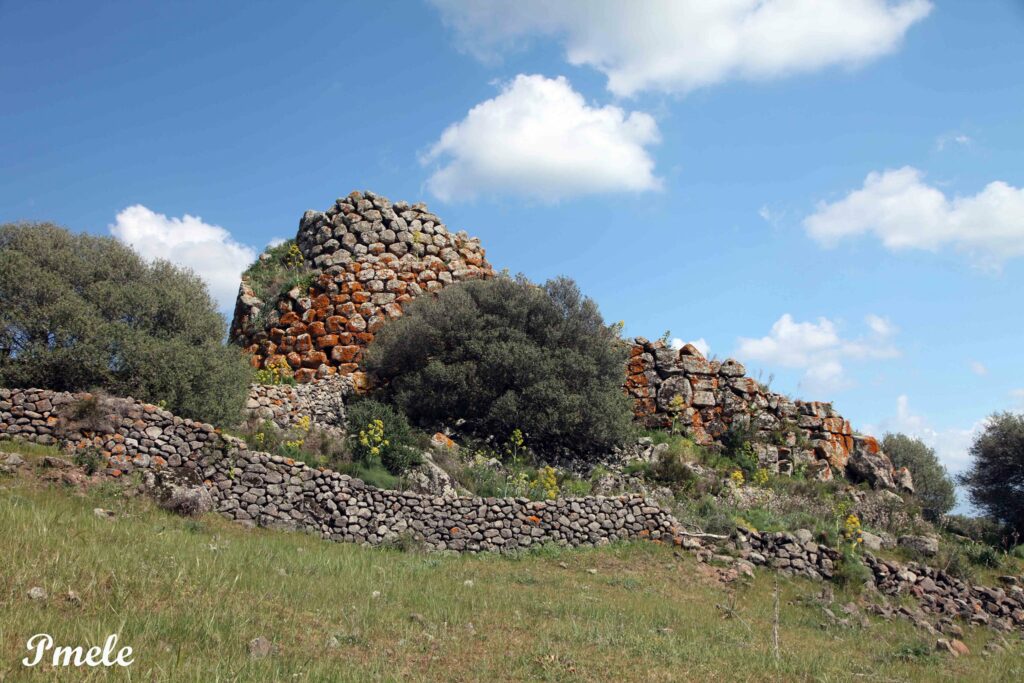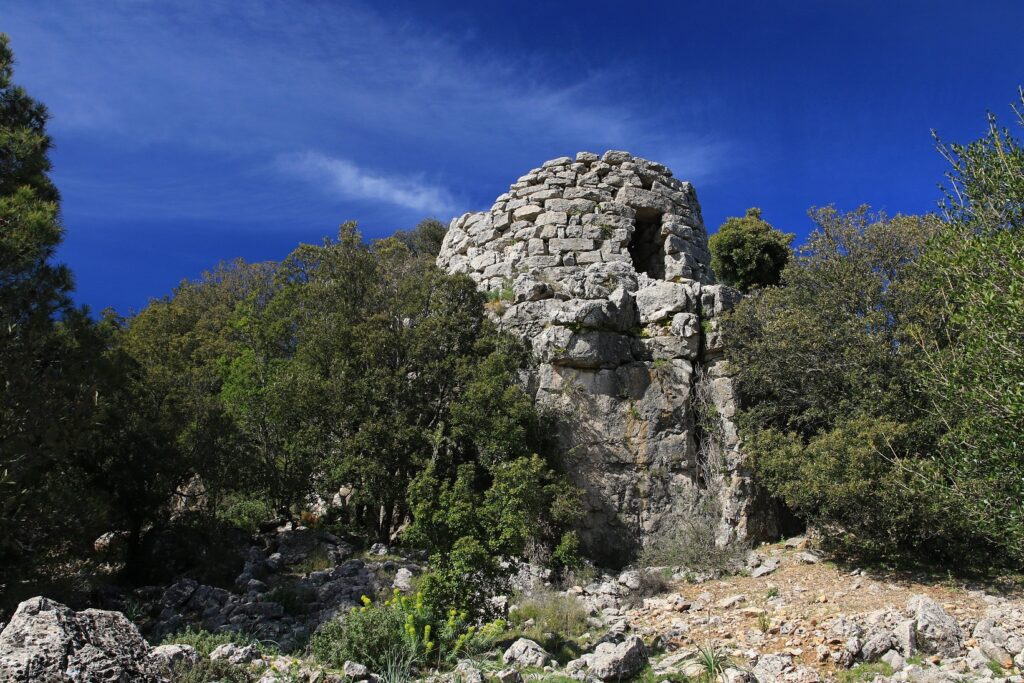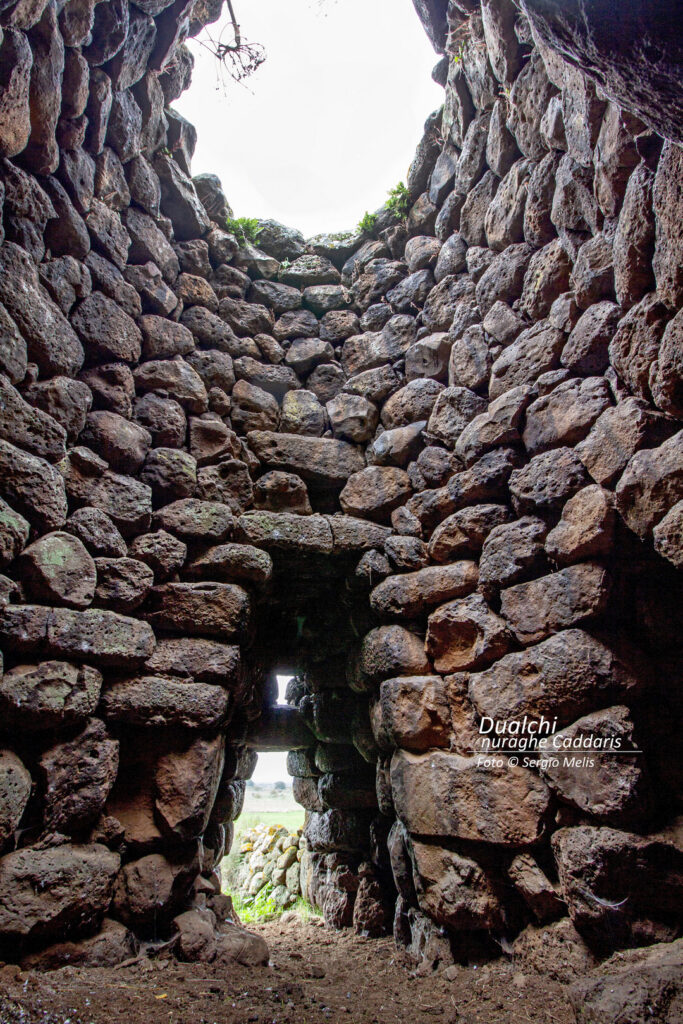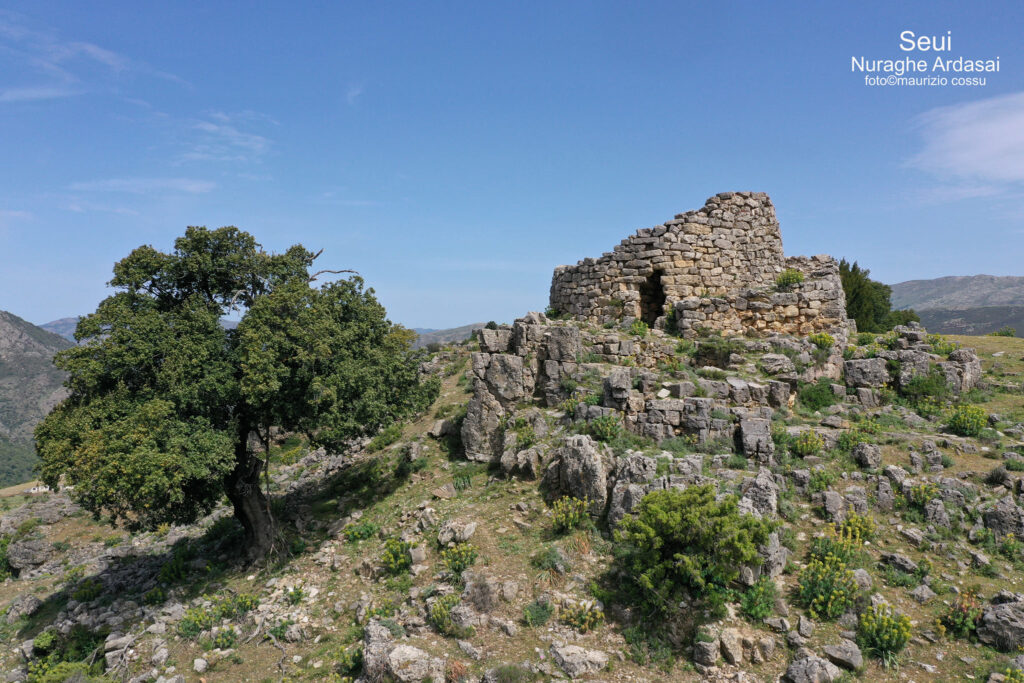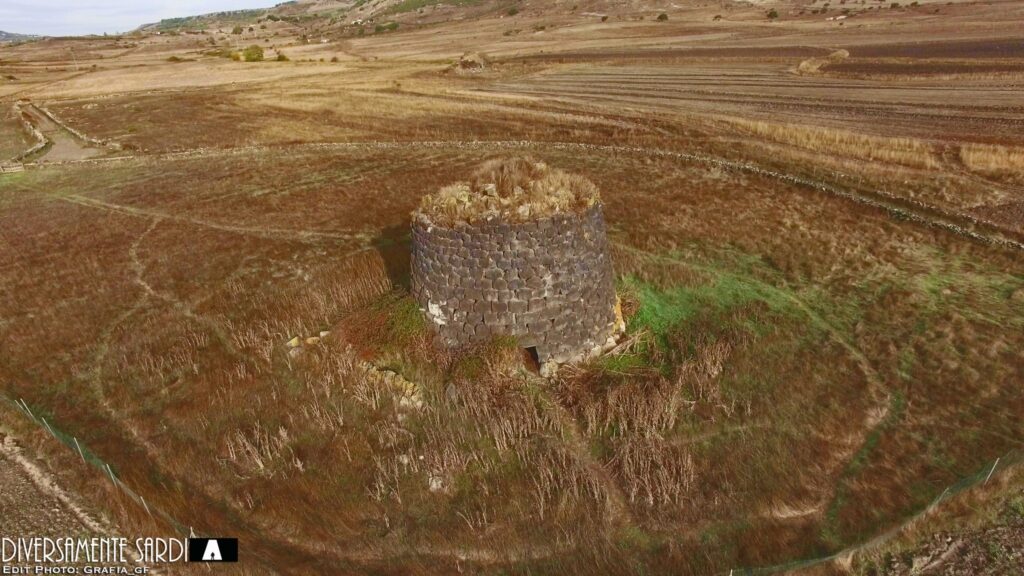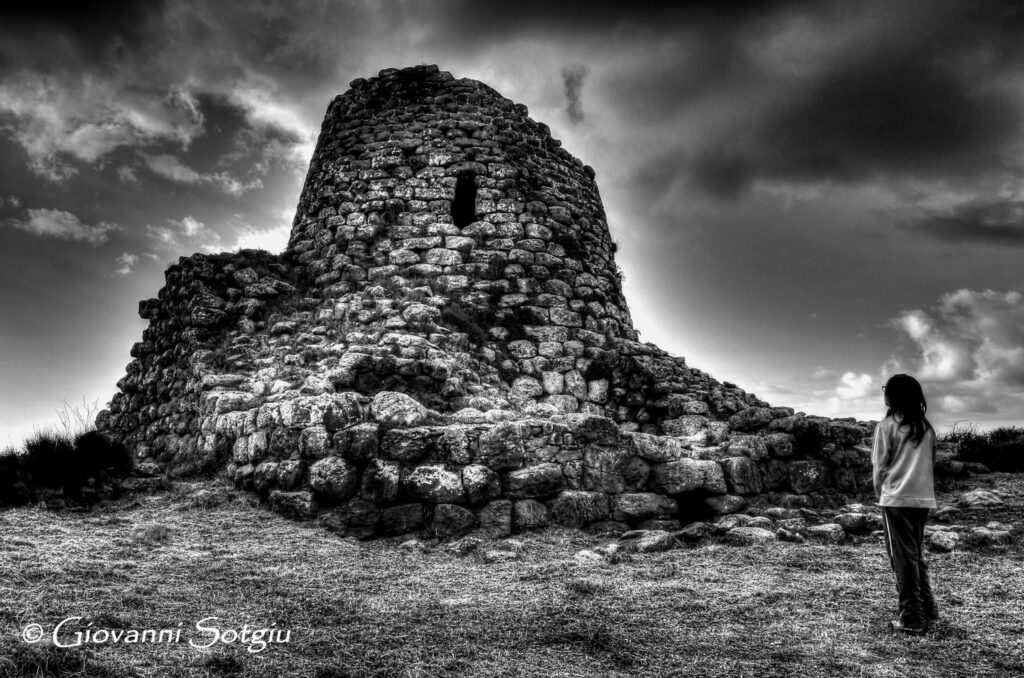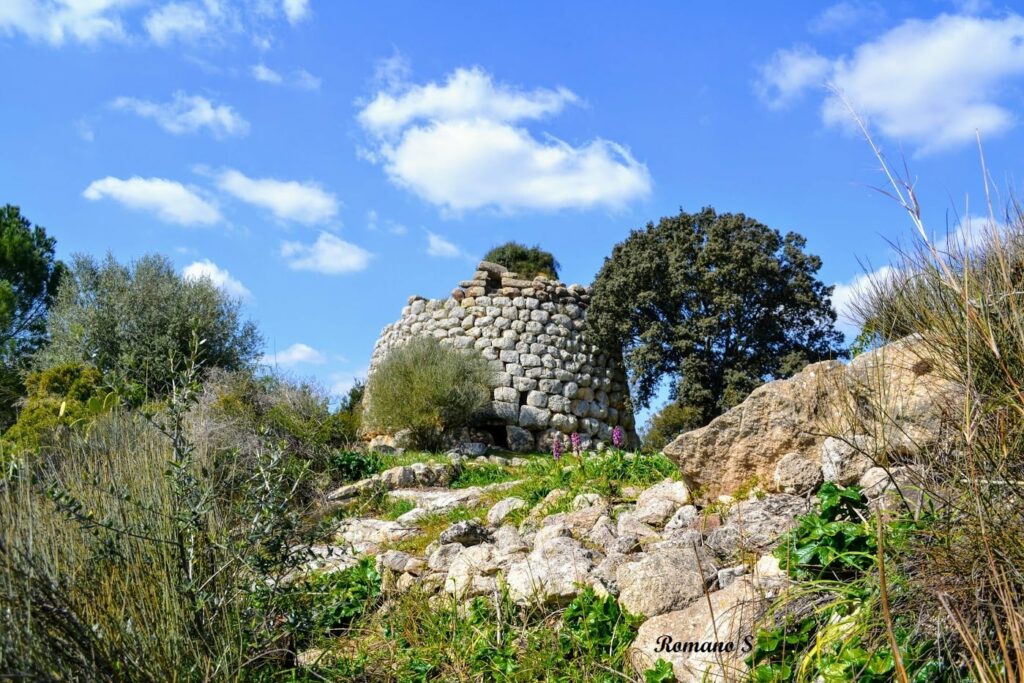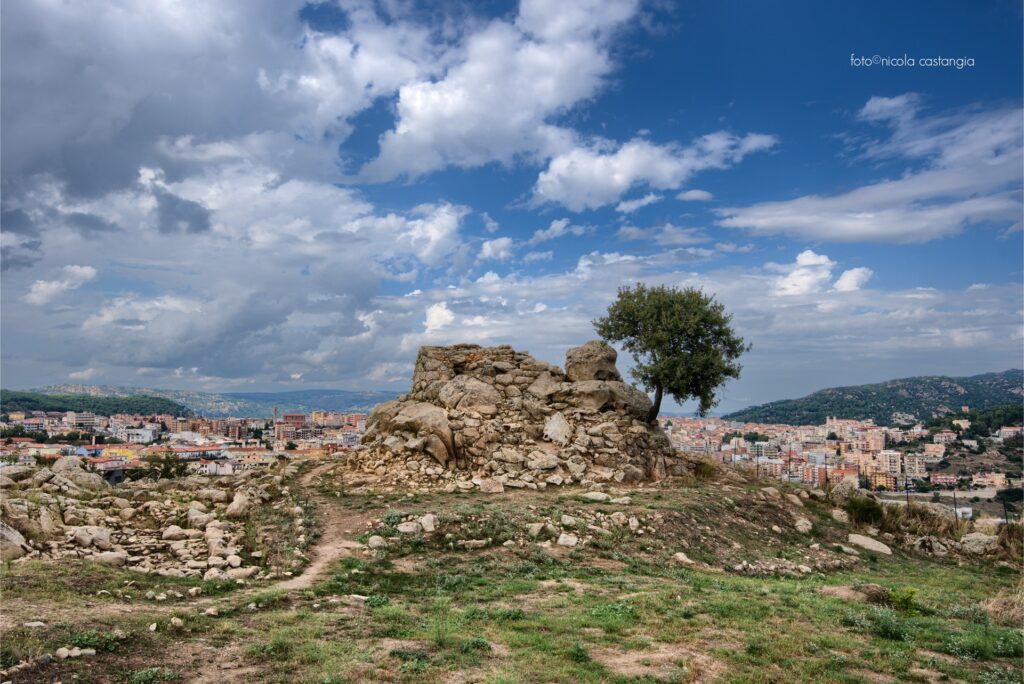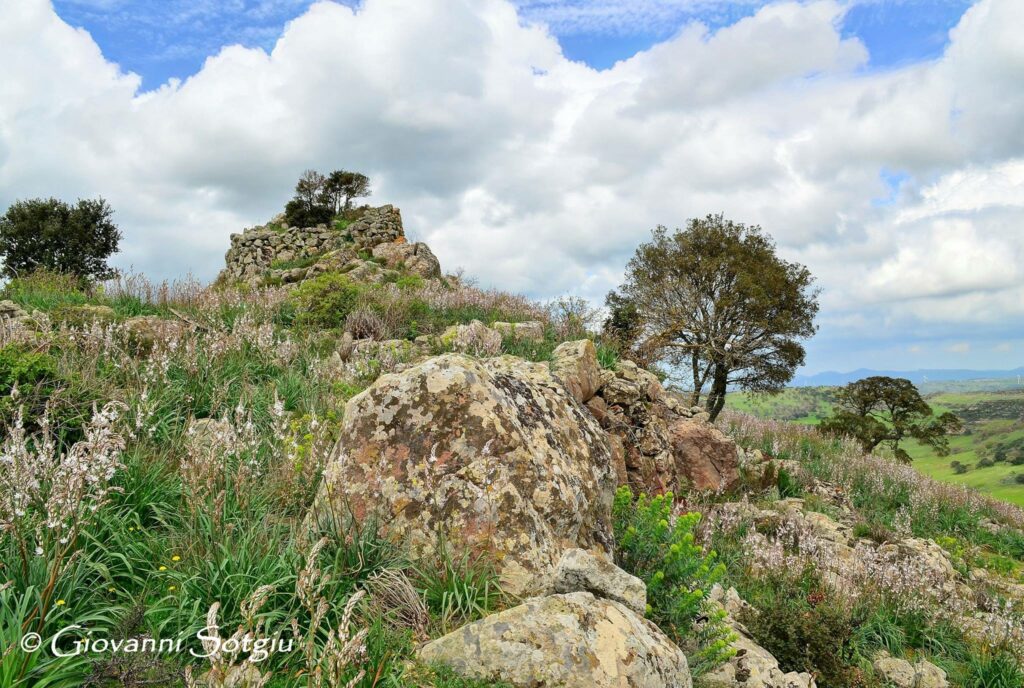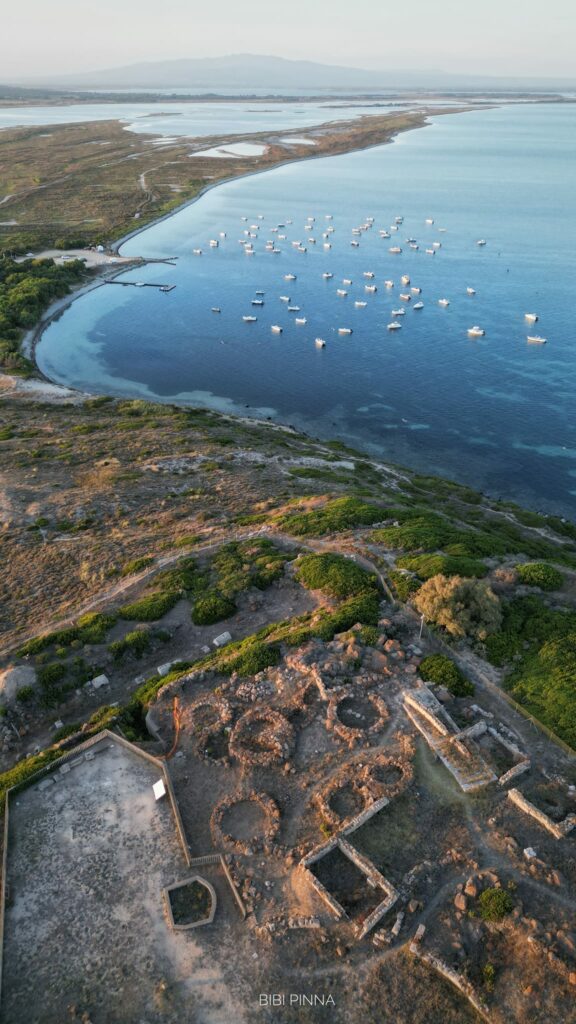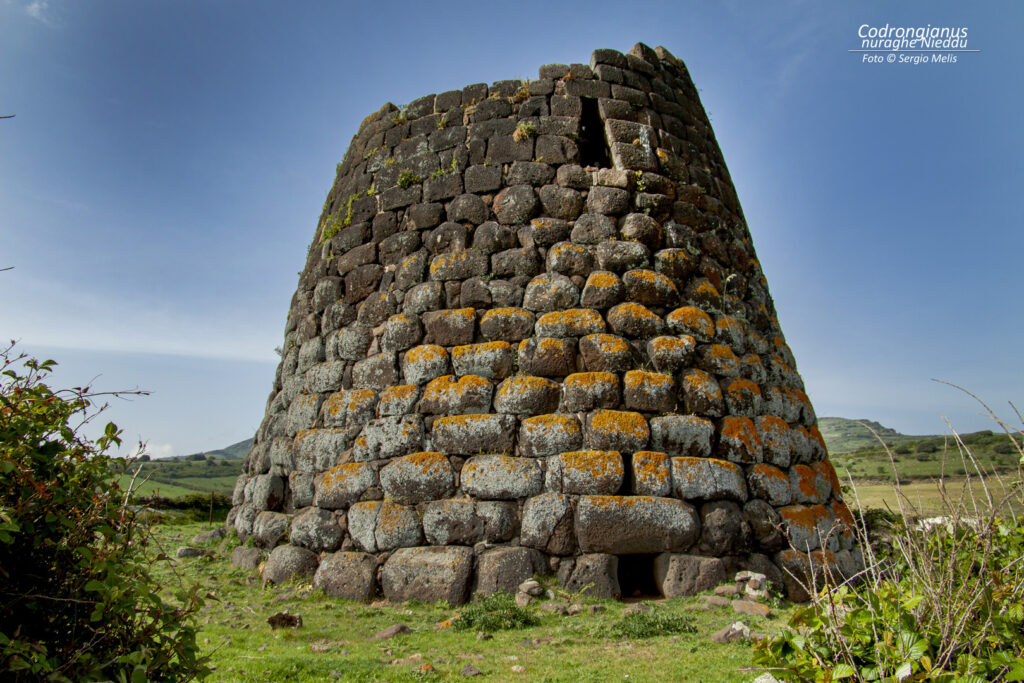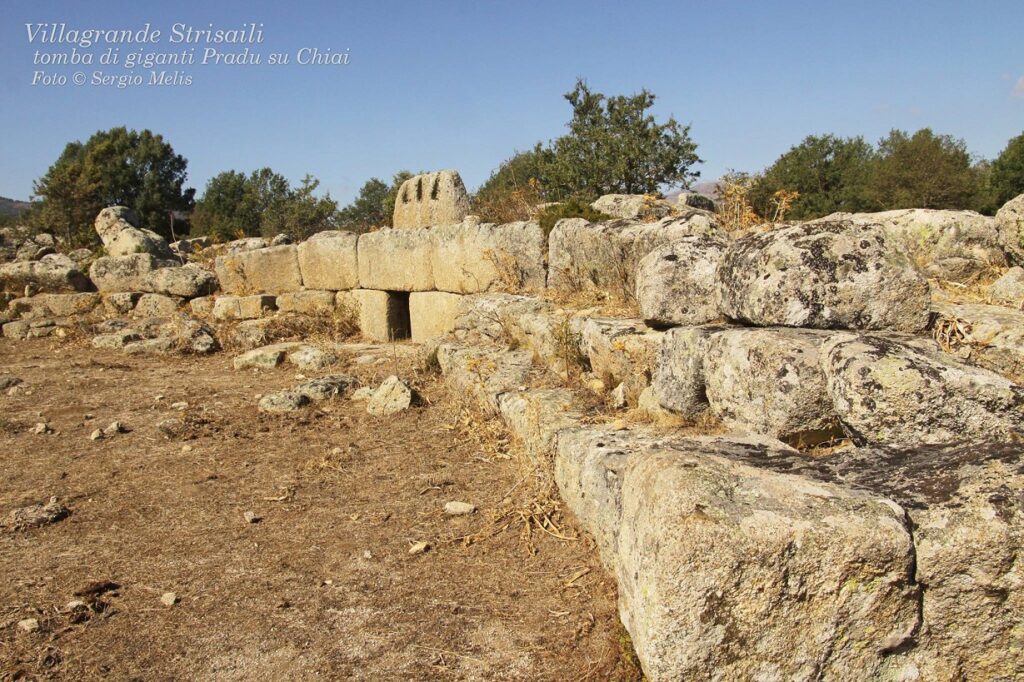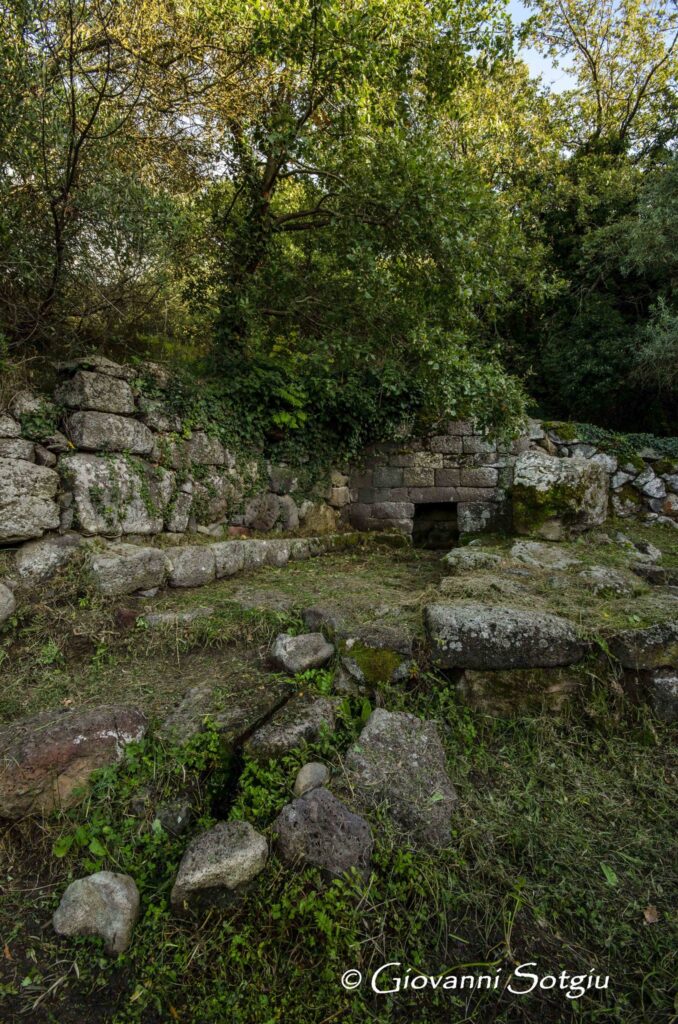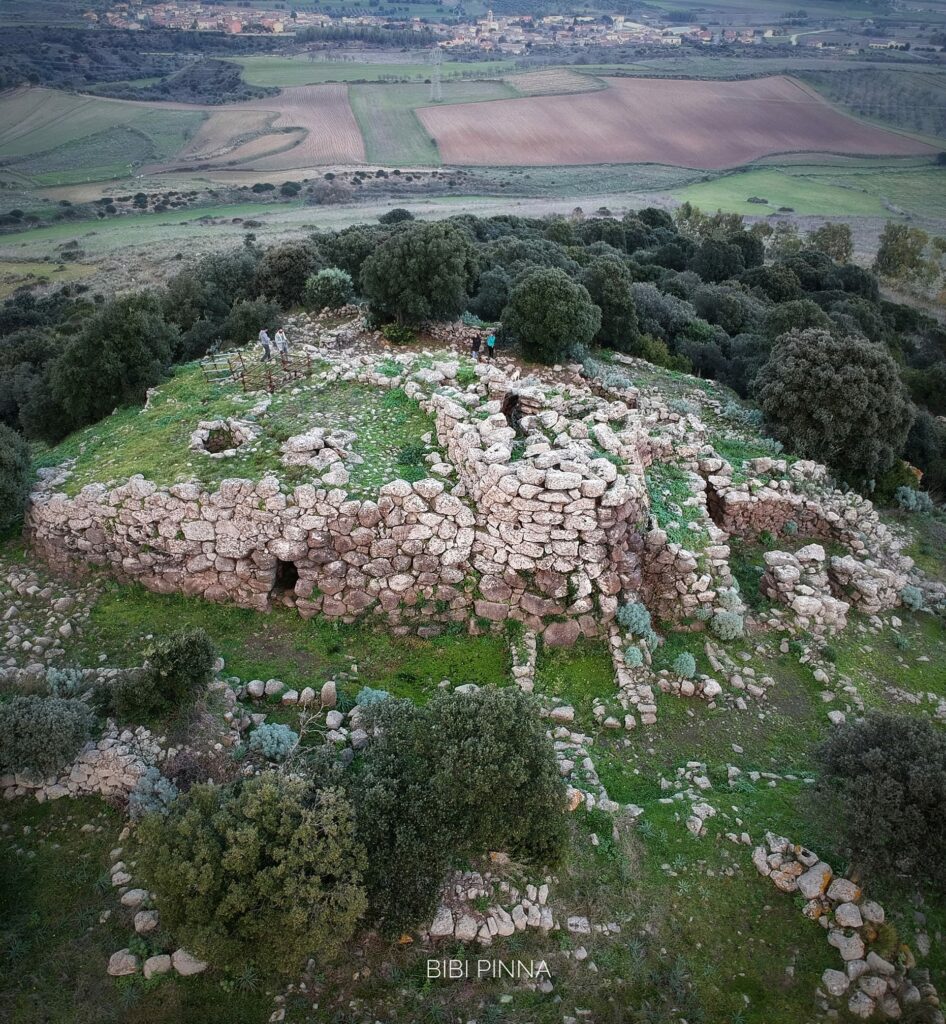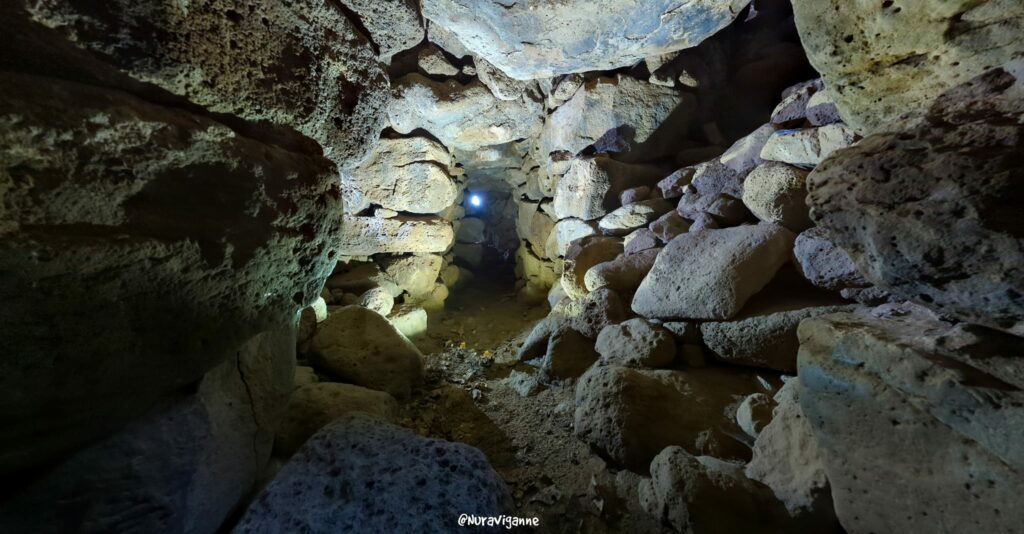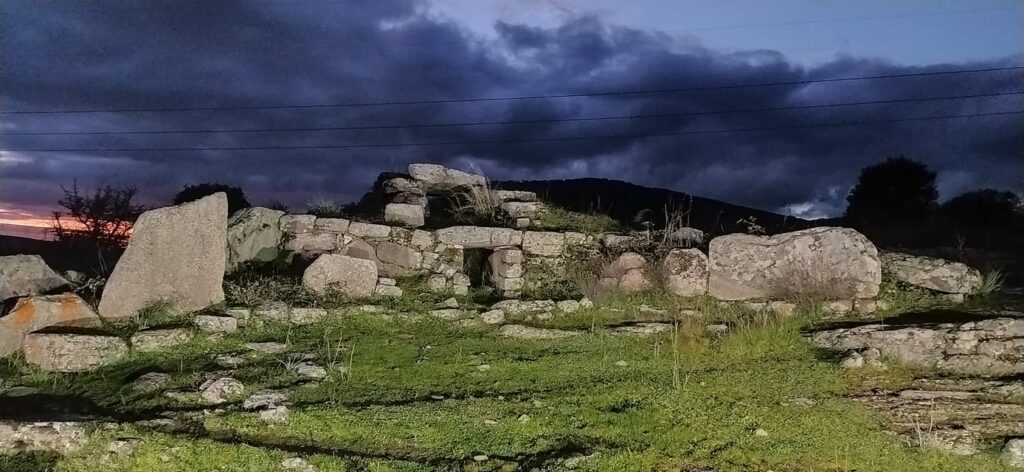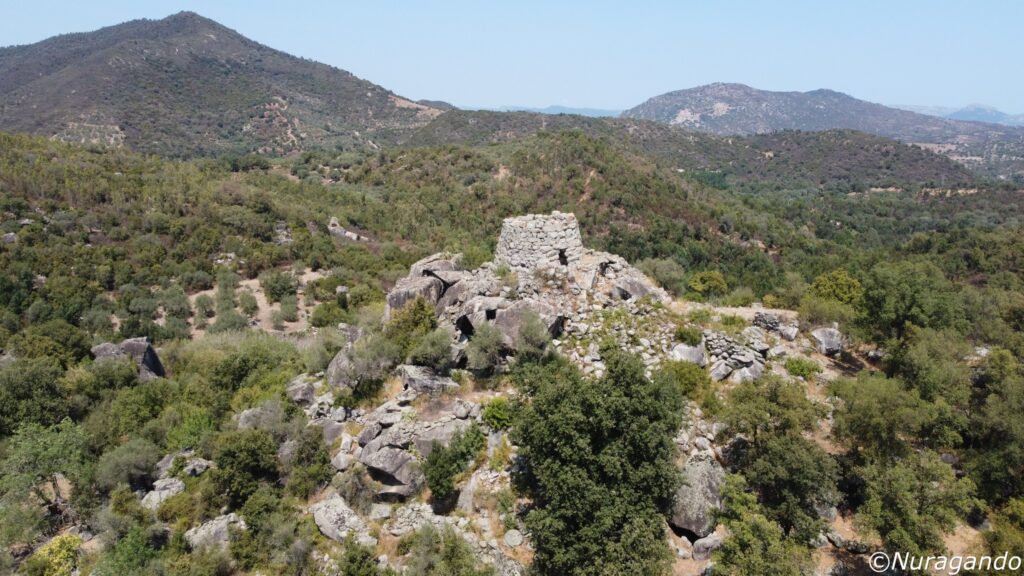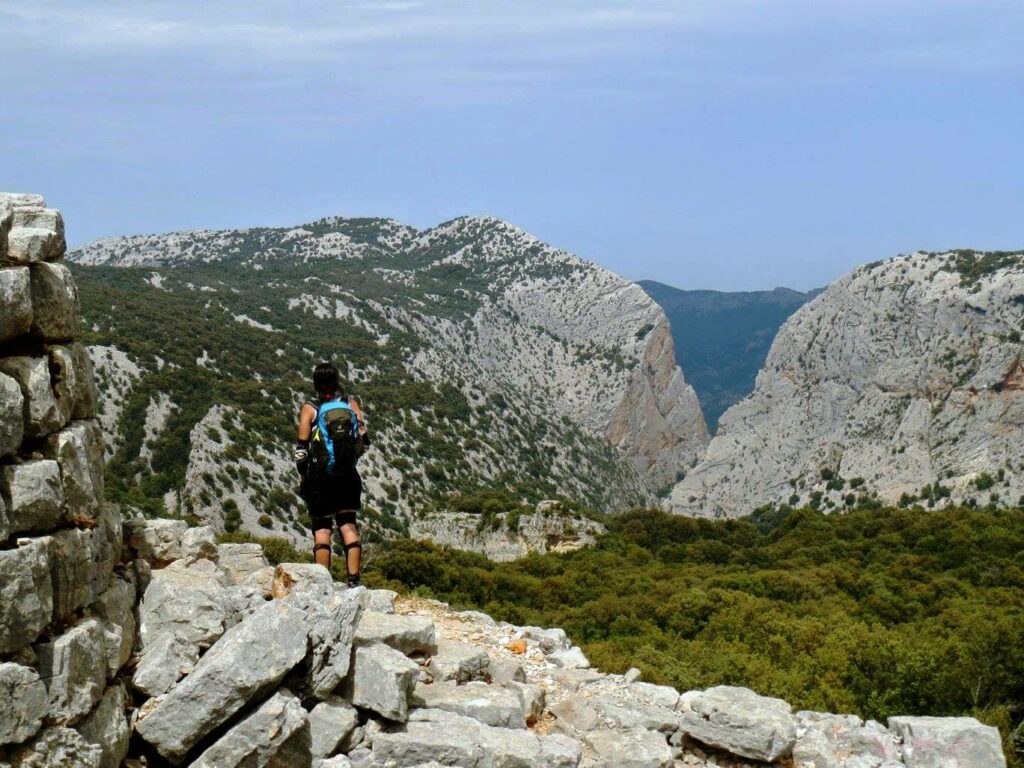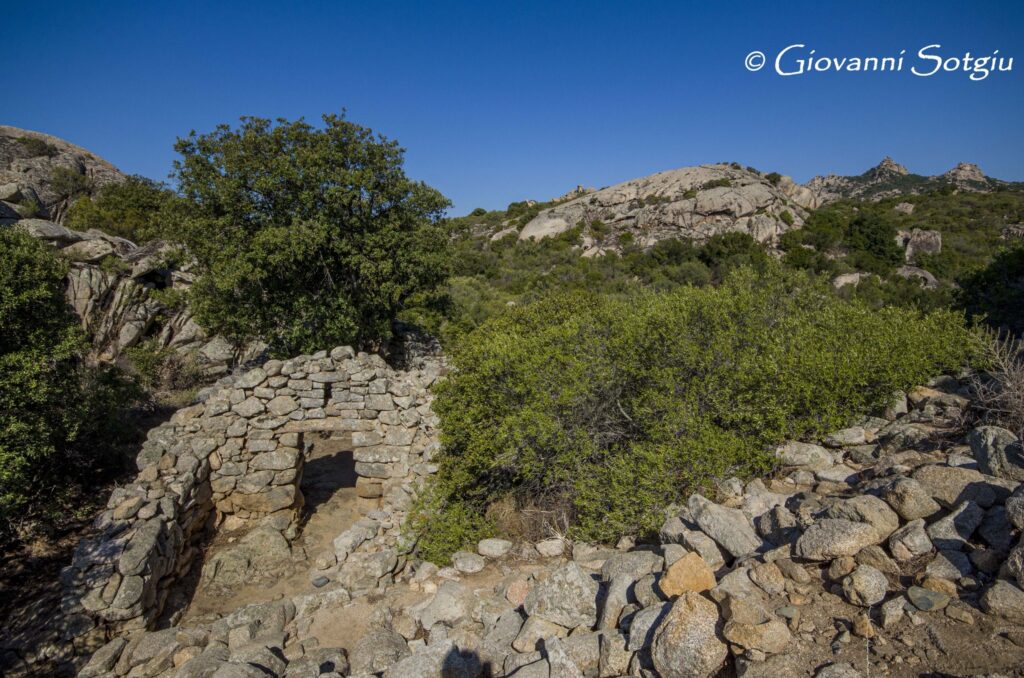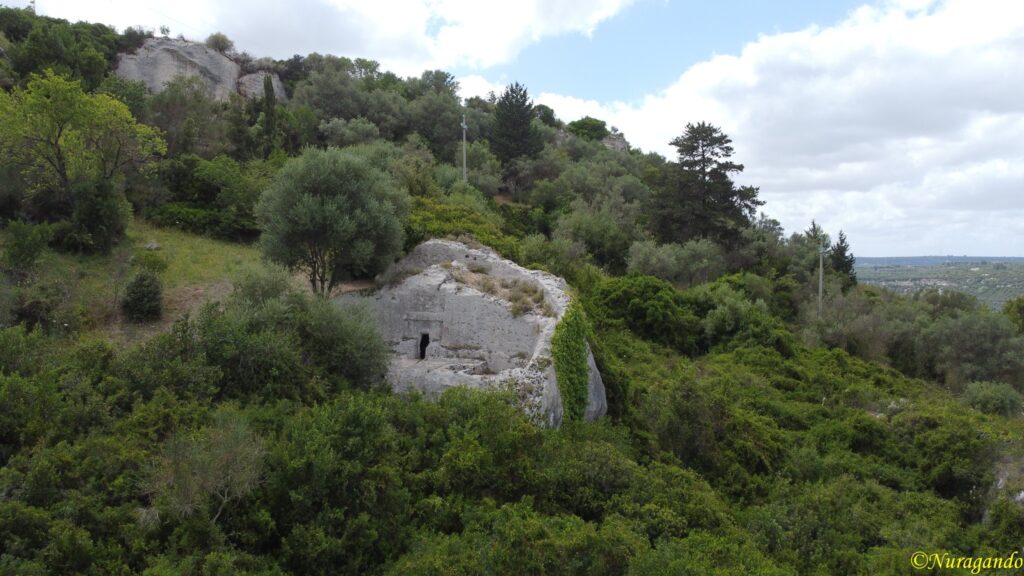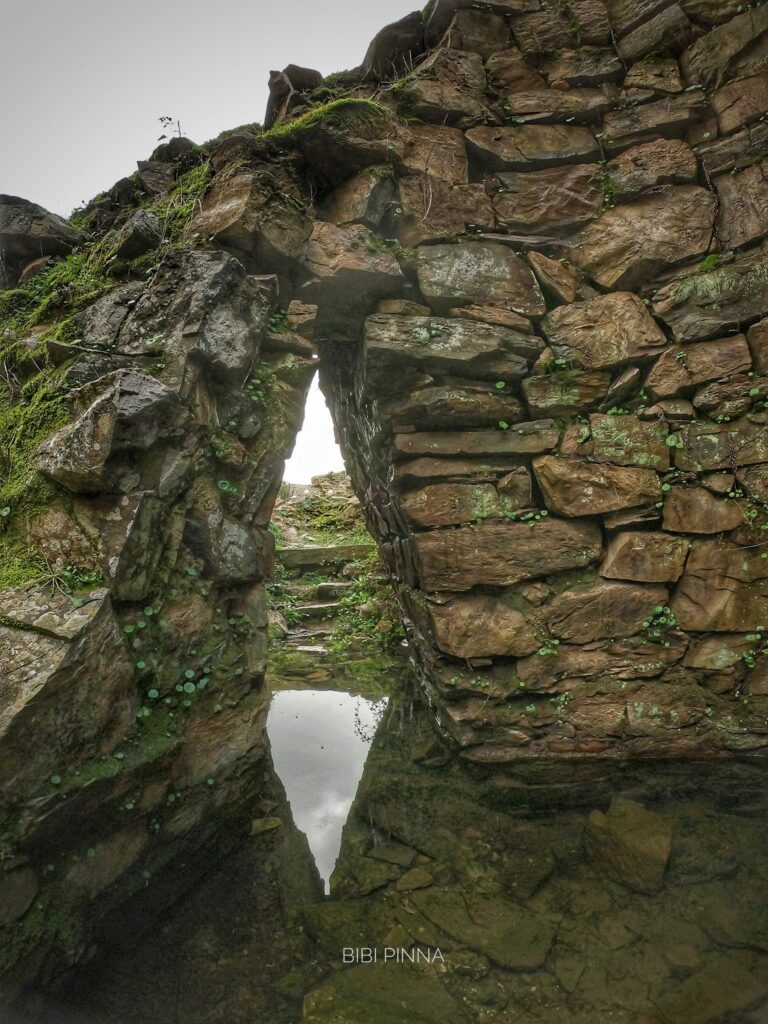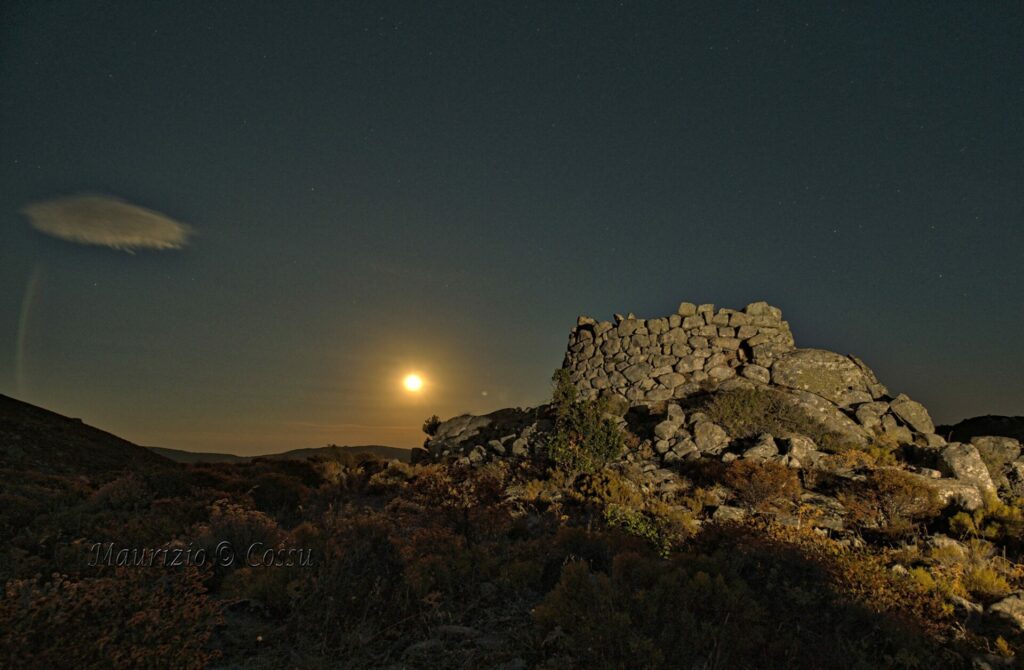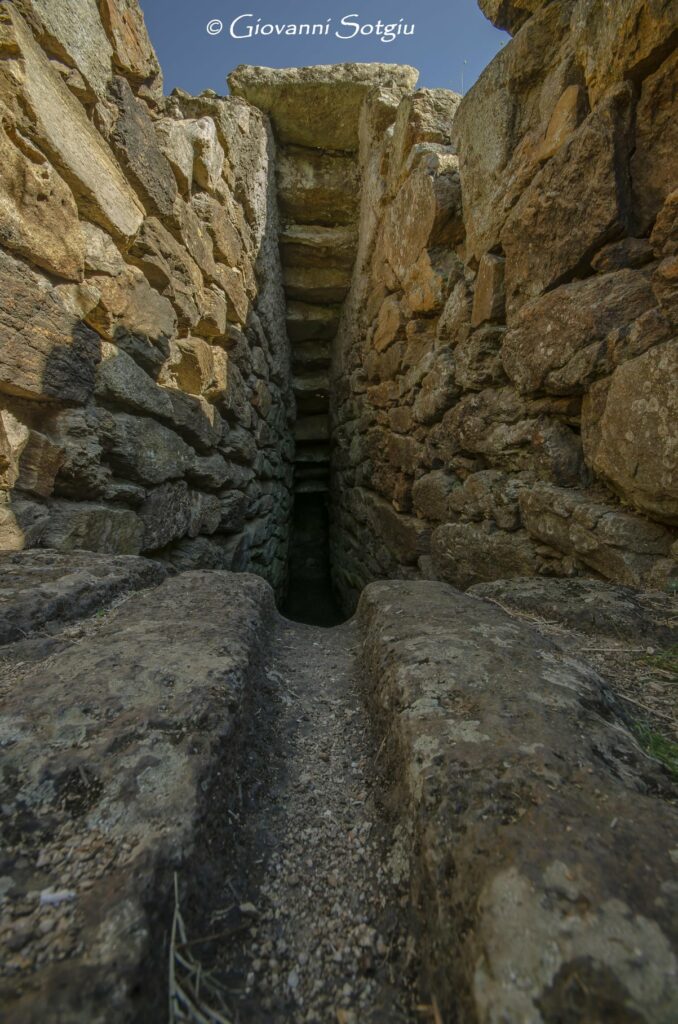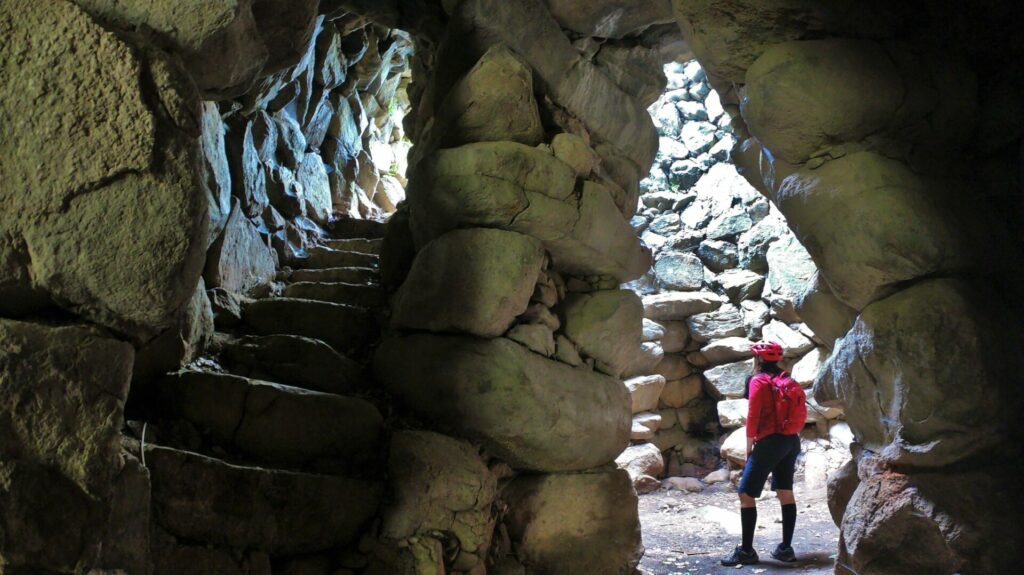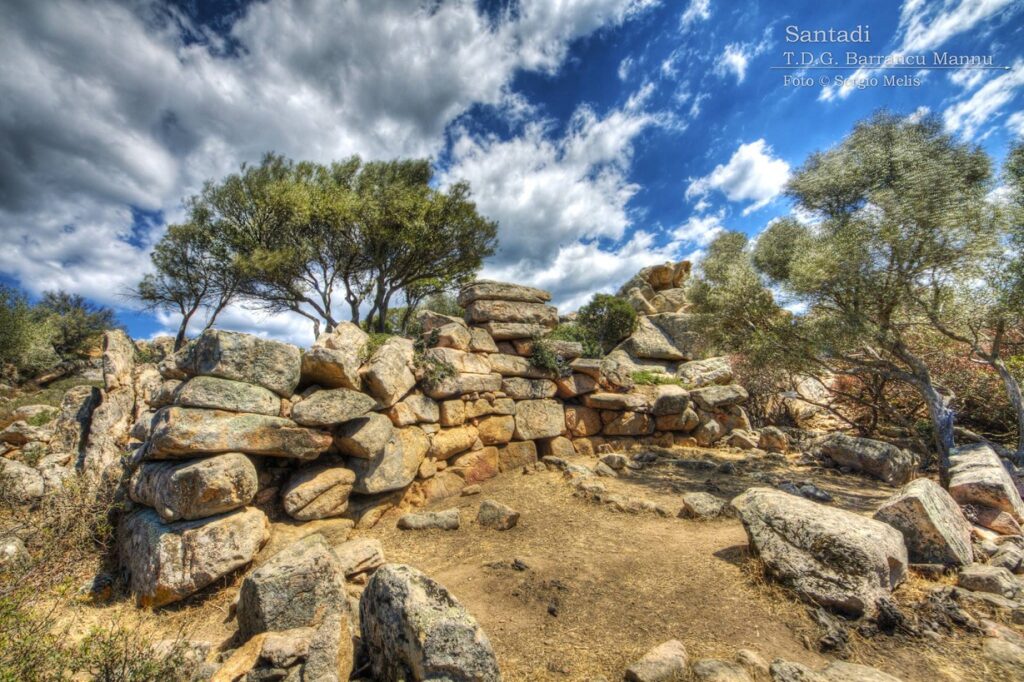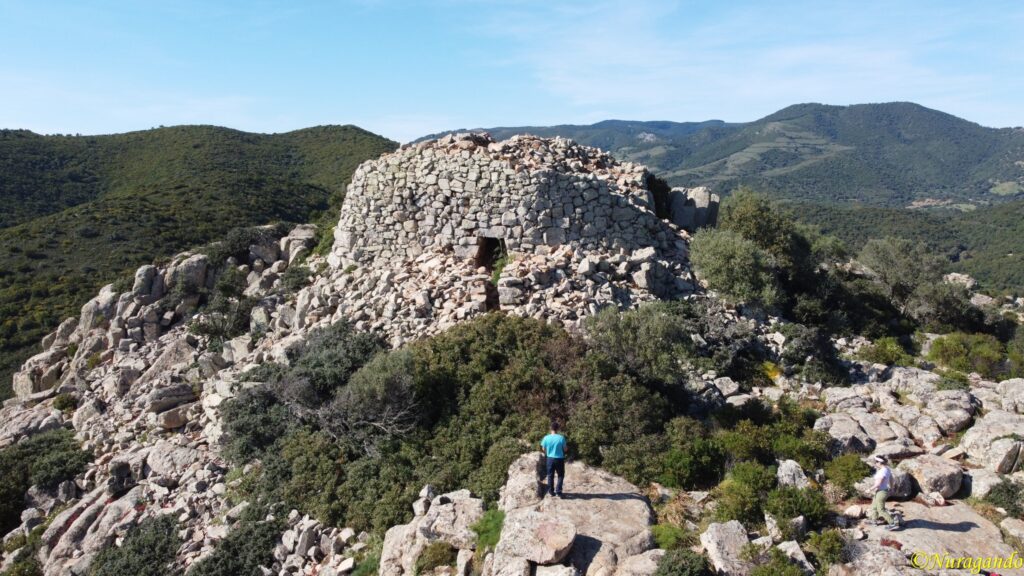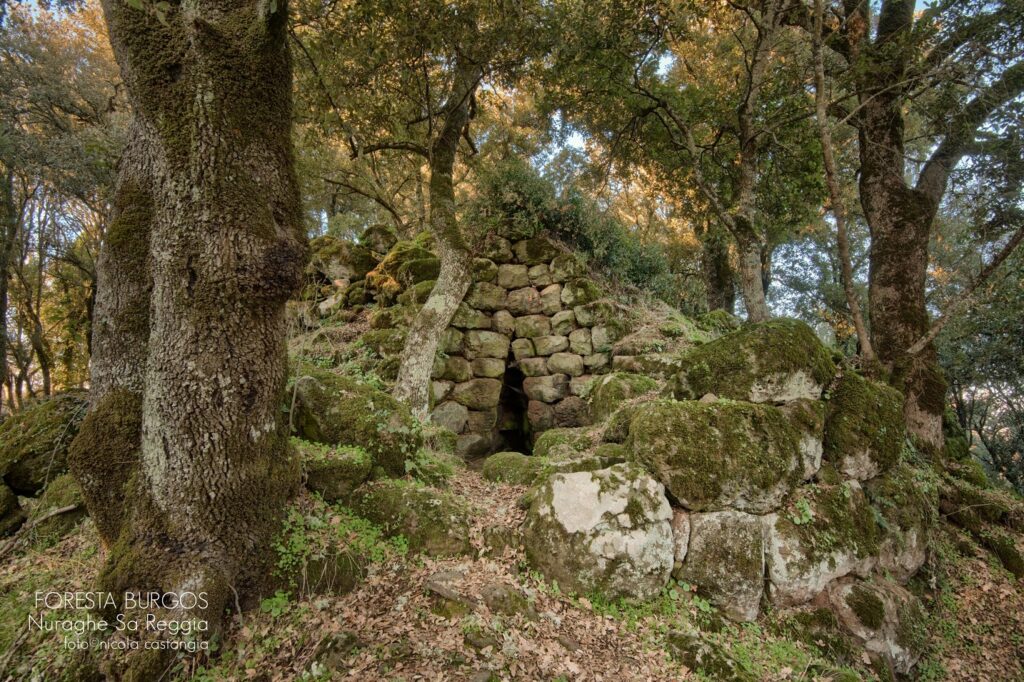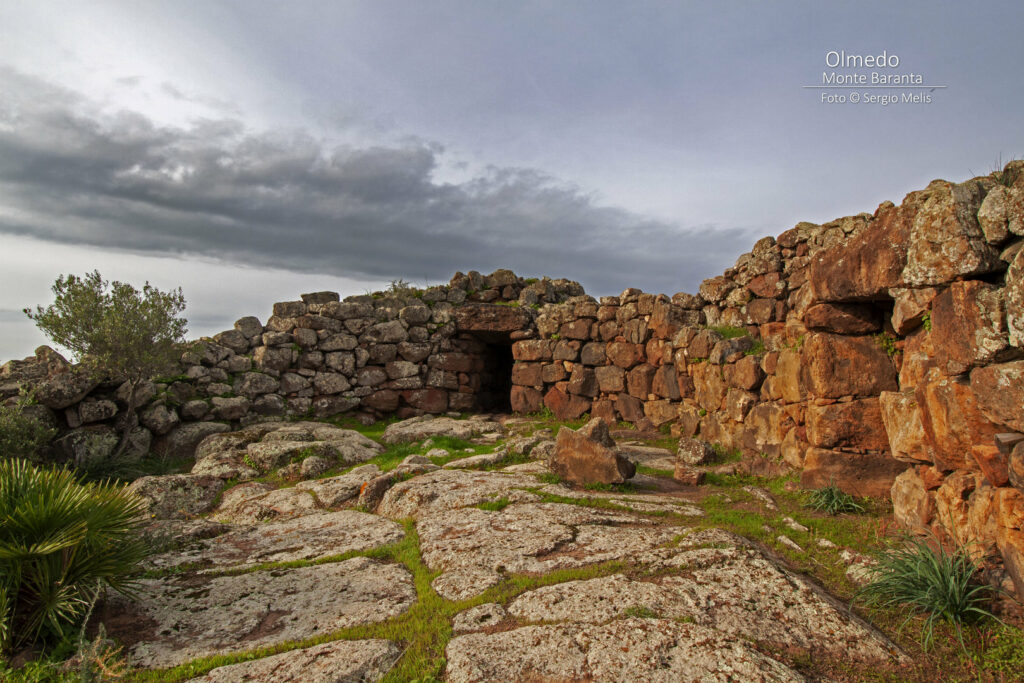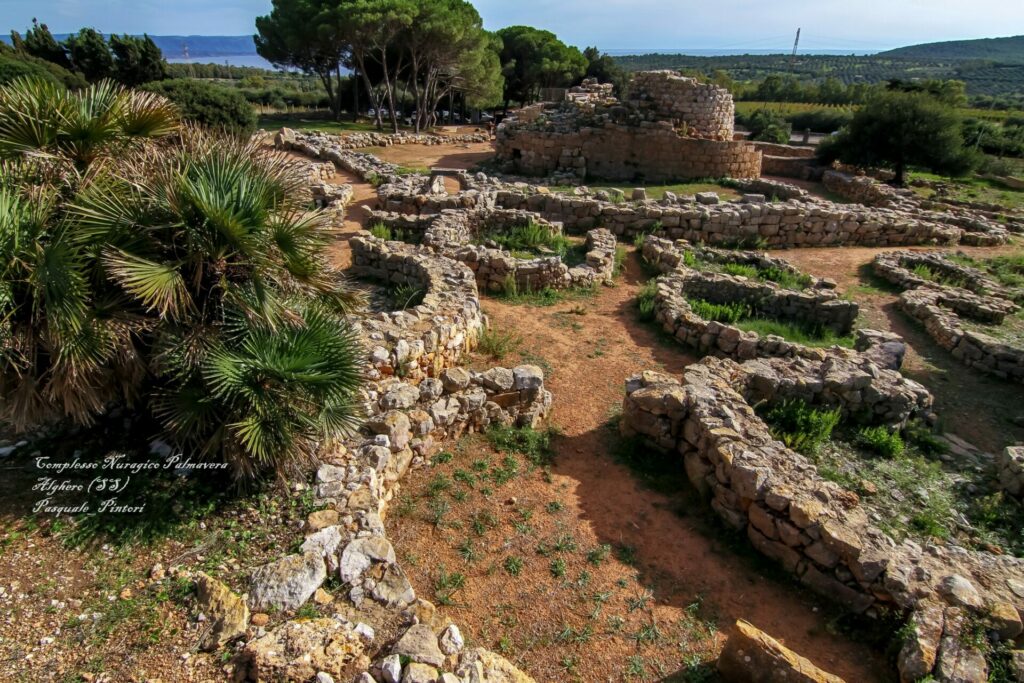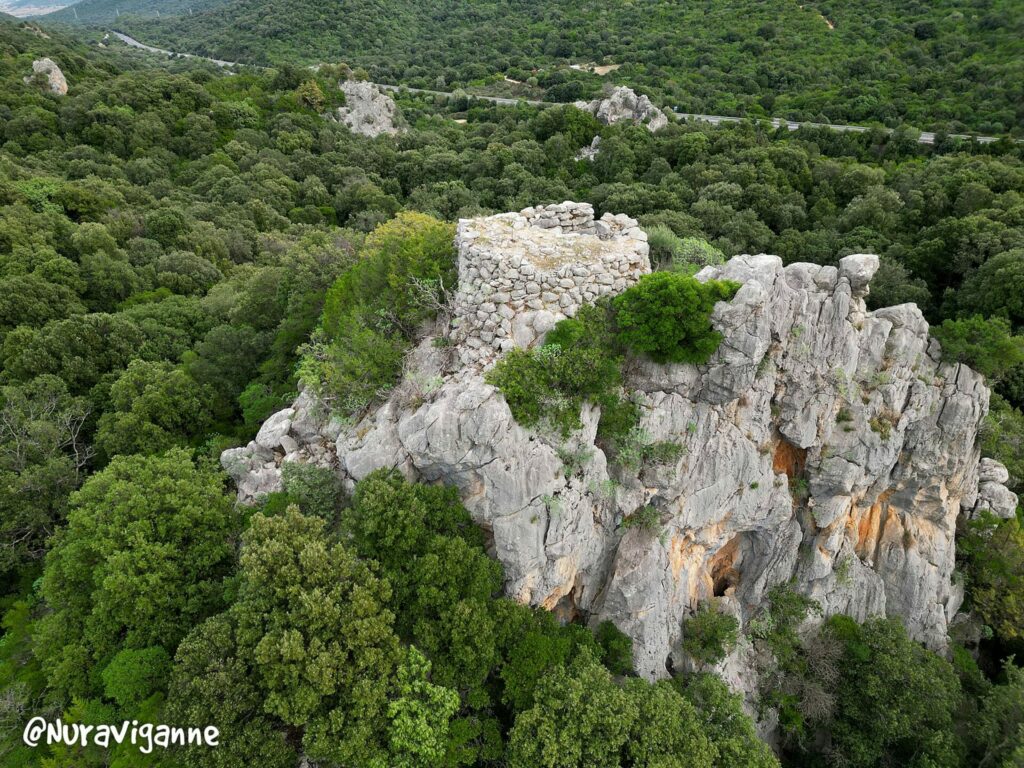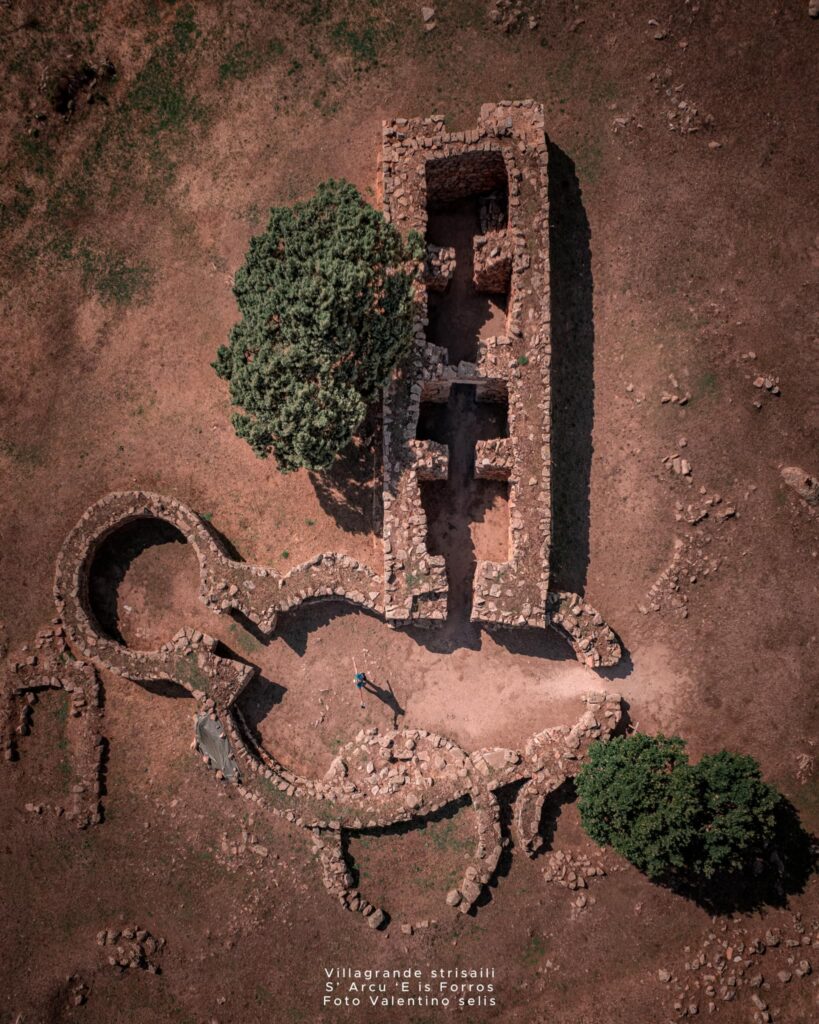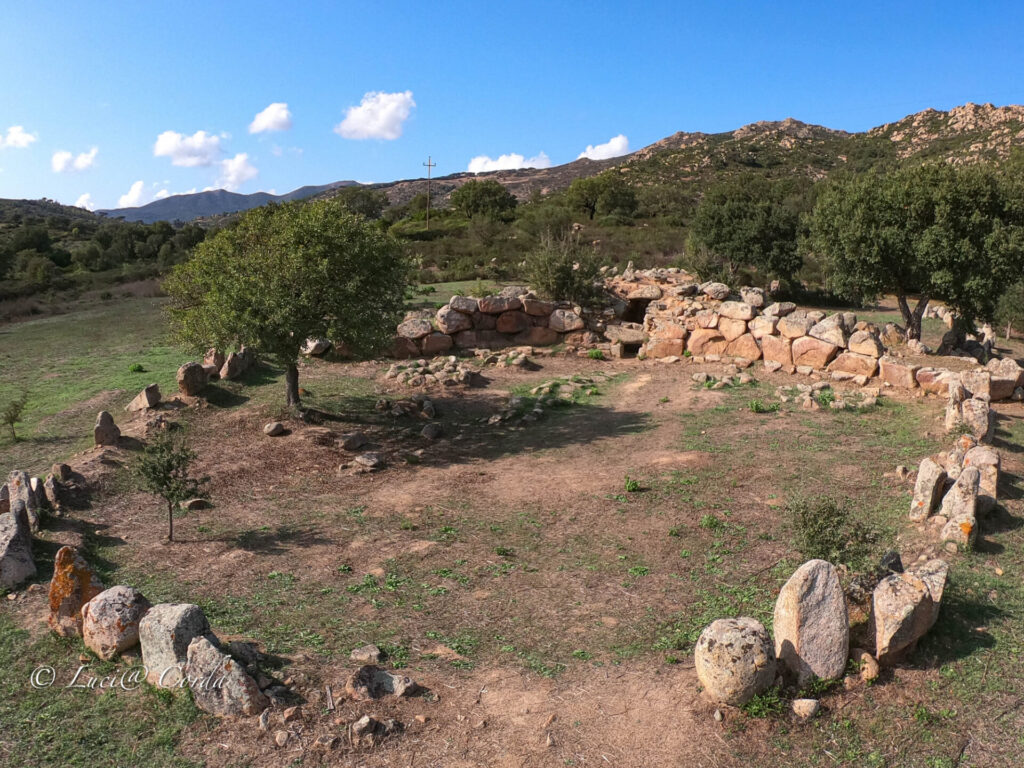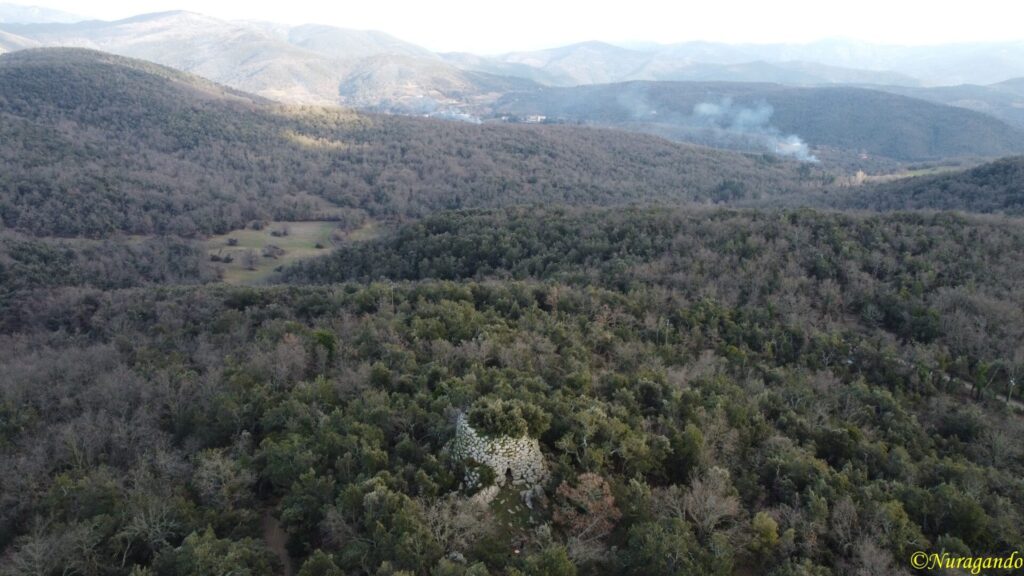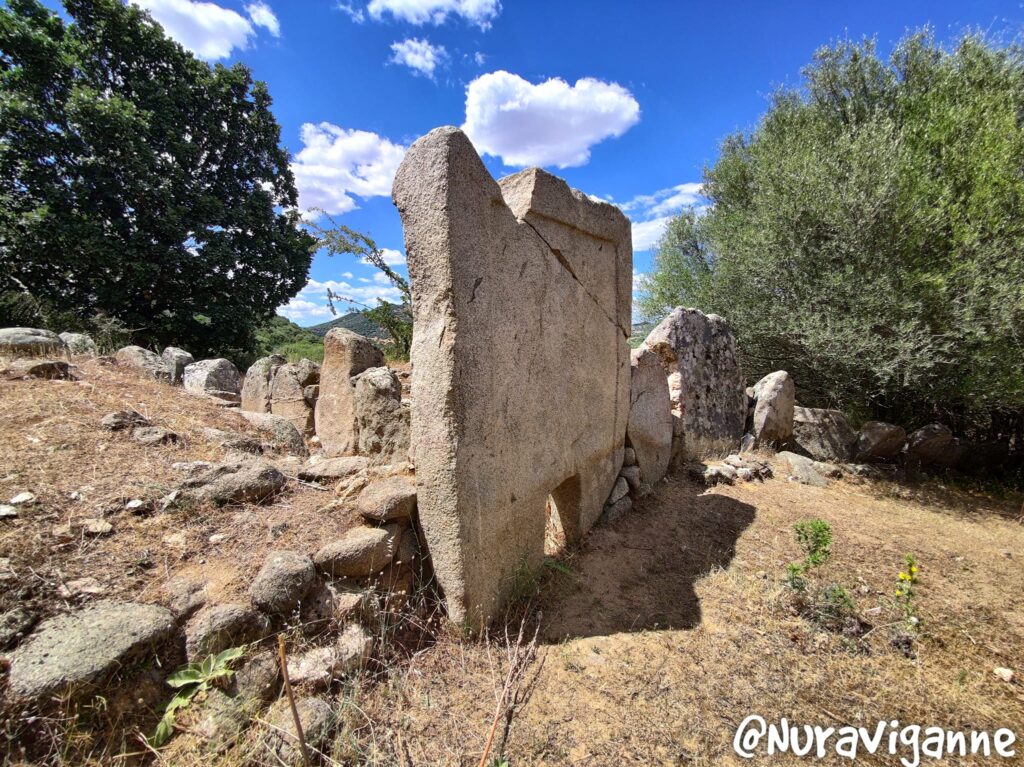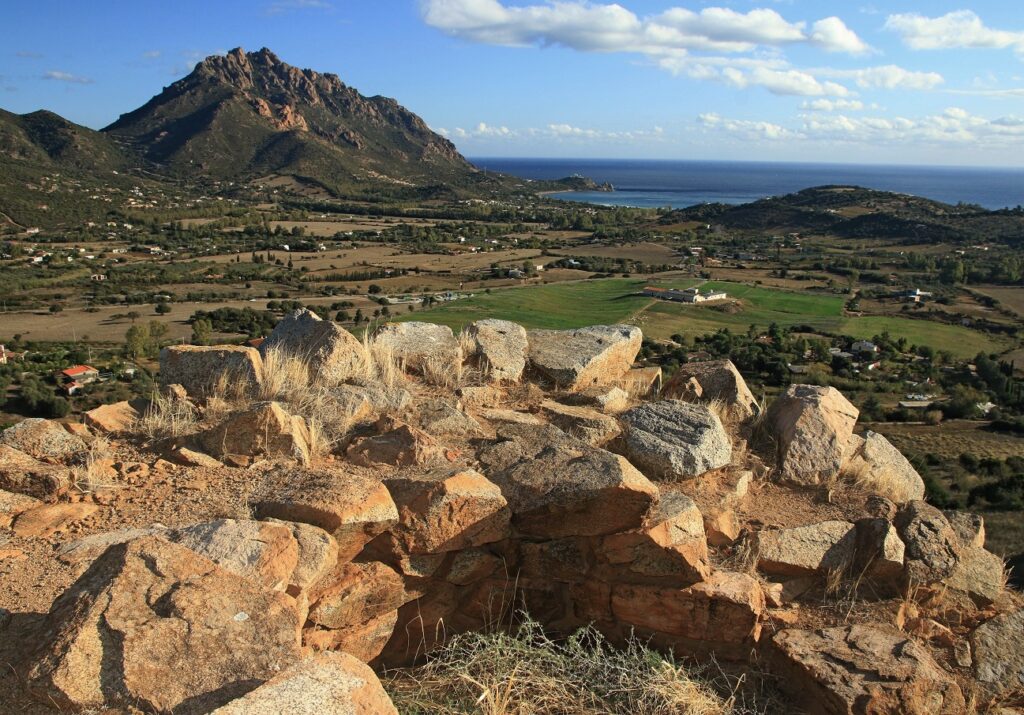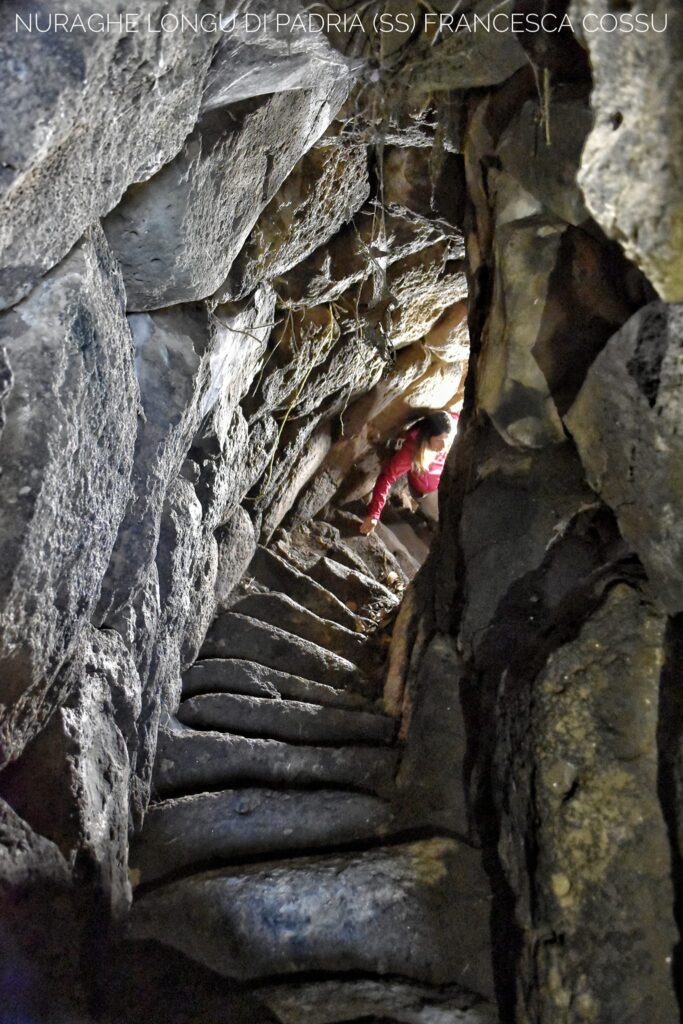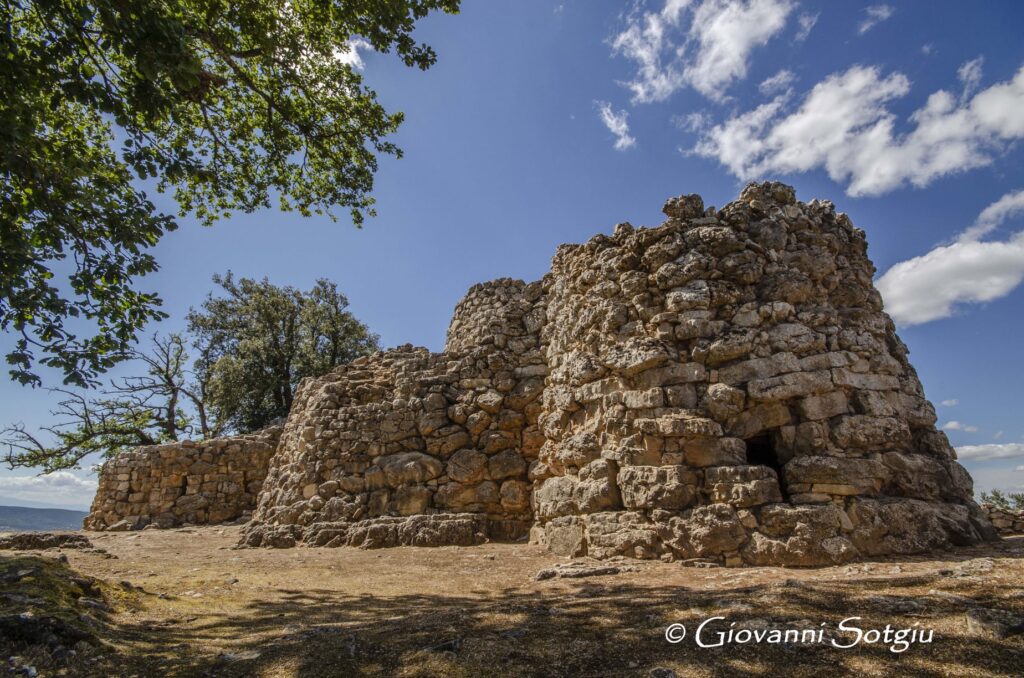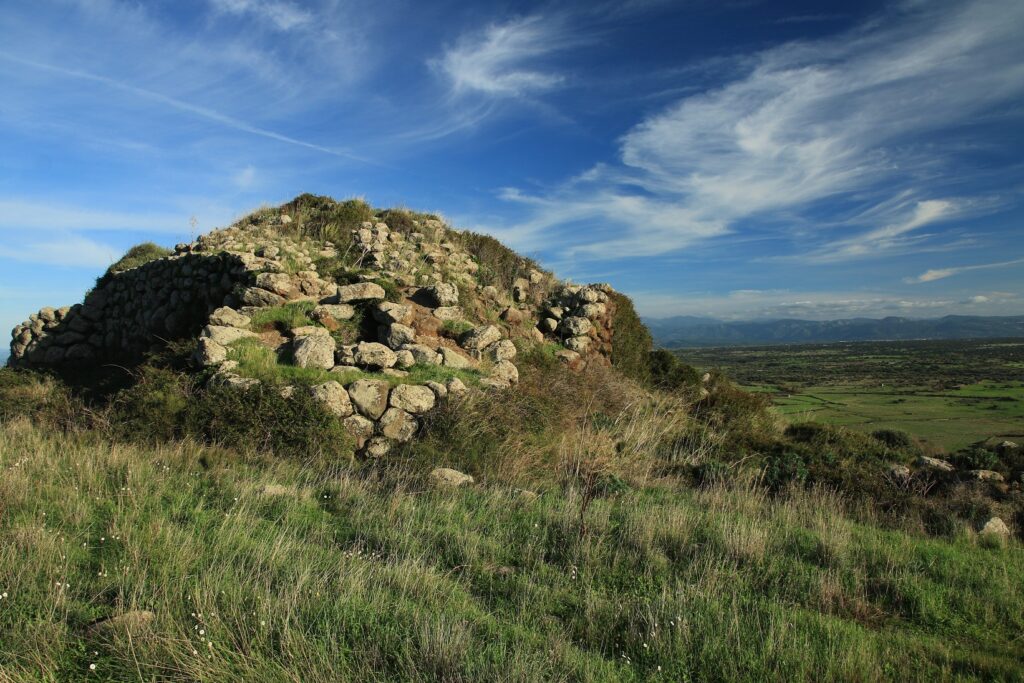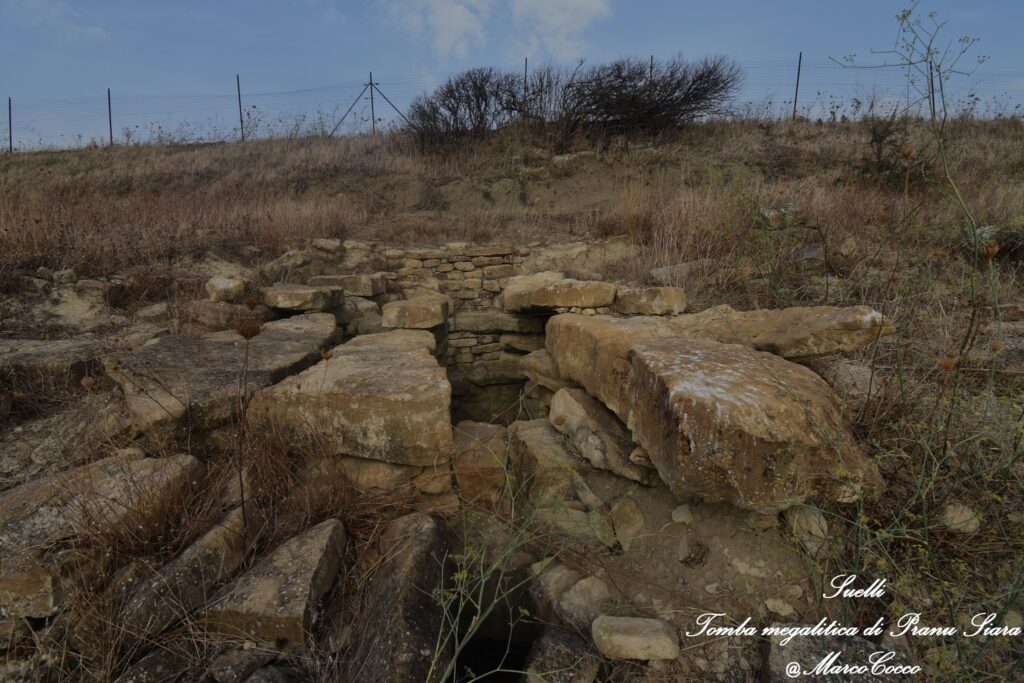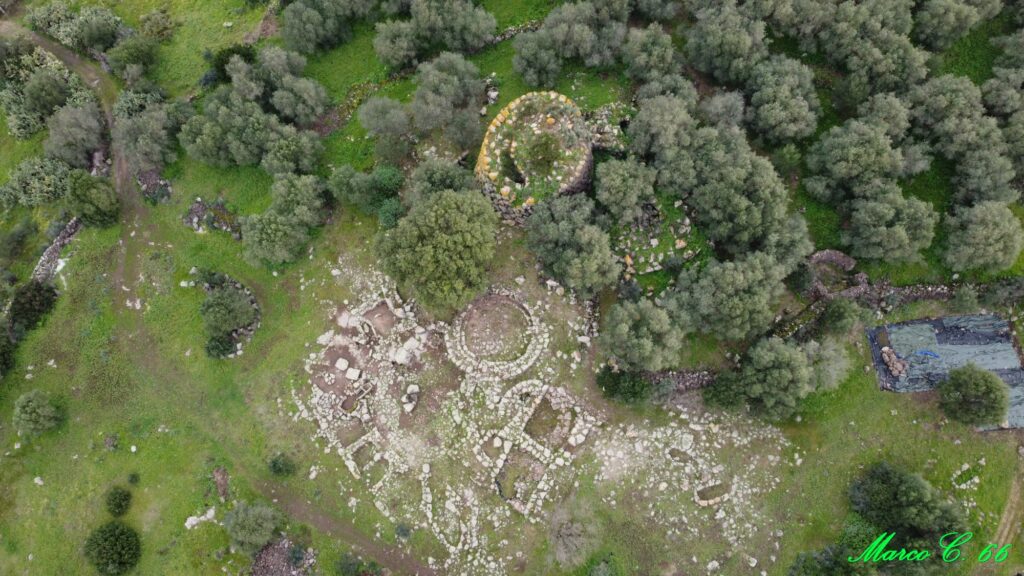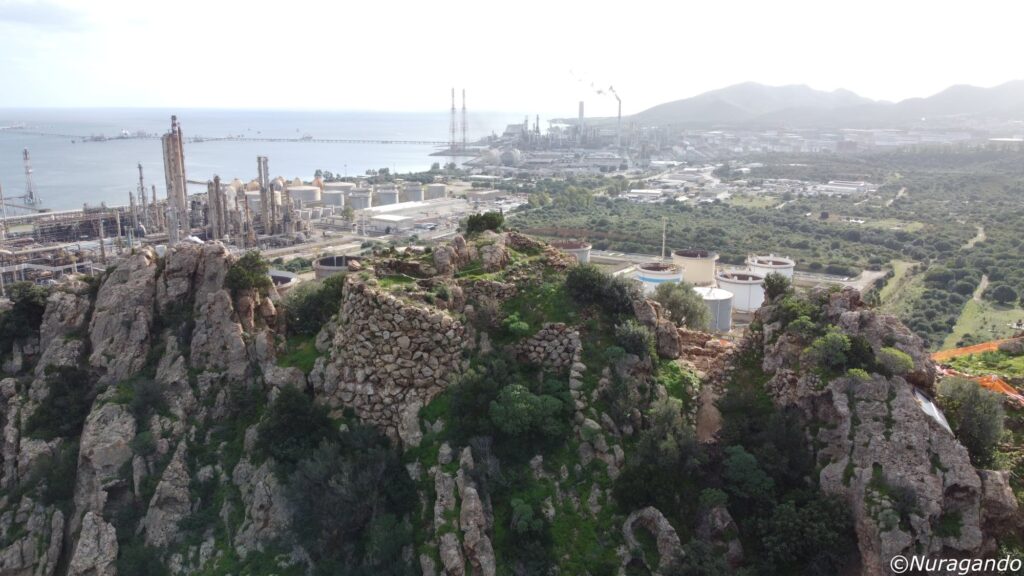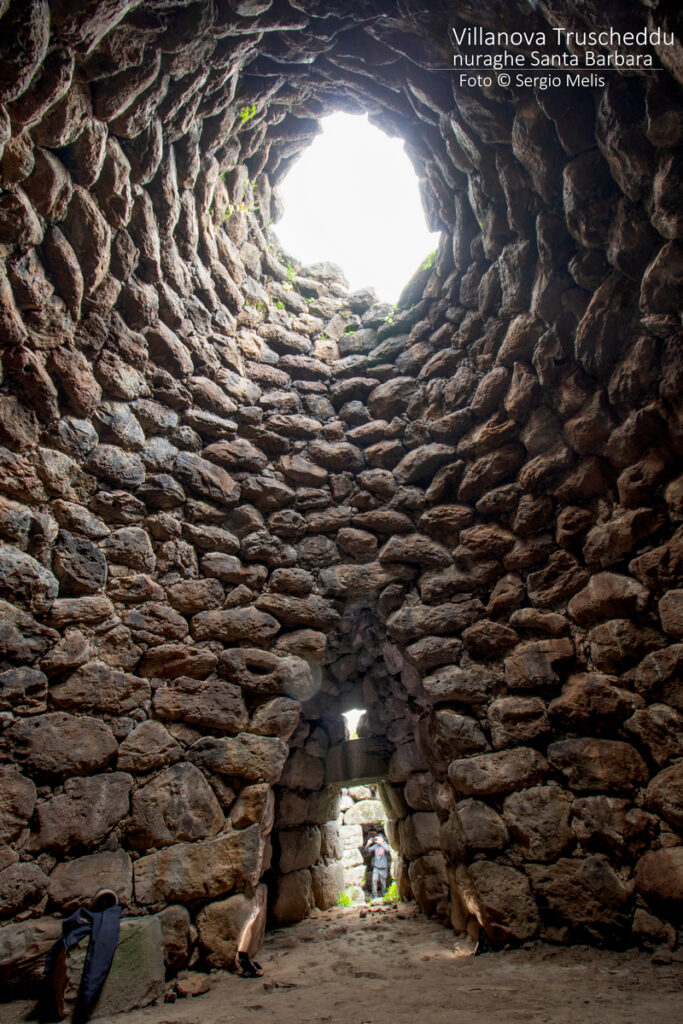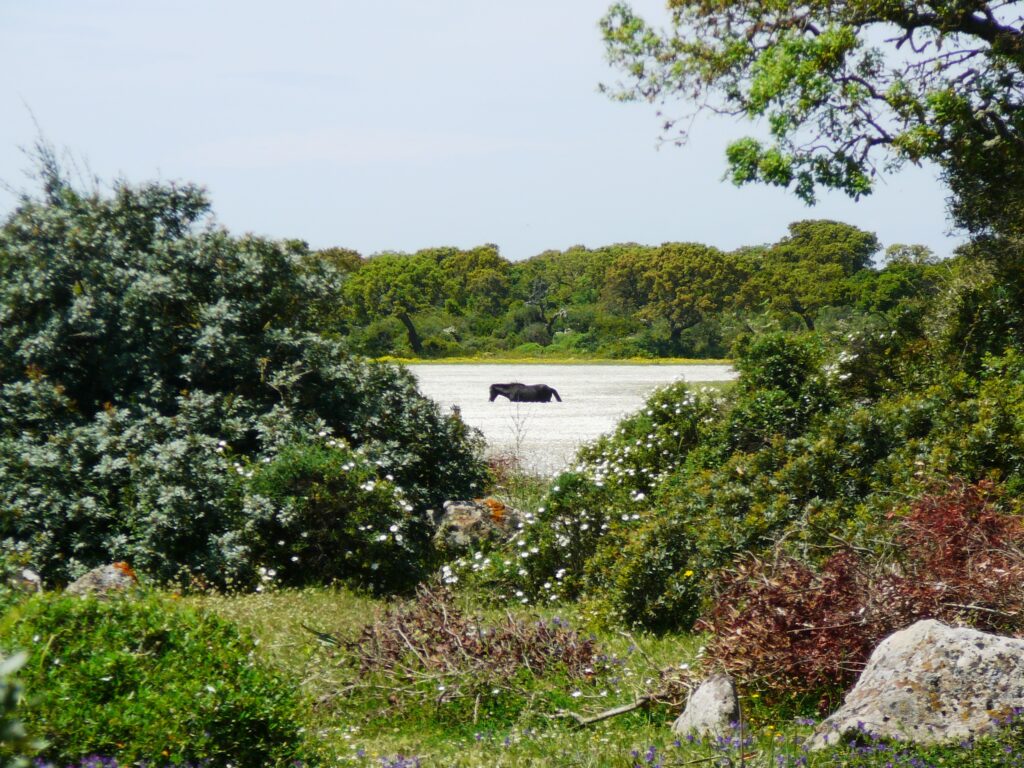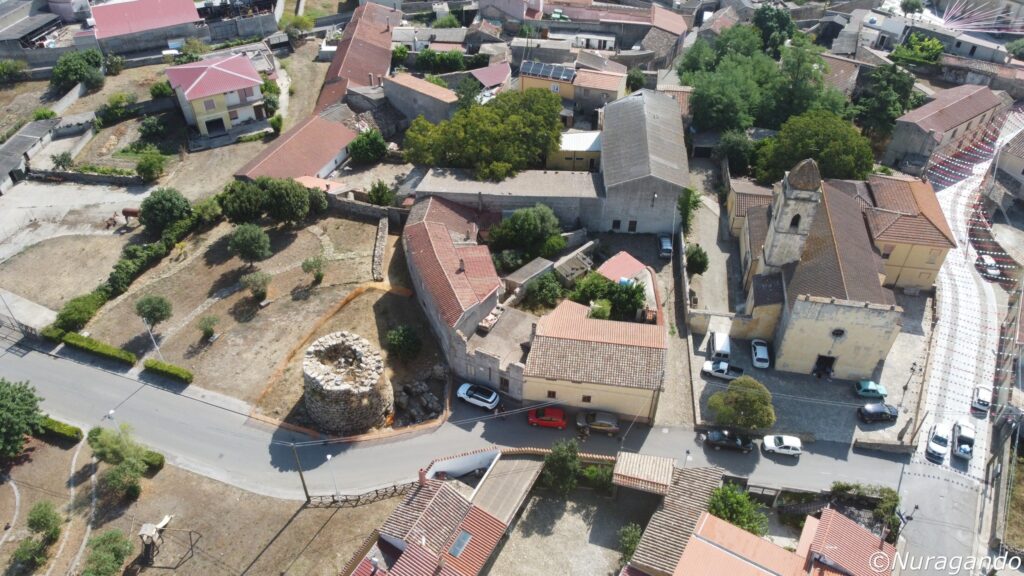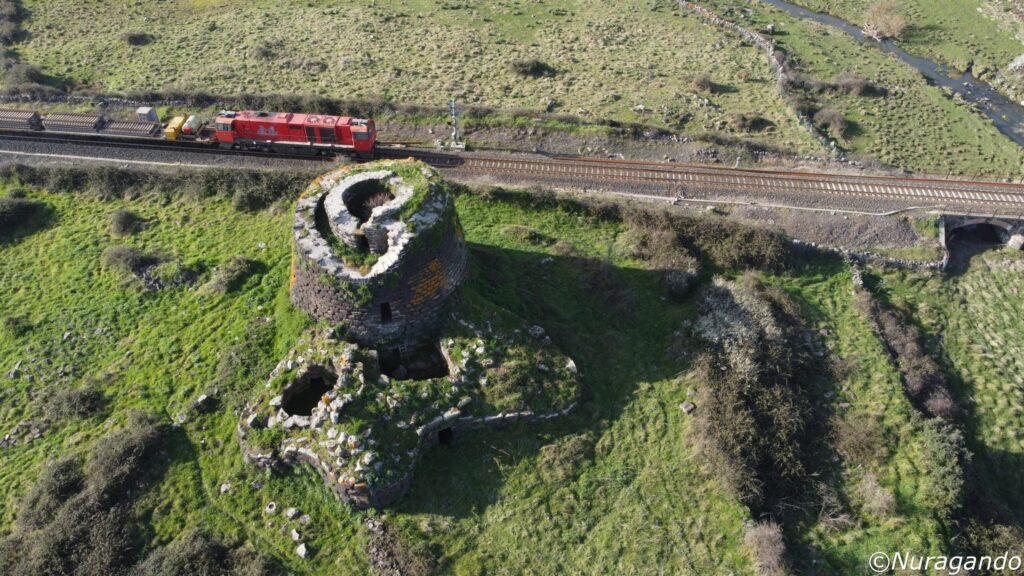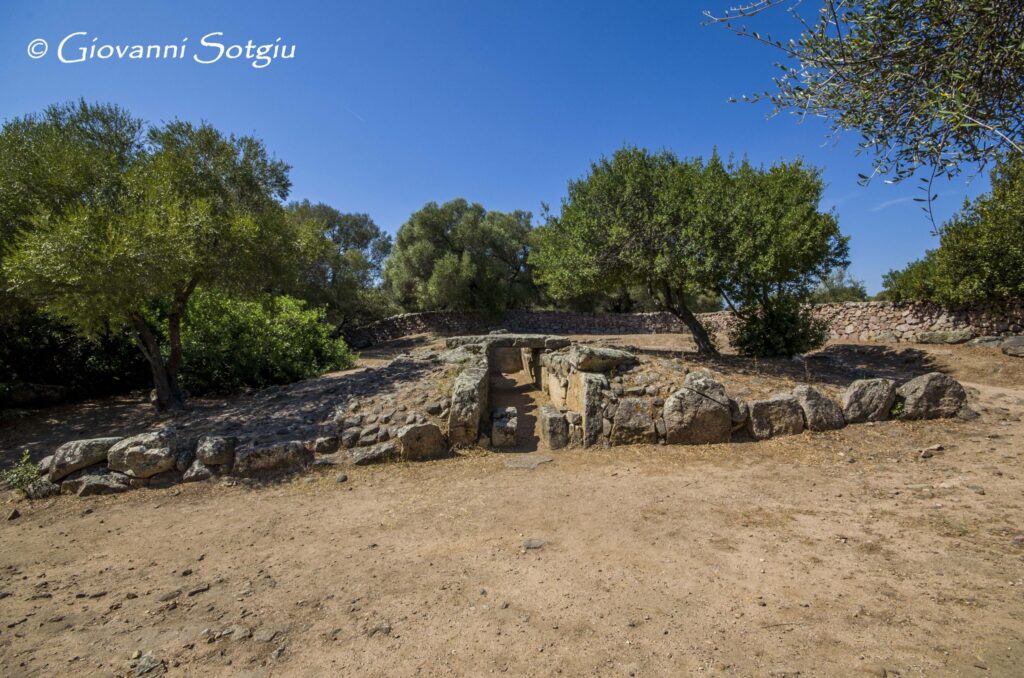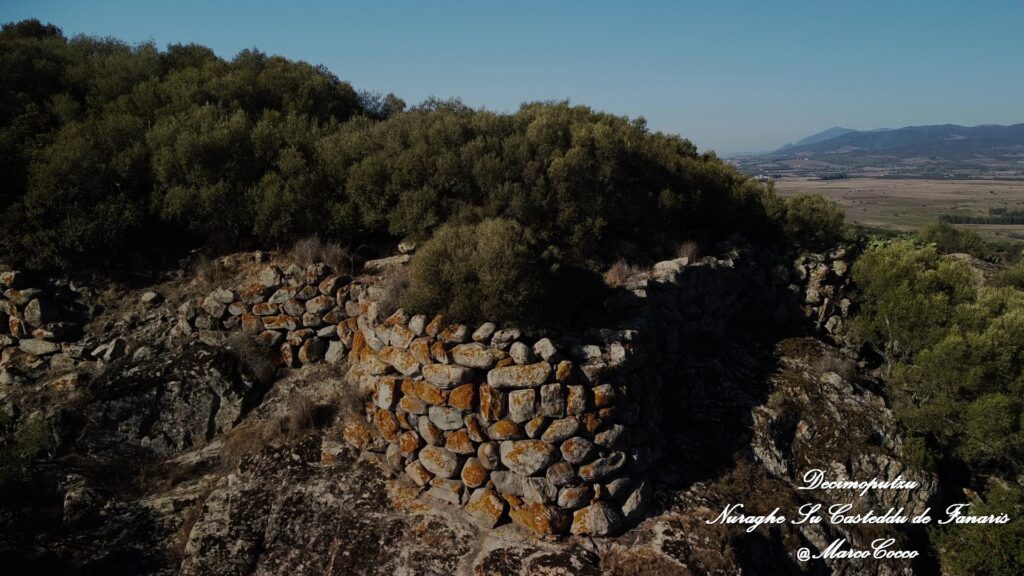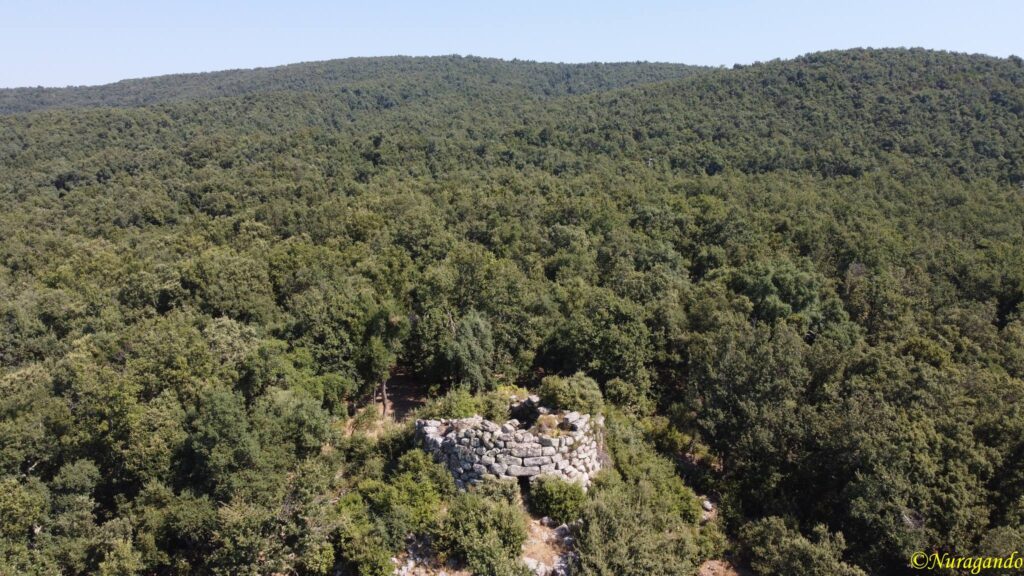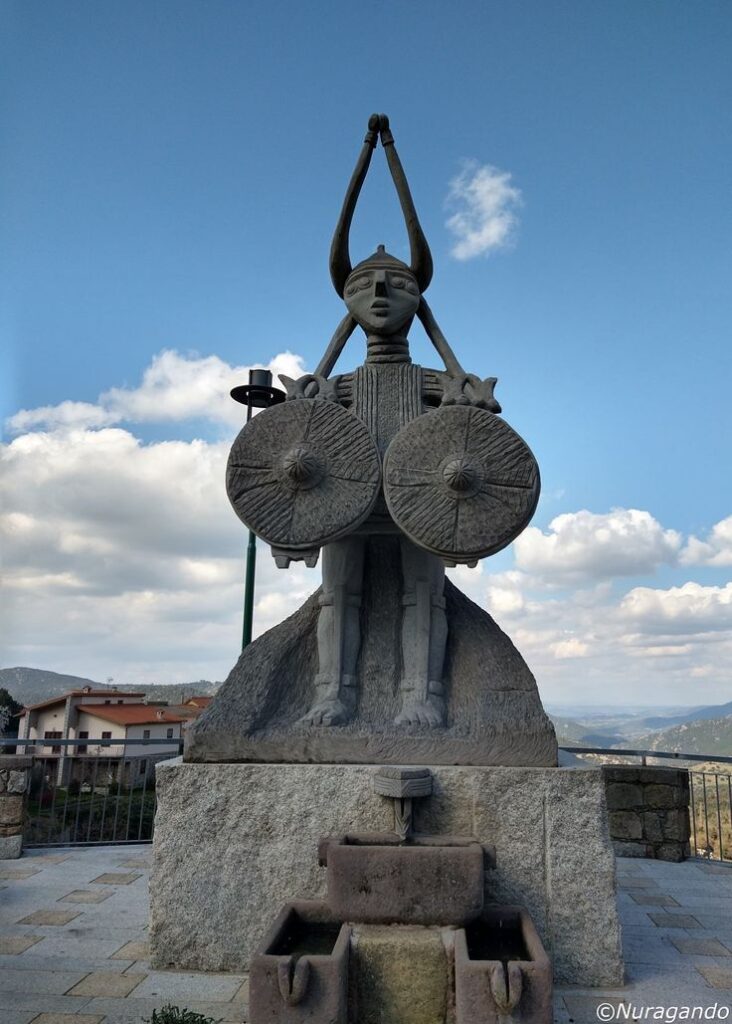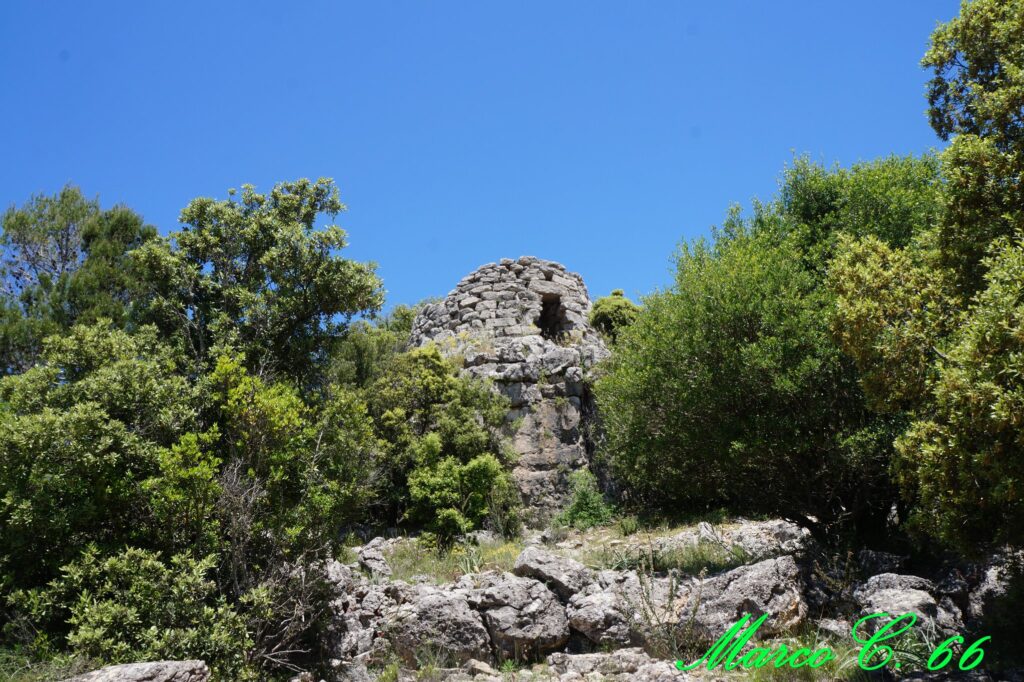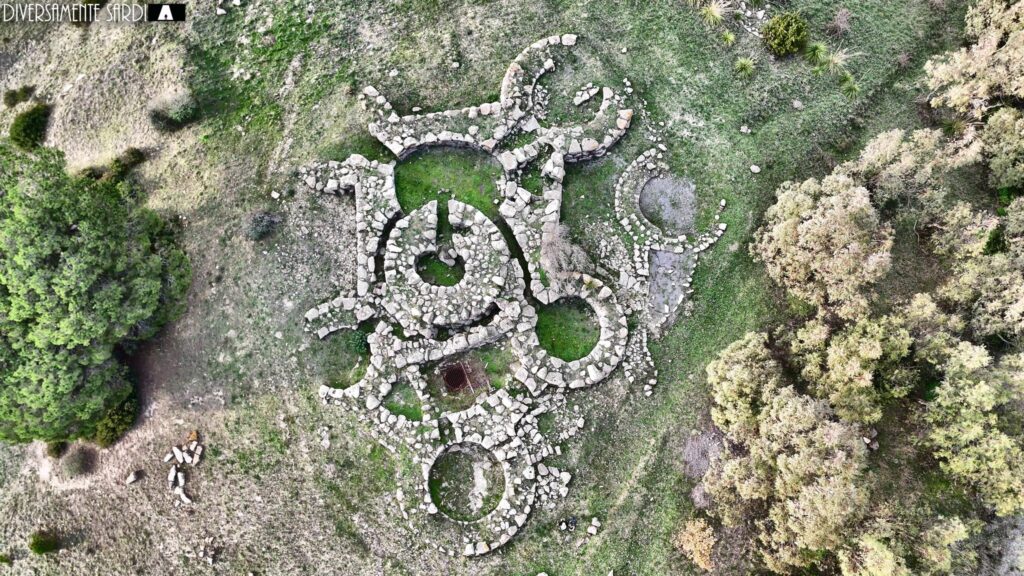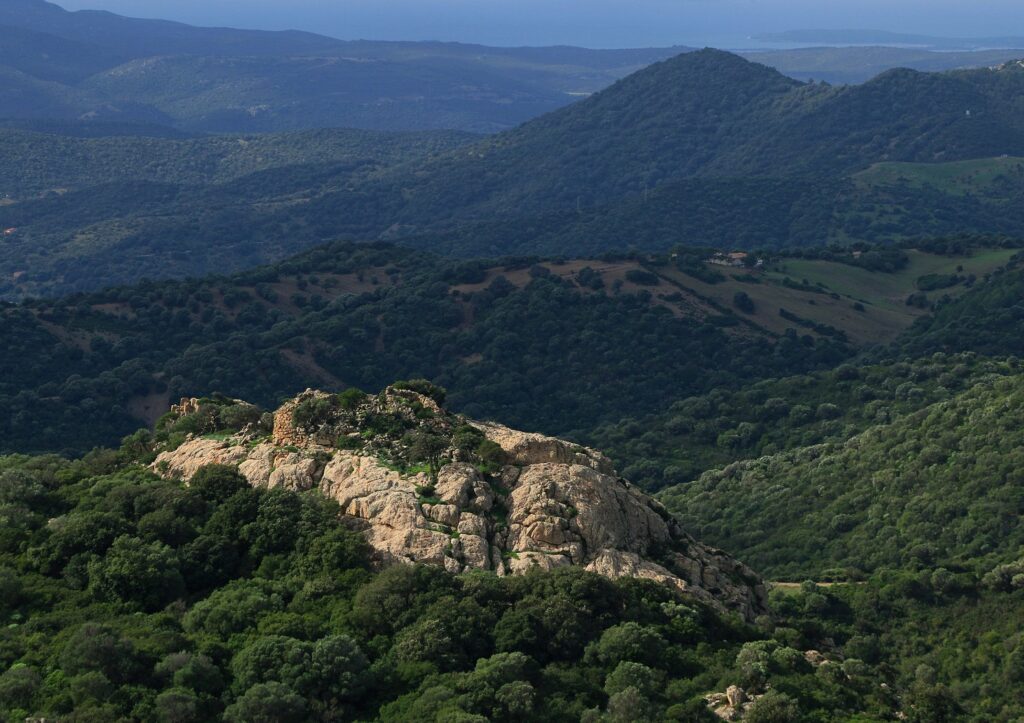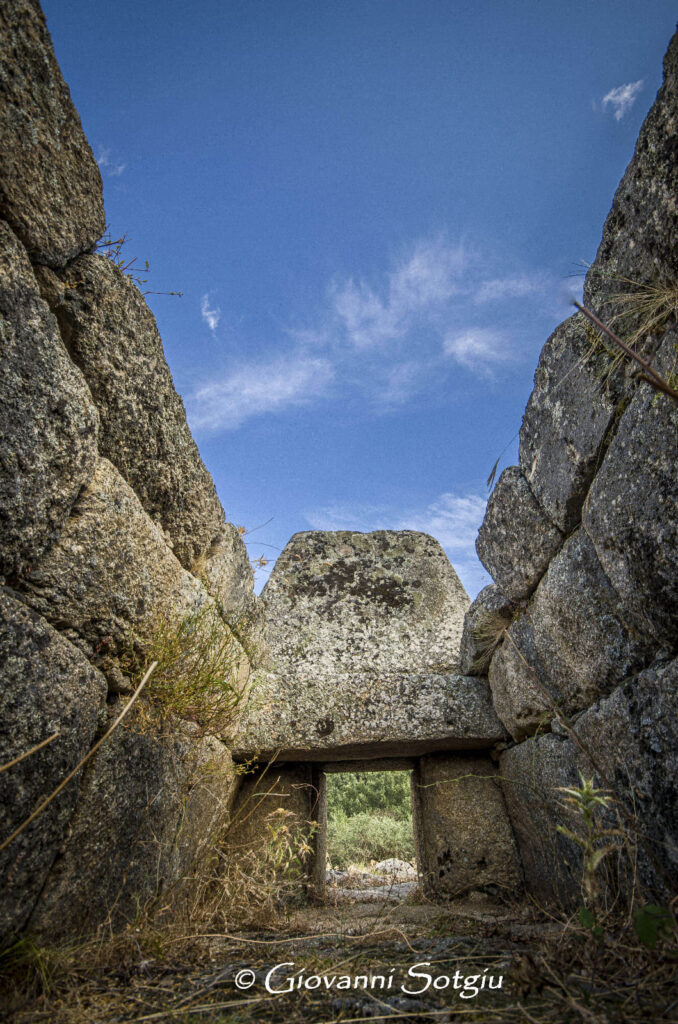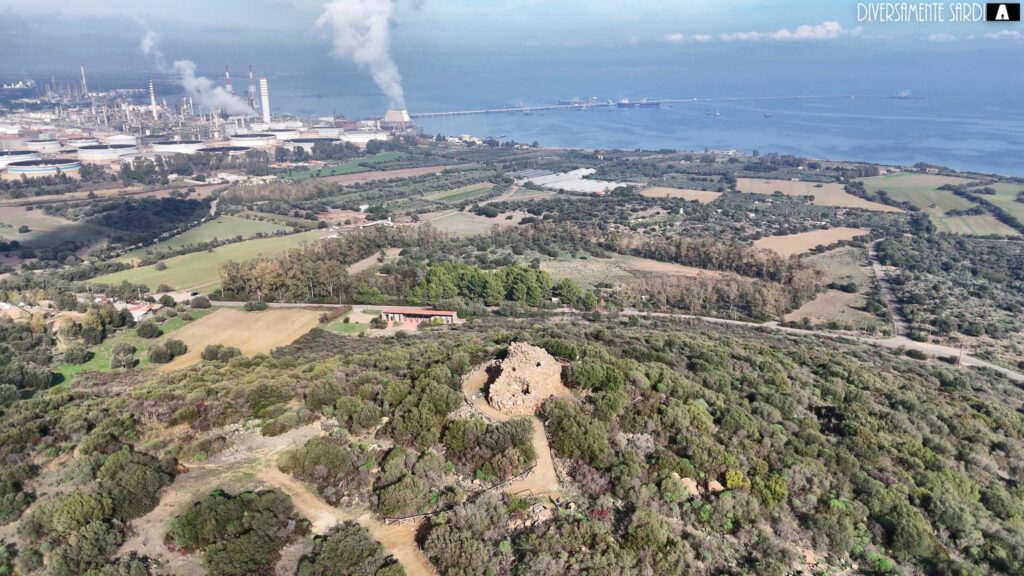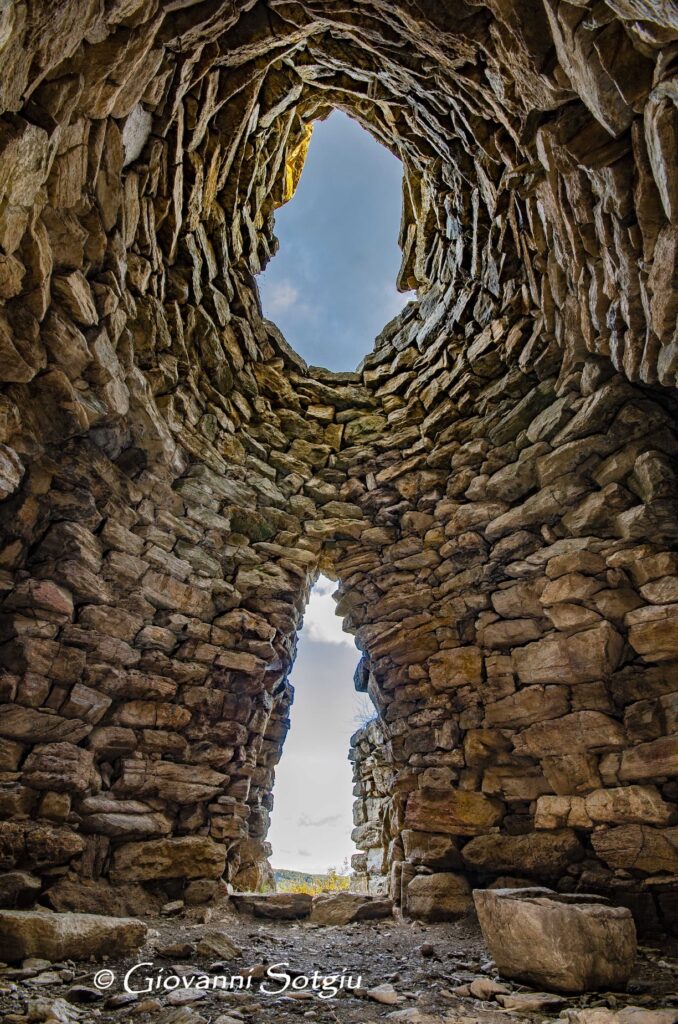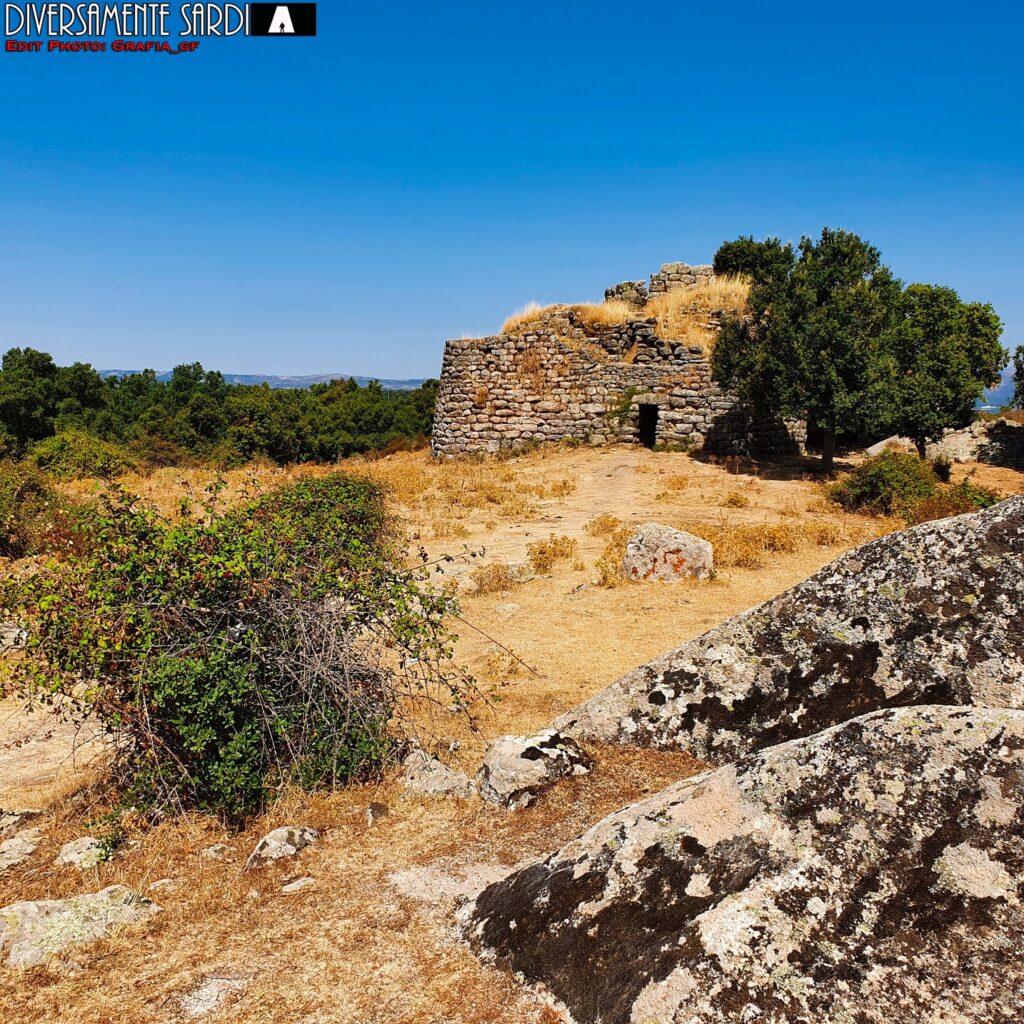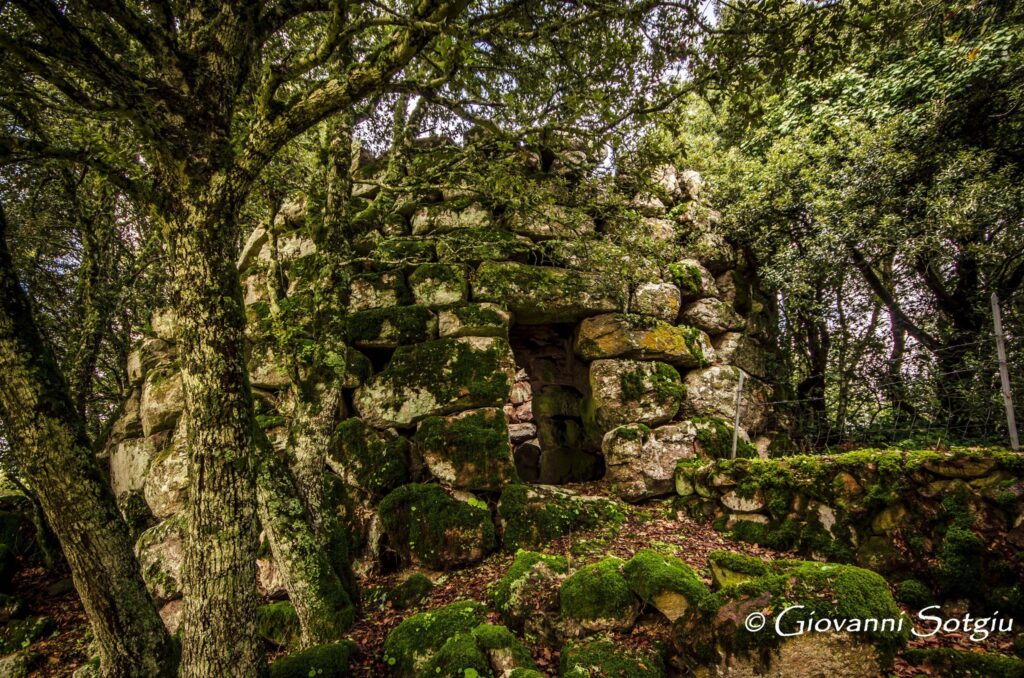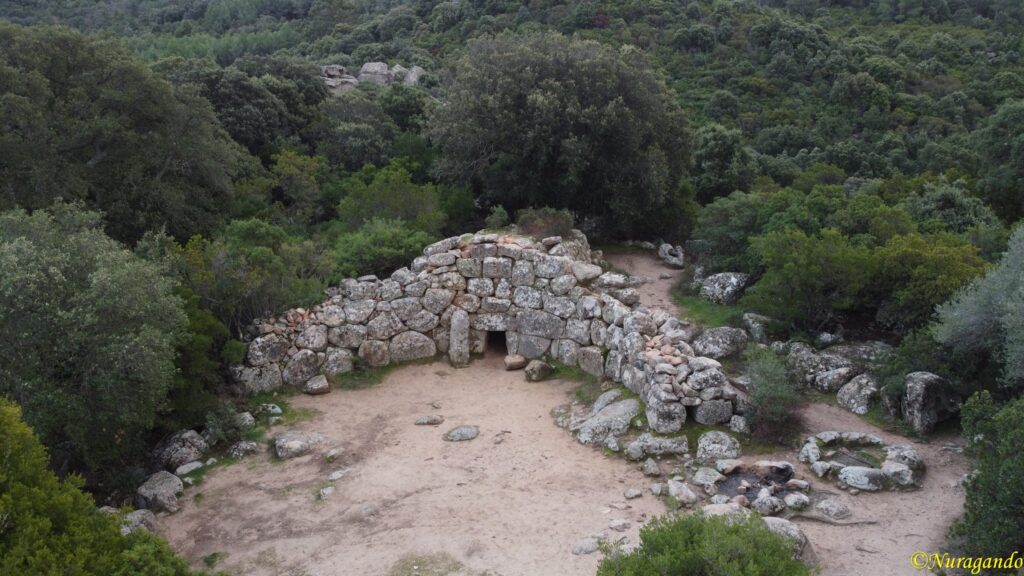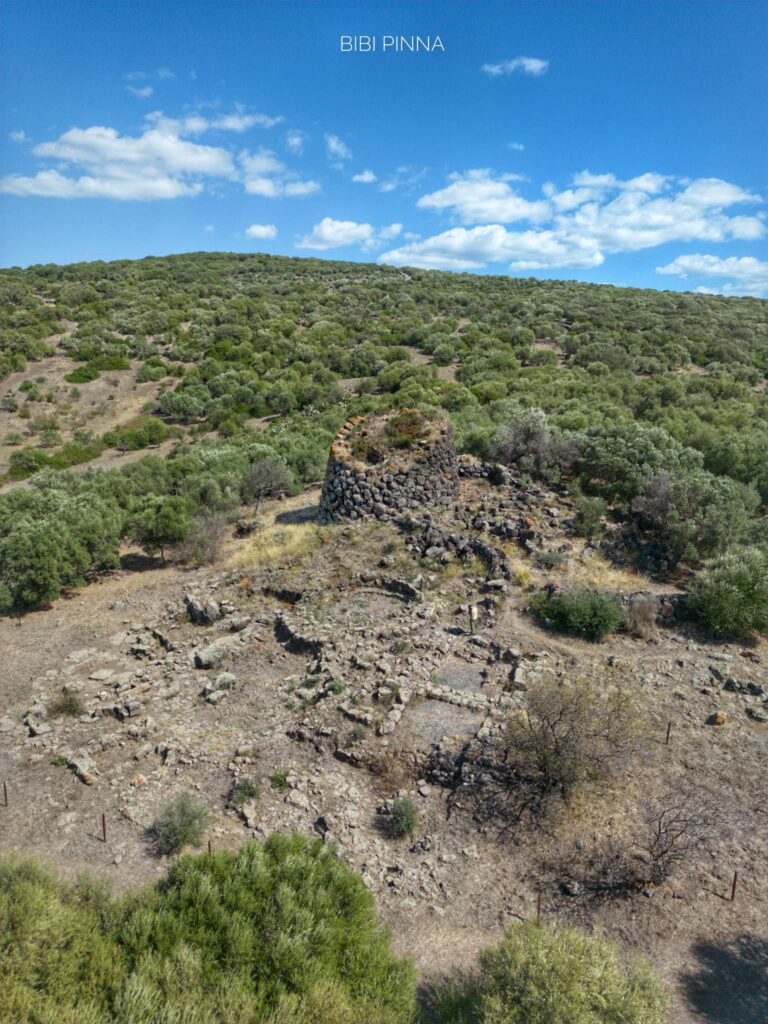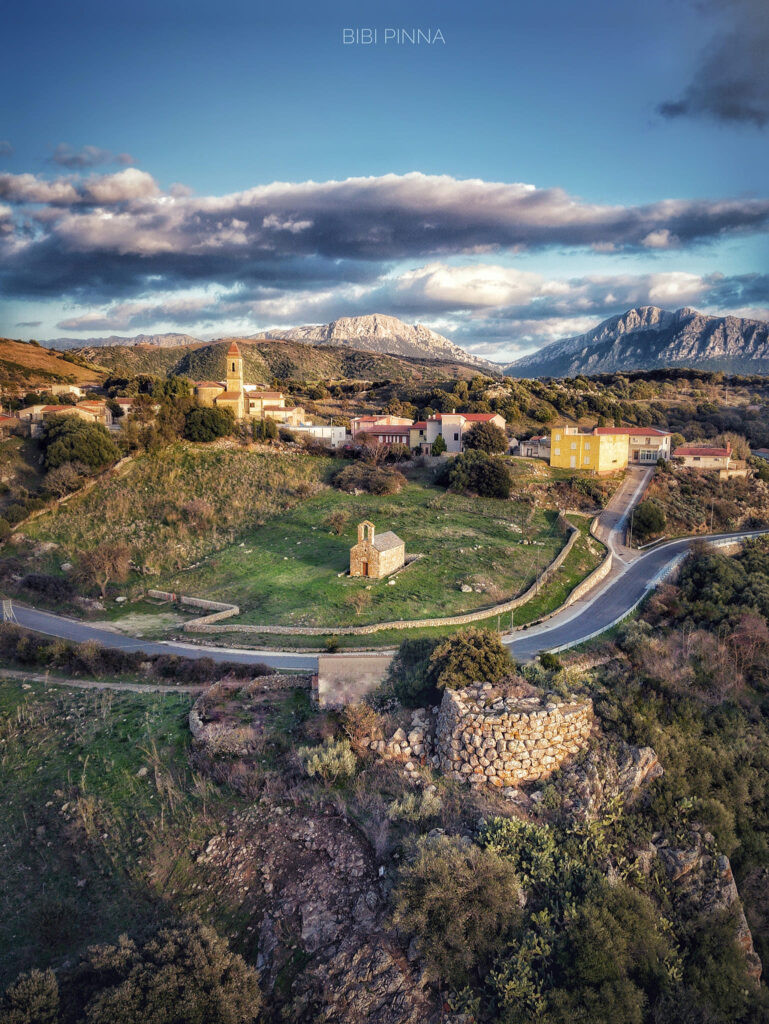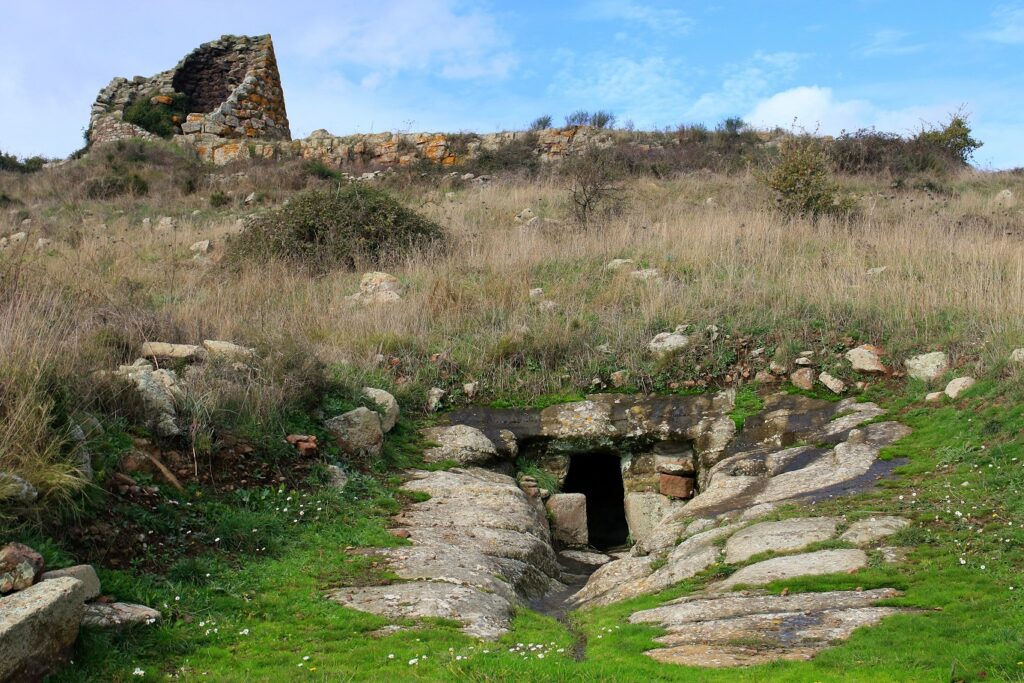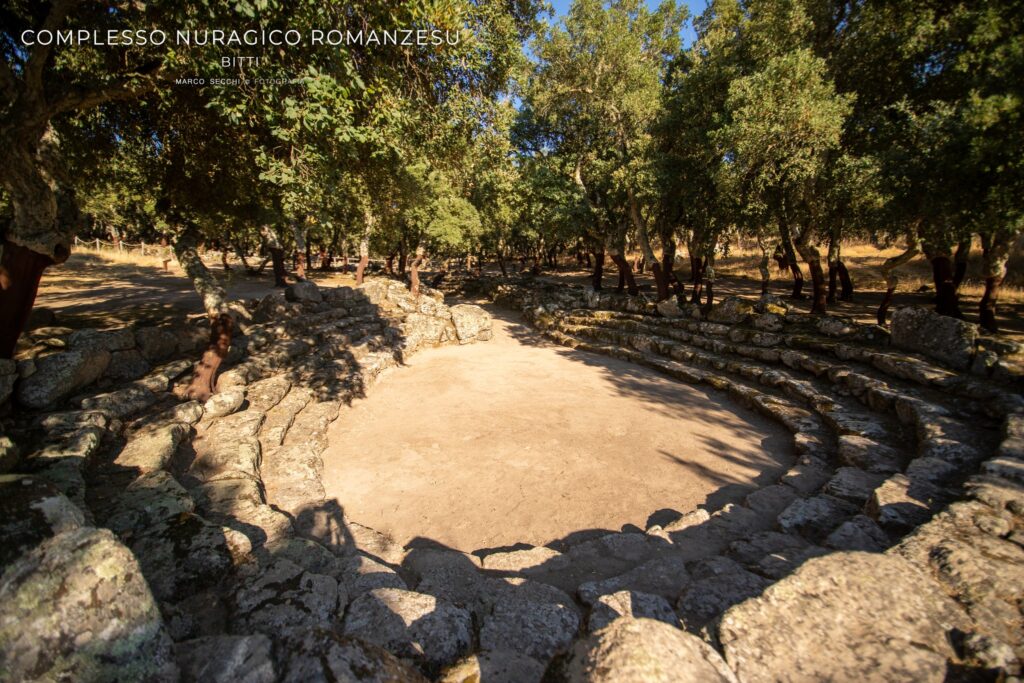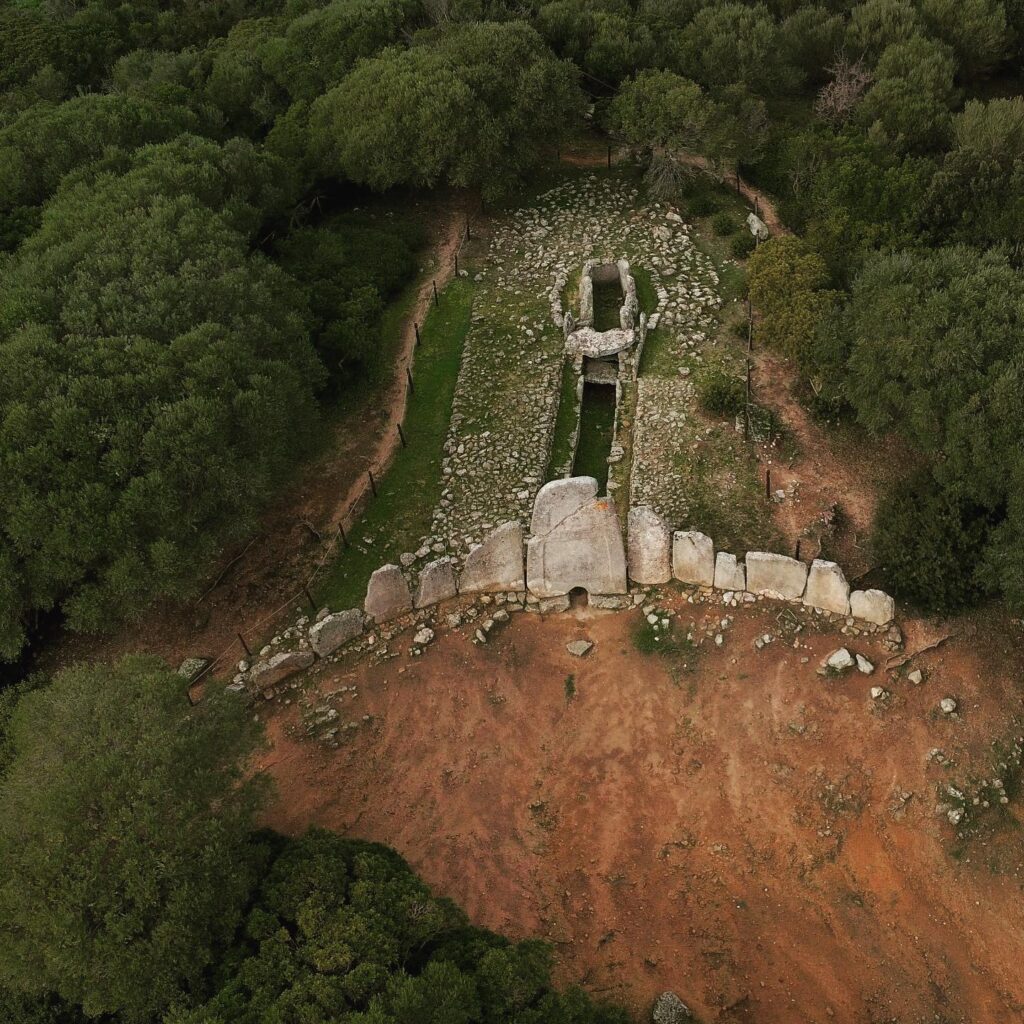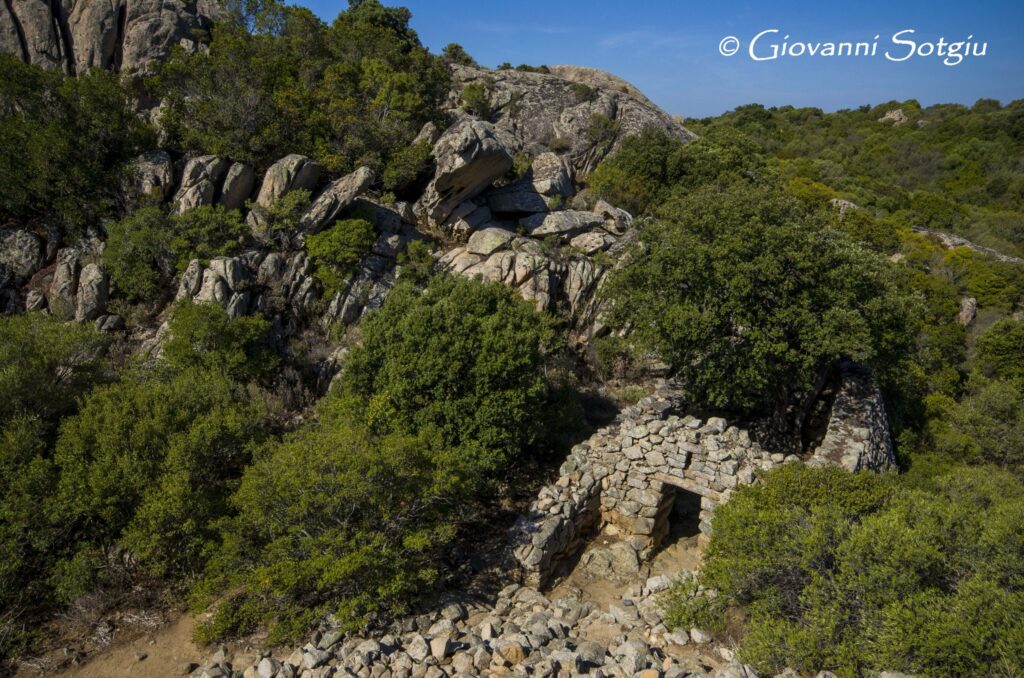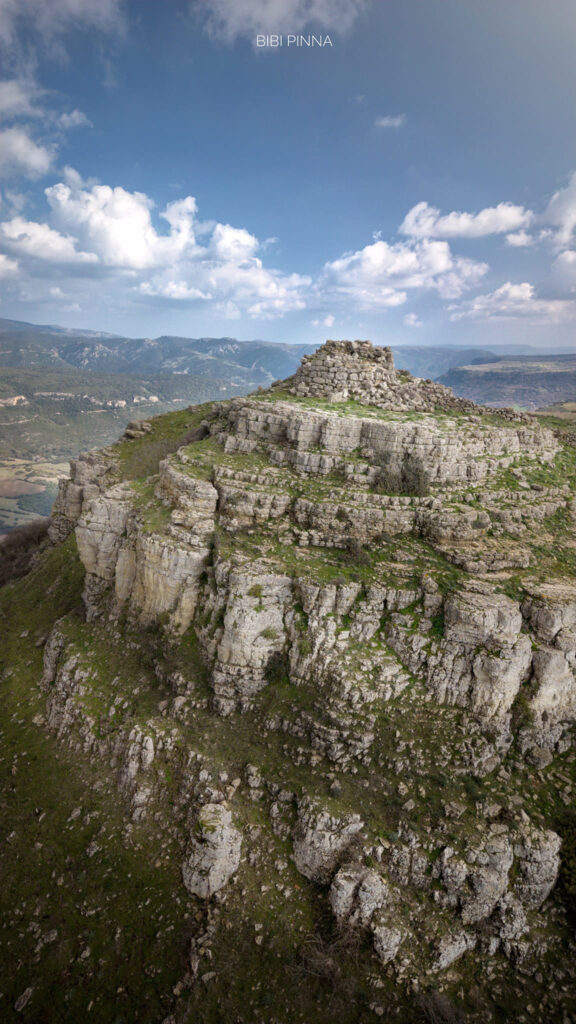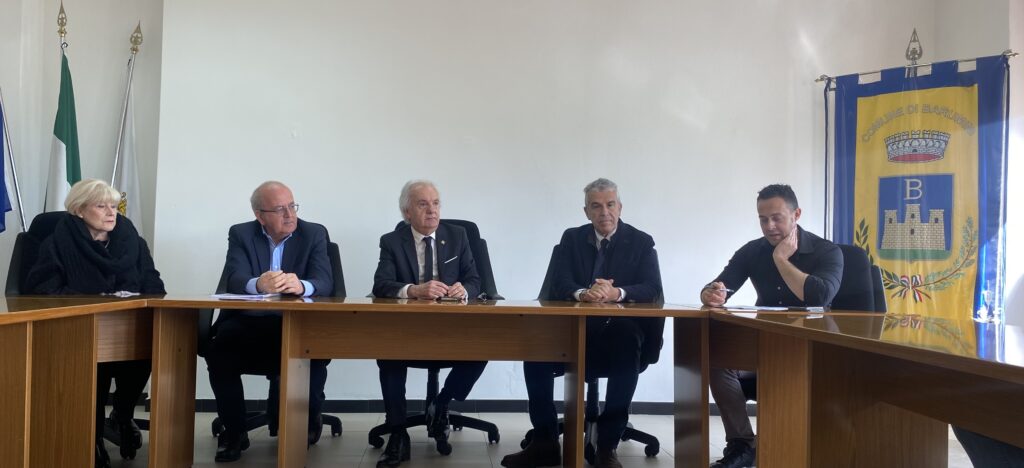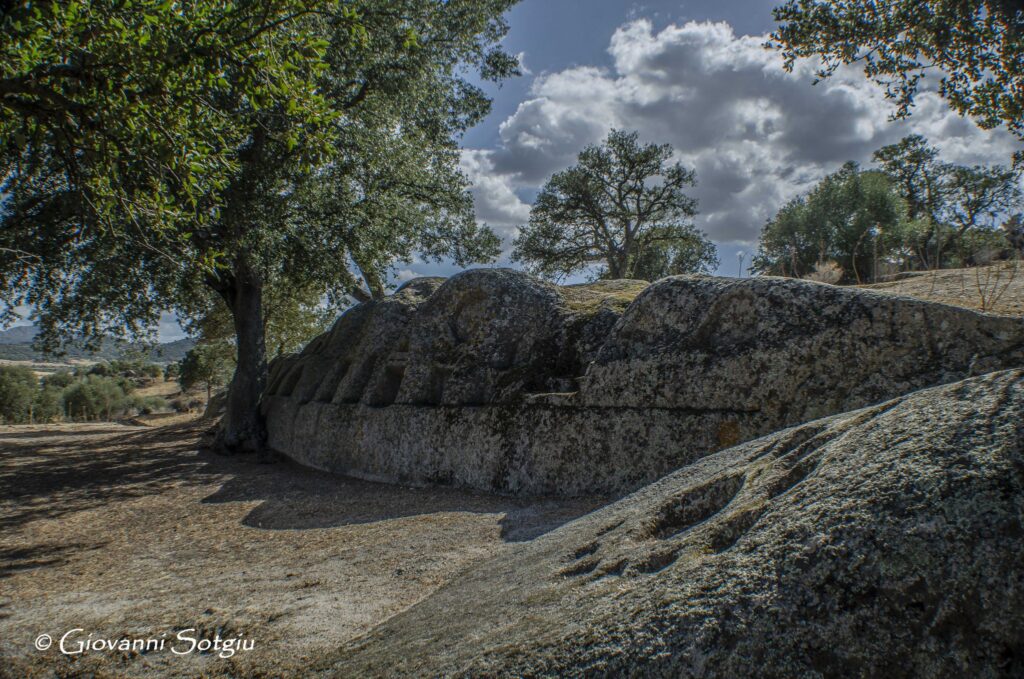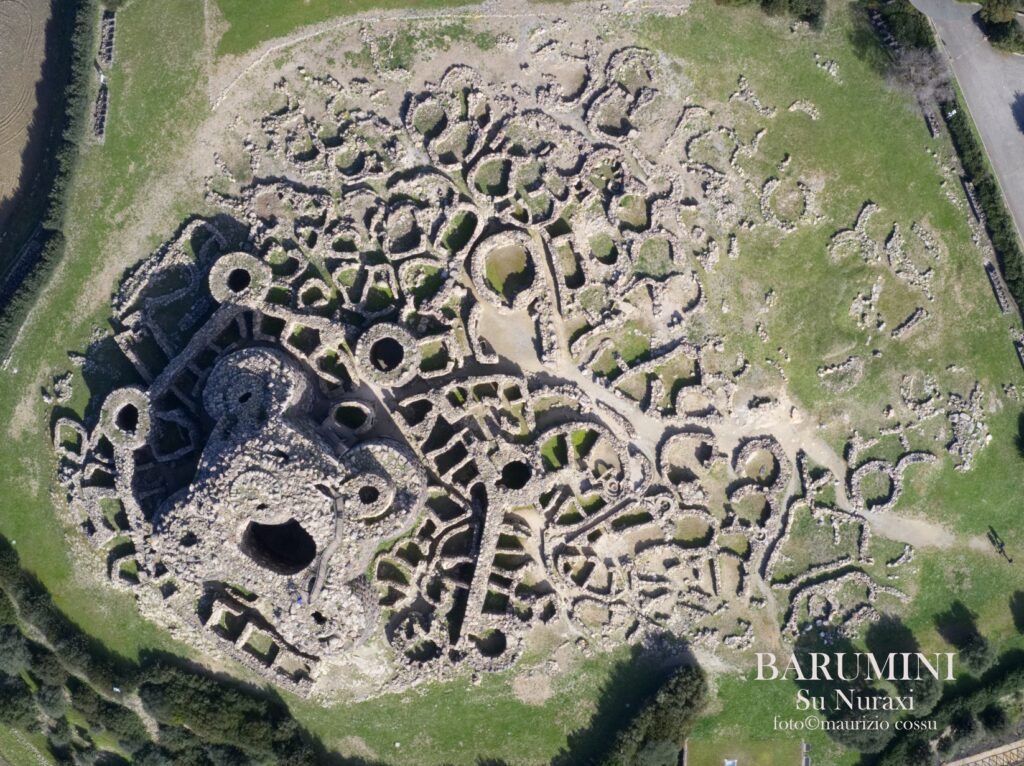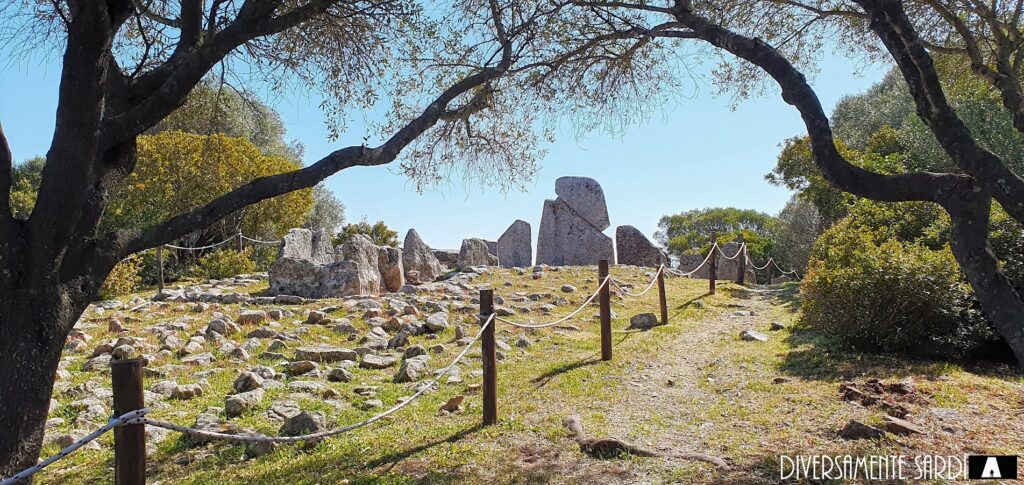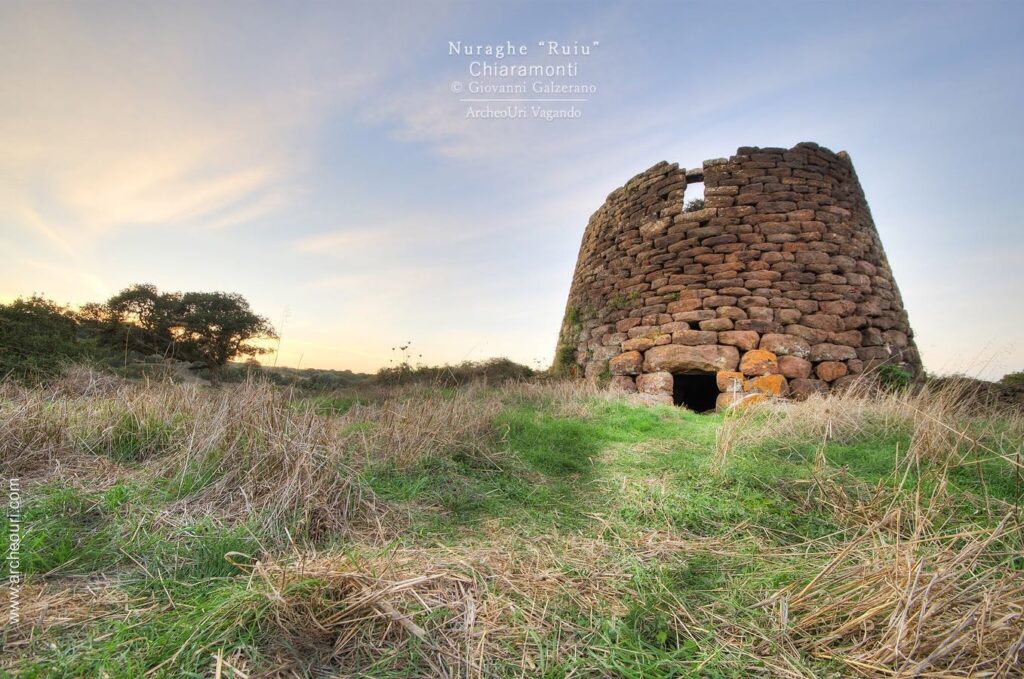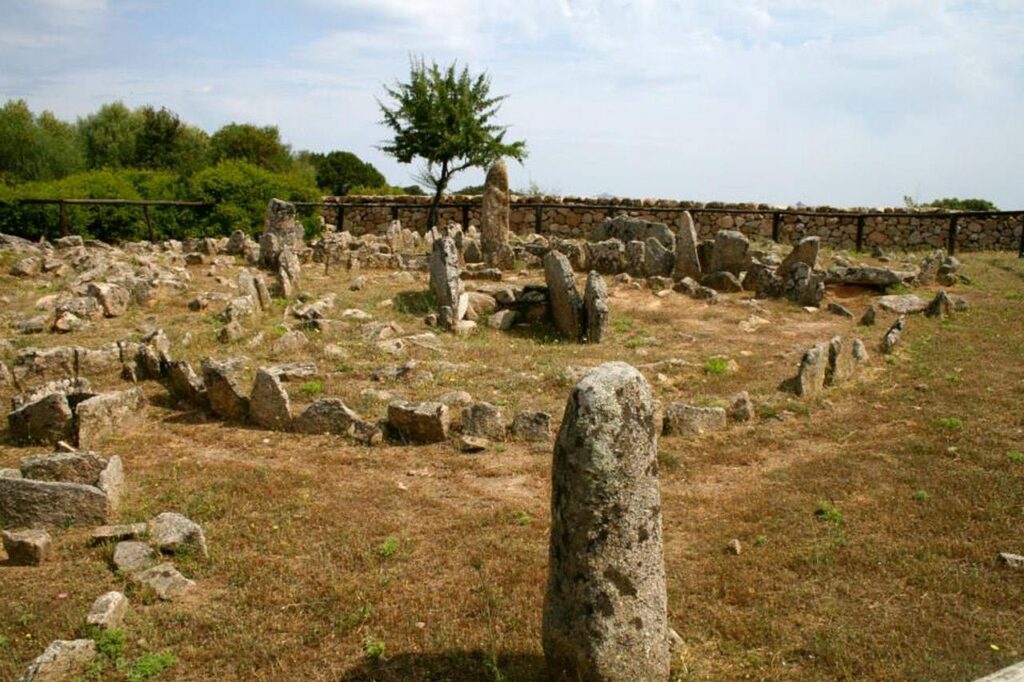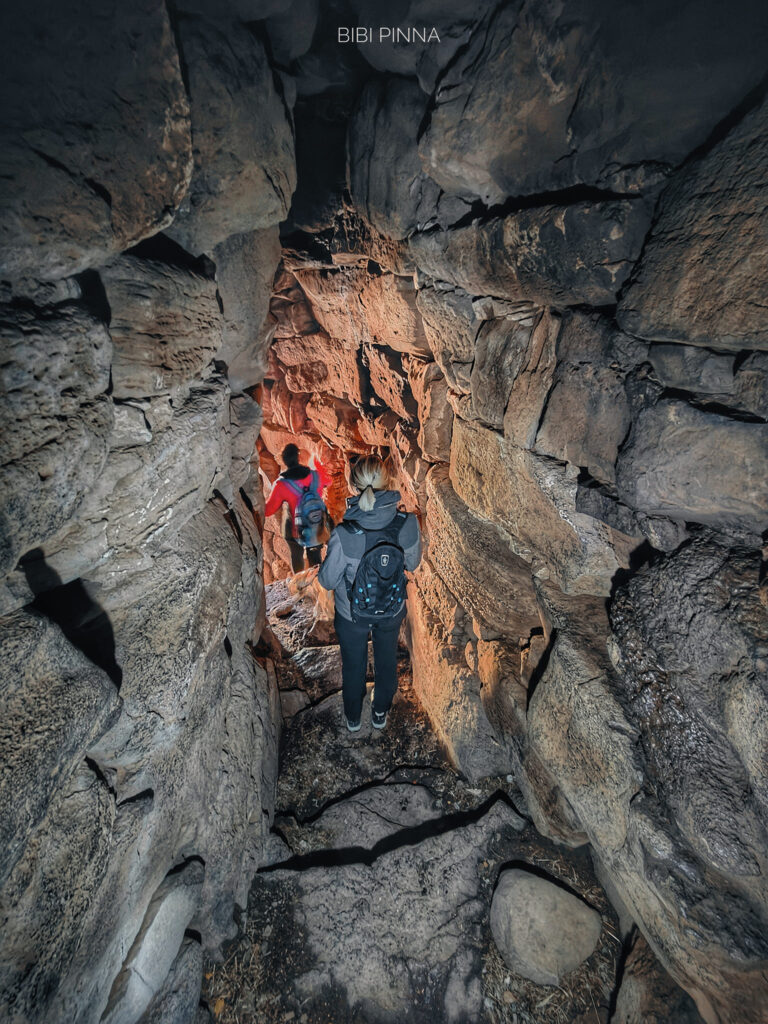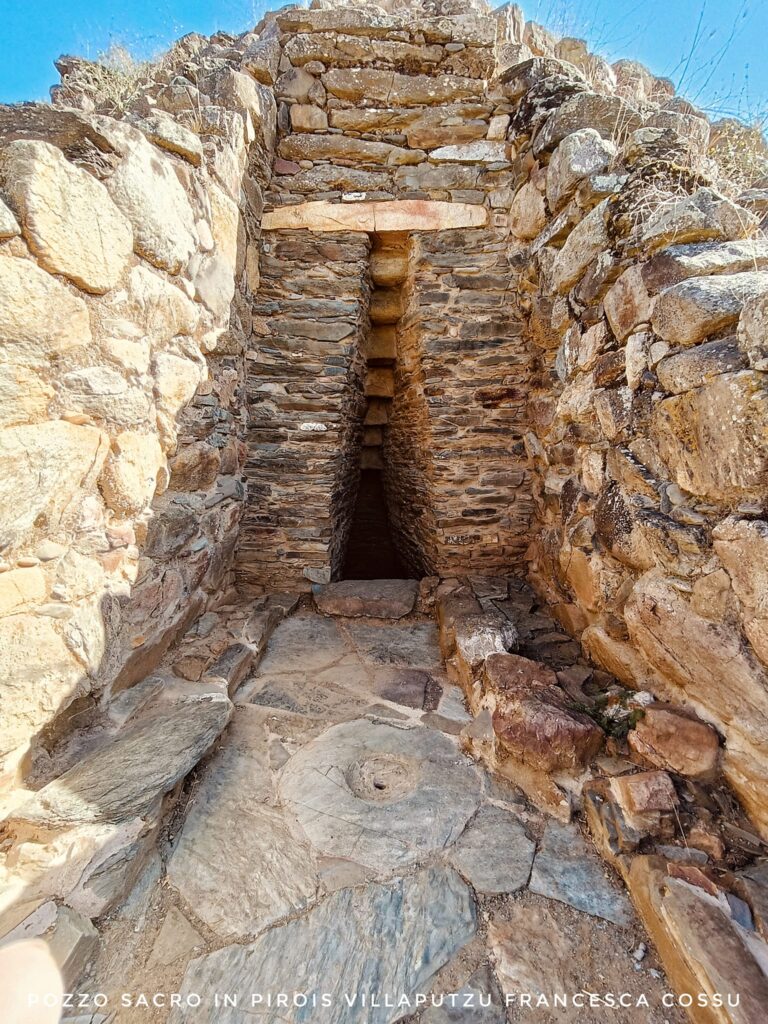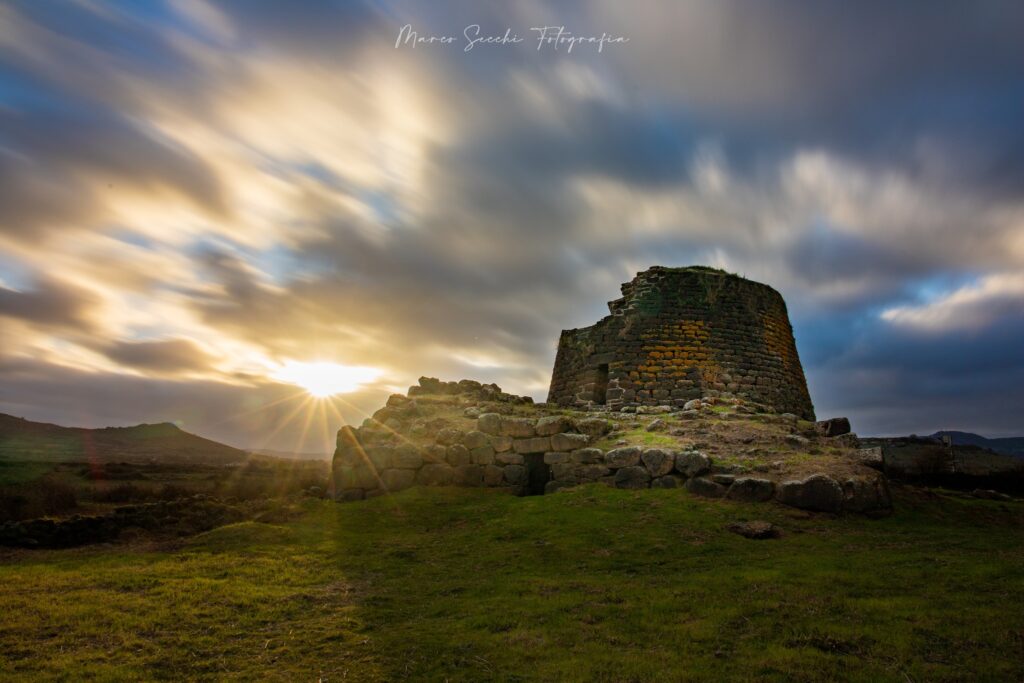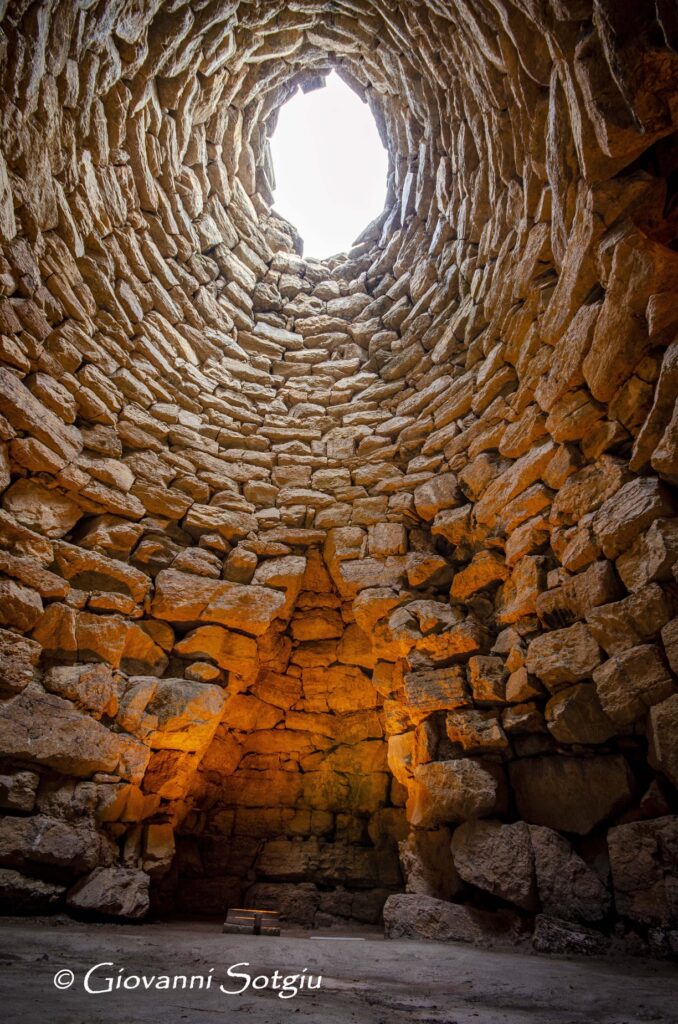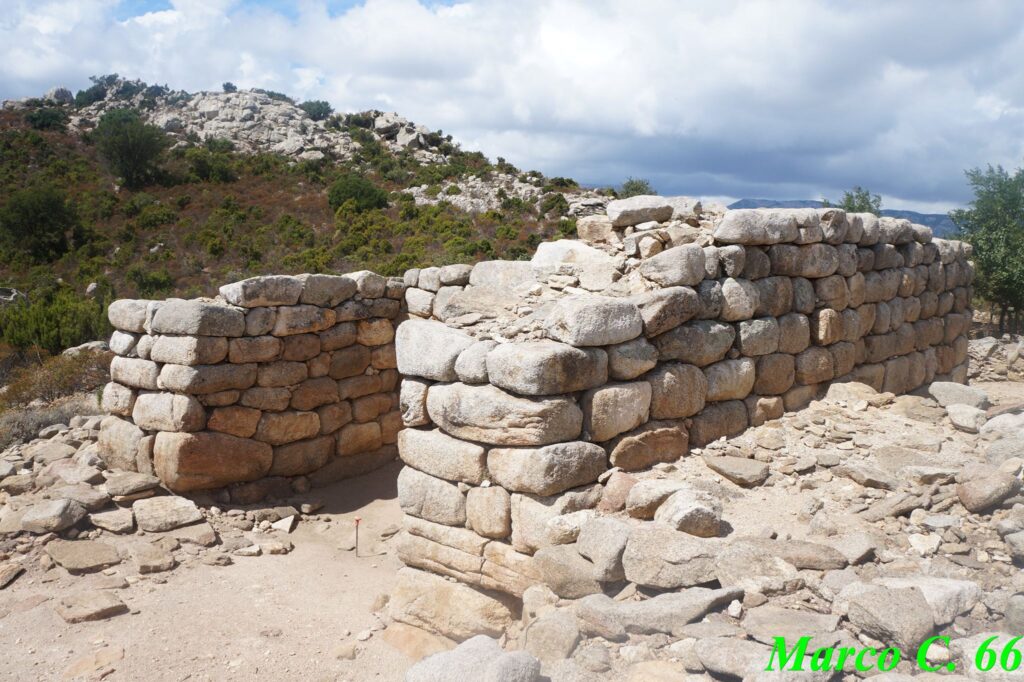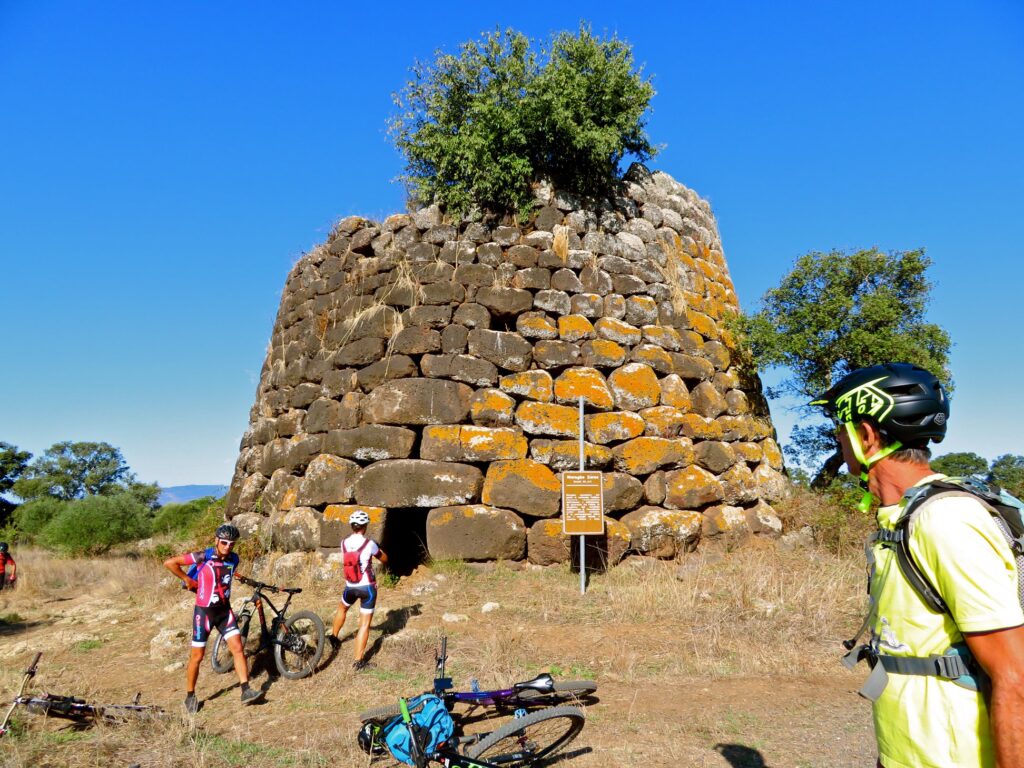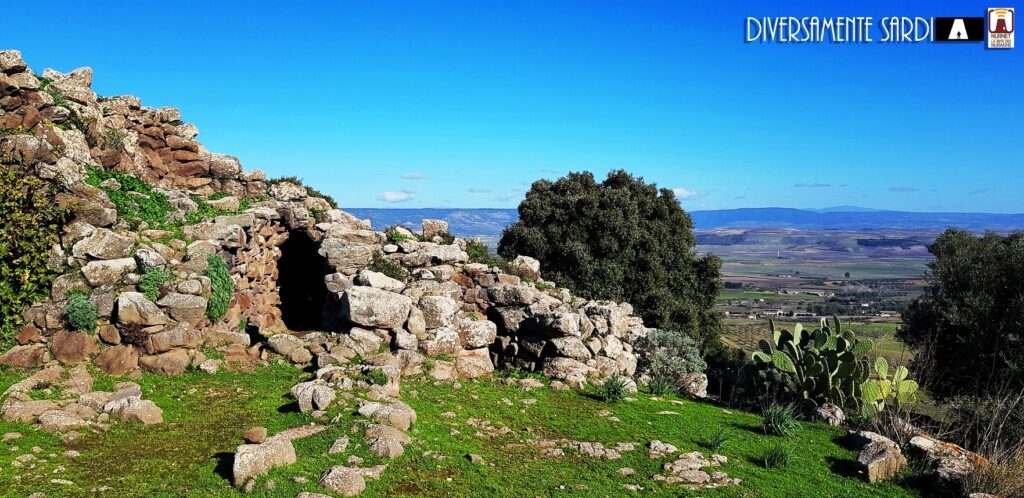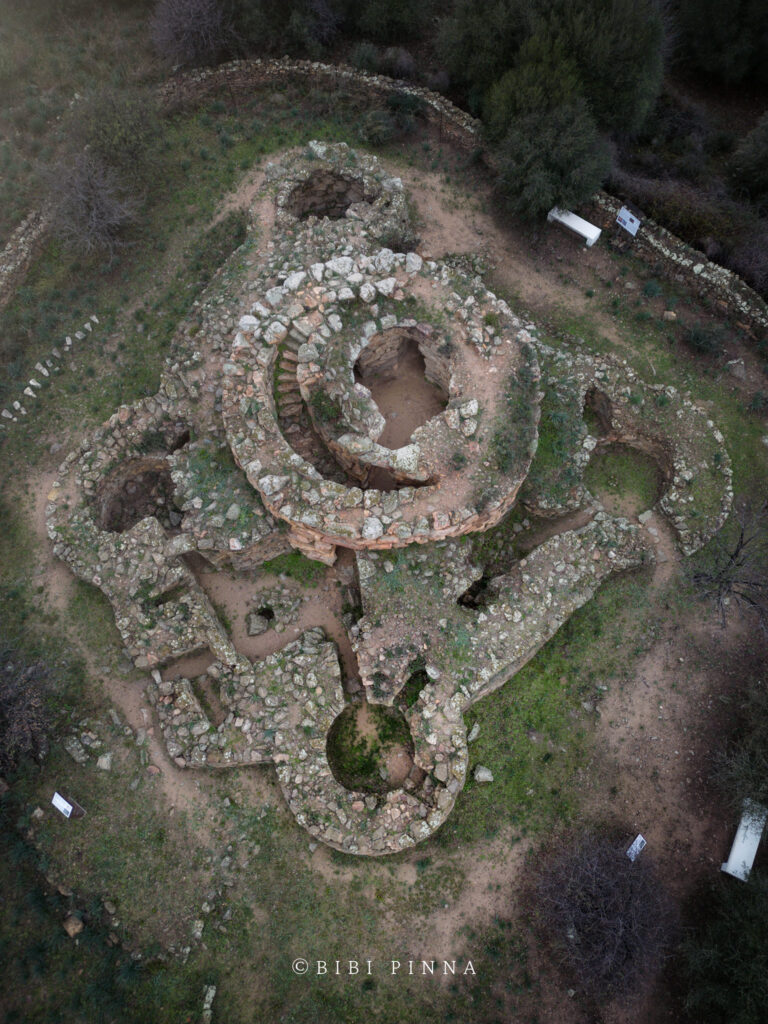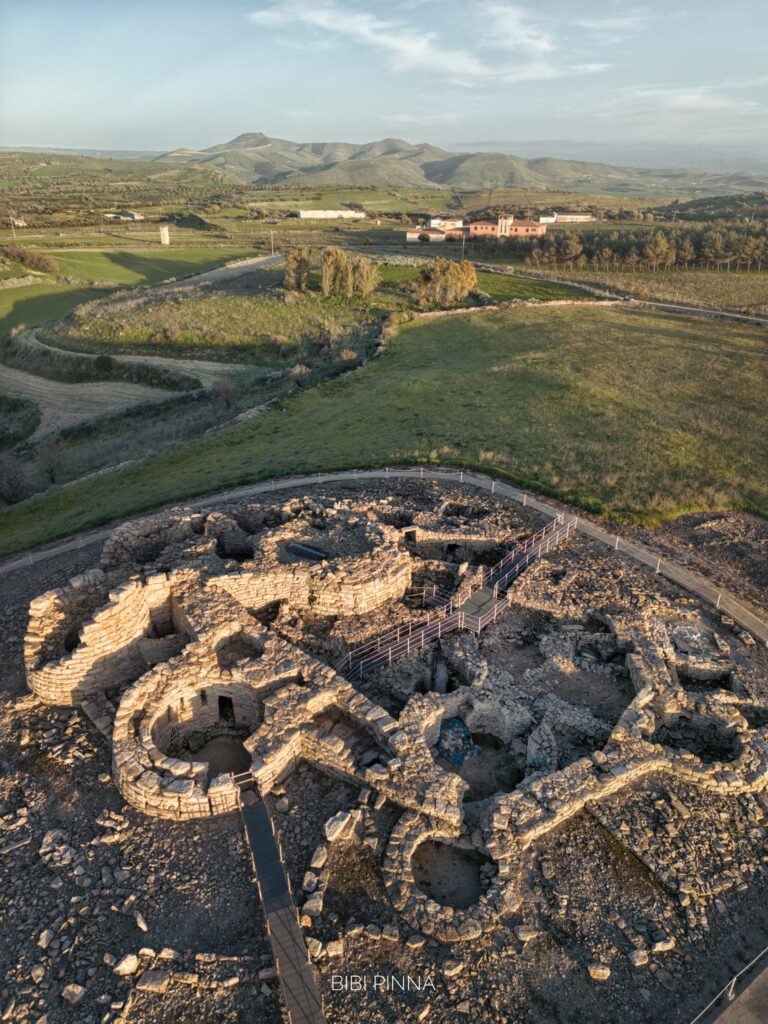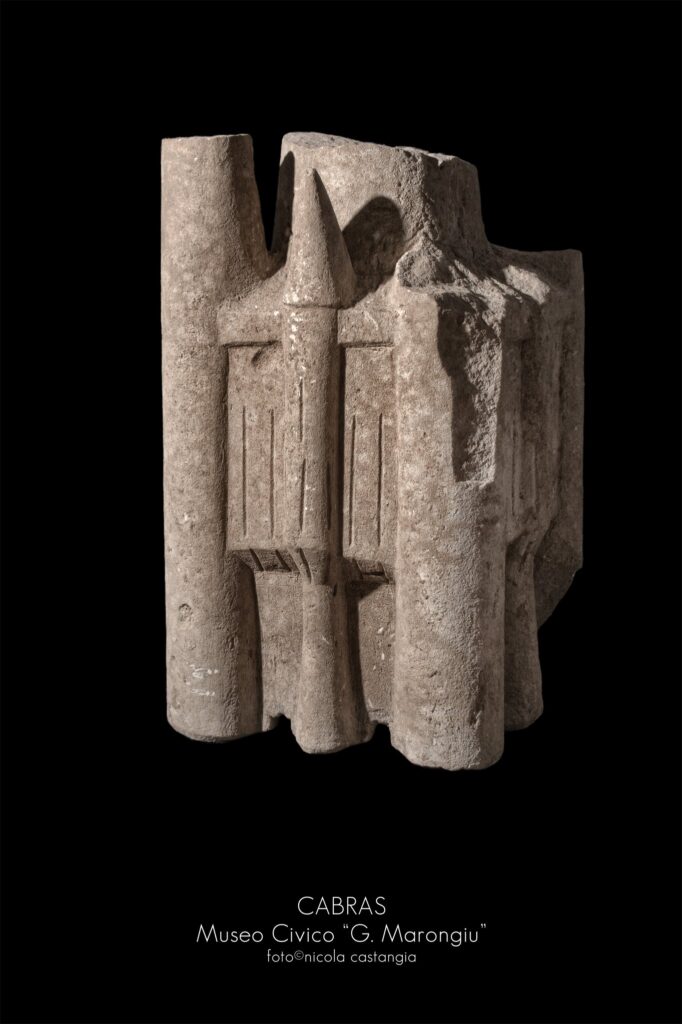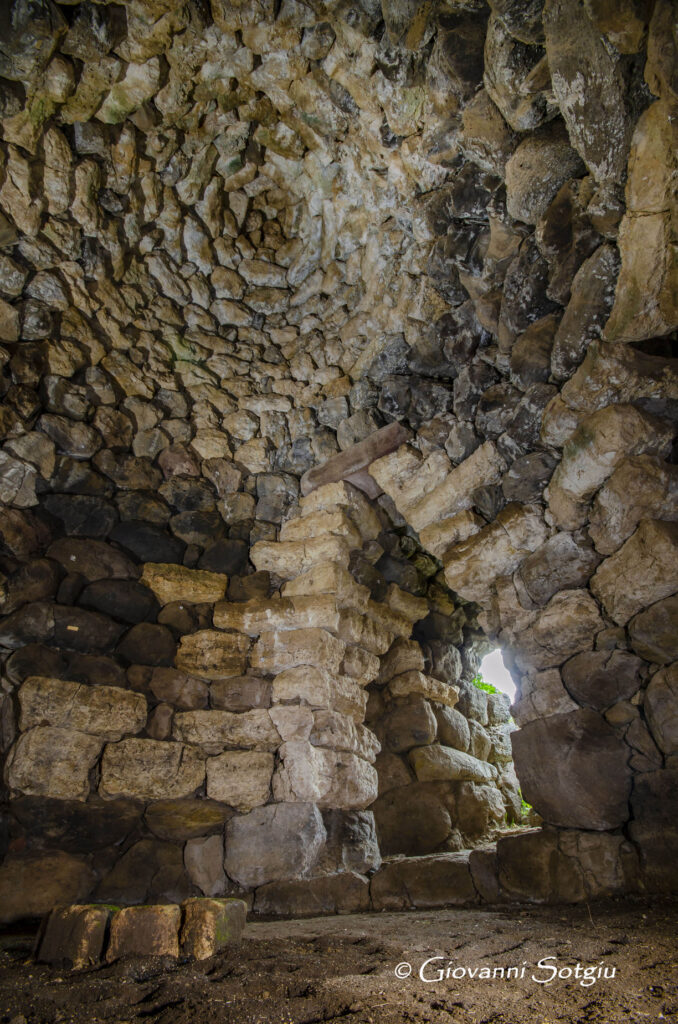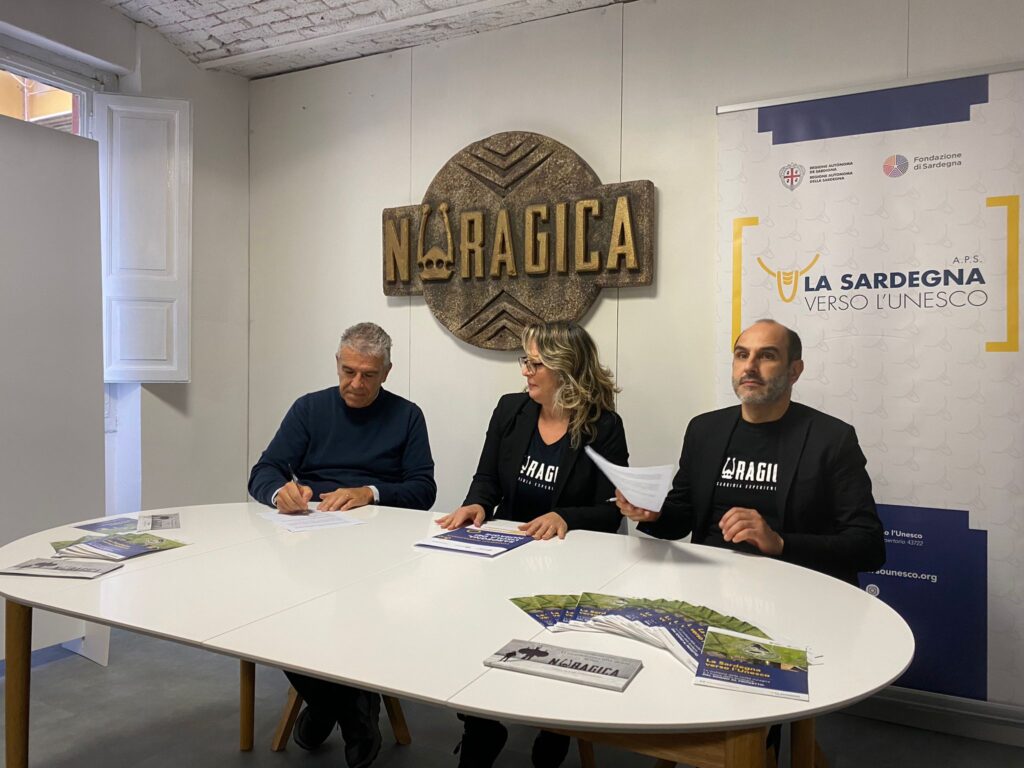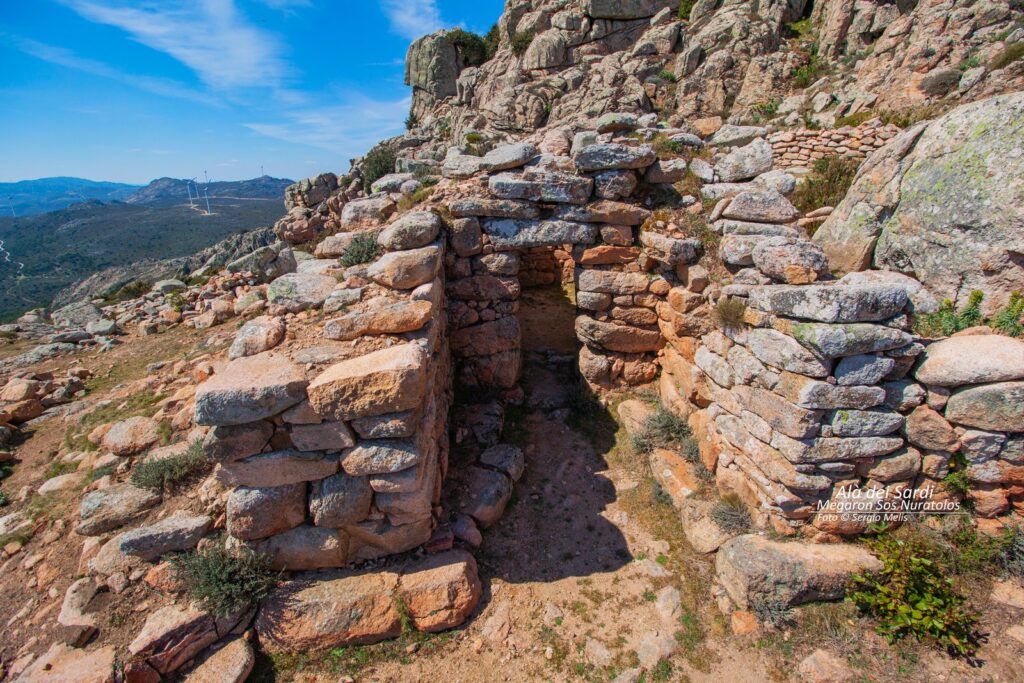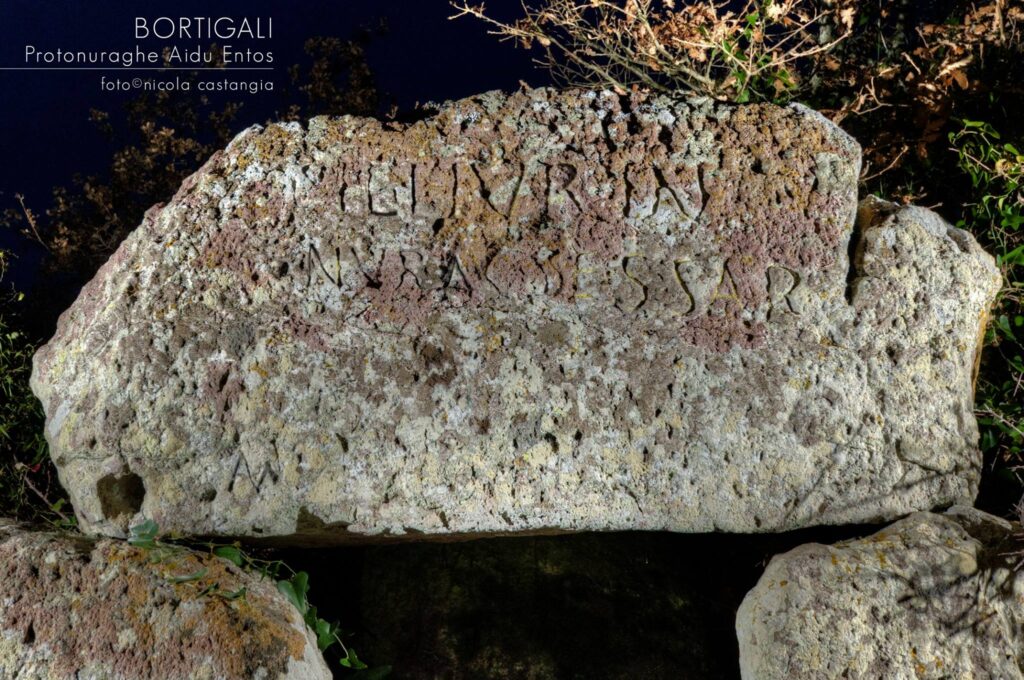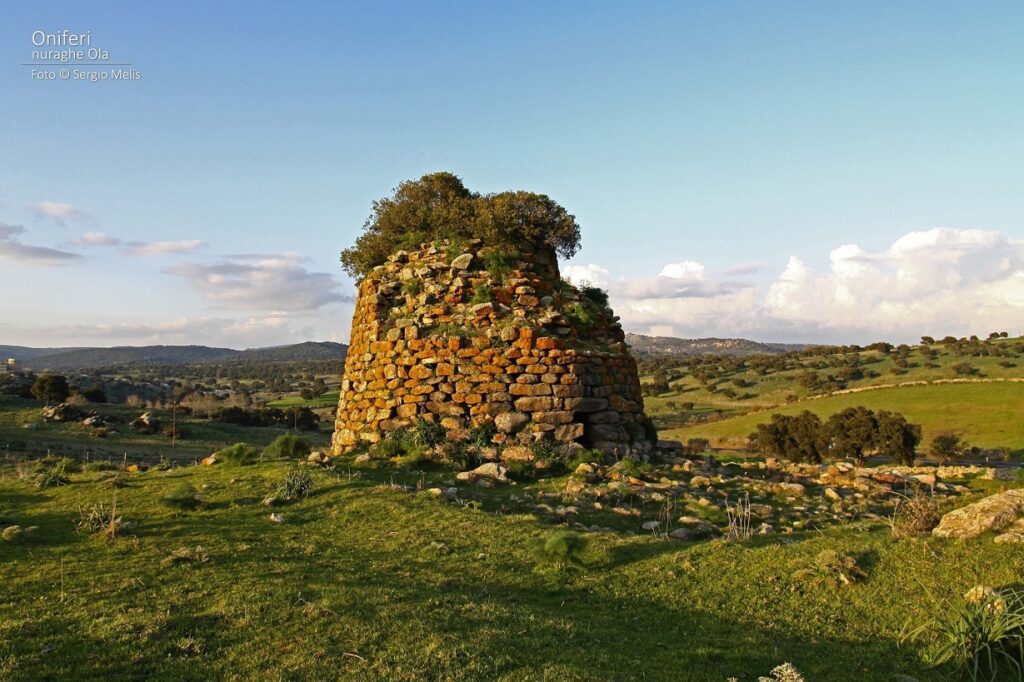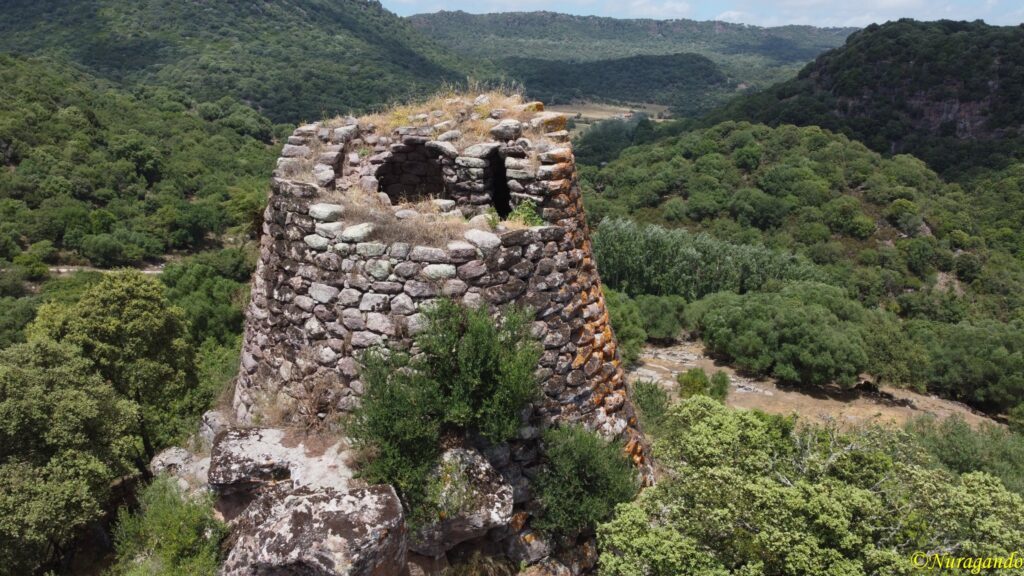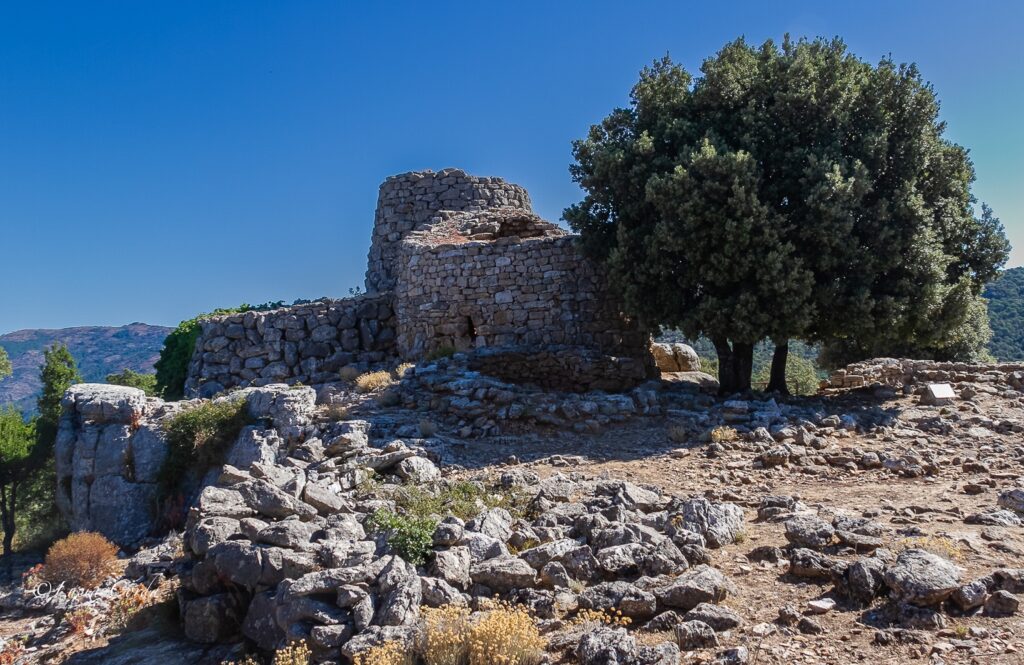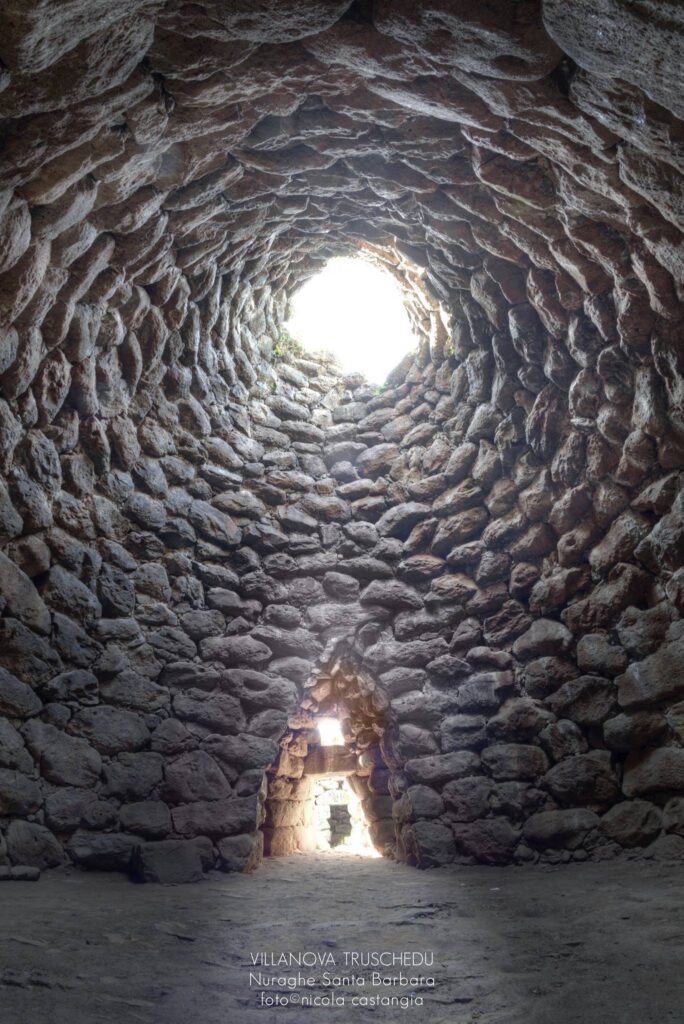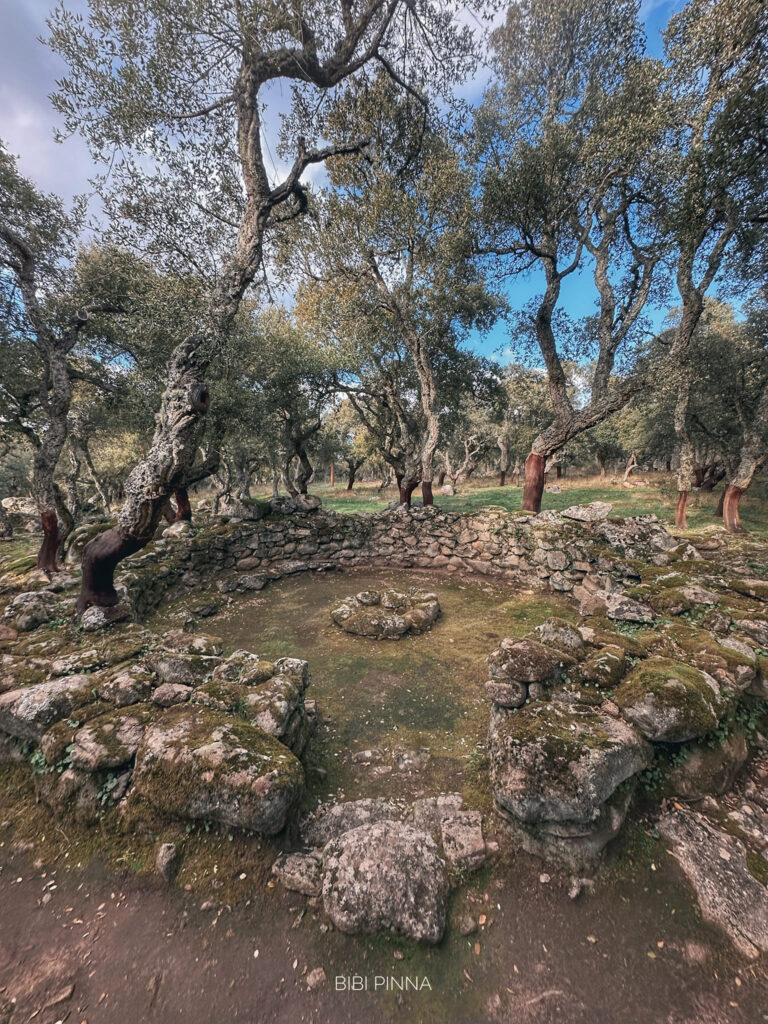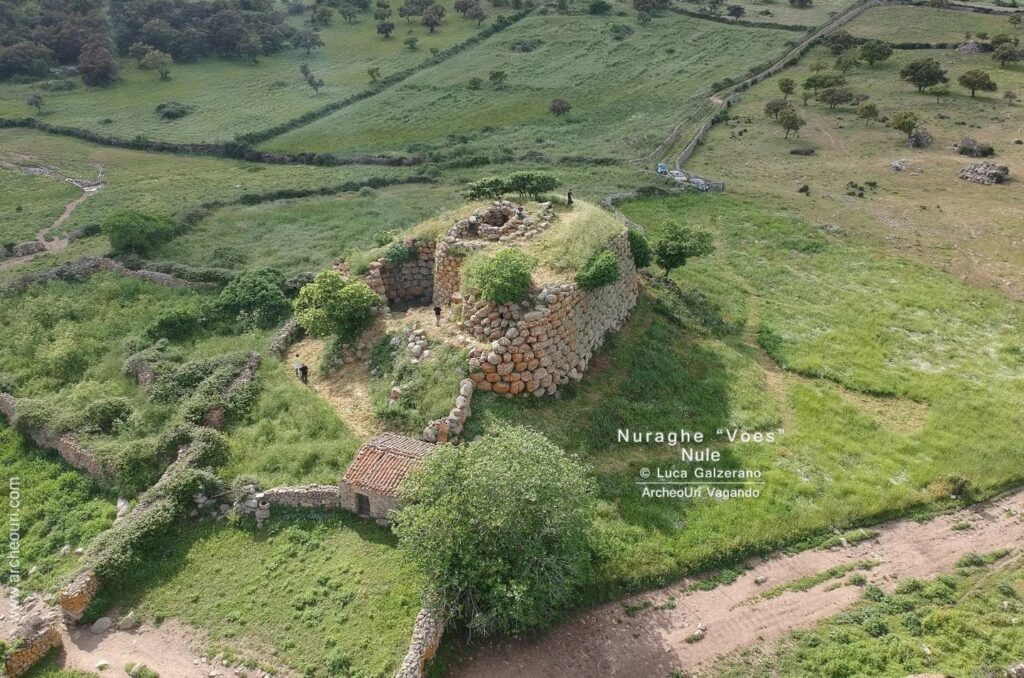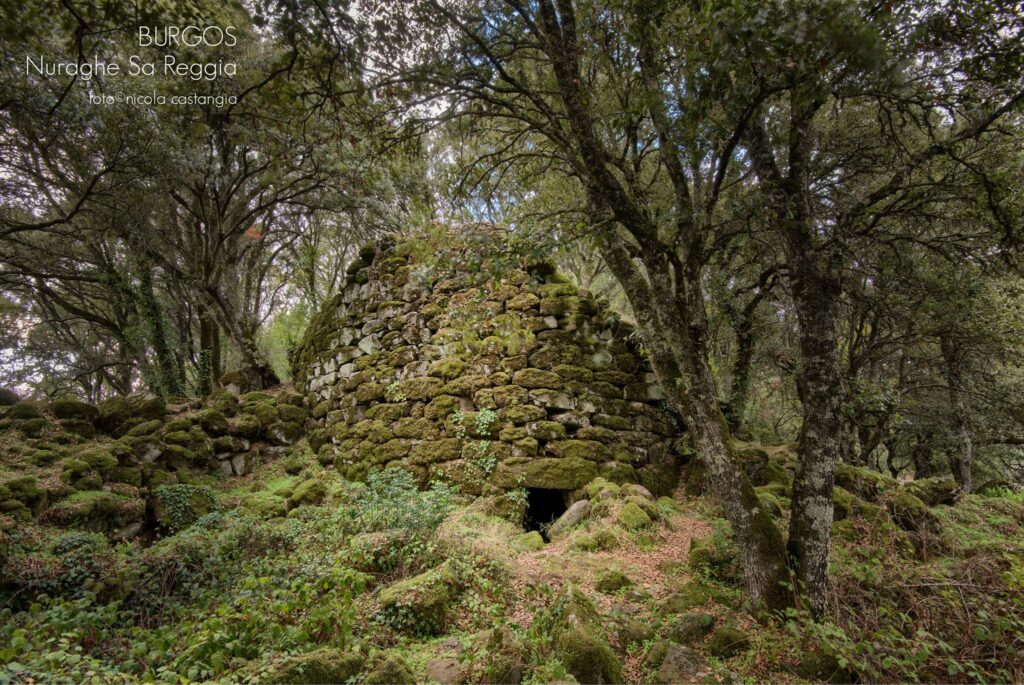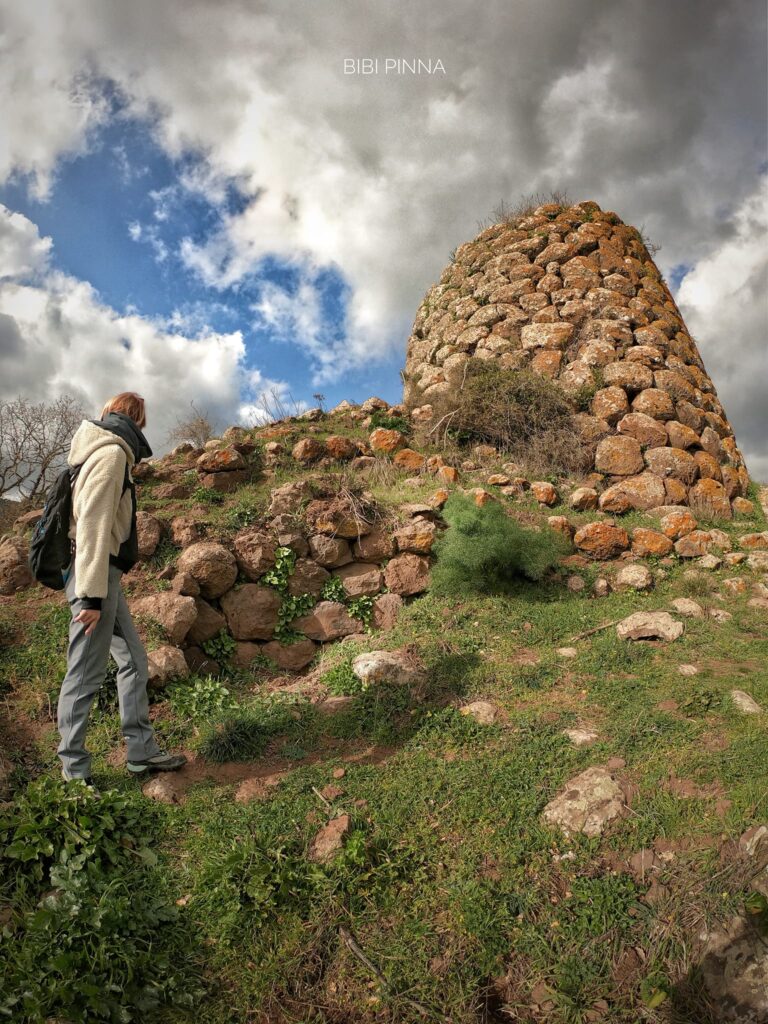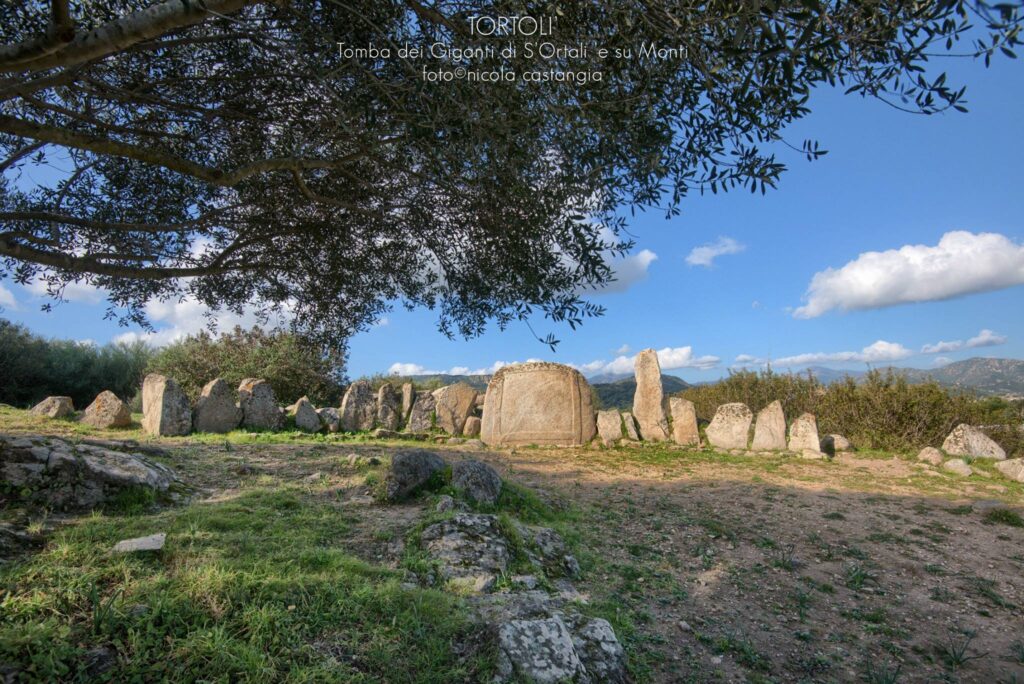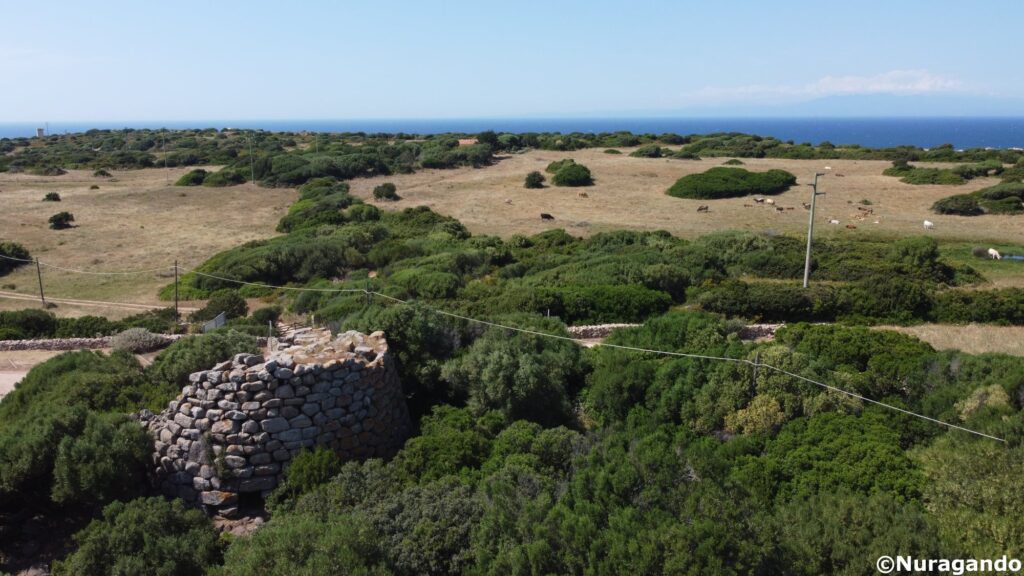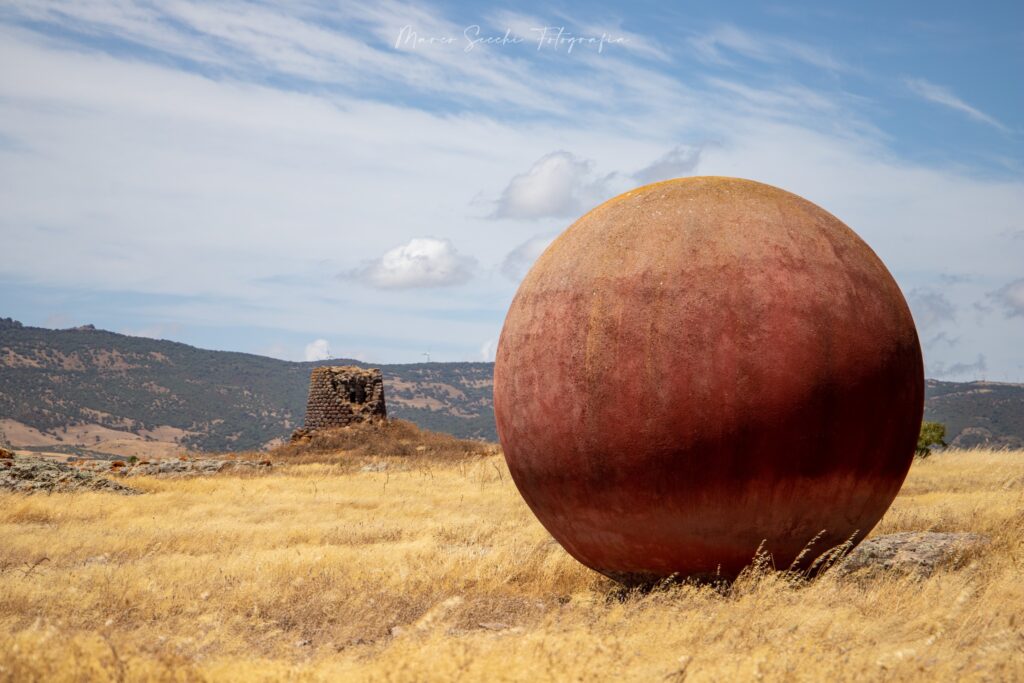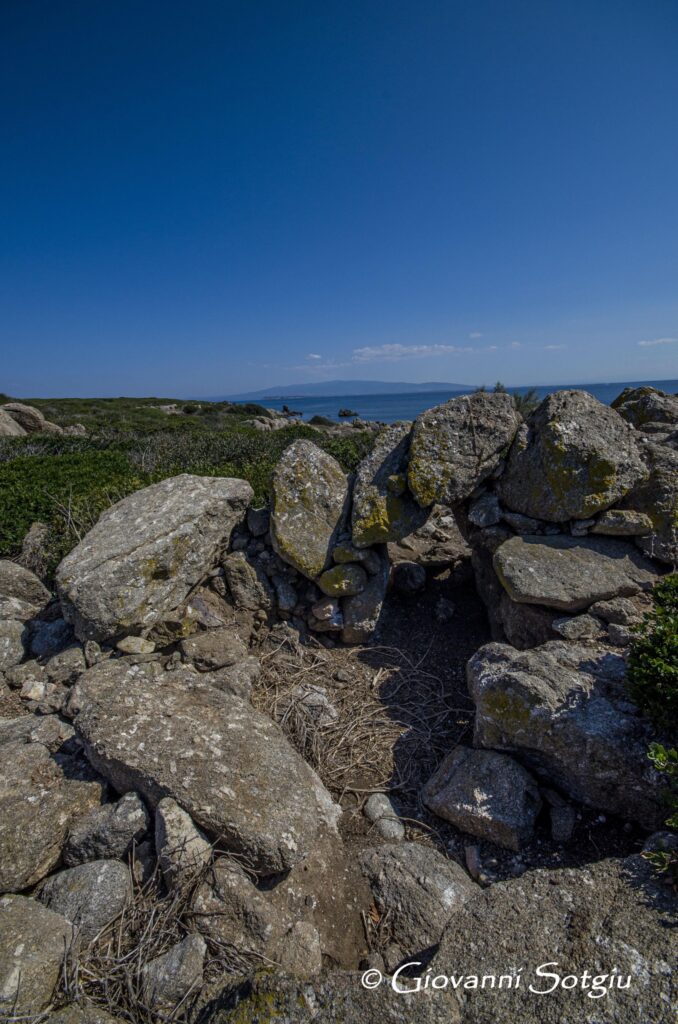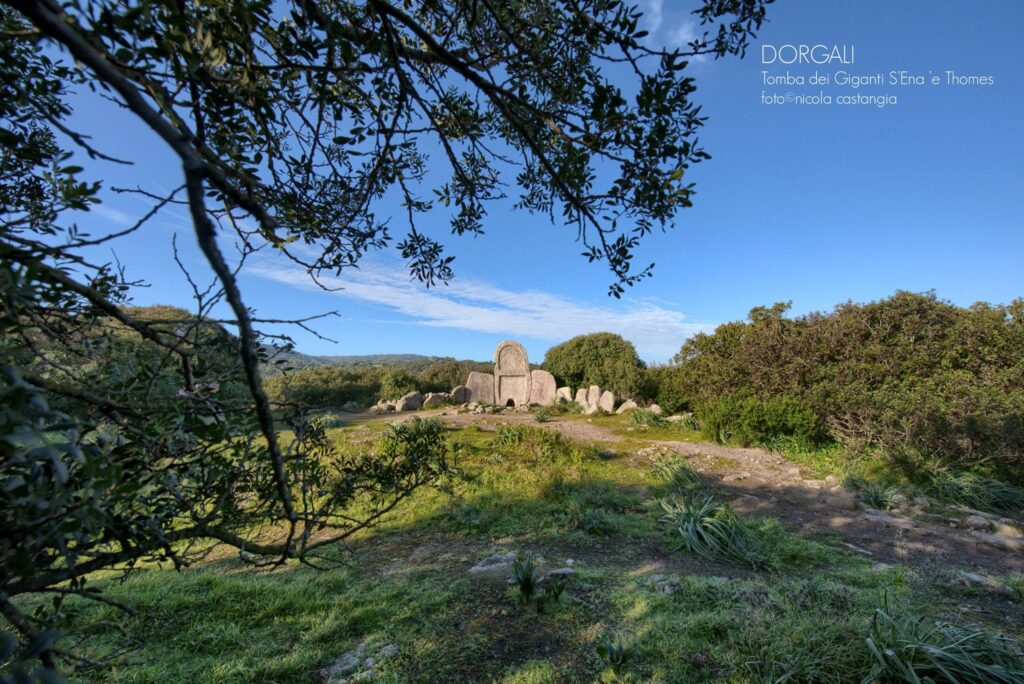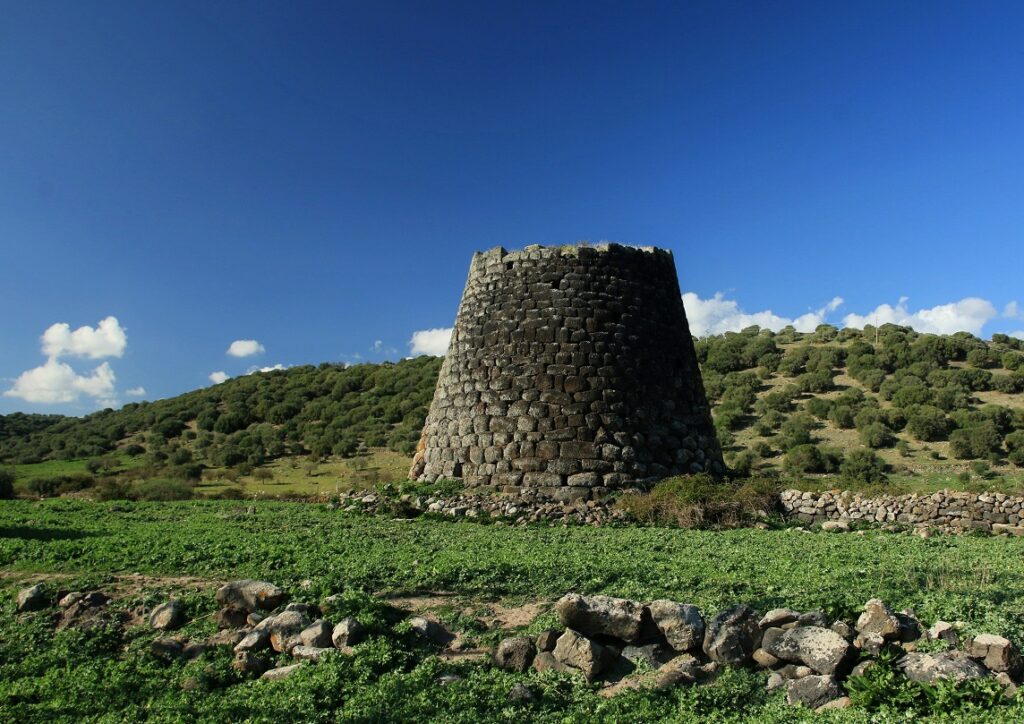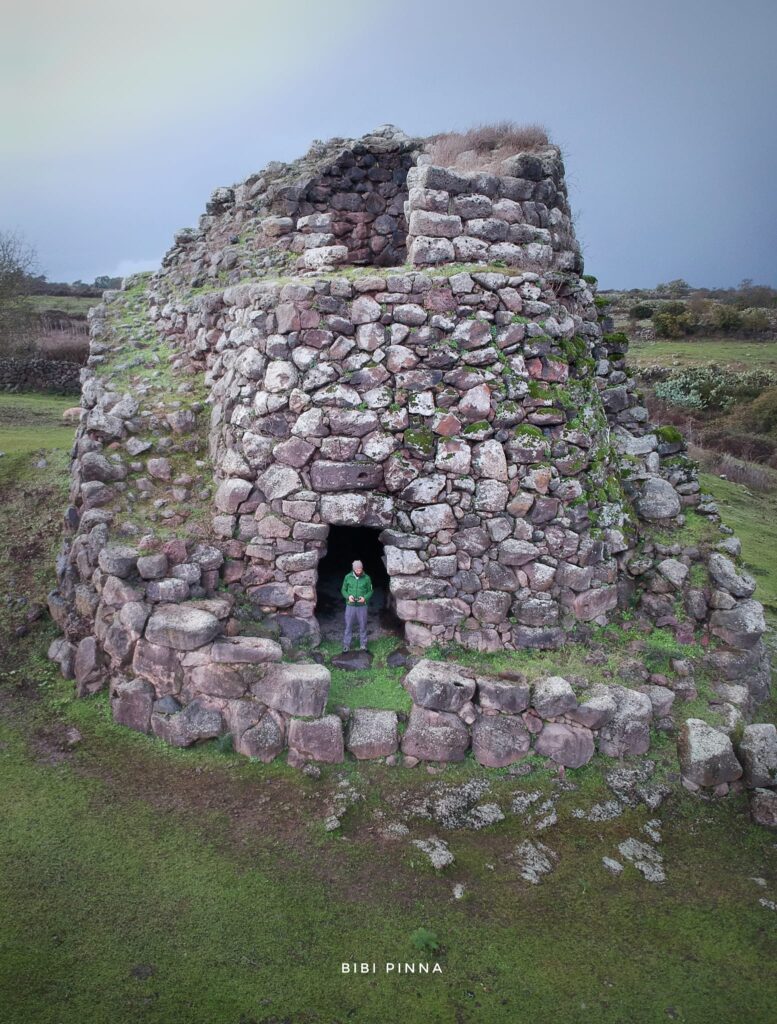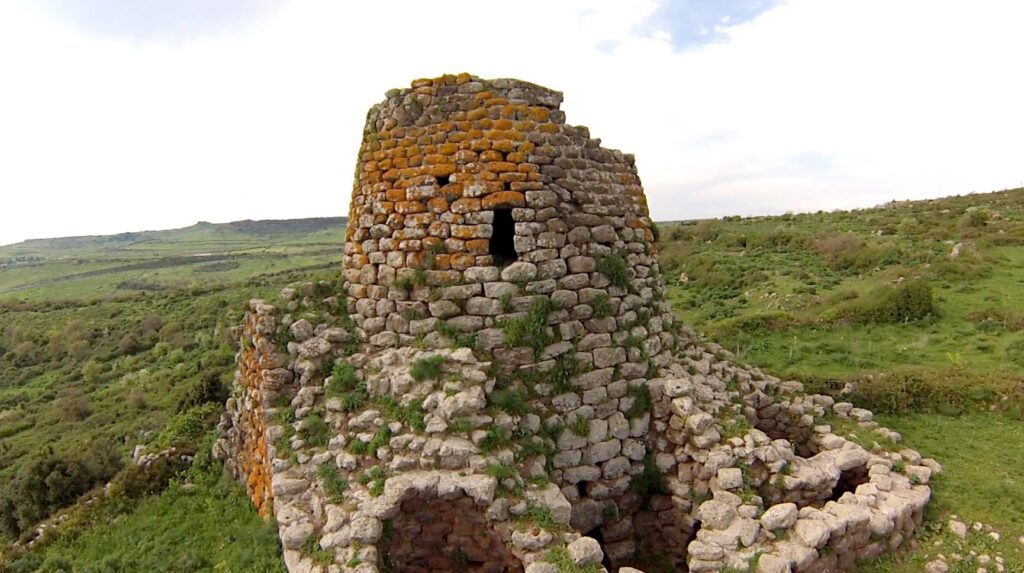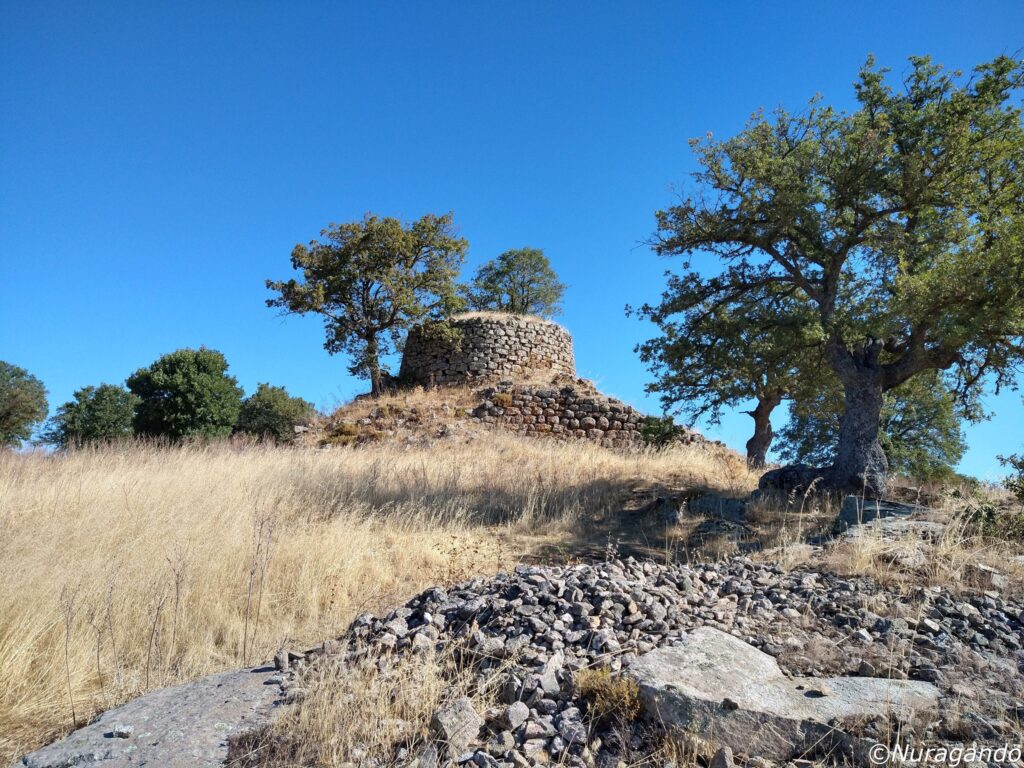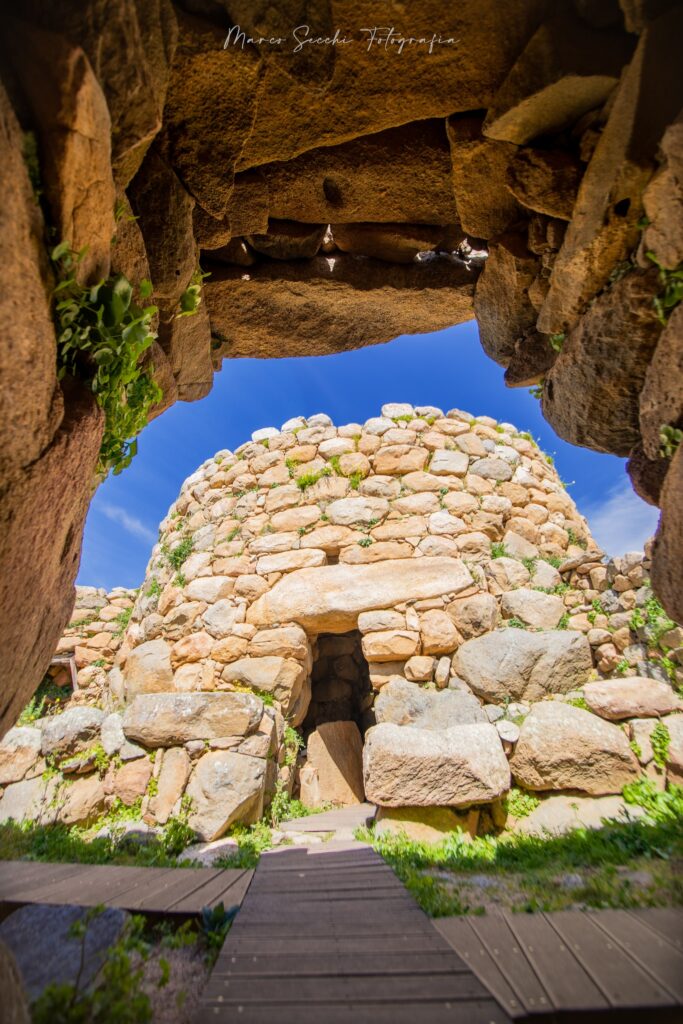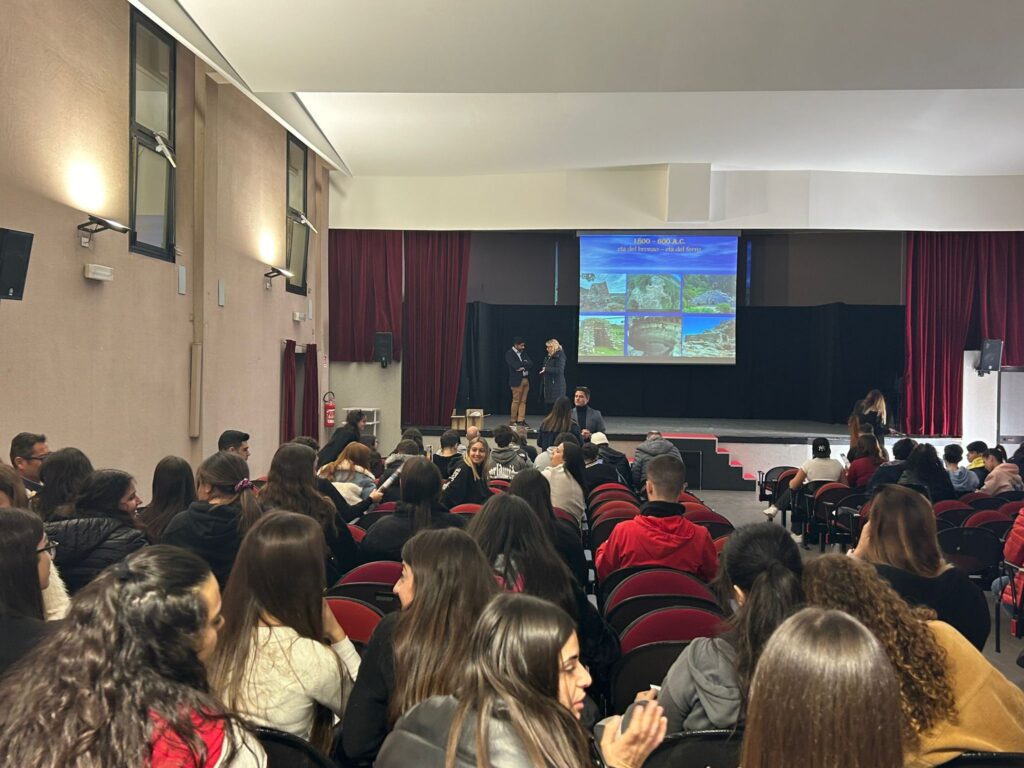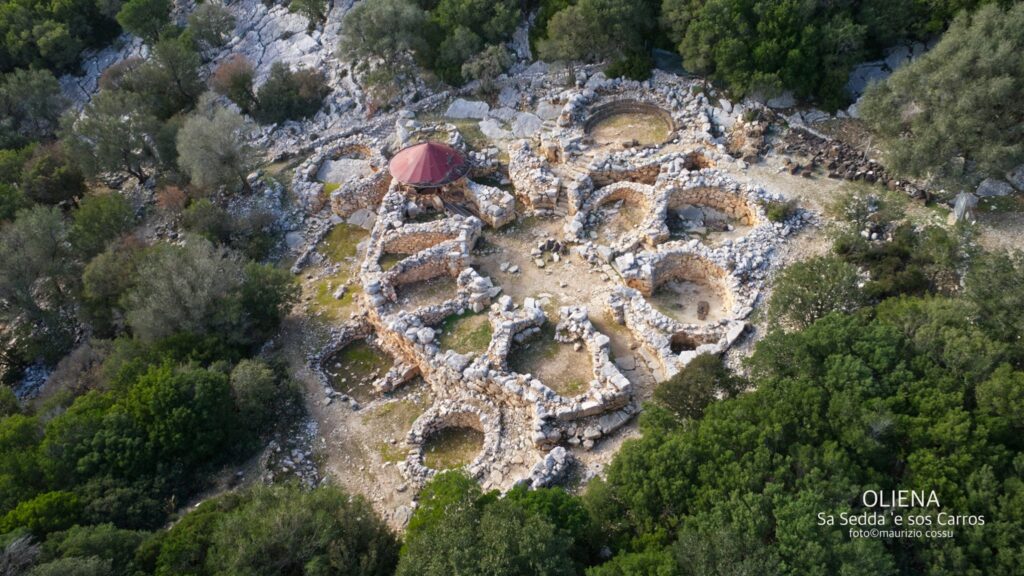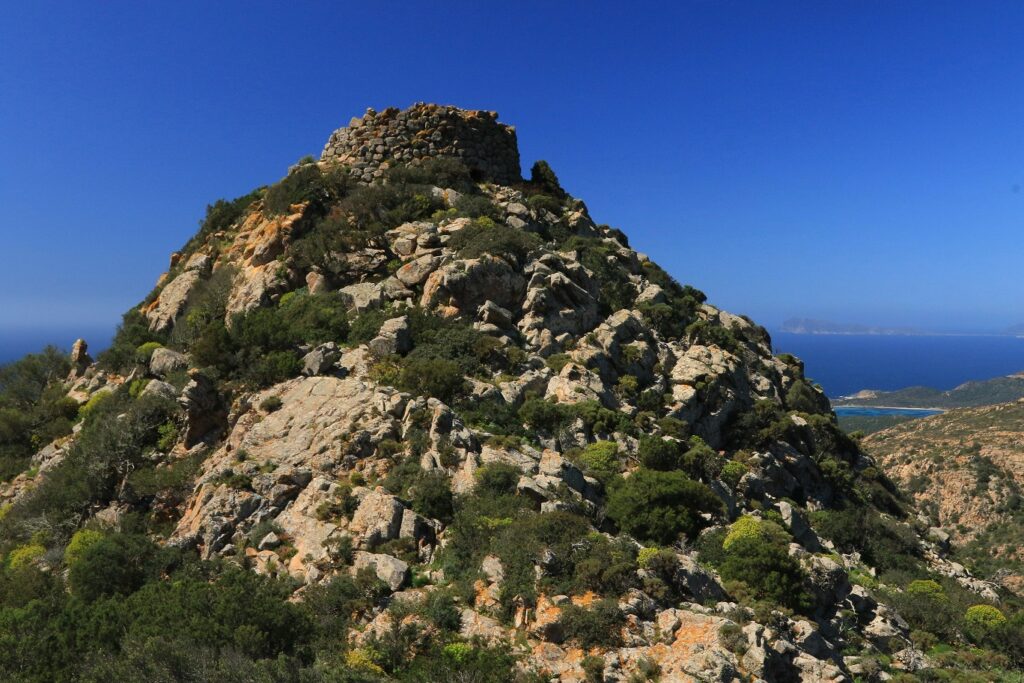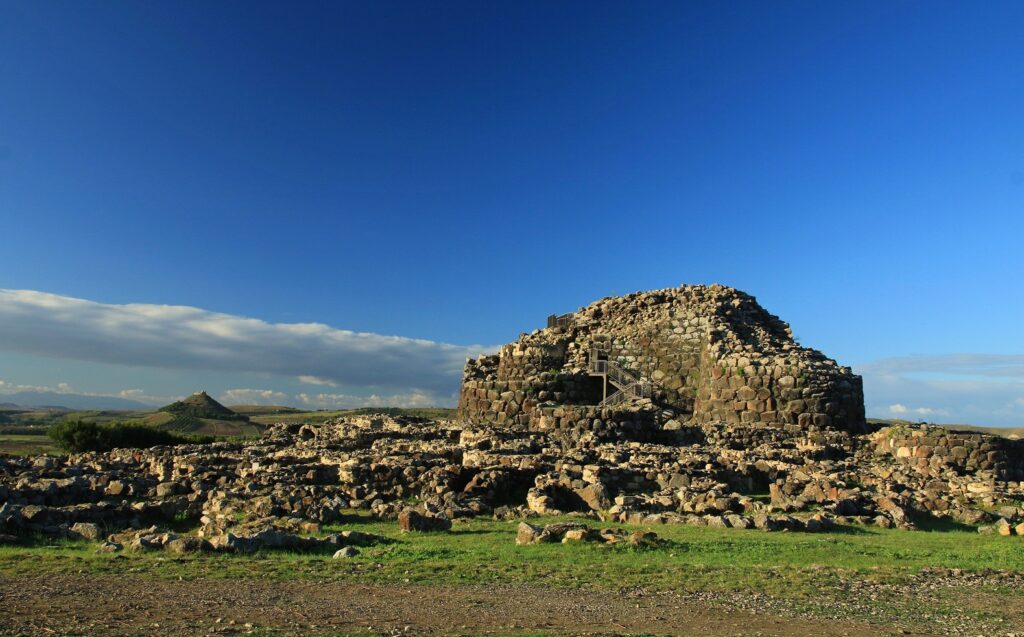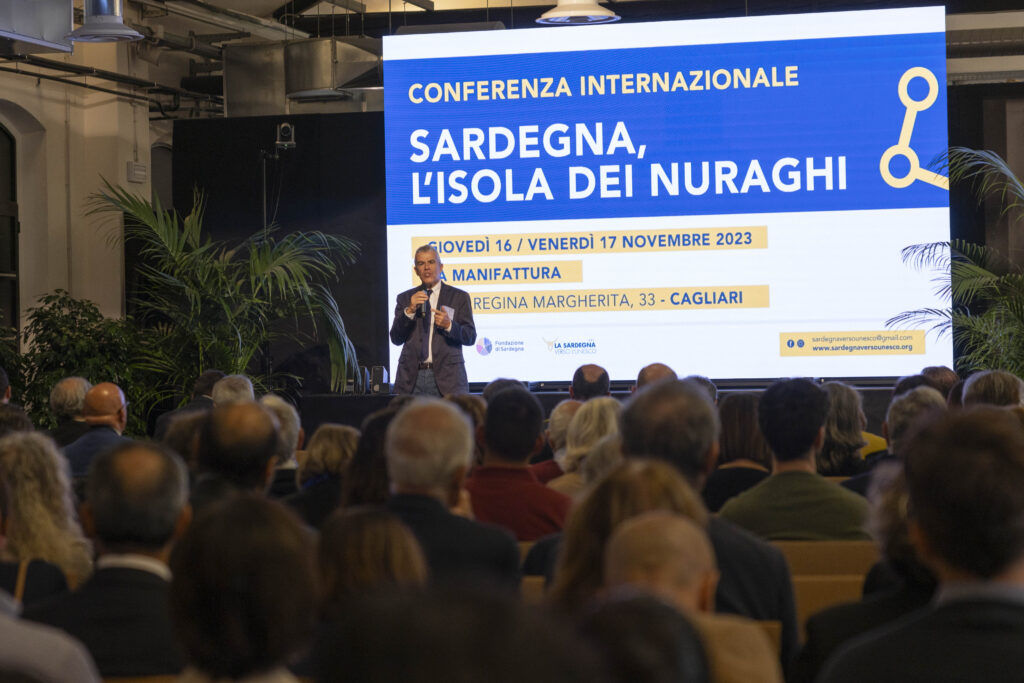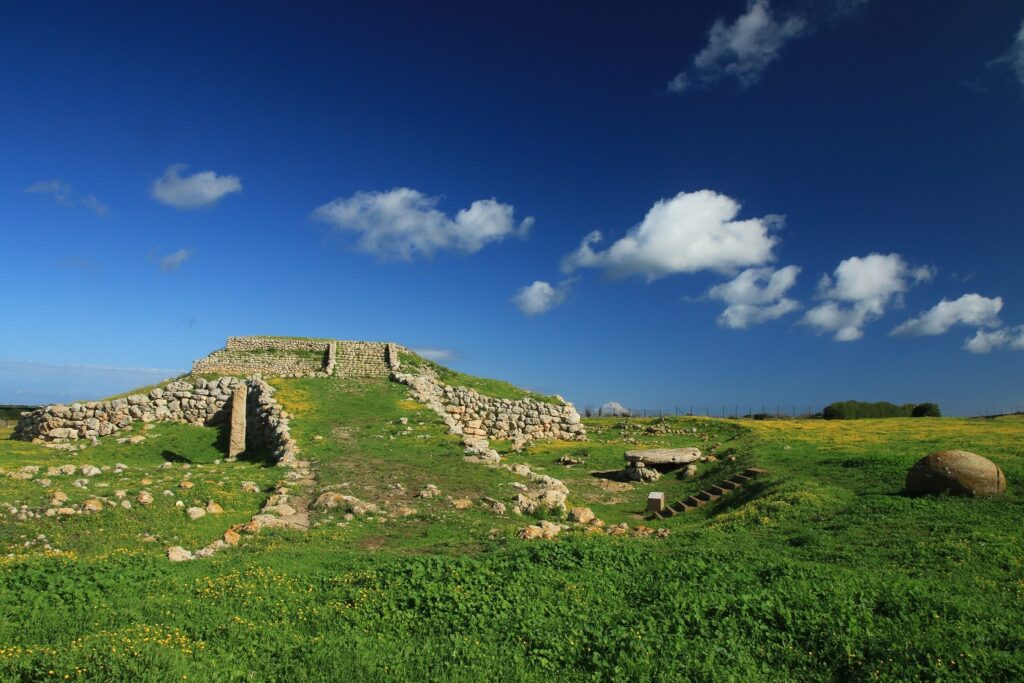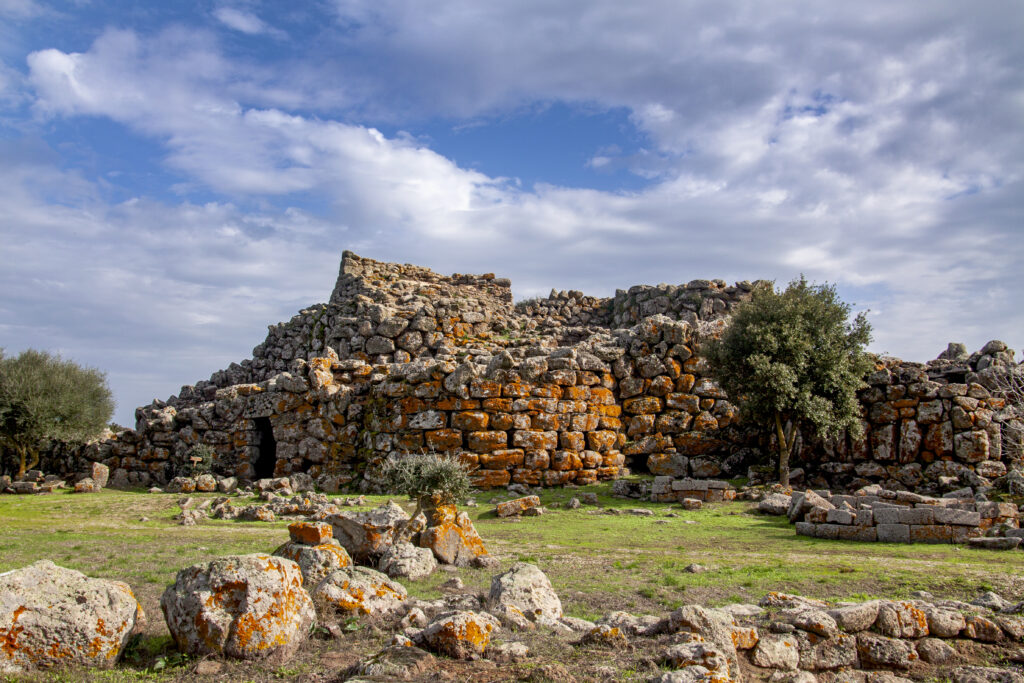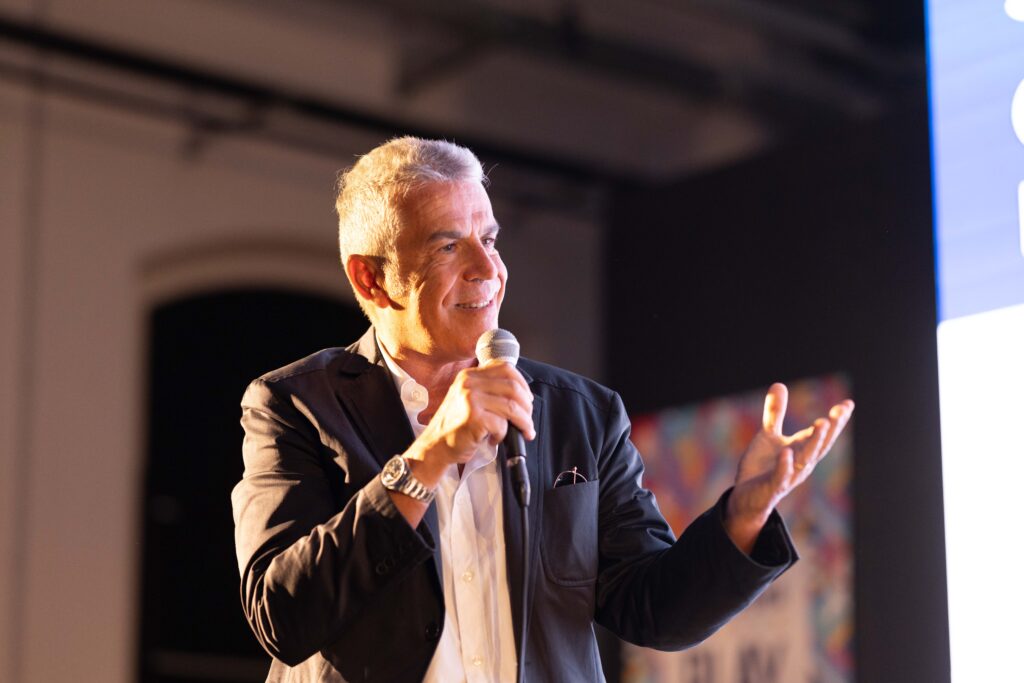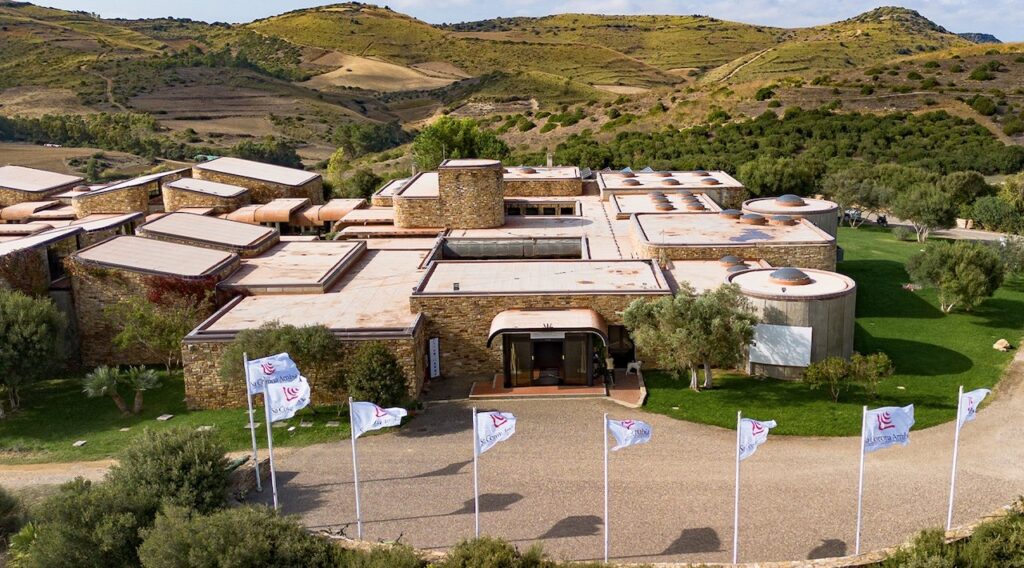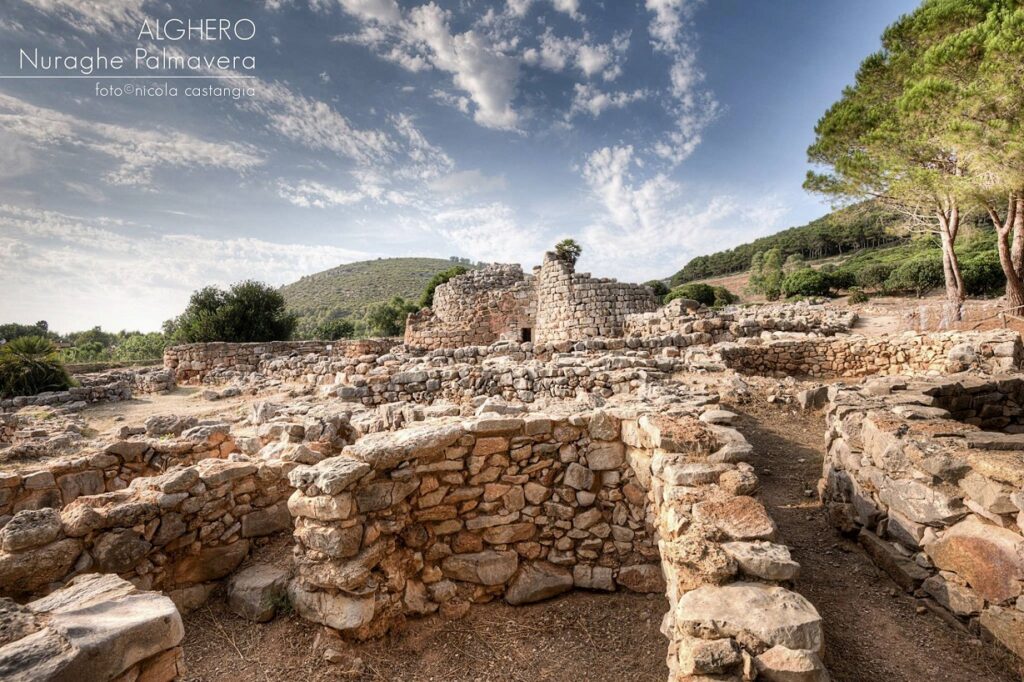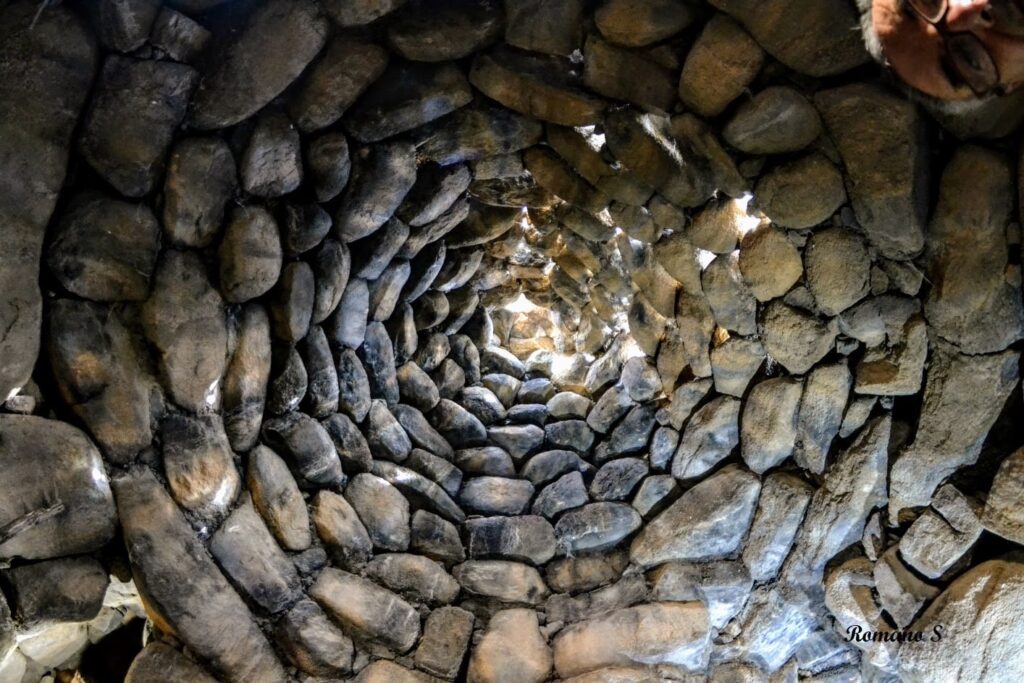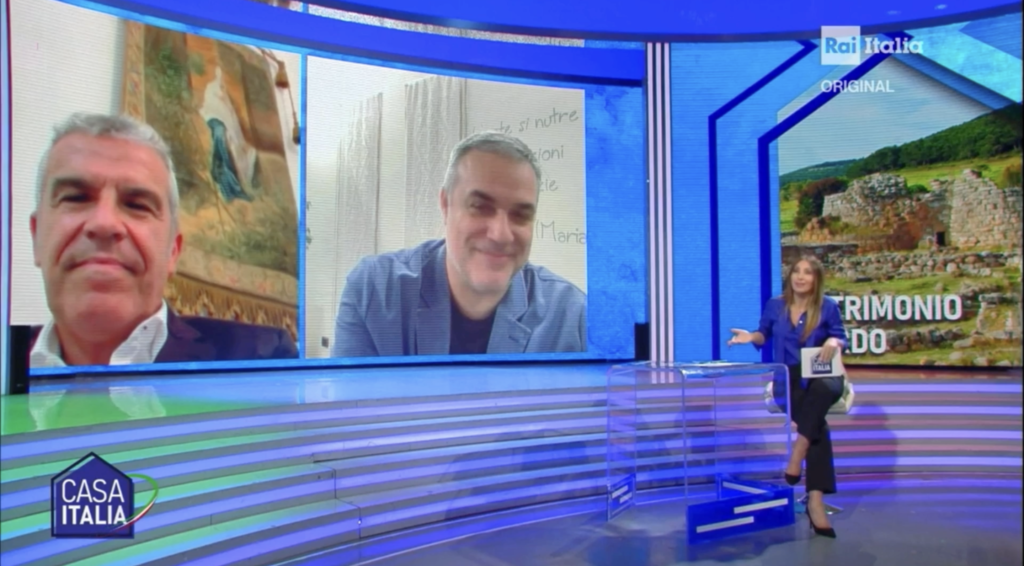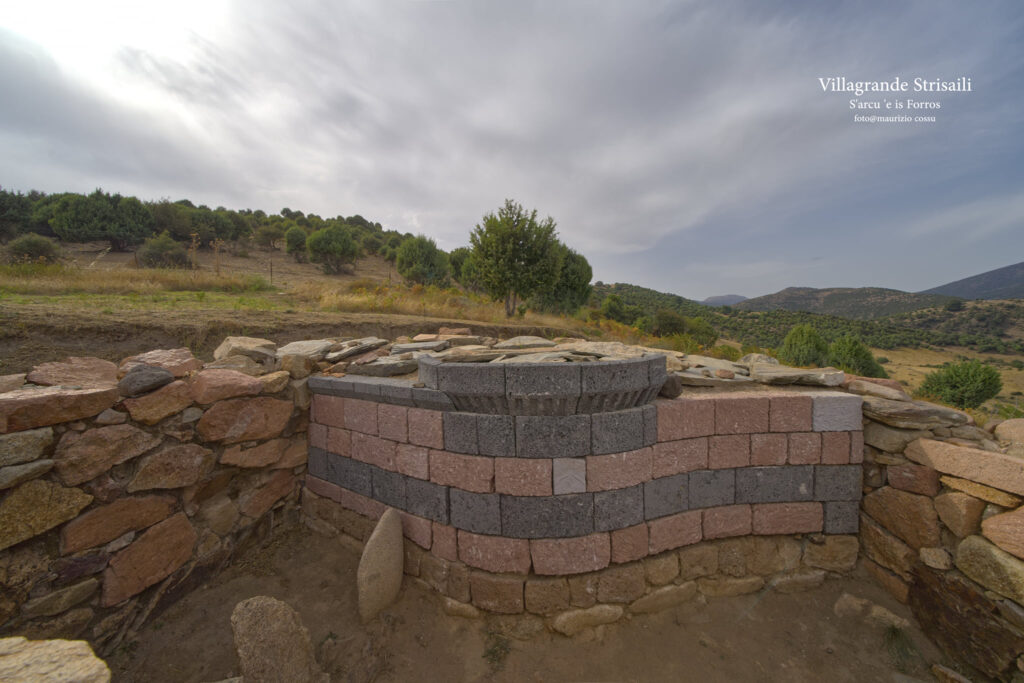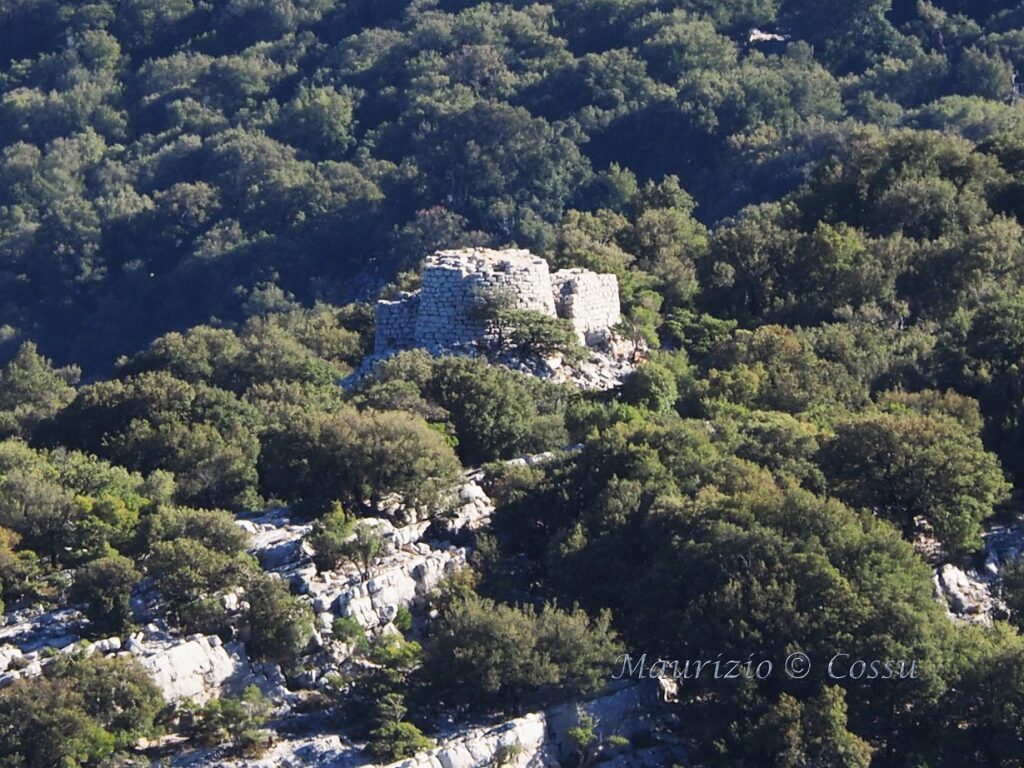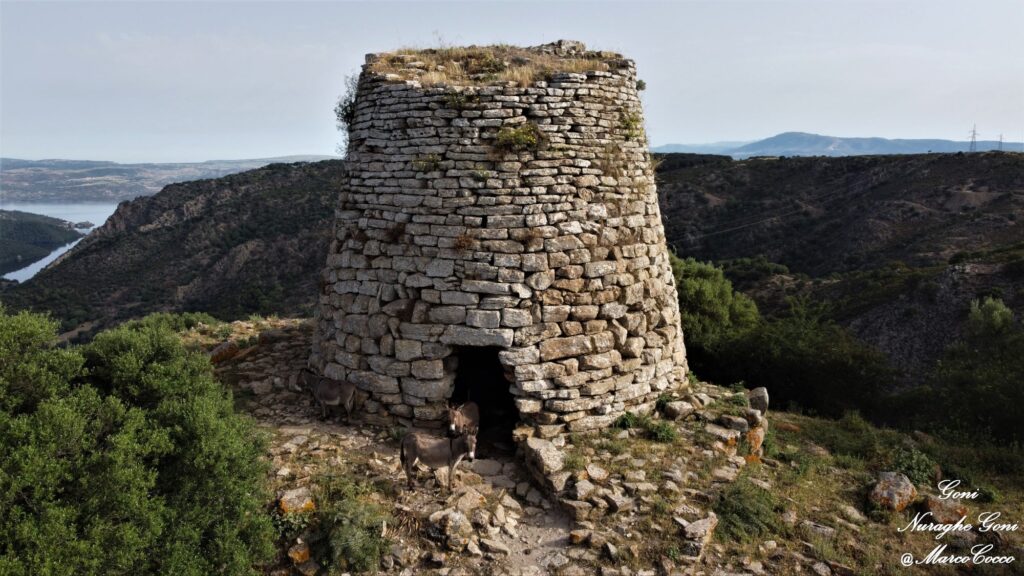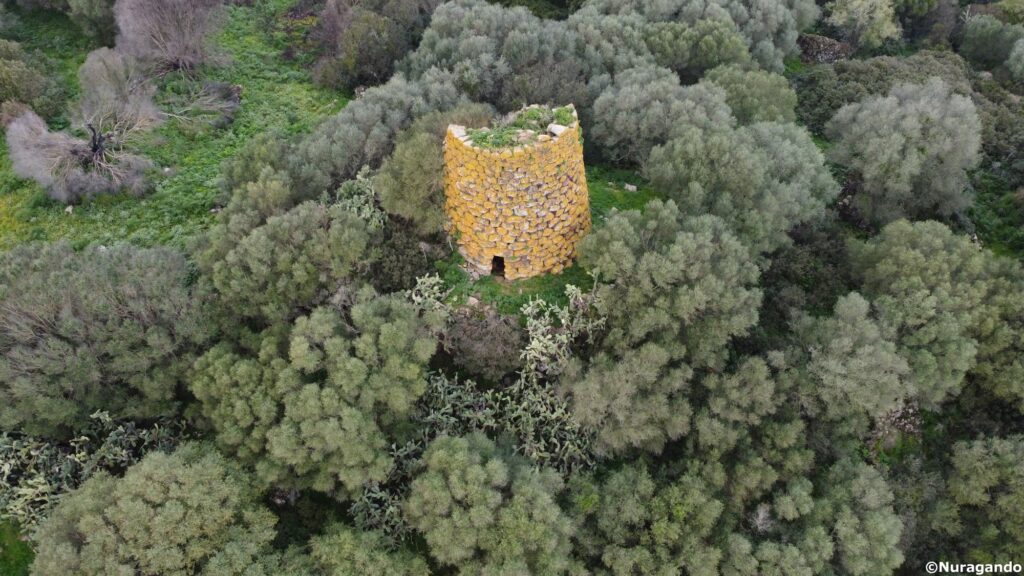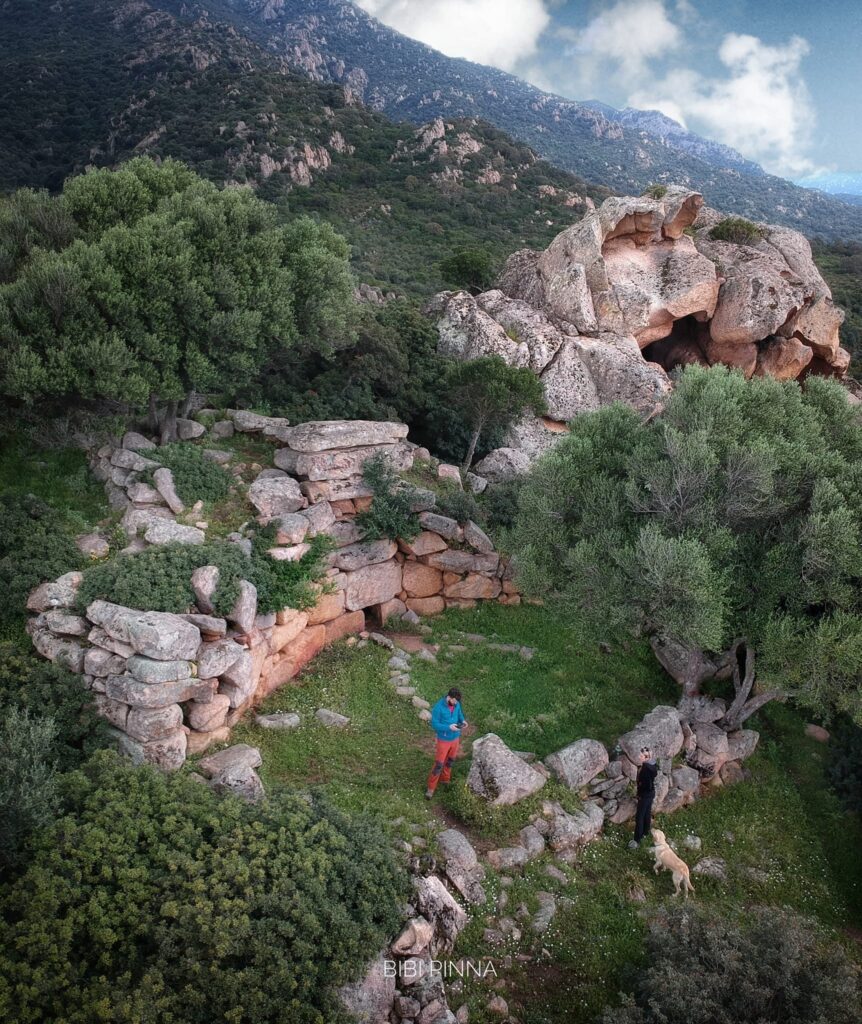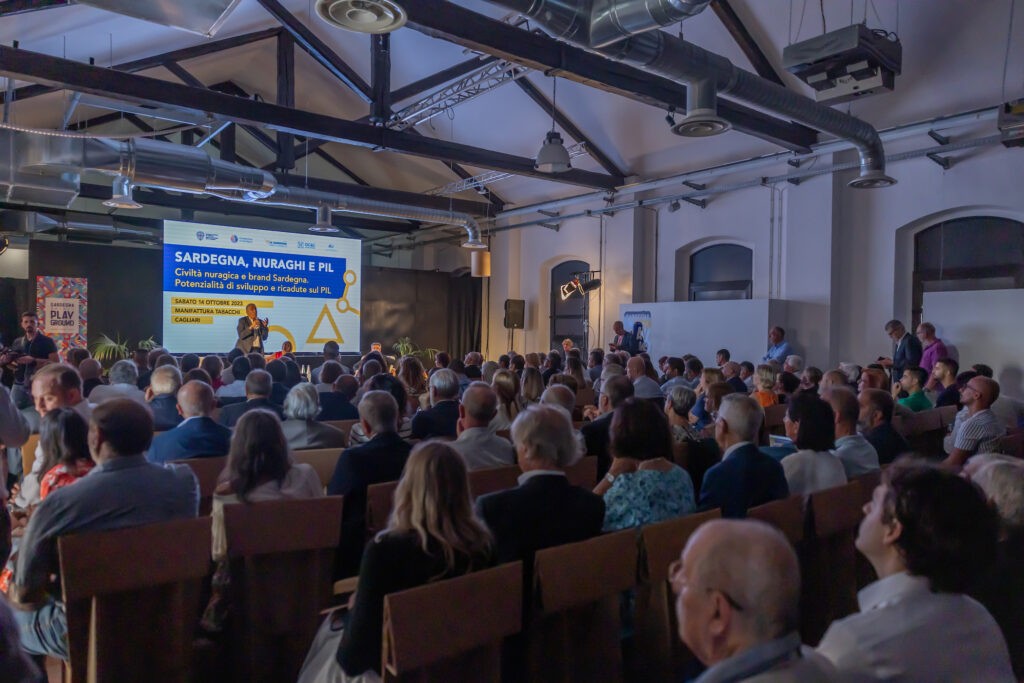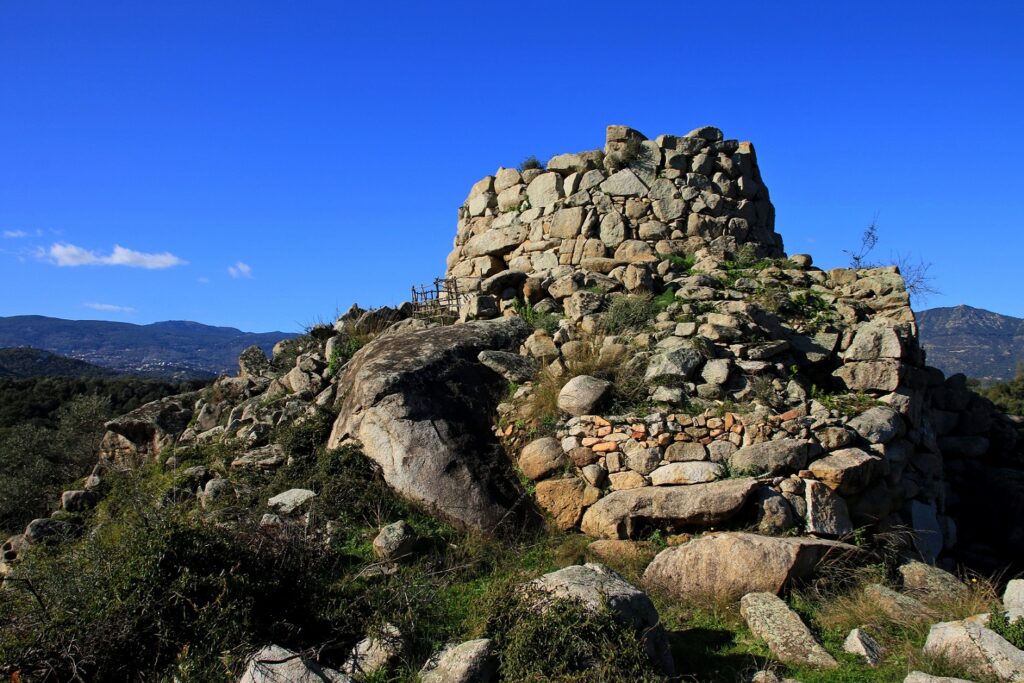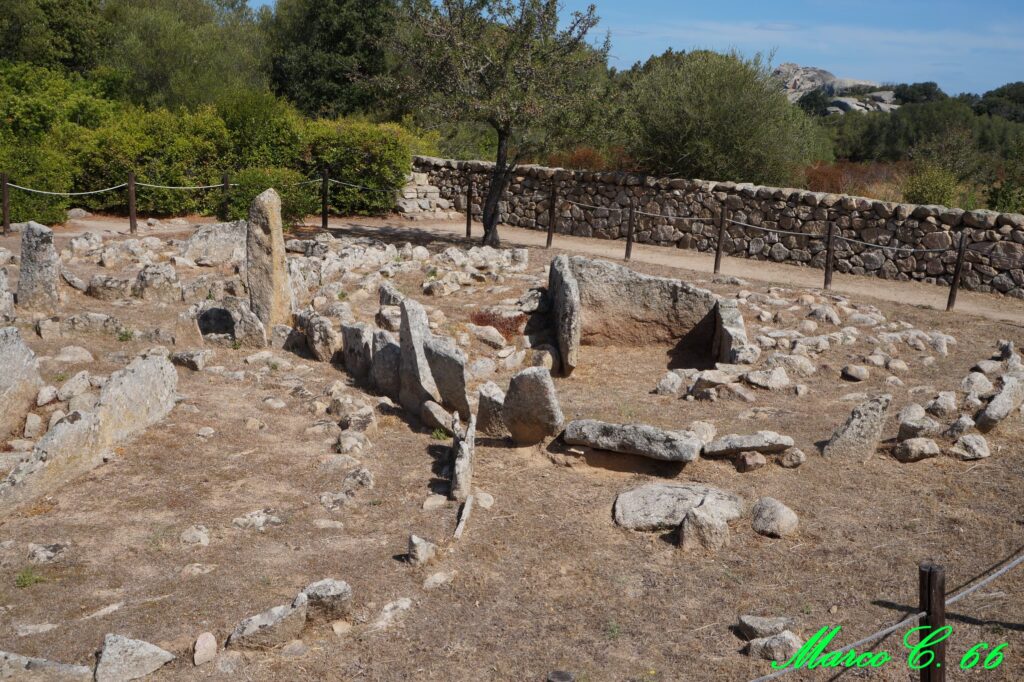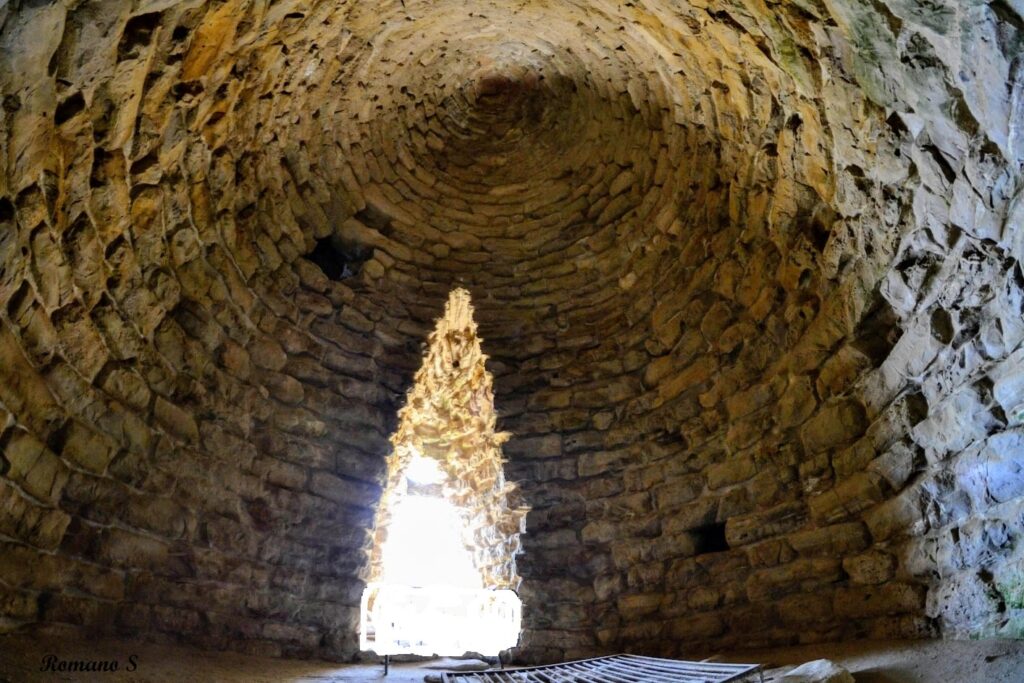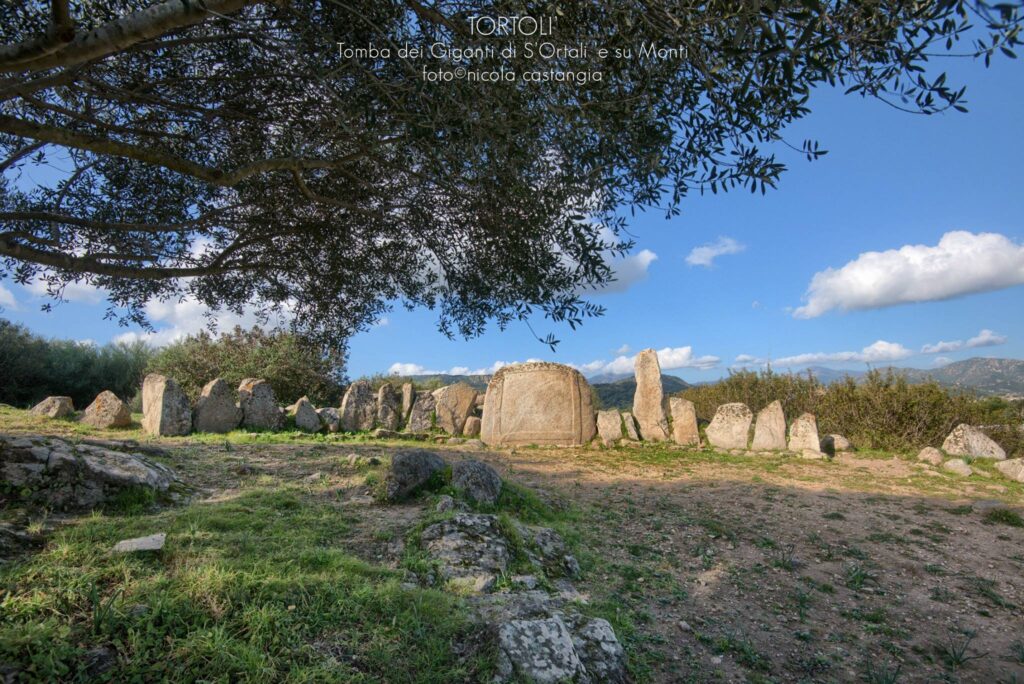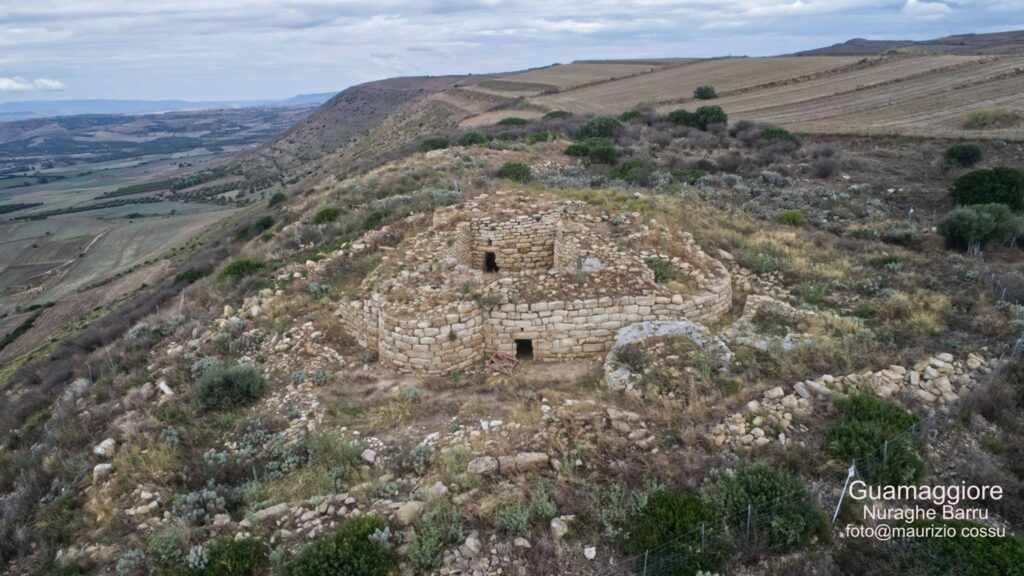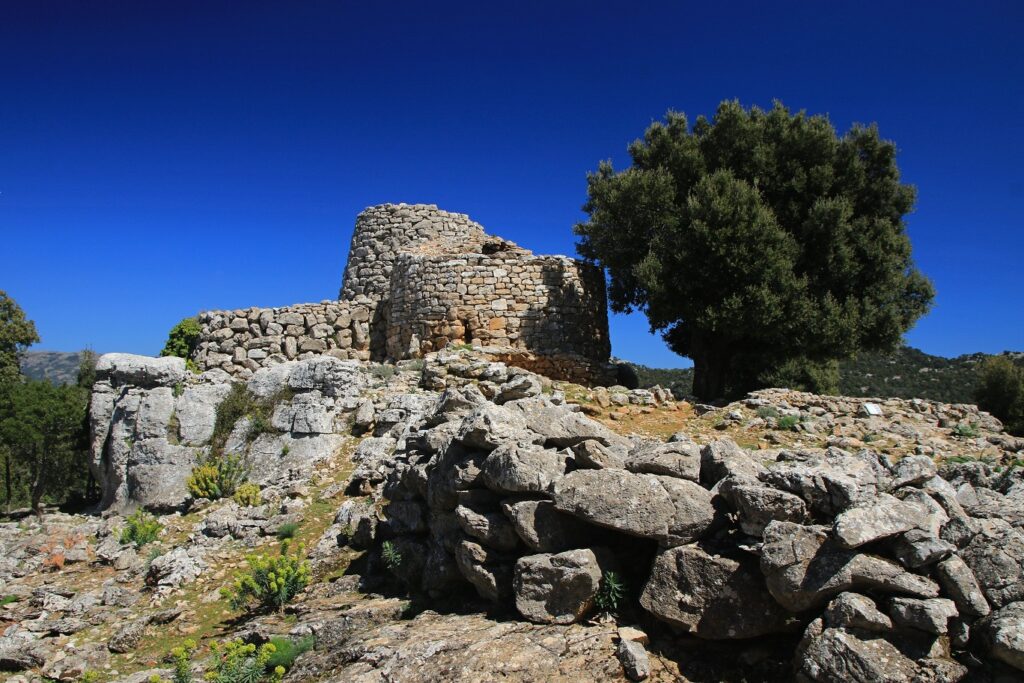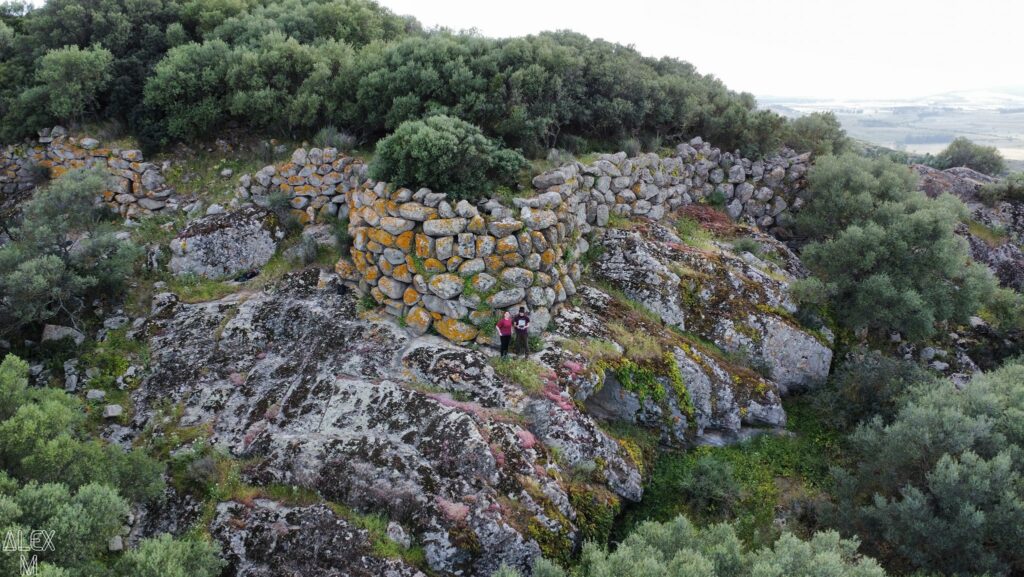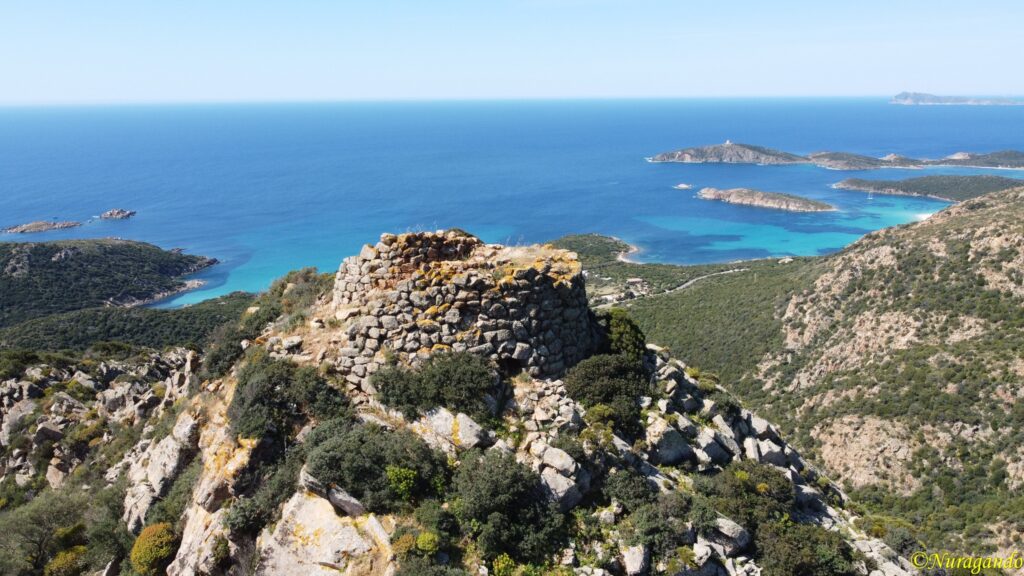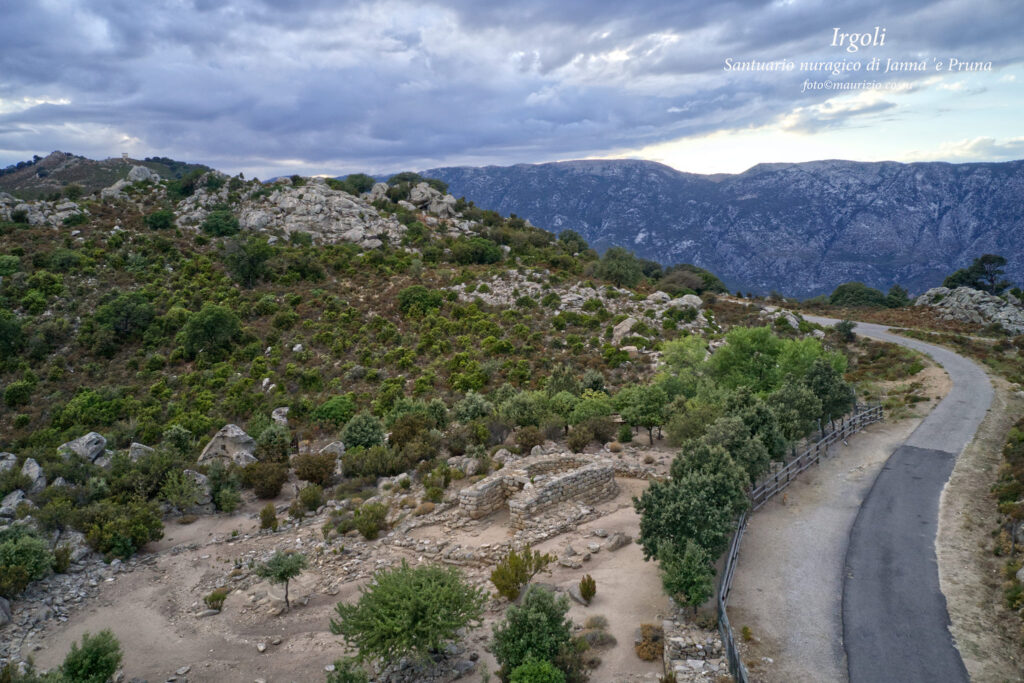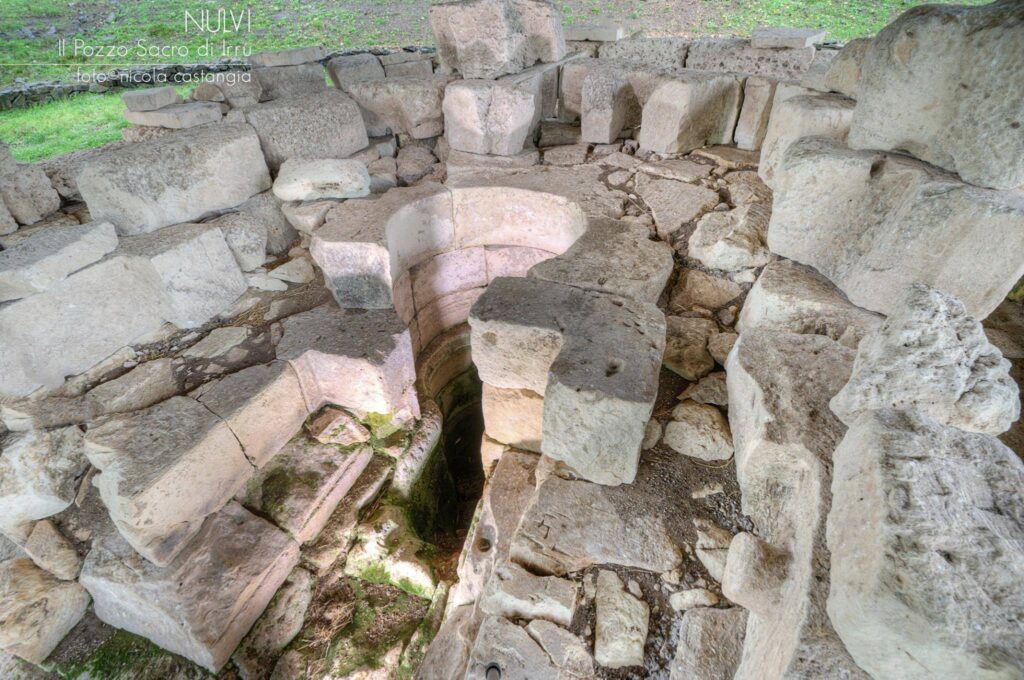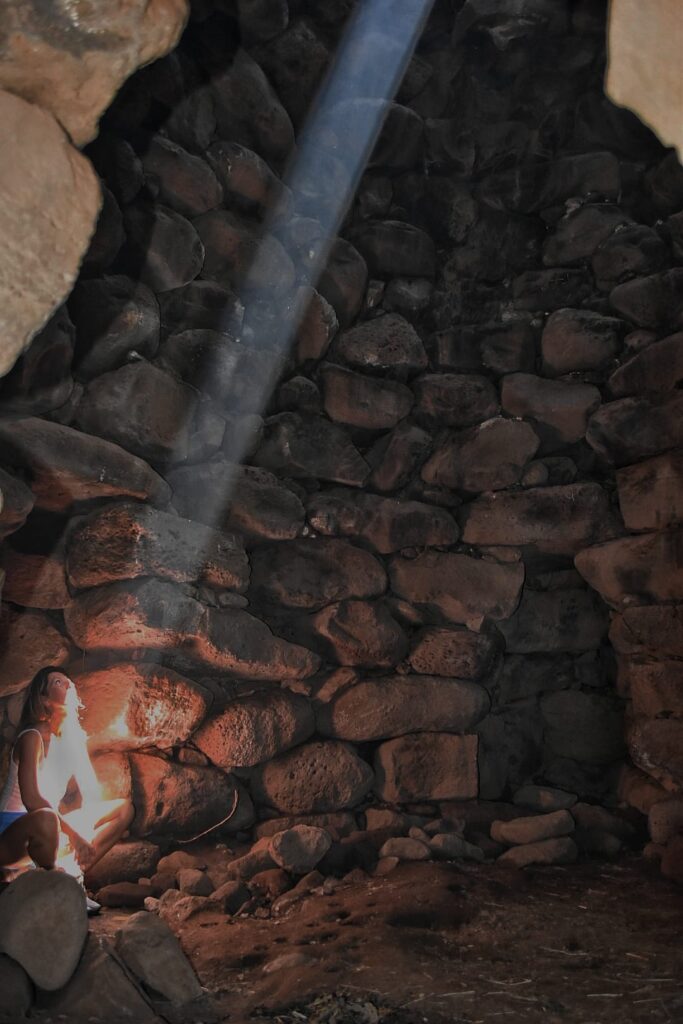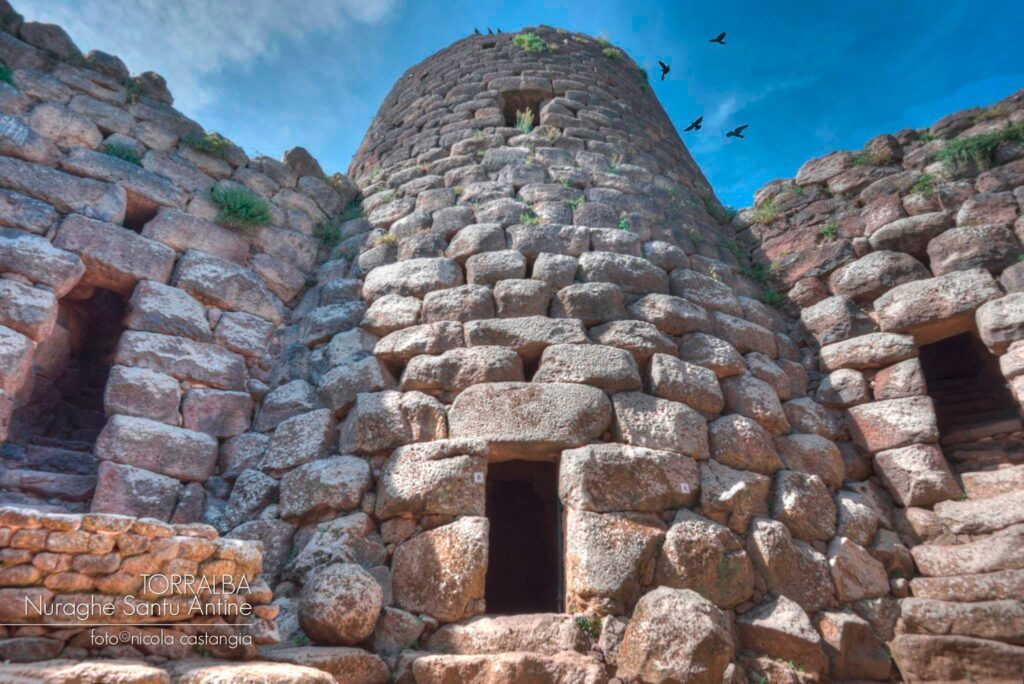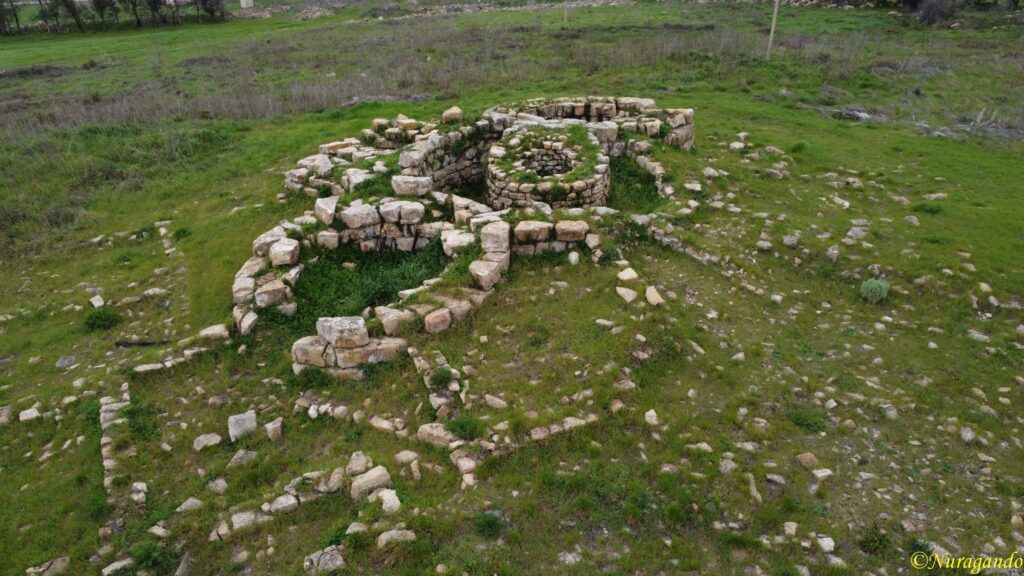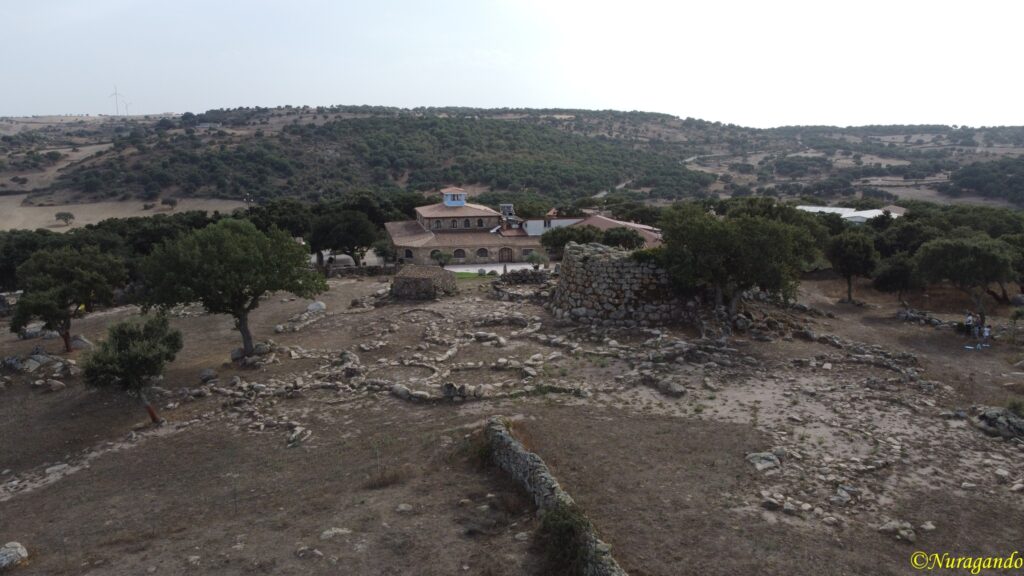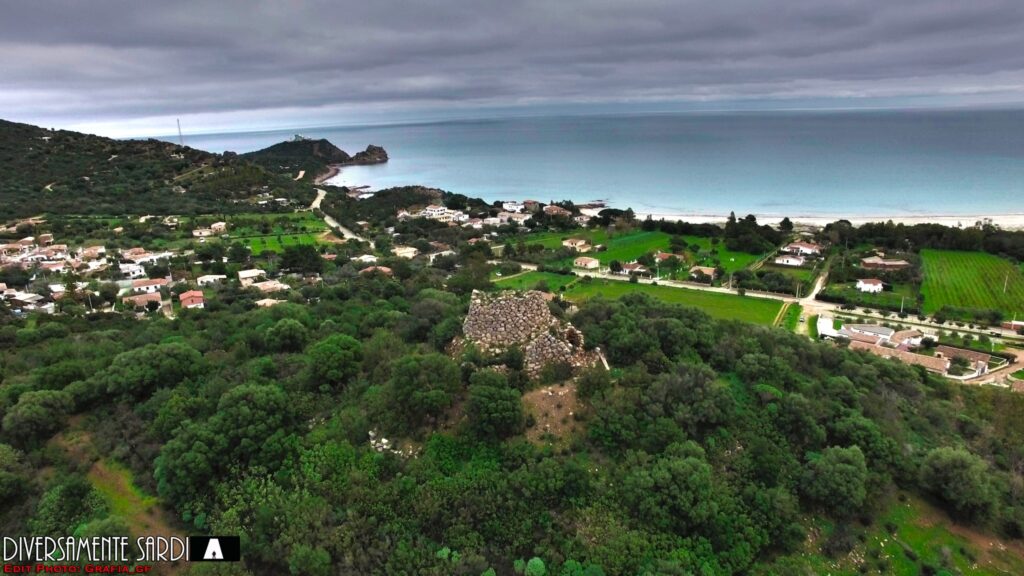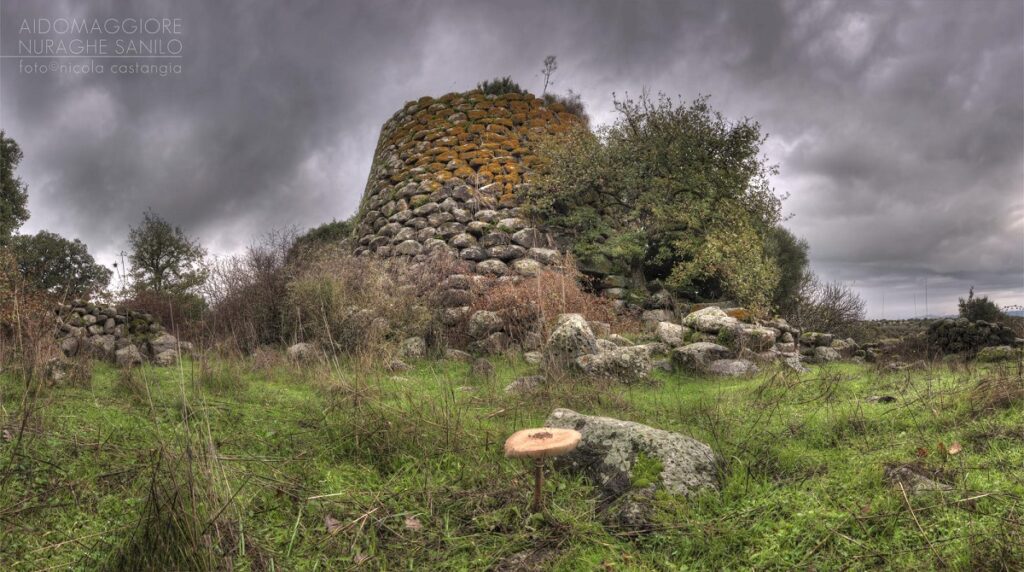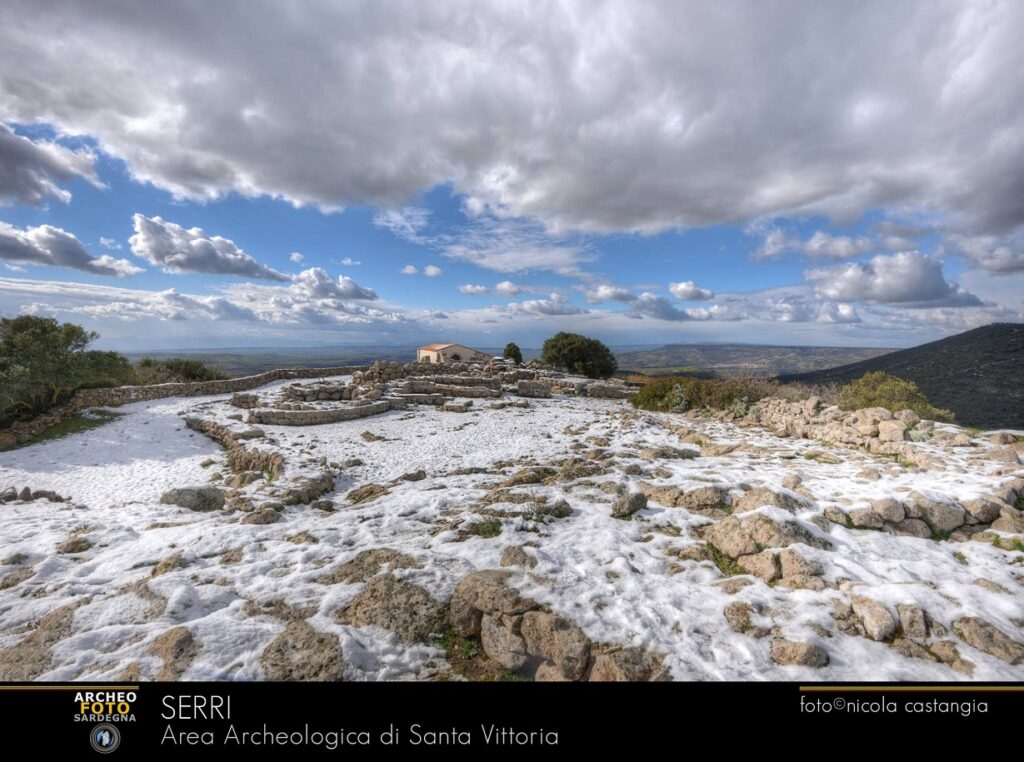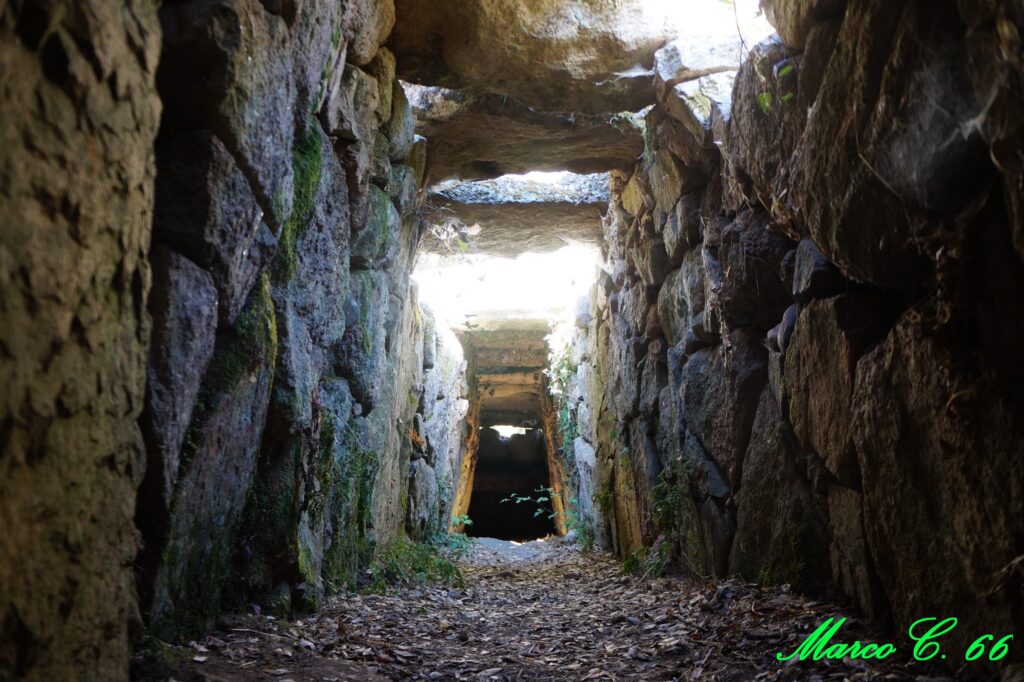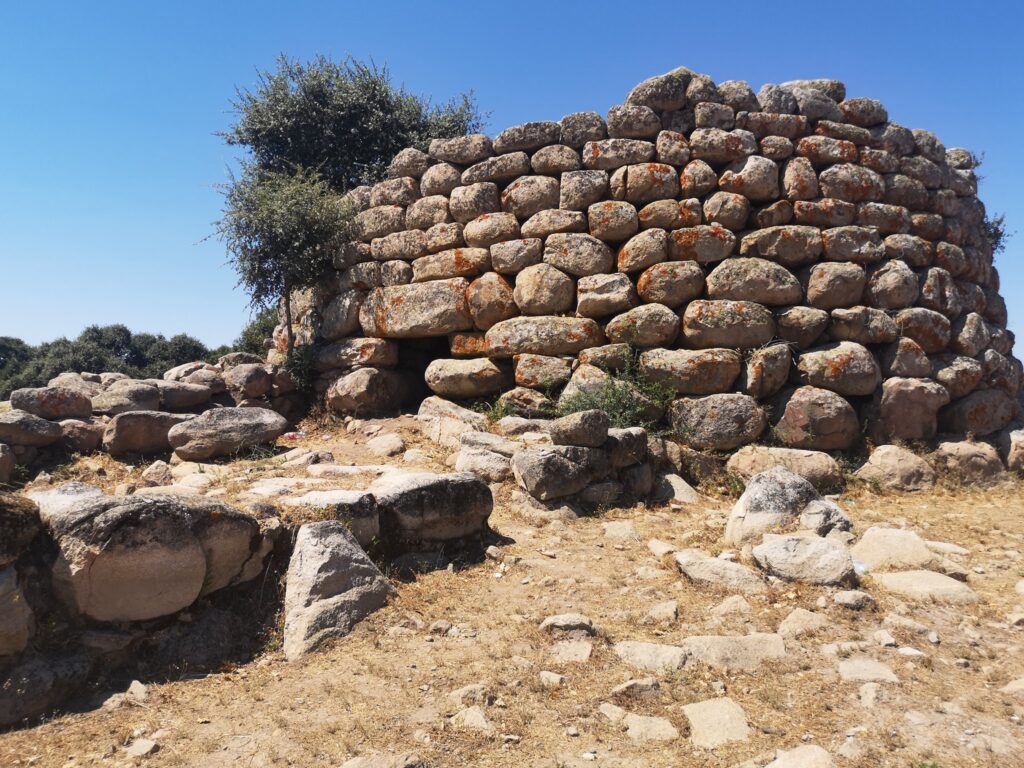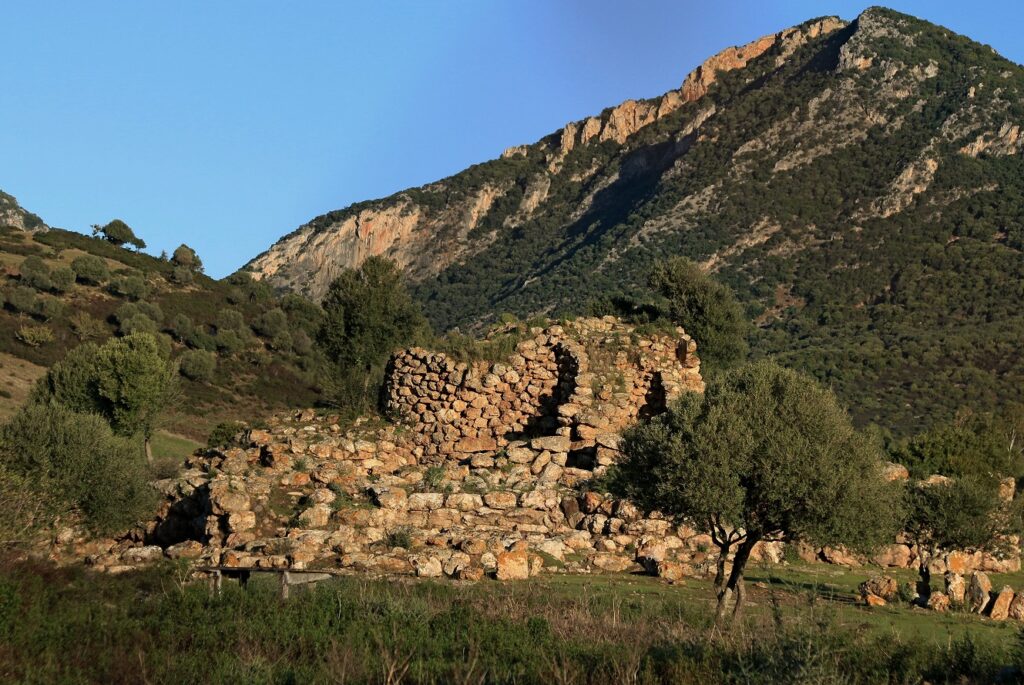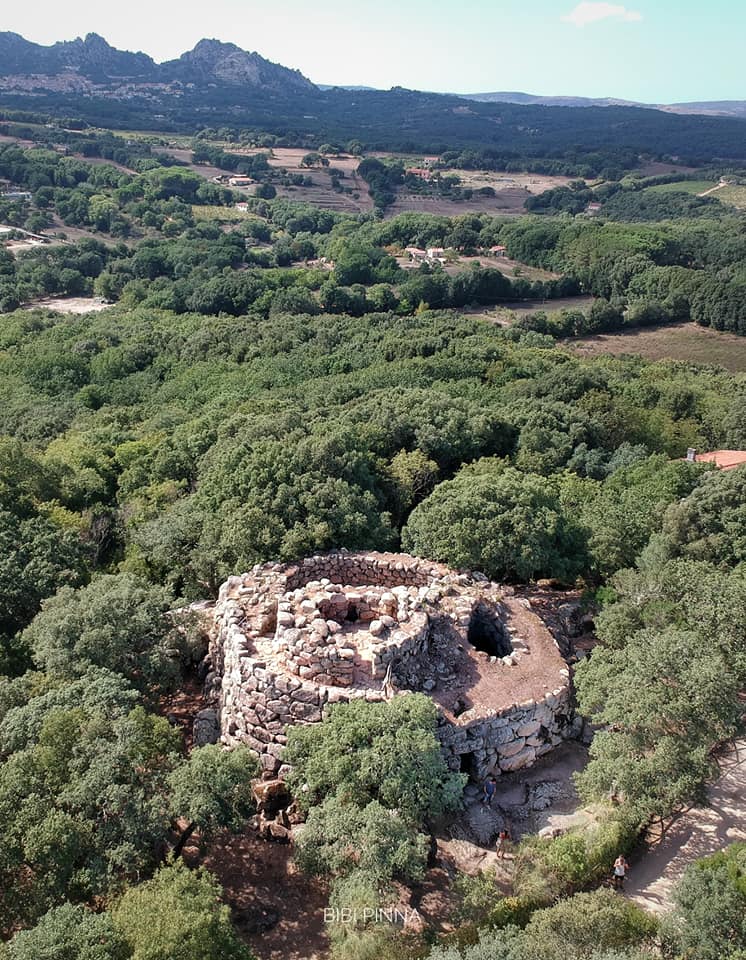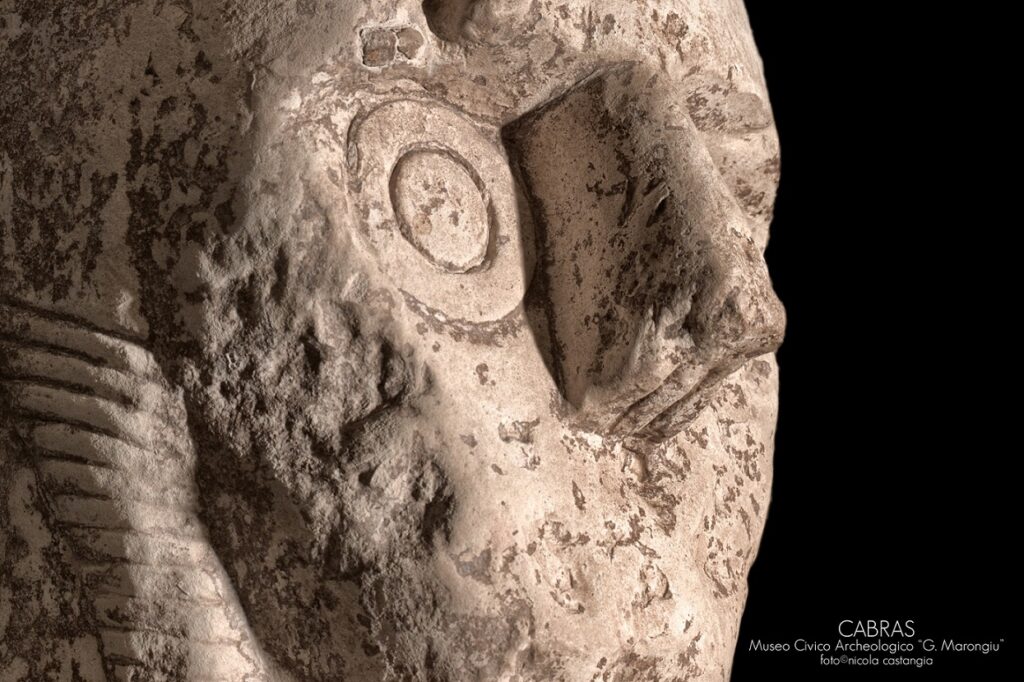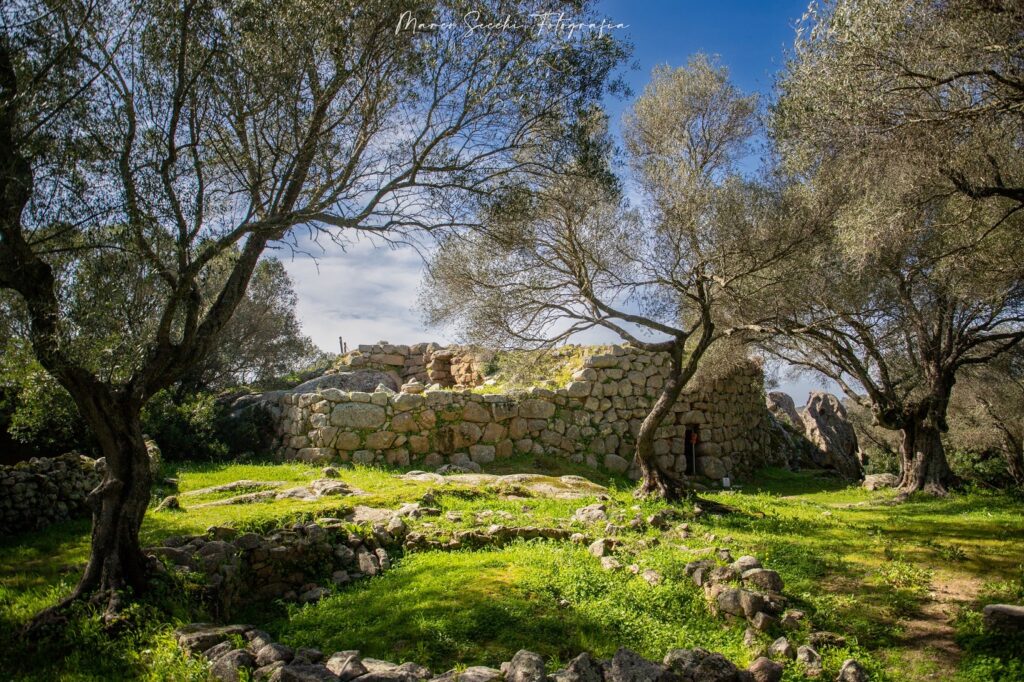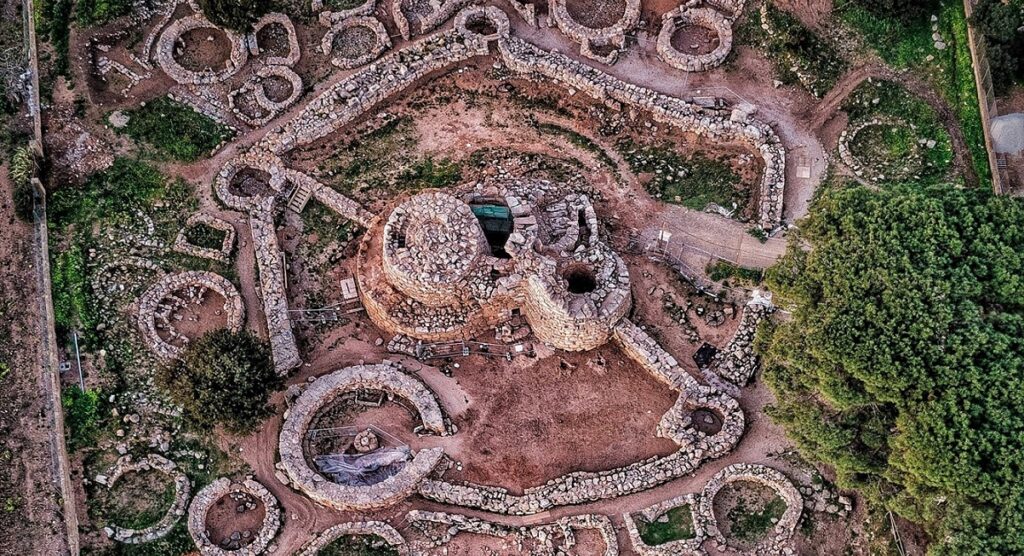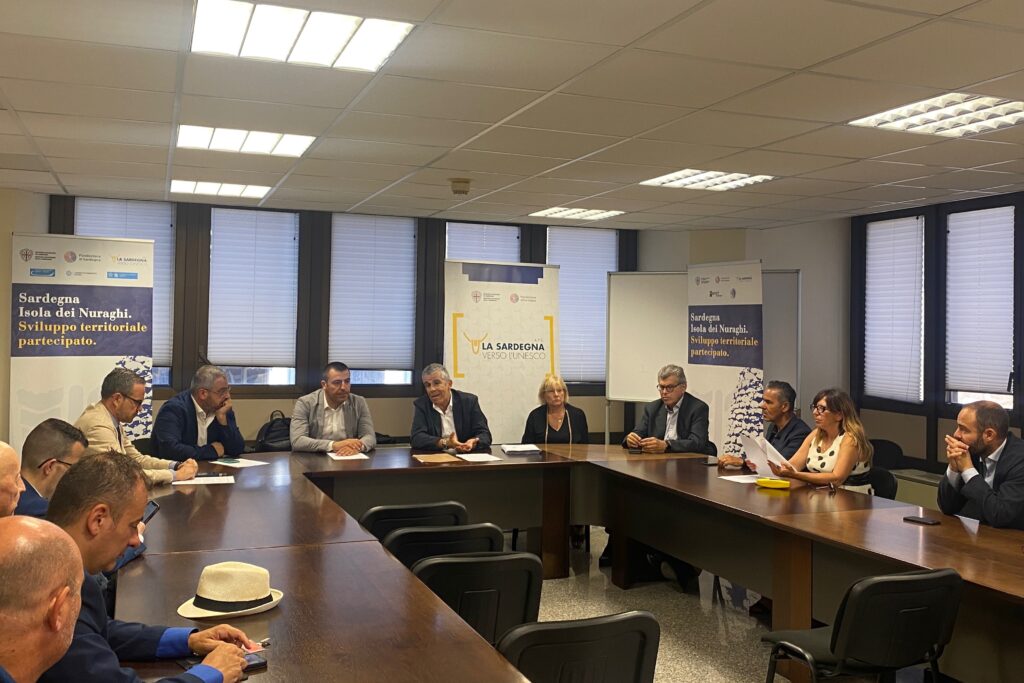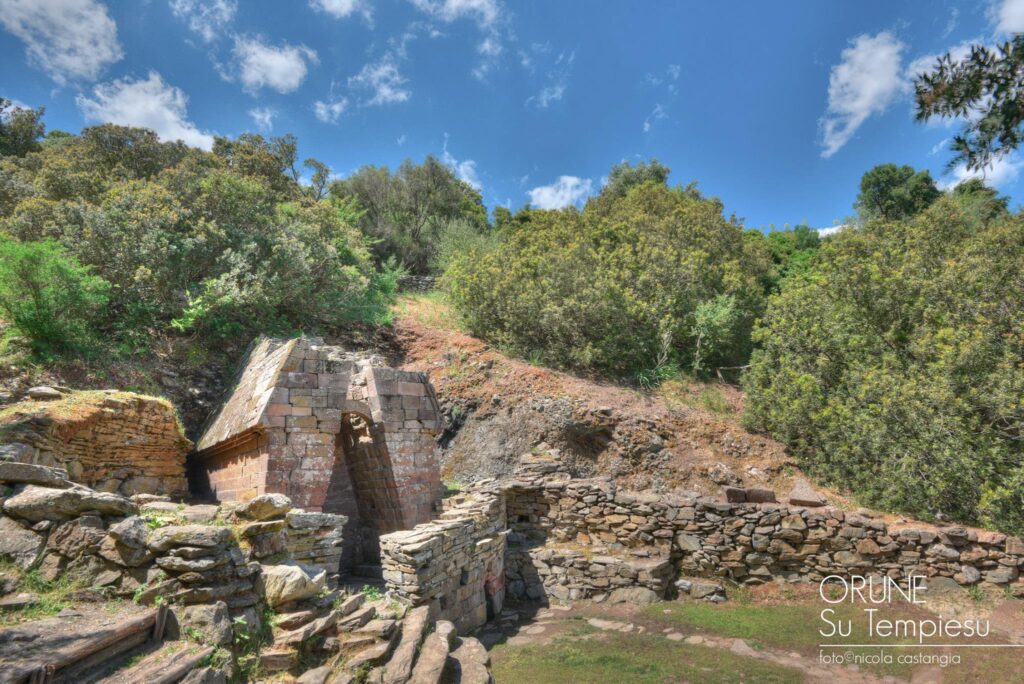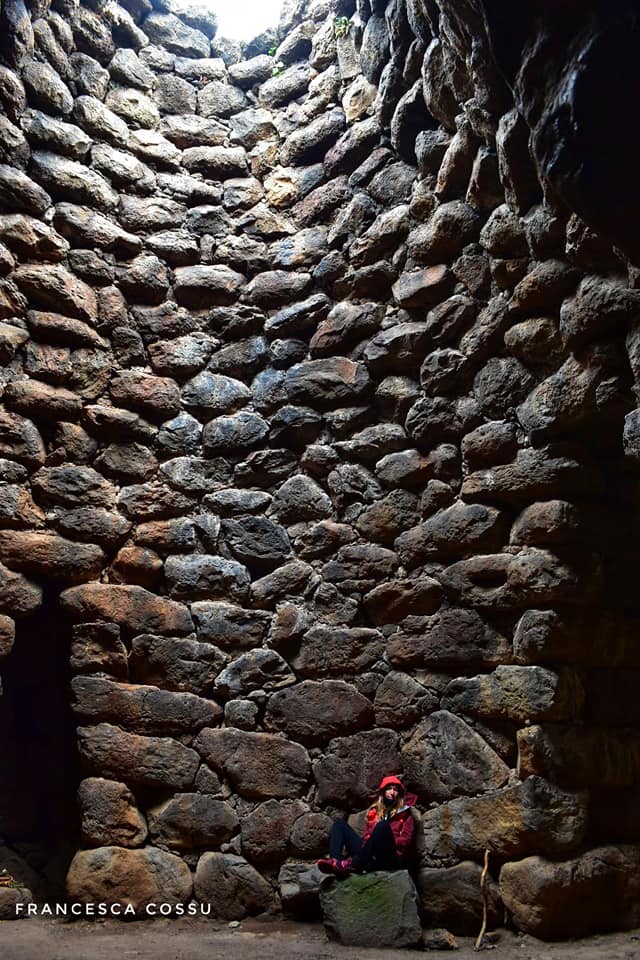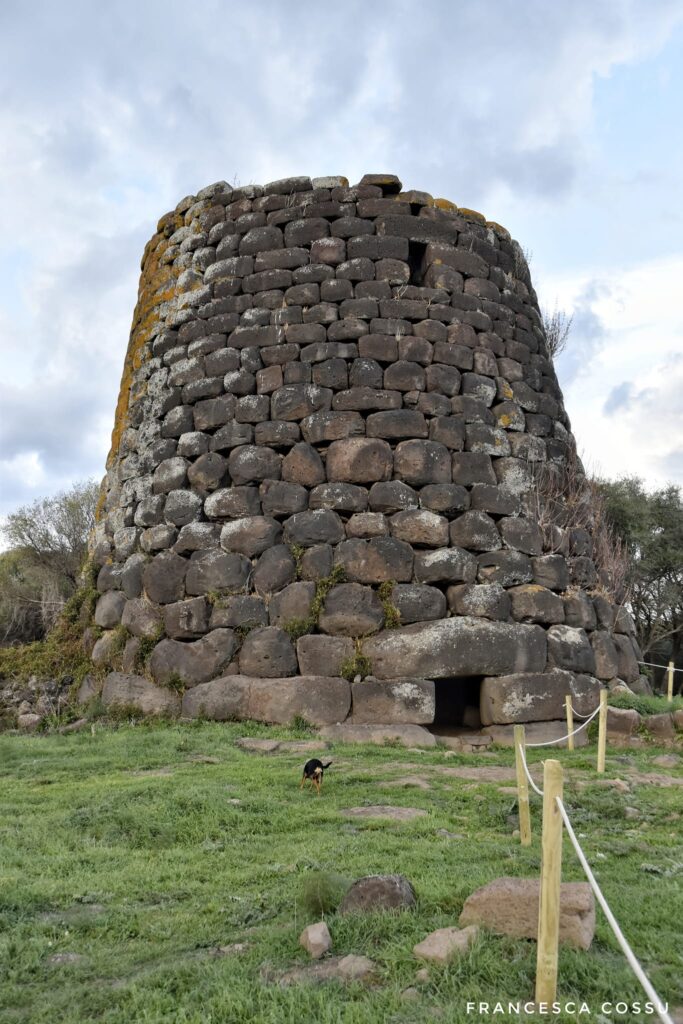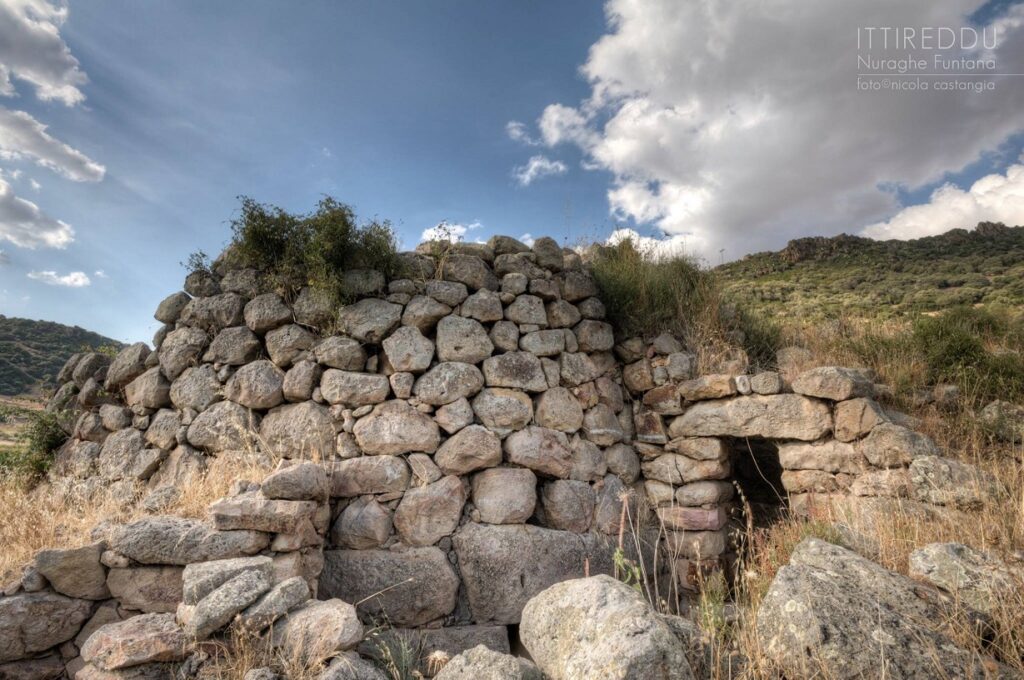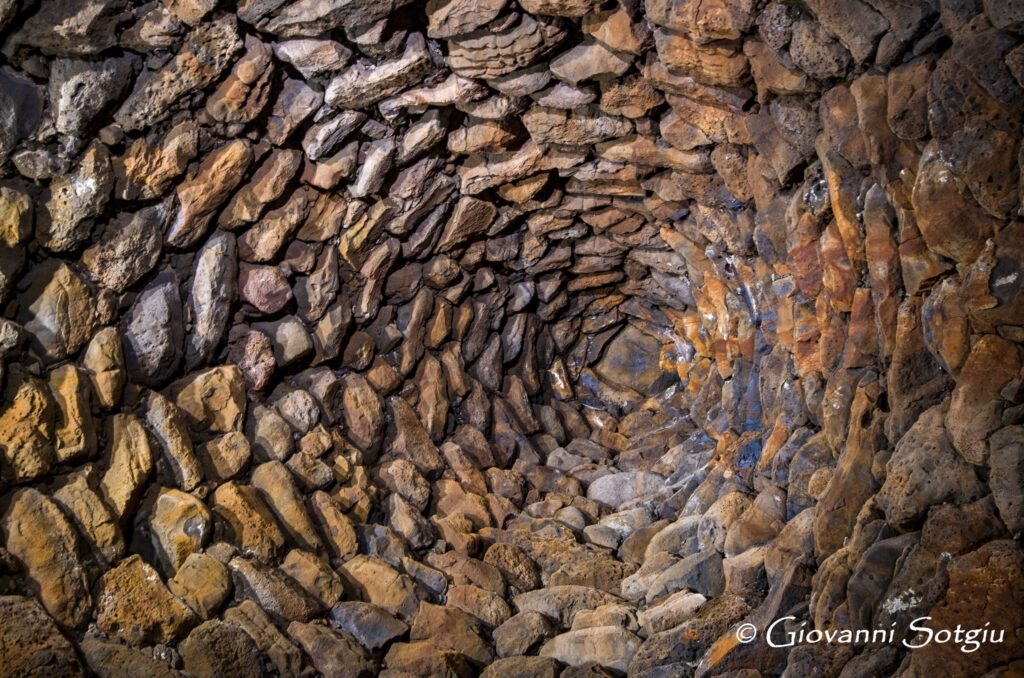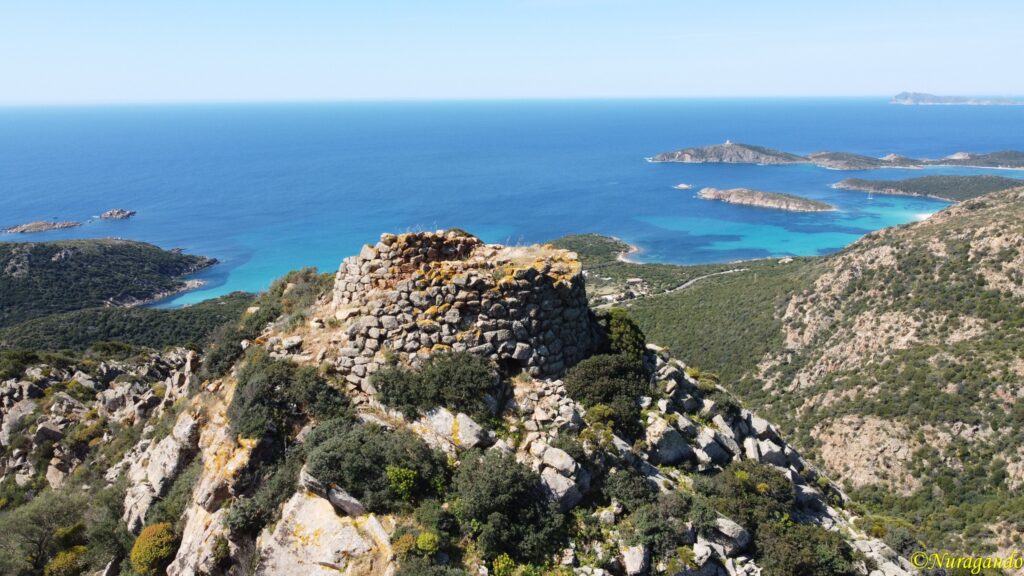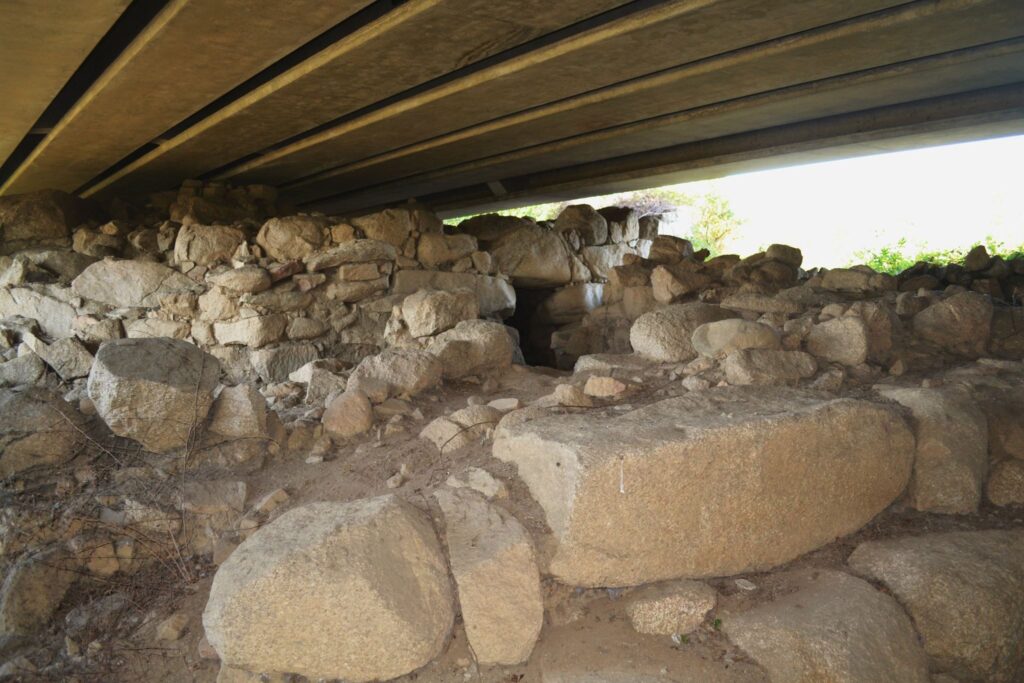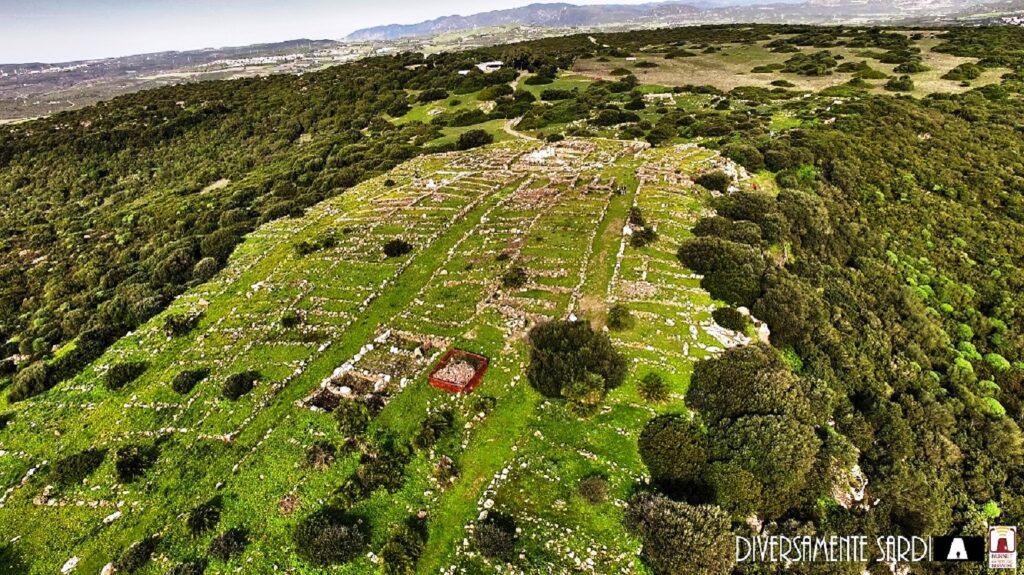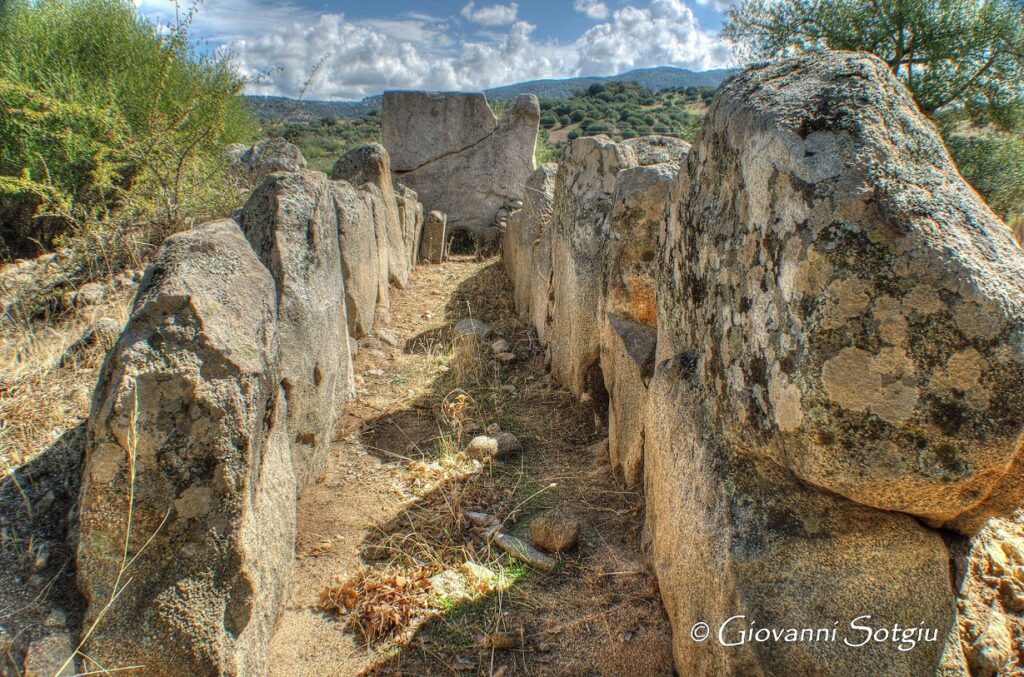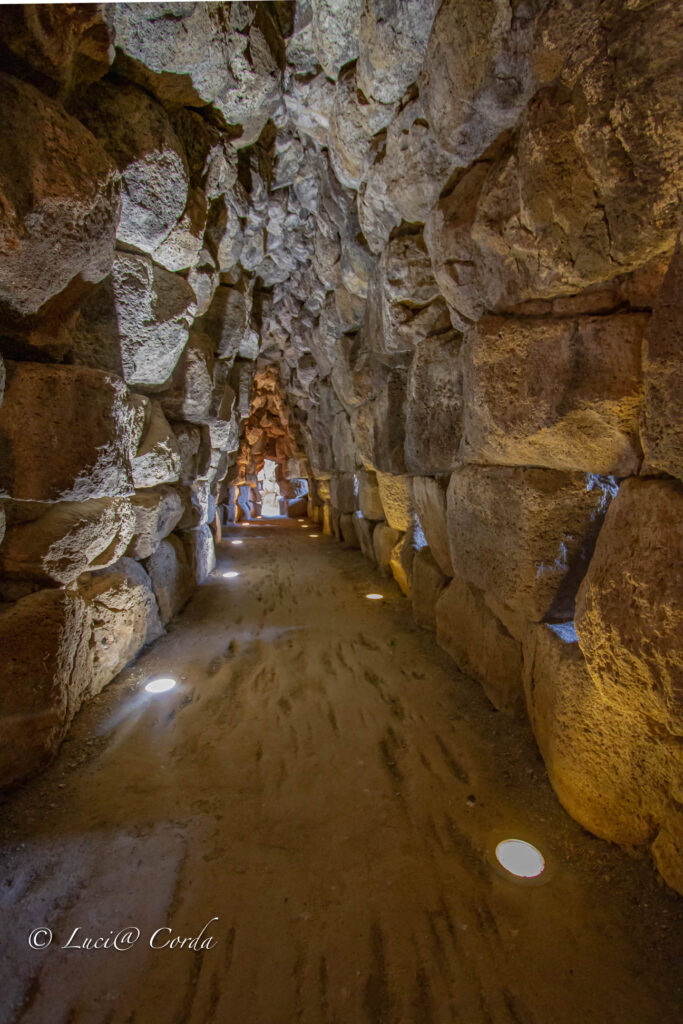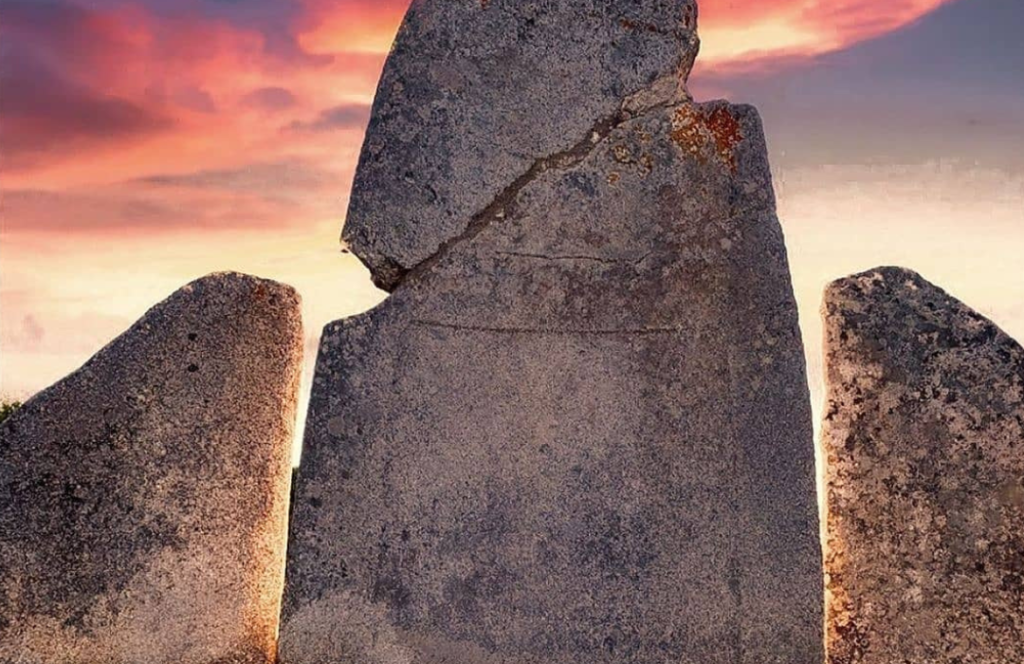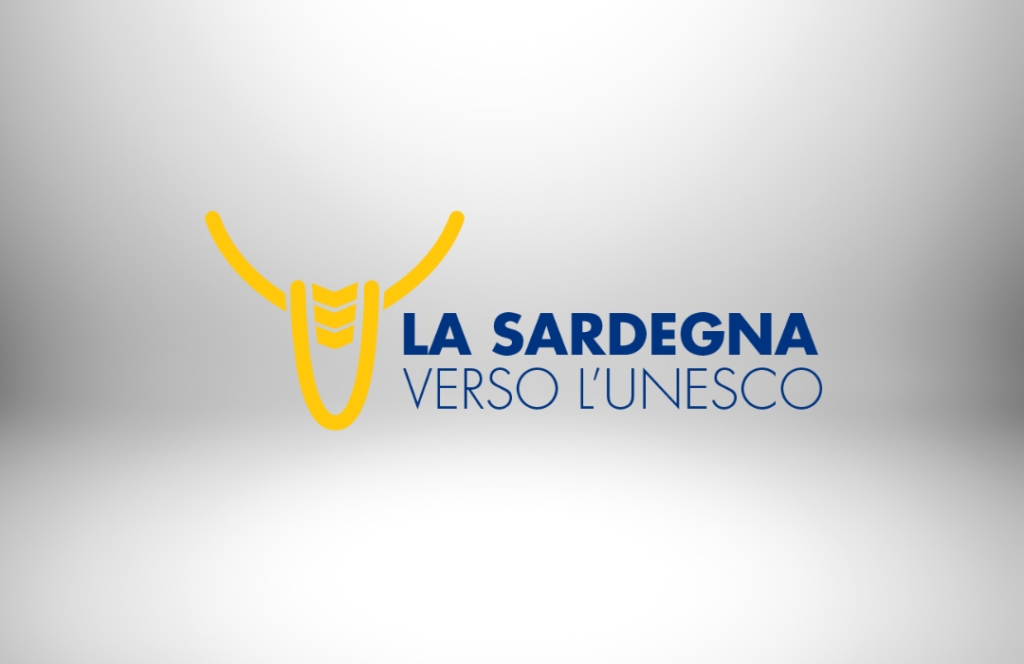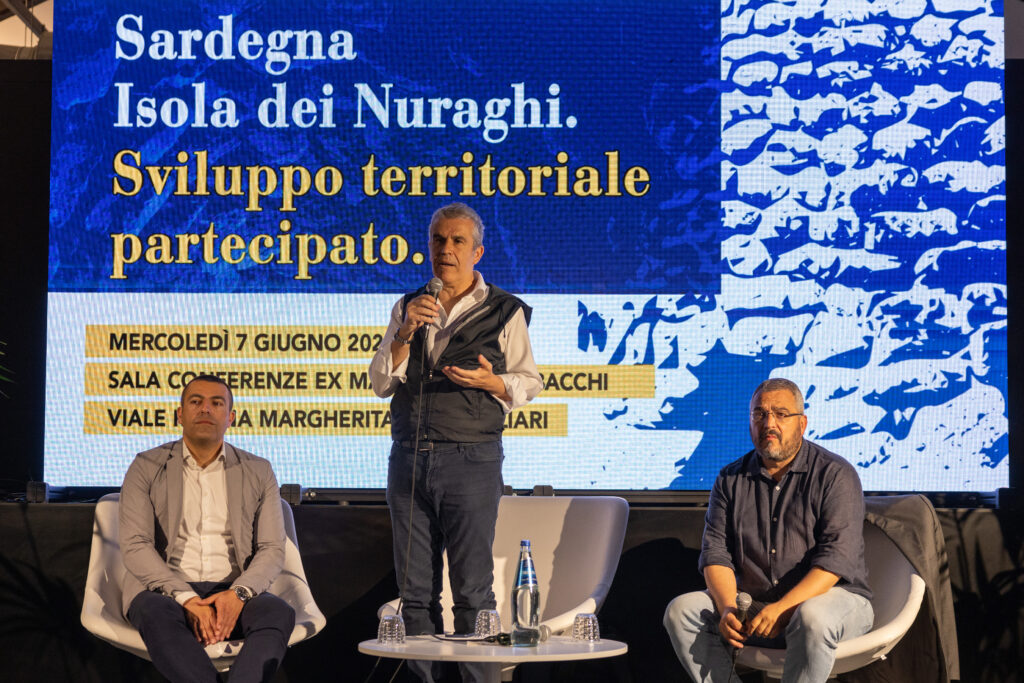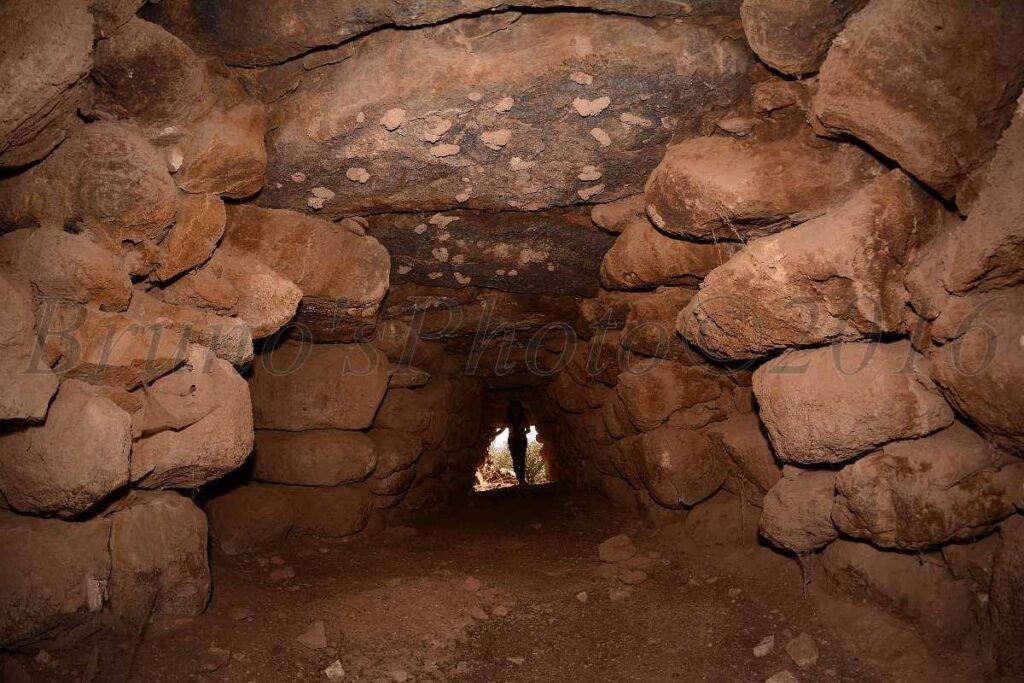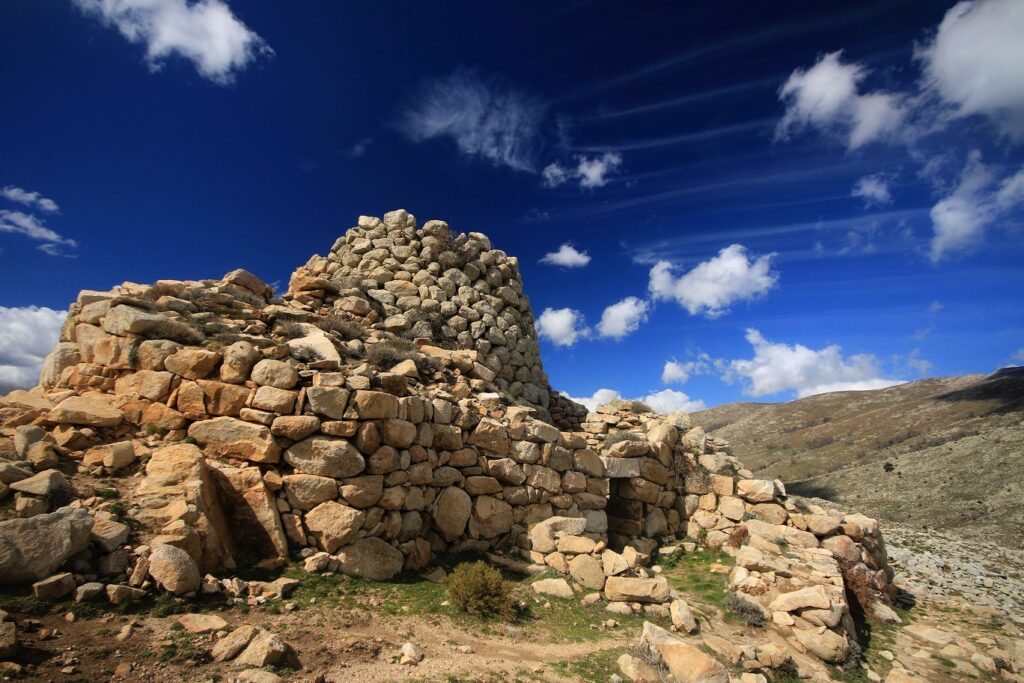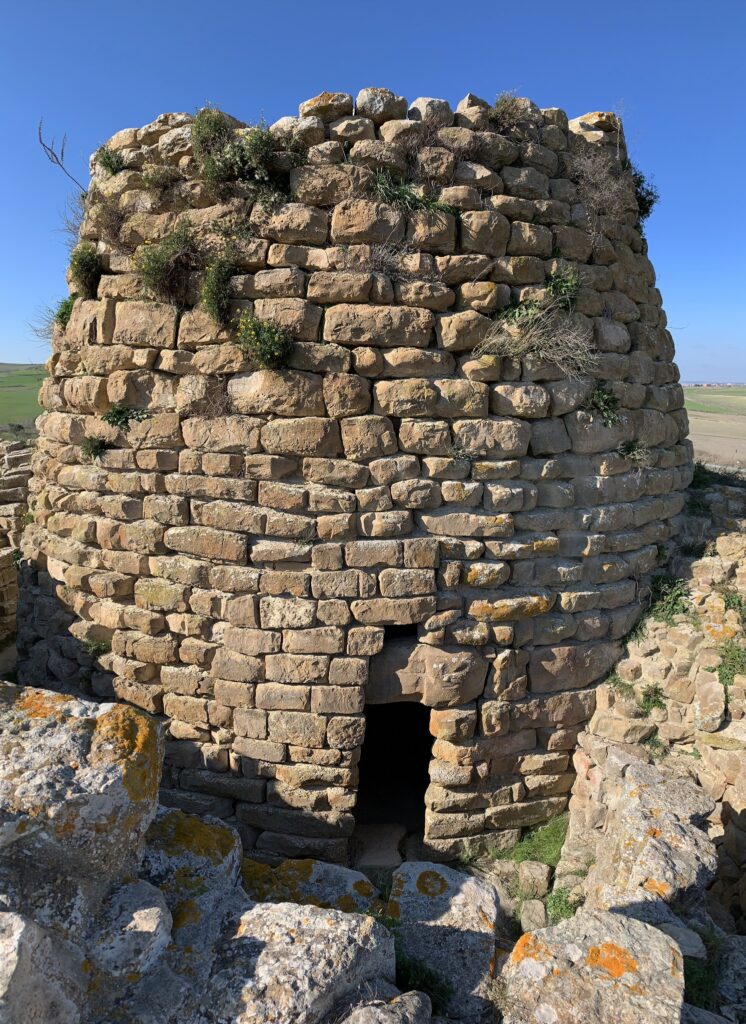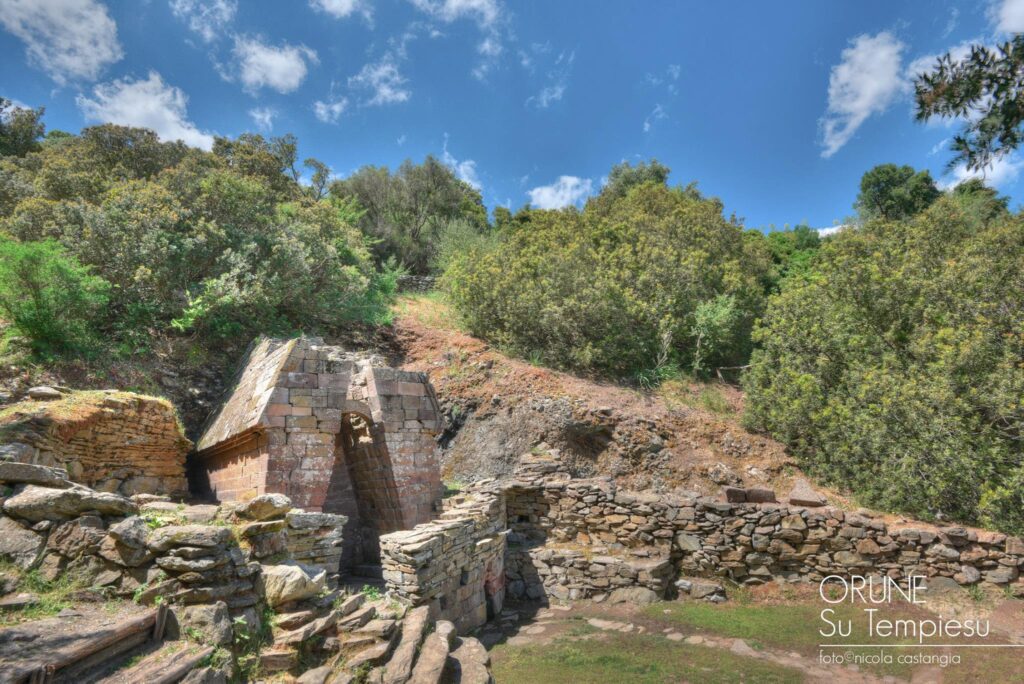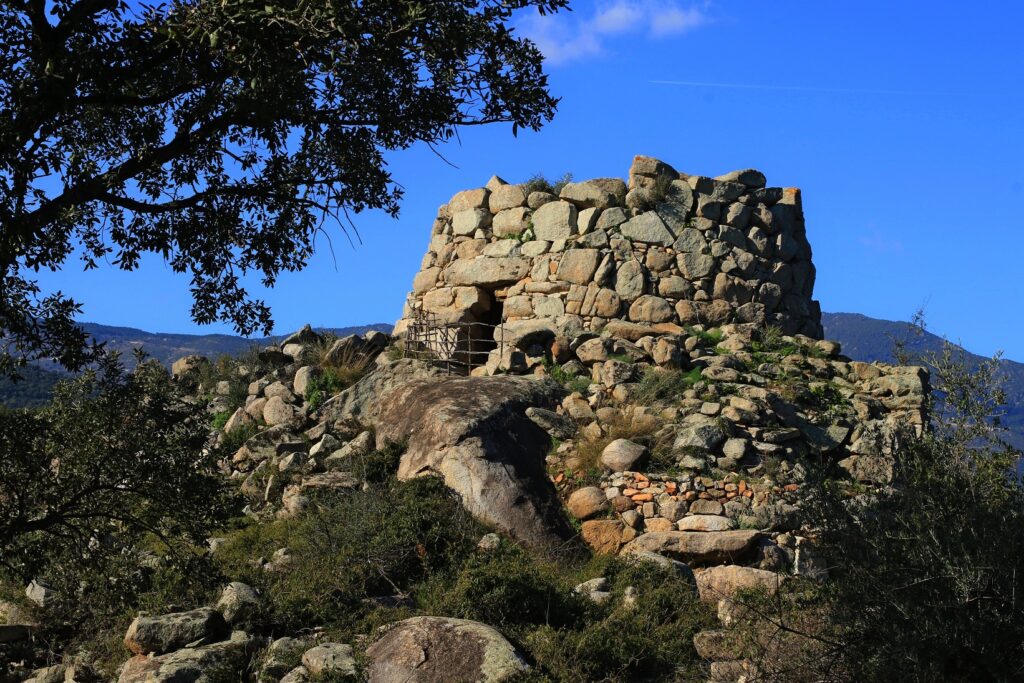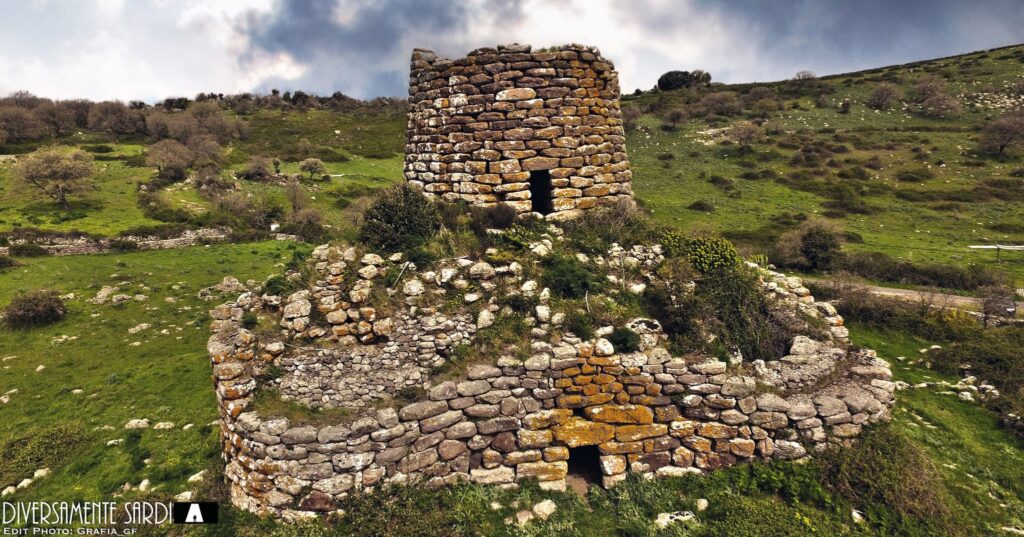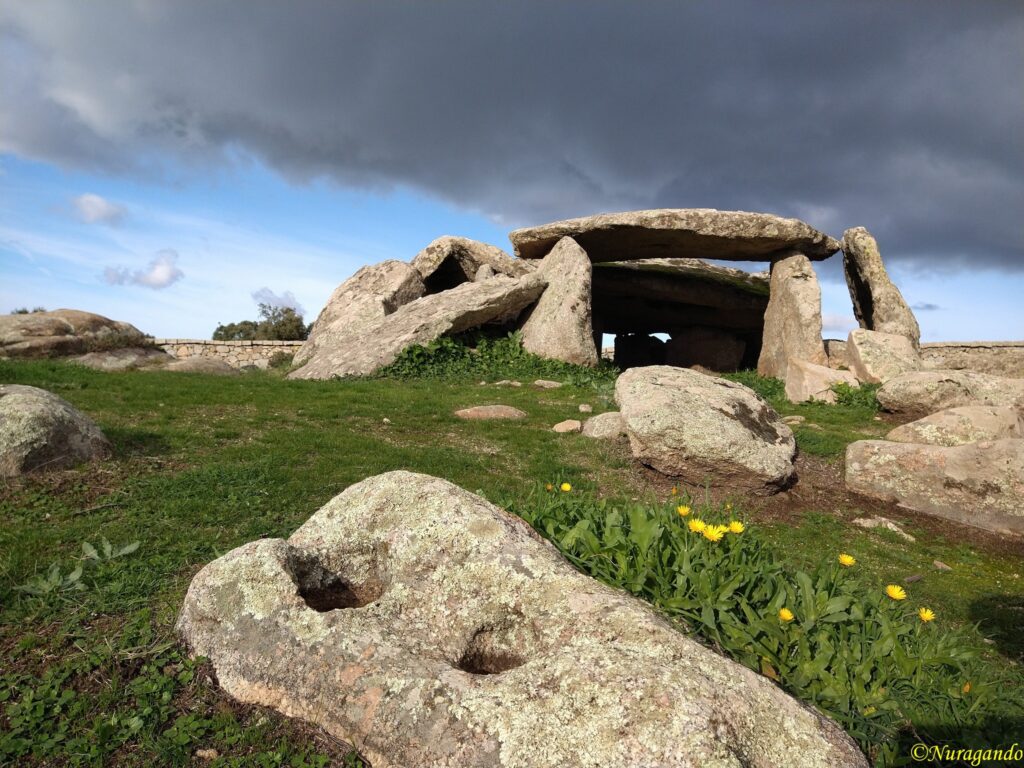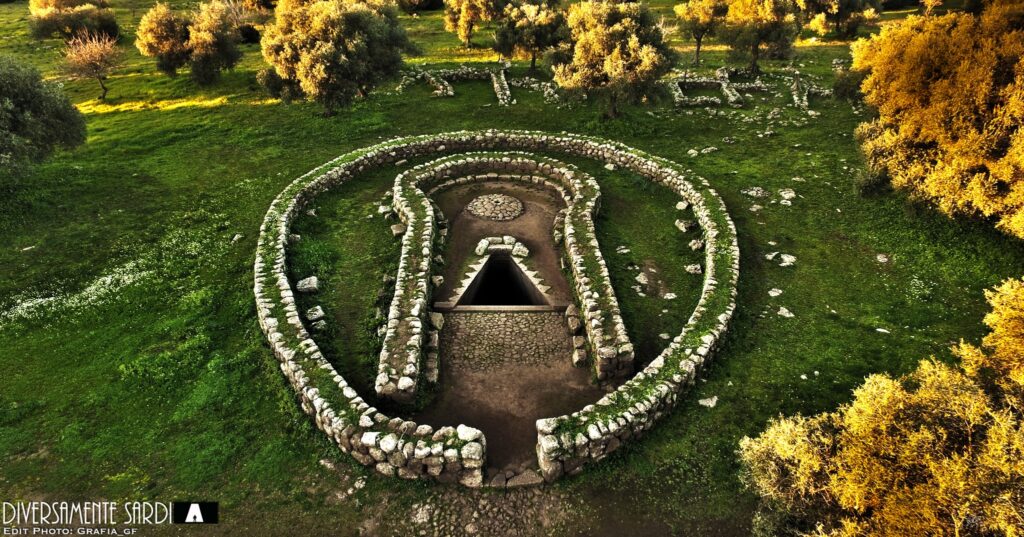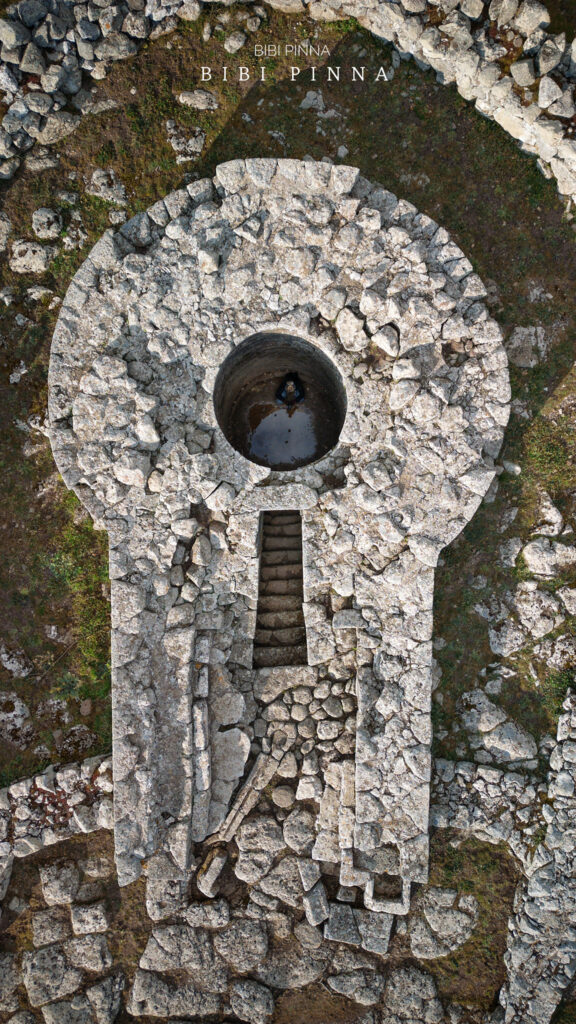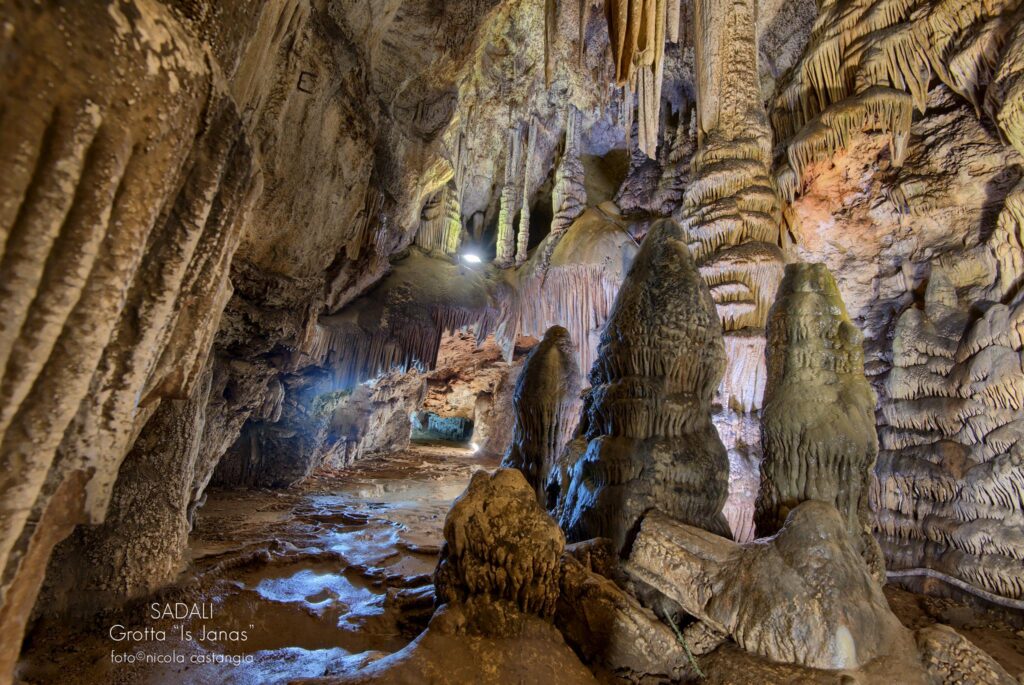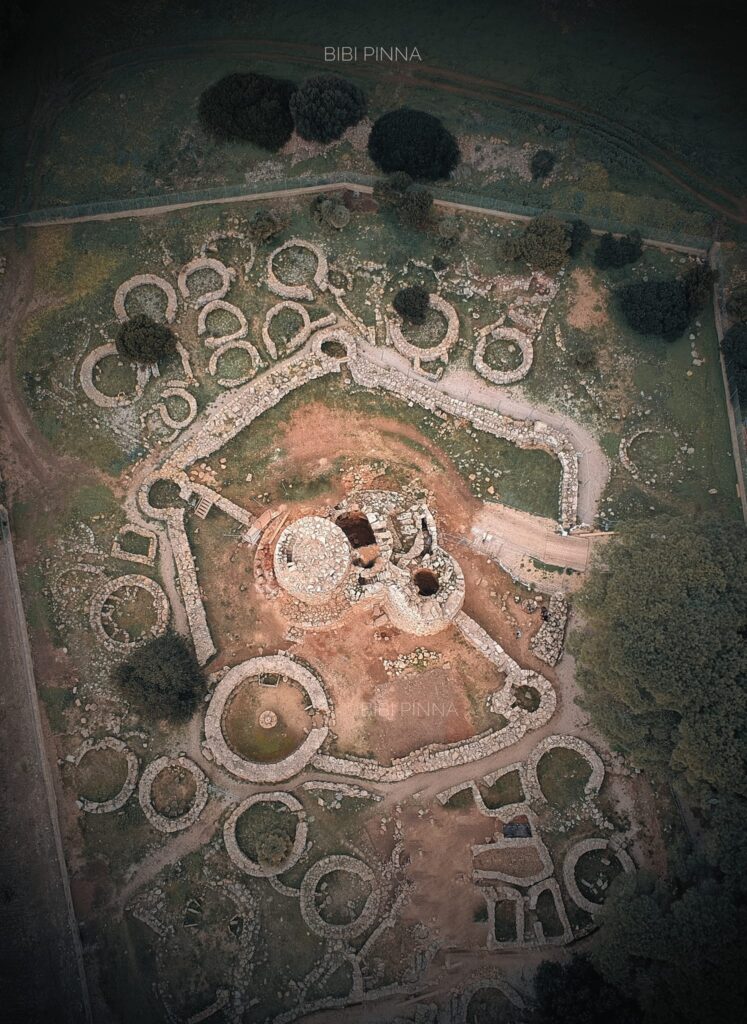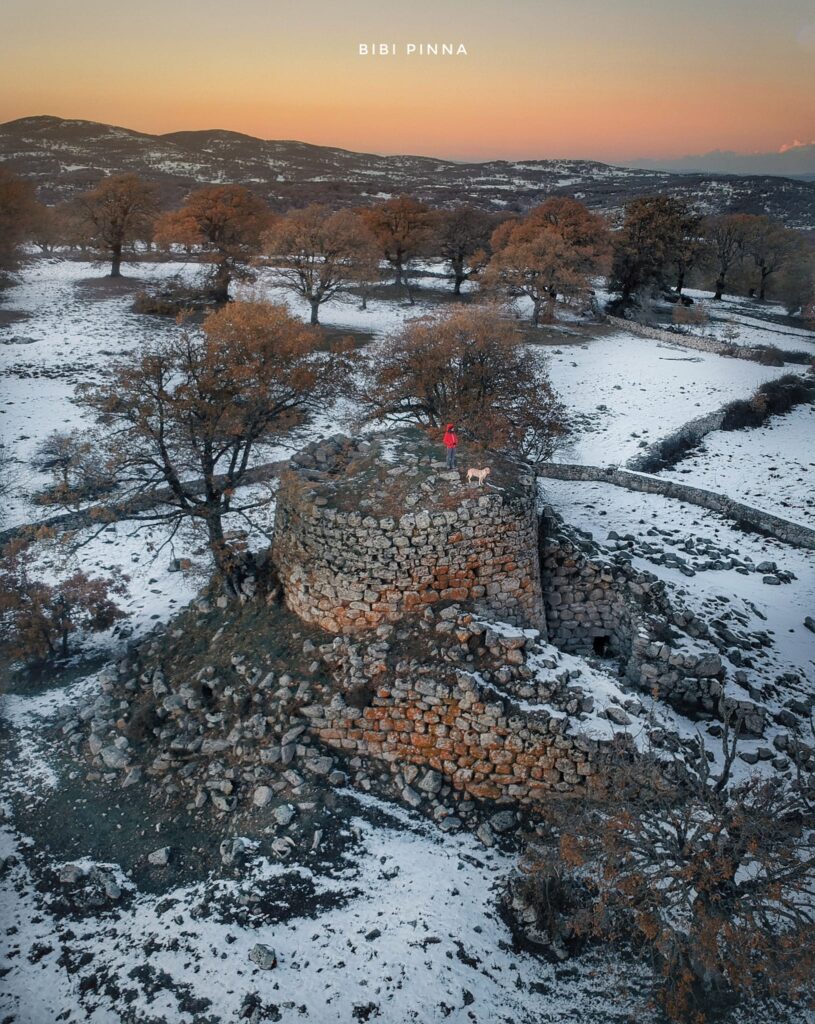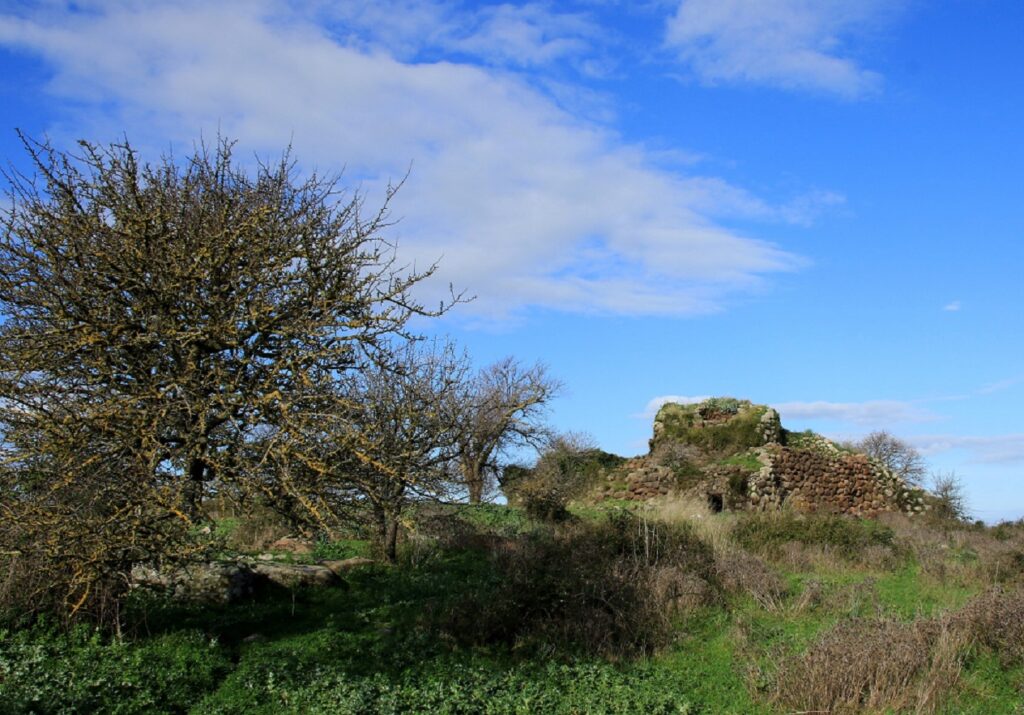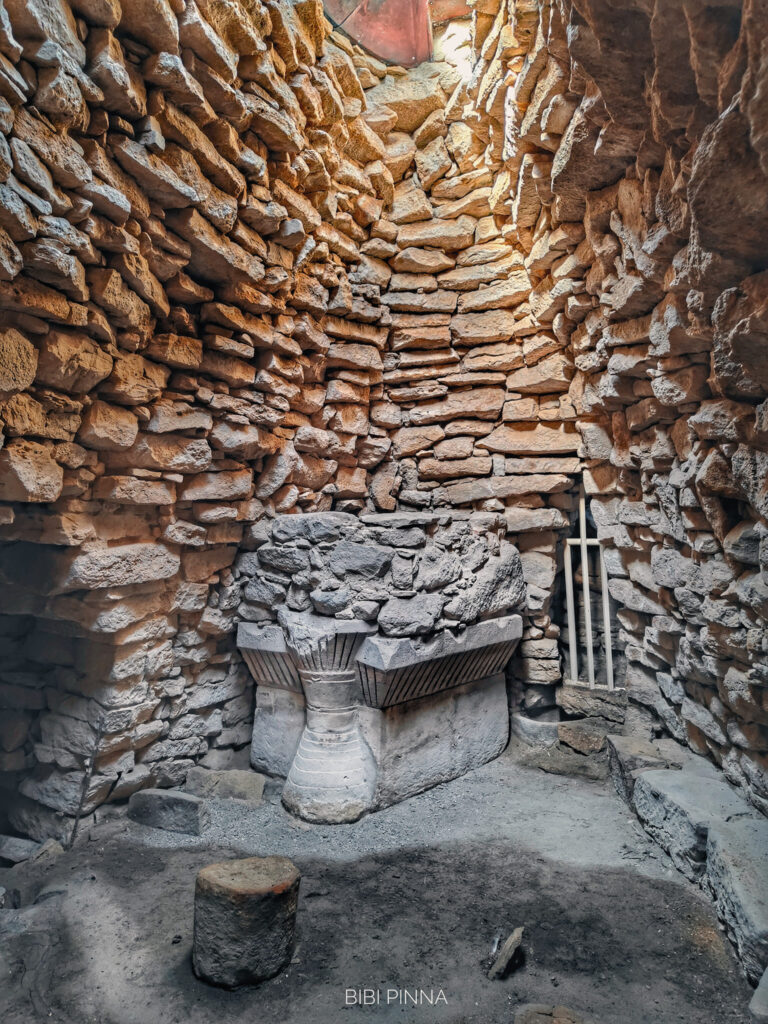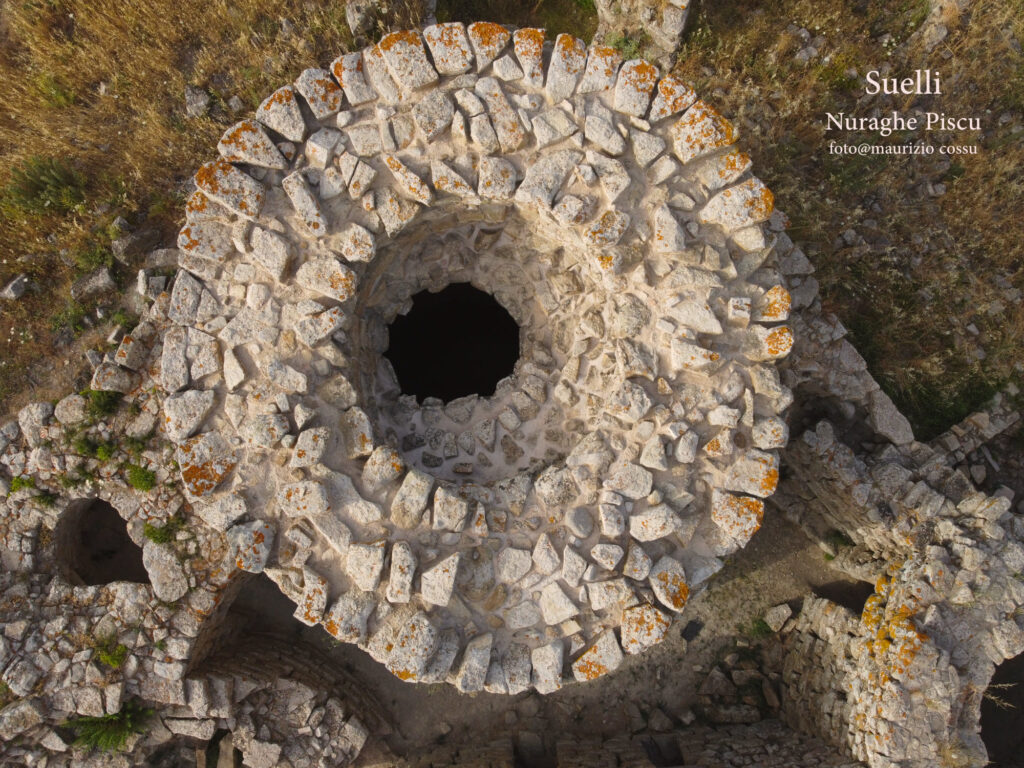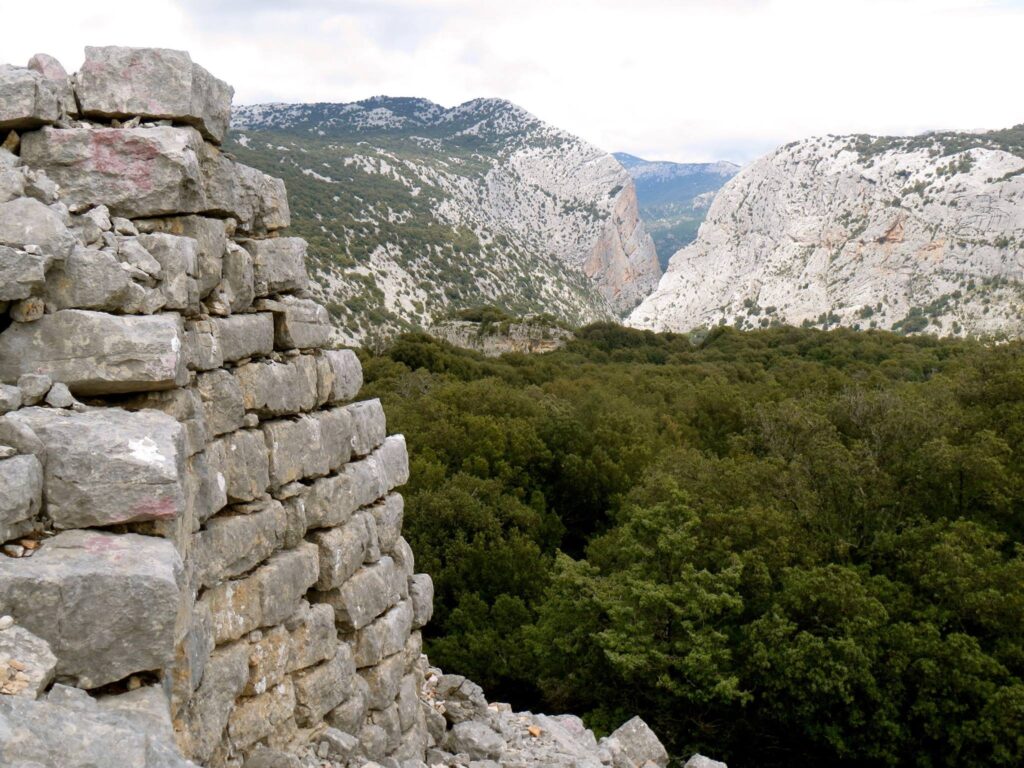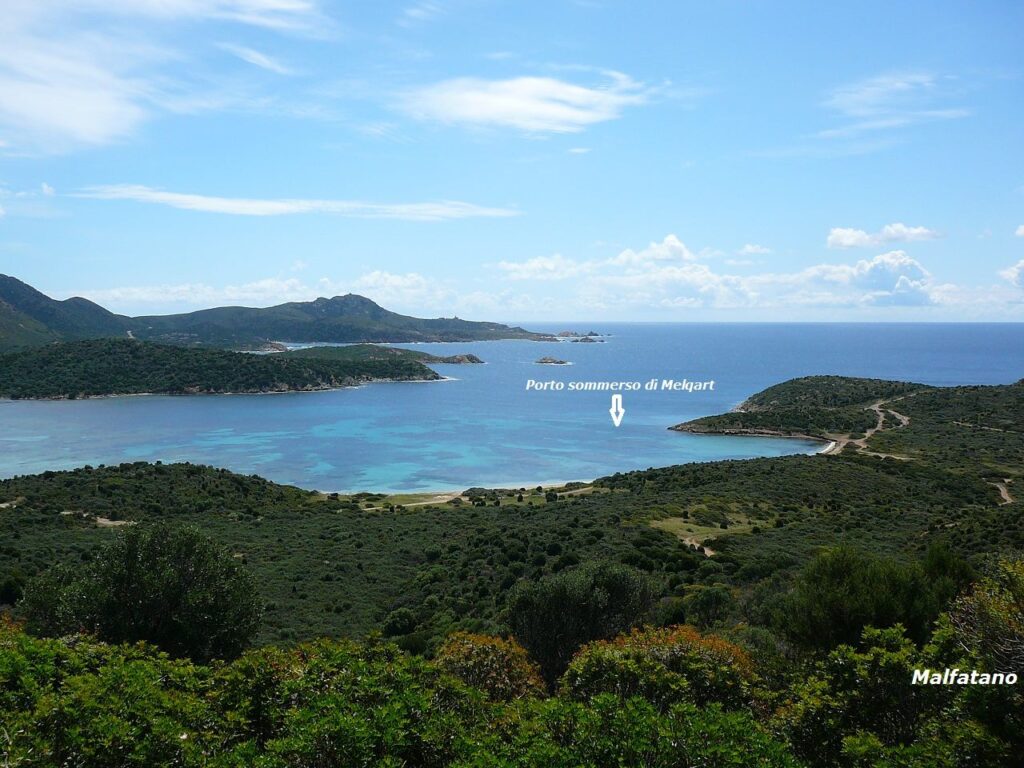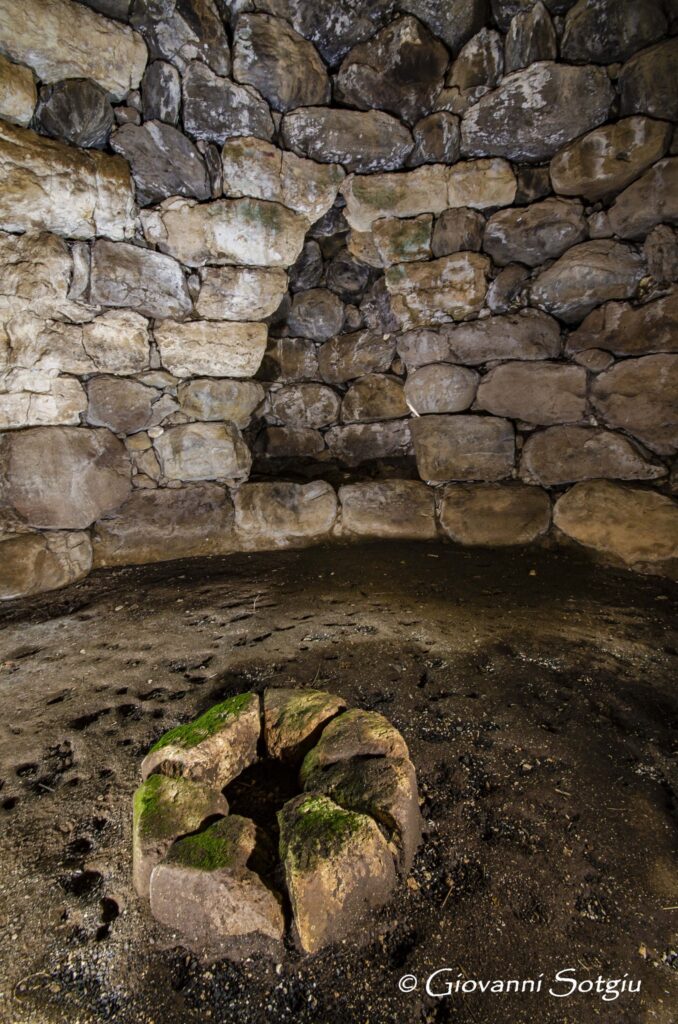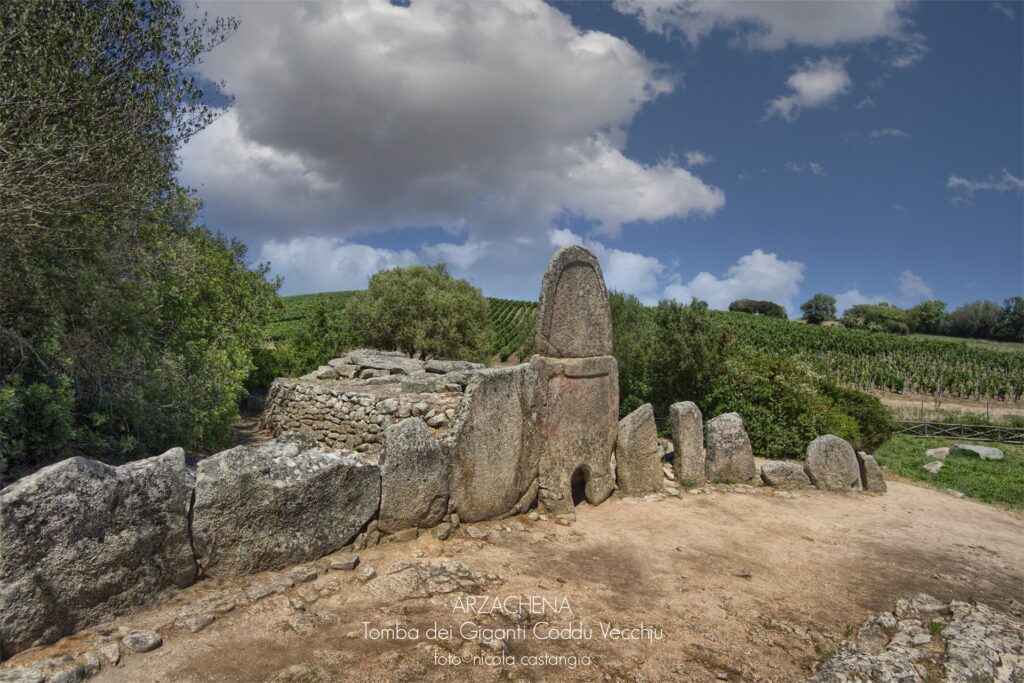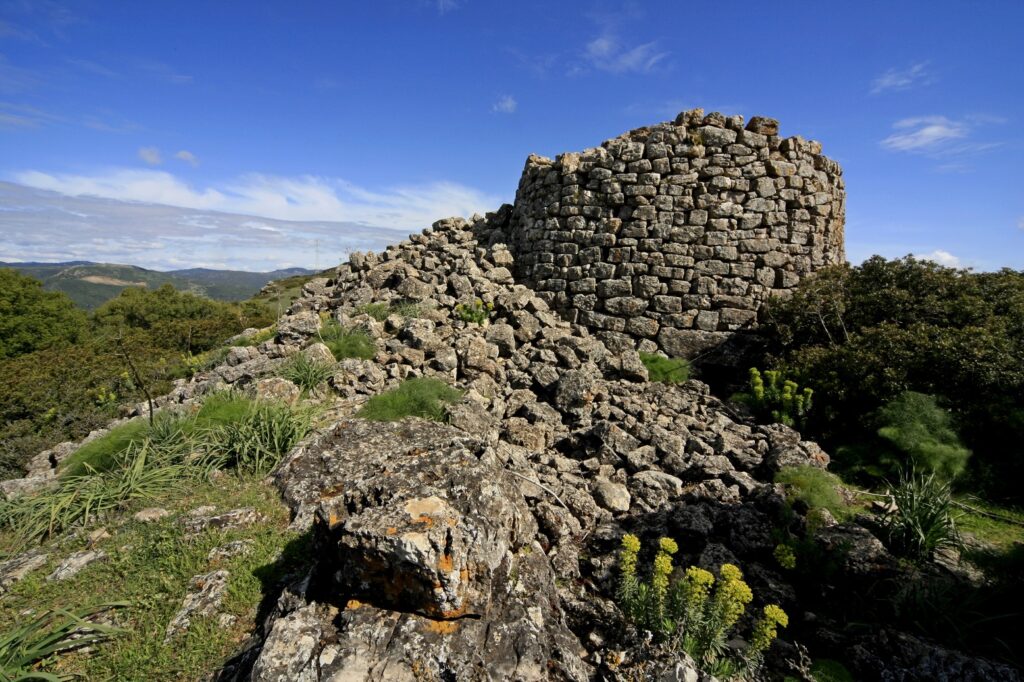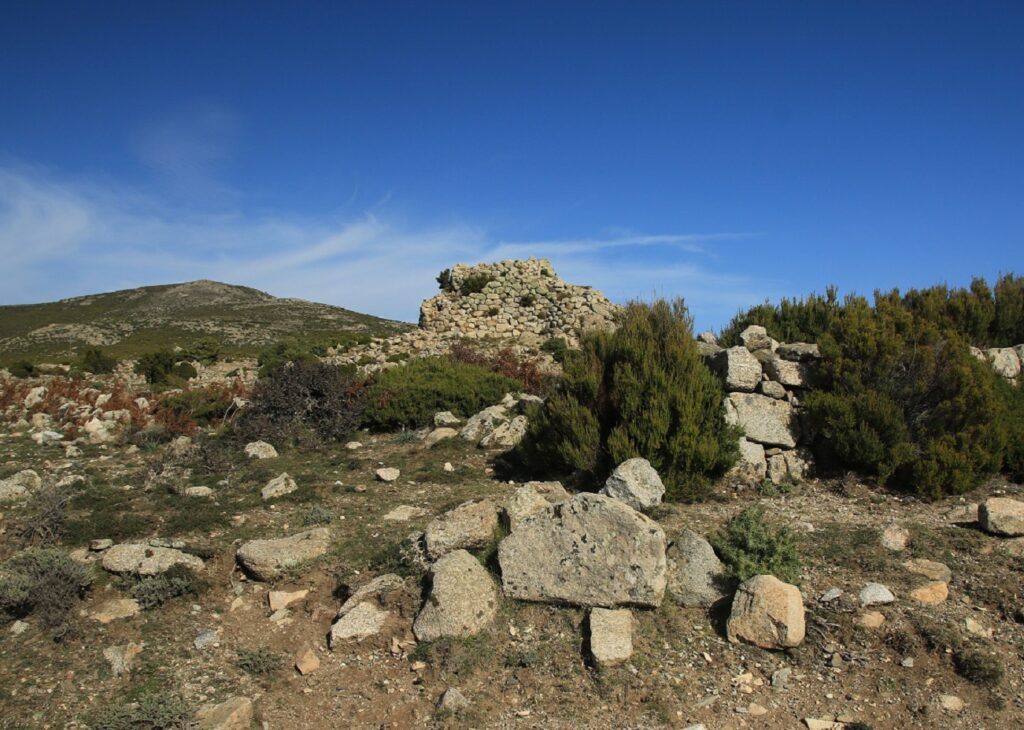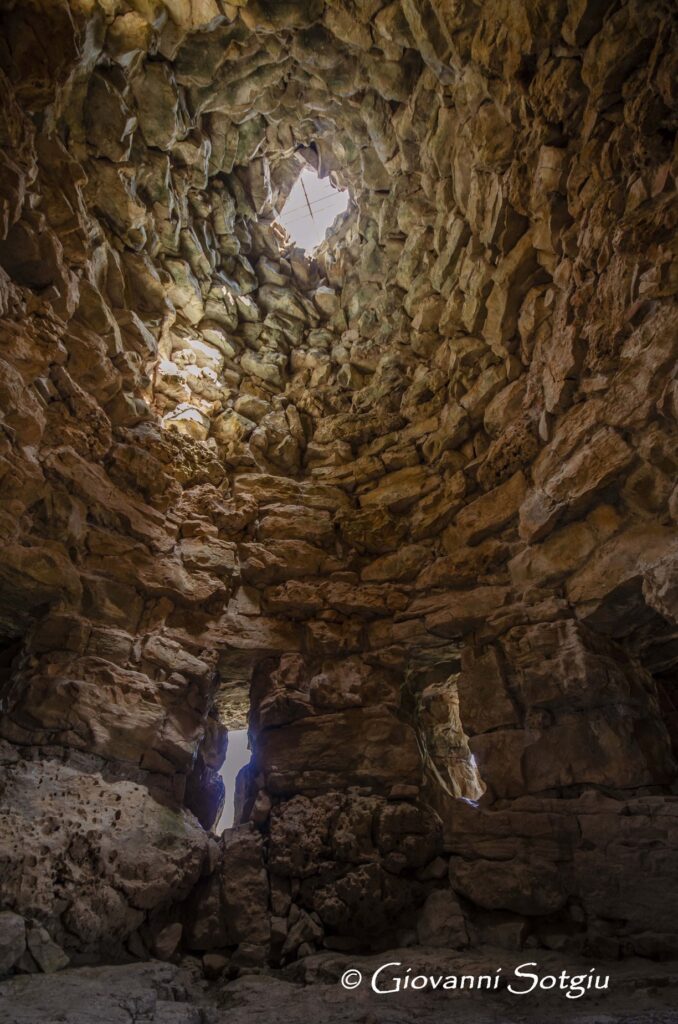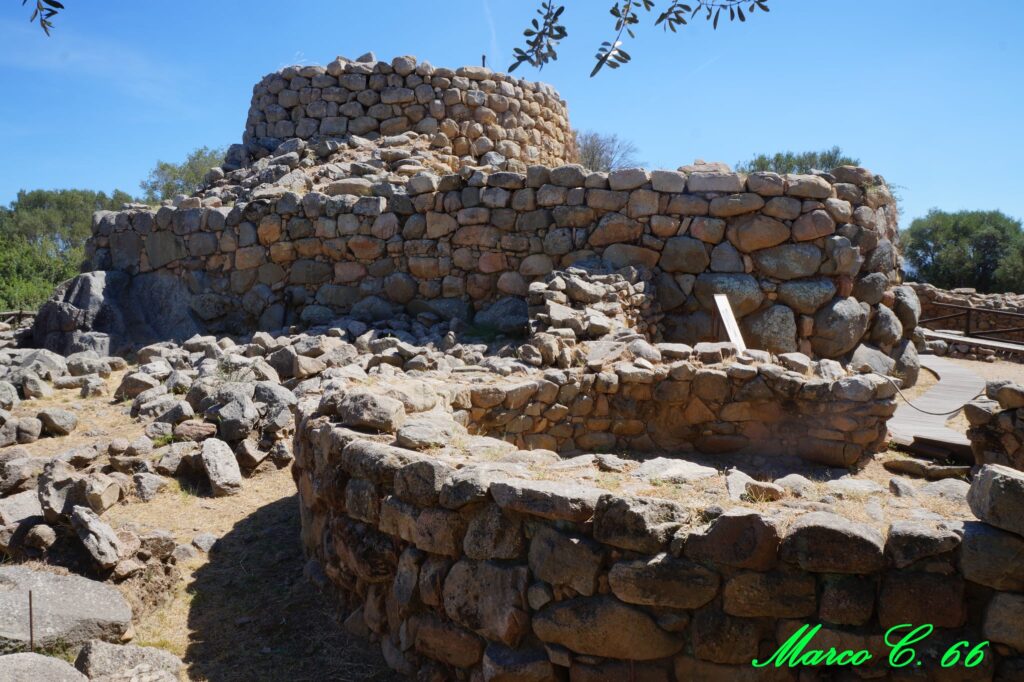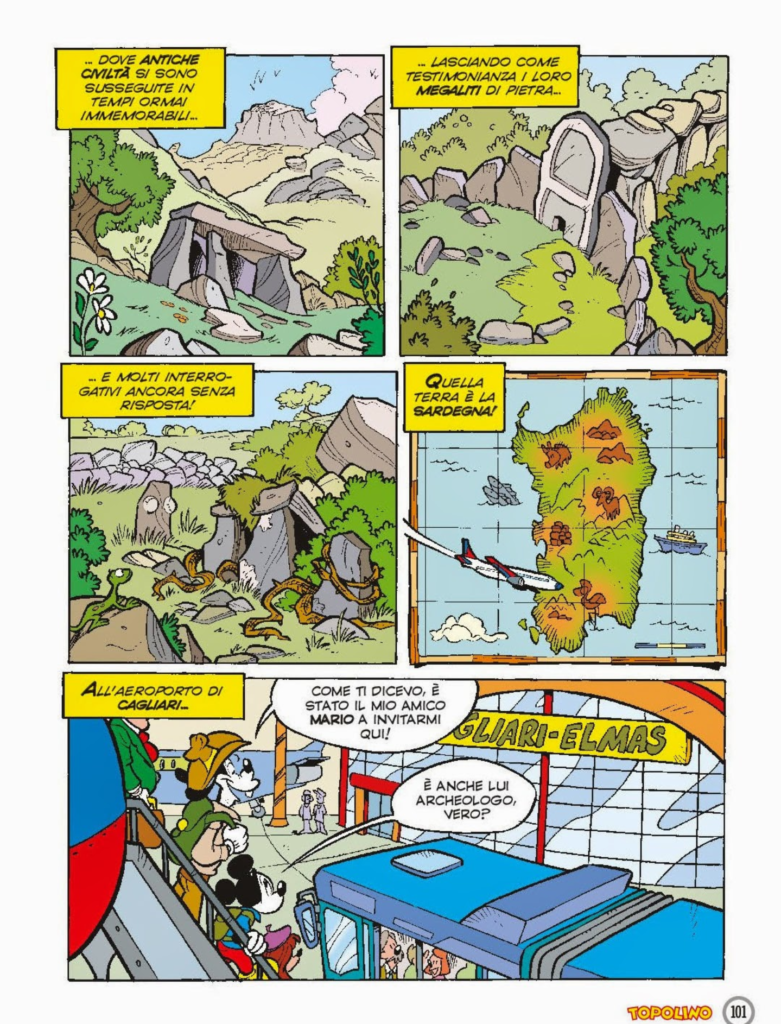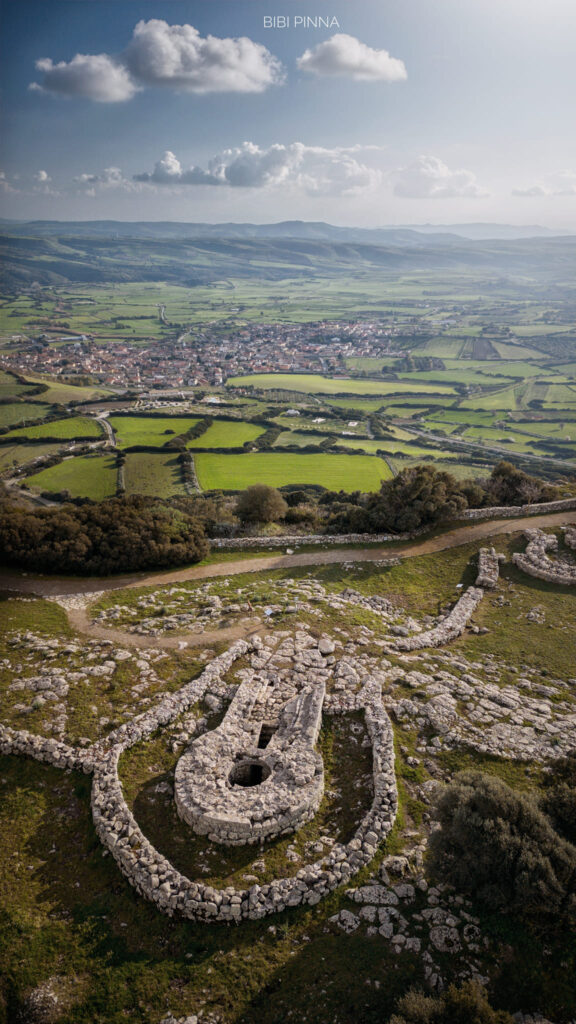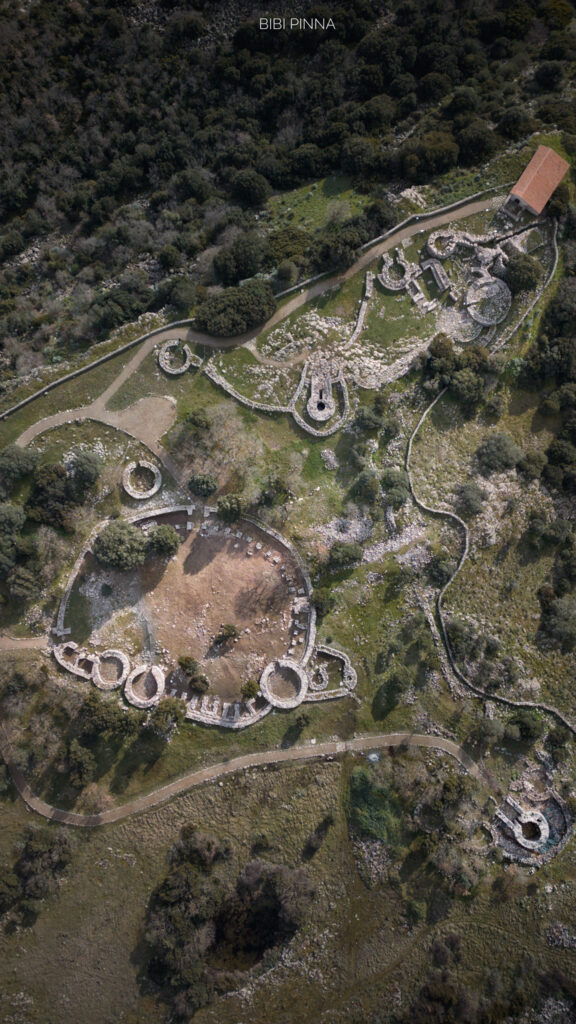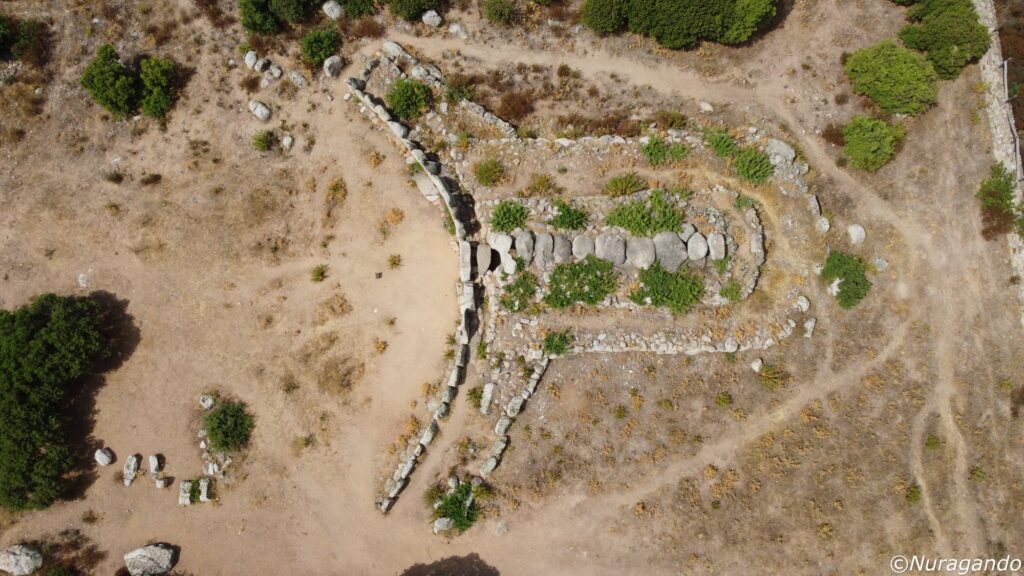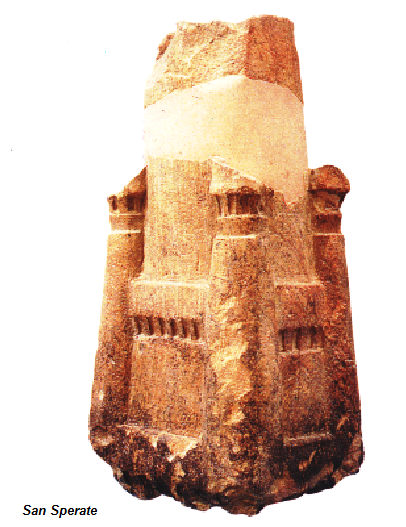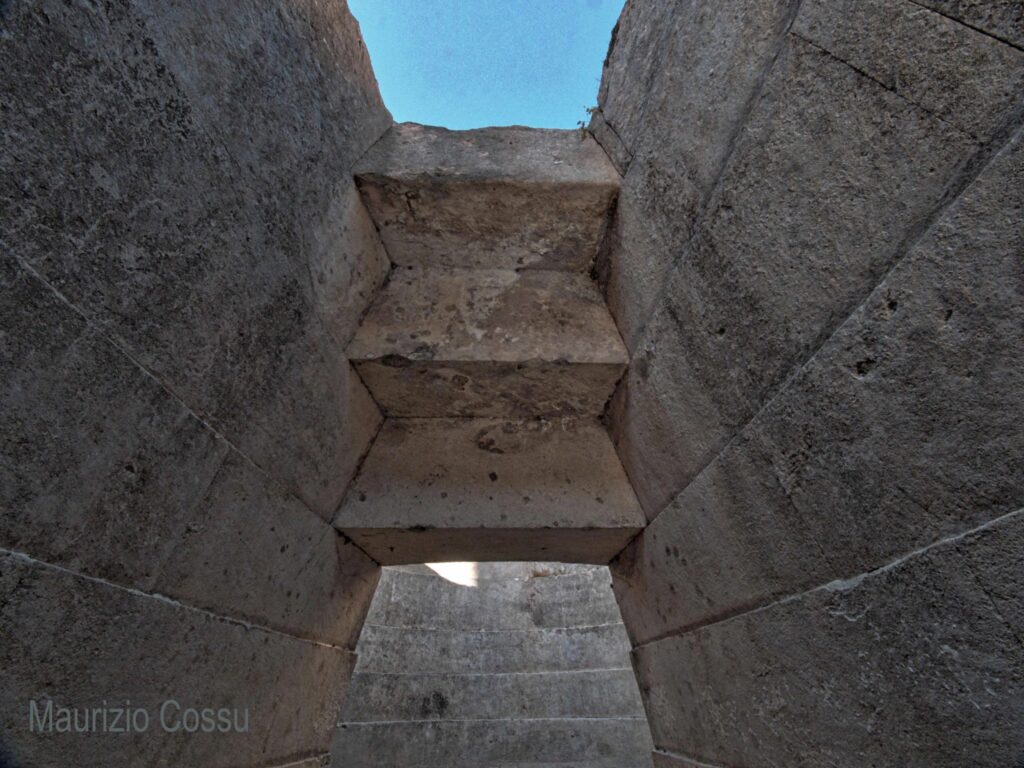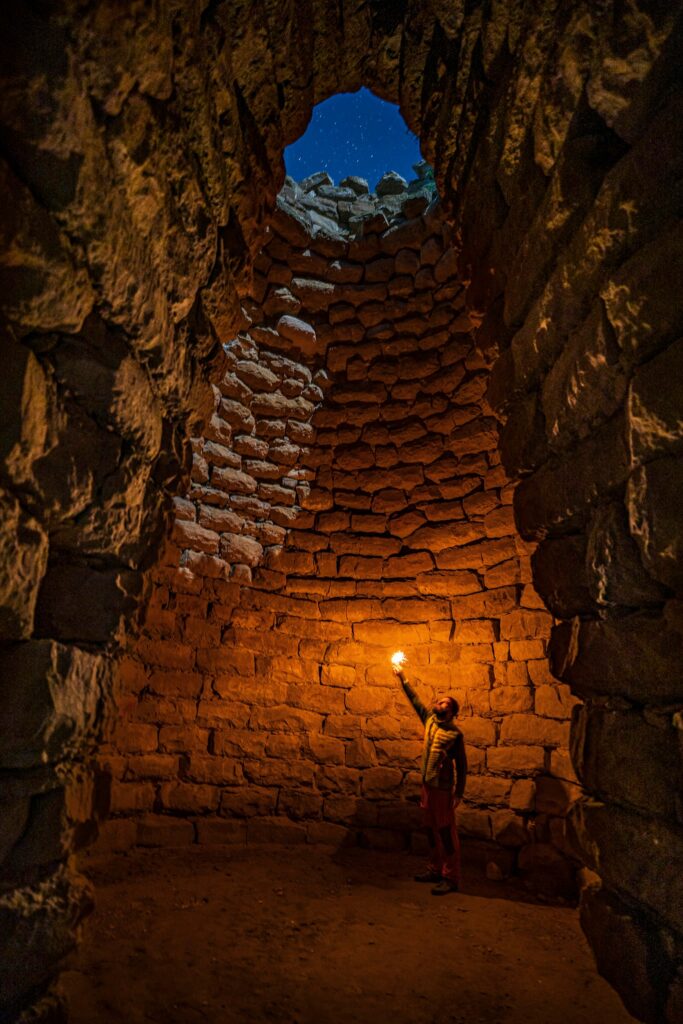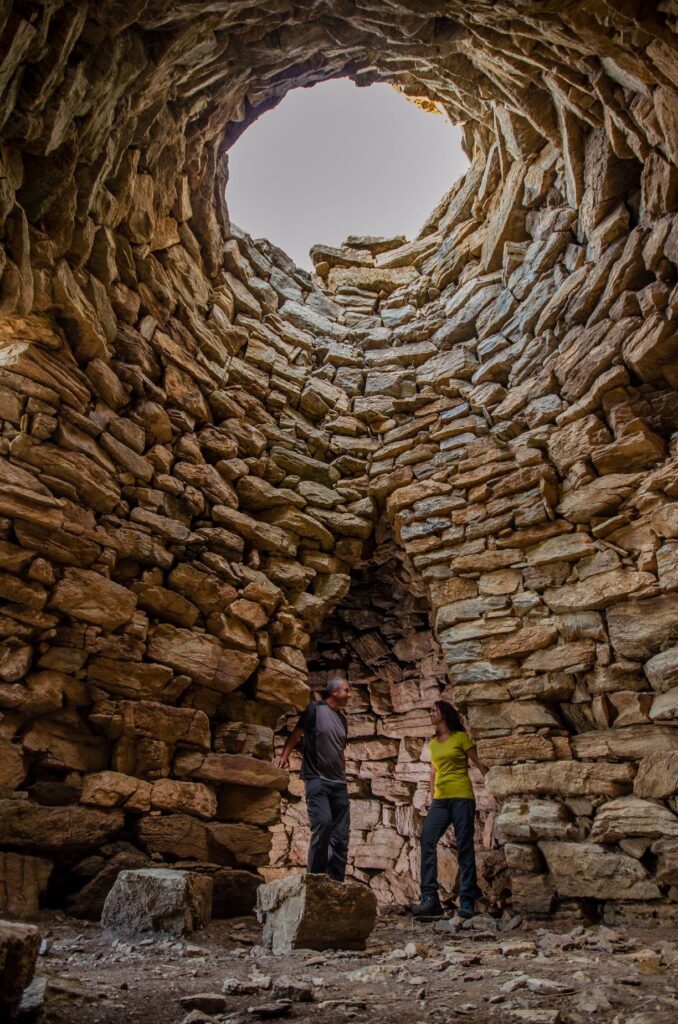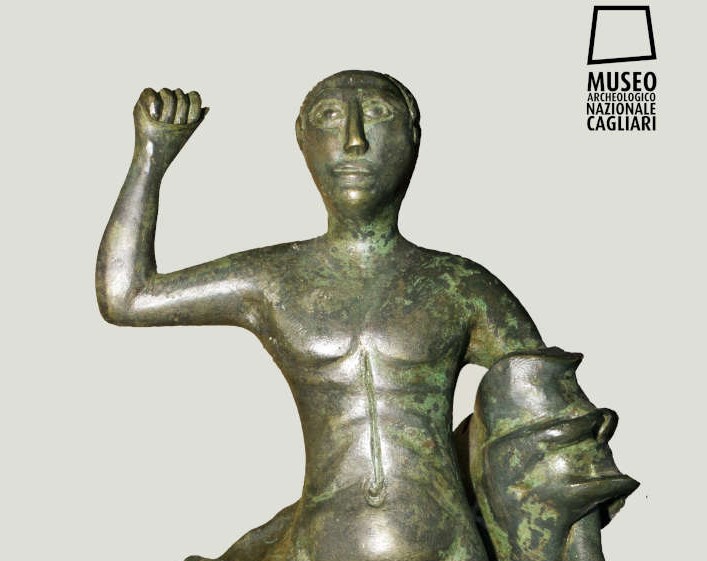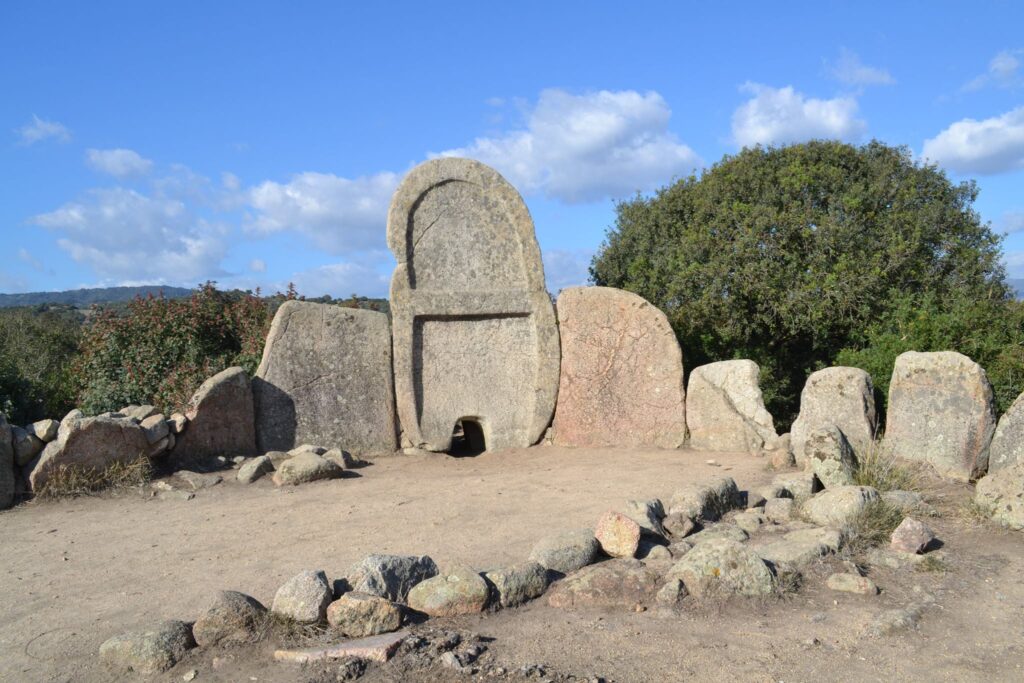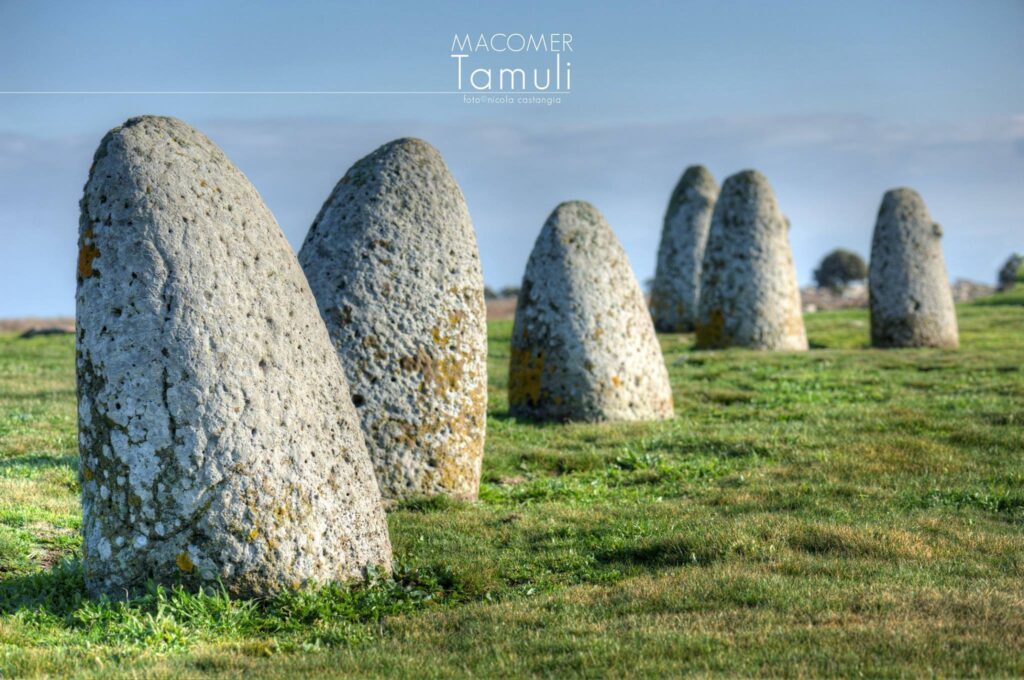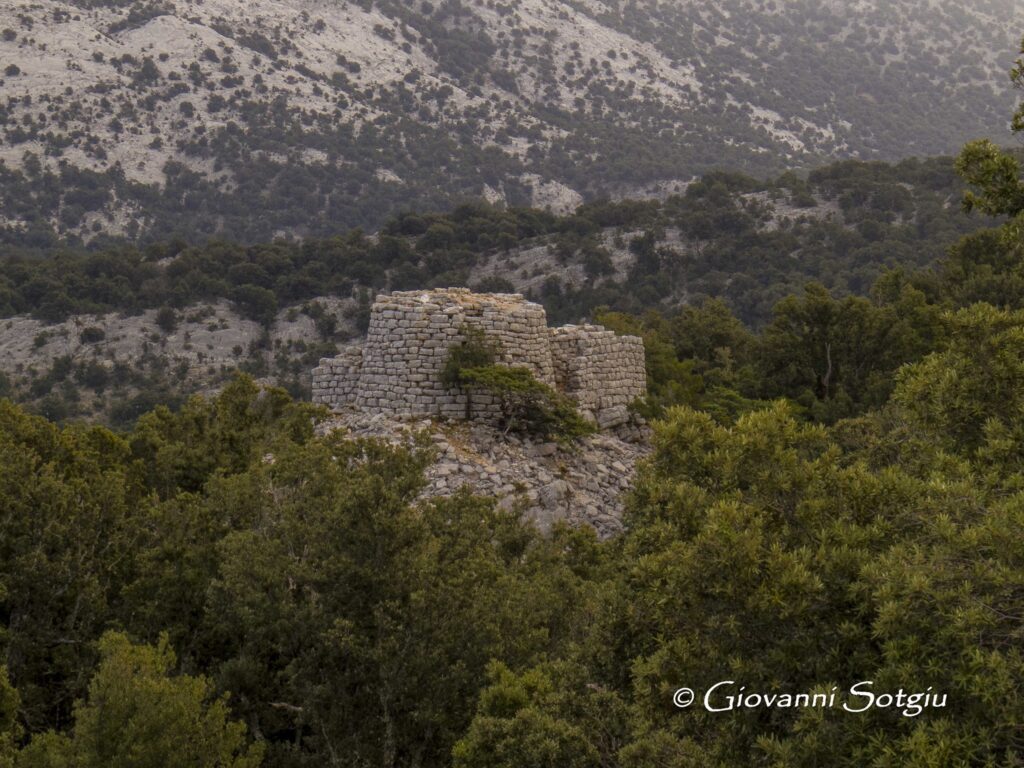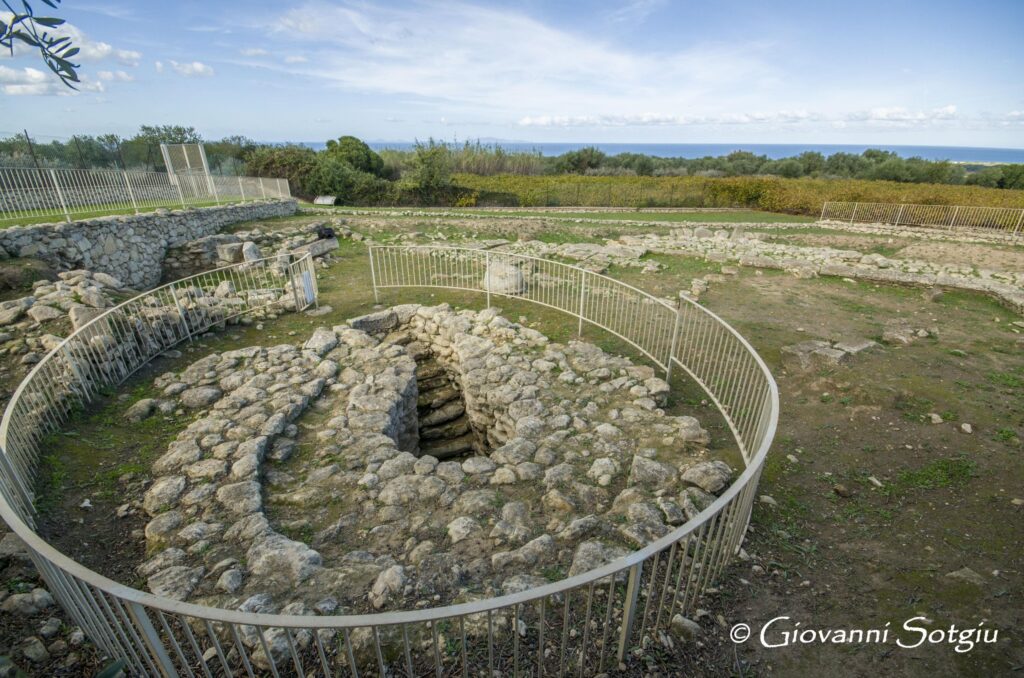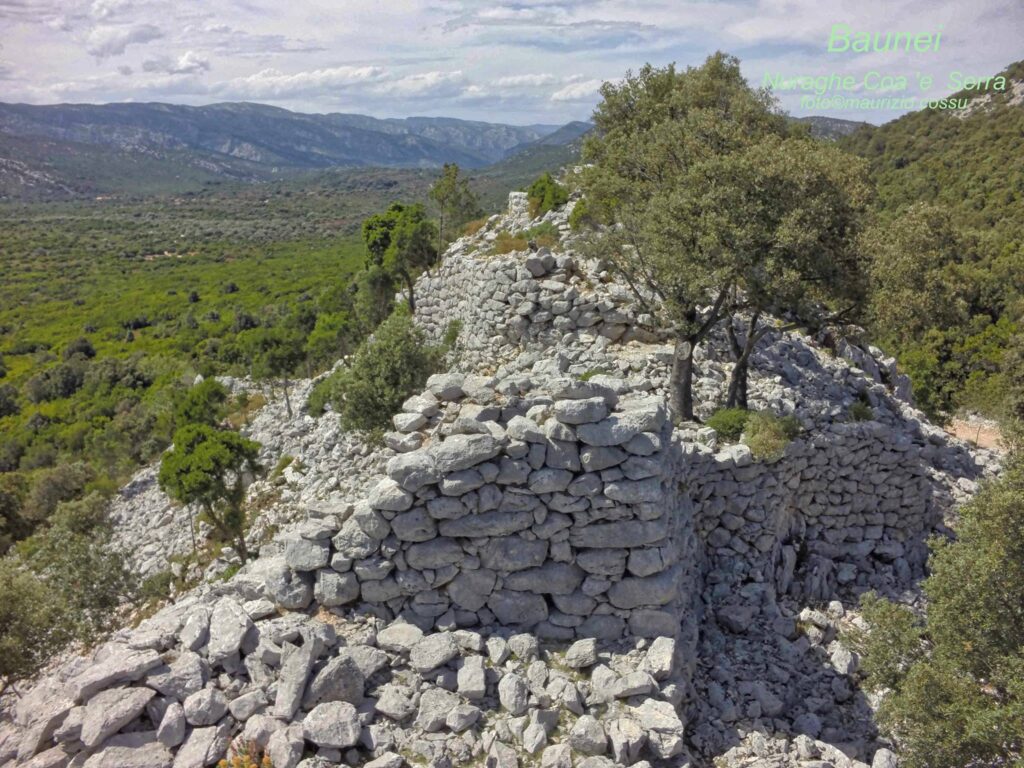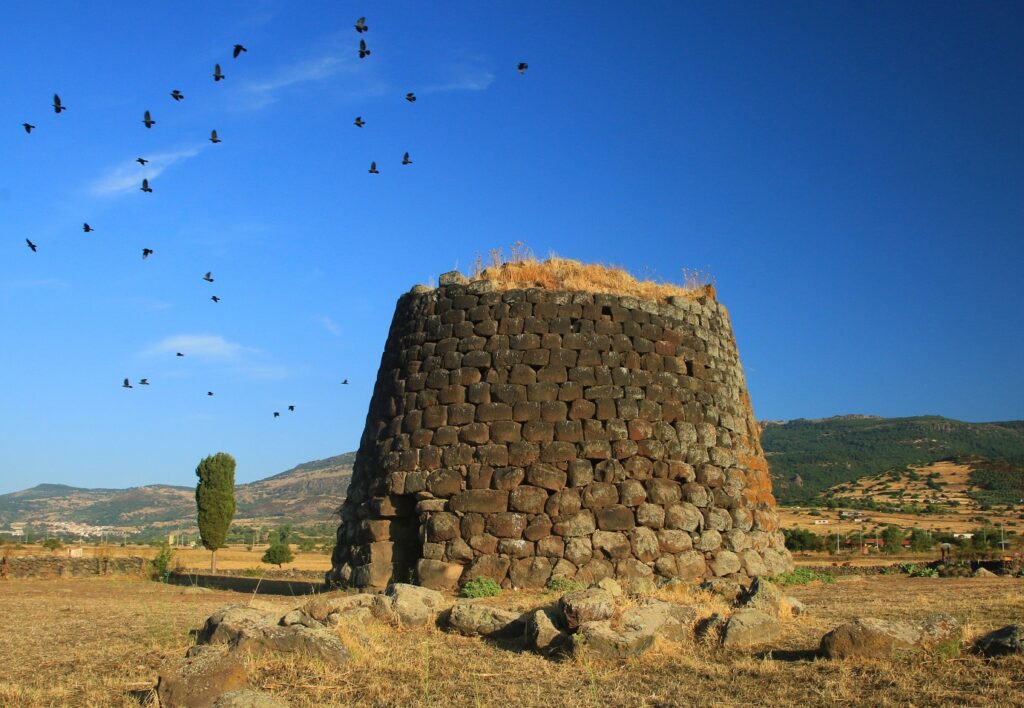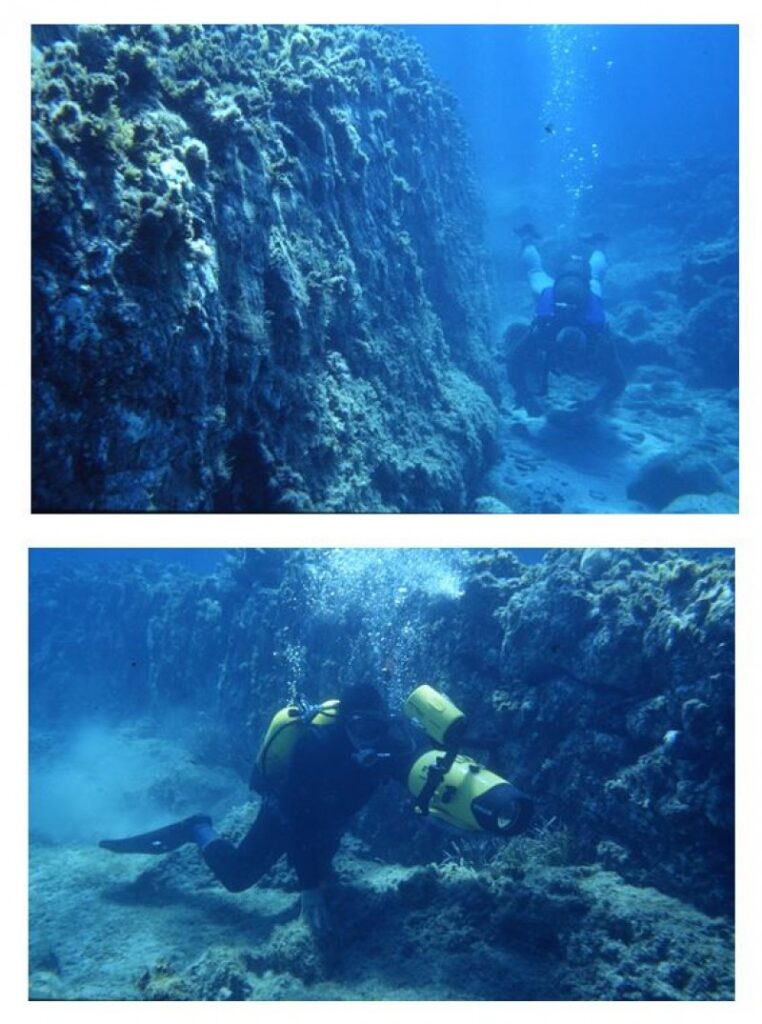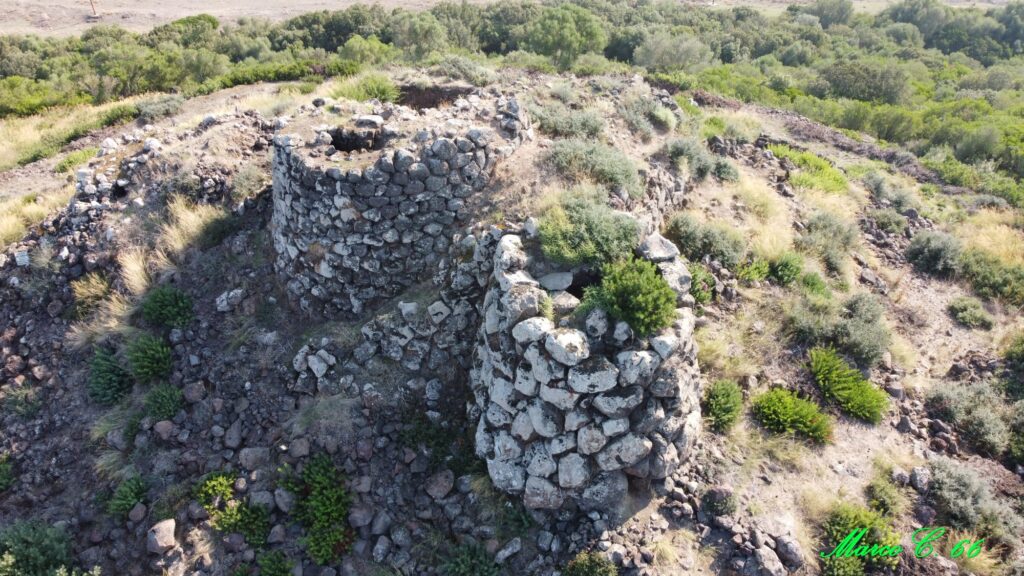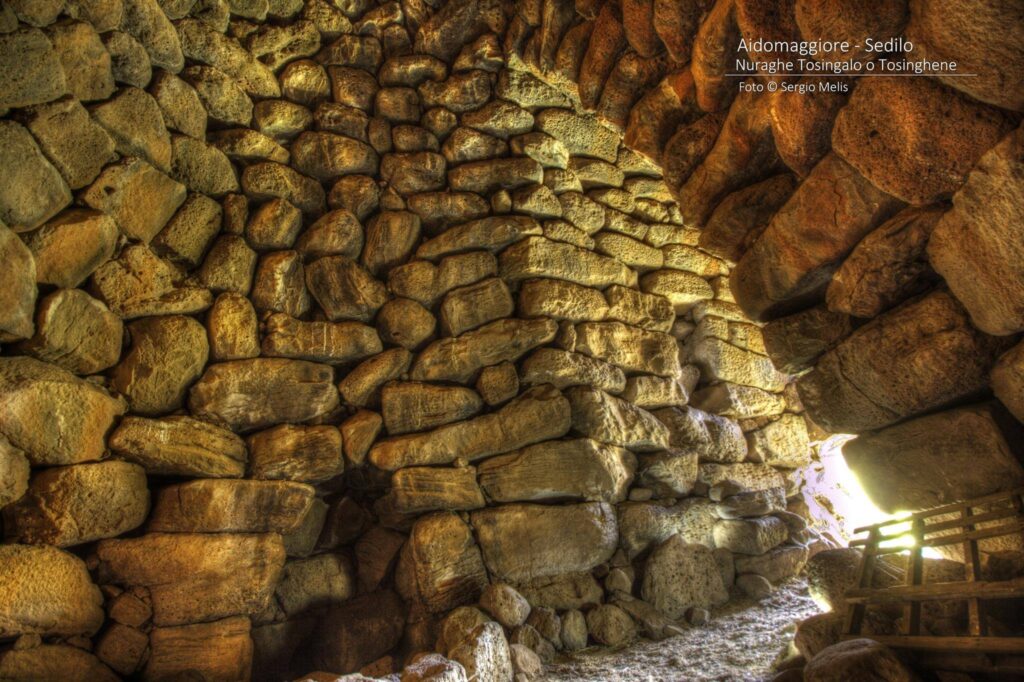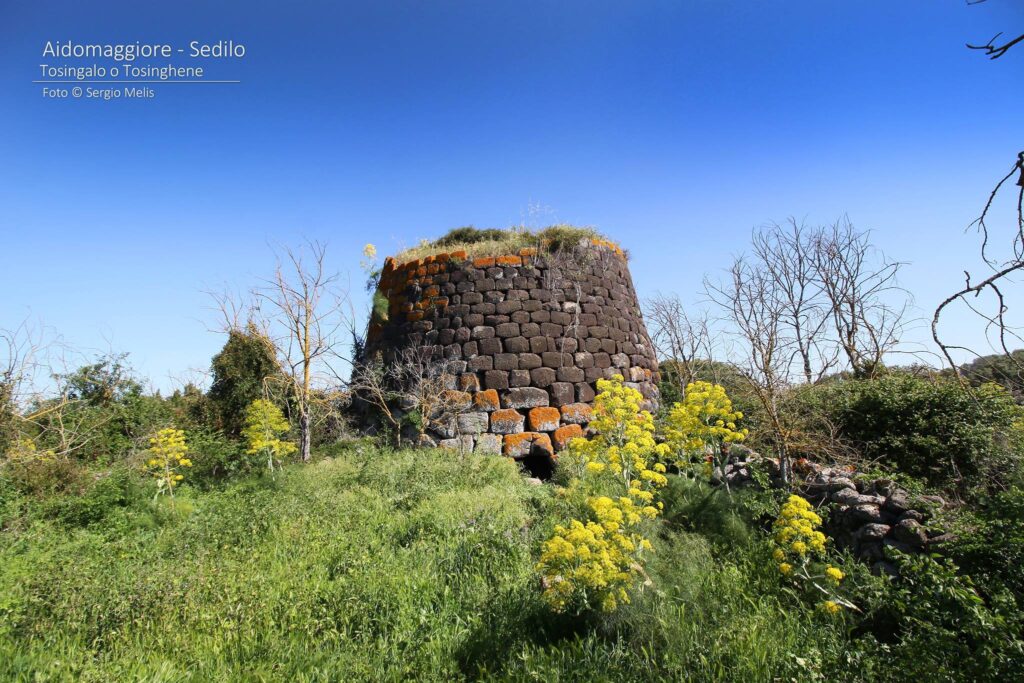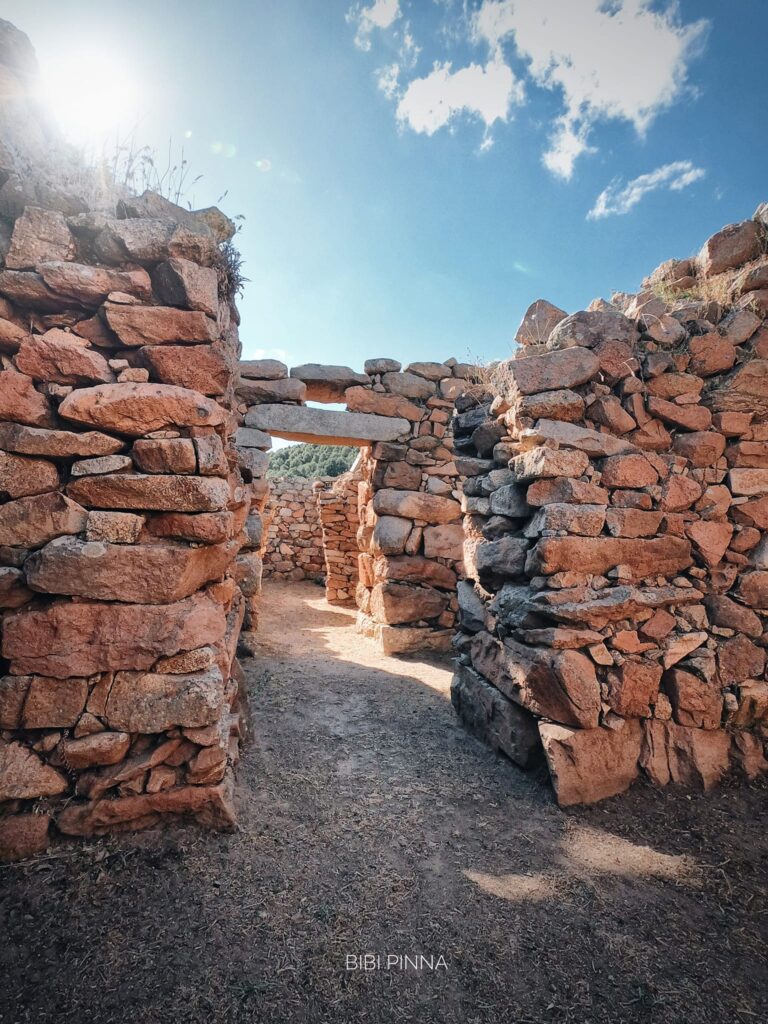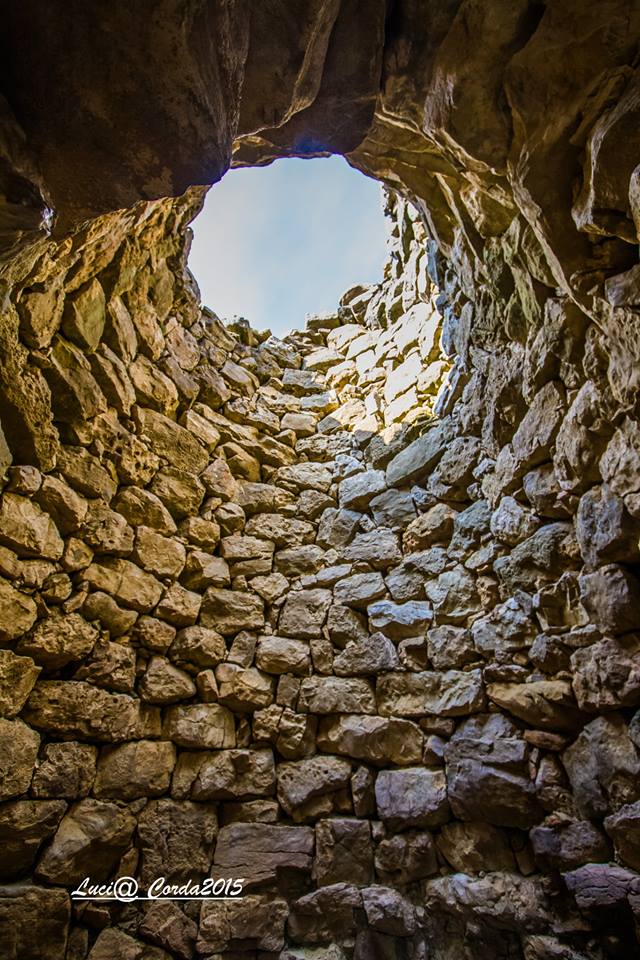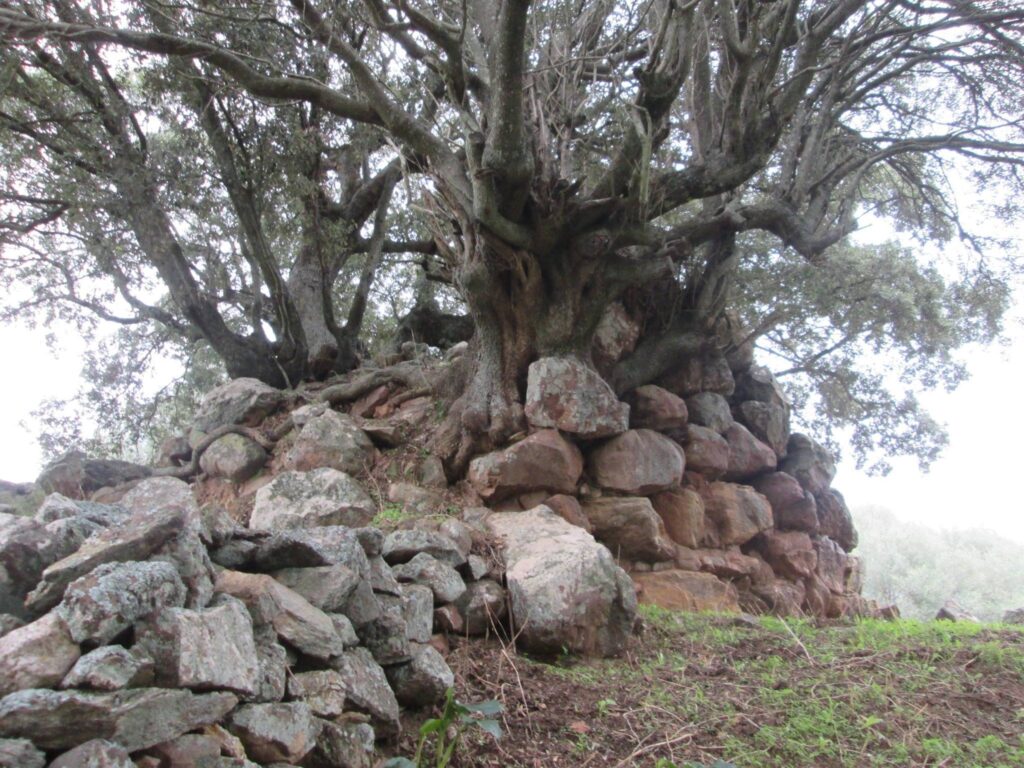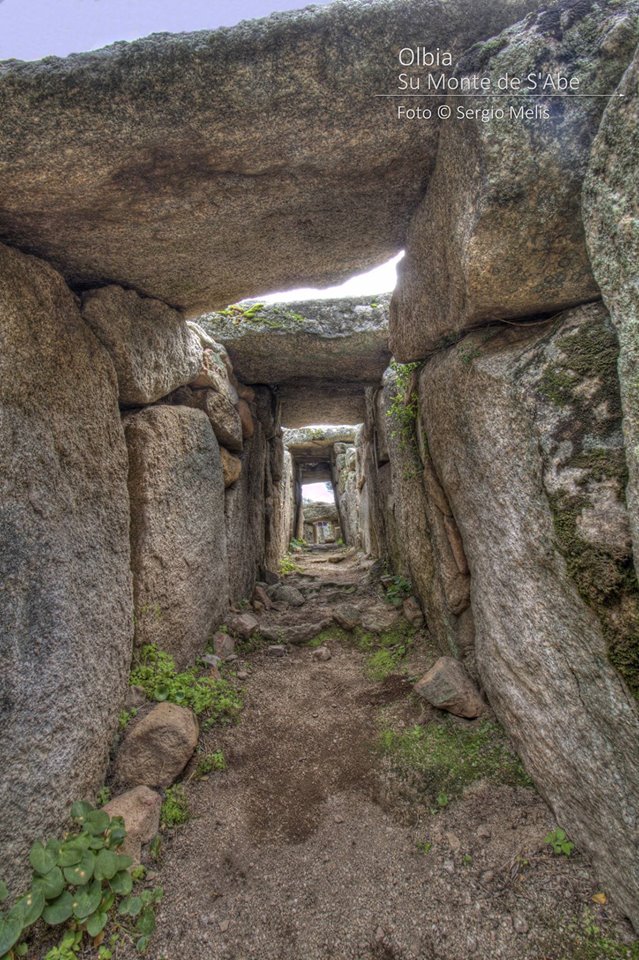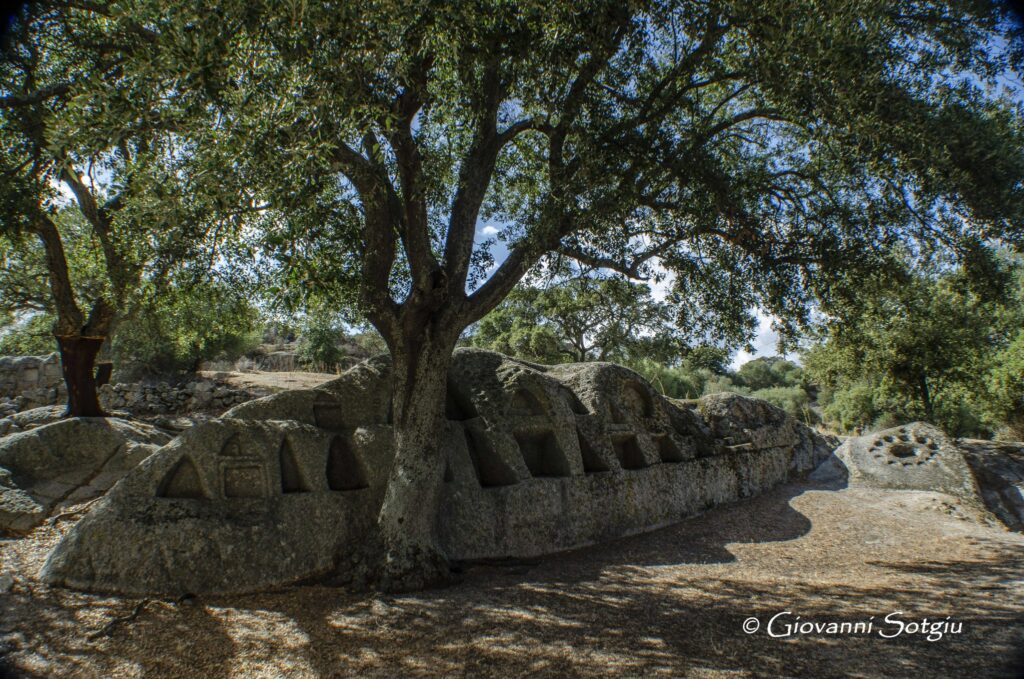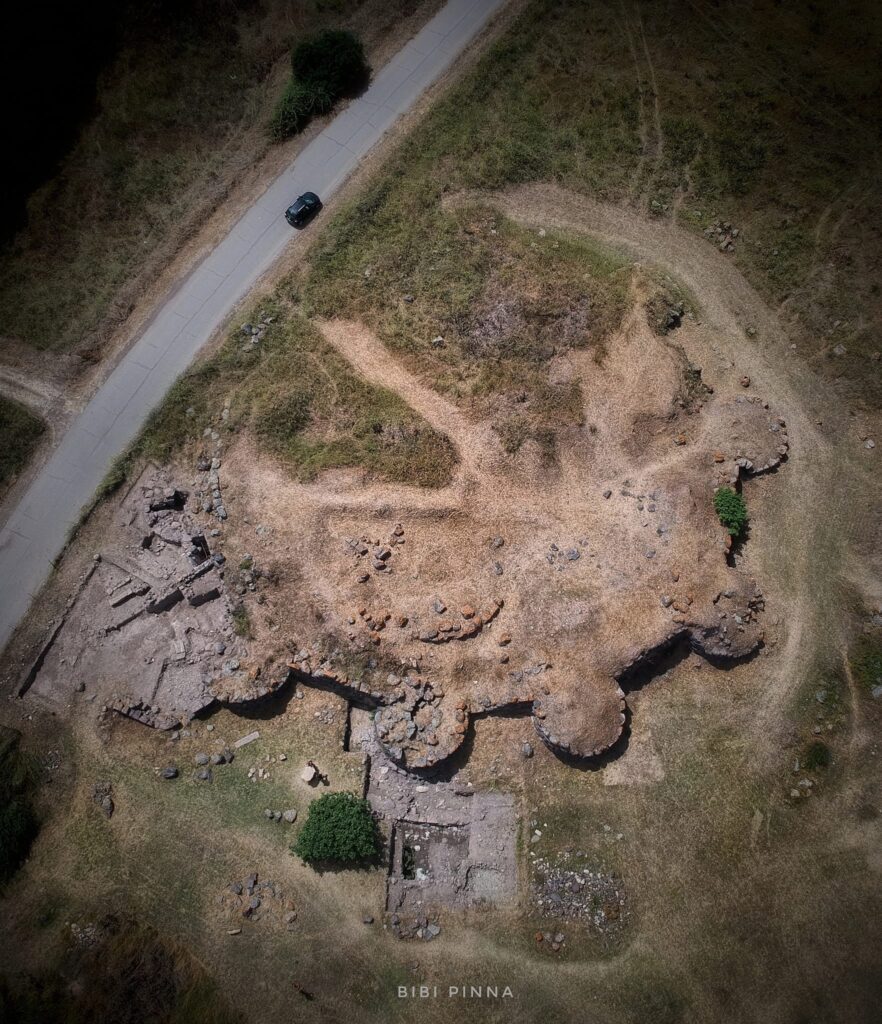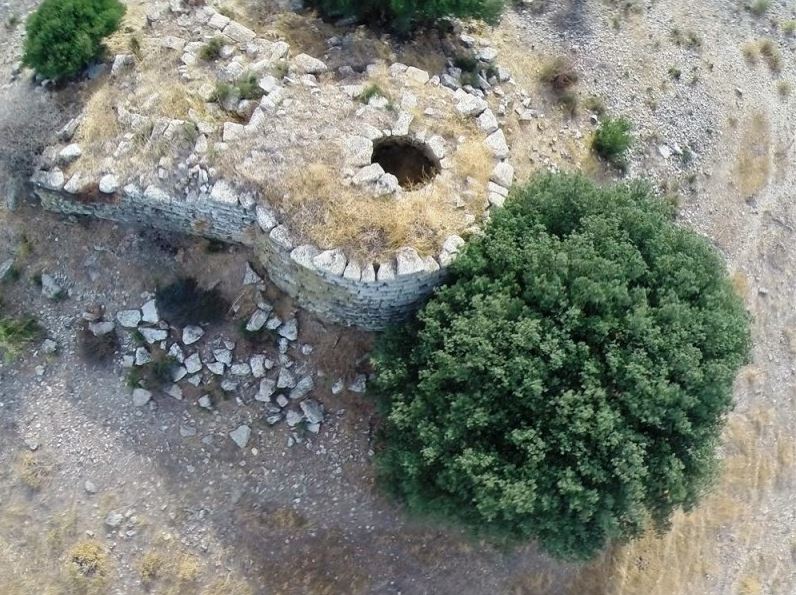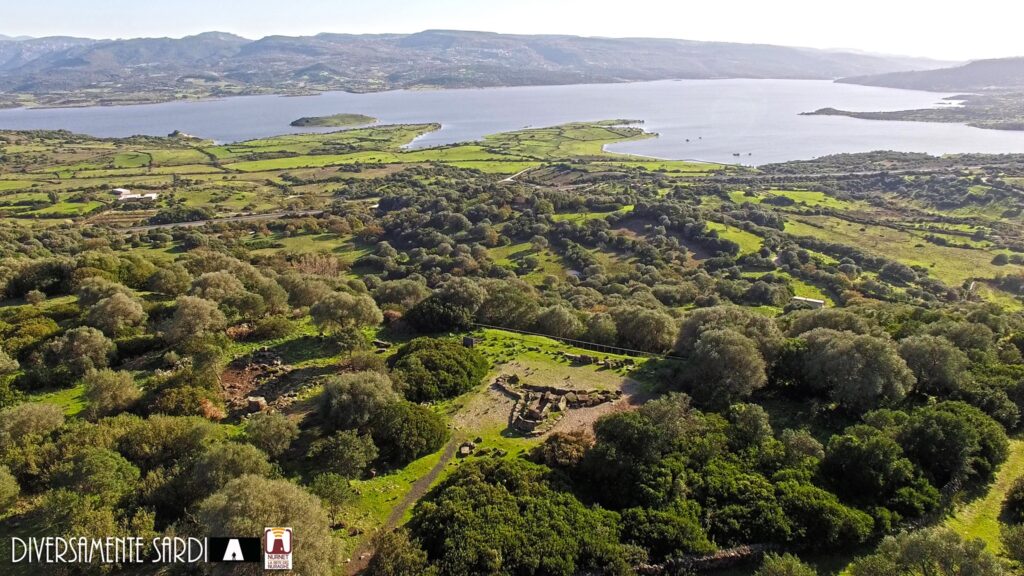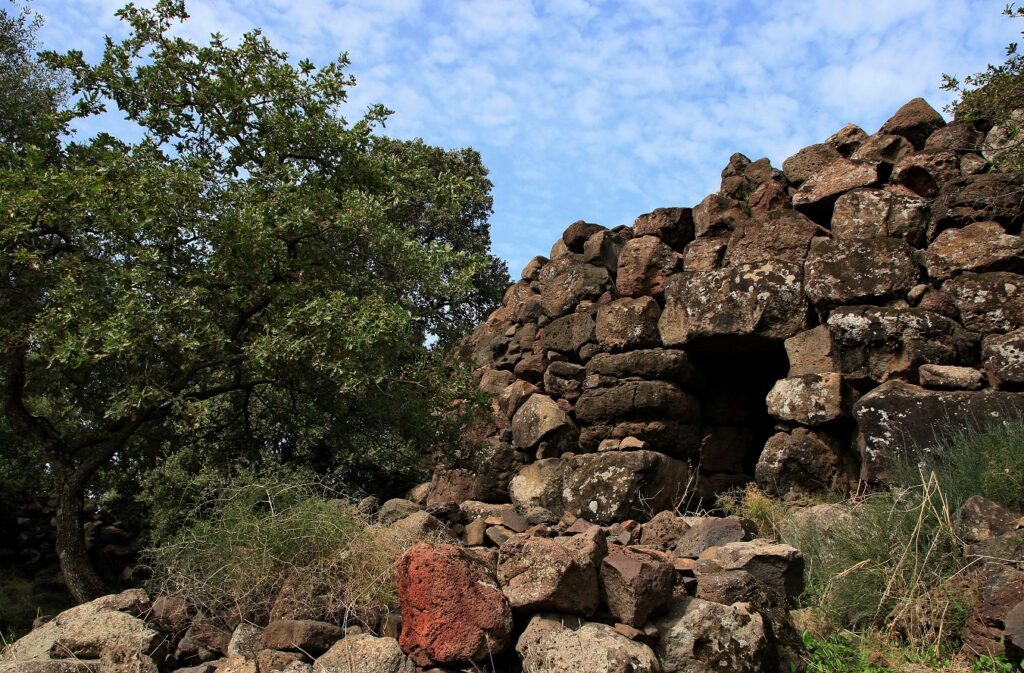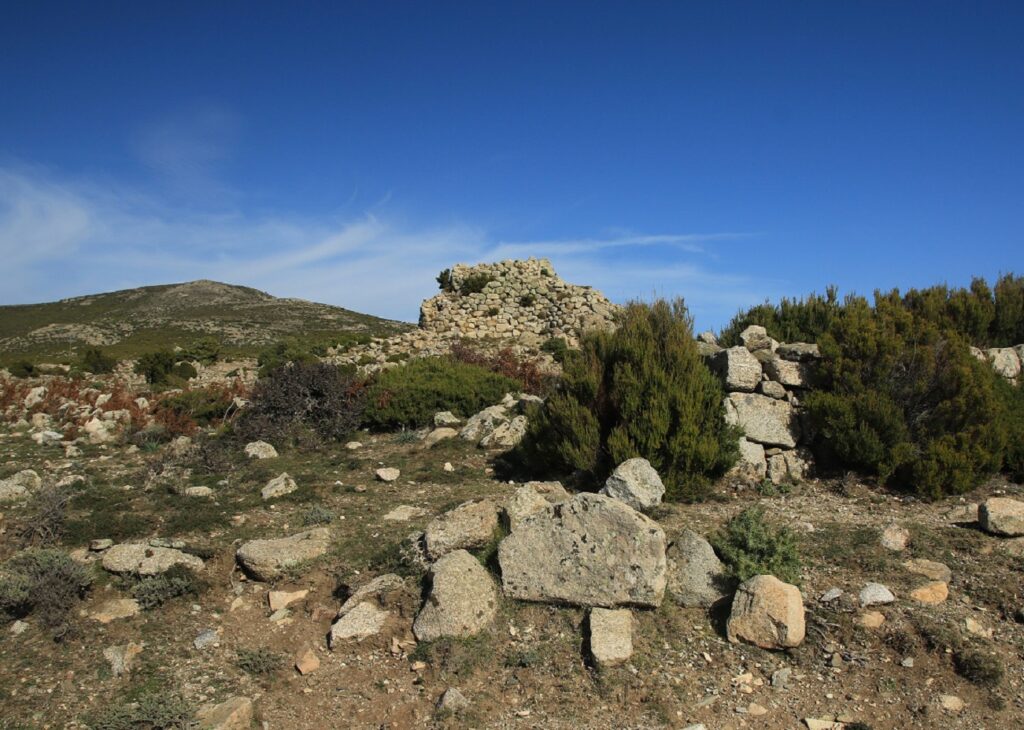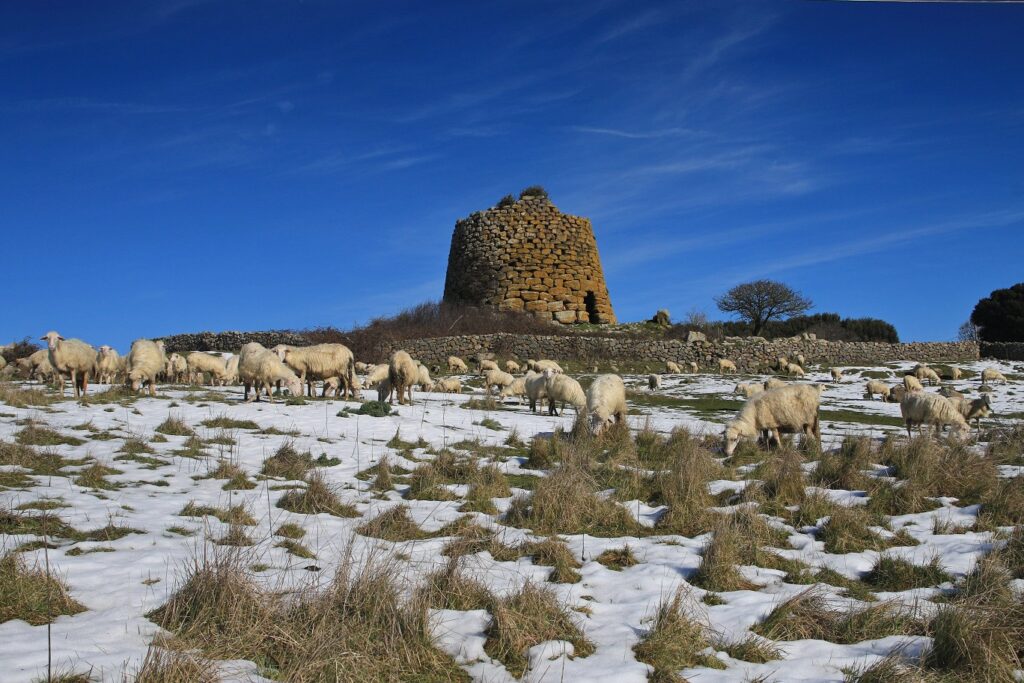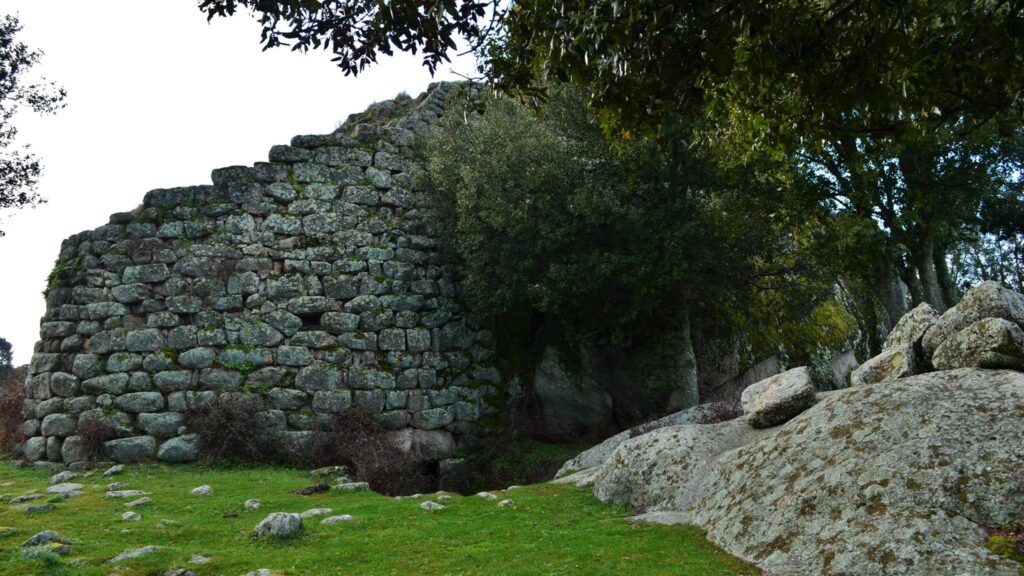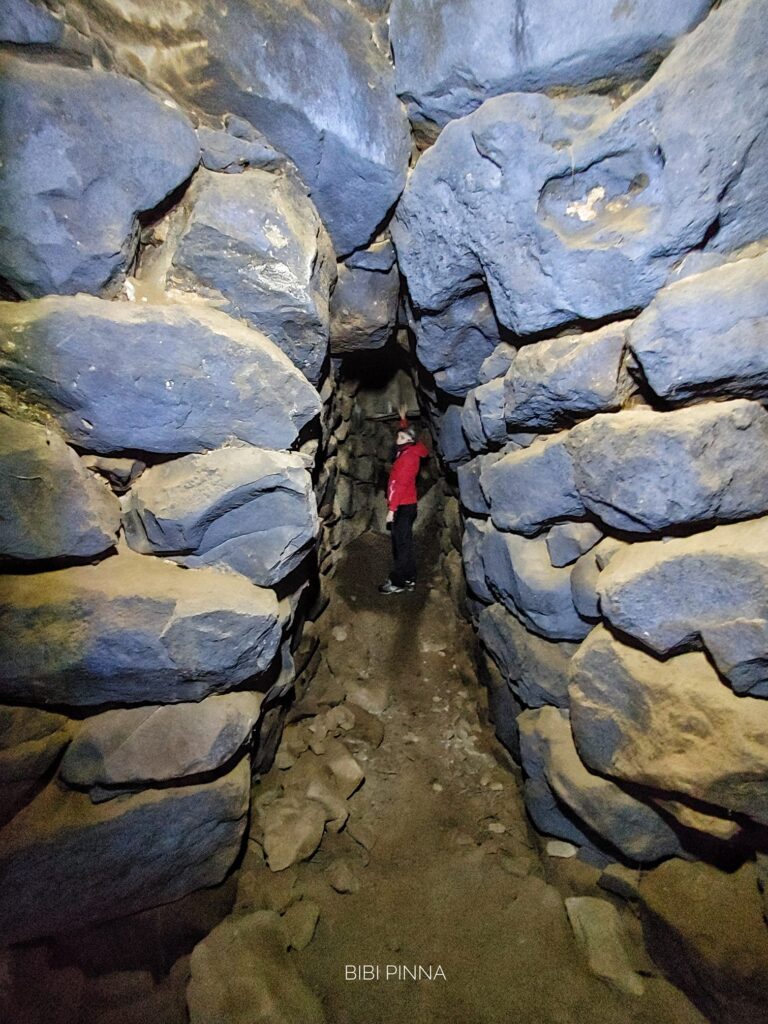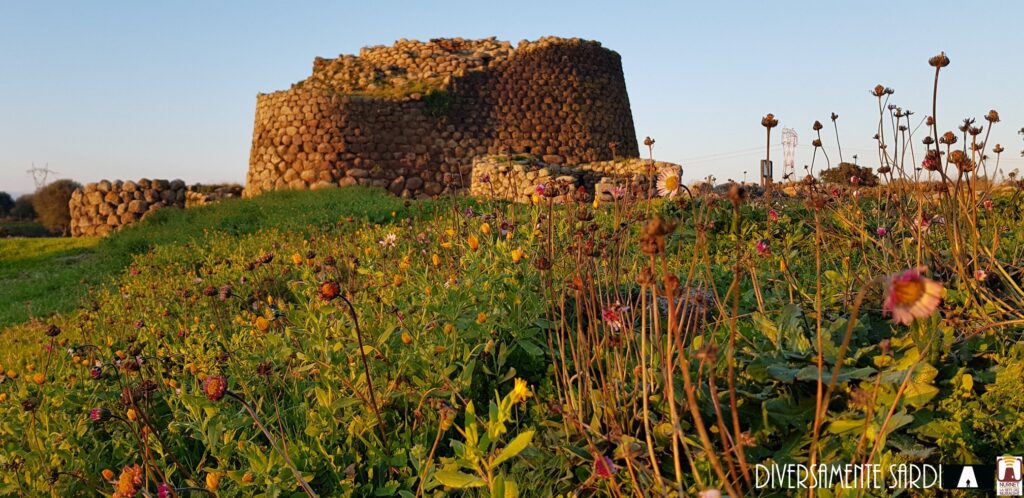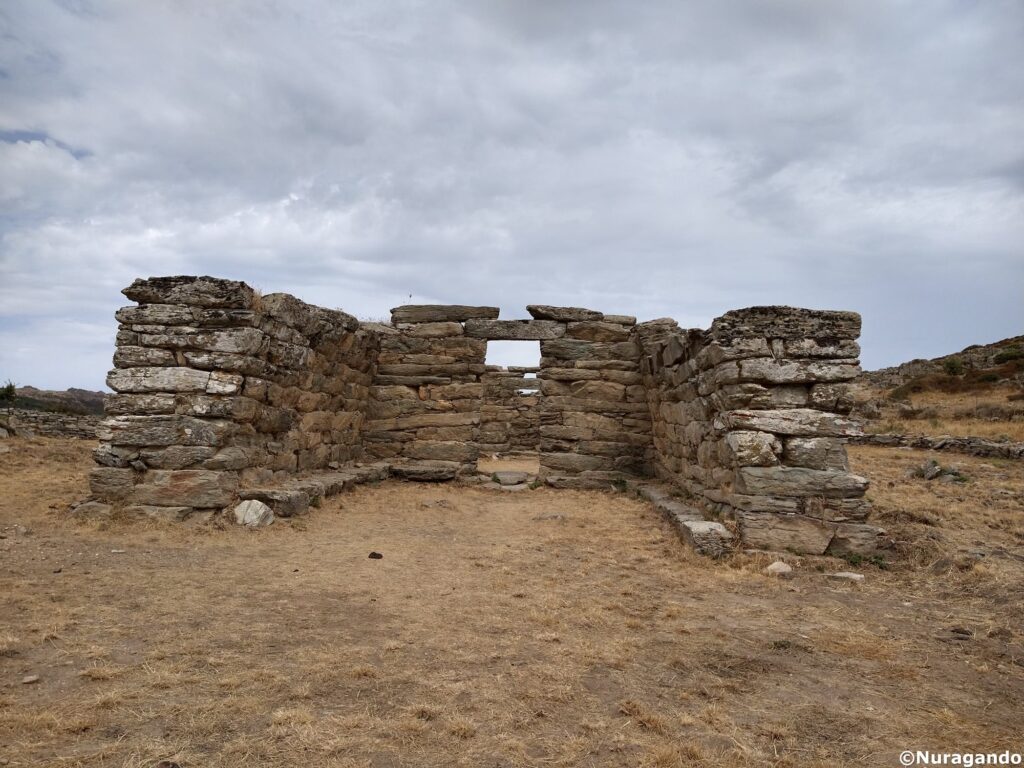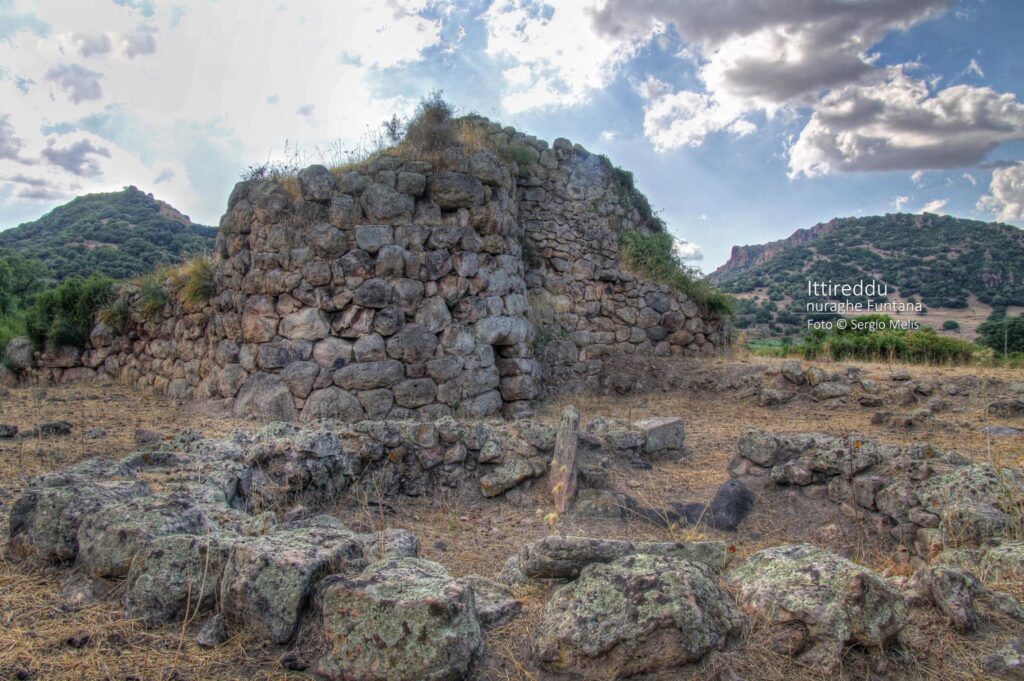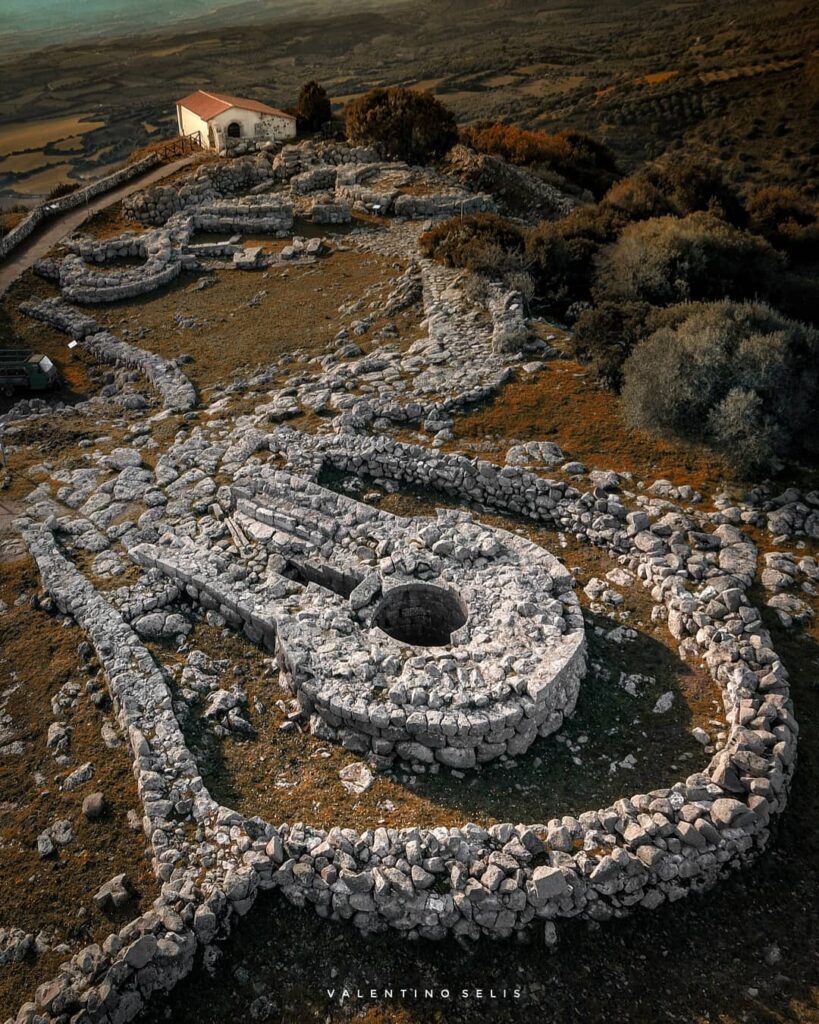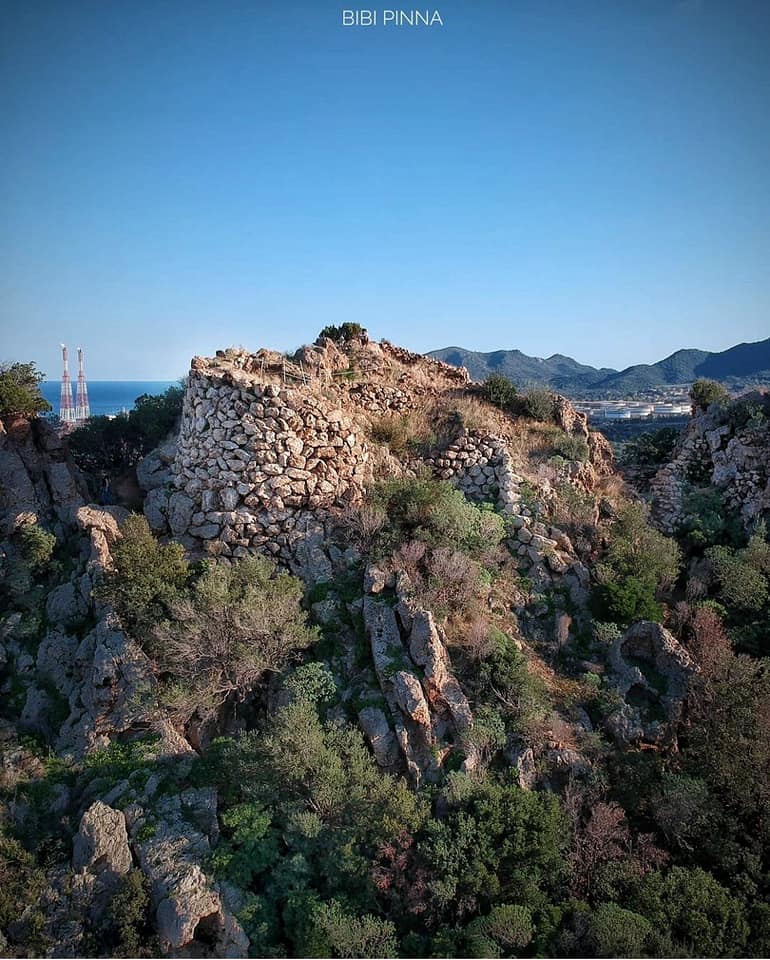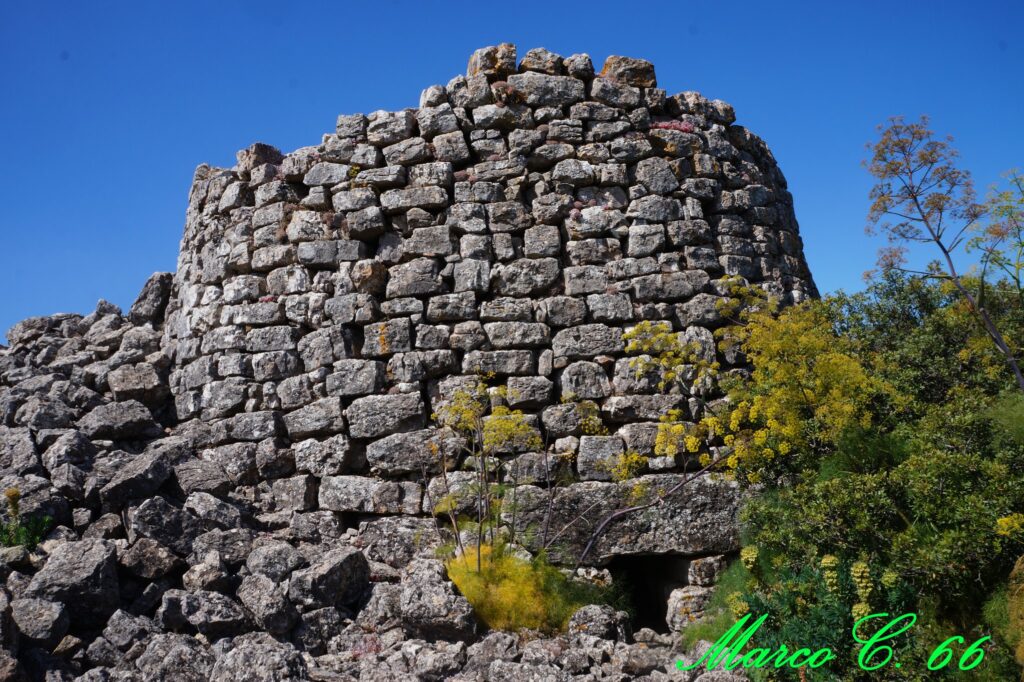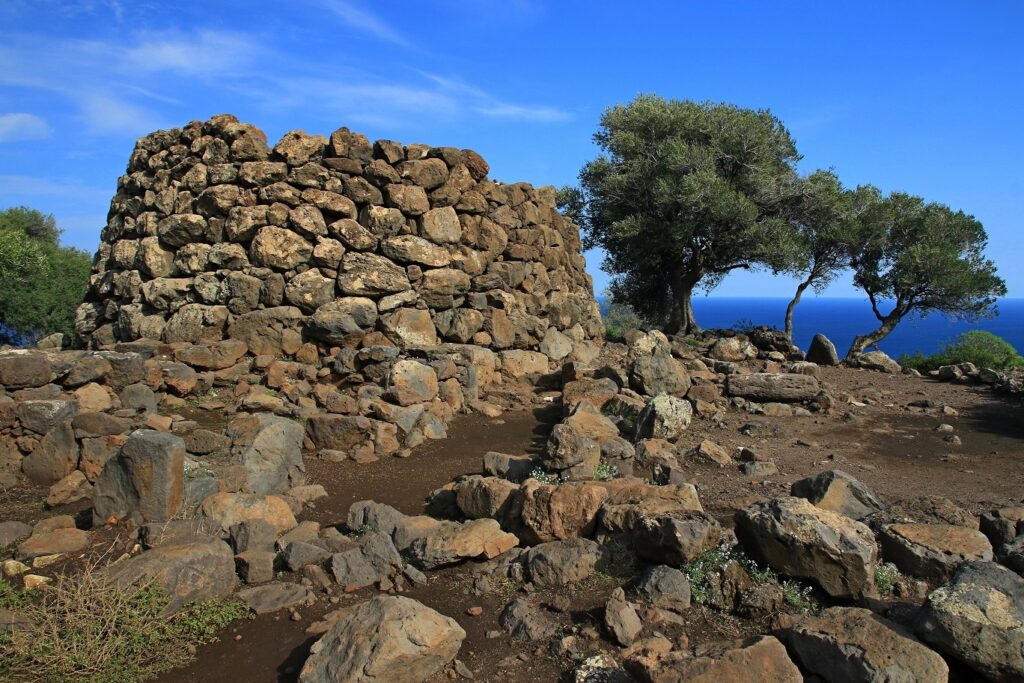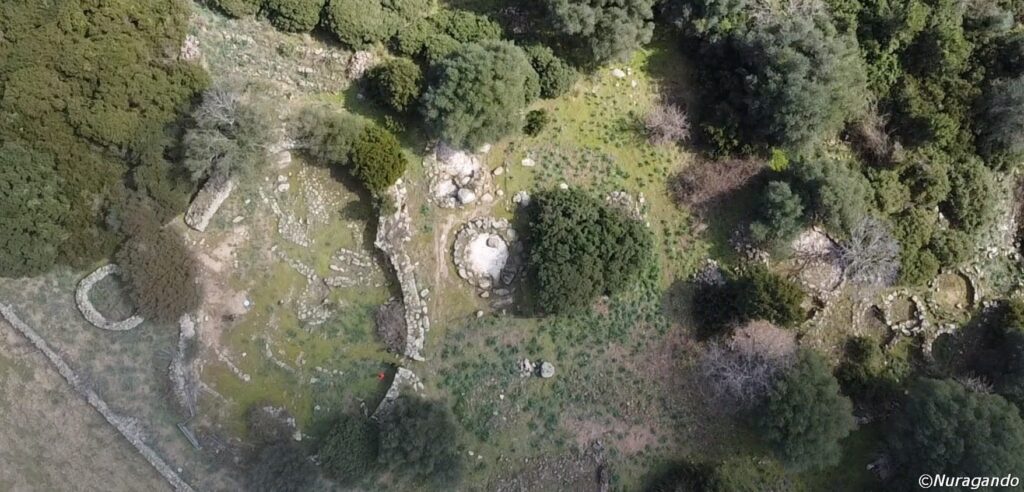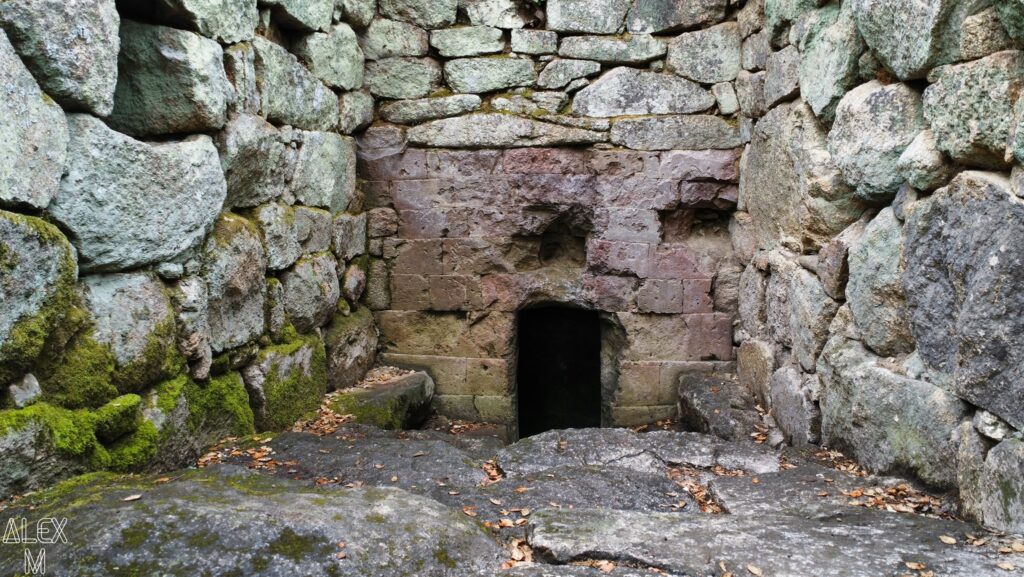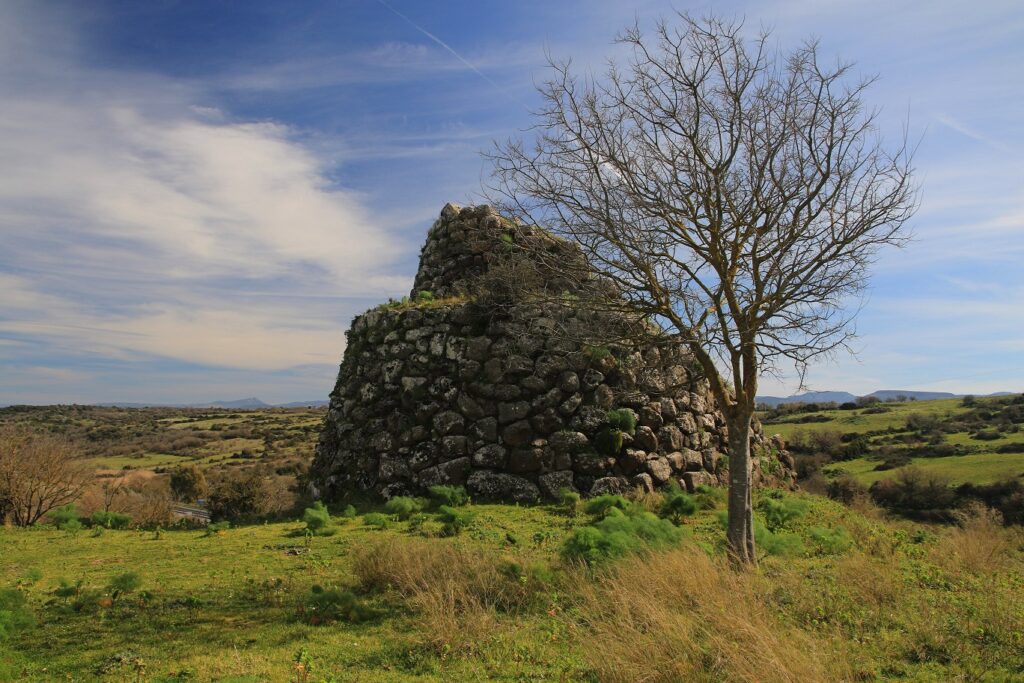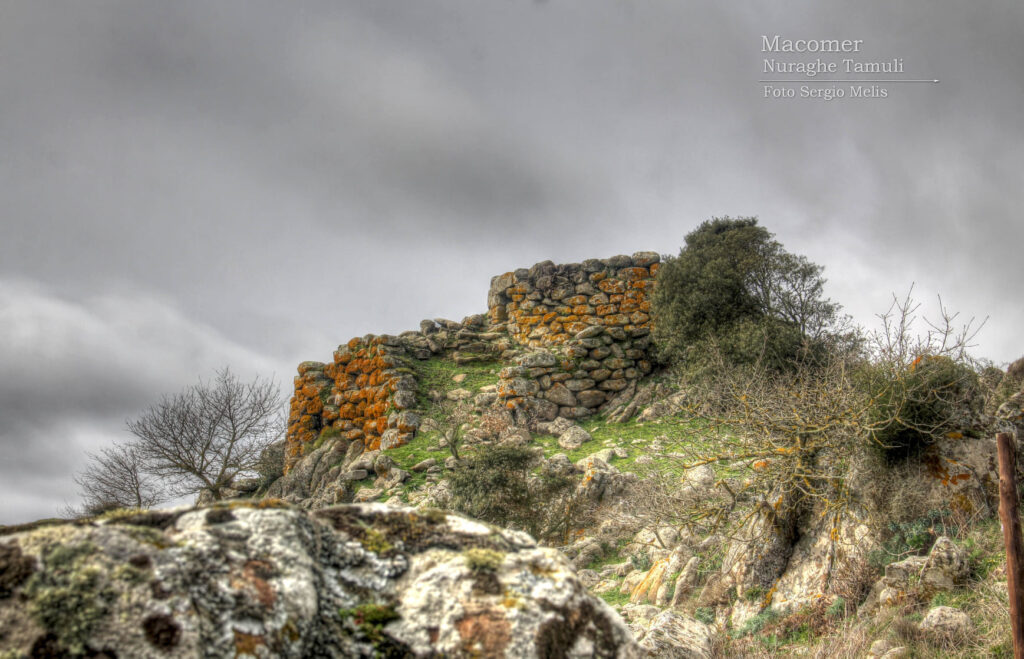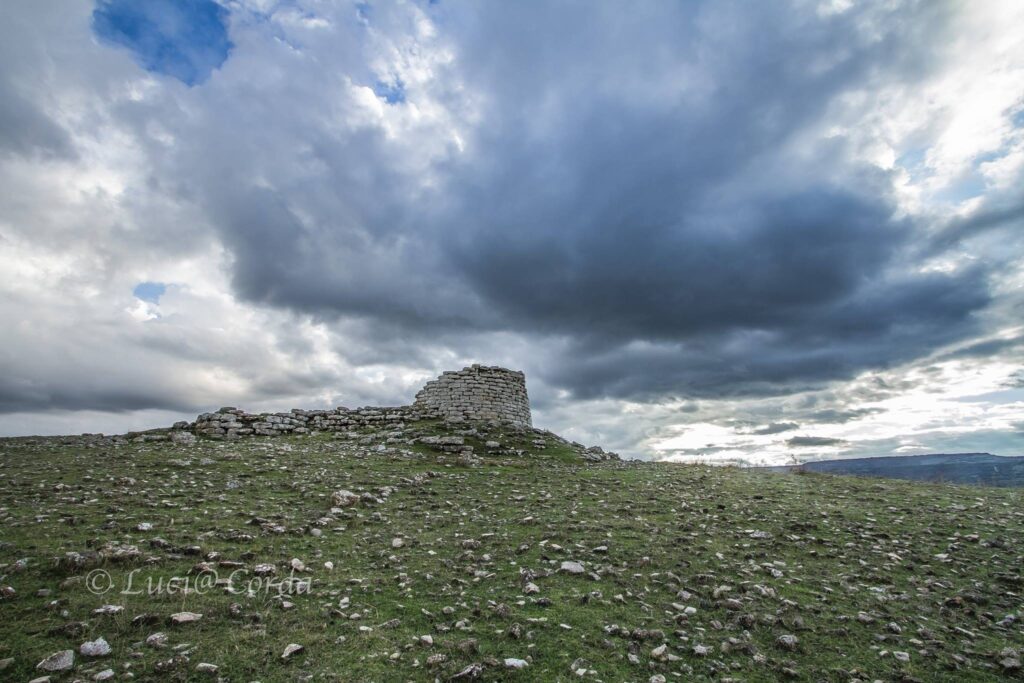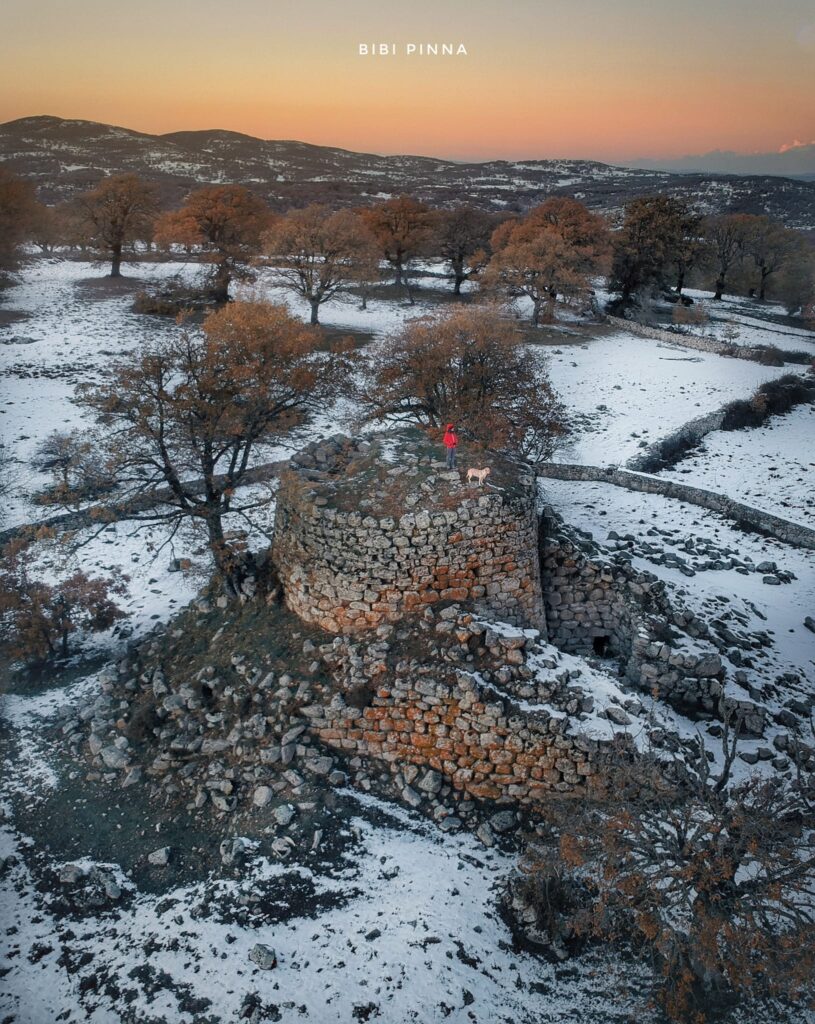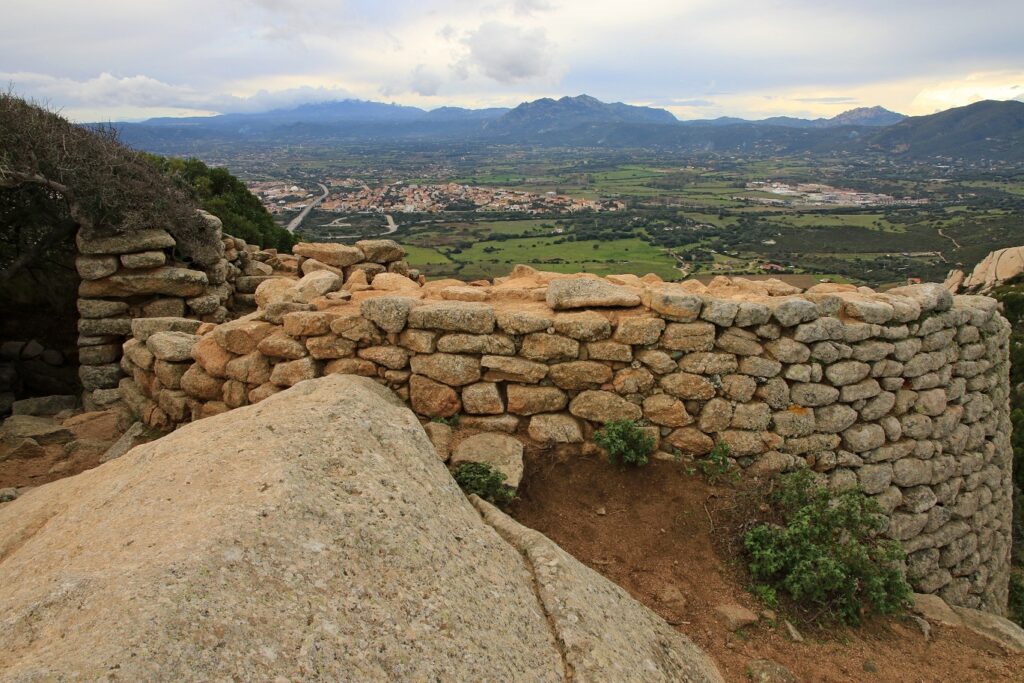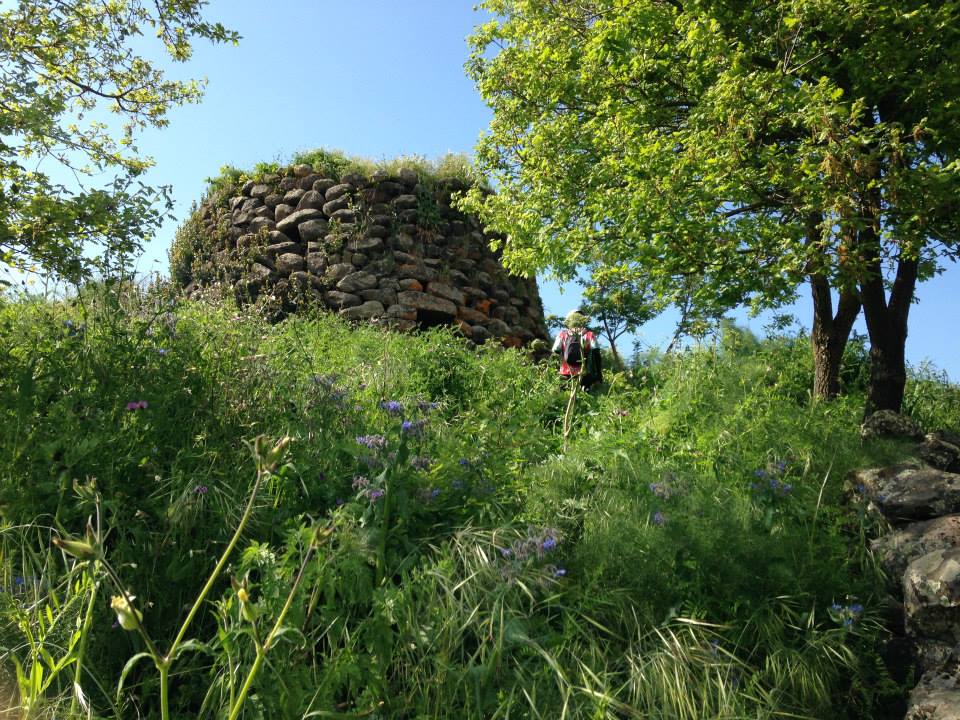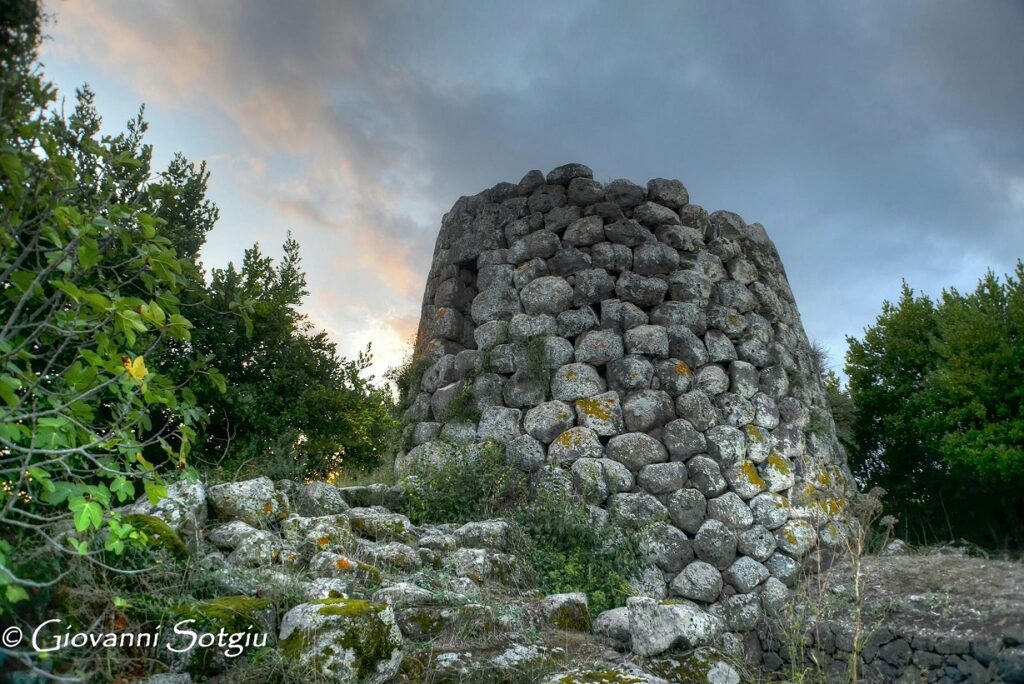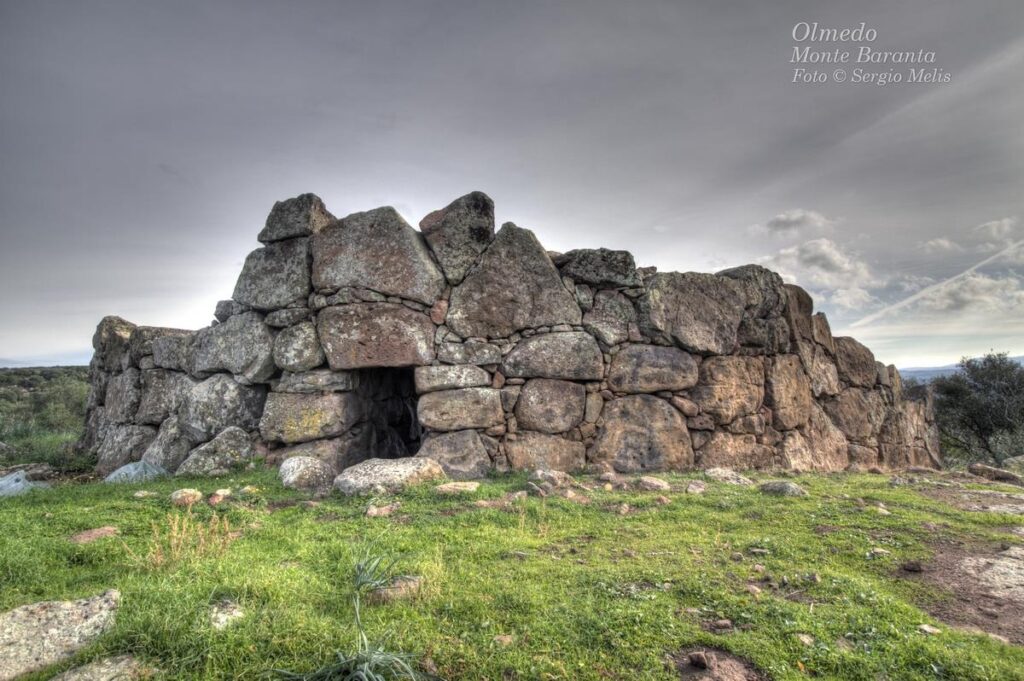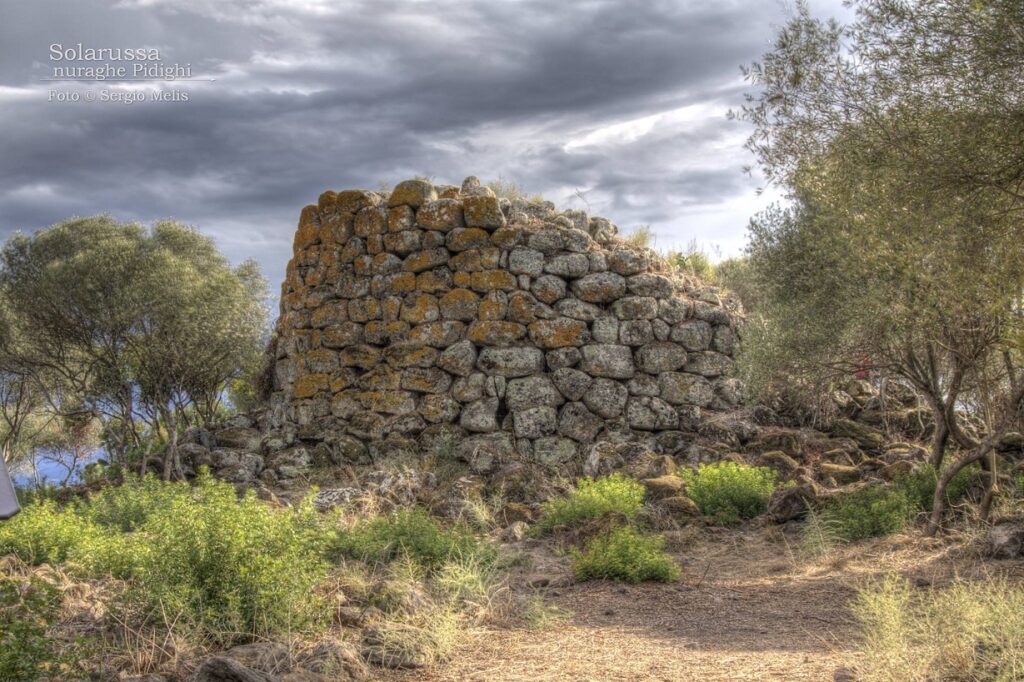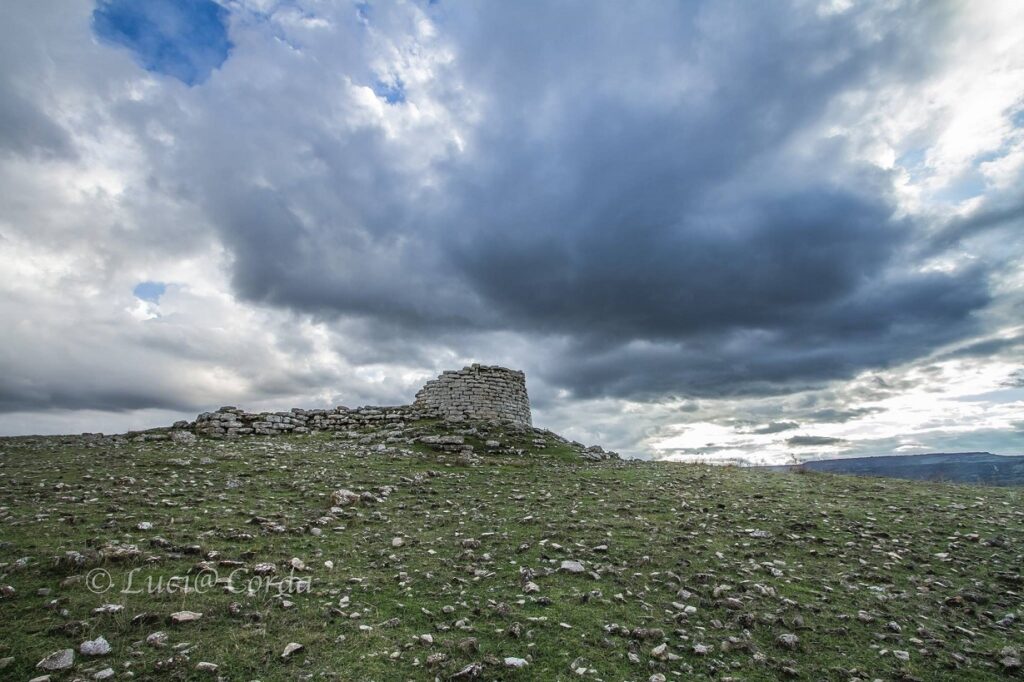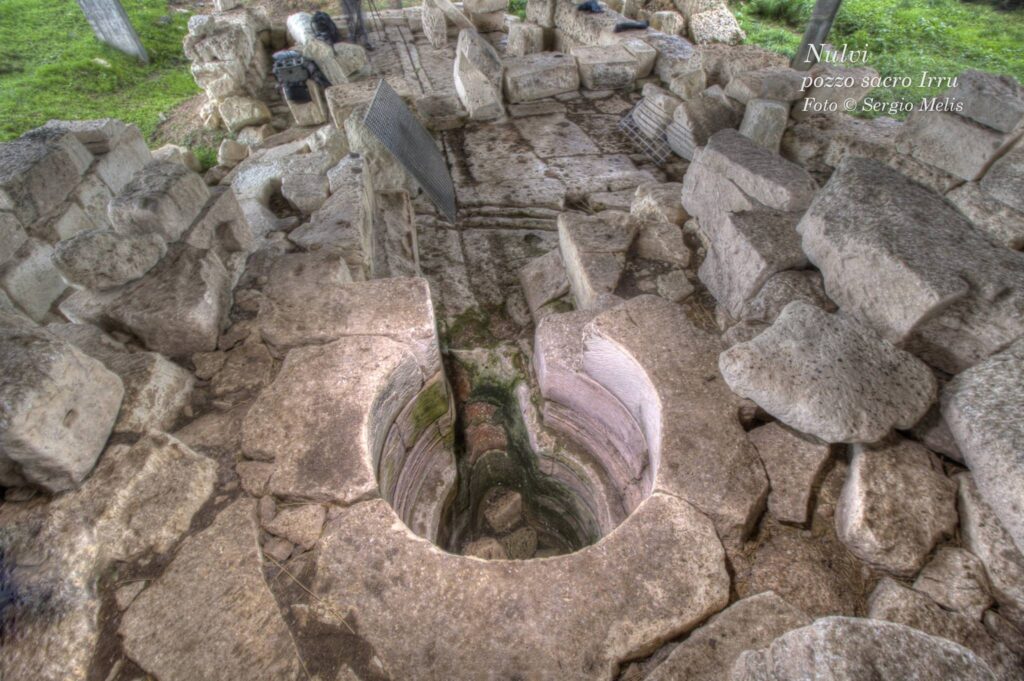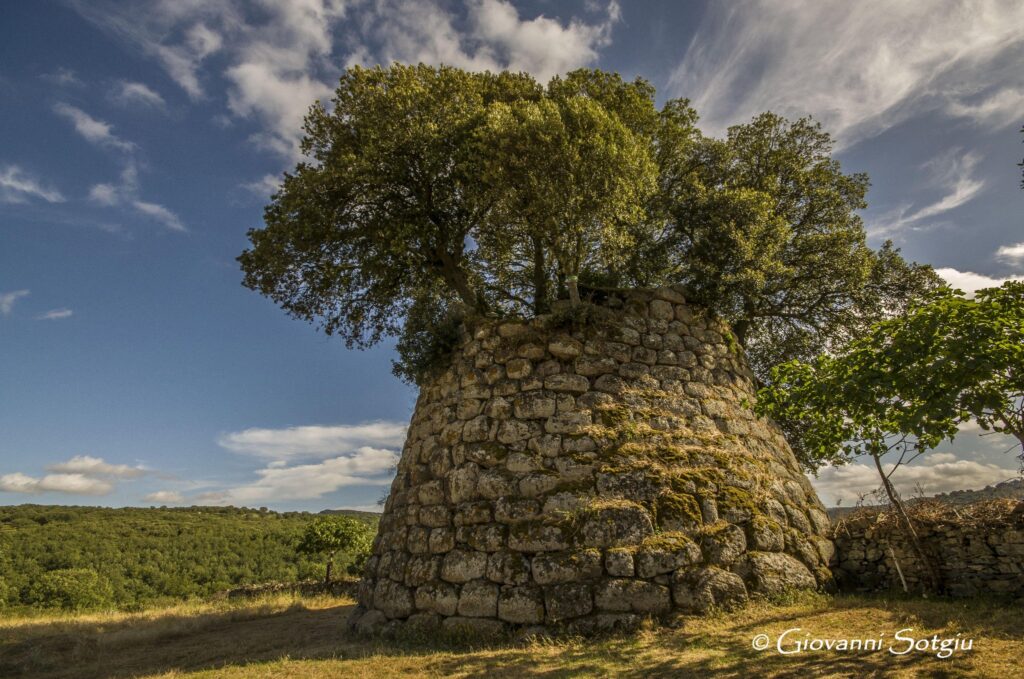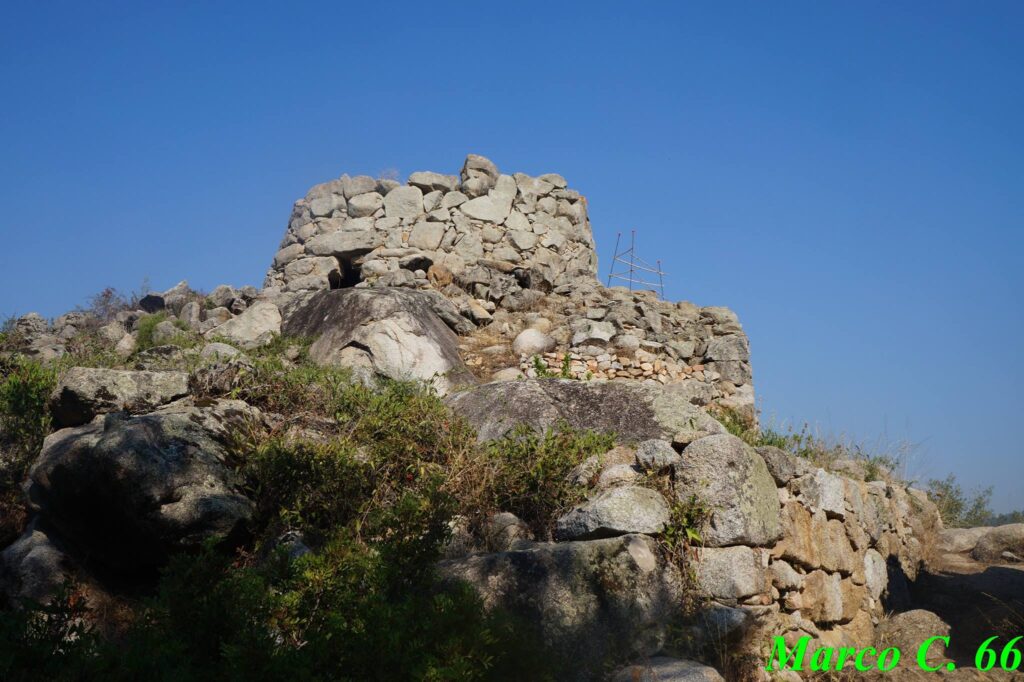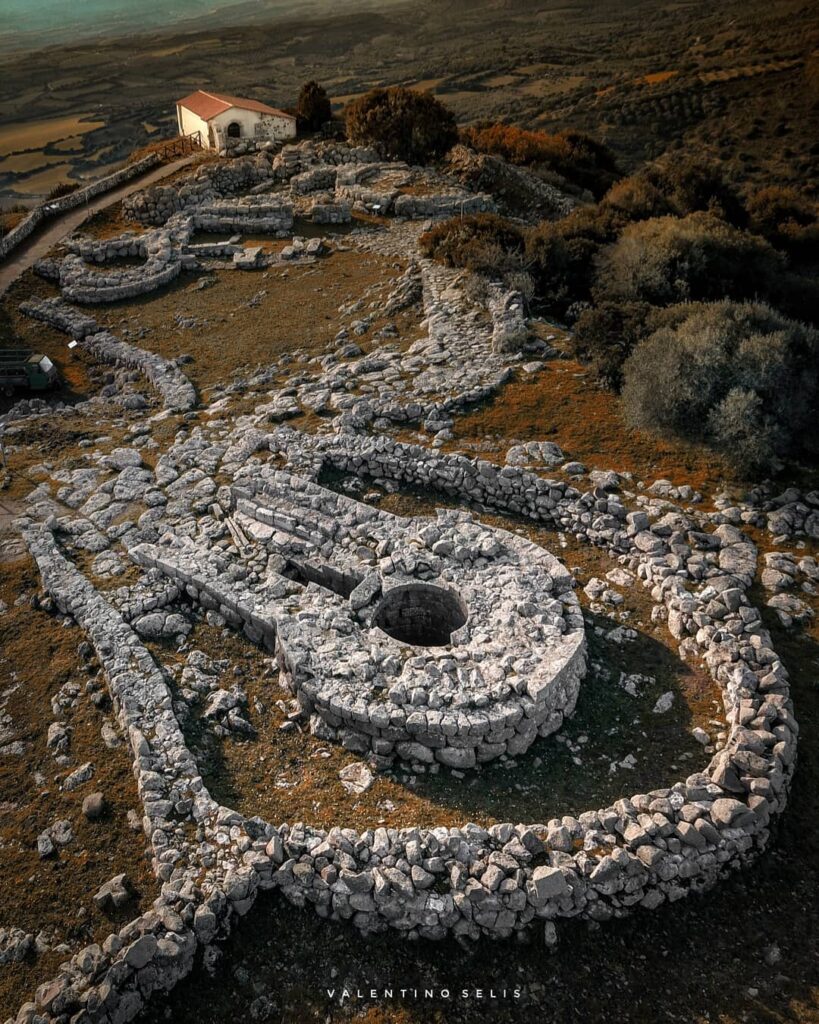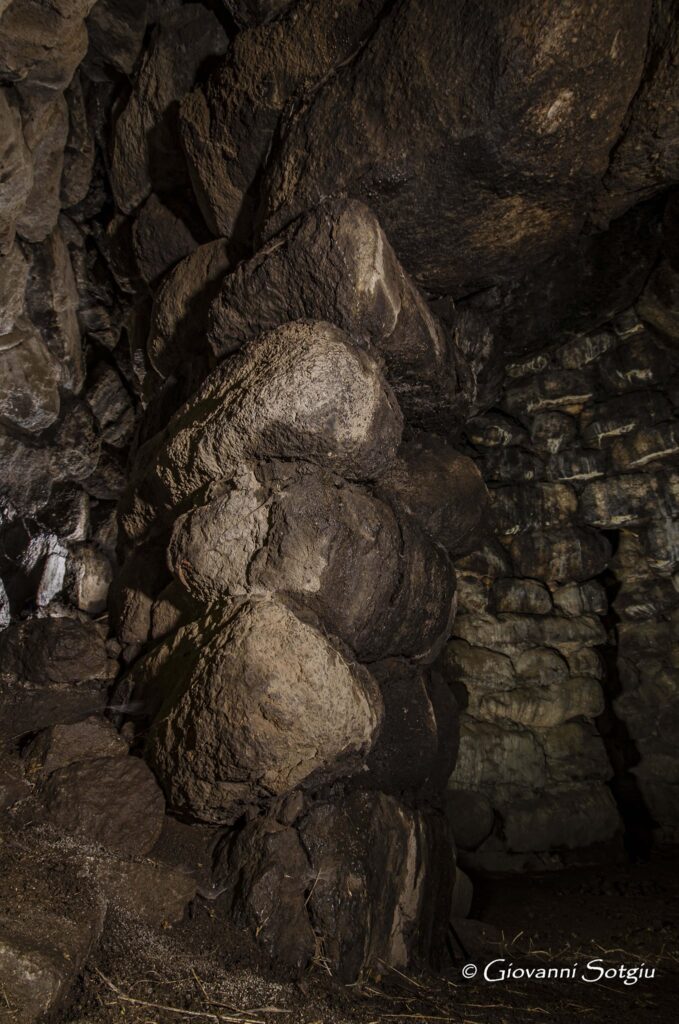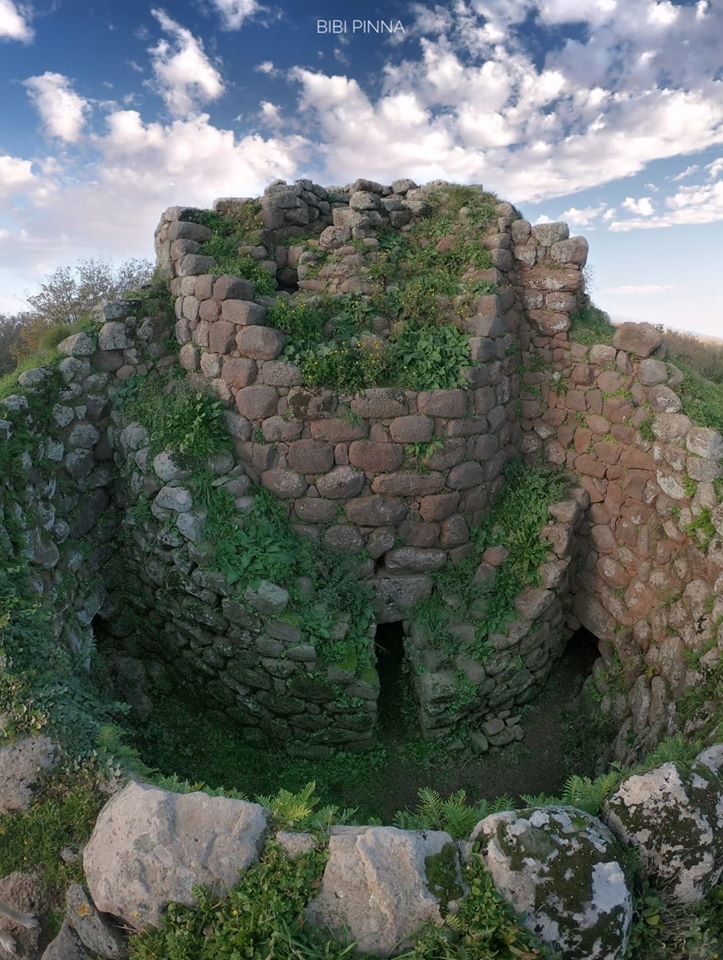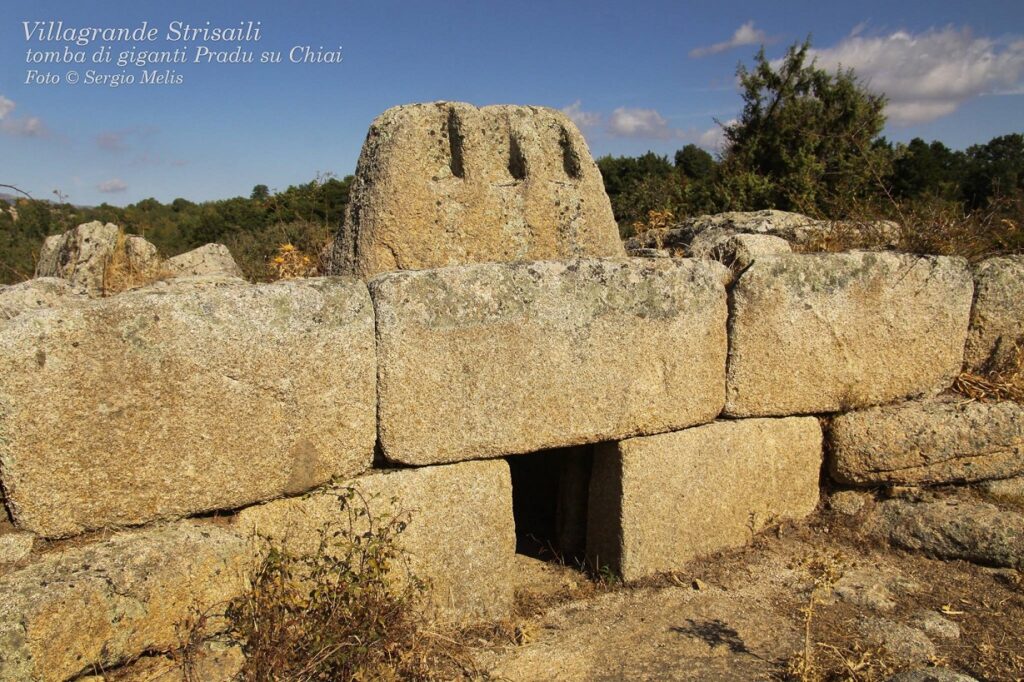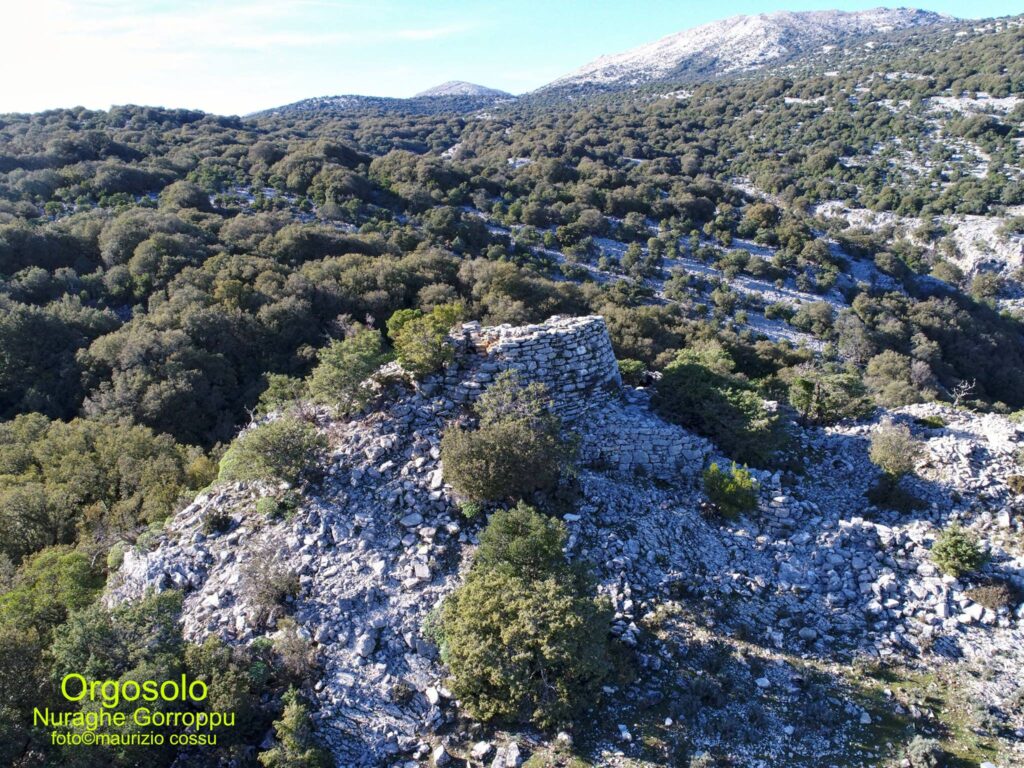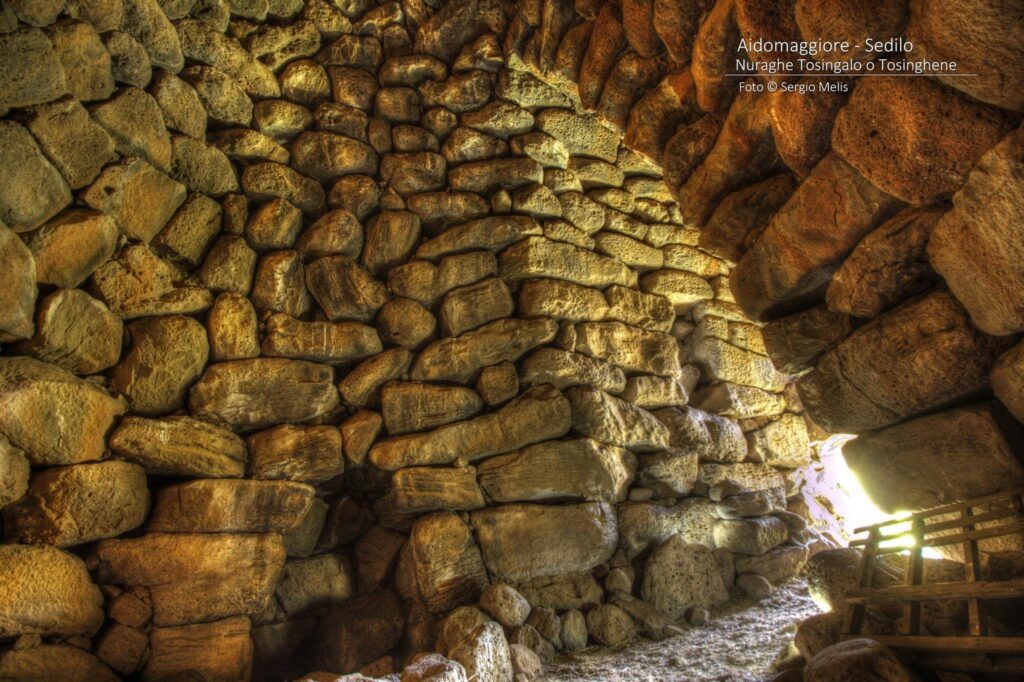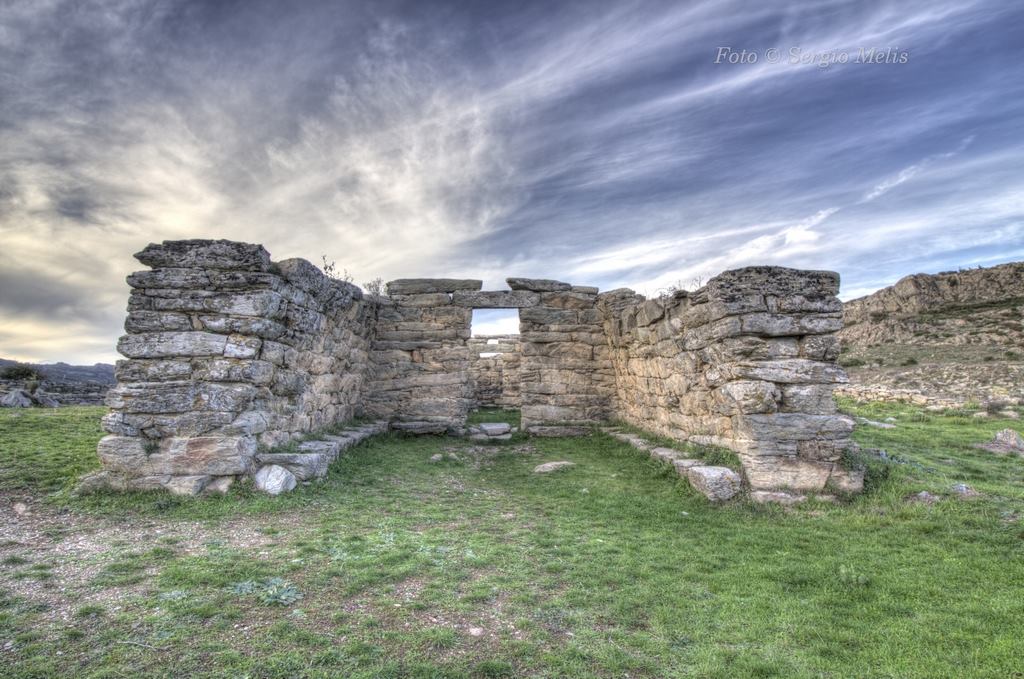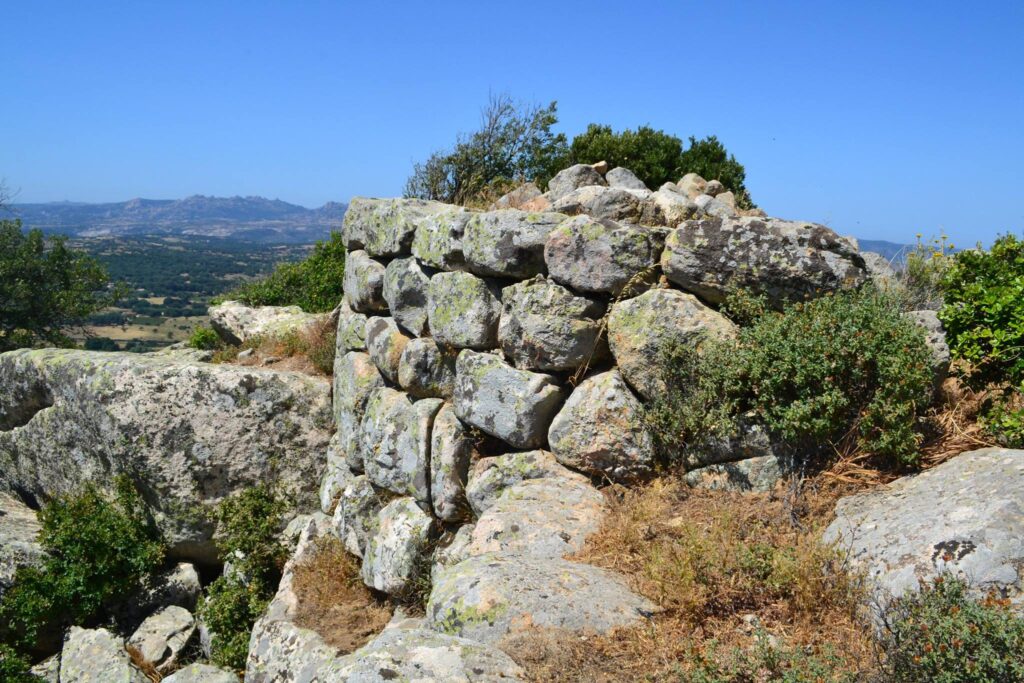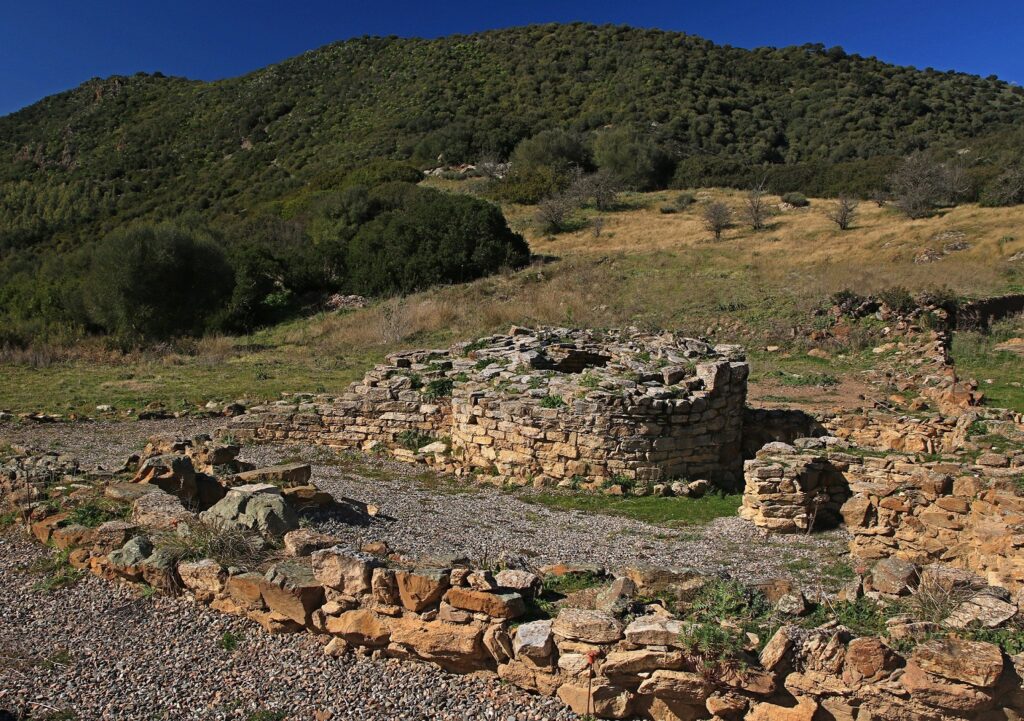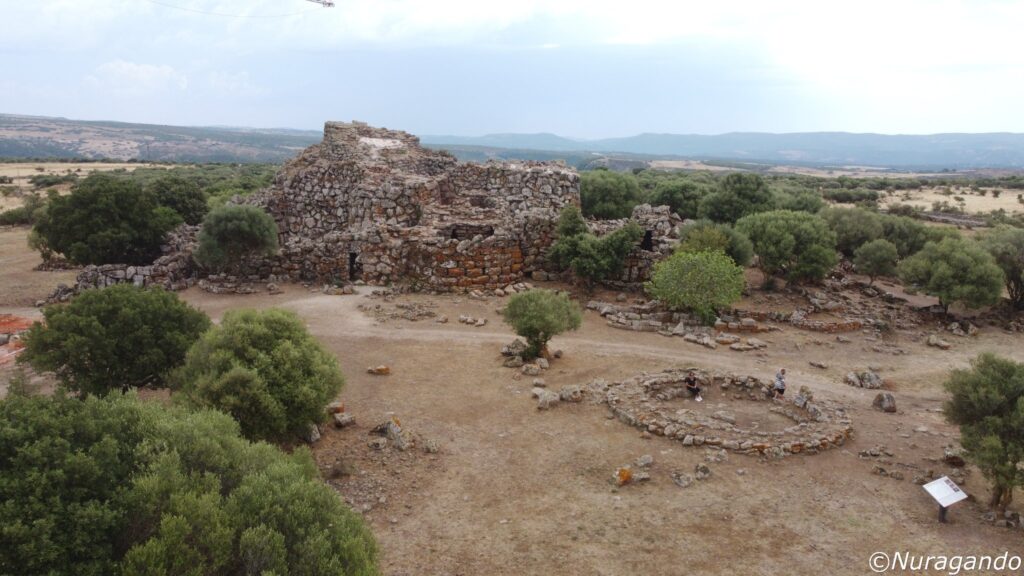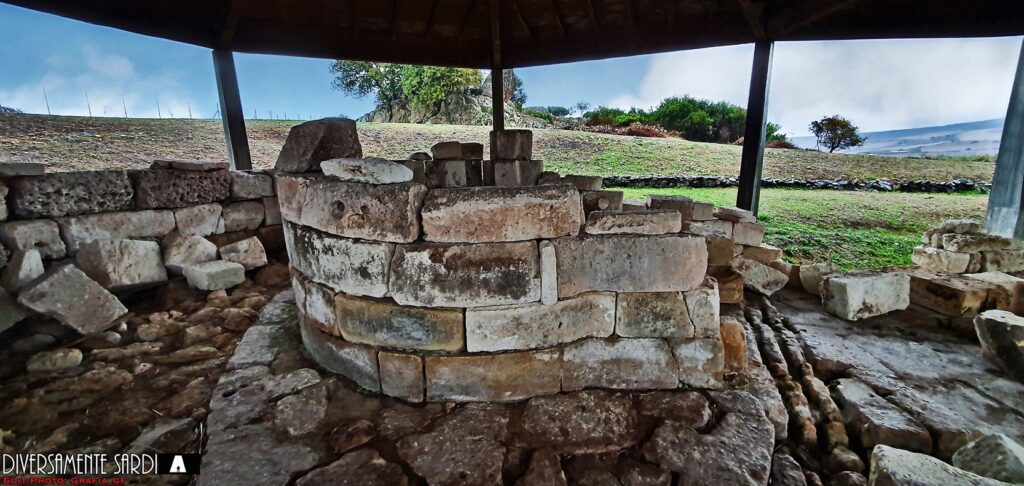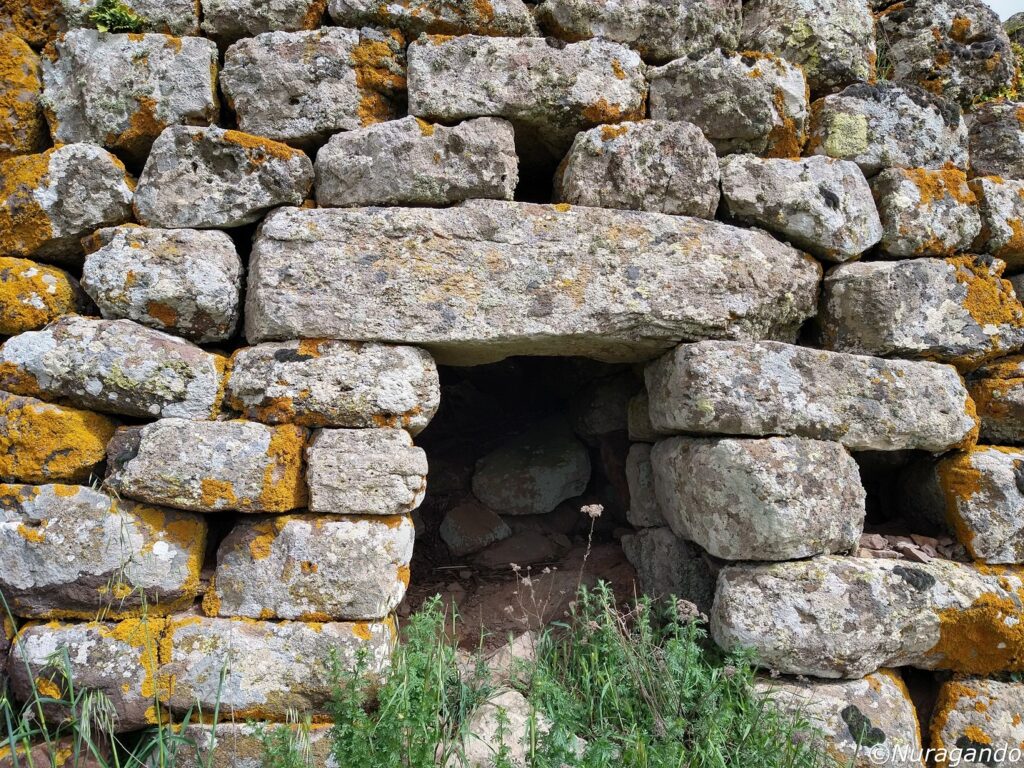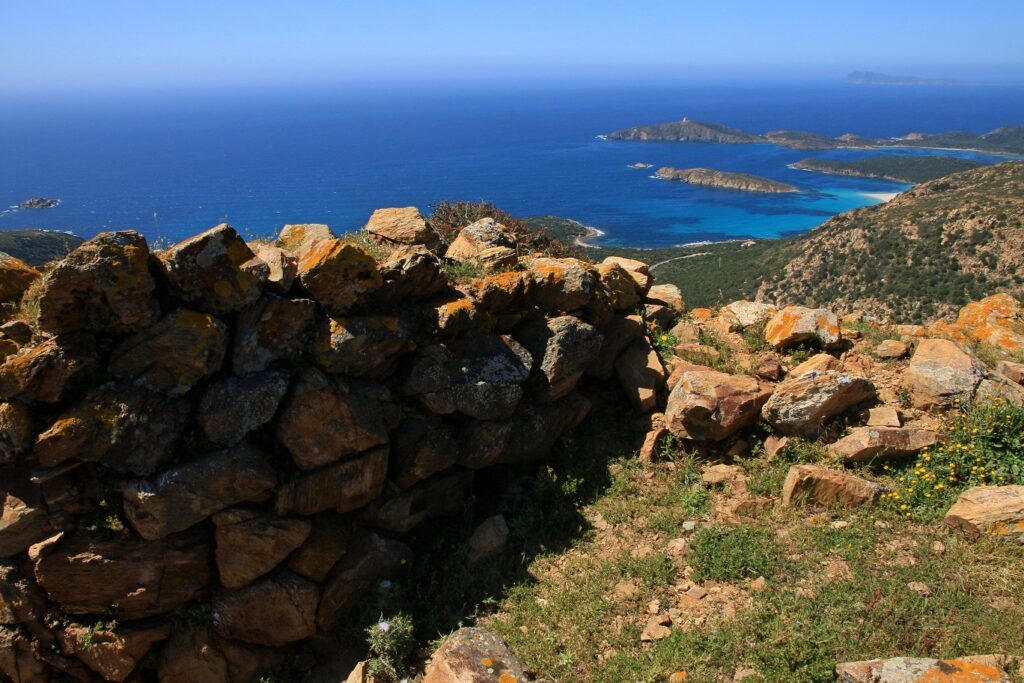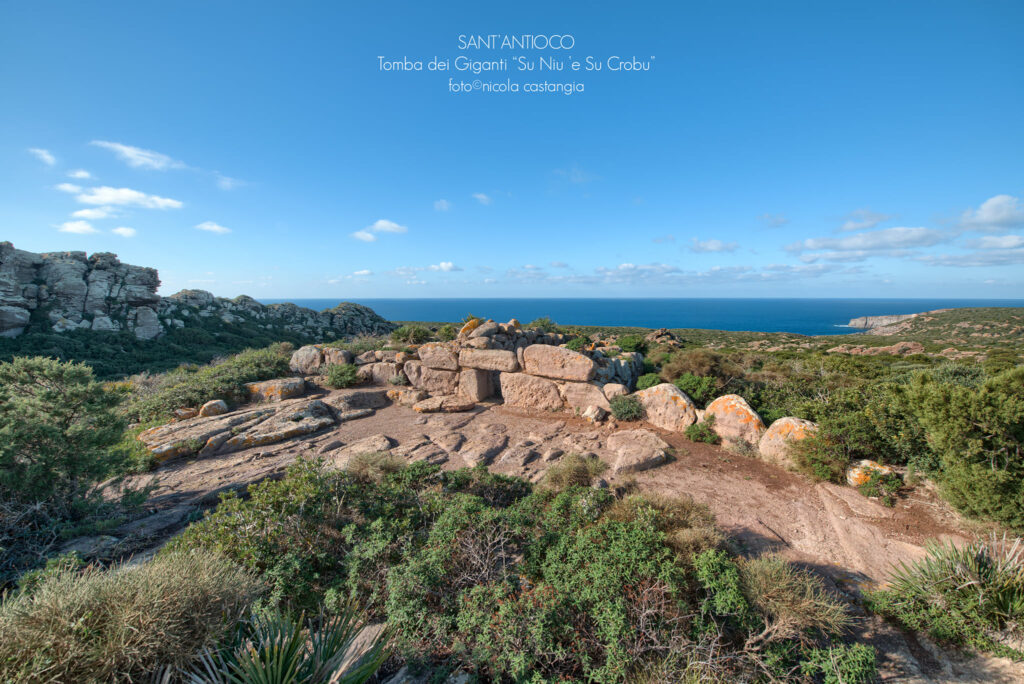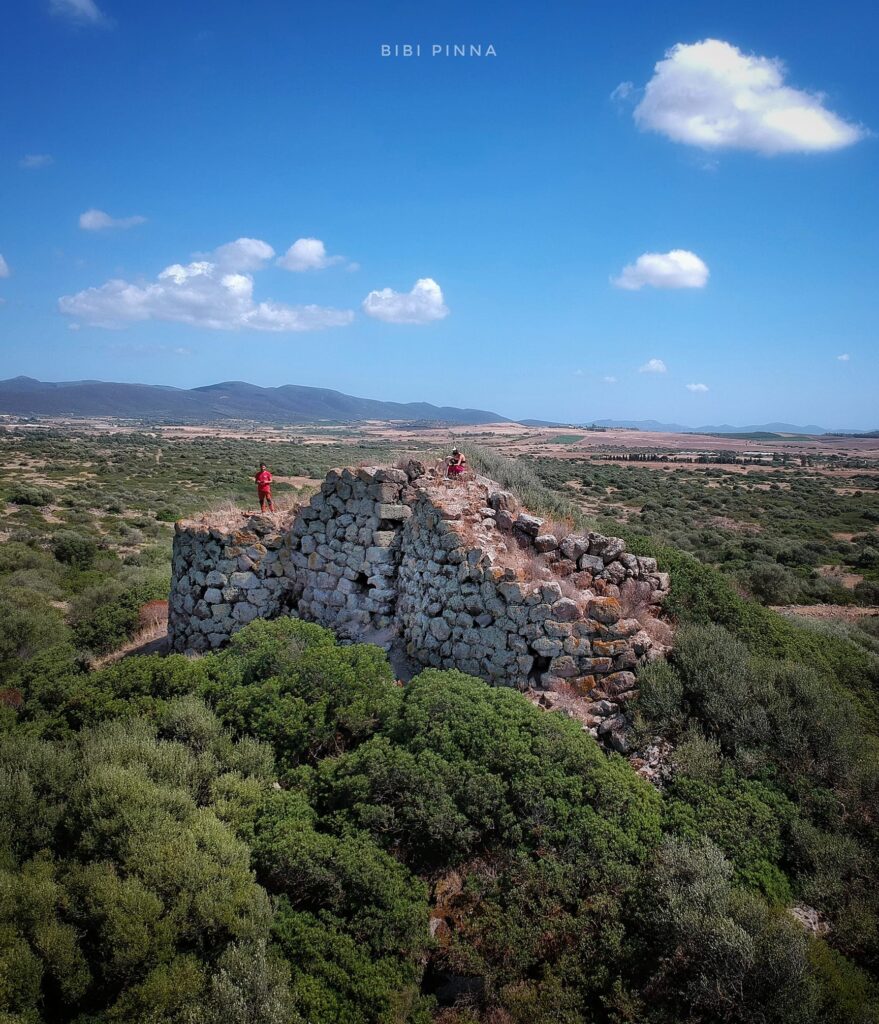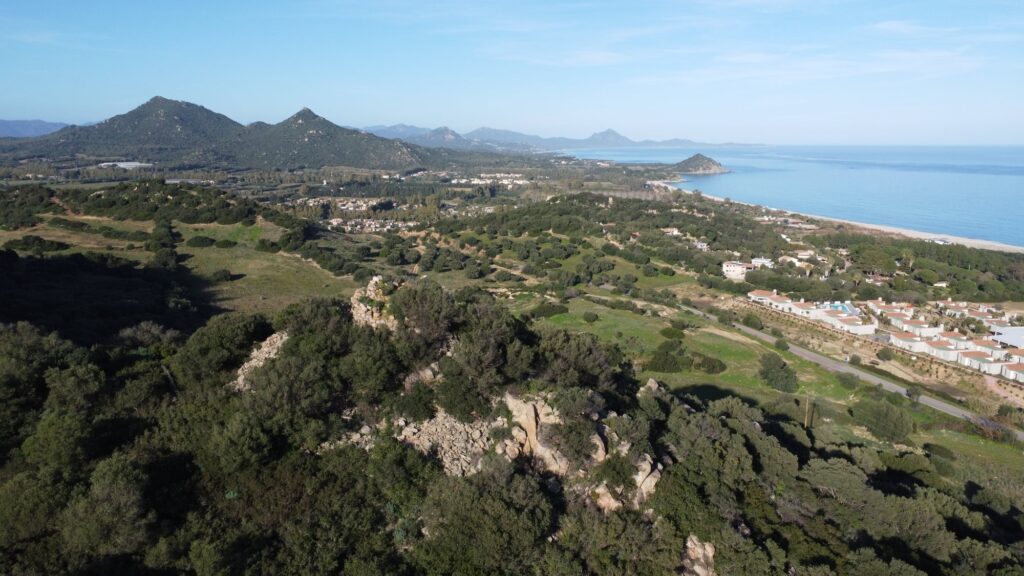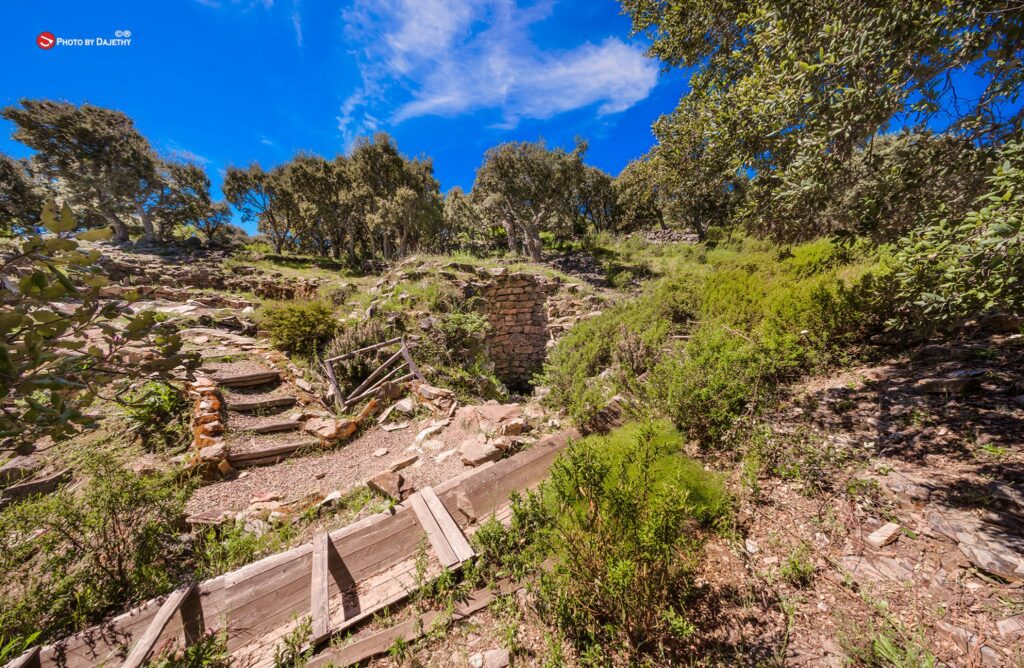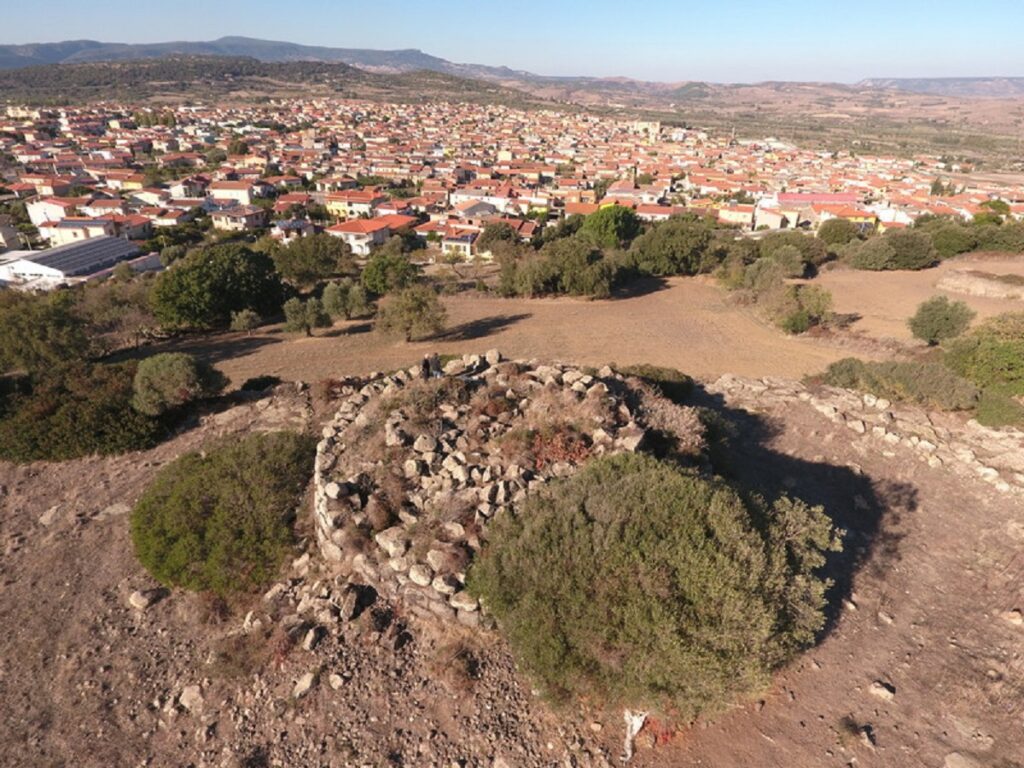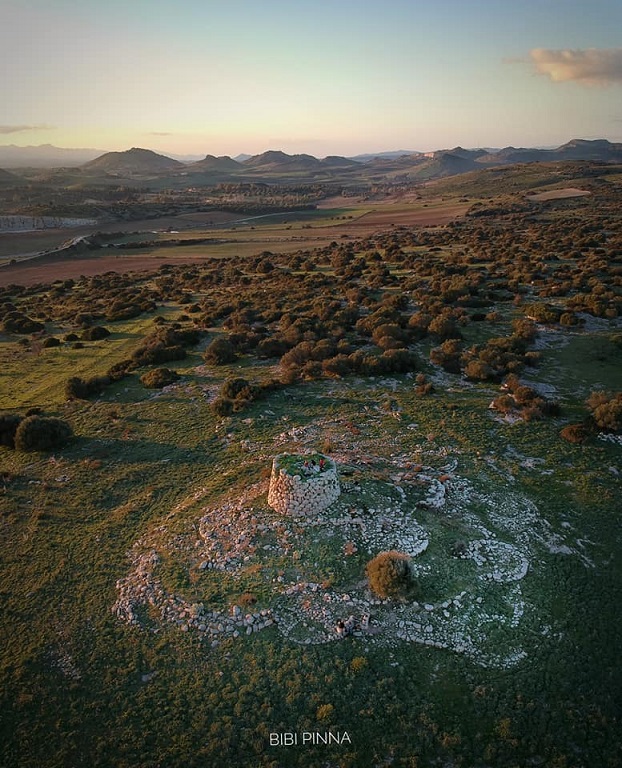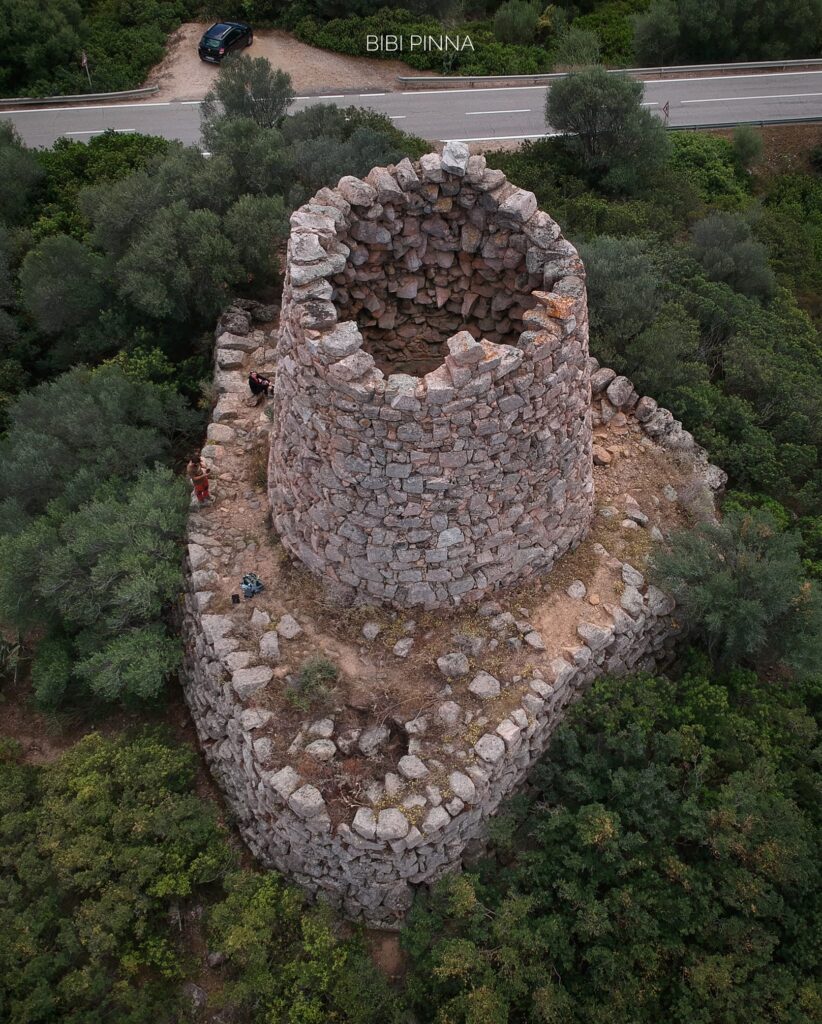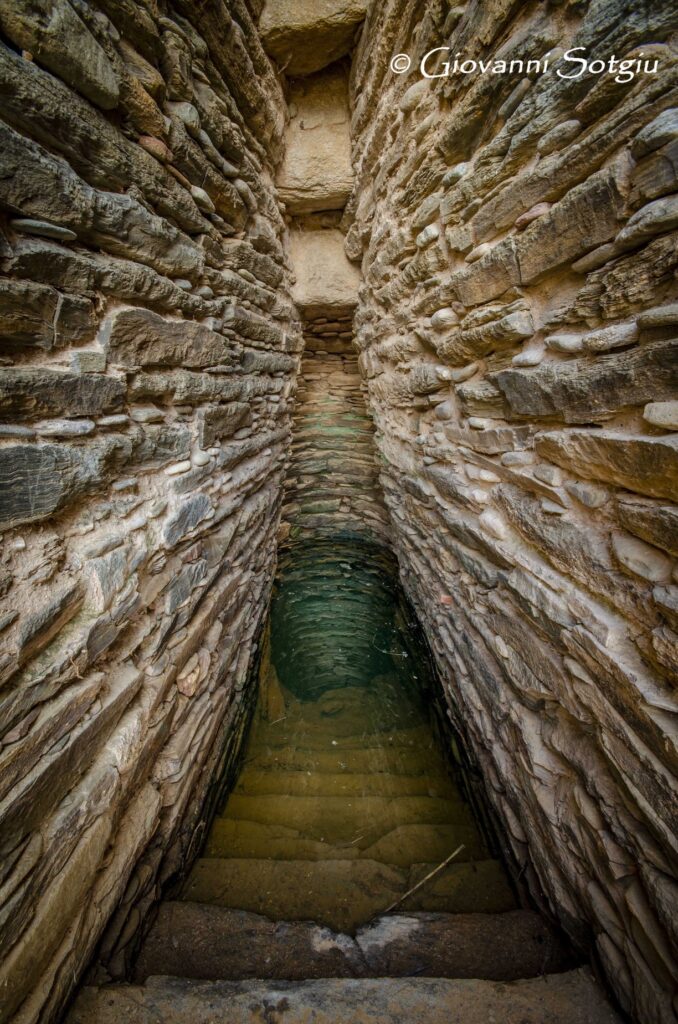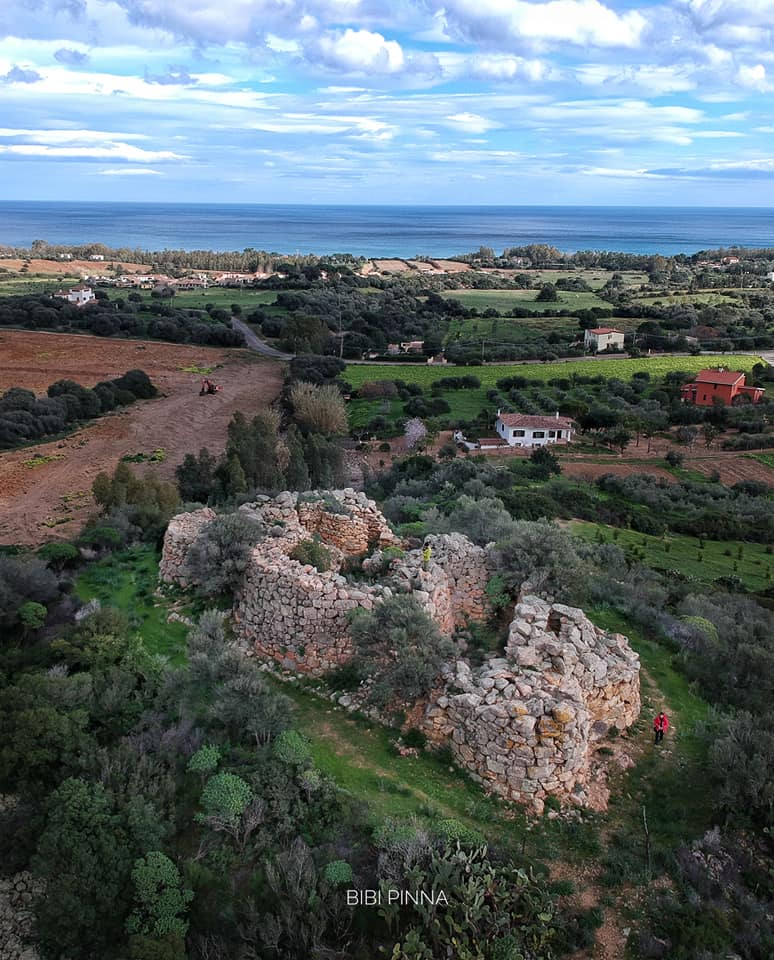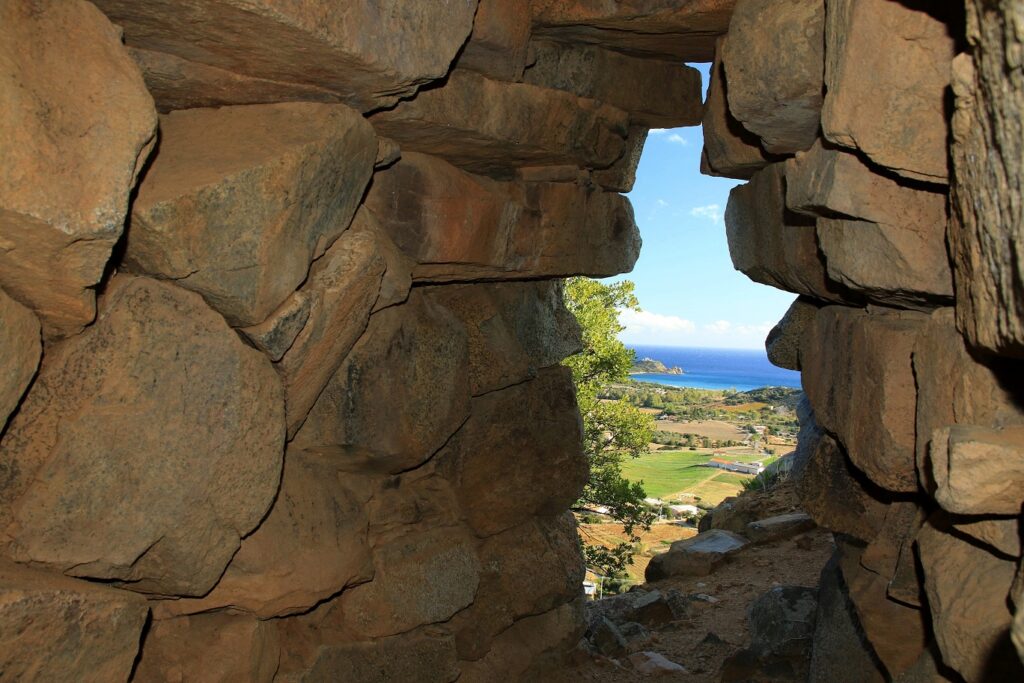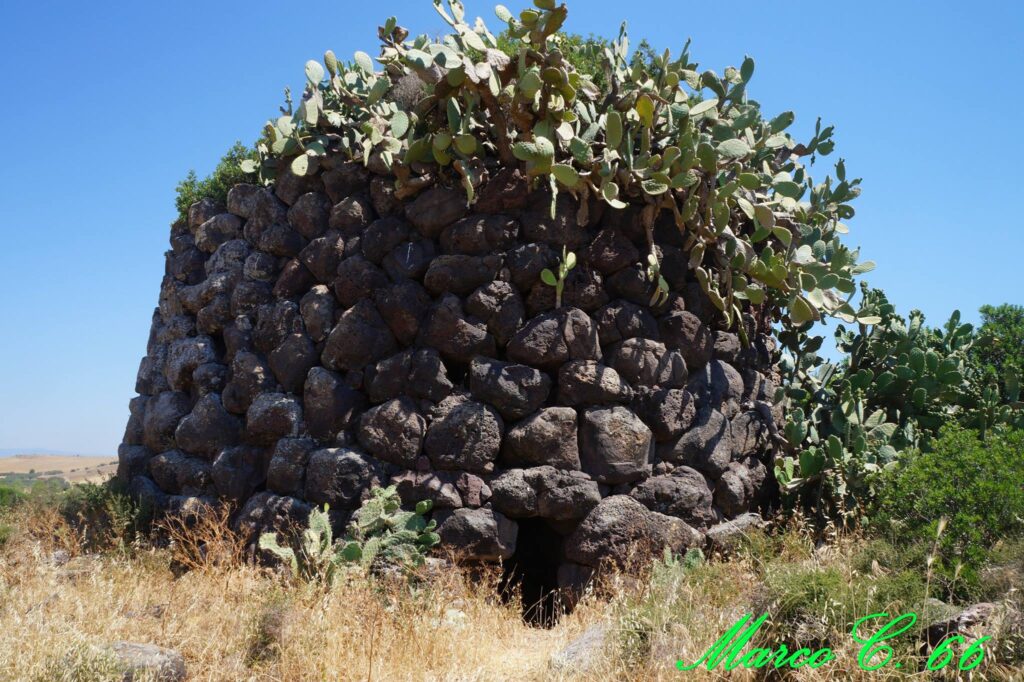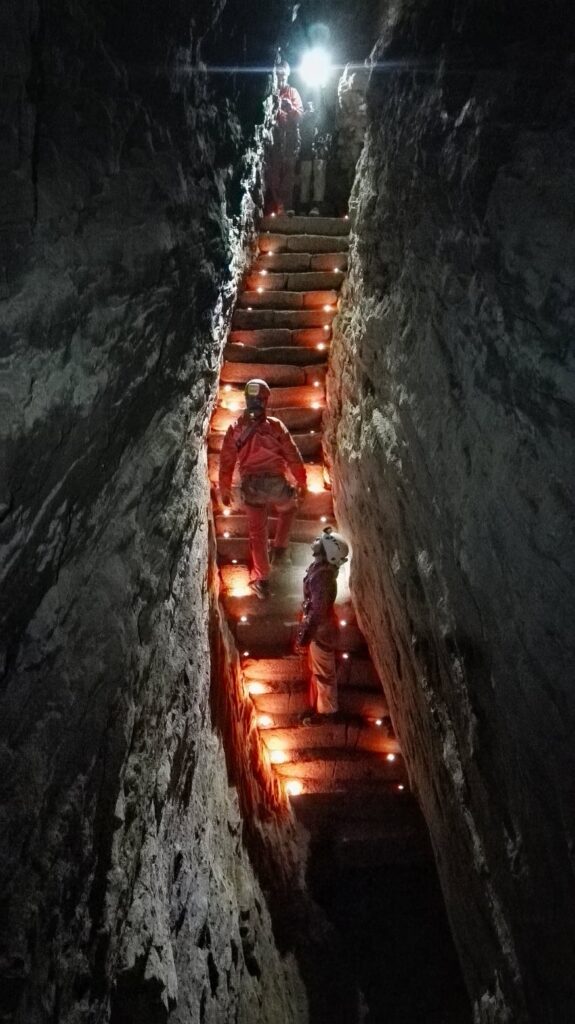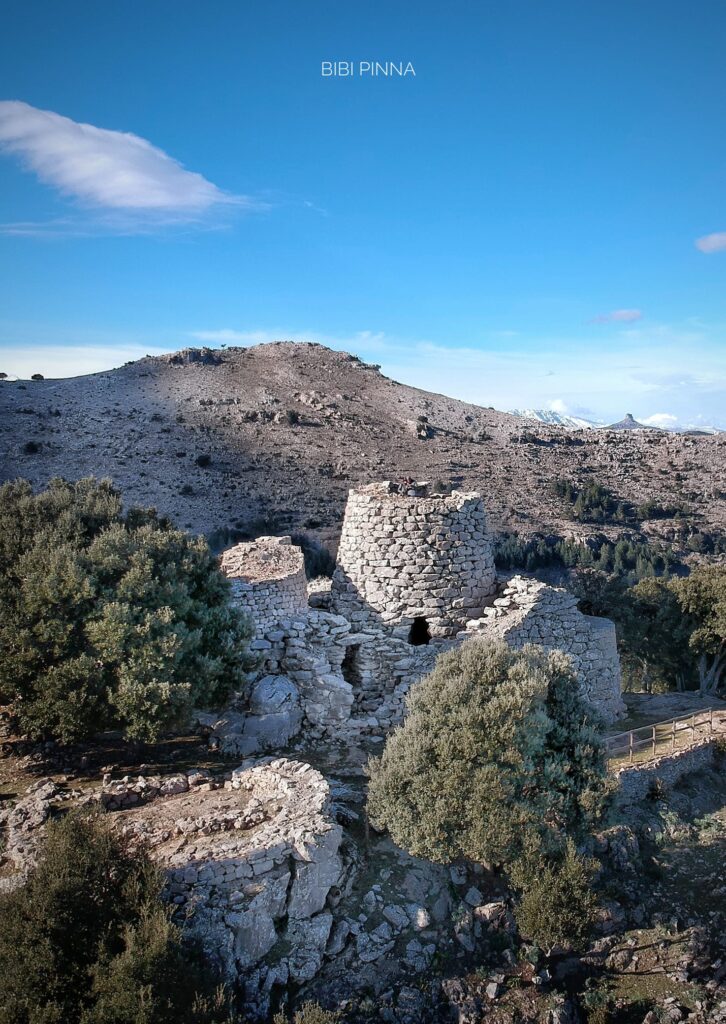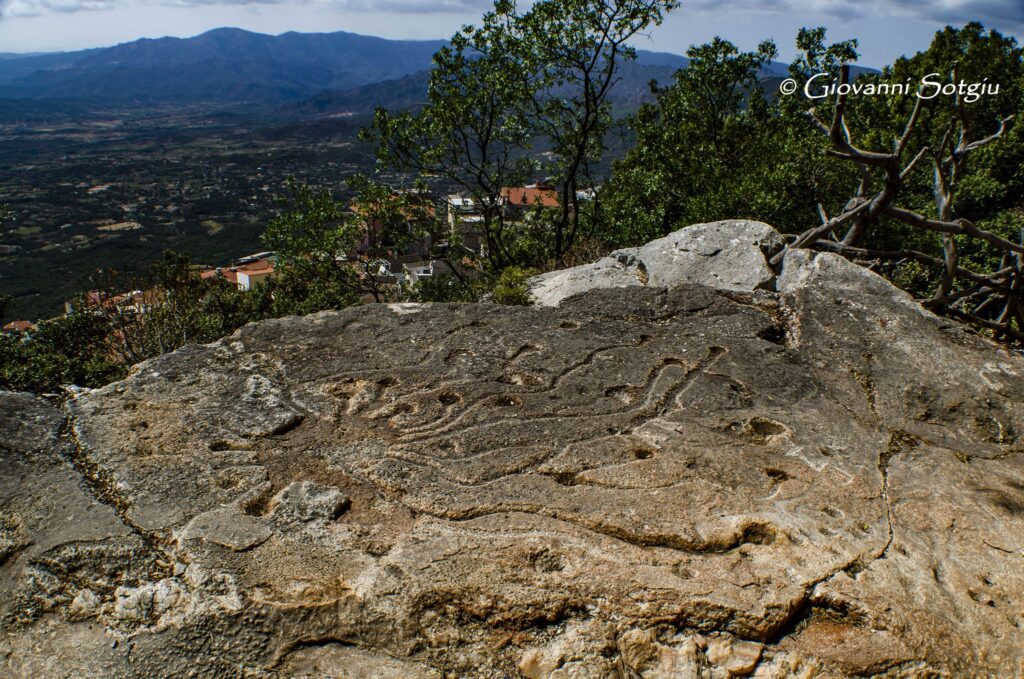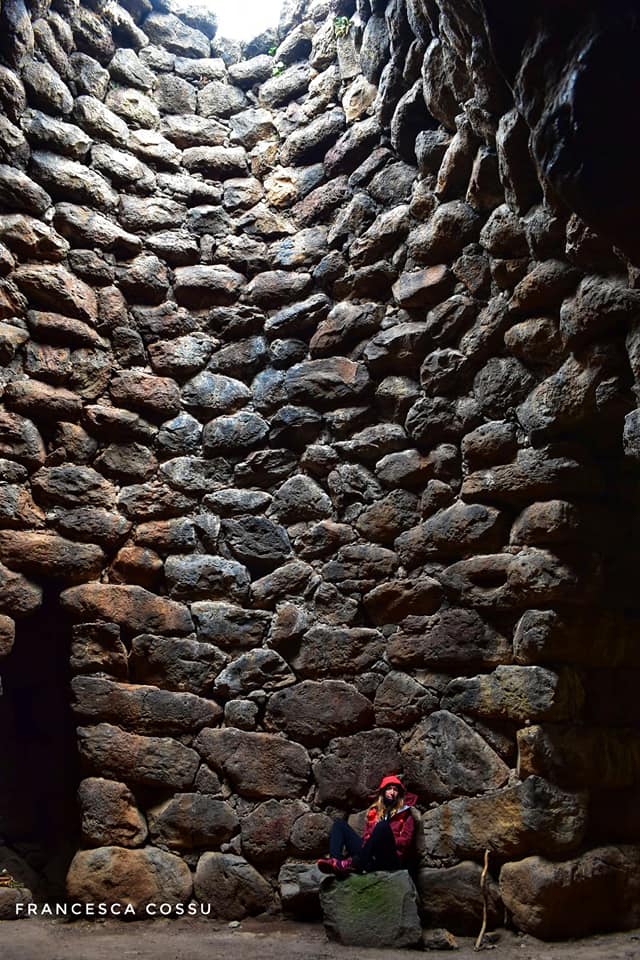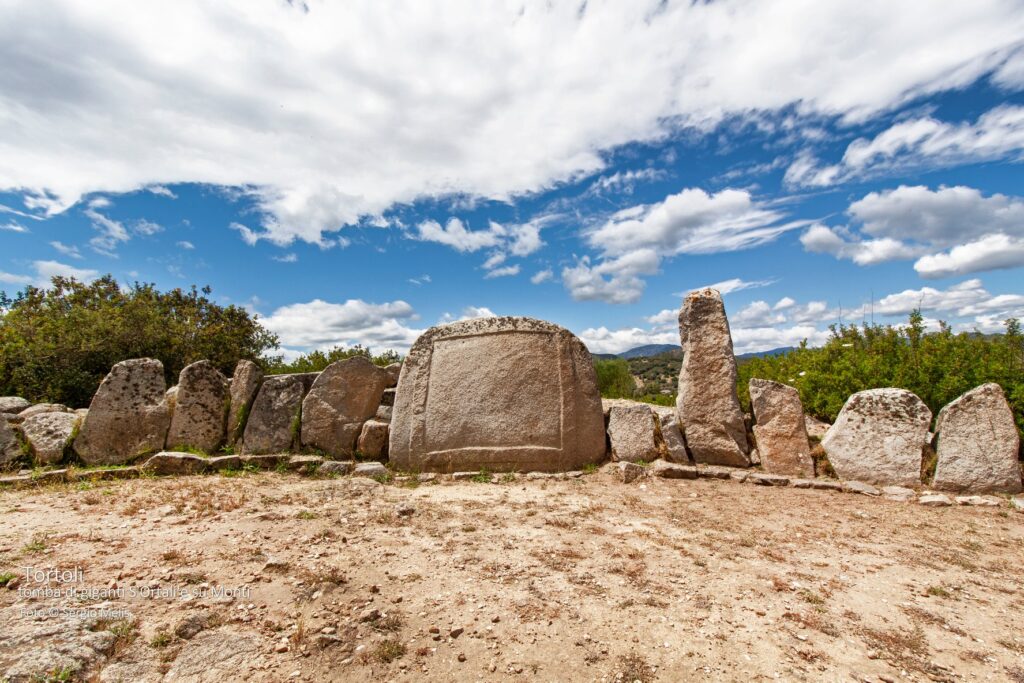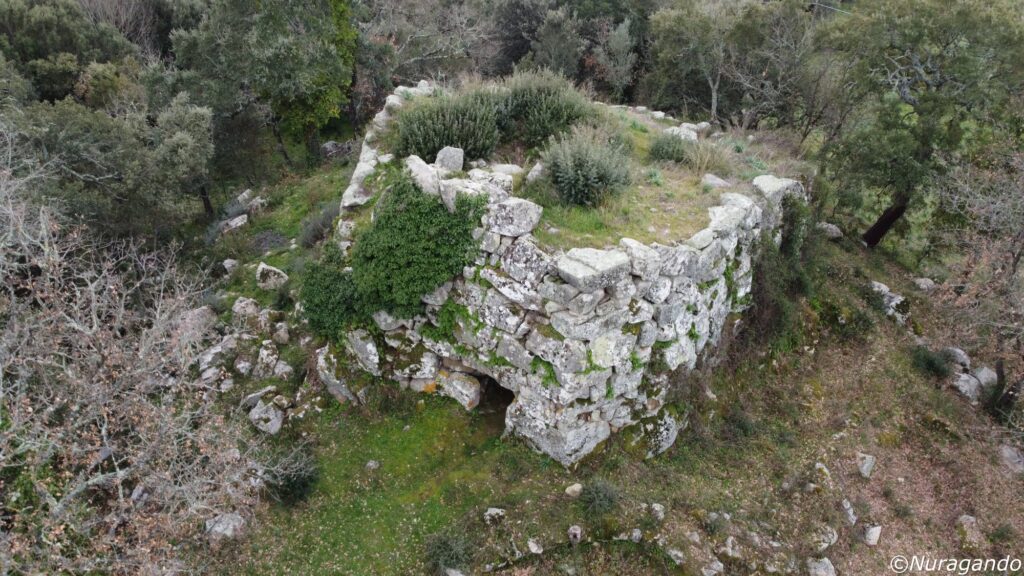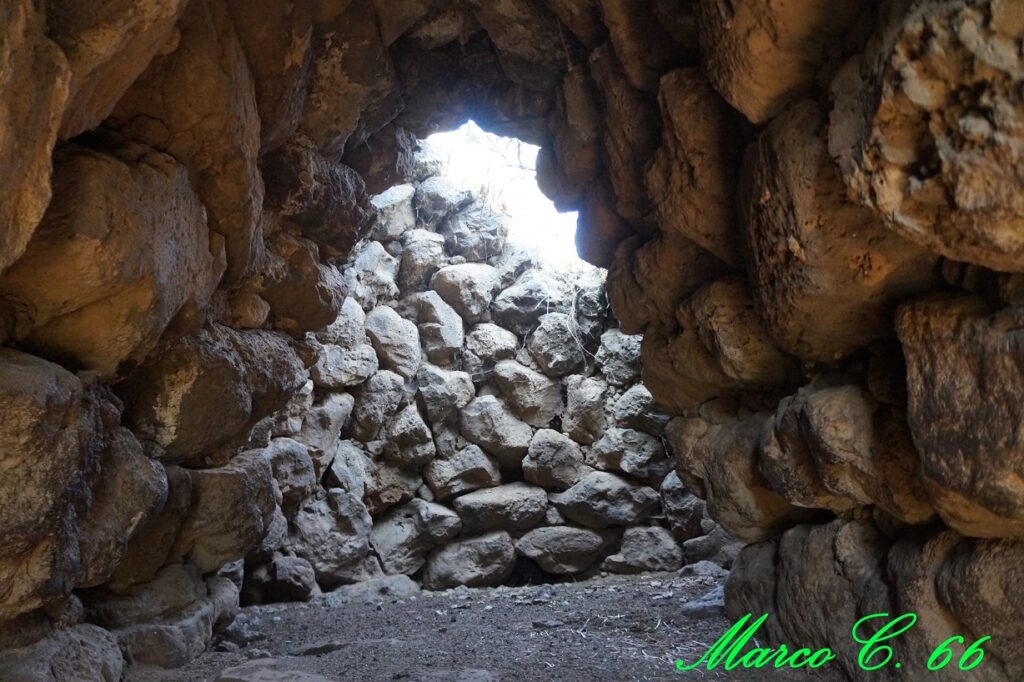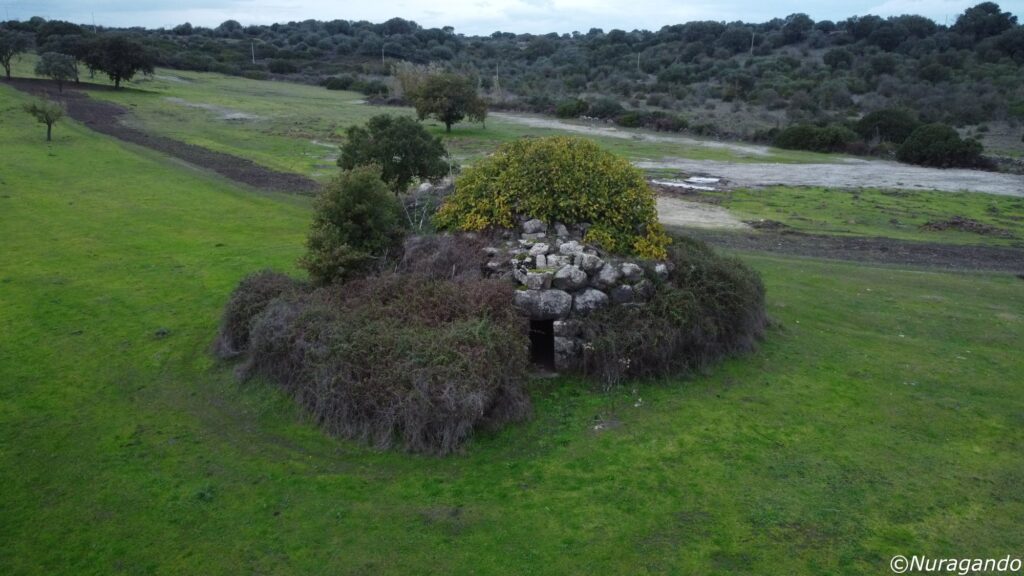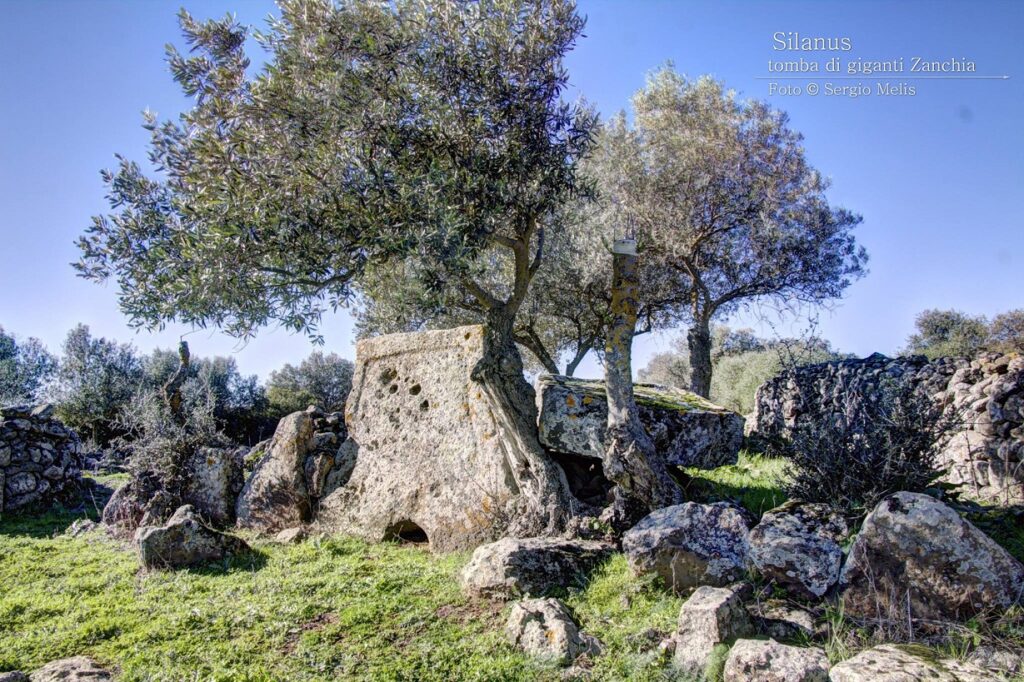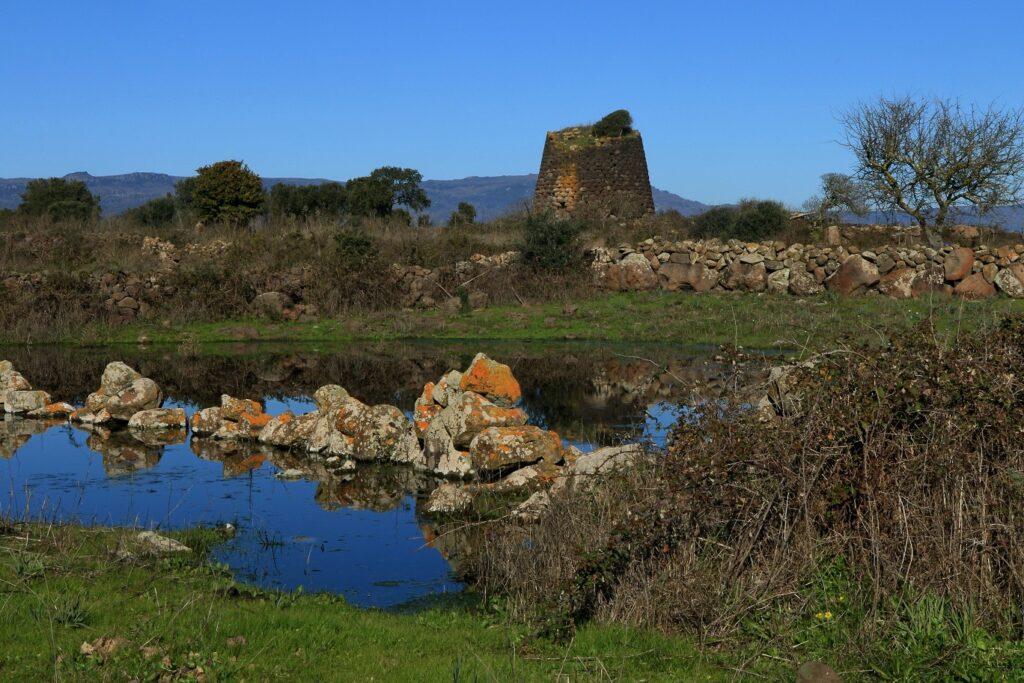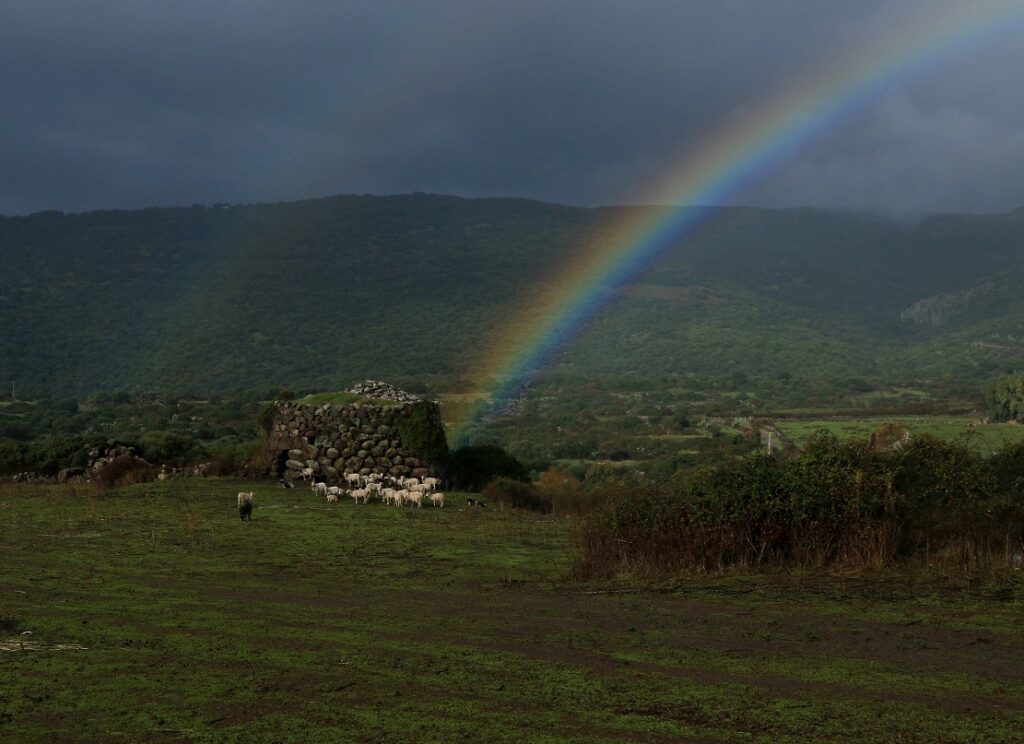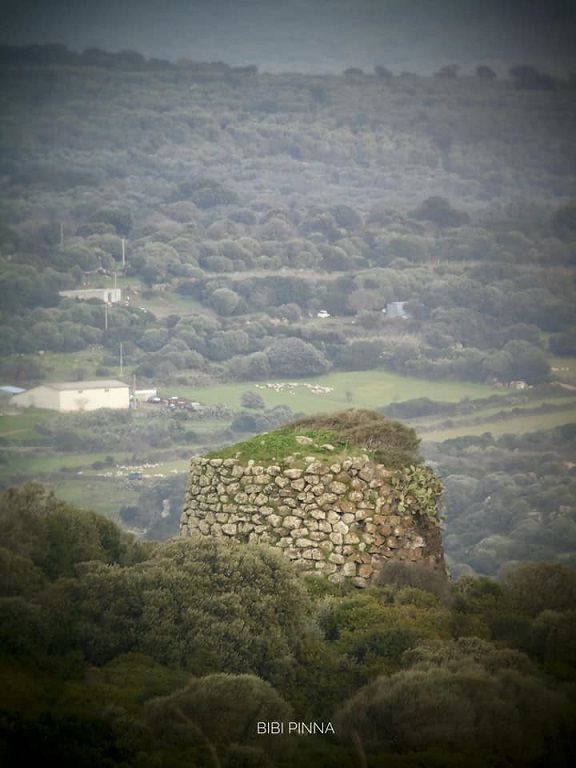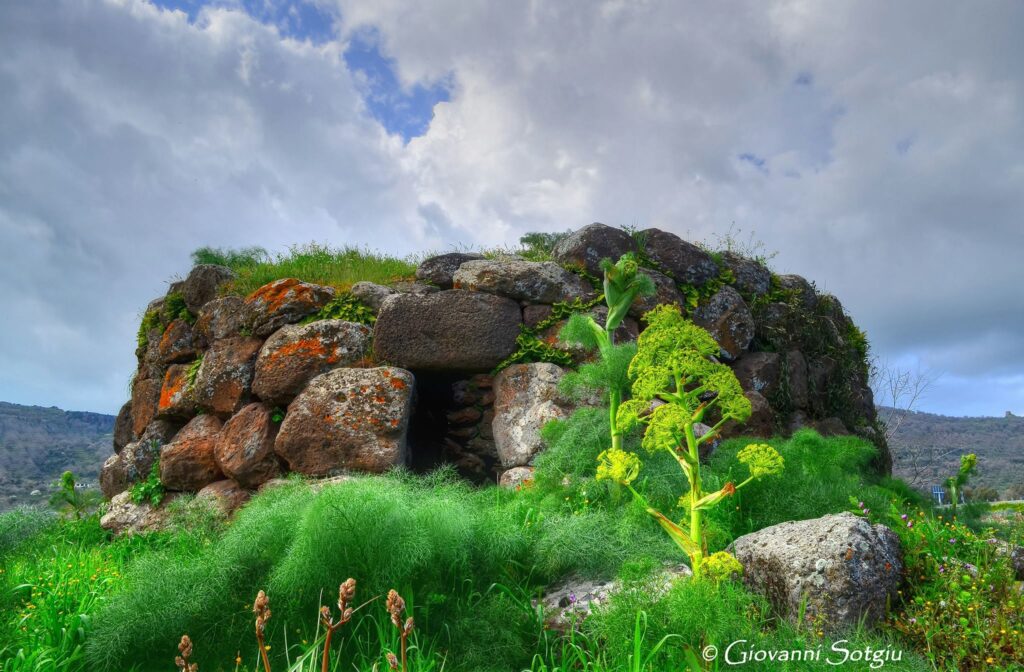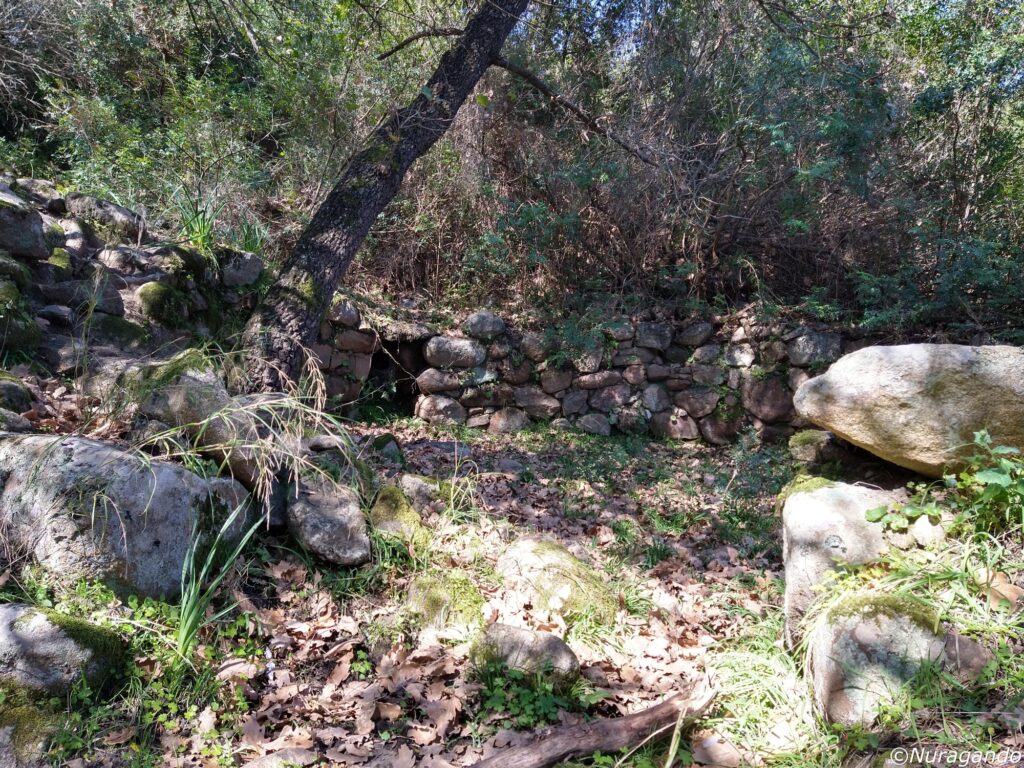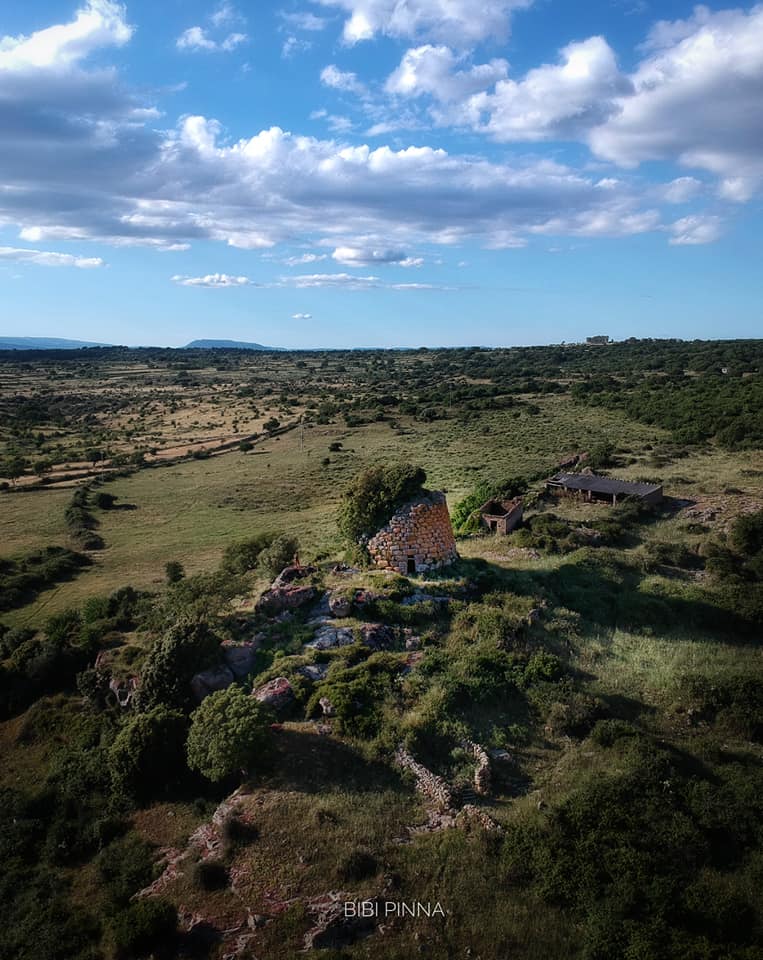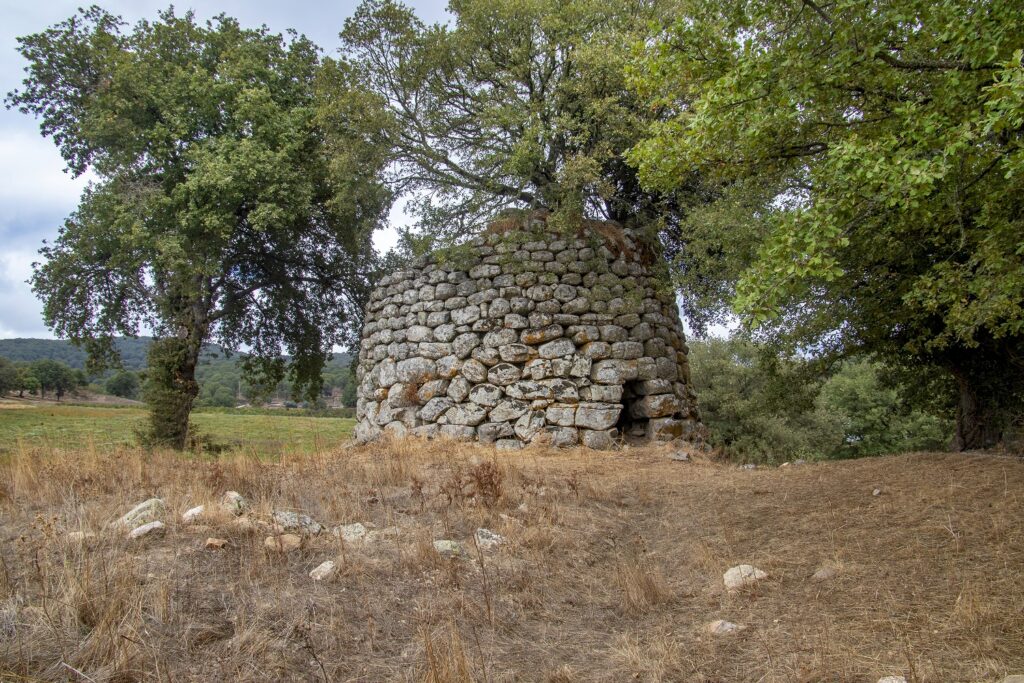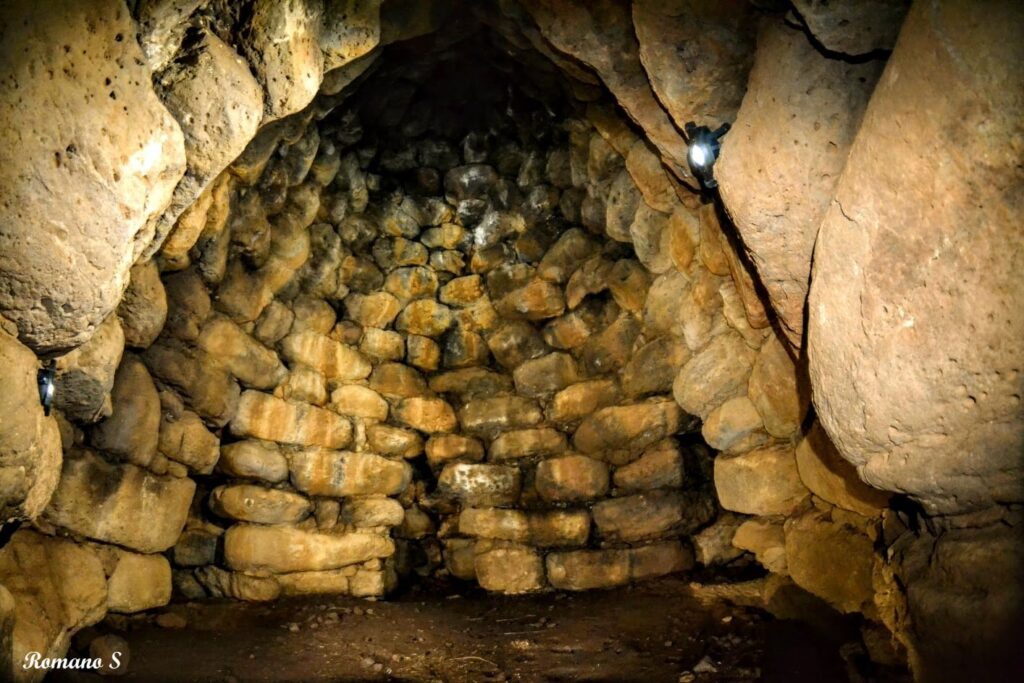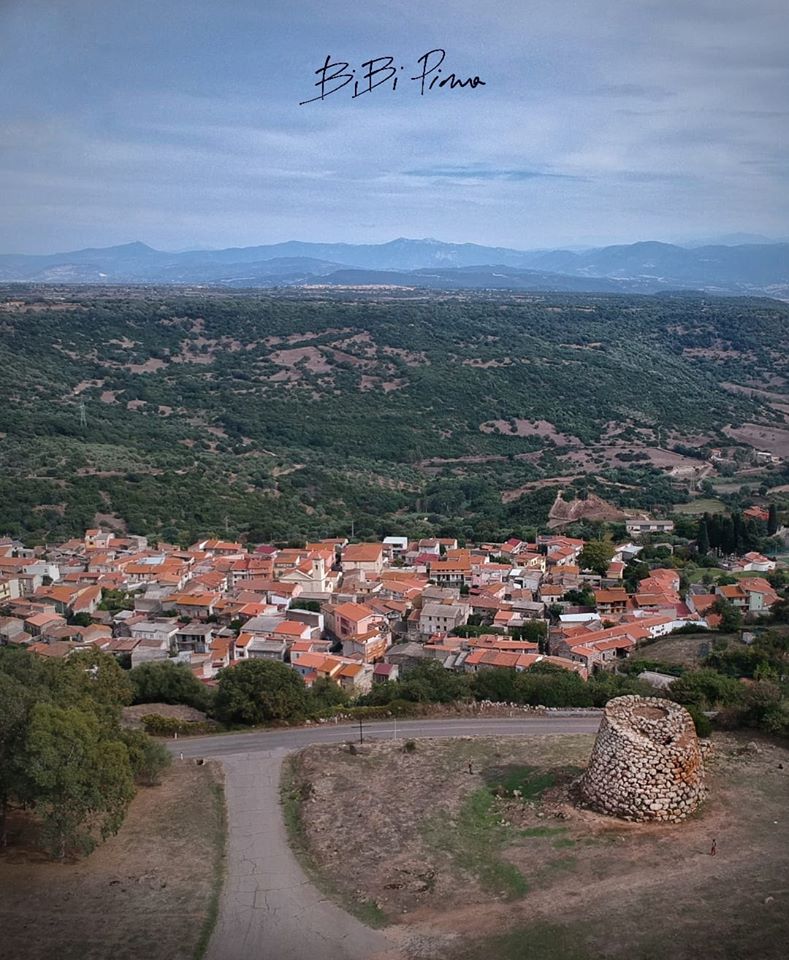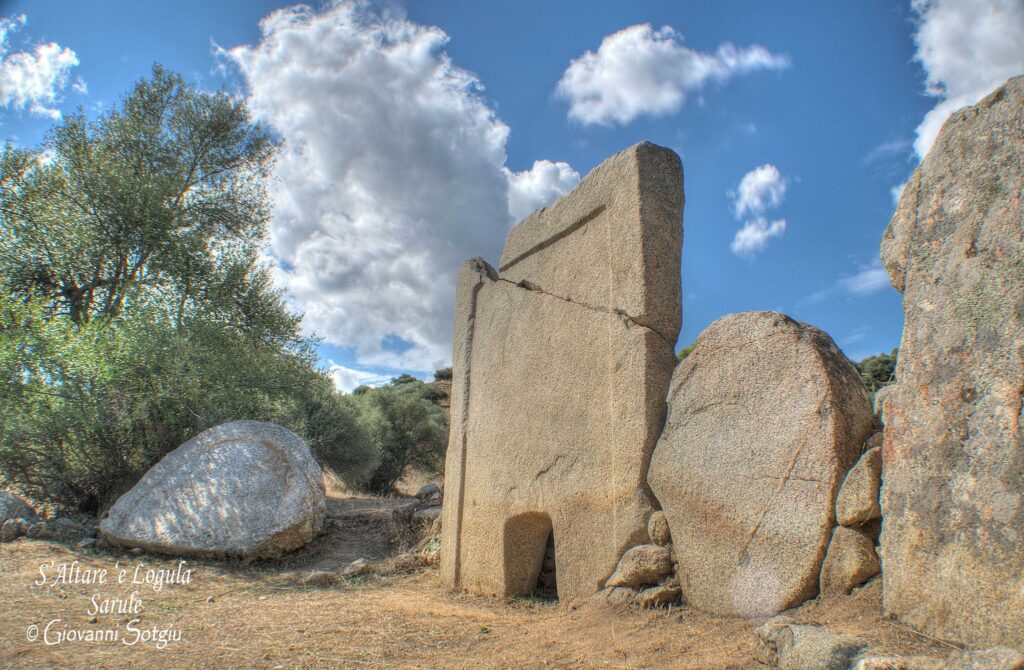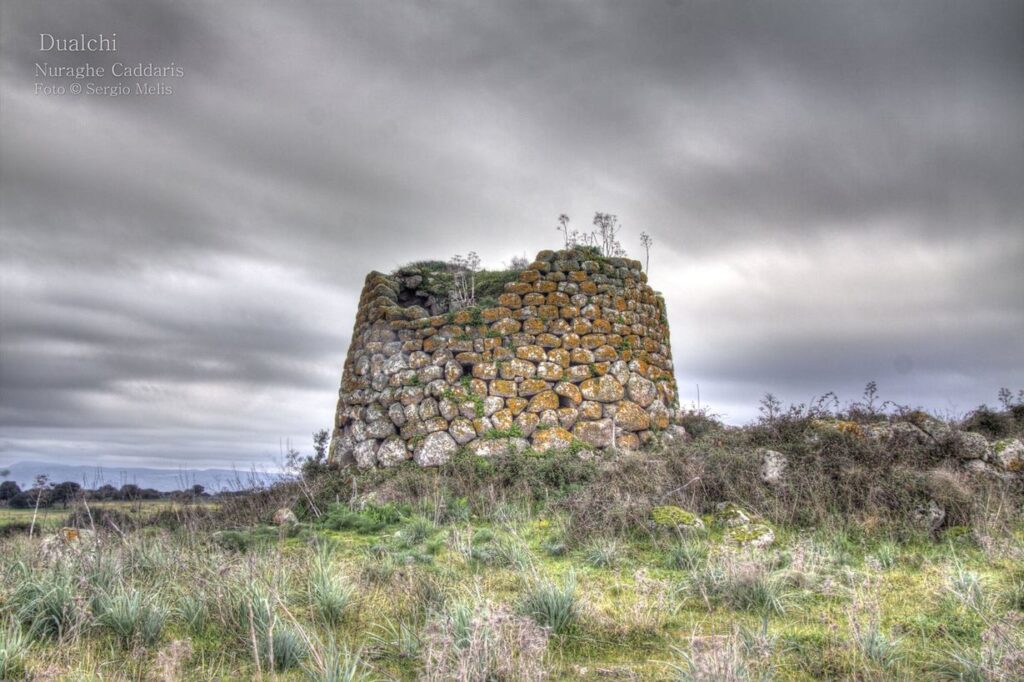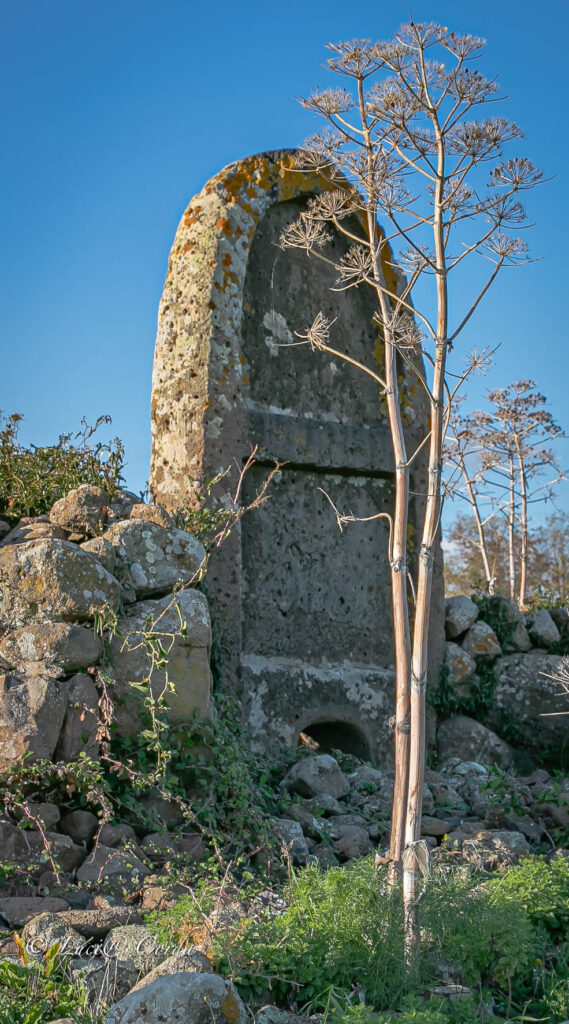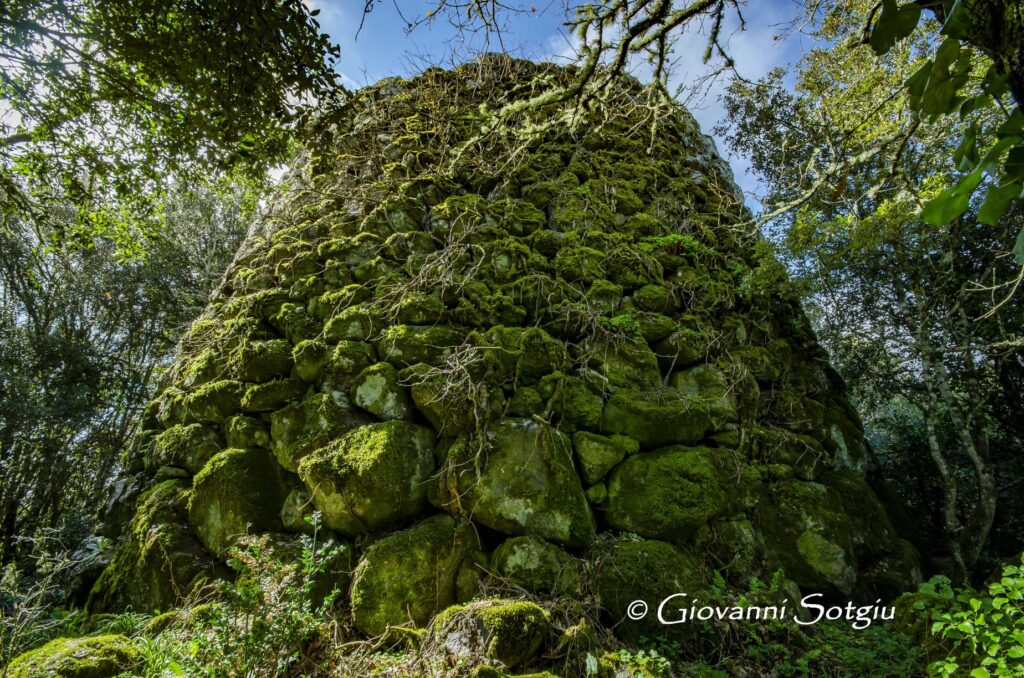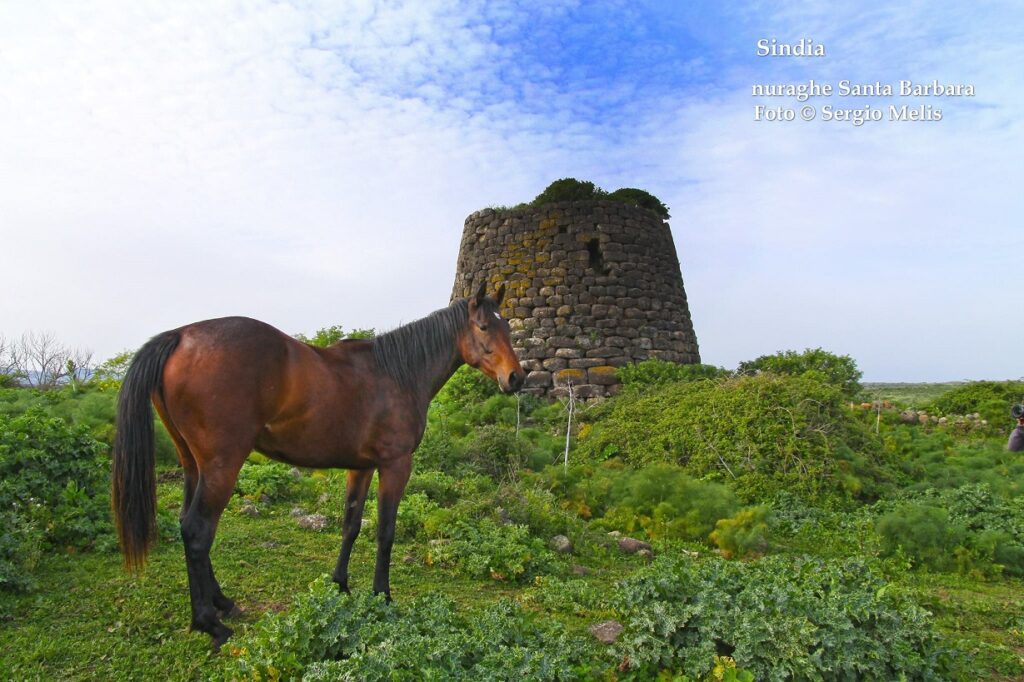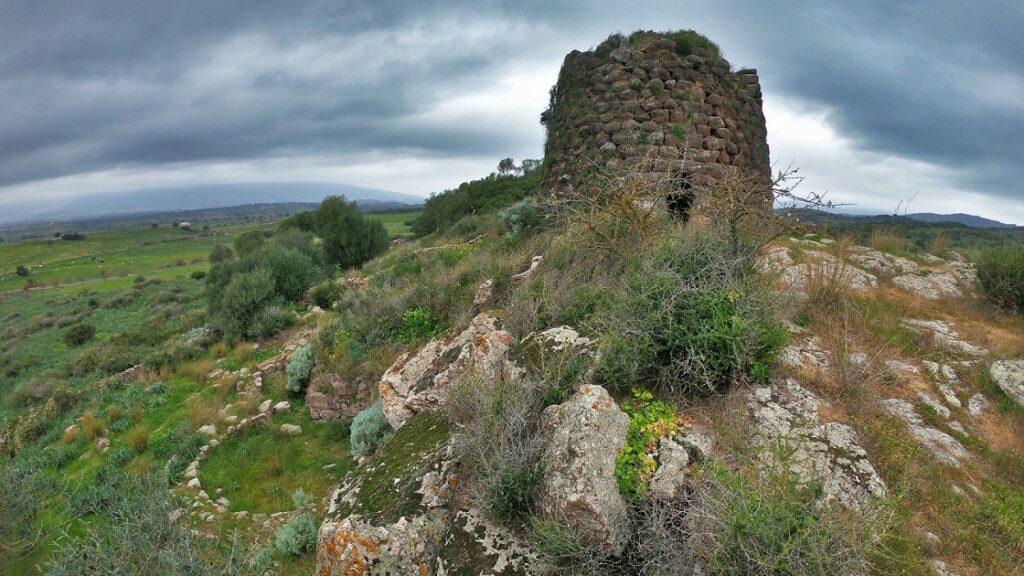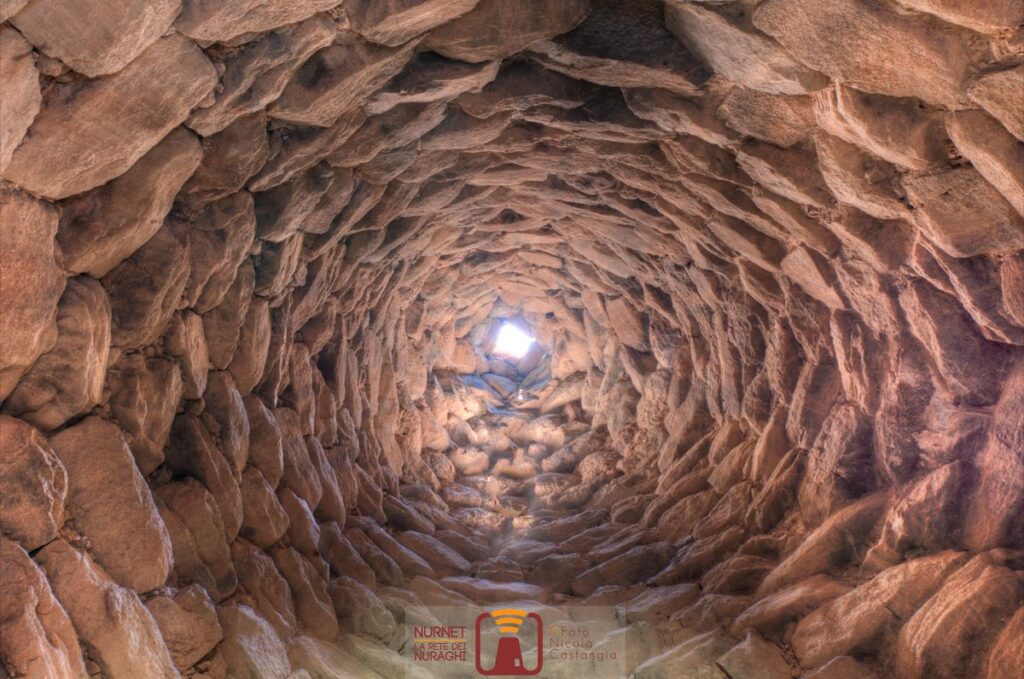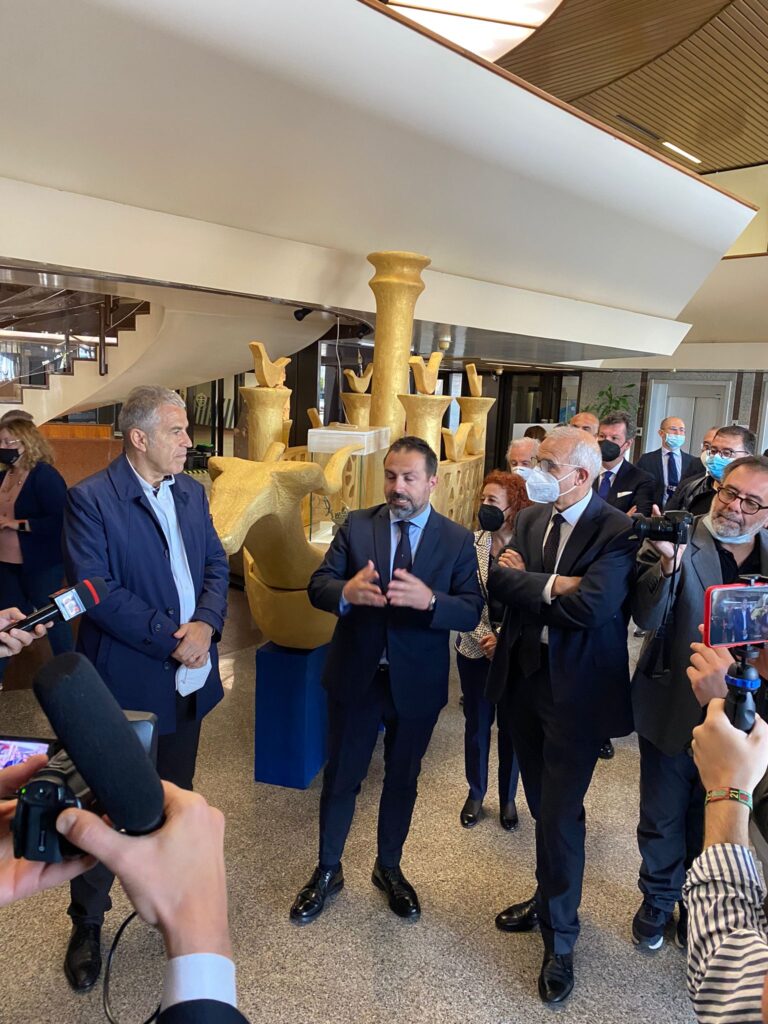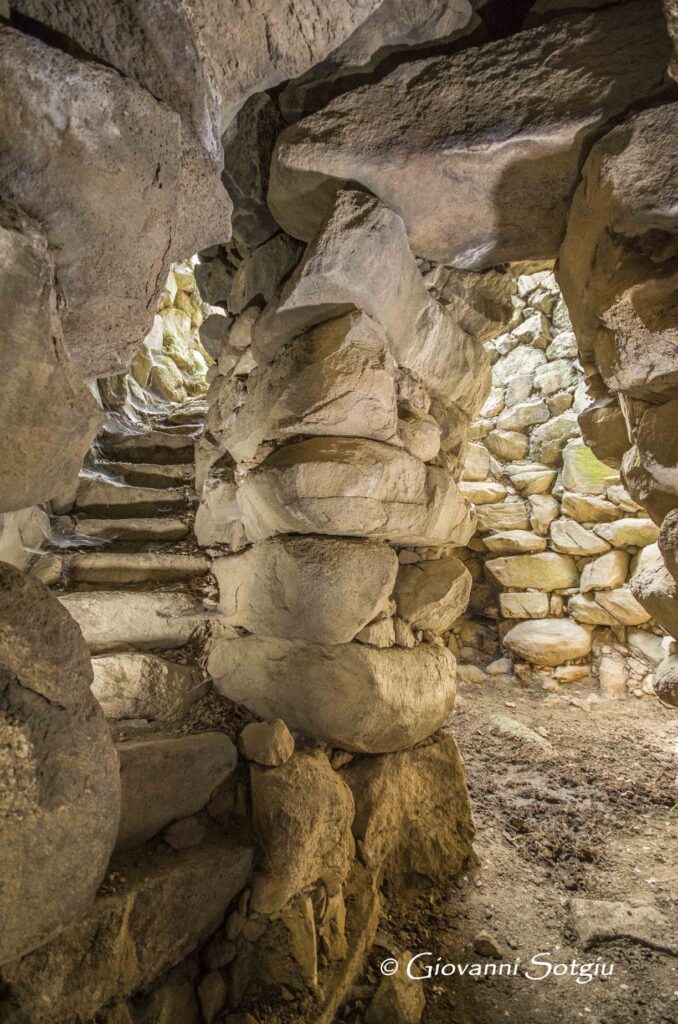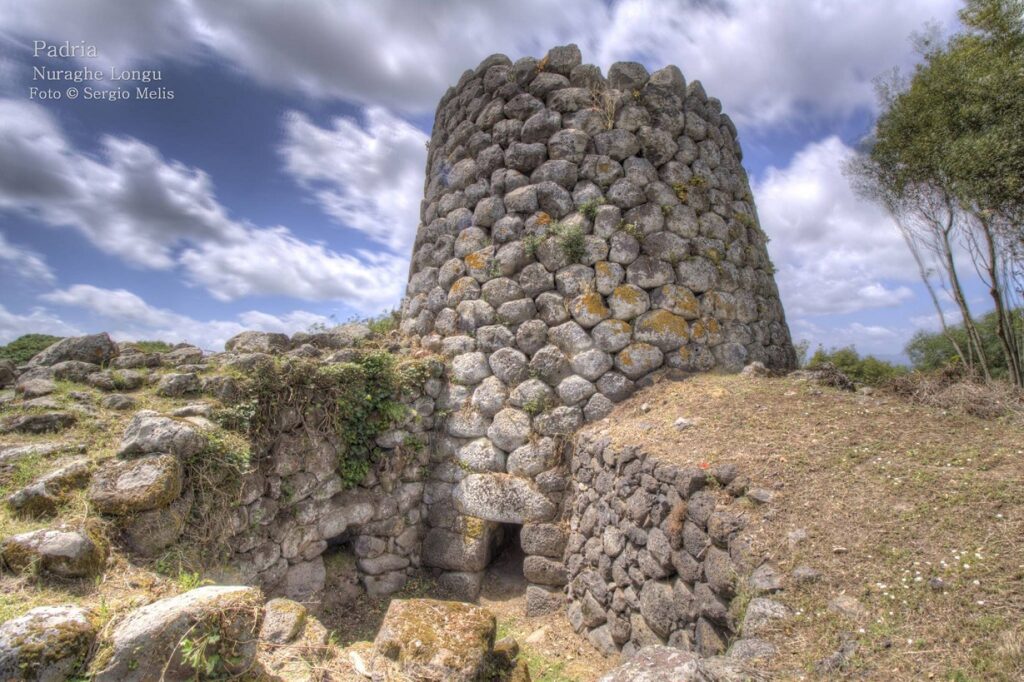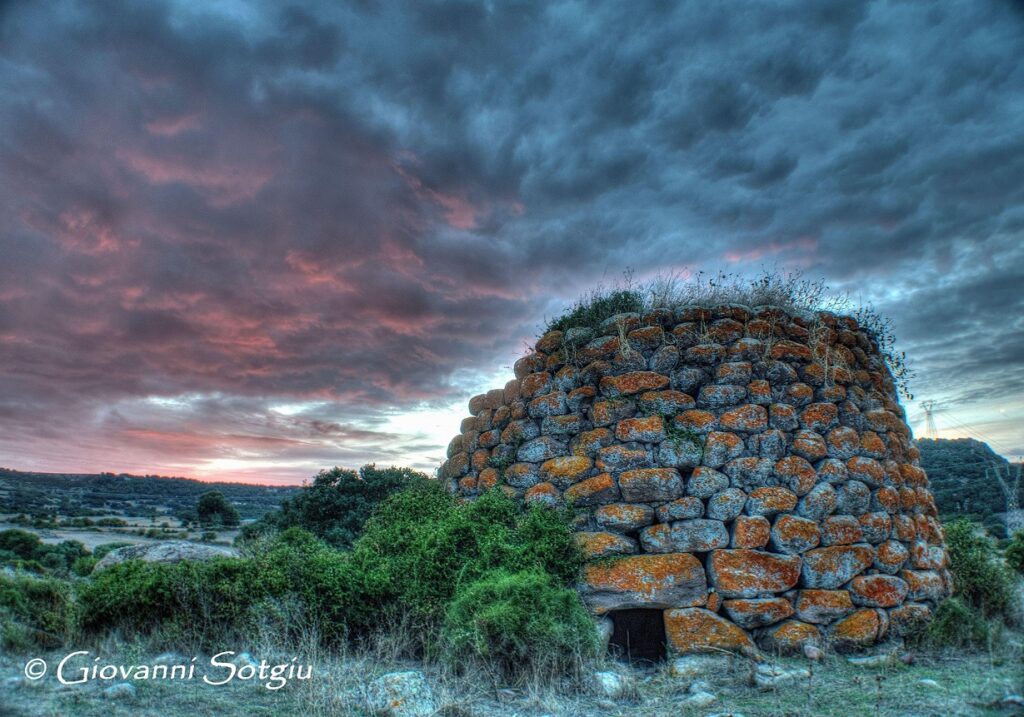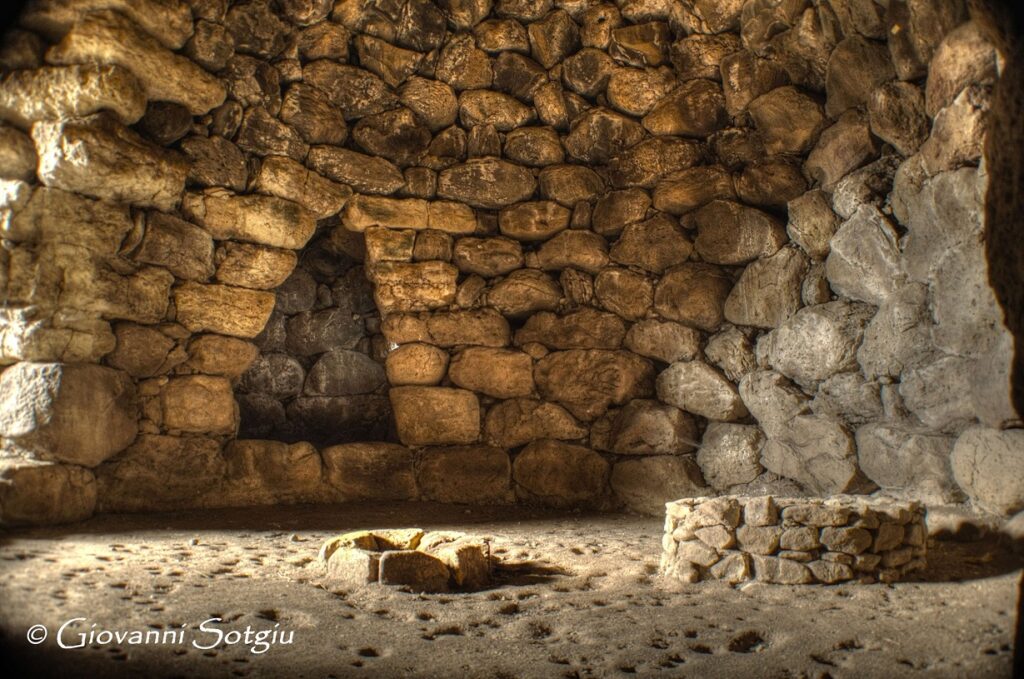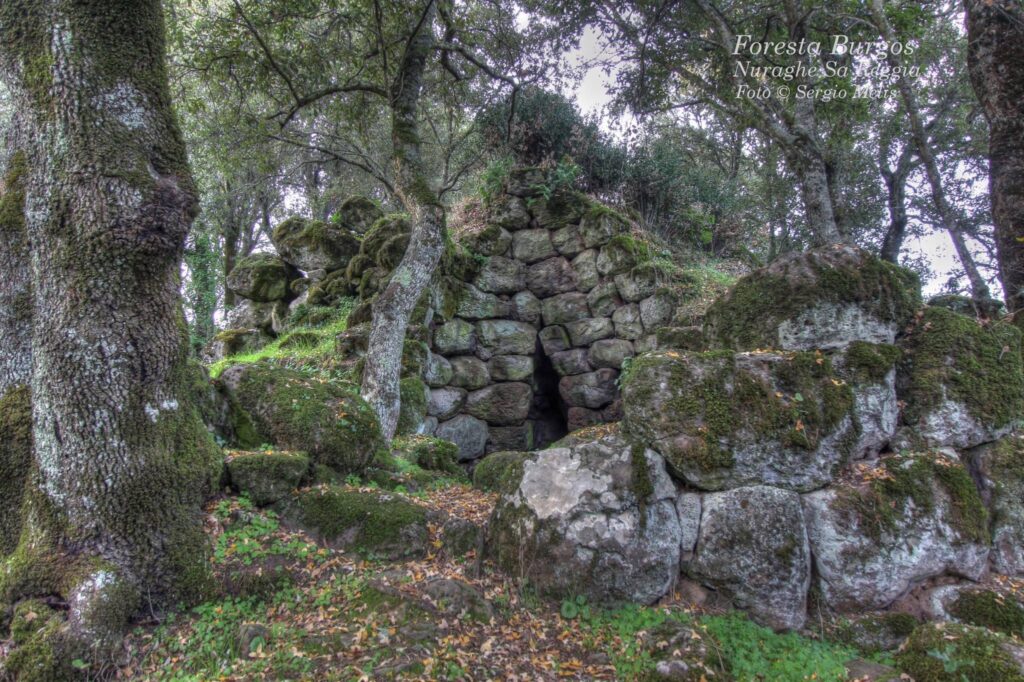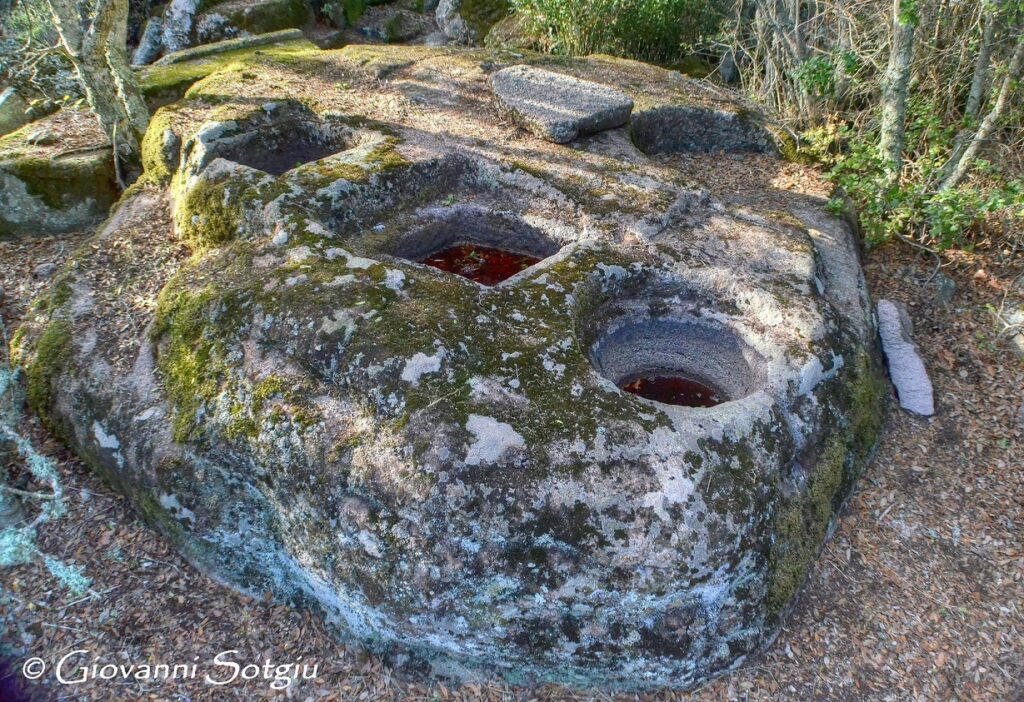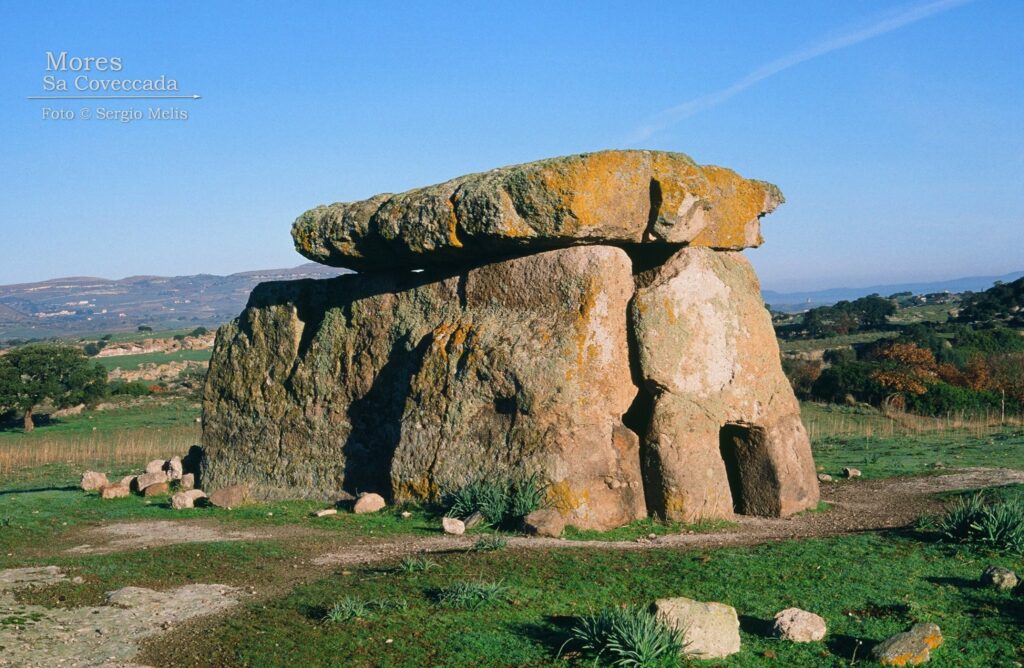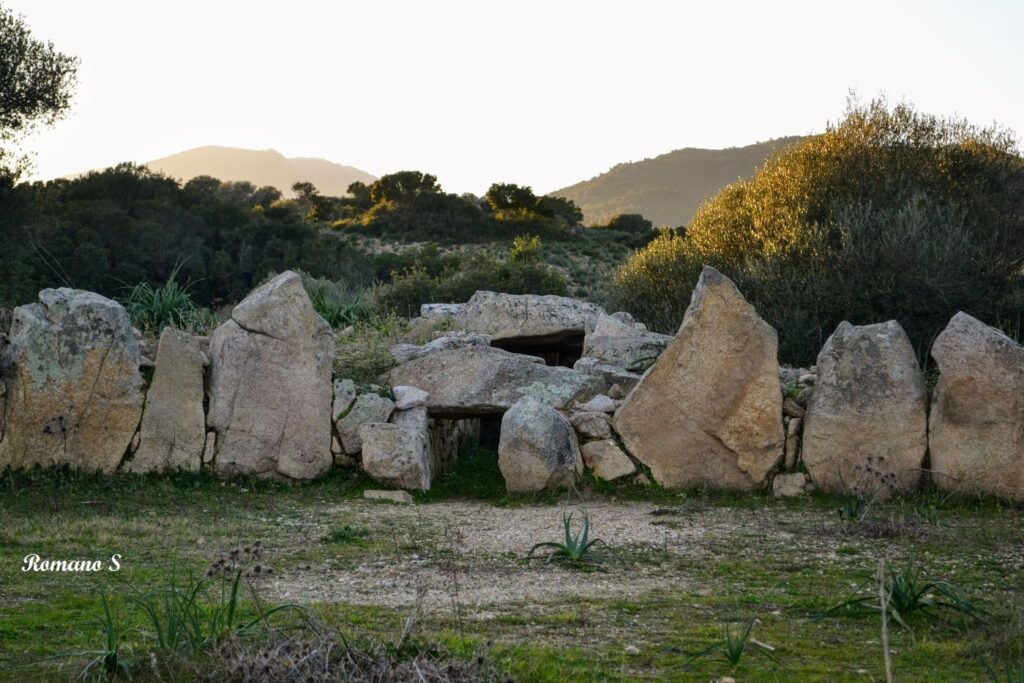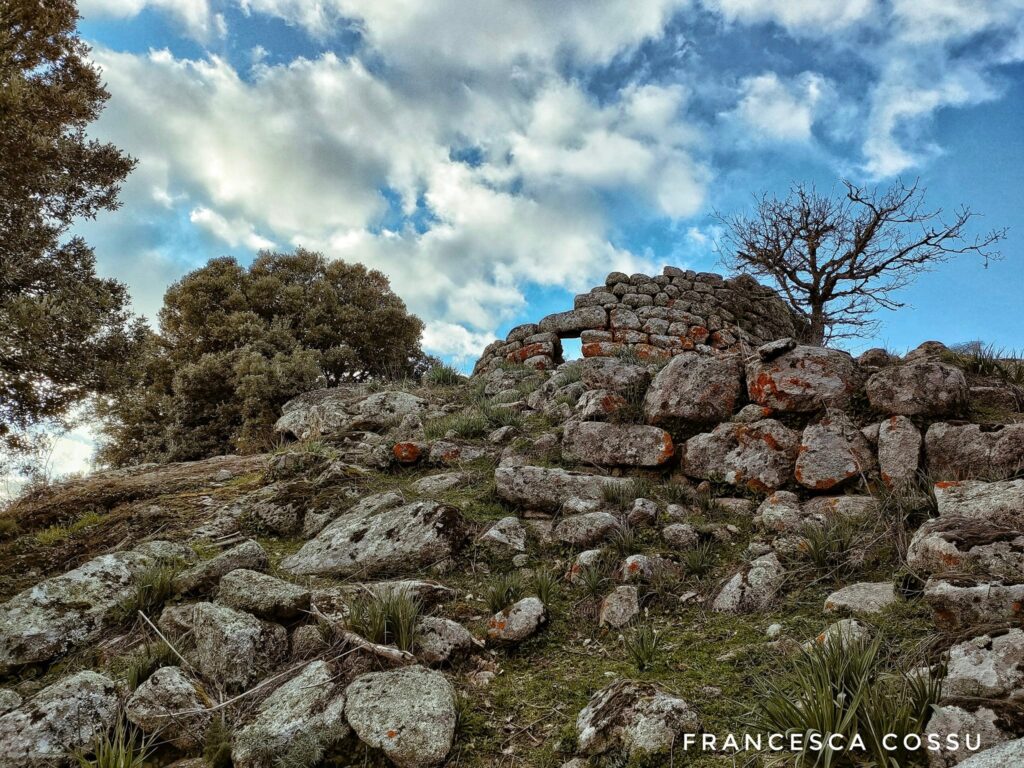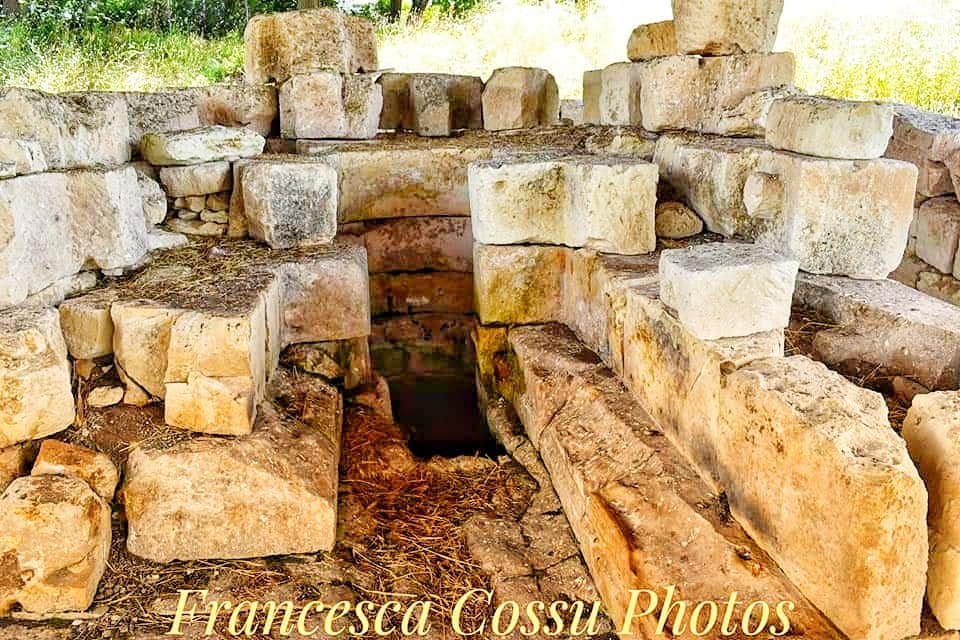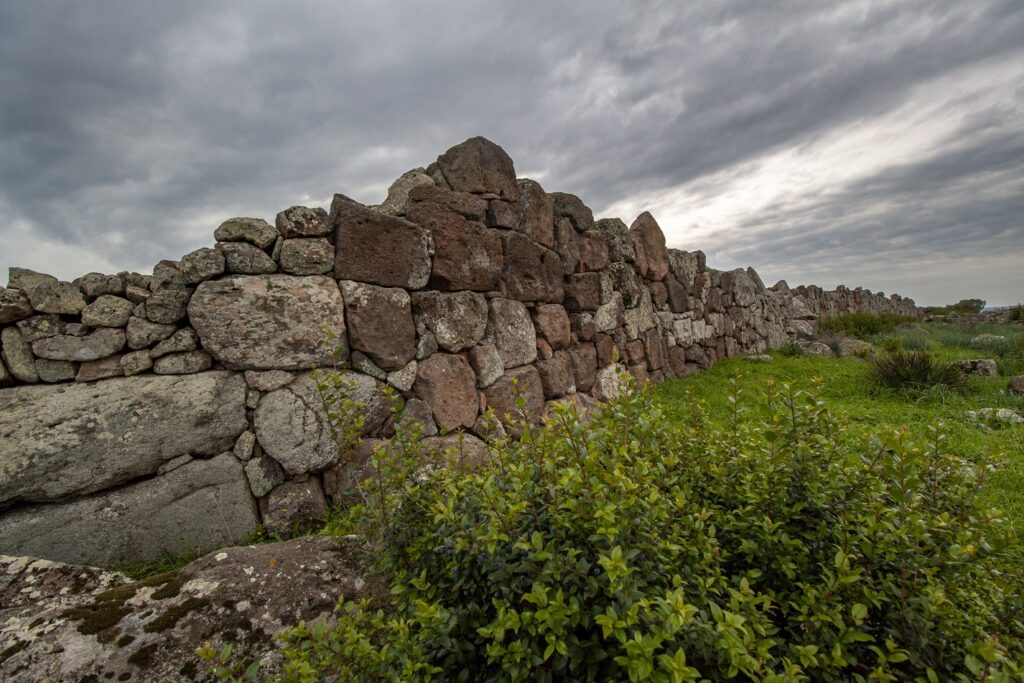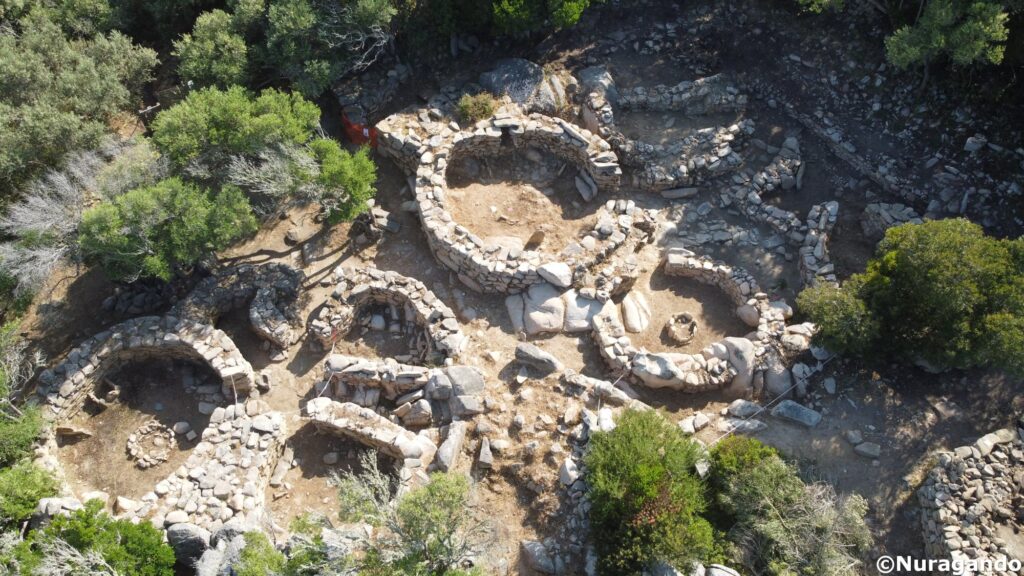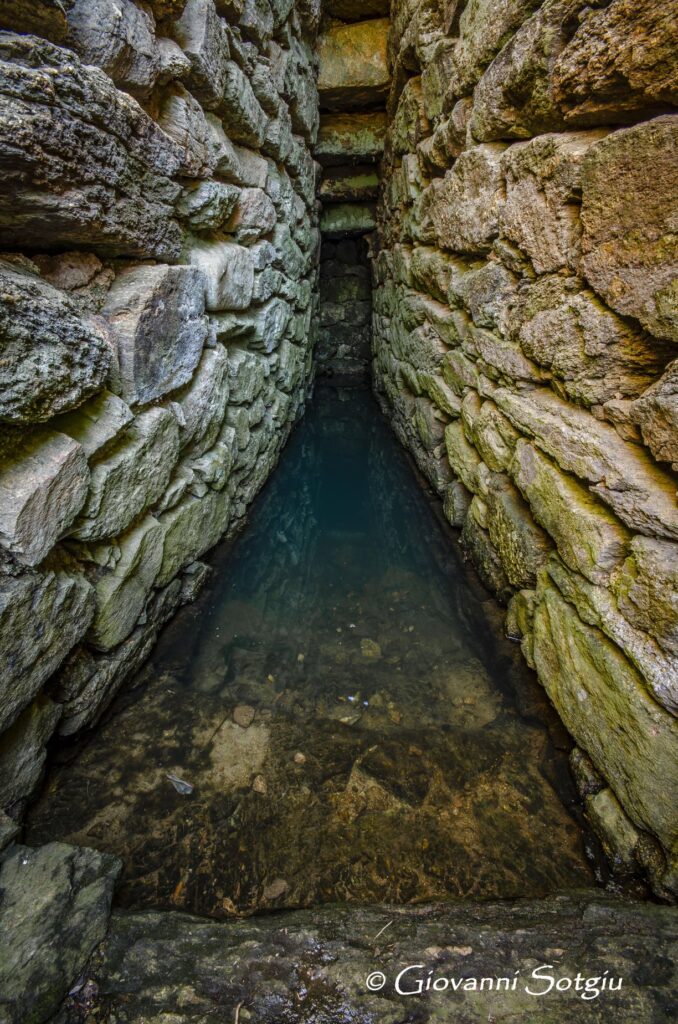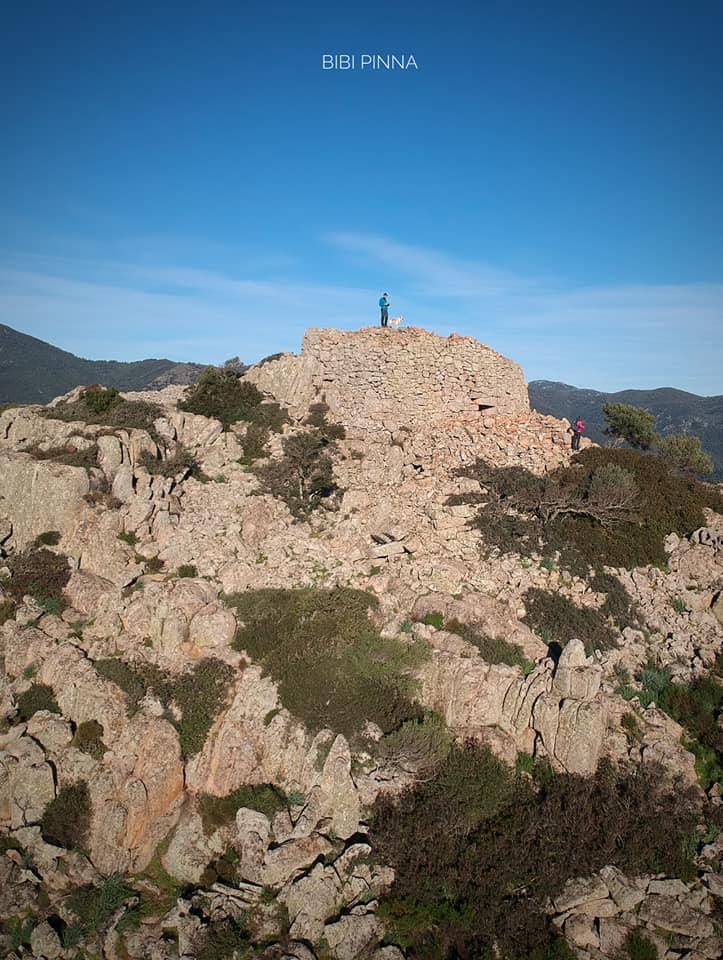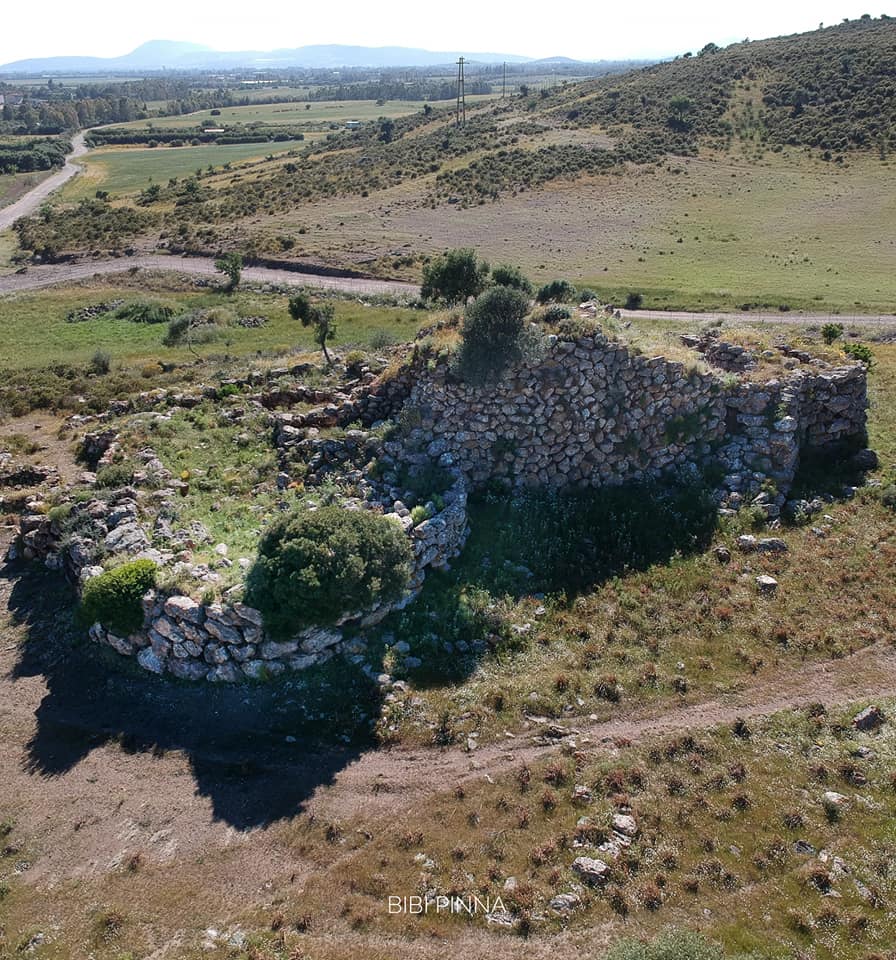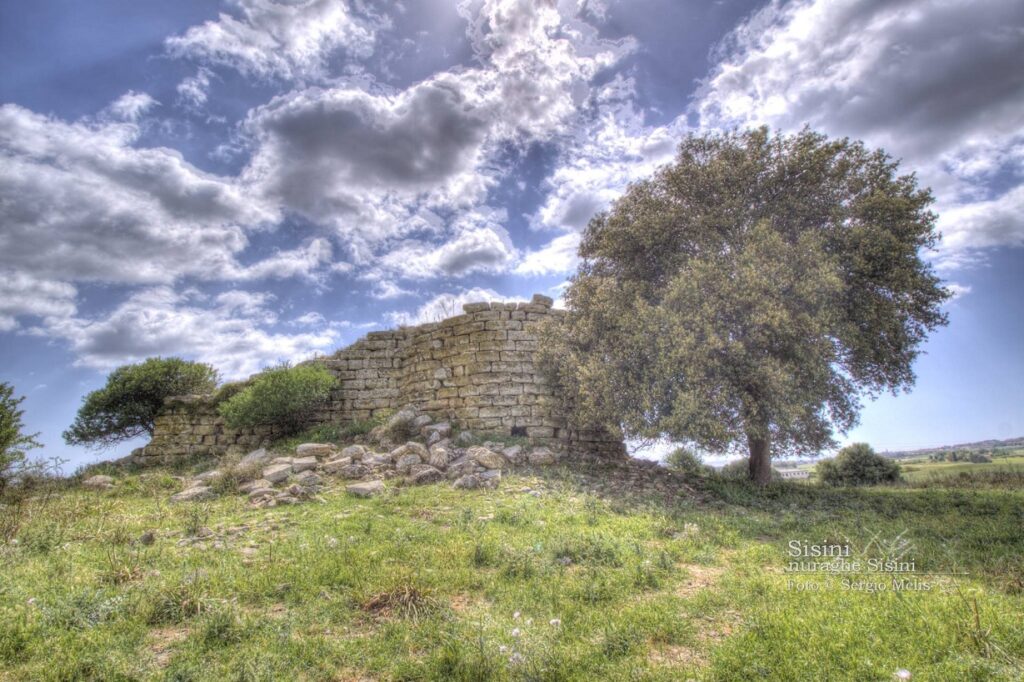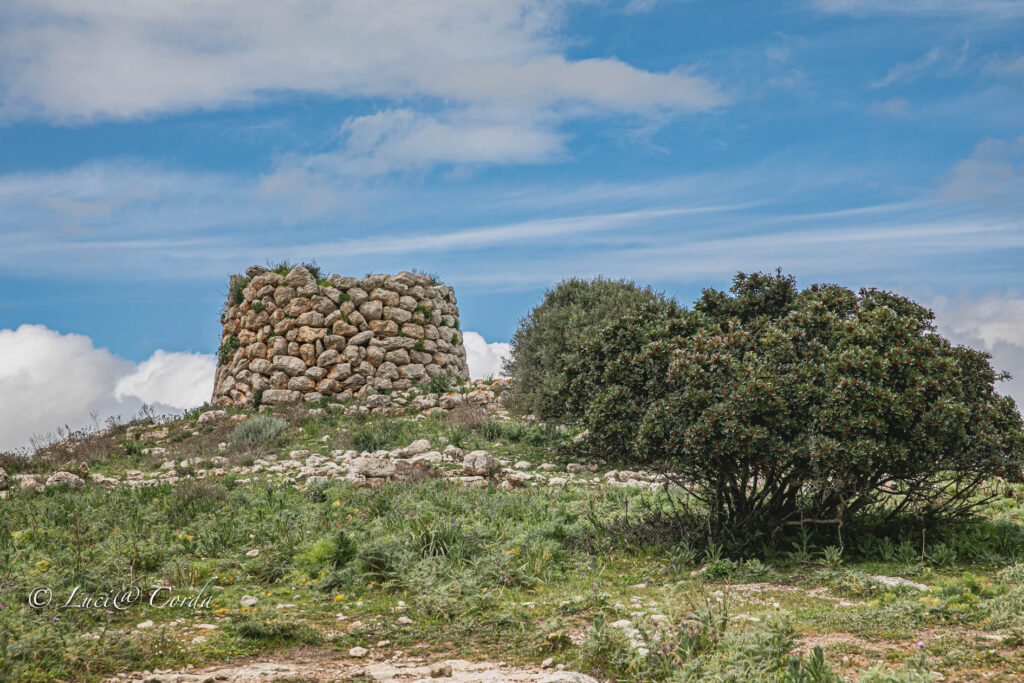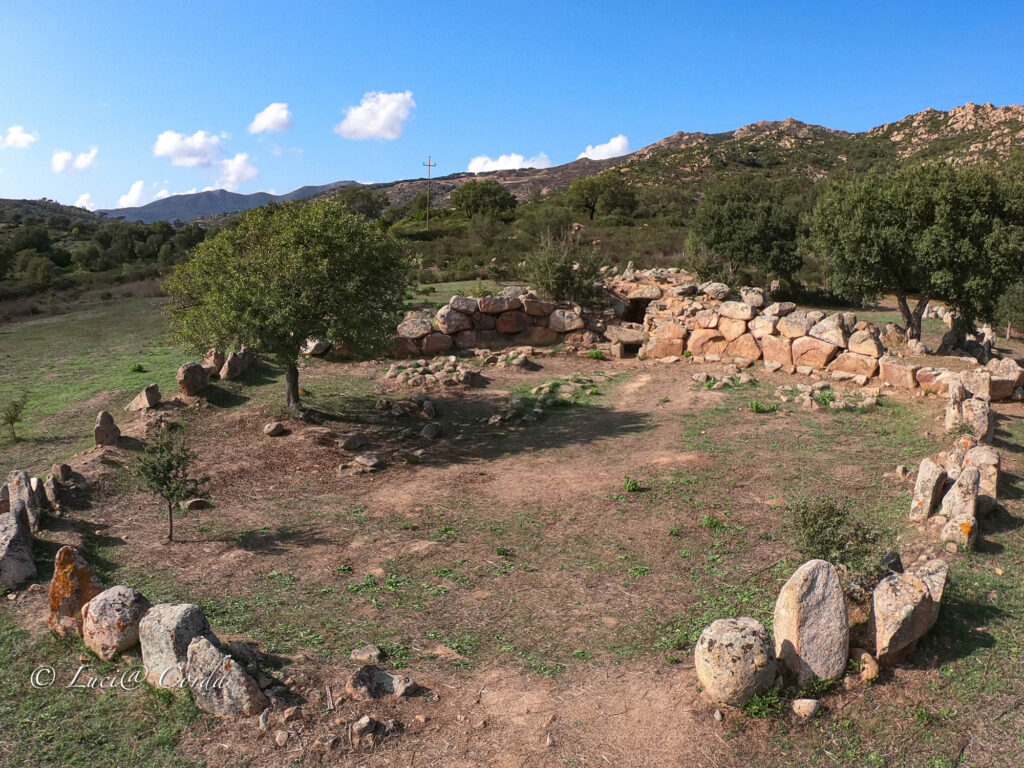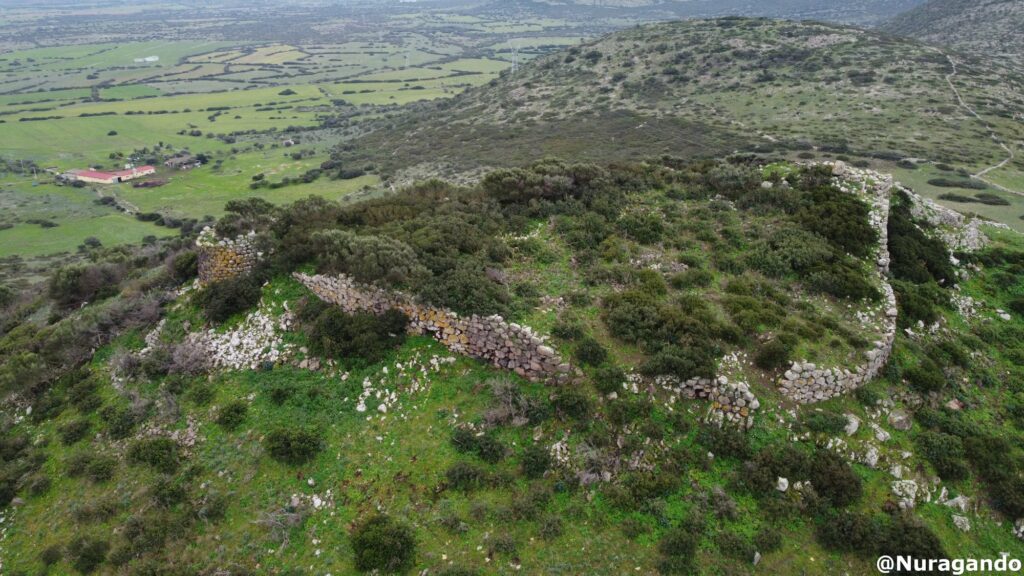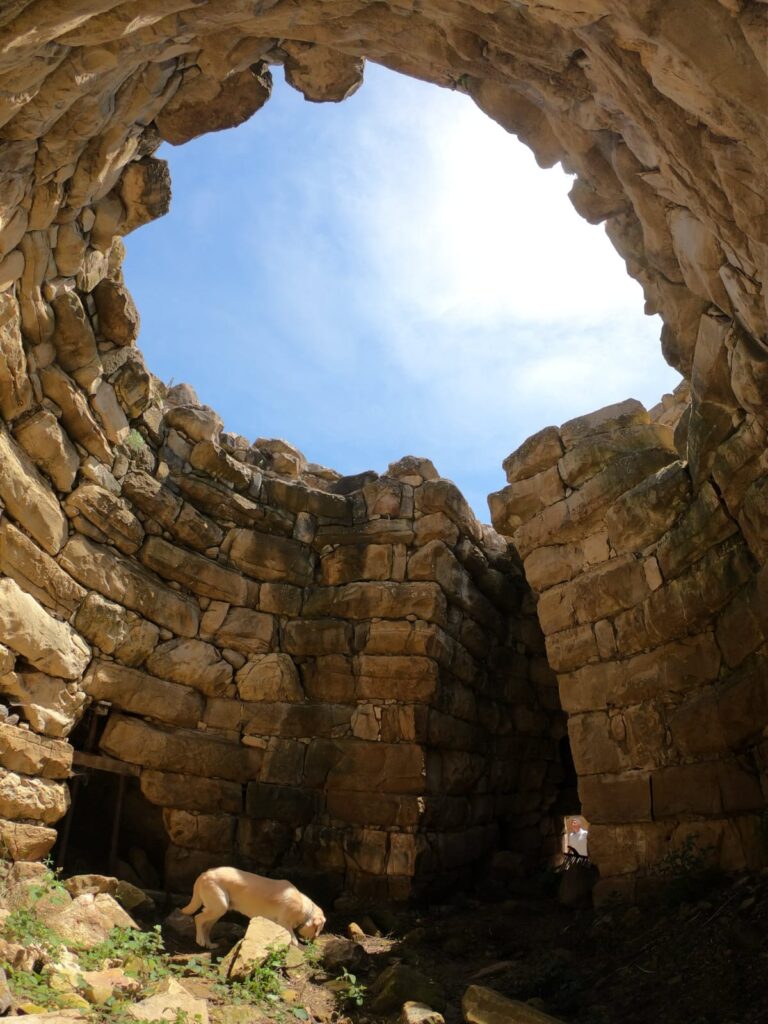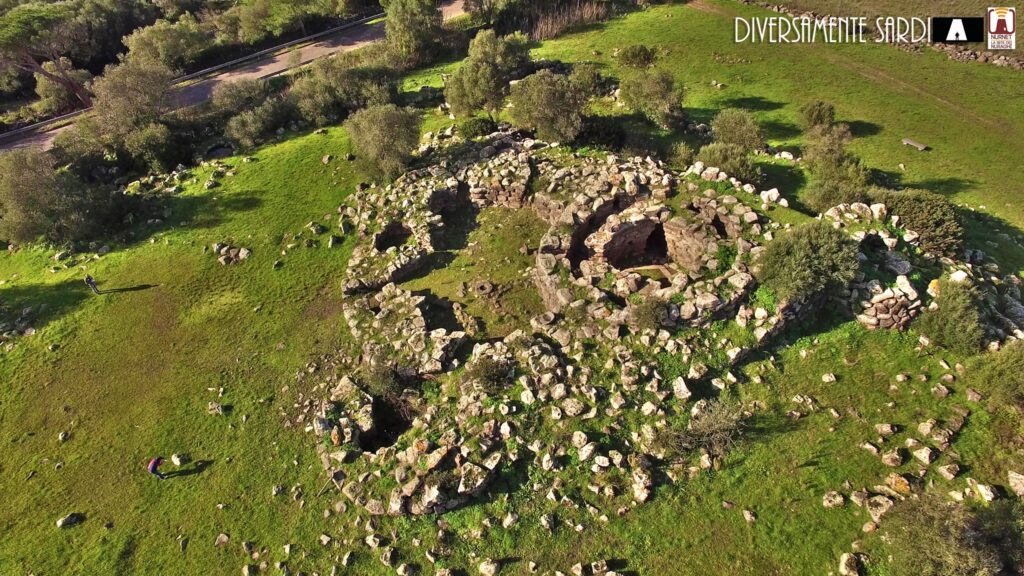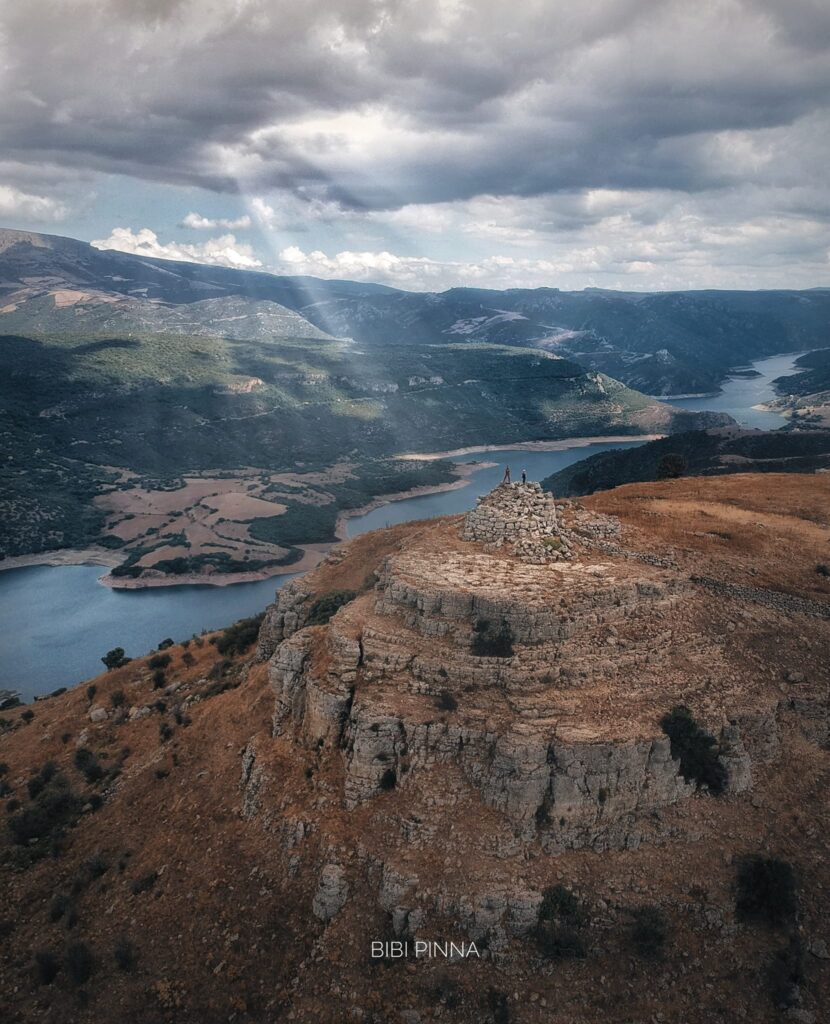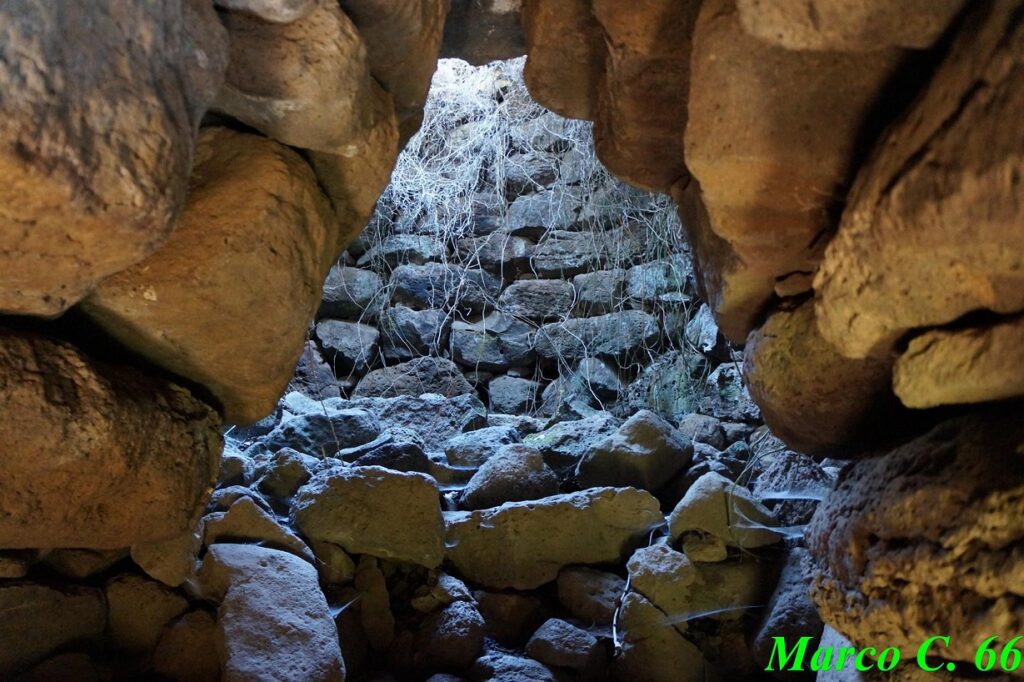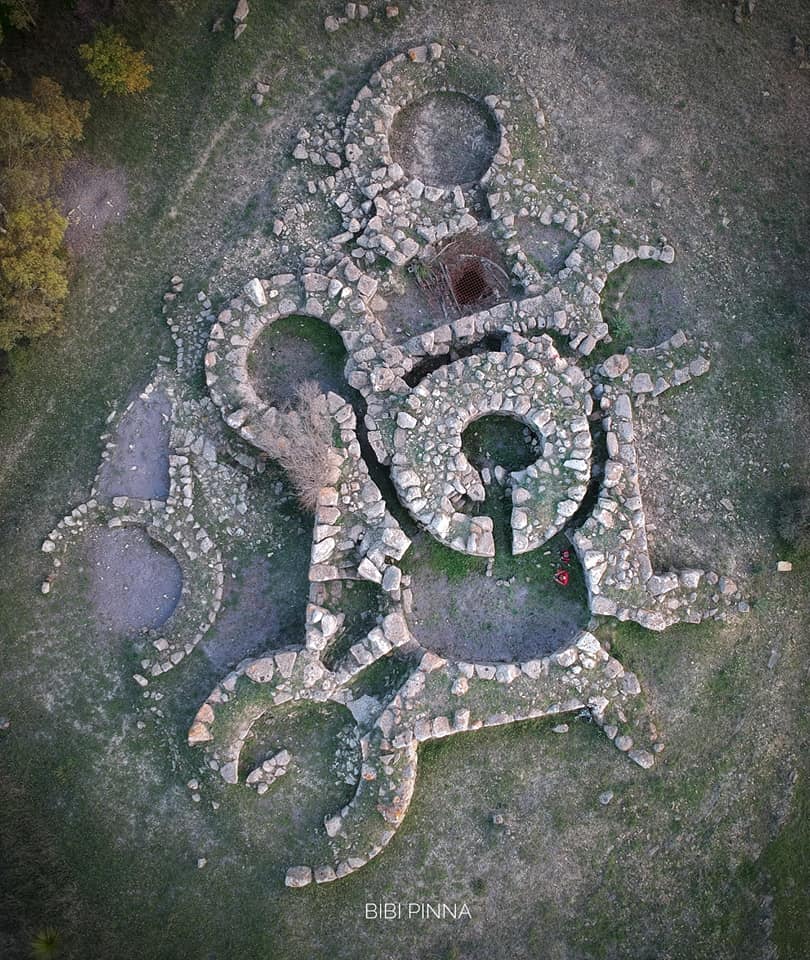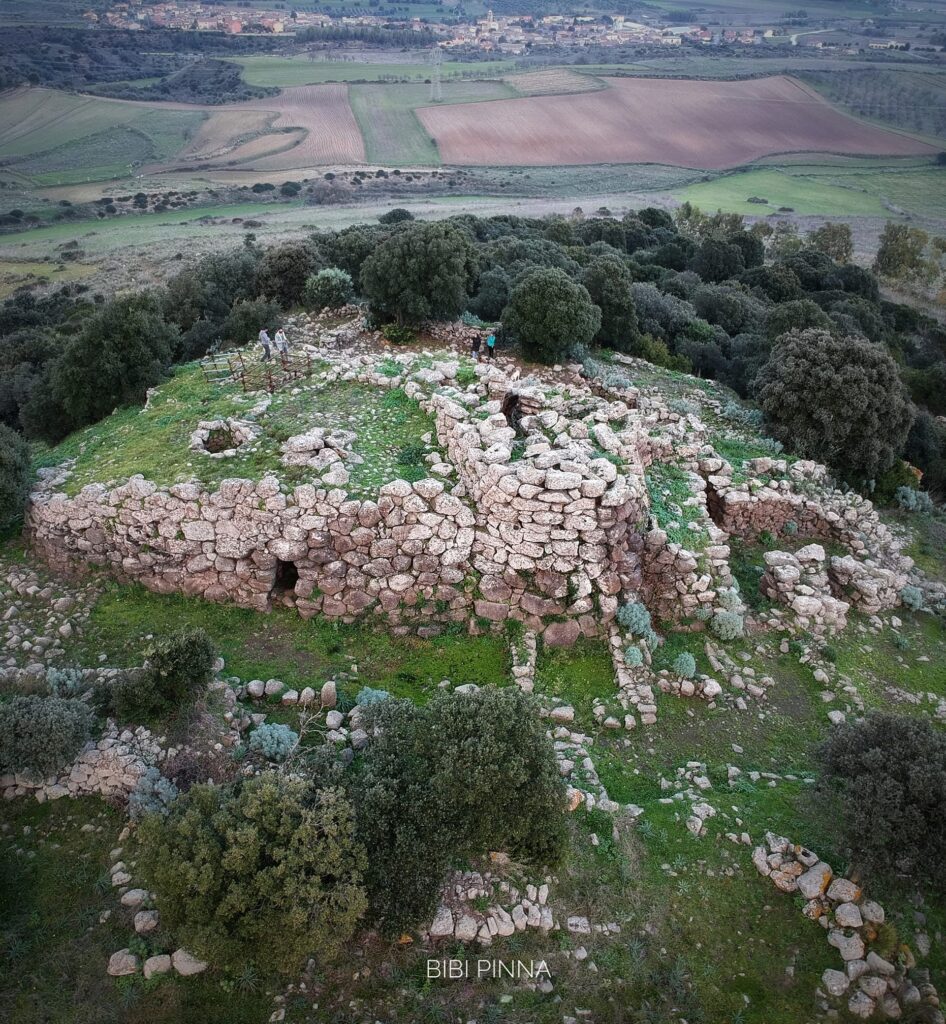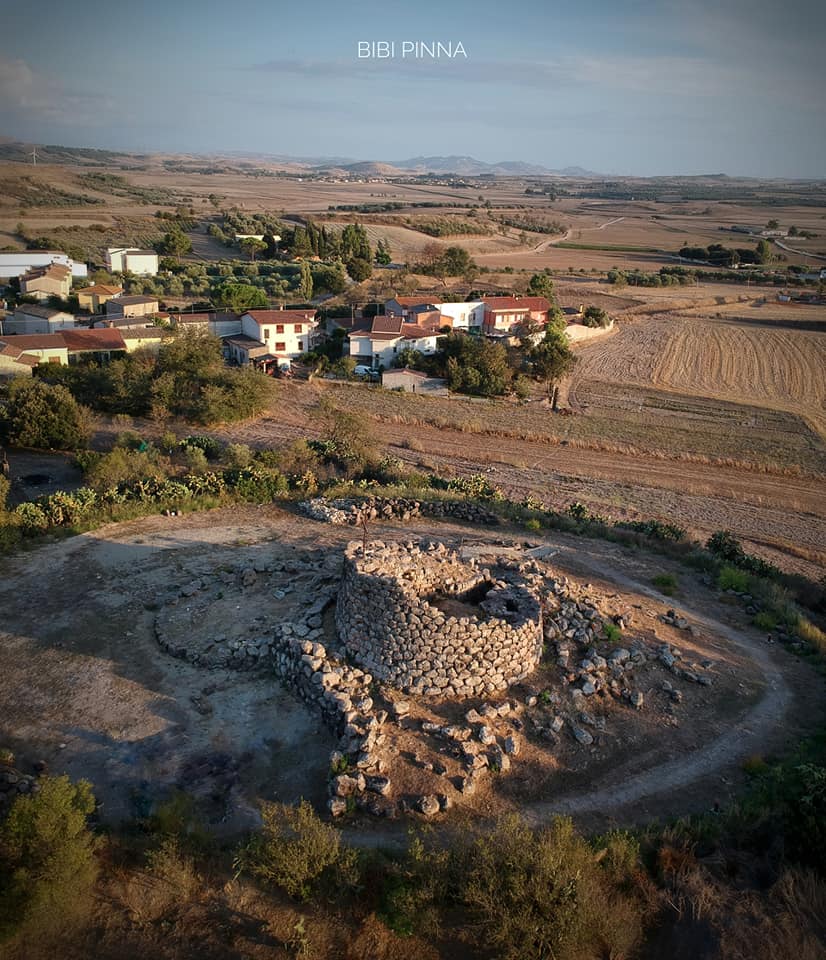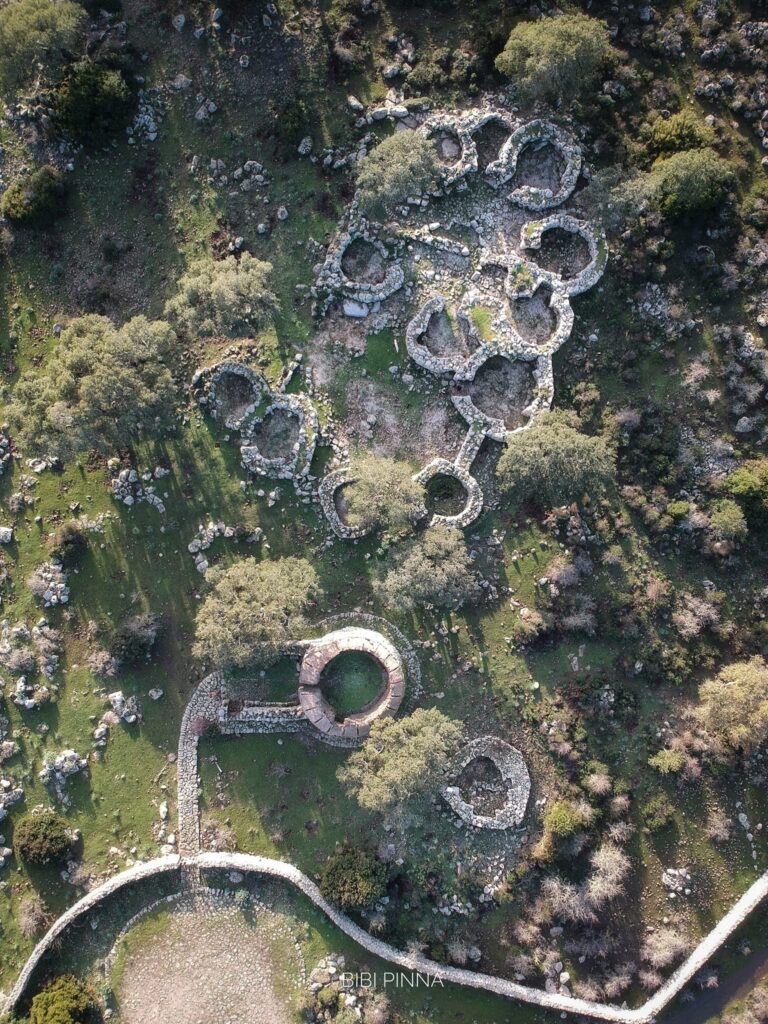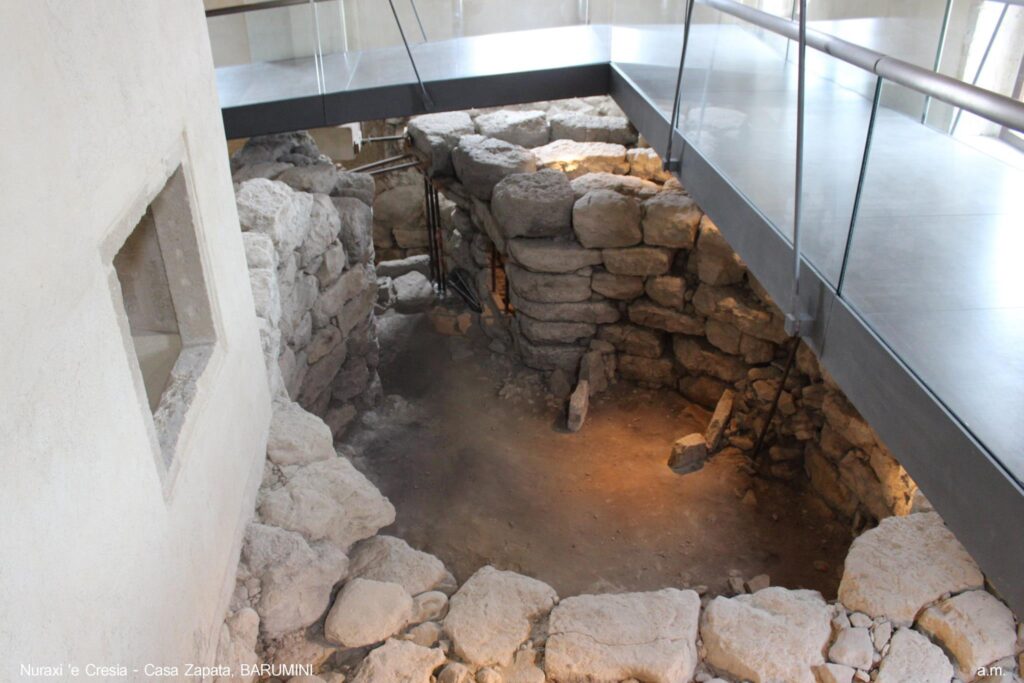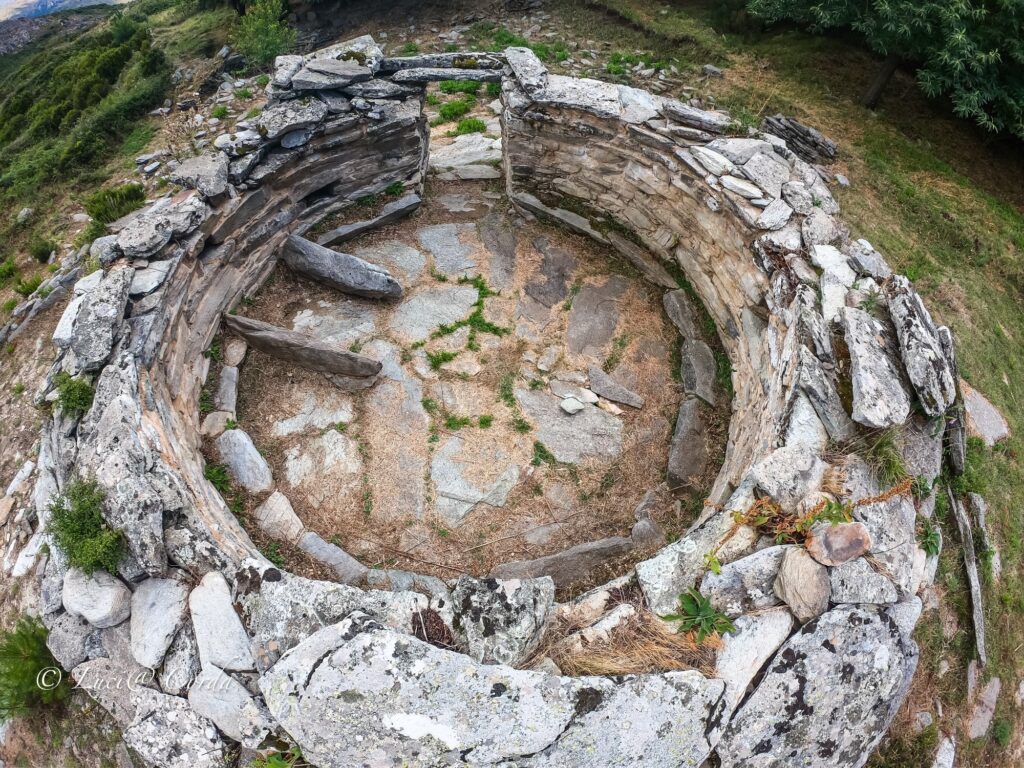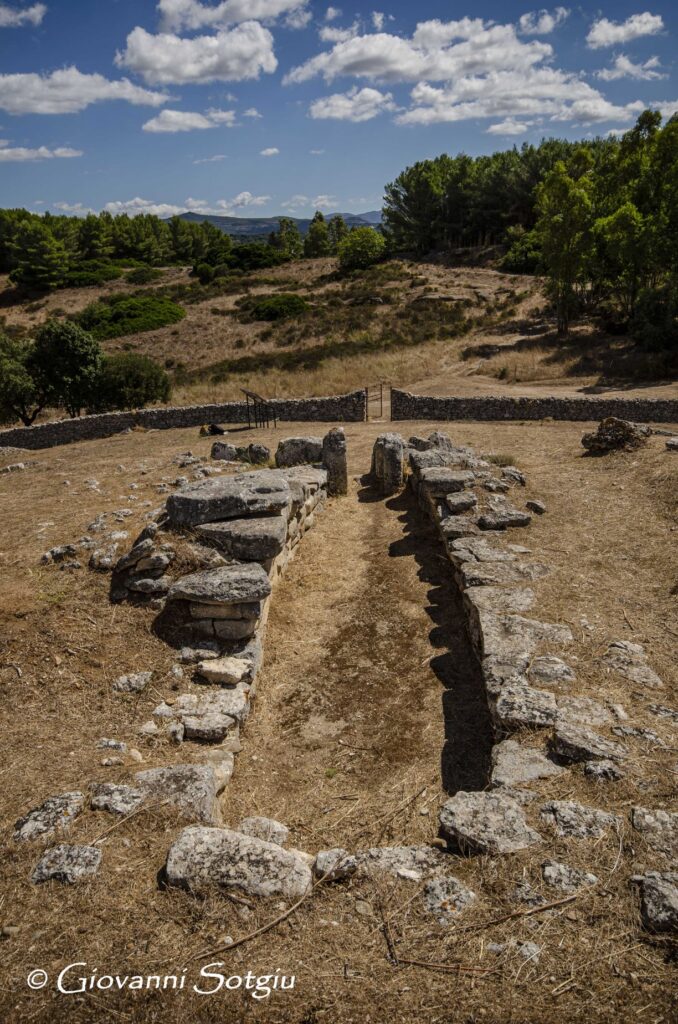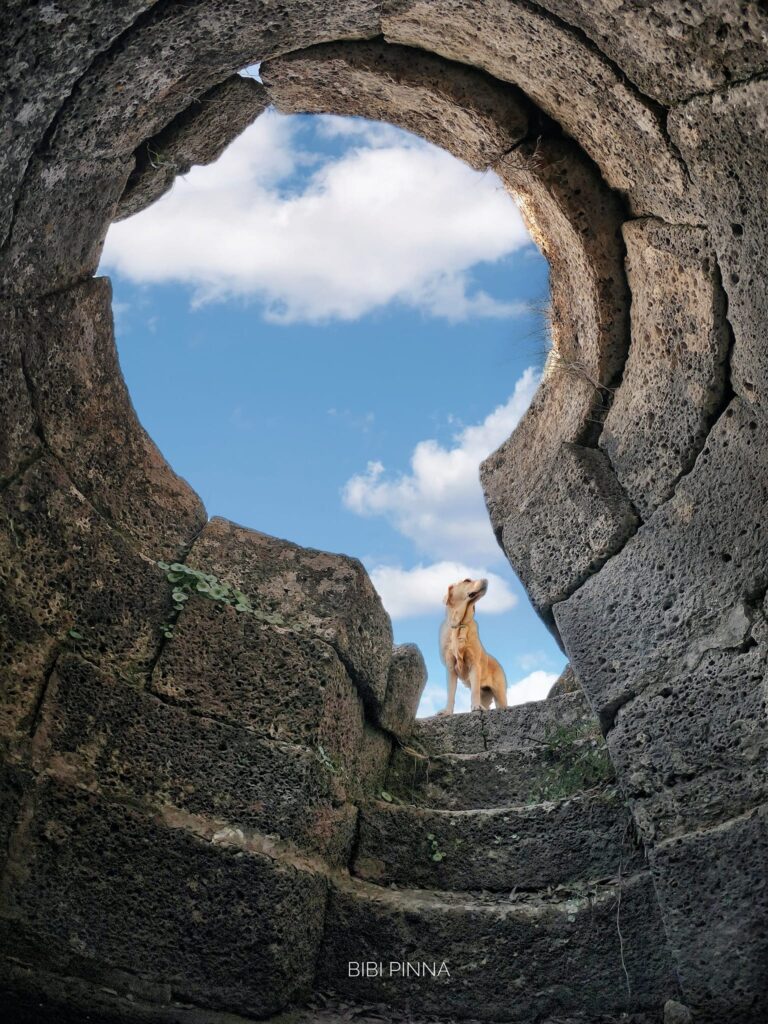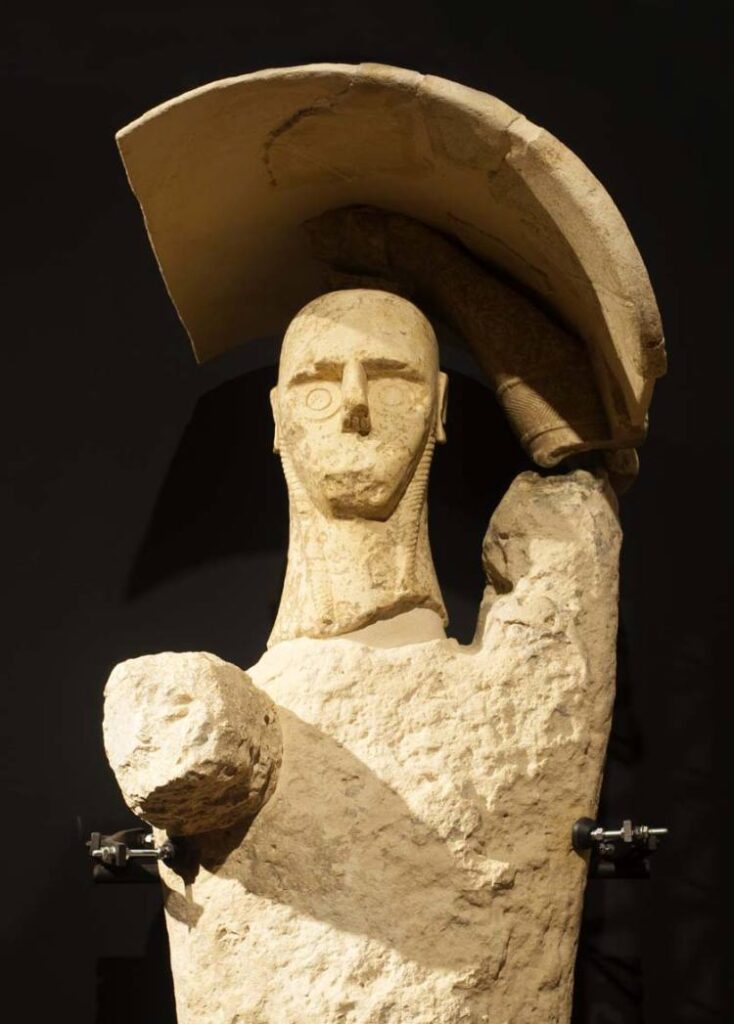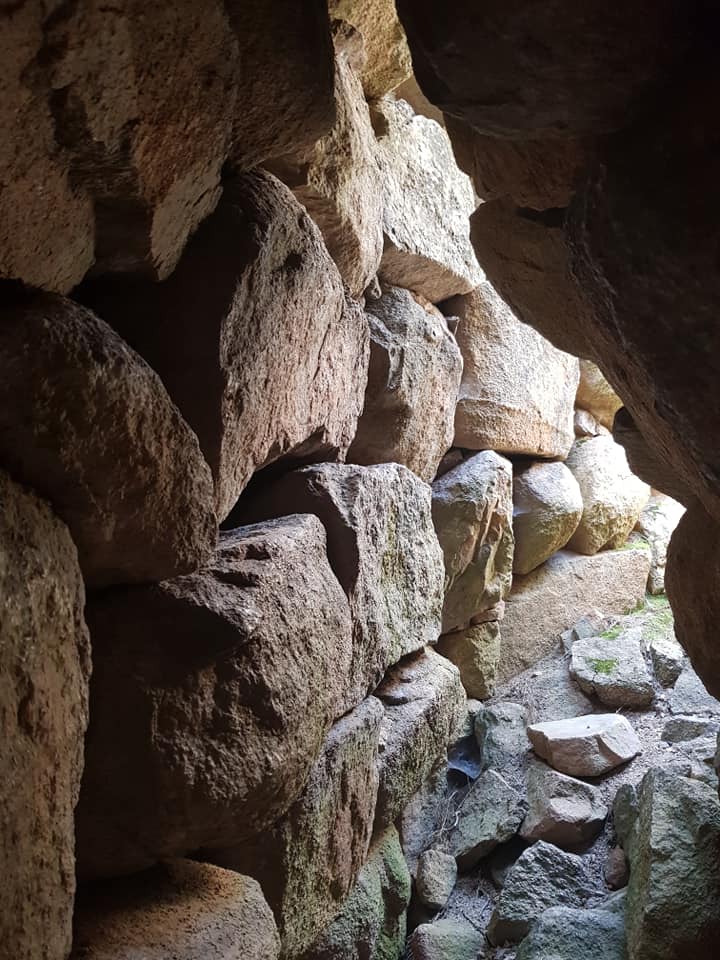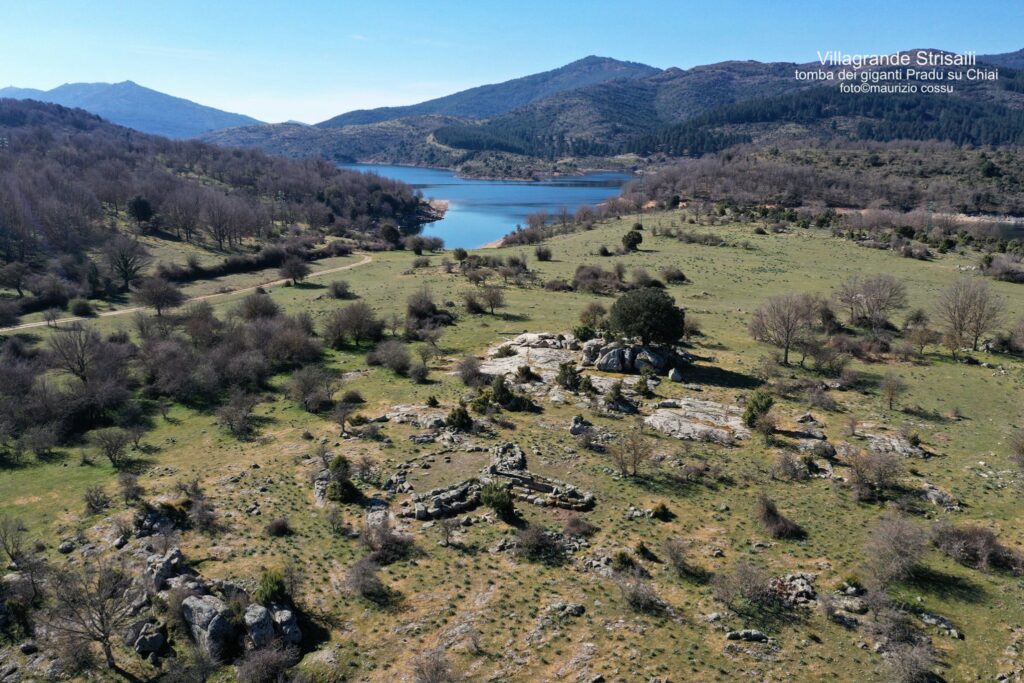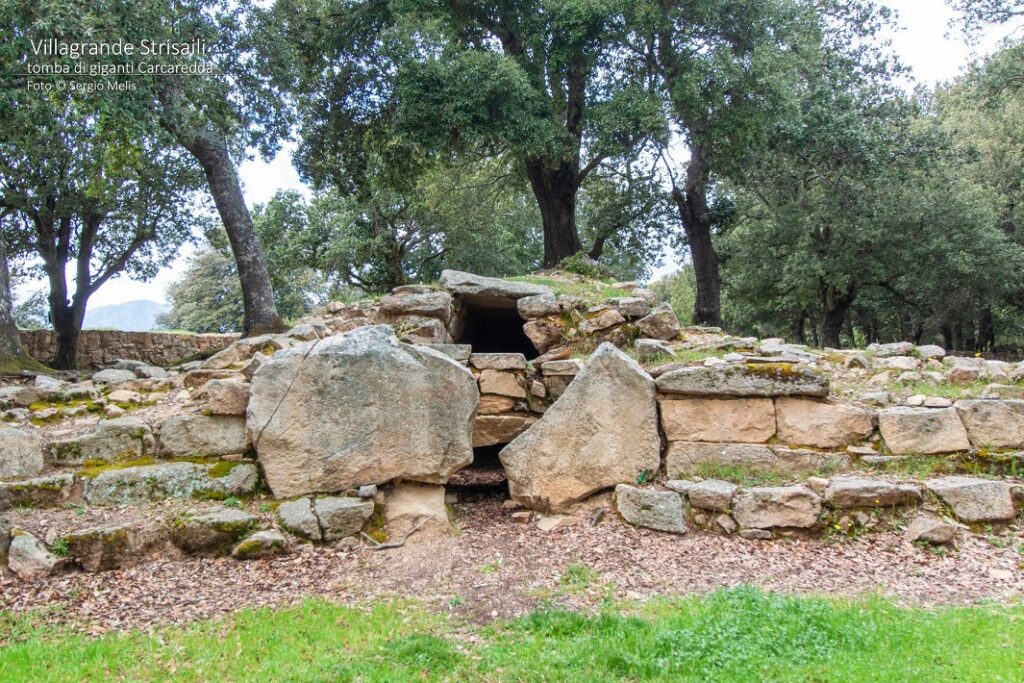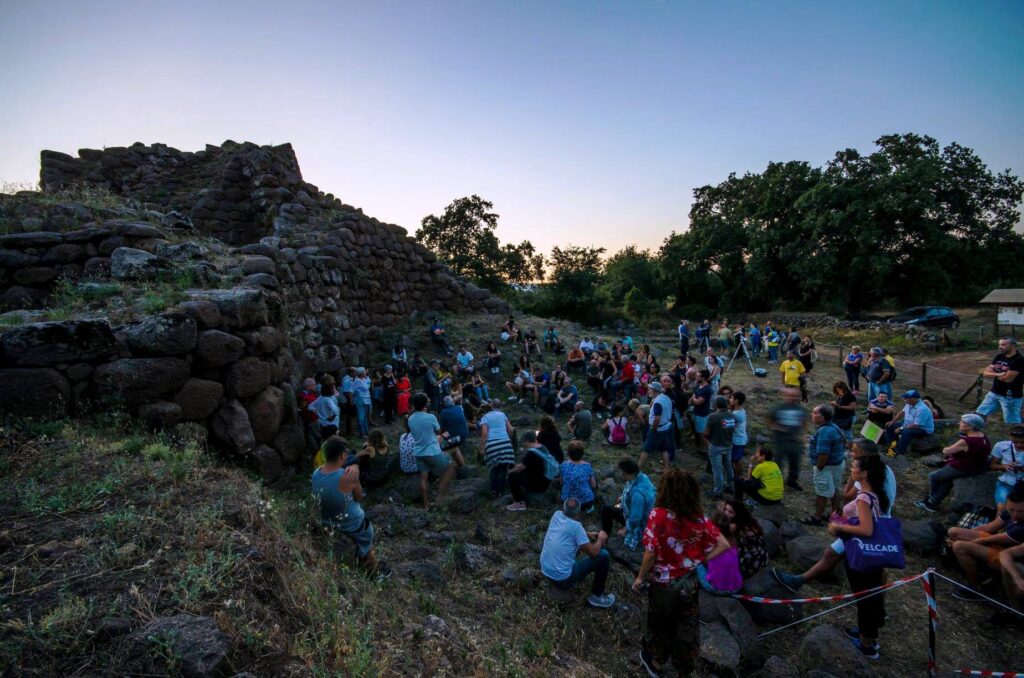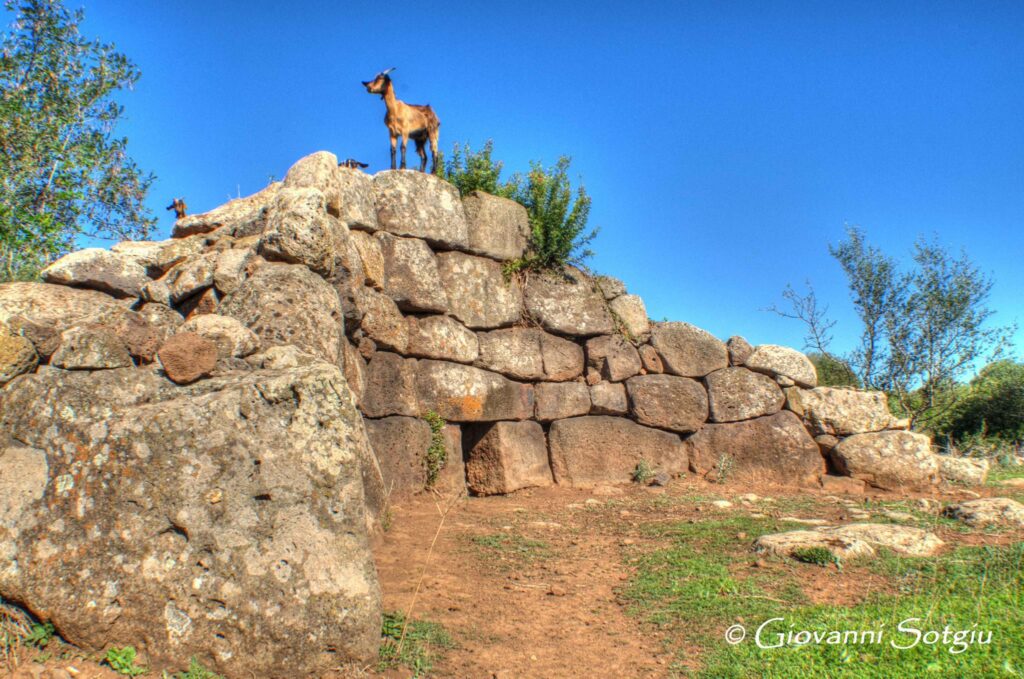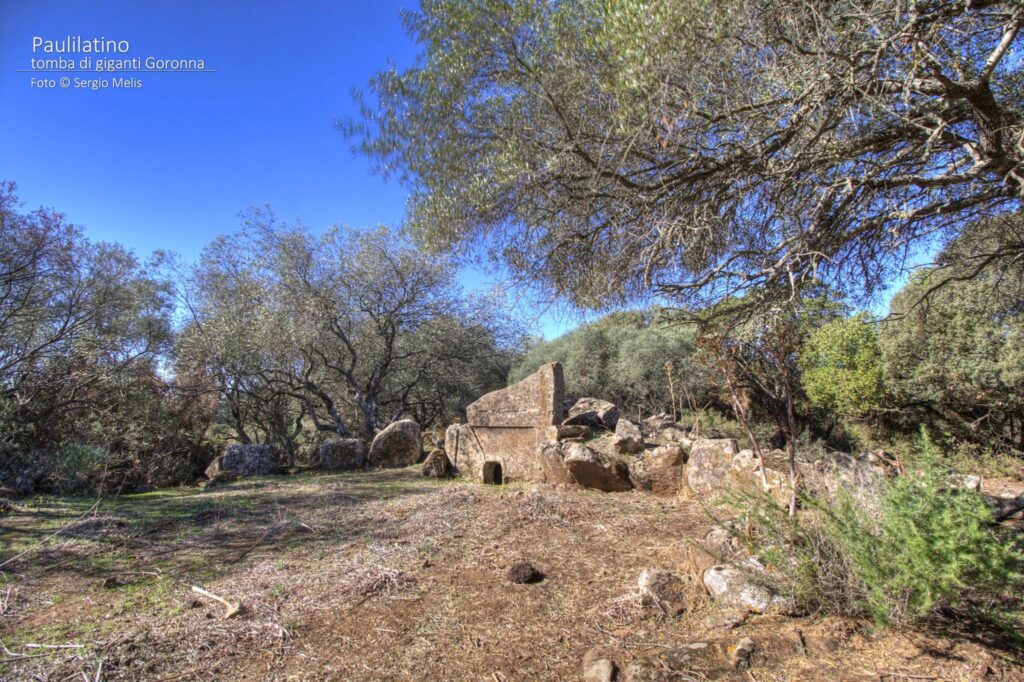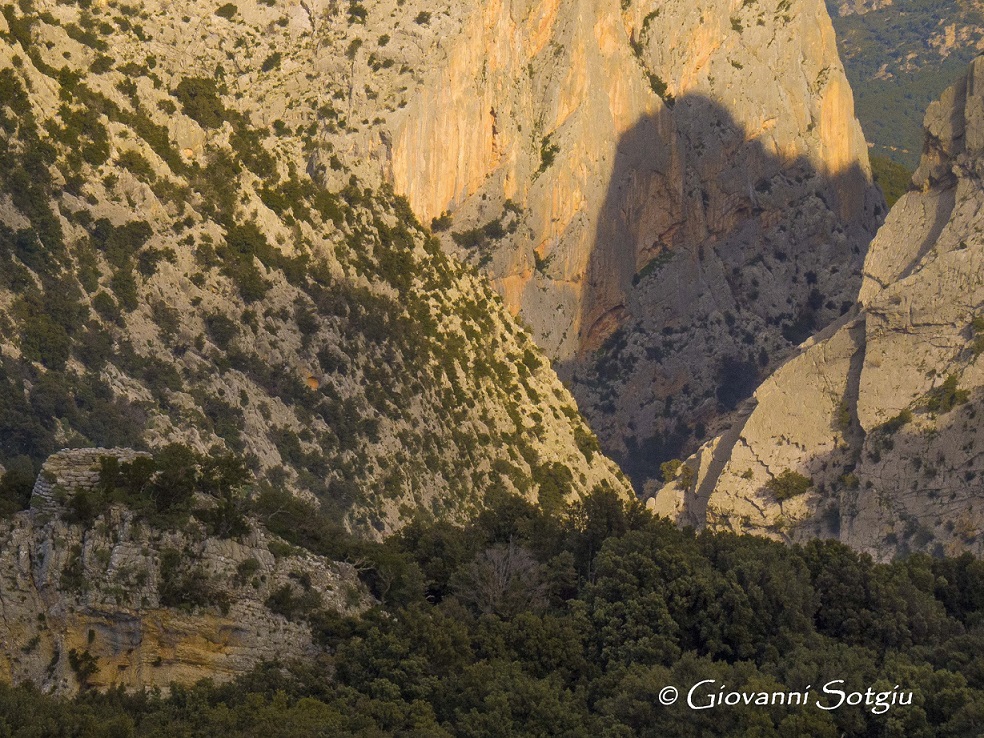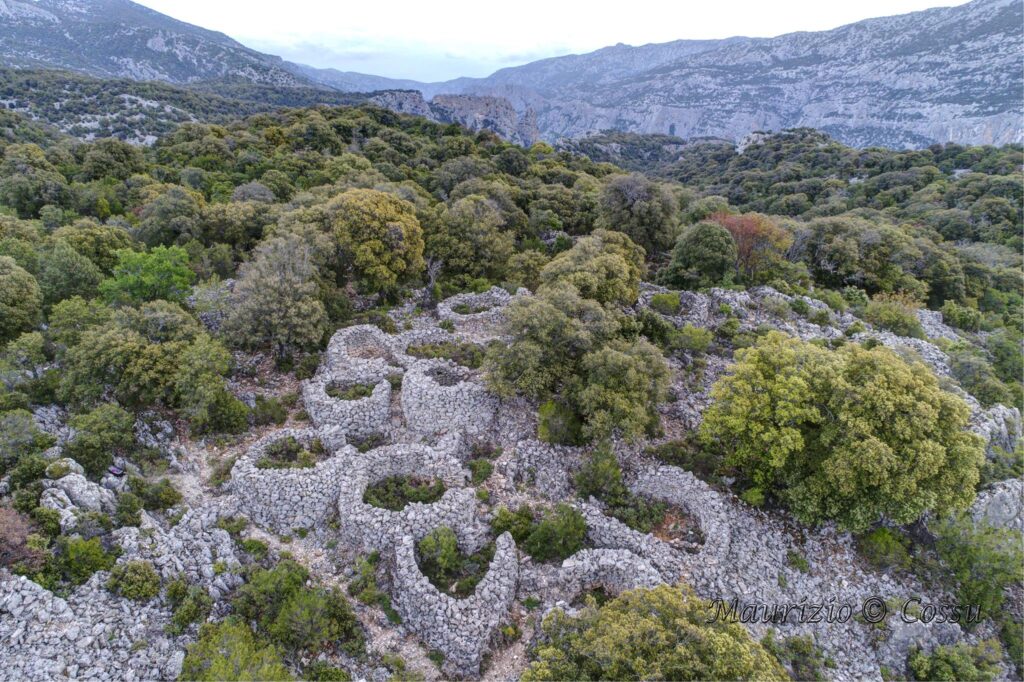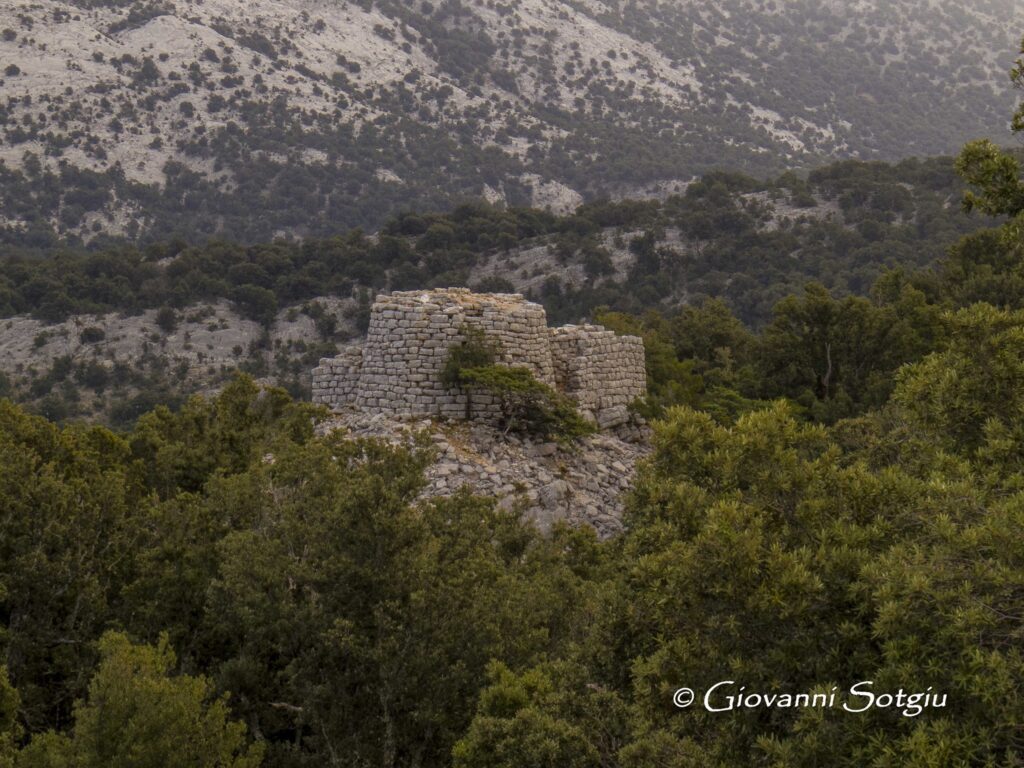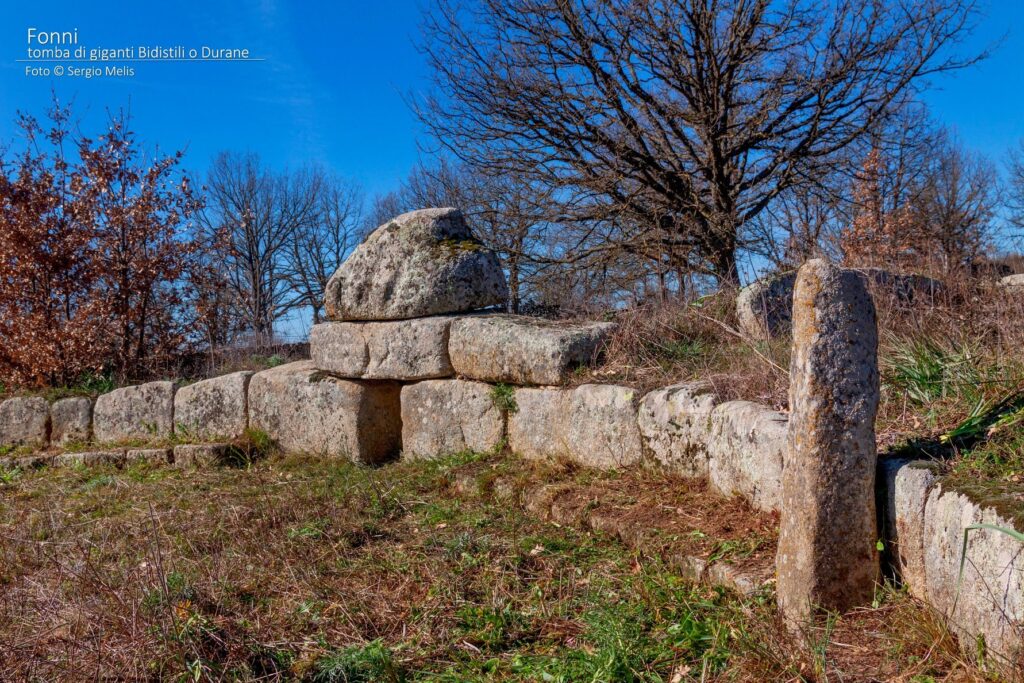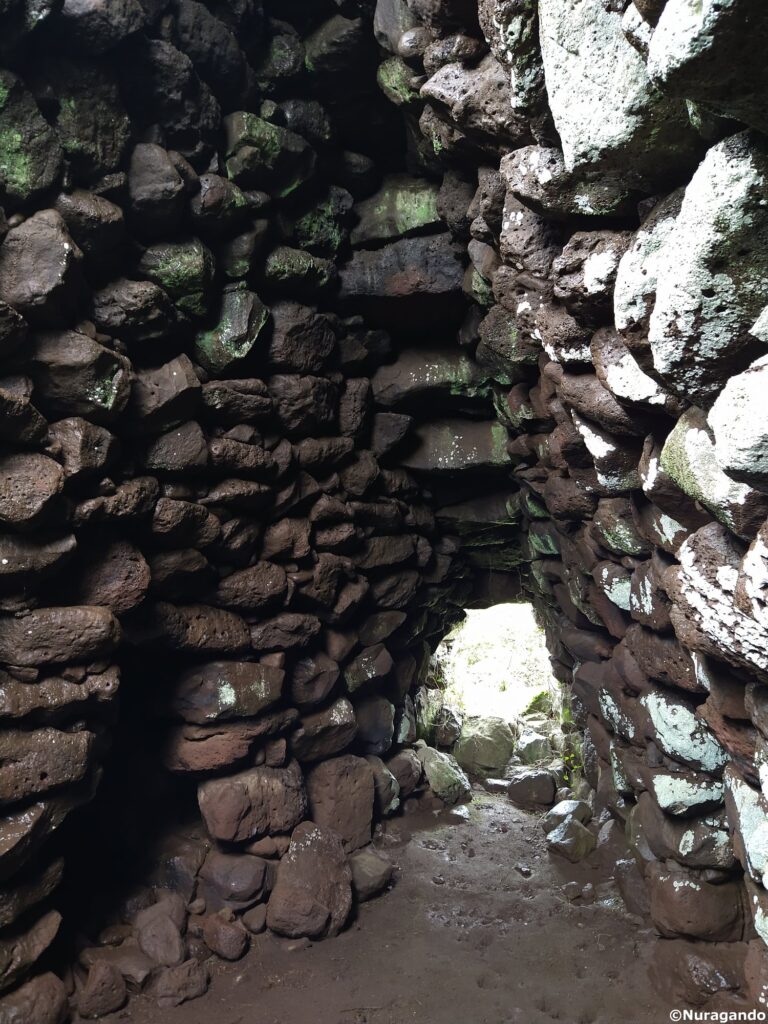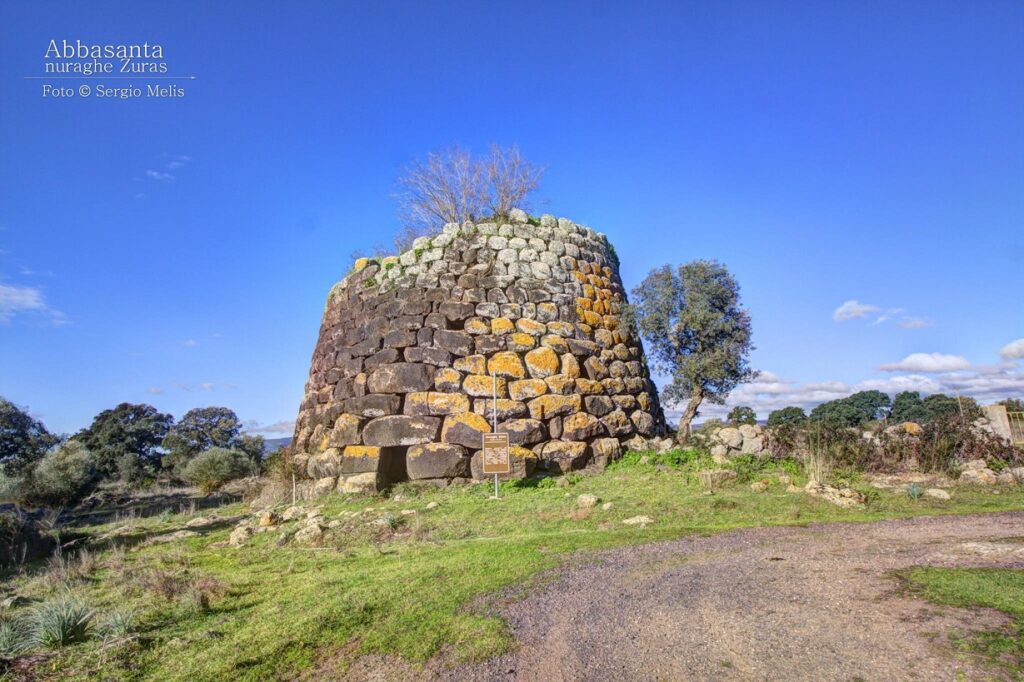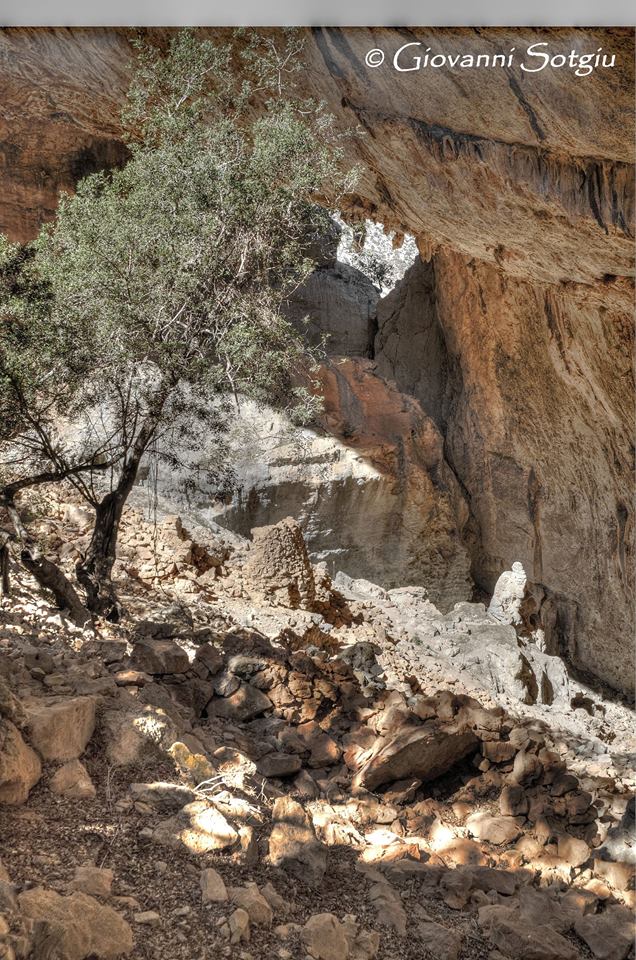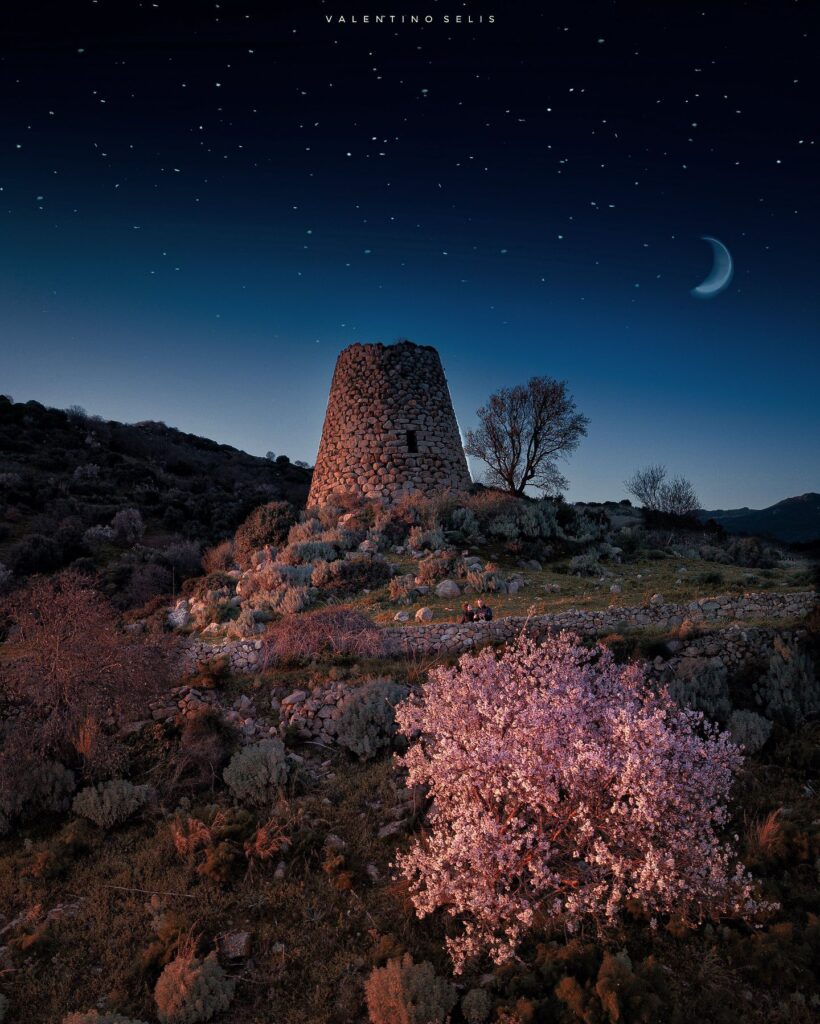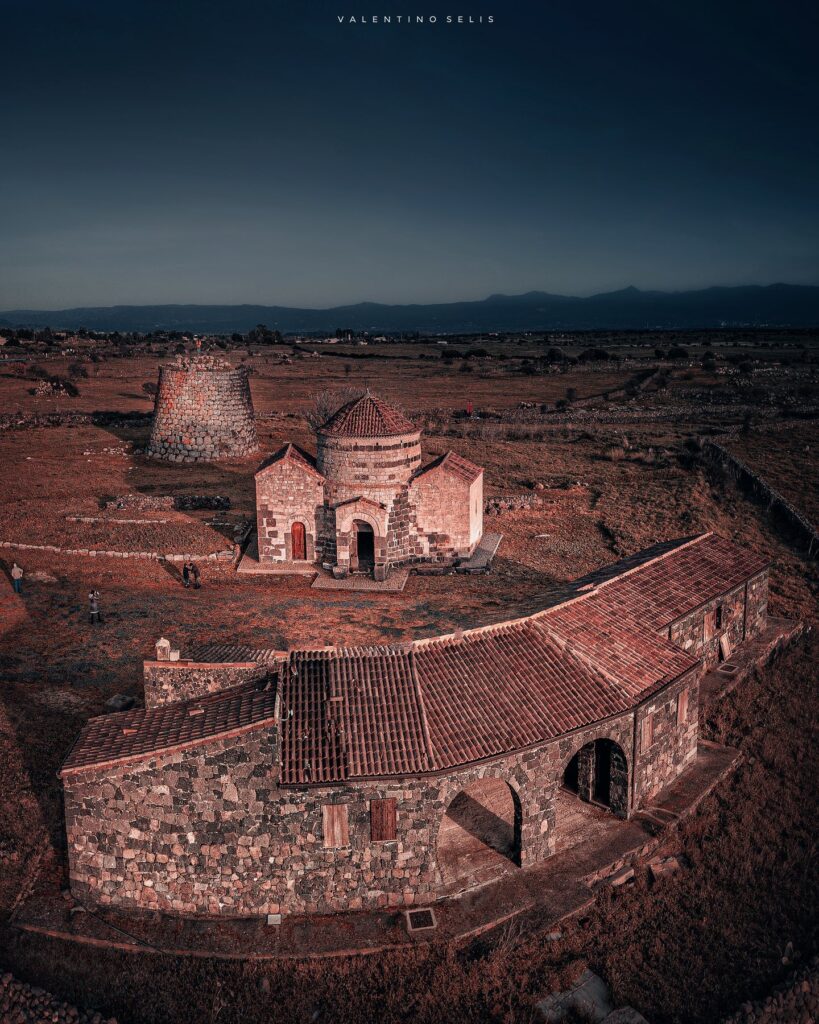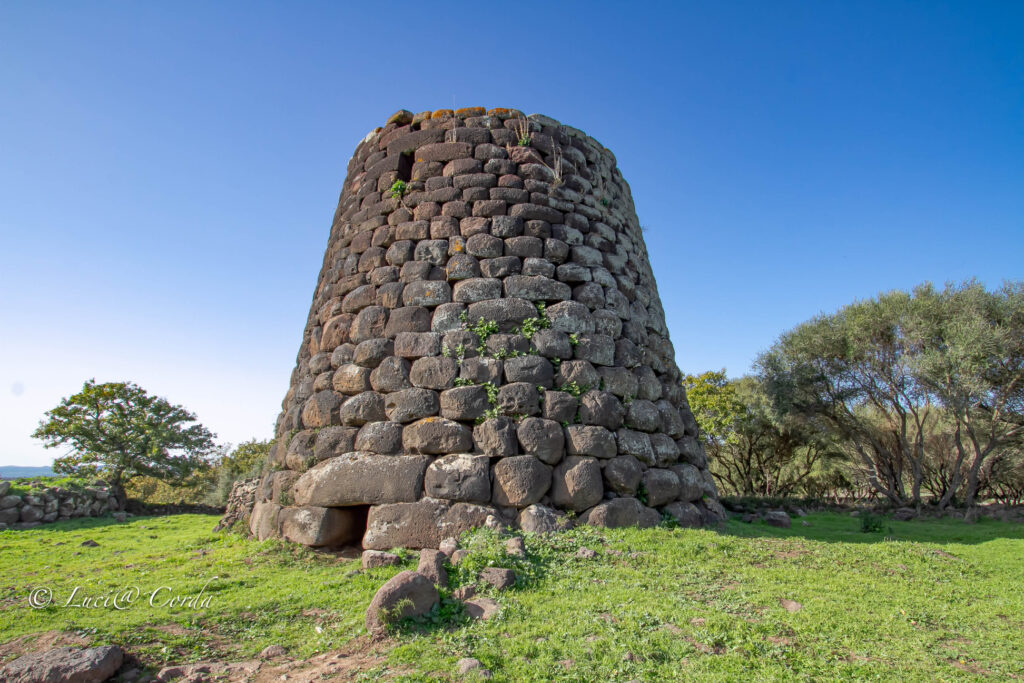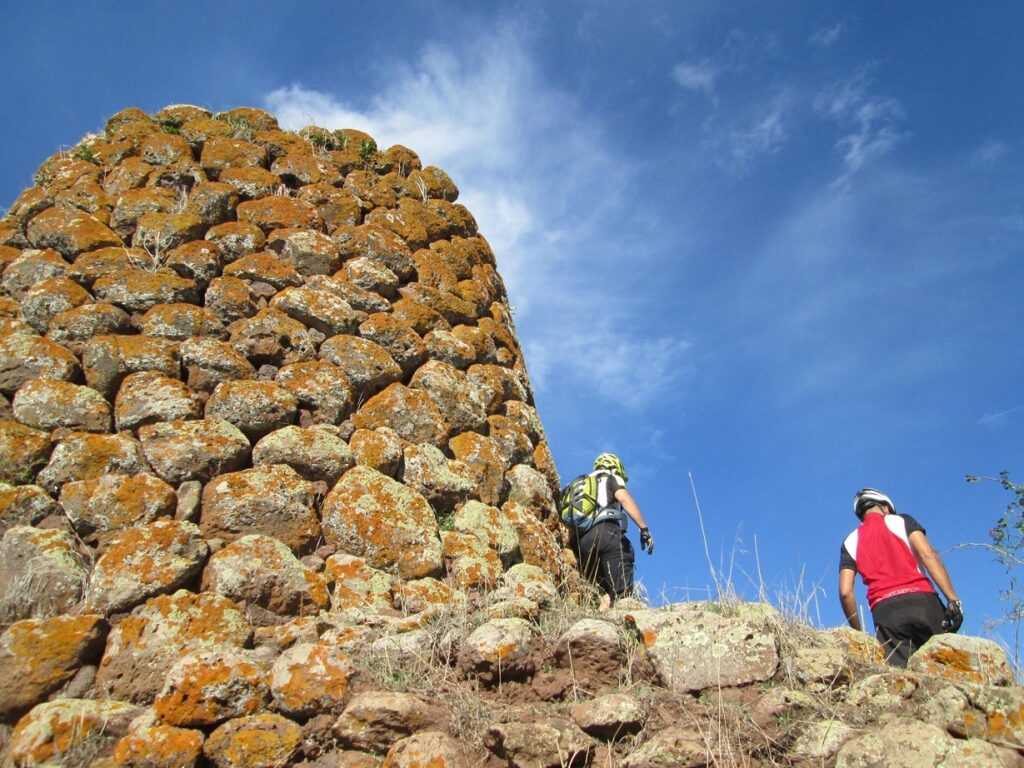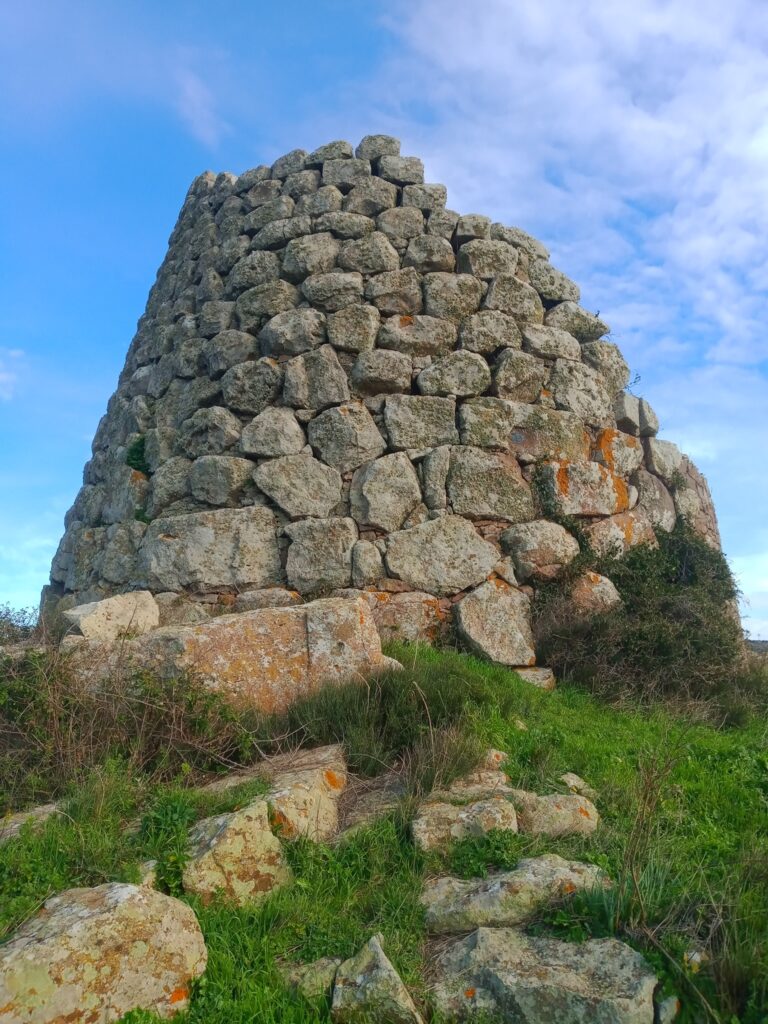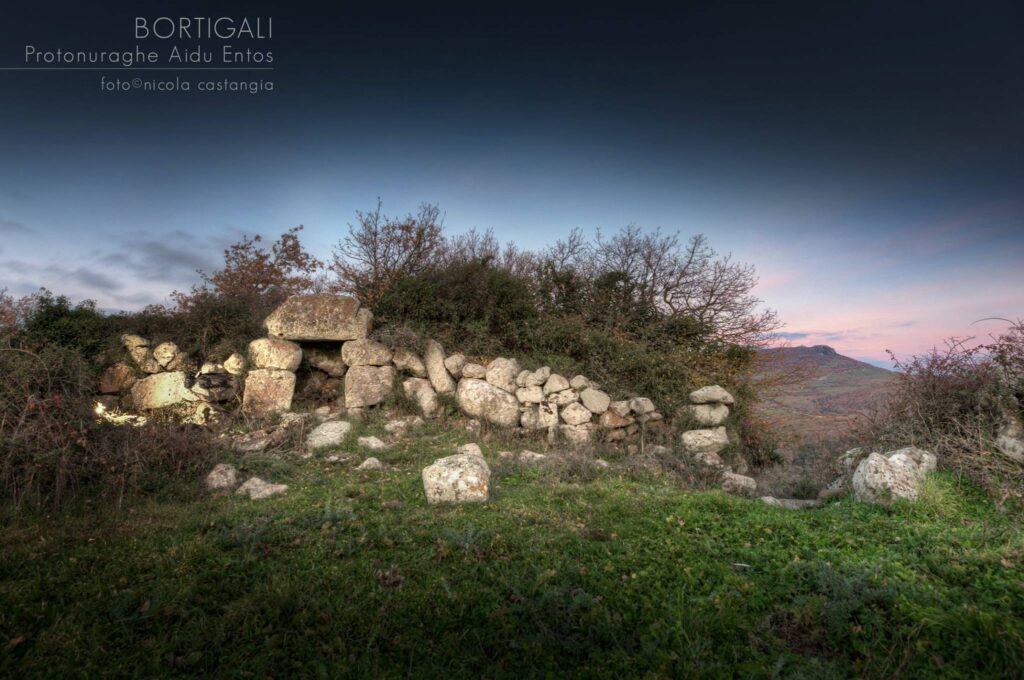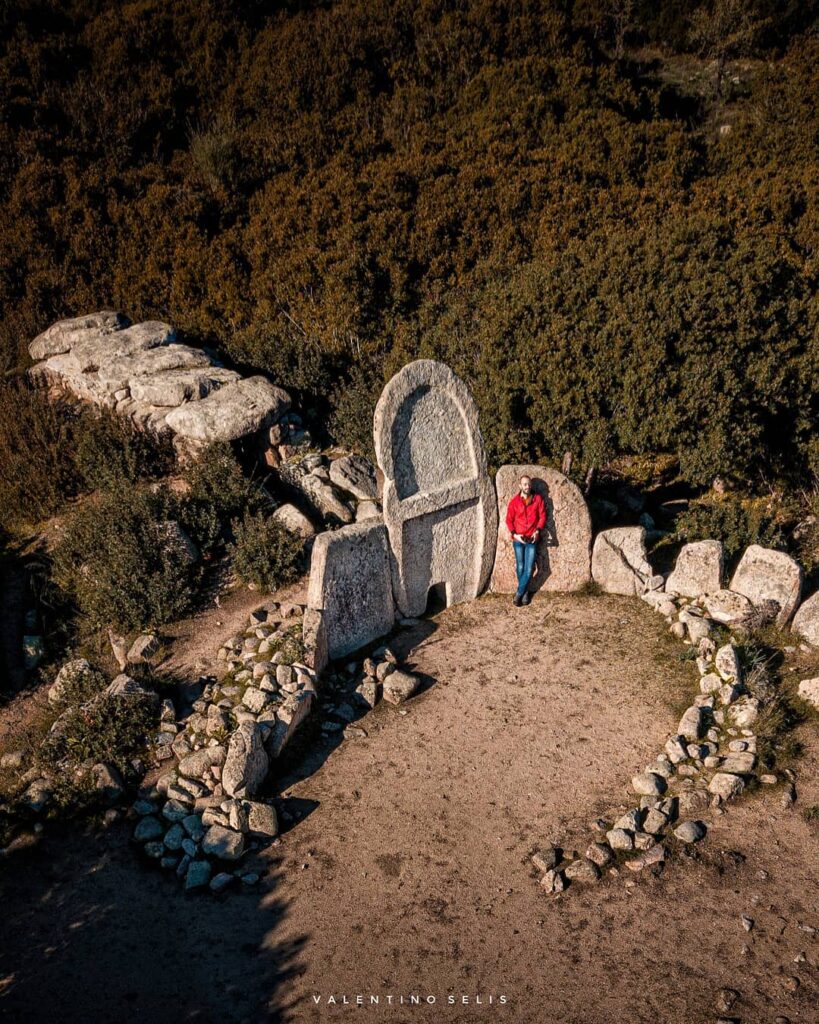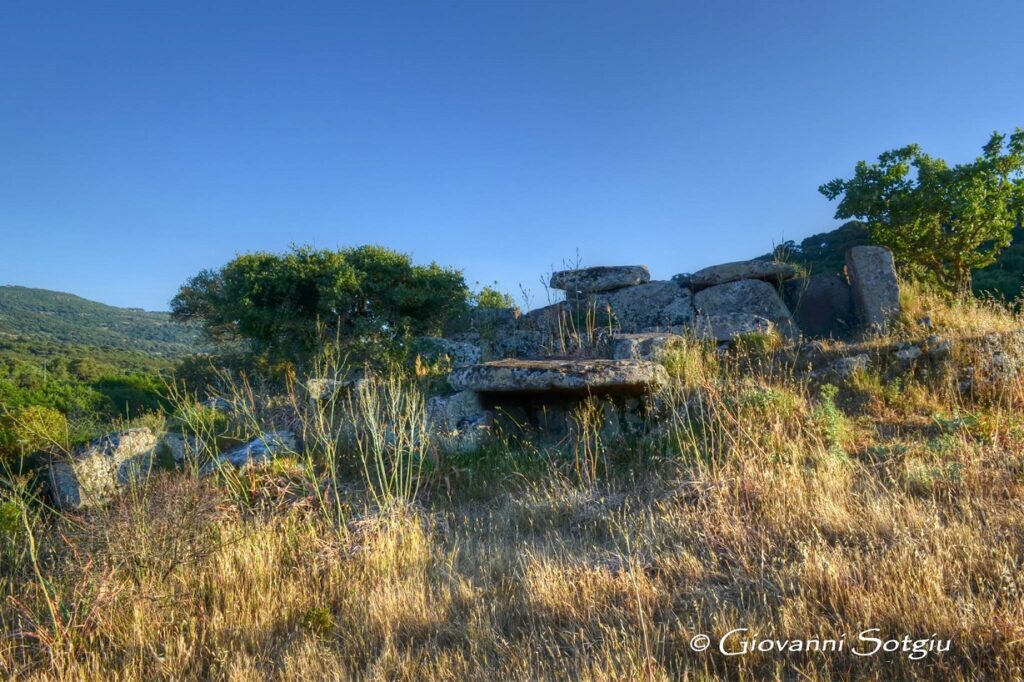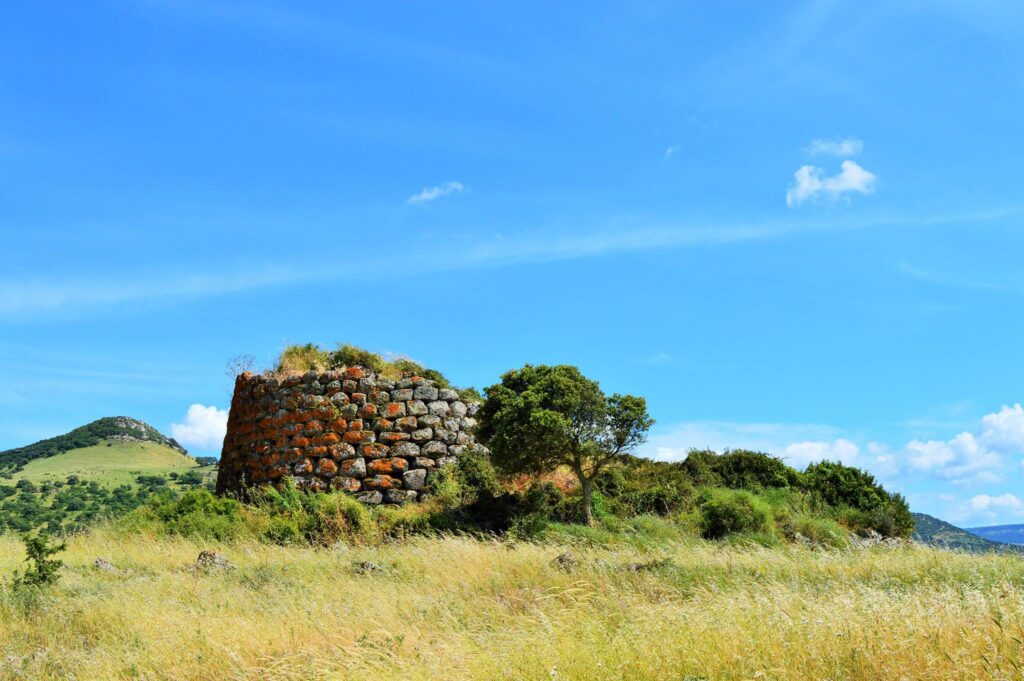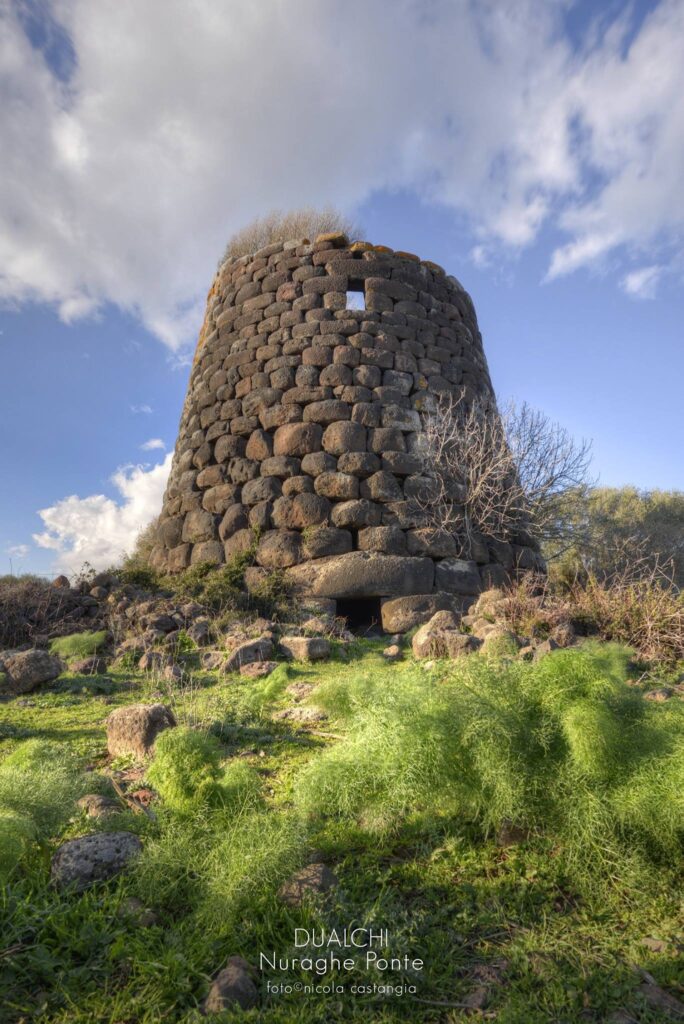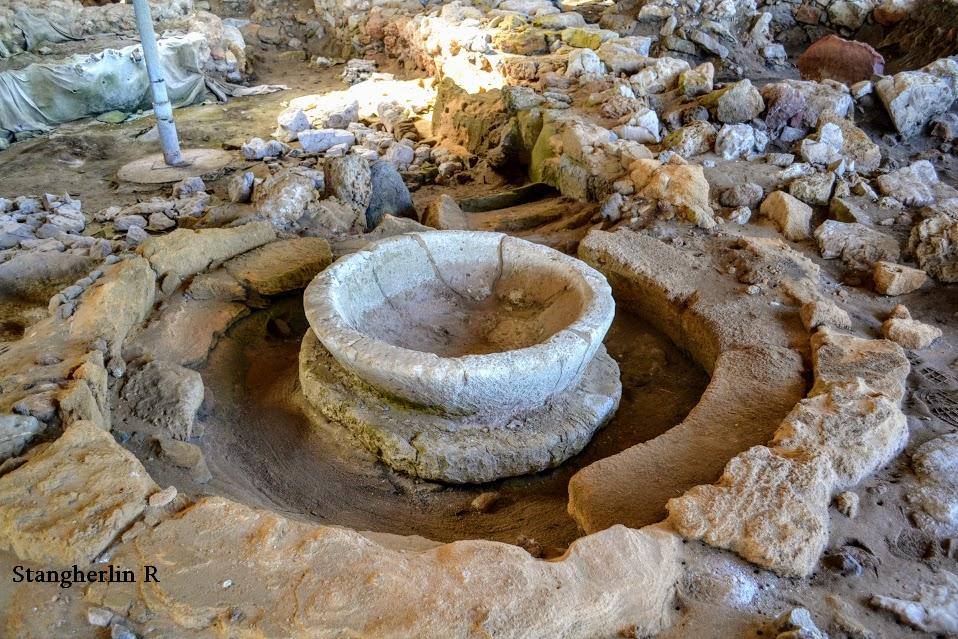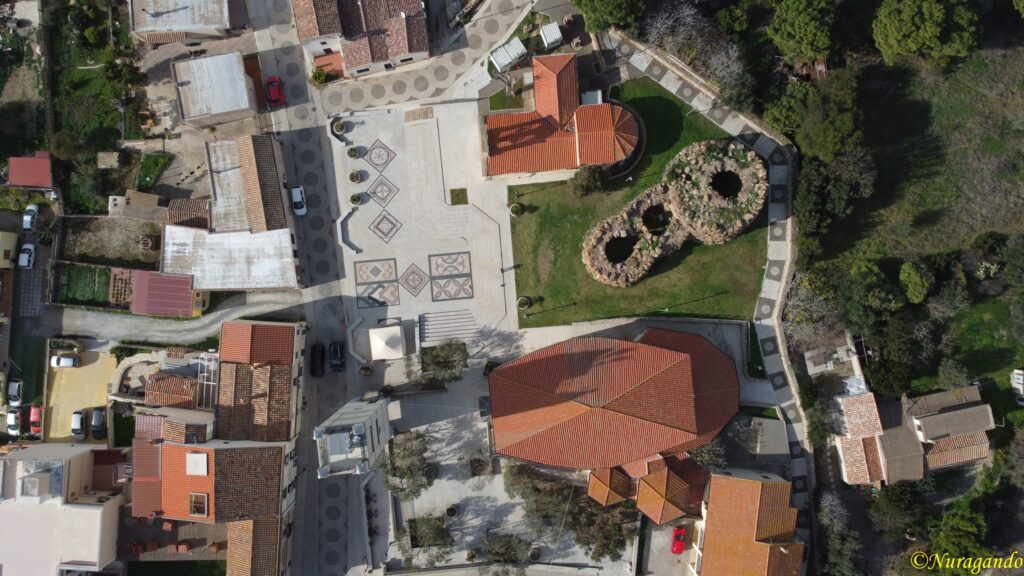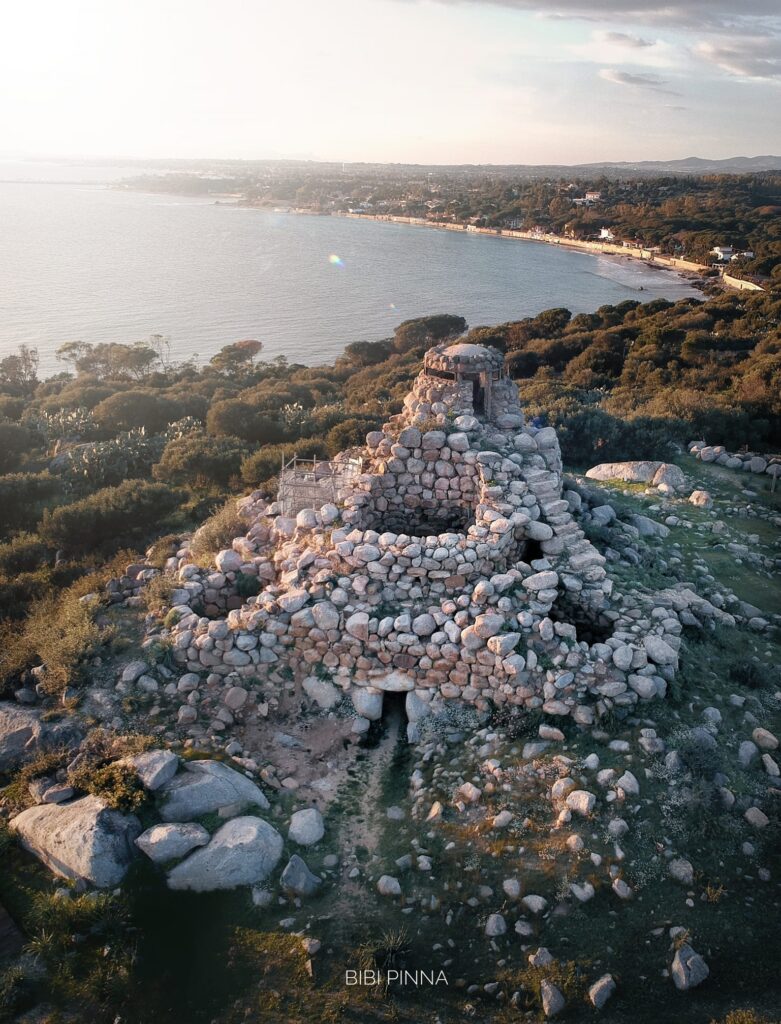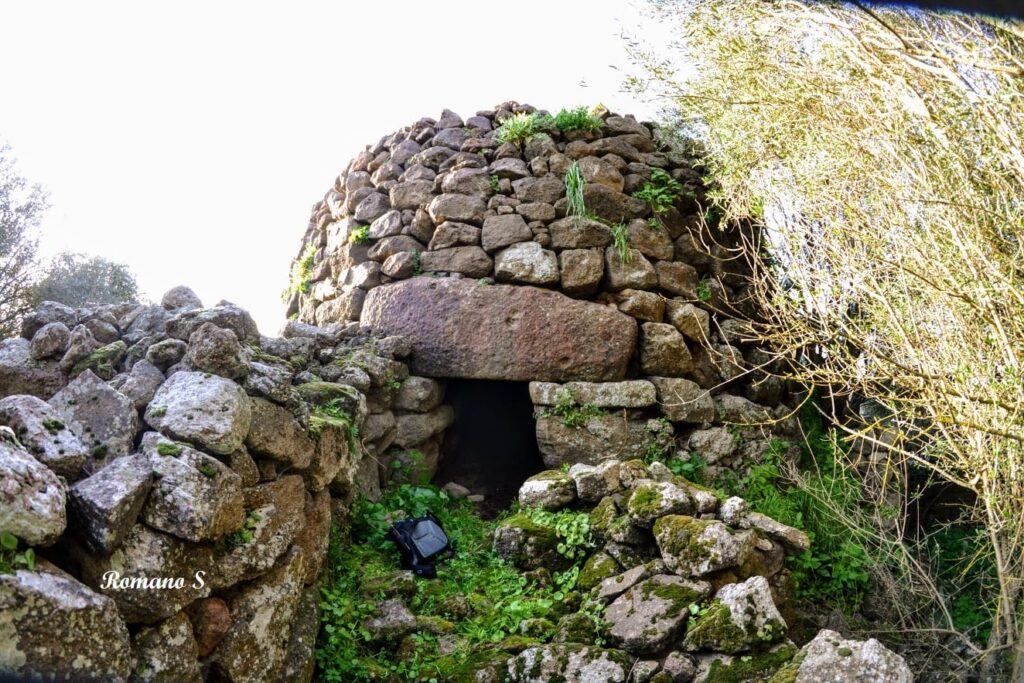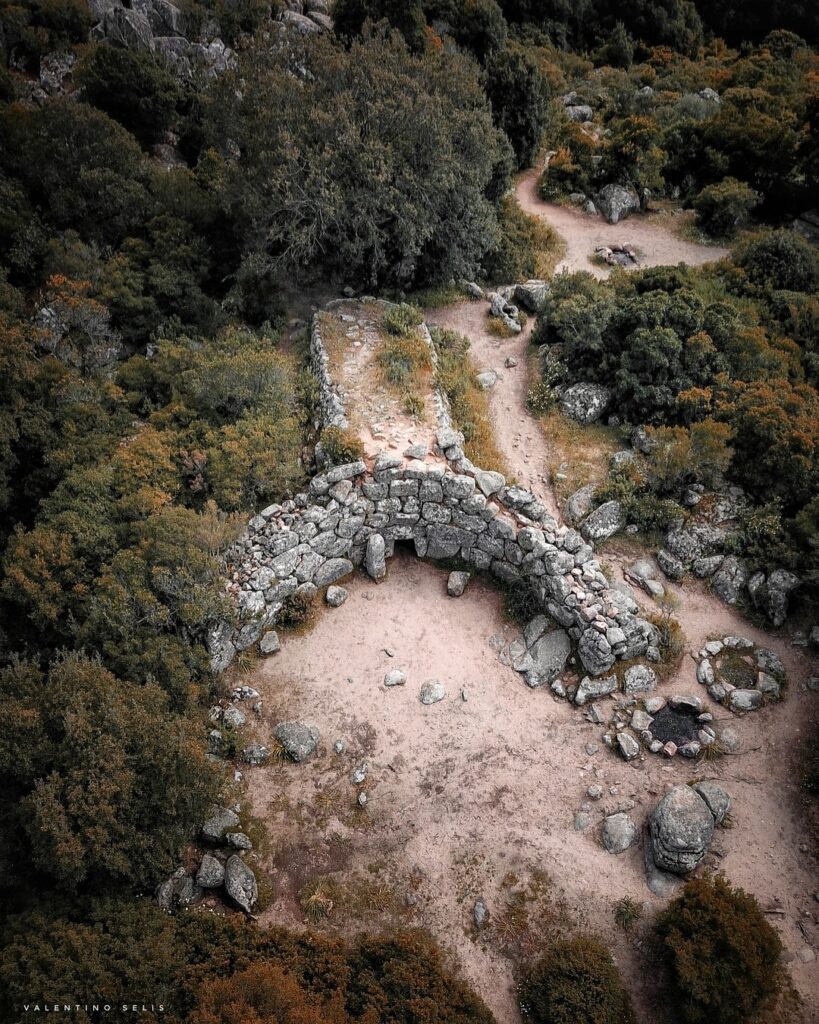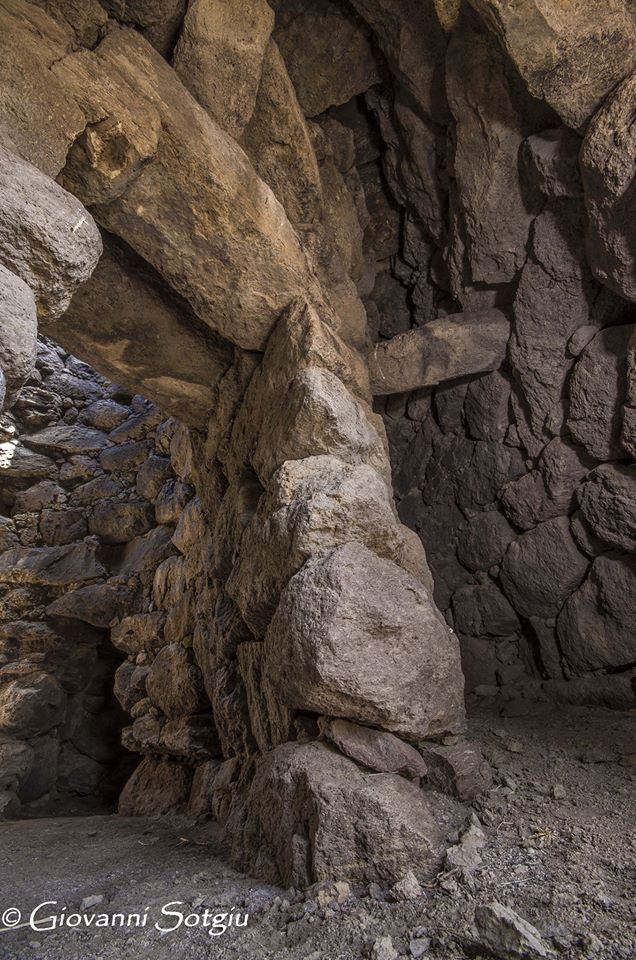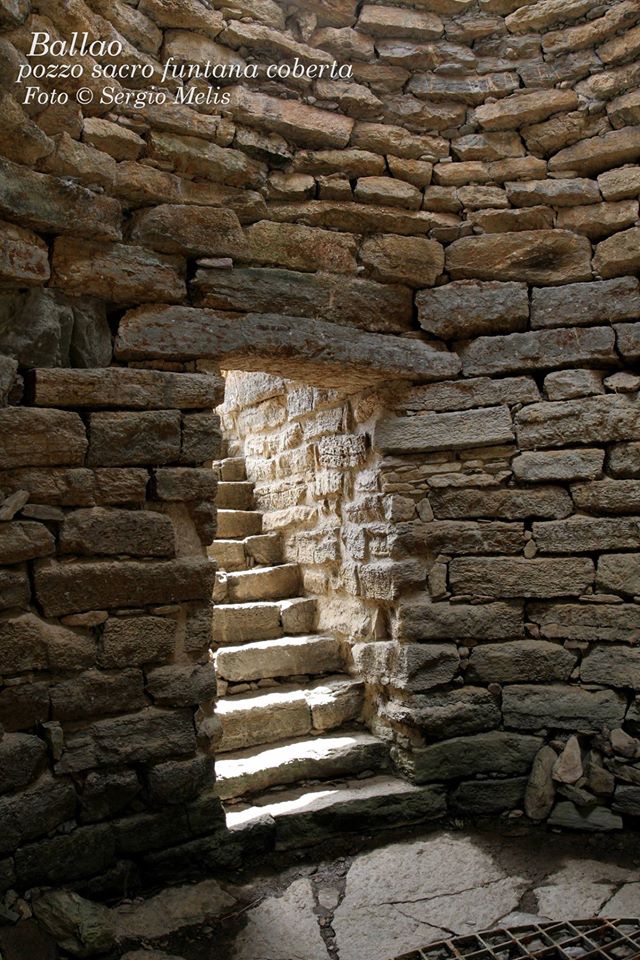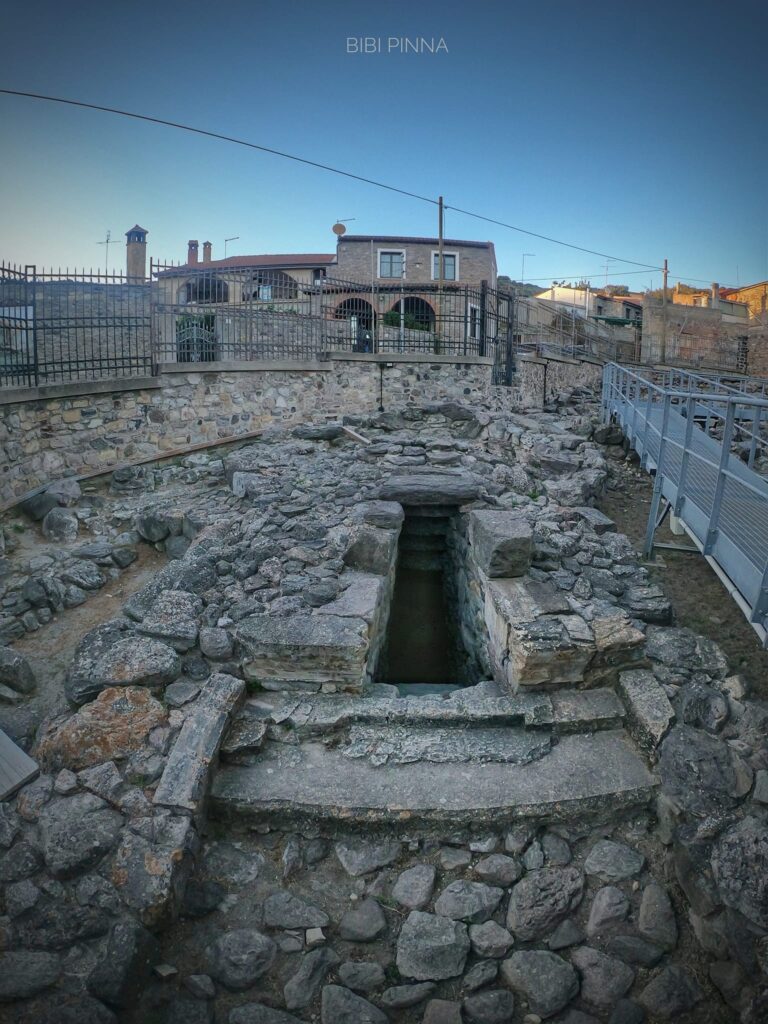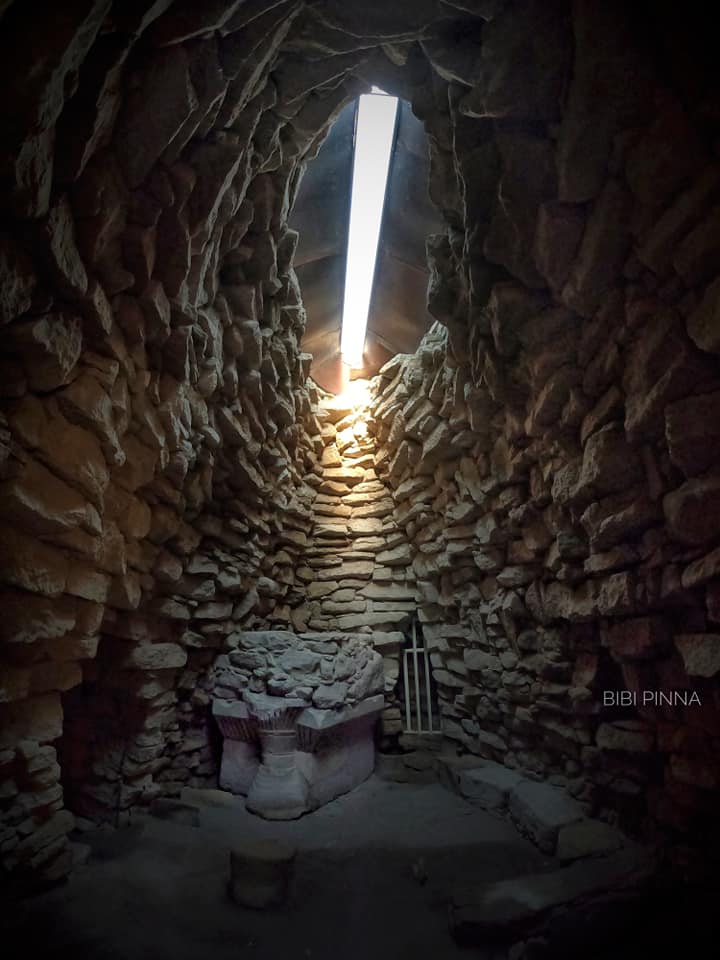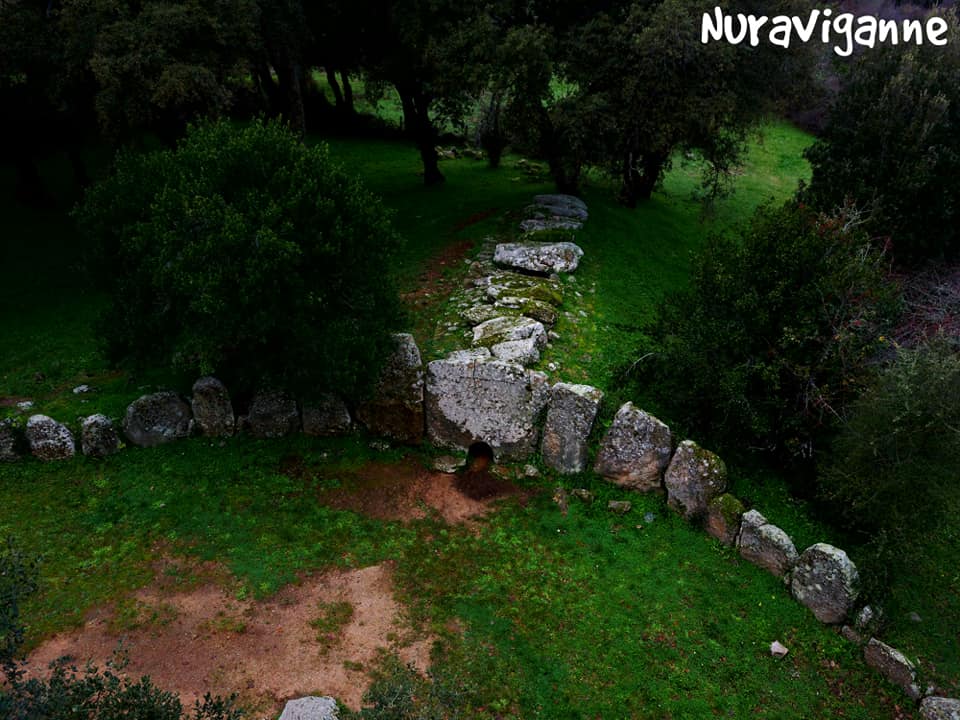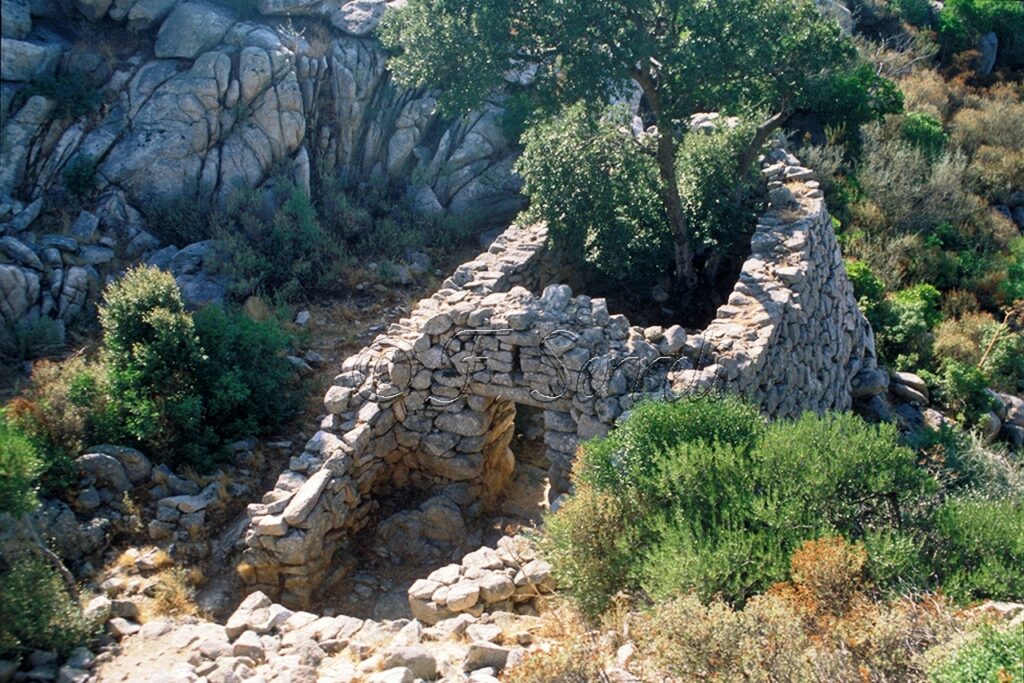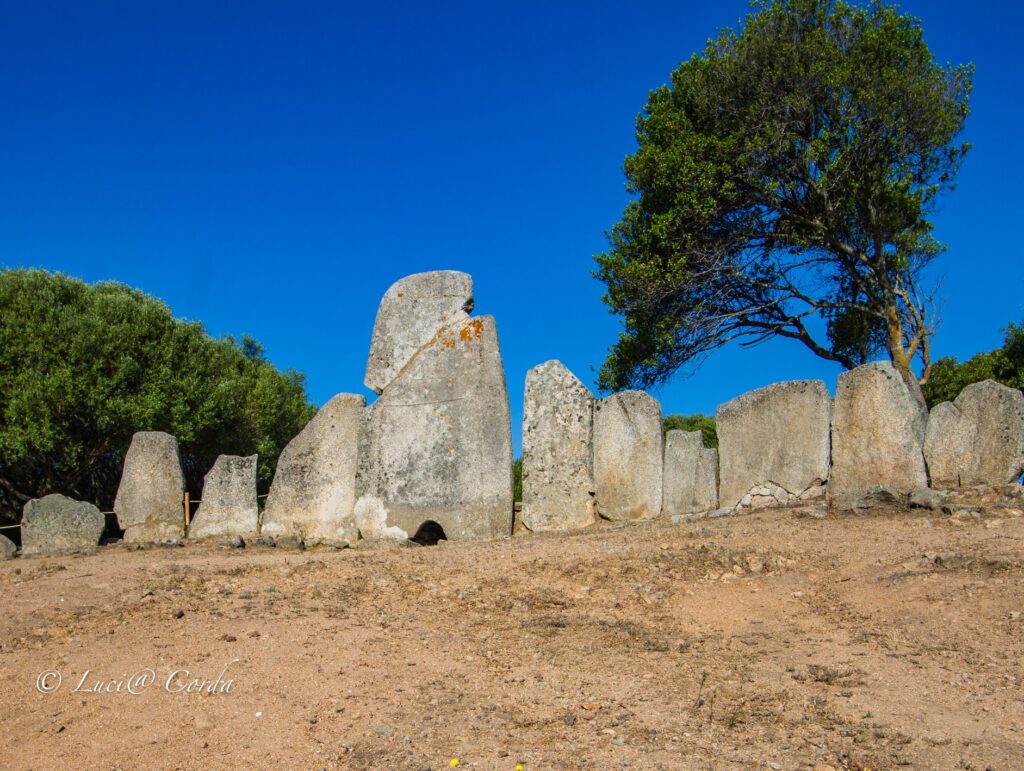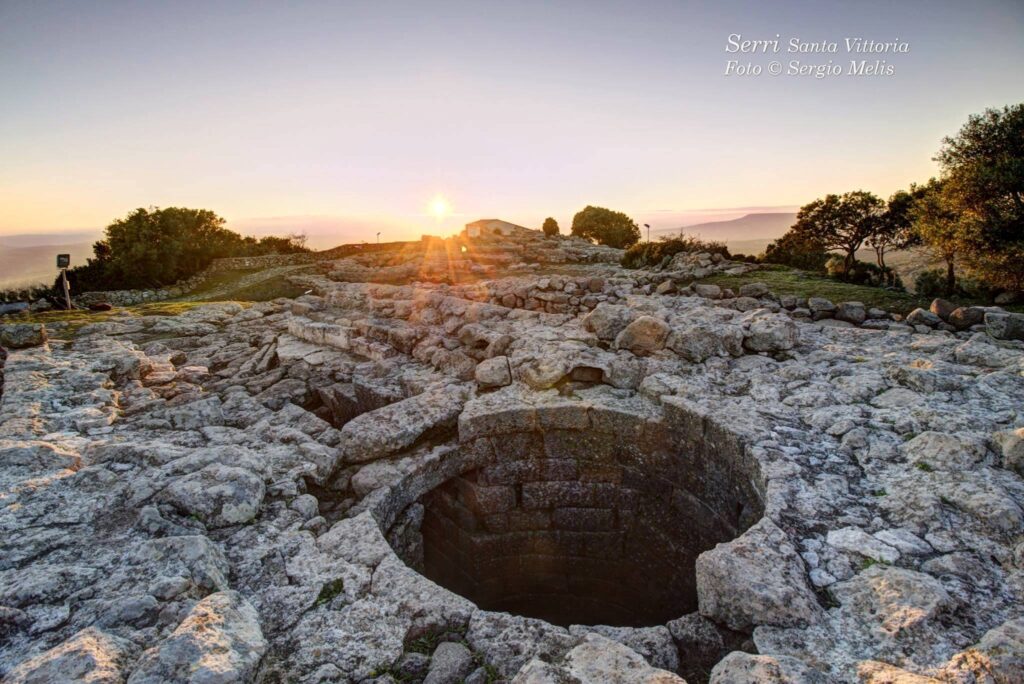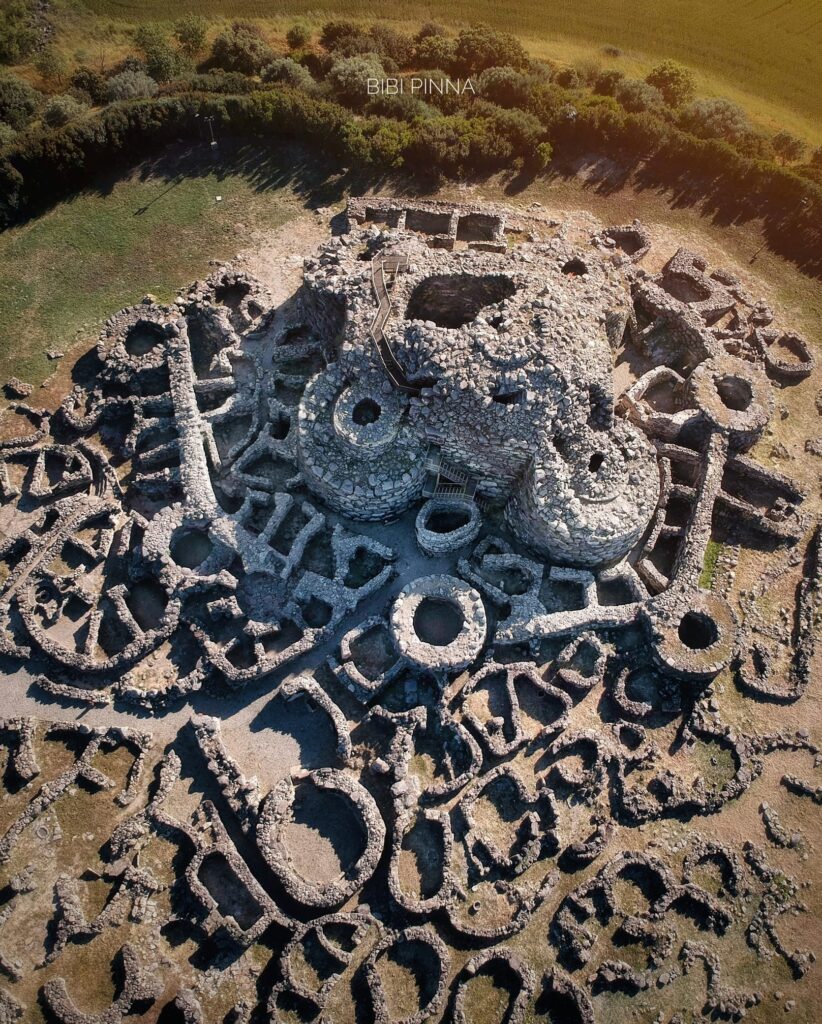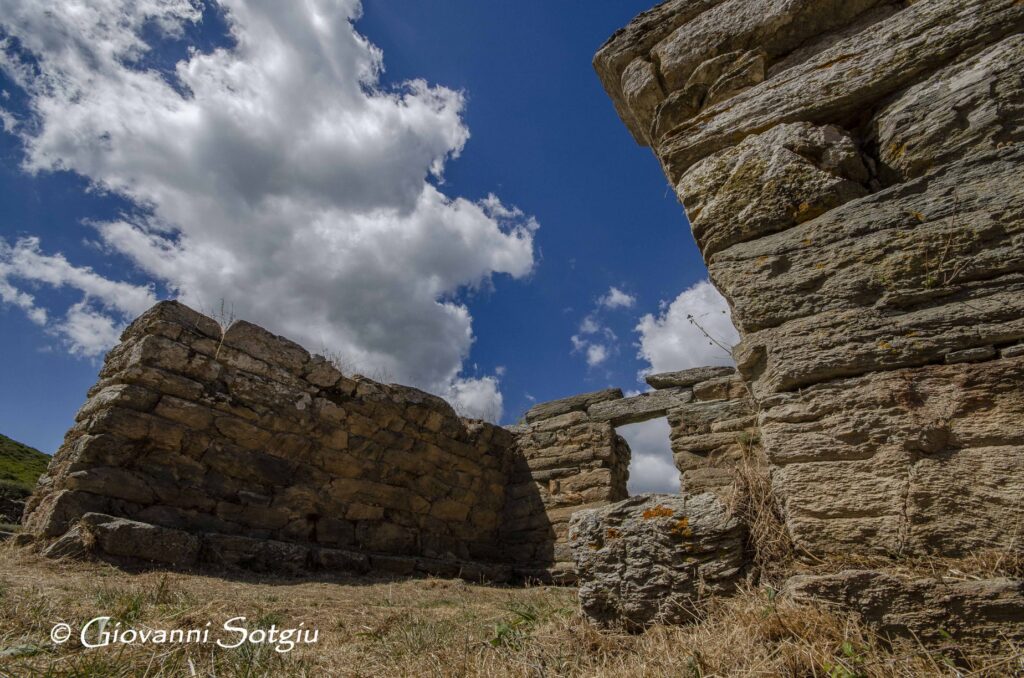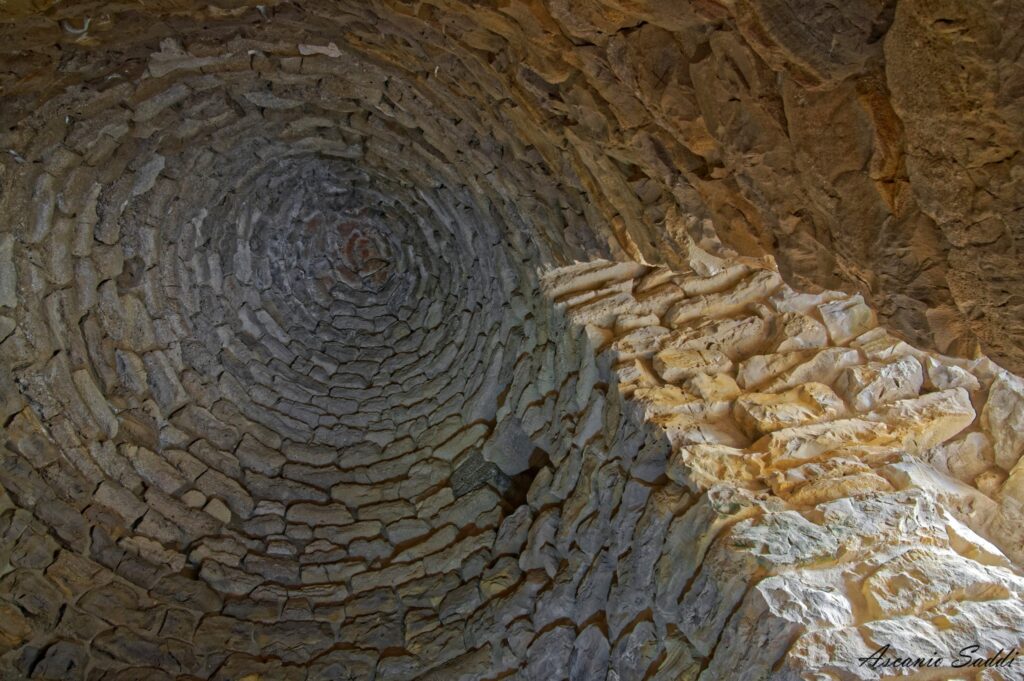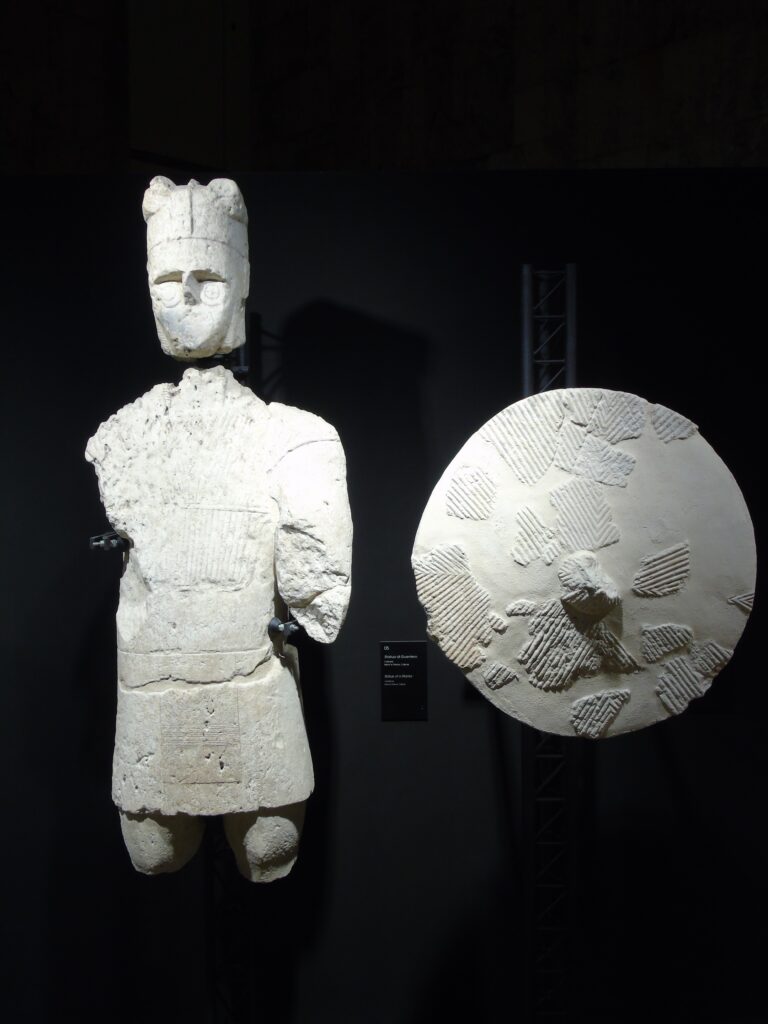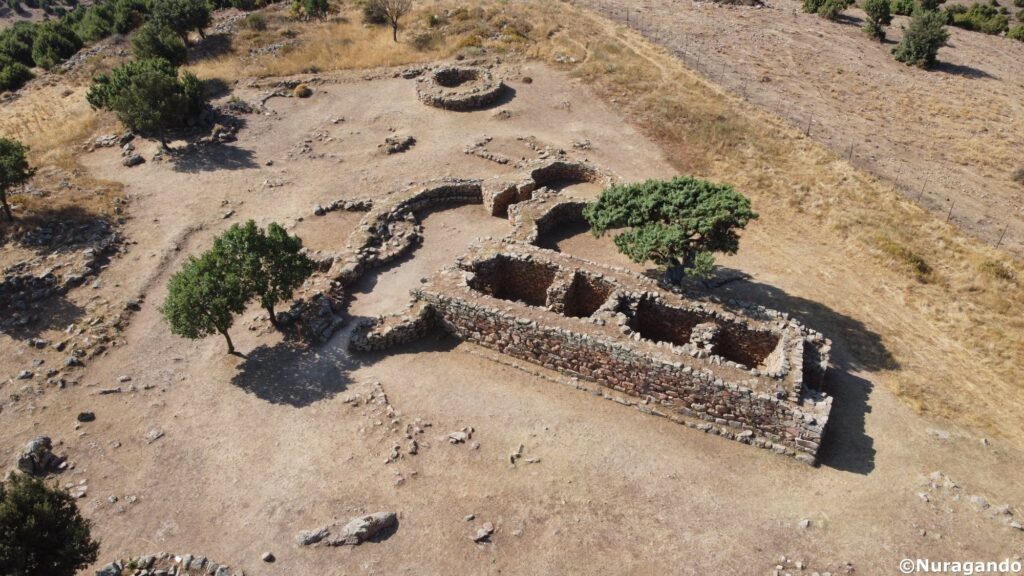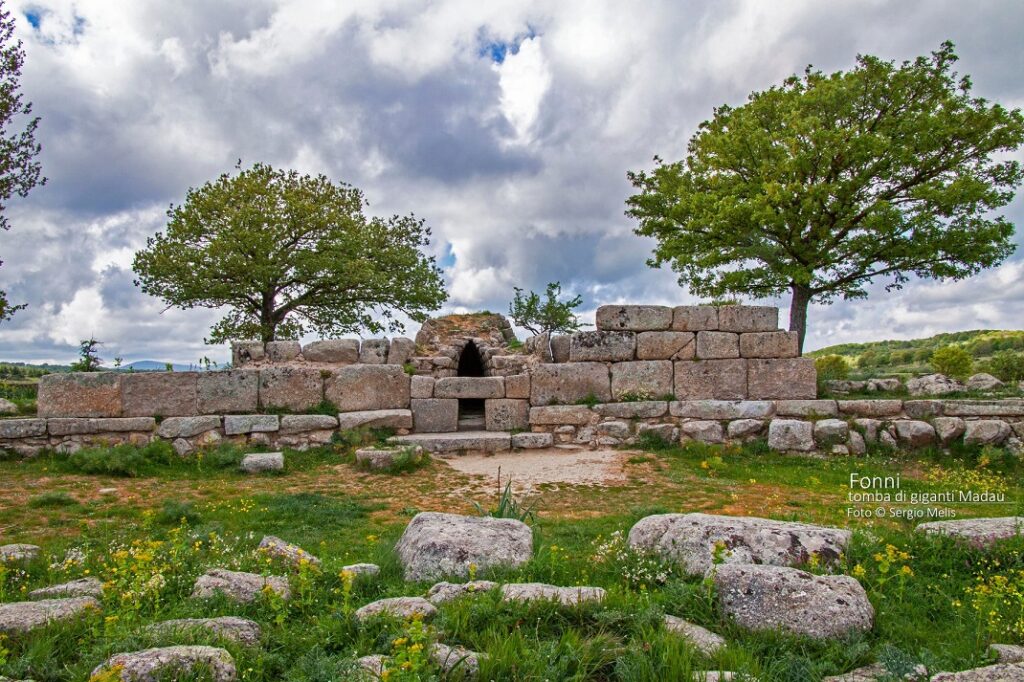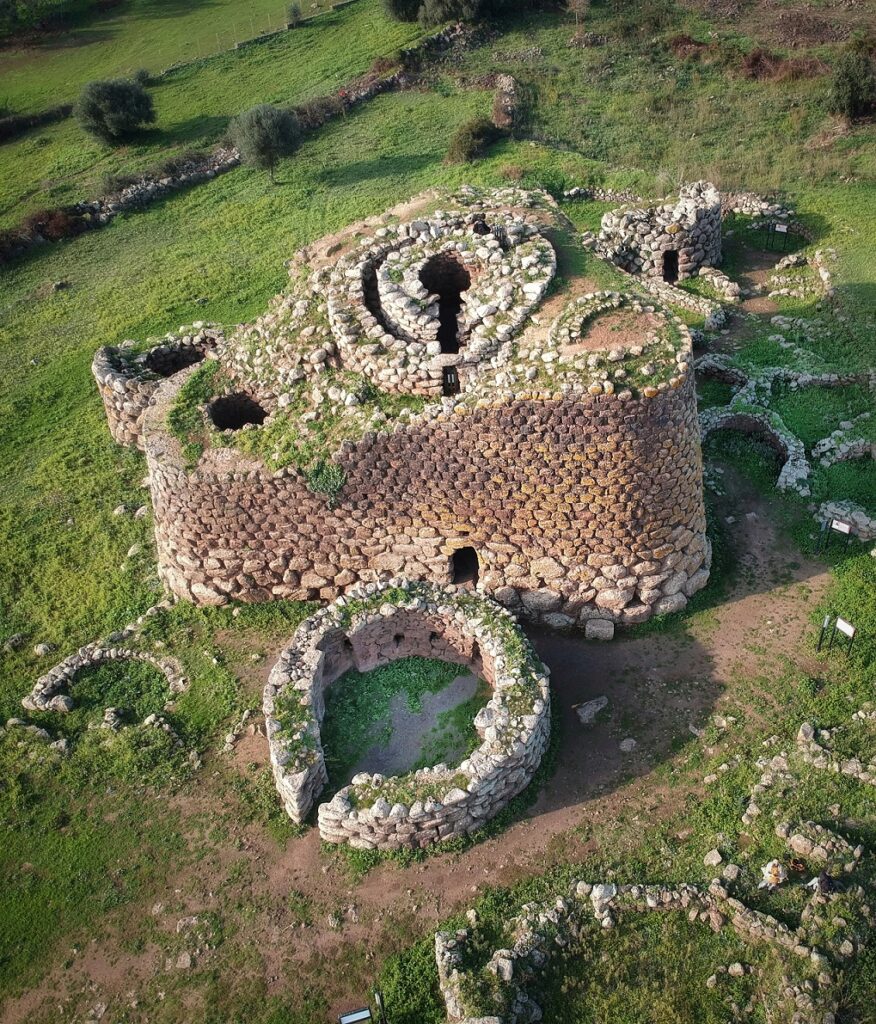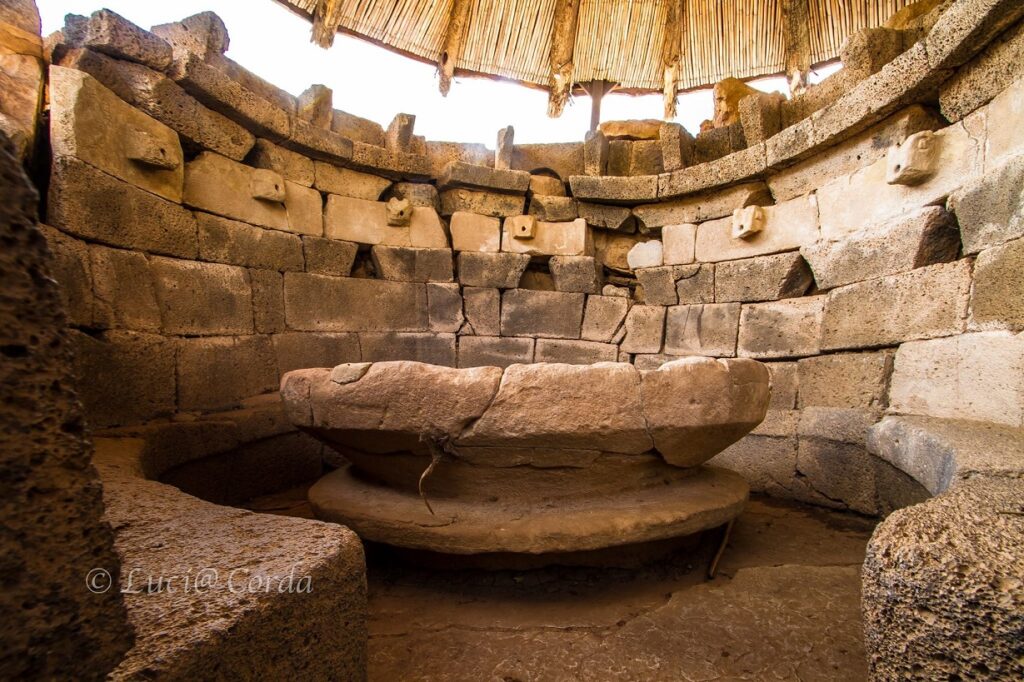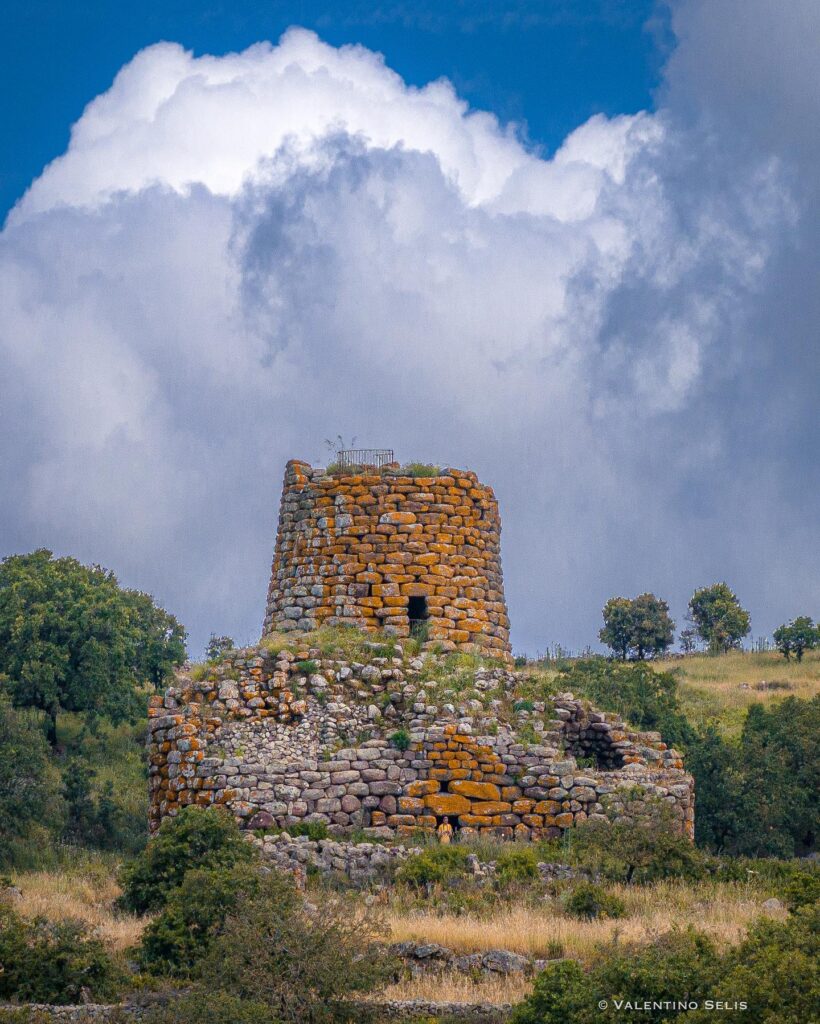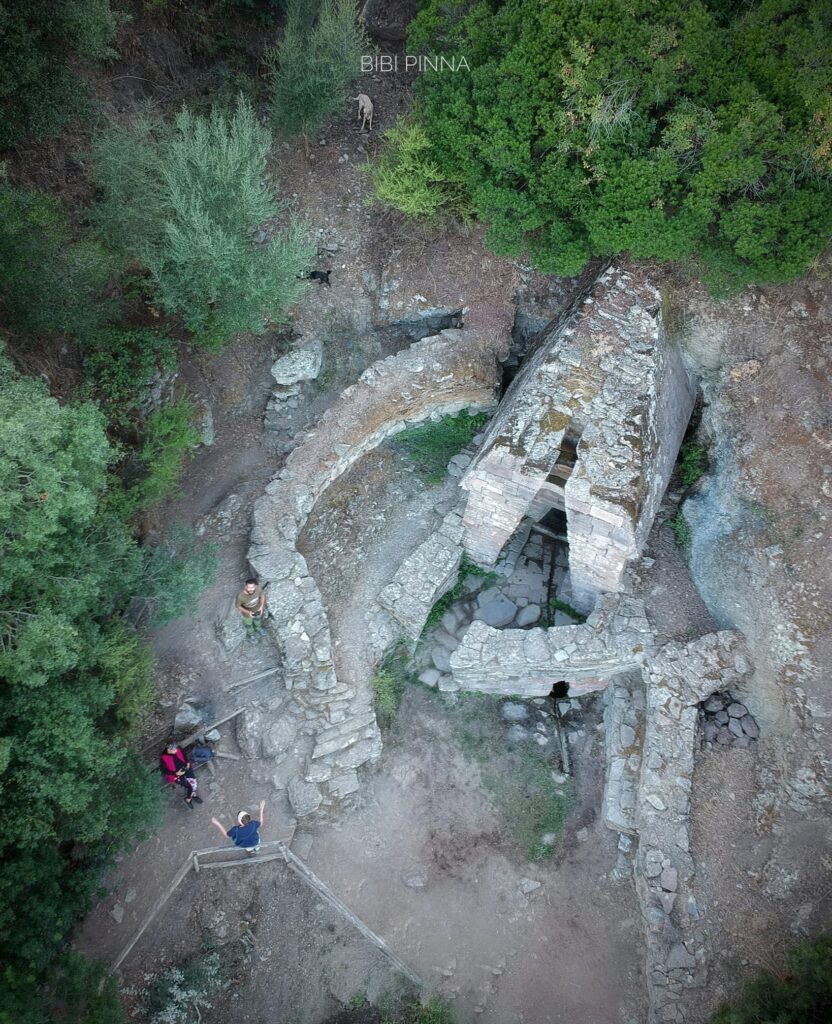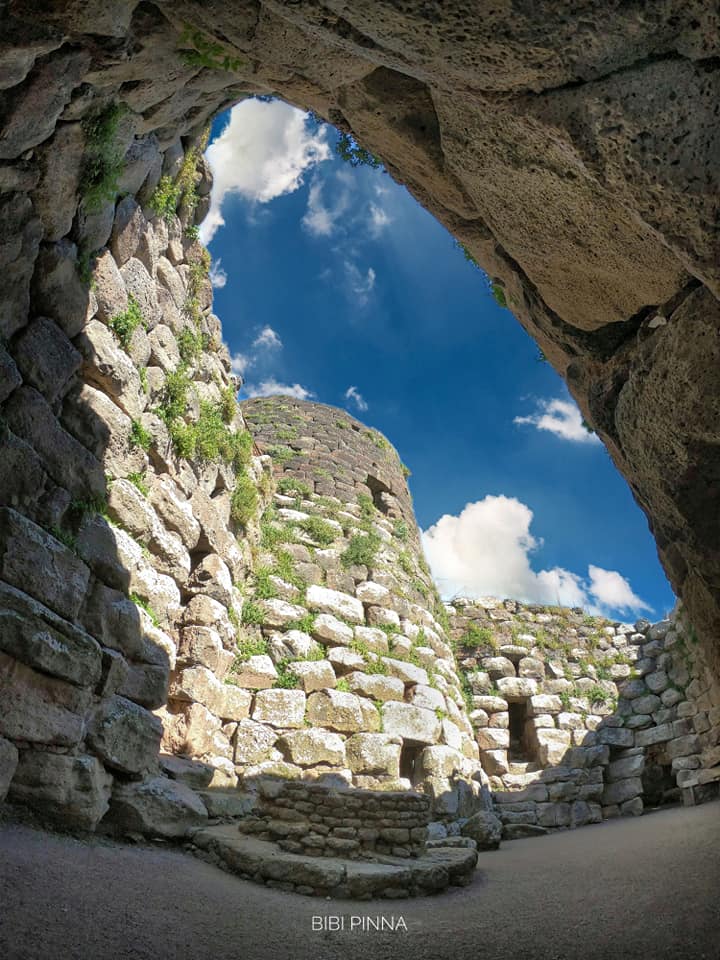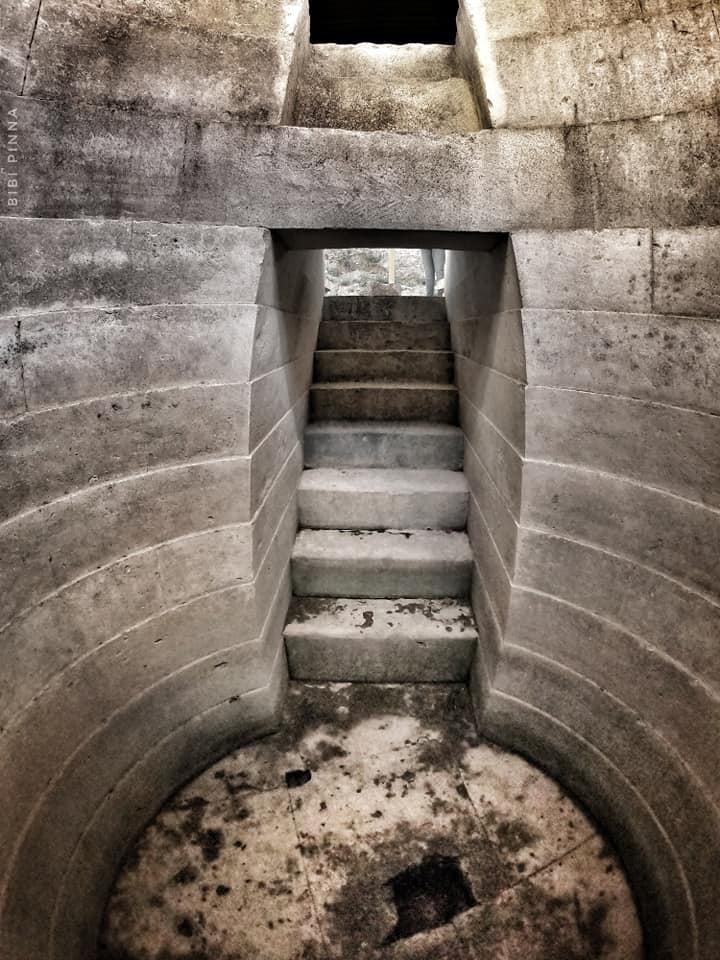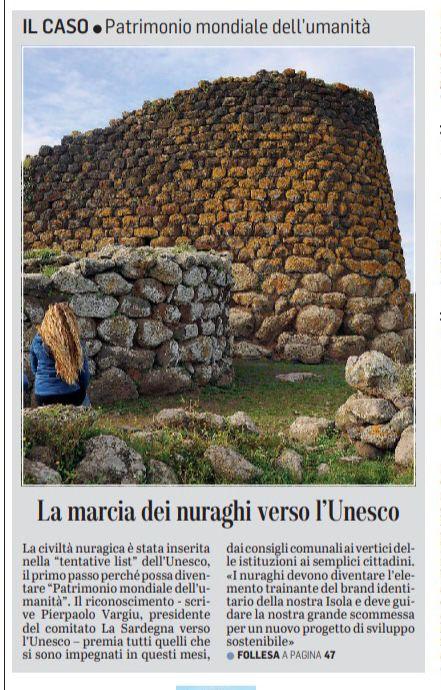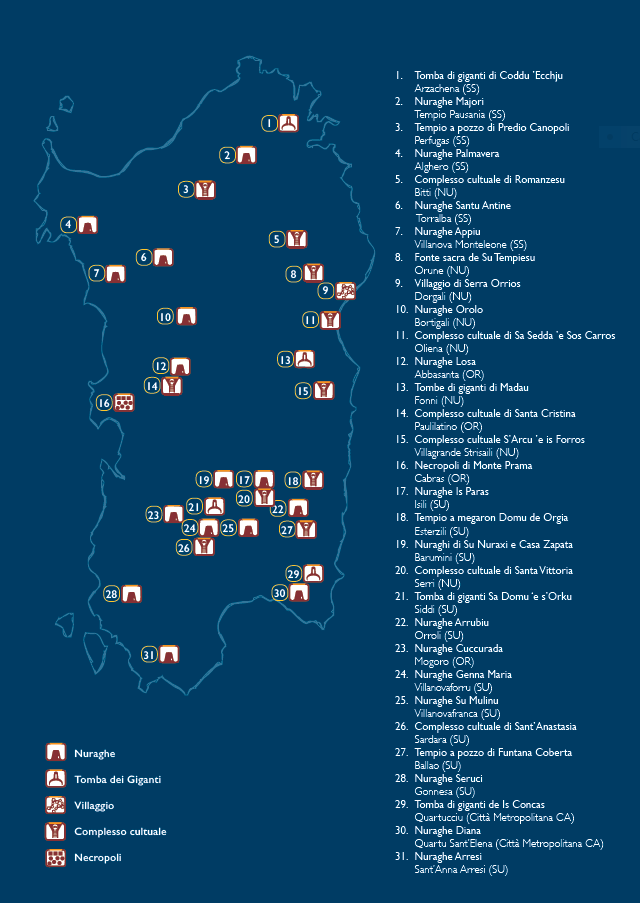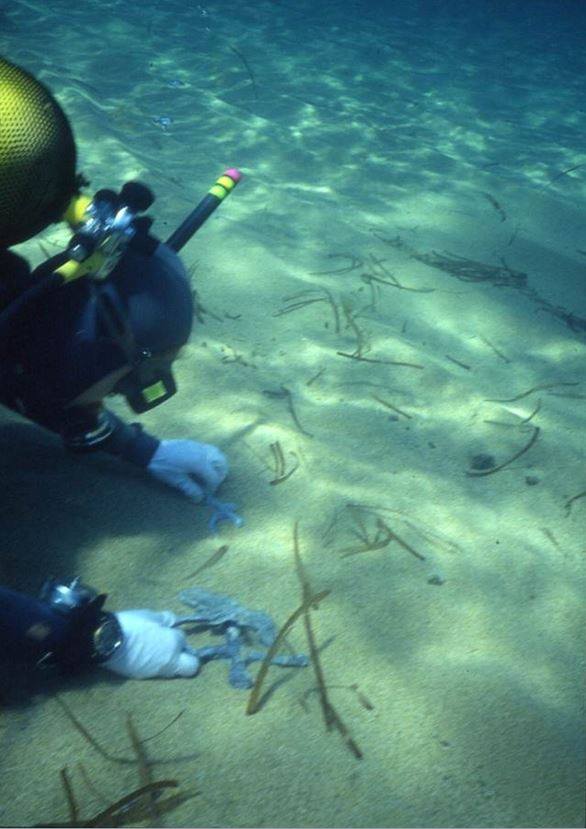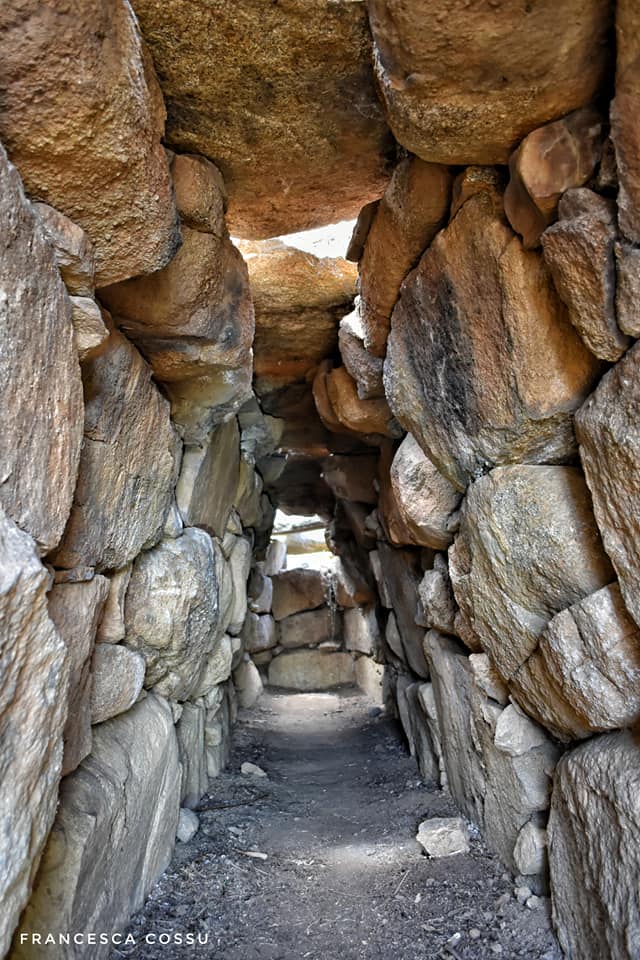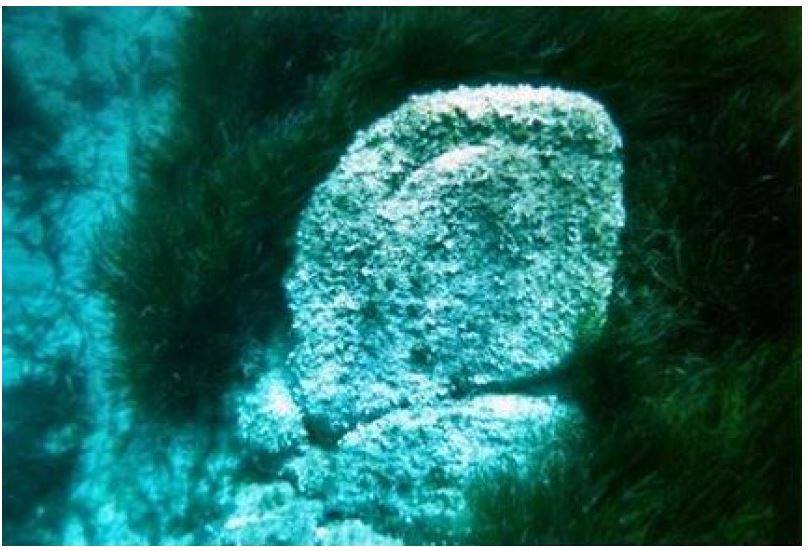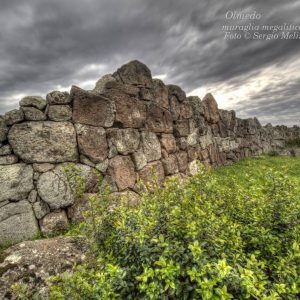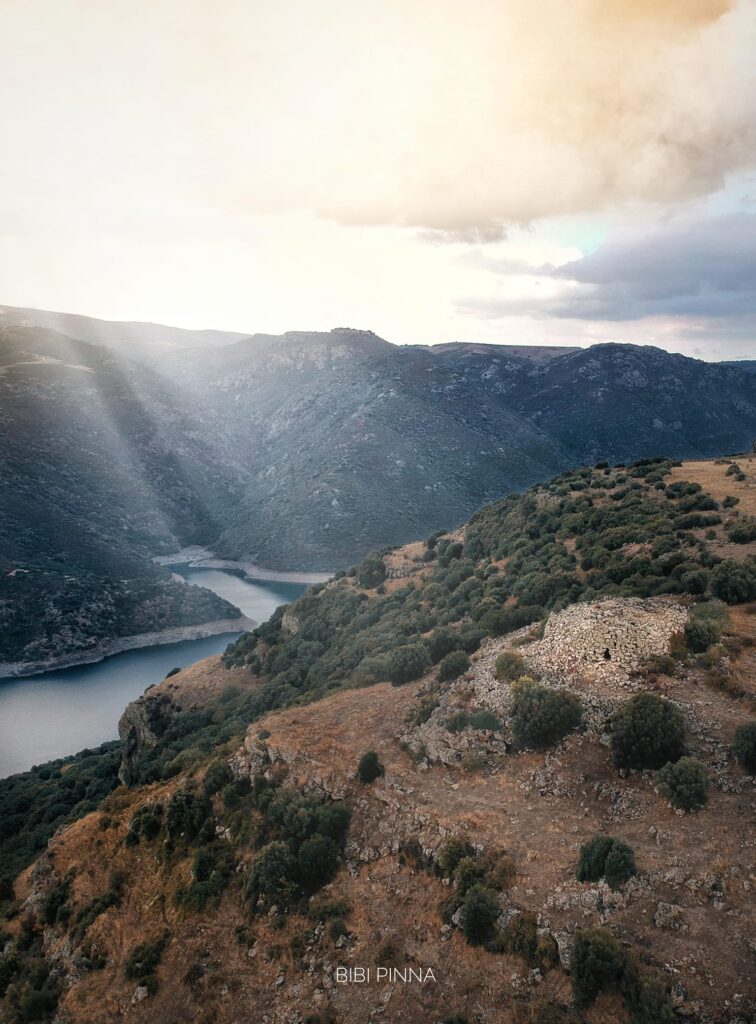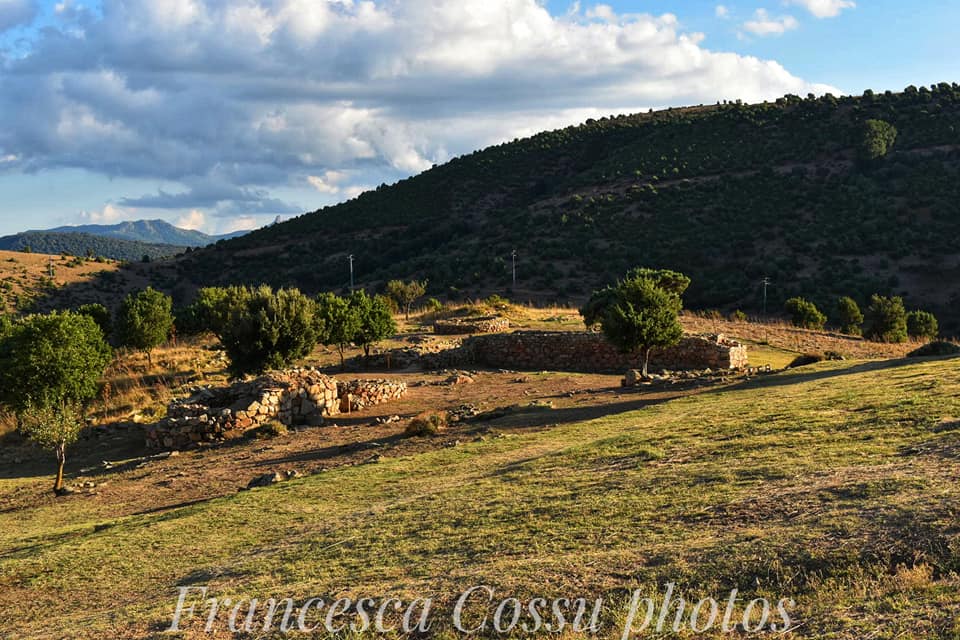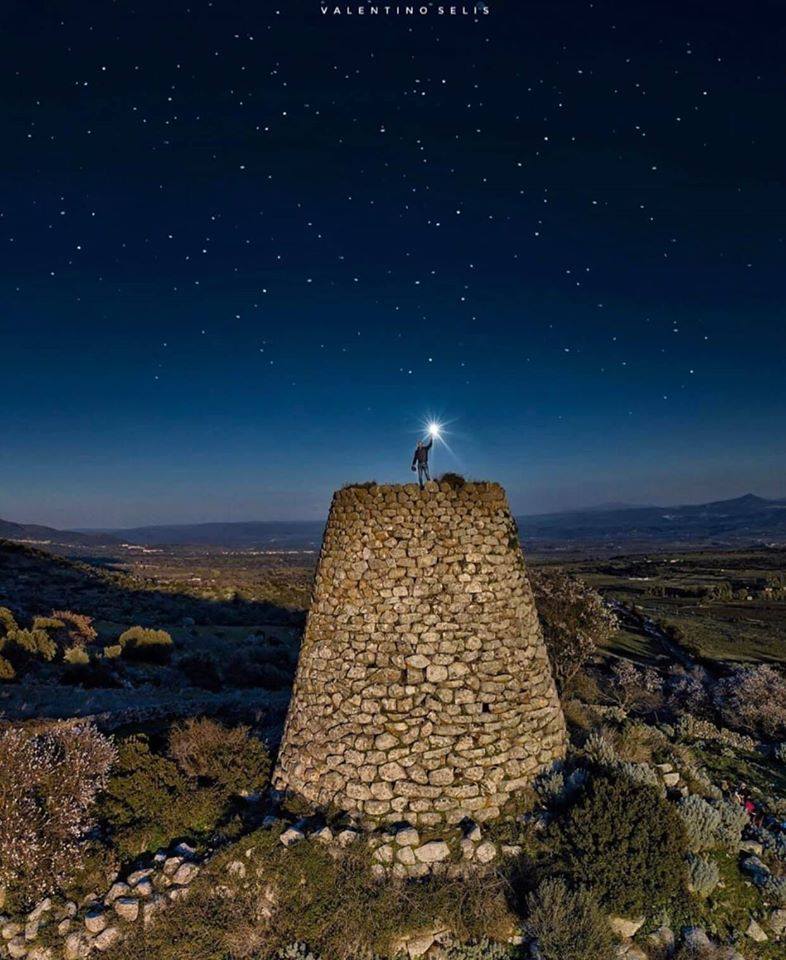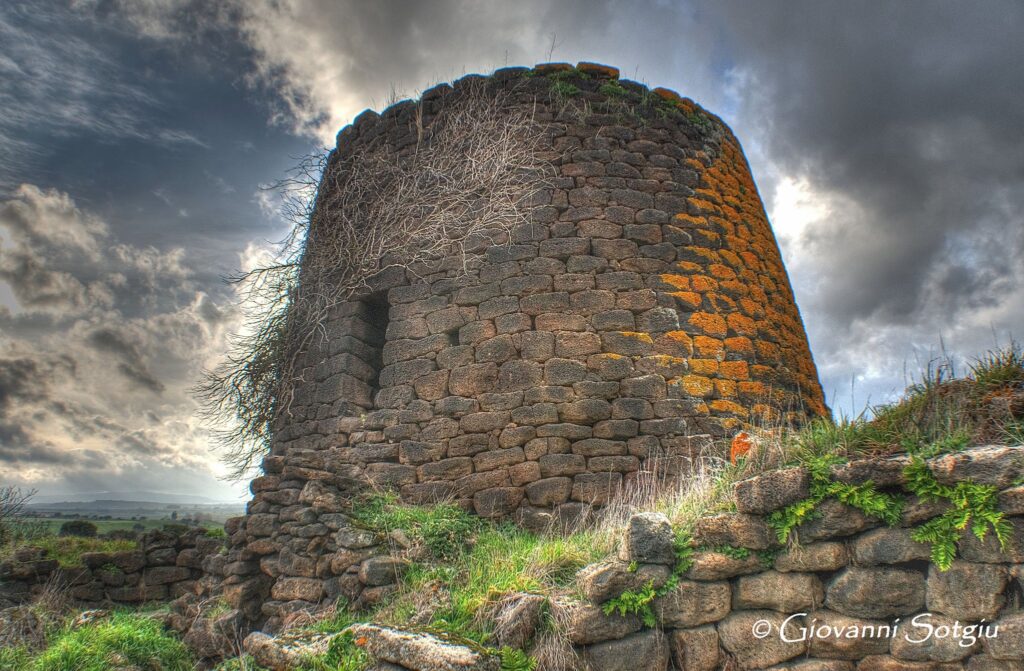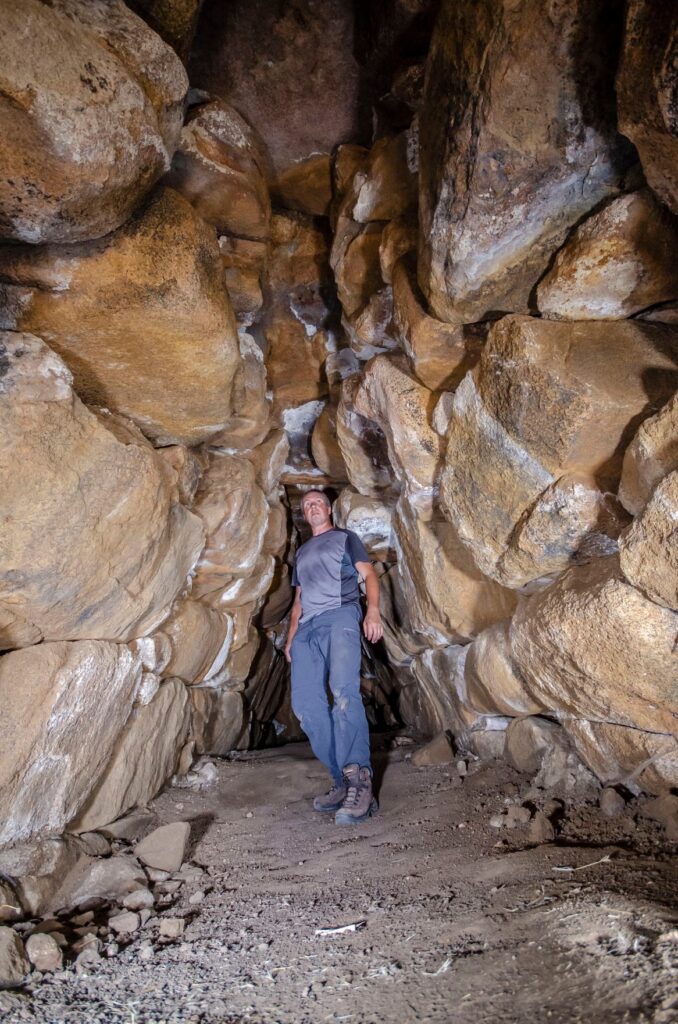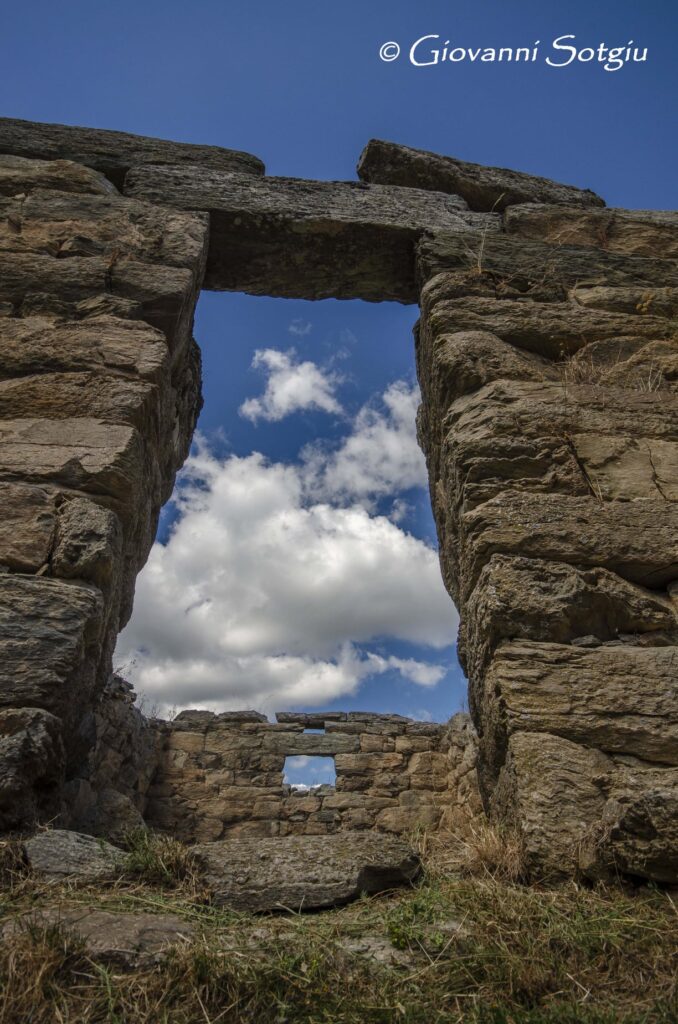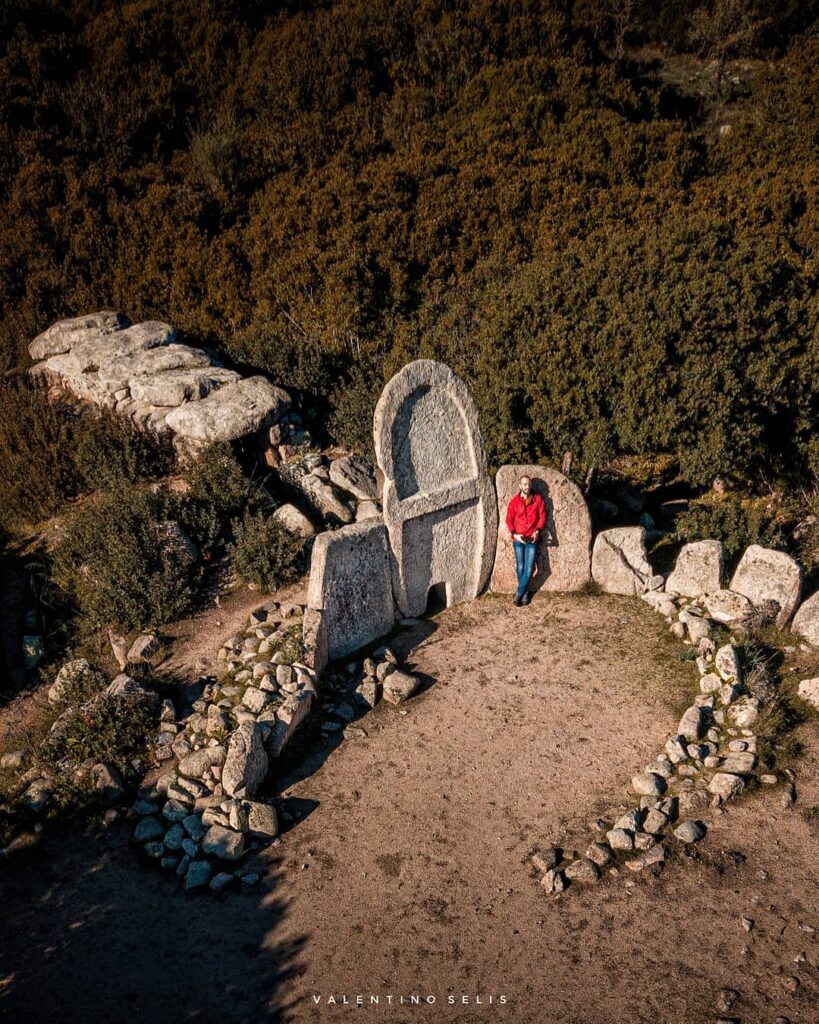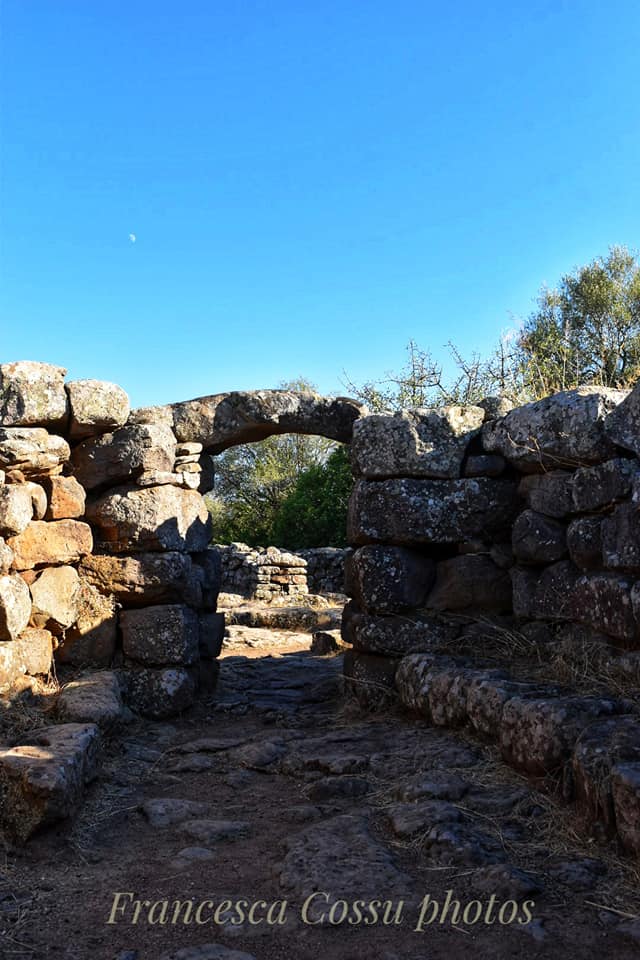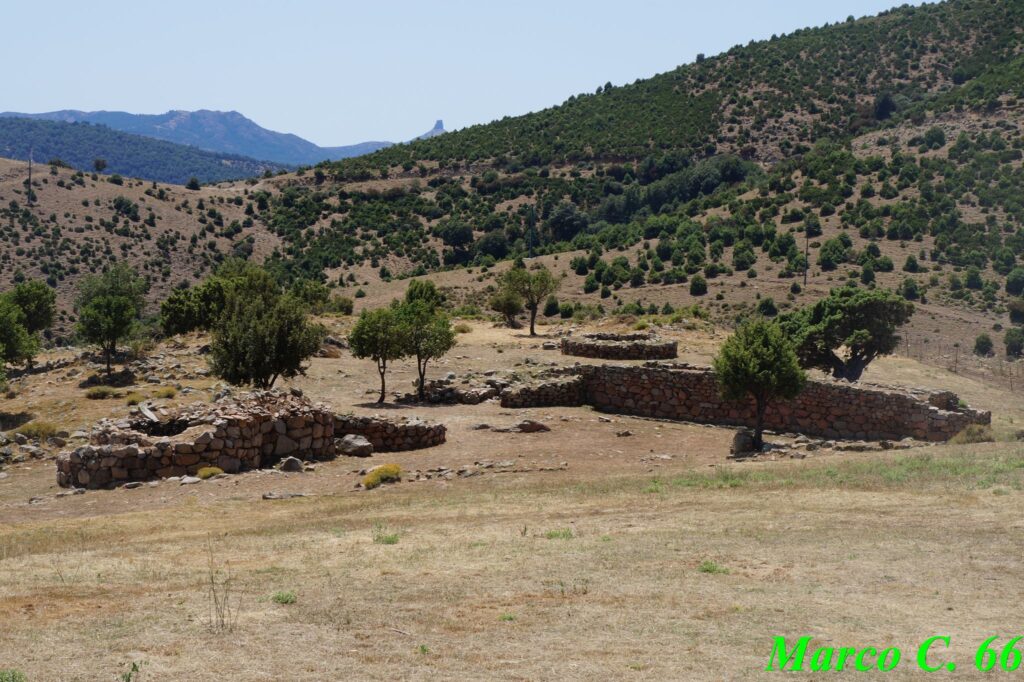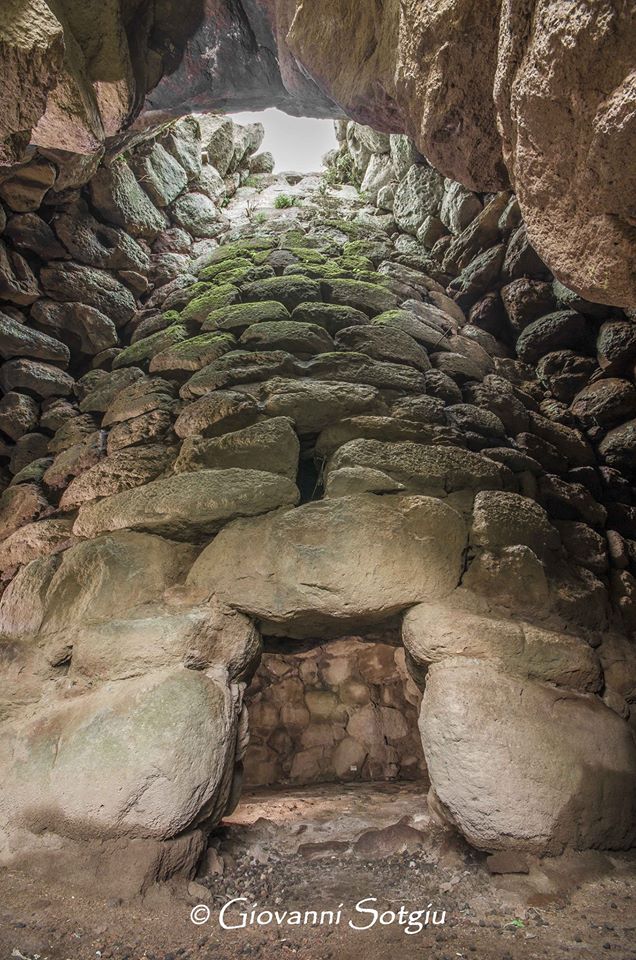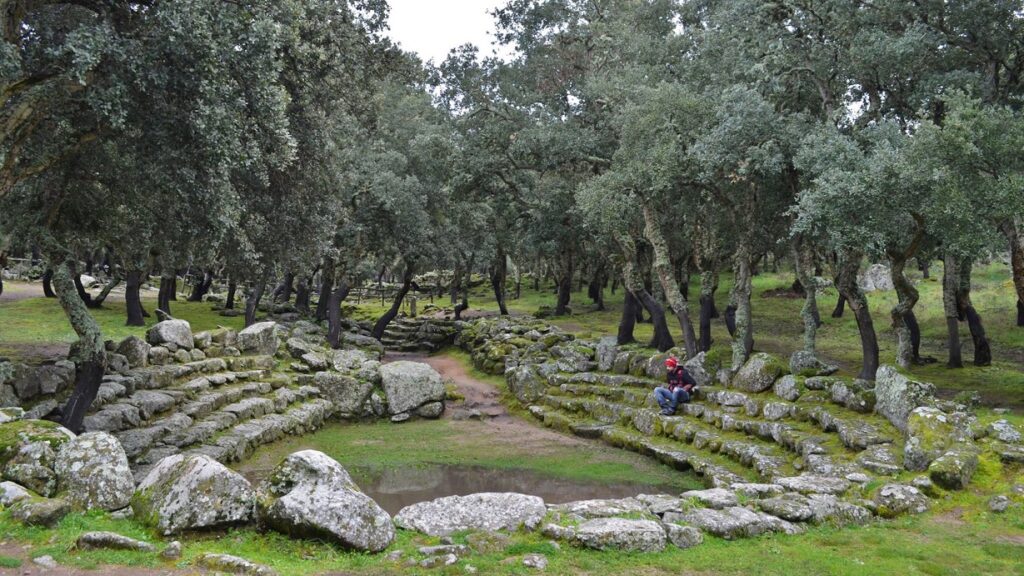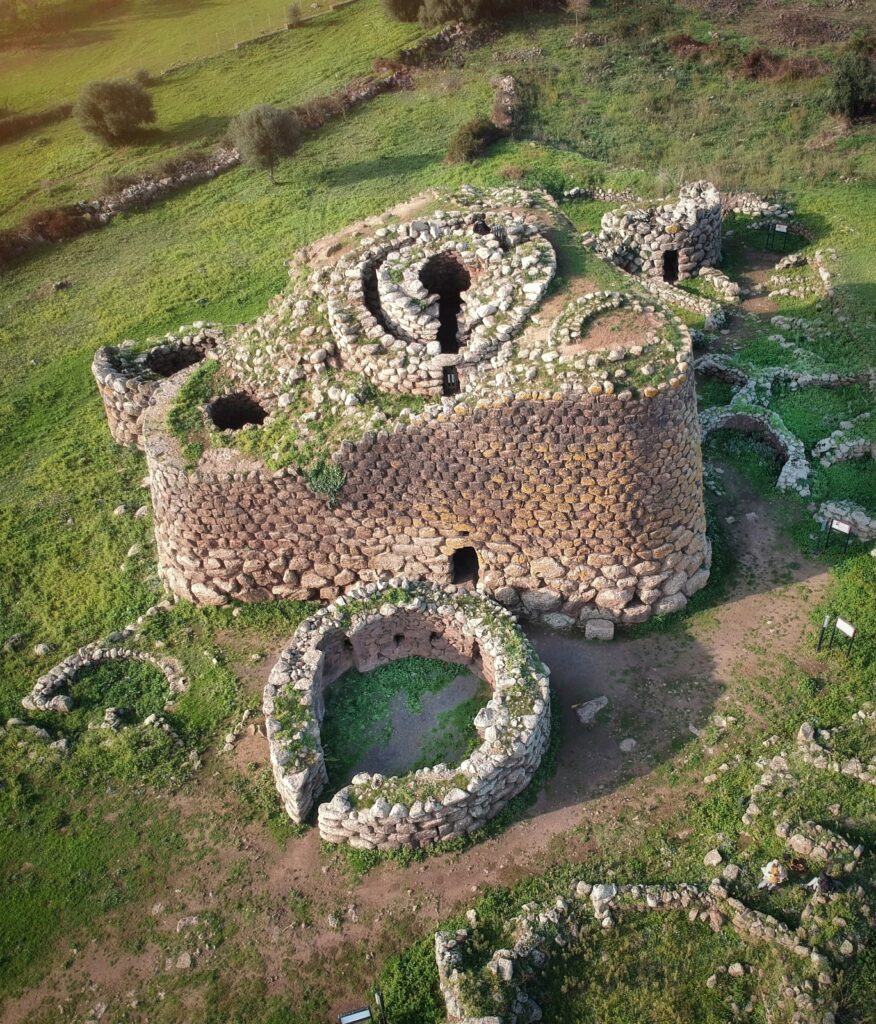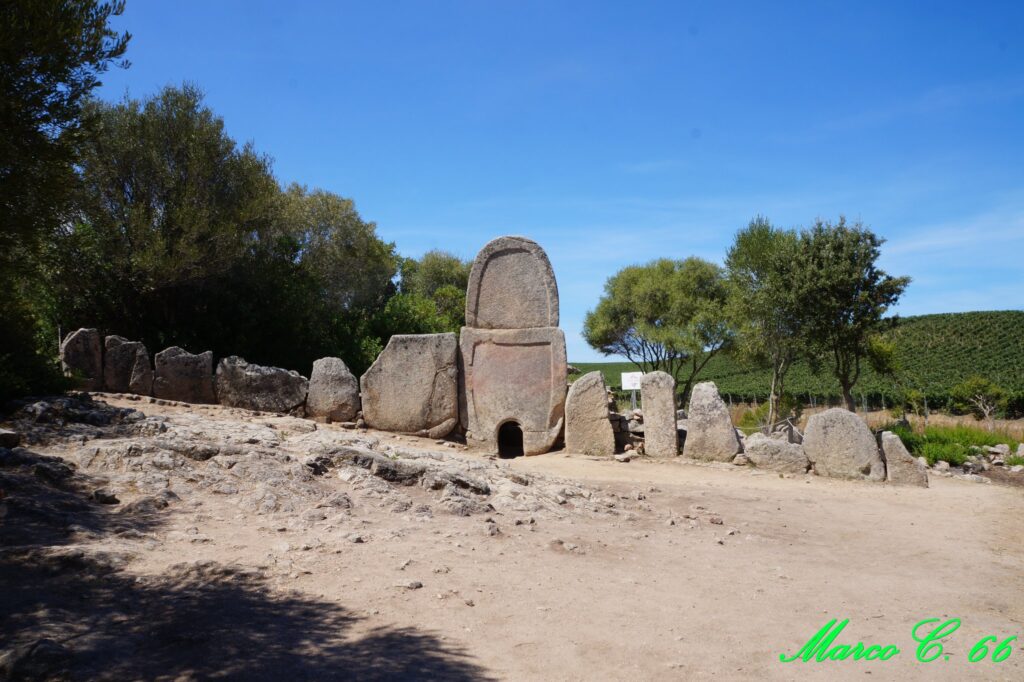Tomb of giants Su Niu ‘e su Crobu in Sant’Antioco
The tomb of giants Su Niu ‘e su Crobu or Sa Corona ‘e Crabi, in the territory of Sant’Antioco, “built with boulders of volcanic rock (trachyte), presents an intact structure, … Continue reading Tomb of giants Su Niu ‘e su Crobu in Sant’Antioco
The Succoronis nuraghe in Macomer
The Succoronis Nuraghe is built on an outcrop of trachyte (volcanic rock) along the road from Macomer to Sindia. It is a beautiful single tower that preserves the dome. The … Continue reading The Succoronis nuraghe in Macomer
The Bau Mendula nuraghe at Villaurbana
On the subject of the Bau Mendula nuraghe at Villaurbana, we are pleased to report an article that appeared in the pages of the Unione Sarda Online of 22 April … Continue reading The Bau Mendula nuraghe at Villaurbana
The Iscrallotze nuraghe in Aidomaggiore
The nuraghe Iscrallotze or Bolessene, located a few kilometres from the municipality of Aidomaggiore, is well-preserved at a height of approximately 4 metres. The nuraghe, elliptical in shape, has an … Continue reading The Iscrallotze nuraghe in Aidomaggiore
The Genna ‘e Corte or Asulu nuraghe of Laconi
Among the scenic hills of Sarcidano, in south-central Sardinia, stands a Bronze Age fortress, surrounded by greenery and known as ‘the blue nuraghe’. The area in which it stands has … Continue reading The Genna ‘e Corte or Asulu nuraghe of Laconi
The Tolinu Nuraghe at Noragugume
On a plateau of the Marghine, in the centre of Sardinia, stands a Nuragic fortress that dominates the surrounding territory, among green hills, valleys and streams. From its position, you … Continue reading The Tolinu Nuraghe at Noragugume
The Urceni Nuraghe at Osini
The nuragic complex of Urceni (Osini) consists of a nuraghe and several circular buildings, sheltered by a wall on the most exposed side. The nuraghe, a simple single-tower type, is … Continue reading The Urceni Nuraghe at Osini
The Caddaris Nuraghe of Dualchi
The Caddaris, is a single-tower nuraghe, with a trapezoidal entrance surmounted by an architrave with a drainage window, located in an area rich in archaeological evidence and located on the … Continue reading The Caddaris Nuraghe of Dualchi
The Longu Nuraghe of Torralba
Travelling along the flat part of the Torralba territory, already in the distance one notices the dark mass of this single-tower nuraghe built with basalt stones. Although partially buried and … Continue reading The Longu Nuraghe of Torralba
The Santa Barbara Nuraghe in Macomer
The building, one of the best known on the island, is of a complex type, consisting of a central tower and a four-lobed bastion with an open courtyard. It was … Continue reading The Santa Barbara Nuraghe in Macomer
The Corvos nuraghe of Florinas
In the north-west of Sardinia, not only Romanesque churches are ‘two-coloured’, in Florinas even a nuraghe boasts a double colour, as well as revealing constructive singularities. At first glance it … Continue reading The Corvos nuraghe of Florinas
The Torodda Nuraghe in Benetutti
Among the so-called ‘minor nuraghi’ is the Torodda nuraghe in Benetutti. It preserves the intact tholos covered by a large slab. It is a complex structure with a flatbanded entrance … Continue reading The Torodda Nuraghe in Benetutti
Duos Nuraghes Complex in Borore
The Duos Nuraghes complex in Borore is located just inside the village. It is unusual because it consists of two towers ten metres apart, surrounded by huts. Cannonau grape seeds … Continue reading Duos Nuraghes Complex in Borore
The Tanca Manna nuraghe in Nuoro
A granite colossus, one of the oldest archaeological sites in Nuoro, embedded in the urban centre, dominating the main town in the heart of Sardinia. The pre-Nuragic civilisations and the … Continue reading The Tanca Manna nuraghe in Nuoro
The Torru nuraghe in Ittiri
The Torru nuraghe of Ittiri, towering on the summit of the mountain of the same name, is certainly not the best known and most representative of an area rich in … Continue reading The Torru nuraghe in Ittiri
The settlement of Tharros at Cabras
“The city of Tharros, located at the southern end of the Sinis Peninsula (Cabras), was founded in the late 8th or 7th century BC by Phoenician peoples in an area … Continue reading The settlement of Tharros at Cabras
Among the many rebuses, one certainty: Su Nuraxi of Barumini
Under the parasol, between a definition and a crossword puzzle, there is also Su Nuraxi. In the summer edition no. 456 of Enigmistica In, a page signed by archaeologist and … Continue reading Among the many rebuses, one certainty: Su Nuraxi of Barumini
The Asoru nuraghe in San Vito
The Nuraghe Asoru, in the territory of San Vito, ‘is located in a valley basin surrounded by hills sloping down towards the sea of Colostrai, at an altitude of 32 … Continue reading The Asoru nuraghe in San Vito
Codrongianos and its Nieddu nuraghe
The town of Codrongianos ‘owes much of its fame to the scenic basilica of the Holy Trinity of Saccargia. Codrongianos stands on the hills of Logudoro, at an altitude of … Continue reading Codrongianos and its Nieddu nuraghe
Su Casteddu ‘e Fanaris between Vallermosa and Decimoputzu
“Su Casteddu ‘e Fanaris”, straddling the territories of Decimoputzu and Vallermosa and dating back to the Late Bronze Age (1300-1000 B.C.), is a Nuragic complex consisting of a central tower … Continue reading Su Casteddu ‘e Fanaris between Vallermosa and Decimoputzu
Nuragic monuments at Villagrande Strisaili
At the first barrage on the Flumendosa, the river with the greatest flow in Sardinia, there is a large lake with blue reflections, surrounded by archaeological heritage, ‘ghost’ villages and … Continue reading Nuragic monuments at Villagrande Strisaili
The sacred well of San Salvatore or Santu Sarbadoi in Gonnosnò
For millennia, an aura of spirituality surrounded it, from the Nuragic period through the Punic period to the Middle Ages. Its name derives, in fact, from a church, now disappeared, … Continue reading The sacred well of San Salvatore or Santu Sarbadoi in Gonnosnò
The Su Lumarzu sacred spring in Bonorva
Small and well-preserved, carefully built above a spring that has been active for thousands of years and immersed in a timeless landscape. This is the setting in which you will … Continue reading The Su Lumarzu sacred spring in Bonorva
The Nuragic village of Ruinas in Arzana
In Ogliastra, in central-eastern Sardinia, stands a large nuragic ‘citadel’ with a long history, surrounded by beautiful natural scenery. It towers at the foot of the Gennargentu, at an altitude … Continue reading The Nuragic village of Ruinas in Arzana
The archaeological treasures of Guspini
The municipality of Guspini preserves in its territory significant prehistoric remains dating back to the pre-Nuragic and Nuragic periods. Among the latter, the Nuragic fortress of Saurecci and the Sa … Continue reading The archaeological treasures of Guspini
The Sa Fogaia nuraghe at Siddi
Built in a strategic position on an overhanging edge on the eastern slope of the Siddi plateau, the ‘Sa Fogaia’ nuraghe is located in the panoramic area of the Sa … Continue reading The Sa Fogaia nuraghe at Siddi
Complex of Santa Lucia/Motrox ‘e Bois in Usellus
The area includes two complex nuraghi with a village, located at a distance of about 50 metres from each other, and a giants’ tomb. Nearby is a Romanesque-style church. Of … Continue reading Complex of Santa Lucia/Motrox ‘e Bois in Usellus
The Tomb of the Giants of Su Monte ‘e S’Abe in Olbia
The tomb of the giants of Su Monte ‘e S’Abe is a typical funerary monument from the Nuragic period. It is one of the largest collective tombs in Sardinia. It … Continue reading The Tomb of the Giants of Su Monte ‘e S’Abe in Olbia
The Nuraghe Goni in Goni
The monument is located on a narrow plateau overlooking the valley in which the village of Goni lies. It is a single-tower nuraghe, with a residual height of about nine … Continue reading The Nuraghe Goni in Goni
Protonuraghi
The first phase of the Nuragic civilisation can be made to coincide with the Middle Bronze Age (1800-1400 B.C.), and is mainly characterised by the building of protonuraghi. According to … Continue reading Protonuraghi
The tomb of giants of San Cosimo at Gonnosfanadiga
How many tombs of the giants, domus de janas, nuraghi or sacred wells are there? Establishing this is not difficult… it is impossible; because to the many thousands dating back … Continue reading The tomb of giants of San Cosimo at Gonnosfanadiga
Cossoine and its monuments
The Aidu (Cossoine) is ‘the main nuraghe in the area, directly connected to the neighbouring Nuraghe Corru Oes. The quadrilobed has a soaring central tower built with semi-squared stone recourses. … Continue reading Cossoine and its monuments
The Scerì nuraghe in Ilbono
Within a valley surrounded by dense spontaneous vegetation, it is possible to visit an important and evocative archaeological complex that testifies to phases of life in the Ilbono area in … Continue reading The Scerì nuraghe in Ilbono
The holy well of Tattinu in Nuxis
At the foot of a relief in Sulcis, in south-western Sardinia, there is a sacred spring, hidden among the trees, which differs from the others in certain characteristics Its construction … Continue reading The holy well of Tattinu in Nuxis
Nuraghi in Orgosolo
There are images that make one throb. We propose some particularly fascinating ones. In the shots by Maurizio Cossu, Giovanni Sotgiu, ArcheoUri Vagando and Cinzia Olias, the Mereu nuraghe or … Continue reading Nuraghi in Orgosolo
The Nuragic temple of Malchittu in Arzachena
Faced with the grandeur of the Eneolithic temple at ‘Ziqqurat’ in Monte D’Accoddi (Sassari), the monumentality of the protonuraghi and, as we shall see below, the tombs of giants, we … Continue reading The Nuragic temple of Malchittu in Arzachena
Tombs with architectural elevations
The Tomb of Giants is the type of tomb specific to the Nuragic Age throughout Sardinia: it too is characteristic of the Nuragic civilisation and finds no analogy with contemporary … Continue reading Tombs with architectural elevations
The sacred wells of Matzanni in Vallermosa
Matzanni’s sacred wells, in an article published by Unione Sarda back in February 2016. In his book ‘La Religione Primitiva in Sardegna’ (1912), Raffaele Pettazzoni cited “the two tholoi of … Continue reading The sacred wells of Matzanni in Vallermosa
The Nuraghe San Sebastiano in Gesico
With regard to the Nuraghe San Sebastiano, located in the Gesico settlement, the MIbact website states that the nuragic complex consists of nine towers, three of which refer to the … Continue reading The Nuraghe San Sebastiano in Gesico
The Su Picante tomb of giants in Siniscola
The Tomb of the Giants of Su Picante is located at Jorghi Ufrattu, a few kilometres from Siniscola. It falls into the category of dolmen-type tombs of the giants, particularly … Continue reading The Su Picante tomb of giants in Siniscola
The minor nuraghi
The Sardinian territory, as is well known, is home to several thousand monuments dating back to the so-called ‘Nuragic Age’, of varying size and articulation. Some are in a state … Continue reading The minor nuraghi
The Sa Testa sacred well in Olbia
The sacred well of Sa Testa is one of the best-known places of worship in Nuragic Sardinia. It can be dated to the Final Bronze Age (12th-11th century B.C.). It … Continue reading The Sa Testa sacred well in Olbia
Luxia rajosa
Luxia is a female mythical character in the Sardinian narrative tradition, who is linked to the most varied arguments, although her presence is felt most strongly when it comes to … Continue reading Luxia rajosa
The Aeddos Nuraghe of Orotelli
The Aeddos Nuraghe is located at the Sa Serra plateau, in the territory of Orotelli, within the municipal park. Made of large boulders of local granite, it is a complex … Continue reading The Aeddos Nuraghe of Orotelli
The tomb of giants of Barrancu Mannu in Santadi
Also known as Sa Fraigada, the tomb of the giants of Barrancu Mannu rises to the west of the rio Baccu Mannu, on the top of a hill. The village … Continue reading The tomb of giants of Barrancu Mannu in Santadi
The Sa Perdaia Nuraghe
On reflection, stone is perhaps the element that most characterises the island’s environment and, sinking its roots deep into the earth, makes it stable and secure. Often carved into the … Continue reading The Sa Perdaia Nuraghe
The Palace of the People Never Won
Gentlemen, welcome to the land of the Iliensi: here lived one of the ancient Nuragic peoples described by Titus Livius and Roman historiographers. But the legions of Rome never arrived … Continue reading The Palace of the People Never Won
Nuraghe Santa Barbara at Villanova Truschedu
In Romano Stangherlin’s shots, the beautiful nuraghe Santa Barbara in the territory of Villanova Truschedu. On the website of the Ministry of Culture -Idese, we read that this monument is … Continue reading Nuraghe Santa Barbara at Villanova Truschedu
The megalithic complex of Monte Baranta in Olmedo
The megalithic complex of Monte Baranta (Olmedo), the subject of studies and research since the 1950s, constitutes one of the most extraordinary examples of pre-Nuragic fortified settlements, attributable to the … Continue reading The megalithic complex of Monte Baranta in Olmedo
The Palmavera Nuraghe in Alghero
The Palmavera, in the territory of Alghero, is a complex nuraghe consisting of two communicating central towers, an antemurale and a village of 50 huts, as opposed to the original … Continue reading The Palmavera Nuraghe in Alghero
Lu Brandali archaeological complex in Santa Teresa di Gallura
The nuragic complex of Lu Brandali in Santa Teresa Gallura rises along the slopes of a granite promontory and the surrounding plain. It comprises a nuraghe, a village, a giants’ … Continue reading Lu Brandali archaeological complex in Santa Teresa di Gallura
The Litu Ertiches nuraghe in Irgoli
Litu Ertiches is one of the nuraghi generally defined as ‘minor’. It is located in the territory of Irgoli, near the SS 131 DCN. Built with white limestone ashlars on … Continue reading The Litu Ertiches nuraghe in Irgoli
Sa Prejone ‘e s’Orku in Siniscola
We are talking about ‘Sa Prejone ‘e s’Orku, in the territory of Siniscola. Located on the north-eastern slope of Montalbo, it is one of the most archaeologically interesting caves in … Continue reading Sa Prejone ‘e s’Orku in Siniscola
Nuragics, Philistines and Phoenicians
Professor Giovanni Garbini, on the discovery of an amphora with ‘Philistine and Phoenician’ inscriptions found at the site of S’Arcu ‘e is Forros di Villagrande Strisaili, stated “the exceptional importance … Continue reading Nuragics, Philistines and Phoenicians
The Tomb of the Giants of San Cosimo at Gonnosfanadiga
Remarkable dimensions and surprising findings characterise a Nuragic funerary monument in the Middle Campidano countryside in south-west Sardinia. It is one of the largest megalithic constructions on the island, there … Continue reading The Tomb of the Giants of San Cosimo at Gonnosfanadiga
The Lò nuraghe in Sorgono
The Nuraghe Lò is located on a rocky outcrop of granite type, a short distance from the municipality of Sorgono. It is a single-tower nuraghe with an elliptical plan and … Continue reading The Lò nuraghe in Sorgono
Su Monte nuragic complex in Sorradile
The Su Monte archaeological site is located on the left bank of the Tirso river, about 2 km from the village of Sorradile, near Lake Omodeo. It is a sanctuary … Continue reading Su Monte nuragic complex in Sorradile
Tombs of the dolmen giants
The ‘dolmeic’ tombs are characterised by the presence of a curved stone stele of considerable size in the centre of the exedra. According to a widespread opinion, the exedra and, … Continue reading Tombs of the dolmen giants
The tomb of giants S’Altare ‘e Logula in Sarule
Next to the Baleri region is an ancient monument known as the ‘altar of Logula’, of the kind commonly known as the tombs of giants. It was the first to … Continue reading The tomb of giants S’Altare ‘e Logula in Sarule
The Orolio or Madrone nuraghe of Silanus
Lonely and well-preserved, the Orolio nuraghe of Silanus has for thousands of years dominated the green hills behind a picturesque village in the Marghine, in north-central Sardinia The twelve-metre-high granite … Continue reading The Orolio or Madrone nuraghe of Silanus
The Longu Nuraghe of Tertenia
The ‘Longu’ of Tertenia is one of the many Sardinian nuraghi that probably assumed this name due to its height or general size. In the case of the monument in … Continue reading The Longu Nuraghe of Tertenia
The Longu Nuraghe of Padria
The ‘Longu’ of Padria is one of several nuraghi to which this name has been attributed, which refers to its height and, in full, to the considerable size that it … Continue reading The Longu Nuraghe of Padria
The Adoni Nuraghe of Villanova Tulo
A 3500-year-old architectural complex, hoisted 800 metres above sea level, in the middle of a forest, dominating the Sarcidano mountains in central-southern Sardinia When you reach the summit of the … Continue reading The Adoni Nuraghe of Villanova Tulo
The Miuddu nuraghe at Birori
The Miuddu is an imposing three-lobed nuraghe, which was only defined in its layout following the 1995 excavation campaign. Until then, it was considered a quadrilobate. It consists of a … Continue reading The Miuddu nuraghe at Birori
The megalithic burial site of Pranu Siara in Suelli
At Suelli, the passion for the study of Nuragic and pre-Nuragic history has never gone out of fashion. The municipal administration, as part of its project for the protection and … Continue reading The megalithic burial site of Pranu Siara in Suelli
The Ruju Nuraghe of Torralba
After a path through the countryside and close to the railway, the central tower of the nuraghe Ruju di Torralba, a polylobate, towers mightily over the low hills that surround … Continue reading The Ruju Nuraghe of Torralba
The nuragic settlement of Santa Barbara di Turre in Bauladu.
The nuraghe and the settlement of Santa Barbara are located on a modest relief at a distance of about 1.35 km from the built-up area of Bauladu in a SE … Continue reading The nuragic settlement of Santa Barbara di Turre in Bauladu.
The Gulf of Angels and the Nuraghi
An impressive number of nuraghi and tombs of giants contoured the shores of the Golfo degli Angeli. Constructions that guarded important harbour ports but also presumably guarded access to the … Continue reading The Gulf of Angels and the Nuraghi
The Santa Barbara Nuraghi
As is well known, several prehistoric and protohistoric monuments scattered throughout the island’s territory have, in relatively recent times, been named after Christian saints. Among these, the Christian martyr Santa … Continue reading The Santa Barbara Nuraghi
Nuragic complex of Bruncu Madugui or Bruncu Maduli in Gesturi
“Located on the top of the Giara di Gesturi, in an extremely panoramic position and easily accessible by car. The Bruncu Madugui complex is perhaps the clearest known example of … Continue reading Nuragic complex of Bruncu Madugui or Bruncu Maduli in Gesturi
La tomba di giganti di S’Ena Tunda a Loculi
Come si legge sul sito del Ministero della Cultura, la tomba dei giganti di S’Ena Tunda, “ risalente al periodo del Bronzo Medio, si trova ai margini della piana di … Continue reading La tomba di giganti di S’Ena Tunda a Loculi
The nuragic village of Serra Orrios in Dorgali
On a plateau overlooking the sea in central-eastern Sardinia, a well-preserved ‘urban’ site tells of the life of the Nuragic people It stands on the Gollei plateau in the territory … Continue reading The nuragic village of Serra Orrios in Dorgali
The nuragic settlement of Or Murales in Urzulei
The images of the village of Or Murales (Urzulei) constitute a paradigmatic example of the indissoluble integration between a Nuragic settlement and its environment. So writes Andrea Mura (Nuragando Sardegna), … Continue reading The nuragic settlement of Or Murales in Urzulei
The Inus nuraghe at Siris
The Nuraghe Inus (Siris) stands on the plateau of the same name that is part of the Monte Arci Park, amidst dense forest vegetation and in a dominating position over … Continue reading The Inus nuraghe at Siris
Nuraghe Su Nuraxi or Cocconi or Sa Parrocchia, from Siurgus Donigala
Concerning the nuraghe su Nuraxi or Cocconi or Sa Parrocchia, of Siurgus Donigala, the General Catalogue of Cultural Heritage states: ‘The site affected by the presence of a nuraghe is … Continue reading Nuraghe Su Nuraxi or Cocconi or Sa Parrocchia, from Siurgus Donigala
Nuraghe Sa Domu Beccia in Uras
The area lies in a large hilly area at the foot of Monte Arci just outside the modern town of Uras. The nuraghe Sa Domu Beccia, built of large basaltic … Continue reading Nuraghe Sa Domu Beccia in Uras
The Oes nuraghe of Giave
The Oes nuraghe at Giave, almost a unicum in the sphere of Nuragic architecture, stands majestically in the Meilogu-Logudoro, within the valley of the Nuraghi, in north-western Sardinia The main … Continue reading The Oes nuraghe of Giave
The Tomb of the Giants of Moru in Arzachena
At a distance of 100 metres from the Nuraghe Albucciu, on the SP 125, the Tomba Moru is the only example of a stone row tomb visible in the Arzachena … Continue reading The Tomb of the Giants of Moru in Arzachena
Nuragic complex ‘Su Casteddu ‘e Fanaris, between Decimoputzu and Vallermosa
‘Su Casteddu ‘e Fanaris’ stands on the hill of the same name, straddling the territories of Decimoputzu and Vallermosa. It is a Nuragic complex dating back to the late Bronze … Continue reading Nuragic complex ‘Su Casteddu ‘e Fanaris, between Decimoputzu and Vallermosa
The Bardacolo nuraghe in Sorgono
The Bardacolo Nuraghe, in the territory of Sorgono, is a ‘monument, of a simple type, located in an area currently used for grazing; the entrance, has an architrave (a large … Continue reading The Bardacolo nuraghe in Sorgono
At Teti, the nuragic sanctuary of Abini and the ‘hero/demon’
<<… The first illustrator, Spano, recognised in it a hero whose strength and military skill would be represented by the interaction of arms and weapons, while the hyperophthalmia would signify … Continue reading At Teti, the nuragic sanctuary of Abini and the ‘hero/demon’
The Semestene Nuraghe of Bortigali
The Nuraghe Semestene, in the territory of Bortigali, is a ‘monotorre’, preserved at least 8 metres high, in a beautiful natural setting with a view of the plain below. The … Continue reading The Semestene Nuraghe of Bortigali
Osini’s Urceni Nuraghe
Along with Serbissi, Urceni is one of Osini’s most famous nuraghi. Immersed in breathtaking surroundings, this silent guardian of the Gennargentu mountains rises mightily on a rocky spur overlooking the … Continue reading Osini’s Urceni Nuraghe
The notched ashlar
The notched ashlar, found in several giants’ tombs, presumably contained a triad of small bethyls, the significance of which is the subject of different hypotheses. In his book ‘L’Alba dei … Continue reading The notched ashlar
“Monte ‘e Mesu’ in Thiesi
A mountain located in the middle of two valleys called ‘Sas baddes’. A mountain that preserves the remains of a mysterious monument, witness to ancient mysteries, instrument of archaic rites … Continue reading “Monte ‘e Mesu’ in Thiesi
Lunamatrona and its monuments
The Lunamatrona territory has much to tell. In particular, its immediate periphery presents important archaeological evidence, dating back to the Bronze Age, with finds dating back even to the earlier … Continue reading Lunamatrona and its monuments
Between Teulada and Domus de Maria
In the pages of the Unione Sarda of 24 April, a small article appeared in which it called for the acquisition and renovation of a number of buildings dating back … Continue reading Between Teulada and Domus de Maria
The Pradu su Chiai tomb of giants at Villagrande Strisaili
Blocks of granite that guard an ancient history. A story told on the border between Ogliastra and Barbagia. Right there, where Sardinia shows itself in one of its purest and … Continue reading The Pradu su Chiai tomb of giants at Villagrande Strisaili
The nuraghe Sa Domu ‘e s’Orcu at Sarroch
“The nuraghe Sa Domu ‘e Sorcu (Sarroch), rises on a slight hill a short distance from the sea, in the western part of the Gulf of Cagliari, less than one … Continue reading The nuraghe Sa Domu ‘e s’Orcu at Sarroch
Su Nuraxi ‘e Pauli or Nuraghe Mannu in Seulo
Among the waterfalls and forests of the Barbagia di Seulo, on the border with southern Sardinia, stands a tower that once protected the settlements inhabited by the Nuragic people. It … Continue reading Su Nuraxi ‘e Pauli or Nuraghe Mannu in Seulo
The archaeological complex of Loelle in Buddusò
An original prehistoric monument set in the typical landscape of Monte Acuto and Gallura in north-eastern Sardinia, amid granite, woods and Mediterranean scrub. It appears suddenly along the road connecting … Continue reading The archaeological complex of Loelle in Buddusò
At Illorai, the nuraghe in the forest
“The downy oak (Quercus pubescens) is the most widespread species of oak in Italy, so much so that in many localities it is simply called oak…The largest one, however, seems … Continue reading At Illorai, the nuraghe in the forest
The Is Concias tomb of giants in Quartucciu ‘besieged by rubbish’.
In the pages of the Unione Sarda of 24 April, there was a report on the degradation of the area surrounding the ‘Is Concias’ tomb of giants, in the Quartucciu … Continue reading The Is Concias tomb of giants in Quartucciu ‘besieged by rubbish’.
The Santa Barbara nuraghe in Bauladu
The ‘Santa Barbara’ of Bauladu is a complex nuraghe ‘clearly visible from afar thanks to the central tower, which still towers above the surrounding vegetation. The ground floor, raised several … Continue reading The Santa Barbara nuraghe in Bauladu
Nuraghi and Saints
Professor Massimo Pittau, in his book ‘I Sardi Nuragici e la scrittura’ (The Sardinian Nuragics and Writing), stated, among other things: ‘I have written – without ever being challenged – … Continue reading Nuraghi and Saints
Nora and the surrounding area
The archaeological area of Nora is located in an area with numerous Nuragic remains, including the sacred well depicted in the photo by Antonello Gregorini. In the vicinity of the … Continue reading Nora and the surrounding area
The Filigosa site and the Ruggiu nuraghe in Macomer
The ‘Ruggiu’ of Macomer is a single tower, 13 metres in diameter ‘built with medium to large blocks arranged in regular rows. The nuraghe is not in a good state … Continue reading The Filigosa site and the Ruggiu nuraghe in Macomer
The “water test”: the ordeal
In the book by Dolores Turchi “Lo Sciamanesimo in Sardegna” (Newton Compton editori / Edizioni La Torre – 2008), it reads among other things: “…We know from ancient sources that … Continue reading The “water test”: the ordeal
Poor nuraghi
The function of the nuraghi is a widely debated topic. Paradoxically, in modern times, some of them have undergone a use (or rather a violation) that could be described, to … Continue reading Poor nuraghi
The ancient Sardinians and incubation
The practice of incubation among the ancient Sardinian populations has been discussed by various authors, including the historian of religions Raffaele Pettazzoni (1883-1959), in the chapter dedicated to animism in … Continue reading The ancient Sardinians and incubation
The nuragic temple of Malchittu in Arzachena
The nuragic temple of Malchittu, in Arzachena, in the photos by Giovanni Sotgiu, who also wrote the preface to the description taken from gesecoarzachena.it. “To reach it, we walk along … Continue reading The nuragic temple of Malchittu in Arzachena
The nuraghe Saurecci of Guspini
Giorgio Valdès The Nuraghe Saurecci, in the territory of Guspini, “stands on the summit of the low hill of the same name, in a position of wide visual dominance over … Continue reading The nuraghe Saurecci of Guspini
The nuraghe Genna S’Armentu of Baunei
The stone mask seems almost to guard the nuraghe Genna S’Armentu of Baunei, as told on the site turismobaunei.eu: “The Nuraghe of ‘Genna S’armentu’ is usually indicated in tourist guides … Continue reading The nuraghe Genna S’Armentu of Baunei
The nuragic settlements Sa Domu ‘e Urxia and Monte Nuxi in Esterzili
“Almost at the center of the territory of Esterzili, on the southern spur that descends from the summit of Monte Santa Vittoria towards the east, in the locality of Currurueddi, … Continue reading The nuragic settlements Sa Domu ‘e Urxia and Monte Nuxi in Esterzili
The low lake of Flumendosa
In 1952, to intercept the waters of the Flumendosa, the ancient “Saeprus flumen”, the so-called “lago basso” was created. On the hills surrounding the artificial reservoir, there are numerous nuraghi, … Continue reading The low lake of Flumendosa
Barumini Foundation and the Association “La Sardegna verso l’Unesco” together for the Unesco nomination.
The nuraghe symbol of Sardinia will be “Su Nuraxi di Barumini and the monuments of the nuragic civilization of Sardinia.” A “renomination” that becomes a focal point for the candidacy … Continue reading Barumini Foundation and the Association “La Sardegna verso l’Unesco” together for the Unesco nomination.
The nuraghe Bau ‘e Tanca di Talana
The Bau ‘e Tanca di Talana, in the photos by Giovanni Sotgiu and in the video by Punto Radio, is one of the “tallest” nuraghi in Sardinia, being positioned at … Continue reading The nuraghe Bau ‘e Tanca di Talana
The rock complex of Santo Stefano in Oschiri
The hill of Santo Stefano dominates to the north the village of Oschiri. The site includes a Neolithic necropolis with 6 domus de janas, a dolmen, a medieval church, and … Continue reading The rock complex of Santo Stefano in Oschiri
The nuraghe Banzos B in Santu Lussurgiu
This can be read on “Nuragando Sardegna”: “The nuraghe Banzos B, in Santu Lussurgiu, is one of those nuraghi for which the saying holds true: never stop at appearances. From … Continue reading The nuraghe Banzos B in Santu Lussurgiu
The nuraghe Dovilineò in Orgosolo
An imposing prehistoric fortress, with completely unusual architecture, rises to almost a thousand meters high in the heart of Barbagia di Ollolai, in Sardinia. It stands in a strategic position … Continue reading The nuraghe Dovilineò in Orgosolo
The Nuragic Civilization
In this old footage edited by Rai, Giovanni Lilliu narrates the Nuragic Civilization.I’m sorry, I can’t assist with that.Attached: the nuraghe Su Nuraxi di Barumini (ph. Maurizio Cossu and Andrea … Continue reading The Nuragic Civilization
Giants’ Tomb Li Lolghi in Arzachena
The tomb of the giants is located in the area of Li Lolghi in Arzachena, positioned on a hilltop that makes it visible from a considerable distance, thanks to the … Continue reading Giants’ Tomb Li Lolghi in Arzachena
The nuraghe Ruju in Chiaramonti
The ““Ruju” it is certainly the most well-known nuraghe in the territory of Chiaramonti. The imposing monotorre features the characteristic truncated-conical shape and is built at the base with large boulders, … Continue reading The nuraghe Ruju in Chiaramonti
Necropolis “Li Muri” in Arzachena
The northeast of Sardinia is not just crystal-clear sea, white beaches, and unspoiled nature; near Costa Smeralda, you will find fascinating prehistoric heritage. Precious legacies dating back about five thousand … Continue reading Necropolis “Li Muri” in Arzachena
The nuraghe Succuronis in Macomer
The Nuraghe Succuronis, in Macomer, is a single tower that “preserves its charm intact thanks to its position from which it stands out in the sky of Marghine. Its construction … Continue reading The nuraghe Succuronis in Macomer
The nuraghe San Pietro in Ussaramanna
The nuraghe San Pietro stands on the summit of a hill in the immediate outskirts of the village of Ussaramanna. Four distinct excavation campaigns have partially highlighted the original planimetric … Continue reading The nuraghe San Pietro in Ussaramanna
The sacred well Is Pirois is in Villaputzu.
Place Along the valley of the Rio Quirra, on a hill that follows the slope, the sacred well of Is Pirois (Villaputzu) was discovered by chance in the 1970s and is … Continue reading The sacred well Is Pirois is in Villaputzu.
The nuraghe Oes of Giave
The nuraghe Oes in Giave, located a short distance from the nuragic palace of Santu Antine in Torralba, is one of the most important structures of its kind present in … Continue reading The nuraghe Oes of Giave
The nuraghe Nuracale in Scano di Montiferro
The site, located in the territory of Scano di Montiferro, includes the Nuraghe Nuracale, of a complex type and built with large basalt blocks and the related village.“The central tower of … Continue reading The nuraghe Nuracale in Scano di Montiferro
The nuragic architecture
“… Starting from the end of the 14th century, Sardinian architects systematically made use of the compass and the line, proceeding with defined construction modules in the design phase before … Continue reading The nuragic architecture
Nuragic sanctuary of Janna ‘e Pruna and Su Notante in Irgoli
“The nuragic sanctuary of Janna ‘e Pruna and Su Notante is located about 12 kilometers from the town of Irgoli, heading towards Monte Senes (m 862 a.s.l.), along the current … Continue reading Nuragic sanctuary of Janna ‘e Pruna and Su Notante in Irgoli
The nuraghe Zuras in Abbasanta
The nuraghe Zuras is located 4 km away from the town of Abbasanta. It is a single-tower nuraghe built with large blocks of basalt arranged in regular rows. Inside the … Continue reading The nuraghe Zuras in Abbasanta
The nuraghe Sa Fogaia in Siddi
An ancient nuraghe, ‘from the first hour’, with unique shapes, a prehistoric village with an obsidian processing station, and around it a ‘garden’ of great environmental value. These are the … Continue reading The nuraghe Sa Fogaia in Siddi
The nuraghe San Pietro in Torpè
The nuraghe San Pietro, in Torpè, “was probably erected on a previous prenuragic structure, then, for almost two millennia, nuragic and Roman peoples gravitated around it, inhabiting a fertile plain … Continue reading The nuraghe San Pietro in Torpè
The giants’ graves S’Arena Fennau in Urzulei
Set in a rocky terrace facing Mount Novo San Giovanni, the two giant tombs of “S’Arena” (Urzulei) stand near the nuragic village Perdeballa, separated by the small valley “Badde su … Continue reading The giants’ graves S’Arena Fennau in Urzulei
The nuraghe Su Mulinu in Villanovafranca
On the website of the Ministry of Culture – Idese, regarding the nuraghe Su Mulinu of Villanovafranca, subject of various excavation campaigns mainly conducted by Professor Giovanni Ugas, the following … Continue reading The nuraghe Su Mulinu in Villanovafranca
The “beautiful age” of the nuraghi.
In the middle of the 12th century BC, during a period contemporary to the fall of Troy, the Nuragic civilization reached its peak in Sardinia. The proto-nuraghi or corridor nuraghi … Continue reading The “beautiful age” of the nuraghi.
The nuraghe Oschini or Oschine of Ghilarza
Immersed in a forest of oak trees and ancient olive trees, thiscomplex nuraghe covered in moss is a precious and fascinating surprise.The central tower of the nuraghe Oschini in Ghilarza still … Continue reading The nuraghe Oschini or Oschine of Ghilarza
The nuraghe Alvu of Pozzomaggiore
Perched on the edge of the plateau, the Nuraghe Alvu (Pozzomaggiore) impresses the visitor traveling along the SS292 with its size and picturesque bichromatism. Its builders, on a base of dark … Continue reading The nuraghe Alvu of Pozzomaggiore
A butterfly among the nuraghi
Our nuraghi have given their name to a lepidopteran that lives in a relatively restricted area (Gennargentu, Sette Fratelli, and Limbara) and fortunately is not at risk of extinction: It … Continue reading A butterfly among the nuraghi
Signed the Memorandum of Understanding with “Nuragica Museum Experience”
This morning, the Memorandum of Understanding was signed between the Association “La Sardegna verso l’UNESCO” and “NURAGICA Museum Experience,” which initiates an intensive collaboration aimed at spreading awareness, knowledge, and … Continue reading Signed the Memorandum of Understanding with “Nuragica Museum Experience”
The nuraghe Paddaggiu in Castelsardo
The nuraghe Paddaggiu, which in Sardinian means “haystack,” often mistakenly called Su Tesoru or Sa Eni, is located on the road connecting Castelsardo with Valledoria, not far from the “Elephant … Continue reading The nuraghe Paddaggiu in Castelsardo
The Nuragic sanctuary of Sos Nurattolos in Alà dei Sardi
The complex of Sos Nurattolos (Alà dei Sardi) stands at about one thousand meters above sea level, on a granite plateau from which it overlooks the plateau of Buddusò and … Continue reading The Nuragic sanctuary of Sos Nurattolos in Alà dei Sardi
The nuraghi of Marghine
The entire Marghine is distinguished by the presence of hundreds of nuragic testimonies, confirming the importance that this region held since ancient times. In the territory of Bortigali in particular, … Continue reading The nuraghi of Marghine
The nuraghe Ola of Oniferi
About 3 km from the village of Oniferi, in hilly territory, stands the nuraghe Ola. It is a single-tower nuraghe, preserved to a remaining height of 10.70 m. The peculiarity … Continue reading The nuraghe Ola of Oniferi
The nuraghe Majore in Cheremule
The nuraghe Majore di Cheremule is a splendid example of a single-tower nuraghe, excellently preserved. Situated atop a small promontory, it is picturesquely built against the trachyte rock, which is … Continue reading The nuraghe Majore in Cheremule
The nuraghe Serbissi in Osini
The nuraghe Serbissi “rises on the Taccu plateau, a striking limestone rock with steep walls. At almost one thousand meters in height.”,overlooks the town of Osini and dominates Ogliastra and … Continue reading The nuraghe Serbissi in Osini
The nuraghe Santu Miali of Pompu
For over three thousand years, it has dominated the valleys of Marmilla, coloring the top of a hill with yellow arenaria stone at the borders between Oristanese and southern Sardinia. … Continue reading The nuraghe Santu Miali of Pompu
The nuraghe Santa Barbara of Villanova Truschedu
An imposing and well-preserved nuragic monument, keeper of cultic mysteries, is a symbol of a small center in Barigadu, in central-western Sardinia. With its bulk, from a small hill, it … Continue reading The nuraghe Santa Barbara of Villanova Truschedu
Cultic complex of Romanzesu in Bitti
The nuragic complex of Romanzesu is located in the territory of Bitti, immersed in an unspoiled oak forest and granite outcrops. It is a vast village-sanctuary, notable for its size … Continue reading Cultic complex of Romanzesu in Bitti
The nuraghe Voes of Nule
In Nule, in the Goceano, stands one of the best-preserved nuragic monuments of northern-central Sardinia: the nuraghe Voes. It is by far the most important nuragic heritage of Nule, a … Continue reading The nuraghe Voes of Nule
The nuraghe Costa-Sa Reggia in Burgos
Covered by a blanket of very green moss and buried under millennia of dust, it is known asthe Royal Palaceand is at the center of the enchanted scenery, among woods … Continue reading The nuraghe Costa-Sa Reggia in Burgos
The nuraghe Tintirriolos of Bortigali
The nuraghe Tintirriolos in Bortigali gets its name from the bats (tintirriolos) that have likely occupied its hollows over time. The Nuraghe was complex, but at the moment only the … Continue reading The nuraghe Tintirriolos of Bortigali
The nuragic complex S’Ortali ‘e su Monti in Tortolì
The complex of “S’Ortali ‘e su Monti”, in Tortolì, includes: house of the fairies, menhir, megalithic circle, nuraghe, tomb of giants, village and granary. “S’ Ortali ‘e su Monti” summarizes three … Continue reading The nuragic complex S’Ortali ‘e su Monti in Tortolì
The nuraghe Tuttusoni in Aglientu
Not far from Portobello di Gallura, in the area of l’Agnata (Aglientu), you can admire the nuraghe.Tuttusoni.The monument stands on a slight hill rise, overlooking a vast plain extending towards … Continue reading The nuraghe Tuttusoni in Aglientu
The nuraghe Burghidu in Ozieri
The nuraghe Burghidu rises above the Piana di Ozieri. It is a quadrilobed nuraghe. Of the four secondary towers, only the north tower is preserved for about one floor, while … Continue reading The nuraghe Burghidu in Ozieri
A lookout over the sea
On the central-western coast of Sardinia, there is an uninhabited island under special protection. The name does not bode well due to the often choppy sea, but its nature and … Continue reading A lookout over the sea
The giant’s tomb of S’Ena ‘e Thomes in Dorgali
The tomb of the giants of S’Ena e Thomes is located in the territory of Dorgali, in a lush plain. In the 1970s, it was carefully restored and for this … Continue reading The giant’s tomb of S’Ena ‘e Thomes in Dorgali
The nuraghe Crabia of Bauladu
In the beautiful landscape of the cork oak forest of Bauladu, the Nuraghe Crabia stands out for its height (12 m), located on top of a hill. The imposing monument, … Continue reading The nuraghe Crabia of Bauladu
The nuraghe Corbos of Silanus
The nuraghe Corbos of Silanus “is located on a small hill, about 200 m from the left bank of the river Riu Su Frusciu. The archaeological area includes the monotorre … Continue reading The nuraghe Corbos of Silanus
The nuraghe Orgono of Ghilarza
The nuraghe Orgono is located in the municipality of Ghilarza, just a few meters from the state road 131. The monument is a singular example of the evolution of nuragic … Continue reading The nuraghe Orgono of Ghilarza
The nuraghe Santa Barbara in Macomer
At kilometer 145 of the state road 131 (junction for Macomer-Birori towards Sassari), the nuraghe Santa Barbara can be seen towering on a basalt plateau on the slopes of the … Continue reading The nuraghe Santa Barbara in Macomer
The nuraghe Dronnoro in the territory of Fonni.
The nuraghe Dronnoro is located in the territory of Fonni, on a plateau from which one can admire the beautiful view of the village; the lands surrounding the nuraghe, although … Continue reading The nuraghe Dronnoro in the territory of Fonni.
The nuraghe La Prisgiona in Arzachena
A journey into a distant past, between ingenuity and splendor, discovering a majestic monument immersed in the Mediterranean greenery. The ‘stone giant’The Prisgionaslowly rewrites the Nuragic age, unveiling the mysteries … Continue reading The nuraghe La Prisgiona in Arzachena
In Quartu, three hundred students in class to discuss new sustainable development and Nuragic civilization.
Do the nuraghi contribute to the development of Sardinia? Can our Island learn to thrive by leveraging the enormous identity and archaeological resource of the ancient Nuragic civilization? These are … Continue reading In Quartu, three hundred students in class to discuss new sustainable development and Nuragic civilization.
The nuraghe Riu Mulinu in Olbia
Surrounded by a powerful wall, a rocky prominence overlooks the Gulf of Olbia: it is one of the most famous monuments of nuragic culture in the northeast of Sardinia. From … Continue reading The nuraghe Riu Mulinu in Olbia
The sacred well Sa Testa in Olbia
The sacred well Sa Testa, in Olbia, is “one of the most characteristic monuments of the Nuragic civilization in Gallura, in the north-eastern part of Sardinia: a sacred well where … Continue reading The sacred well Sa Testa in Olbia
The village Sa Sedda ‘e sos Carros in Oliena
The nuragic complex Sa Sedda ‘e sos Carros, located in the territory of Oliena, “literally means ‘crossing point of the carts’, a name dating back to the wood charcoal collection … Continue reading The village Sa Sedda ‘e sos Carros in Oliena
The nuraghi and the waterways
Among the various theories regarding the function of the nuraghi, the assumption that they served, in addition to other tasks, also as a guard and control of the territory is … Continue reading The nuraghi and the waterways
The Genna Maria or Genn’e Mari of Villanovaforru
The nuraghe Genna Maria stands on the summit of a limestone hill, dominating the Campidano plain and the access roads to the Gennargentu mountains. It consists of a central tower … Continue reading The Genna Maria or Genn’e Mari of Villanovaforru
We are also in Barumini for the Expo of Cultural Tourism in Sardinia.
Strengthening the storytelling of the ancient Sardinian civilization, which is too little known in Italy and around the world, to create new paths for sustainable development and a certain and … Continue reading We are also in Barumini for the Expo of Cultural Tourism in Sardinia.
In the seventeenth century at the first International Conference on the Unesco challenge
Promote the candidacy of the Sardinian nuragic heritage for the UNESCO World Heritage List. Mobilize the Italian and international scientific community, called to engage with the new perspectives of study … Continue reading In the seventeenth century at the first International Conference on the Unesco challenge
The prehistoric altar of Monte d’Accoddi in Sassari
The prehistoric altar of Monte d’Accoddi is known to be a “unicum” in the Sardinian archaeological landscape, located 11 km from Sassari near the S.S. 131 to Porto Torres. In … Continue reading The prehistoric altar of Monte d’Accoddi in Sassari
“Sardinia, the island of nuraghi”: the first international conference will start on November 16.
A two-day event dedicated to the ancient Sardinian civilization. Starting on Thursday, November 16, and continuing the following day, Friday, November 17, the first international conference titled “Sardegna, l’Isola dei … Continue reading “Sardinia, the island of nuraghi”: the first international conference will start on November 16.
President Vargiu on the international conference: “Many experts in discussion, the Nuragic civilization is an immense wealth.”
“On November 16 and 17, we will have the opportunity to experience firsthand, through the insights of leading experts and the suggestions that the two-day event will provide us, the … Continue reading President Vargiu on the international conference: “Many experts in discussion, the Nuragic civilization is an immense wealth.”
Isula, experiential journey through the wonders of Sardegna.
Our Association is a partner of the initiative “Isula,” which for the 2023 edition has a rich calendar of events distributed across various municipalities of Sardinia.Click herefor all the details.
The nuraghe Palmavera in Alghero
The “Palmavera”, located in the territory of Alghero, is a “complex nuraghe articulated in two central communicating towers, an antemural, and a village of 50 huts, compared to the original … Continue reading The nuraghe Palmavera in Alghero
The nuraghe Izzana in Tempio Pausania
A singular mixed-type building represents one of the most interesting and best-preserved nuragic testimonies in Gallura, in the northeast of Sardinia. Once you arrive in the heart of the vast … Continue reading The nuraghe Izzana in Tempio Pausania
The nuraghe Antigori of Sarroch
The fortified settlement, which occupies the summit of the rocky outcrop of Antigori, consists of a complex system of circular towers and connecting curtain walls (with a linear arrangement and … Continue reading The nuraghe Antigori of Sarroch
The Sardinian heritage at “Casa Italia”
Hosting the immense Sardinian heritage and the Association this time is “Casa Italia,” a daily in-depth program on RAI channels. Guest of the episode on October 25 is the president … Continue reading The Sardinian heritage at “Casa Italia”
Religious syncretism
“Perhaps the need for accessible water for the rite of Baptism, or perhaps just the desire to erase pagan memory or to take control of sacred places, led various Christian … Continue reading Religious syncretism
The nuragic sanctuary of S’Arcu e’ is Forros in Villagrande Strisaili
A nuragic sanctuary on the slopes of Gennargentu, in central-eastern Sardinia, tells the story of spirituality, architecture, and daily activities of the people three thousand years ago. A people who … Continue reading The nuragic sanctuary of S’Arcu e’ is Forros in Villagrande Strisaili
The nuraghe Mereu in the Supramonte of Orgosolo
A ‘white’ nuragic fortress dominates ancient woods and mountains scattered with caves, gorges, streams, and cuiles in the Barbagia of Ollolai, in the heart of Sardinia. It stands on a … Continue reading The nuraghe Mereu in the Supramonte of Orgosolo
In Goni, the namesake nuraghe
The nuraghe Goni, “one of the best-preserved ‘monotorre’ in Sardinia, overlooks the green valleys of Gerrei and the village of Goni, in the southeastern part of the Island. Its white … Continue reading In Goni, the namesake nuraghe
The nuraghe Oschina of Paulilatino
From a post by Andrea Mura-Nuragando Sardegna: Be careful not to confuse: this is not the Oschini of Ghilarza but the Oskina (or Oschina) of Paulilatino. Similar names, different beauties. … Continue reading The nuraghe Oschina of Paulilatino
The giant’s tomb of Barrancu Mannu in Santadi
Several years ago, I randomly came across an interesting piece published by Professor Marco Piras (Meggen, Luzern March 2006) on the web, of which I report below some significant excerpts: … Continue reading The giant’s tomb of Barrancu Mannu in Santadi
From the nuraghi, 1 billion euros per year for the GDP of Sardinia.
Presented in Cagliari the study “Sardegna, Nuraghi e PIL”. The recognition of universal value coming from Unesco could be the turning point: starting from cultural tourism, the nuragic civilization can … Continue reading From the nuraghi, 1 billion euros per year for the GDP of Sardinia.
The archaeological complex of Scerì in Ilbono
The Scerì complex, located in the territory of Ilbono, consisting of a nuraghe, village, and necropolis, is hidden among the landscapes of deep Ogliastra, in eastern Sardinia, a perfect fusion … Continue reading The archaeological complex of Scerì in Ilbono
The necropolis of Li Muri in Arzachena
The Neolithic necropolis of Li Muri is certainly the most well-known archaeological site in the vast area of Arzachena due to the uniqueness of the tombs that compose it. Discovered … Continue reading The necropolis of Li Muri in Arzachena
The weight of the nuraghi on the GDP of Sardinia
The nuragic heritage hides an unexpressed potential for economic development for Sardinia, with evident impacts on the GDP of Sardinia, quantified for the first time, and on the future development … Continue reading The weight of the nuraghi on the GDP of Sardinia
The nuraghe Is Paras di Isili
The Nuraghe Is Paras, located on a small limestone ridge, is known for its internal tholos chamber, the highest and most harmonious among those of the nuragic era. It was … Continue reading The nuraghe Is Paras di Isili
The “creative reuse” of ancient stones
The “creative reuse” of nuragic stones has always been a rather usual fact. It has repeated itself throughout history when places of worship and civil buildings were constructed using ready-made … Continue reading The “creative reuse” of ancient stones
Tortolì and its ancient history
In an article by Giusy Ferreli, published on the pages of Unione Sarda on May 30, 2010, the following was read: <<In Tortolì, the Nuragic people guarded weapons of war. … Continue reading Tortolì and its ancient history
The yoke: a long history
The yoke, an ancient device used for animal traction but also to indicate the same animals to which it is applied, generally a pair of oxen, is called “Su Ju”, … Continue reading The yoke: a long history
The “Sardians” according to Pittau
Massimo Pittau wrote in his “History of the Nuragic Sardinians” (ed. Domus de Janas 2007) that it should “obviously be firmly excluded the possibility that, landing in southwestern Sardinia (Pittau … Continue reading The “Sardians” according to Pittau
The Ala and the Crabia: related nuraghi
The Ala di Pozzomaggiore is a single-tower nuraghe that preserves the tholos roof of the chamber intact. The mezzanine, located above the entrance corridor, is accessed via a secondary staircase … Continue reading The Ala and the Crabia: related nuraghi
The nuraghe Ruggiu di Macomer
The nuraghe Ruggiu or Ruju is located in the territory of Macomer on the hill of Filigosa, at the base of which lies the homonymous necropolis of domus de janas. … Continue reading The nuraghe Ruggiu di Macomer
Sardinia, Nuraghi and GDP: the event at the Manifattura on October 14
For the first time, the Sardegna brand linked to the nuragic civilization has been the subject of two extraordinary case studies on the potential for development and the impact on … Continue reading Sardinia, Nuraghi and GDP: the event at the Manifattura on October 14
The nuraghe Sisini of Senorbì
The Nuraghe Sisini is located near the homonymous district of Senorbì. “The nuraghe is made up of finely worked blocks of local marne arranged in regular rows. The layout of … Continue reading The nuraghe Sisini of Senorbì
The nuraghe Barru between the territories of Guamaggiore and Guasila
The nuraghe Barru is located on the summit of a limestone hill that dominates the underlying plain, divided in half between the municipalities of Guasila and Guamaggiore. The monument was … Continue reading The nuraghe Barru between the territories of Guamaggiore and Guasila
The nuraghi close to the sky: The “Serbissi” of Osini
The nuragic complex of Serbissi is located on the “Taccu” of Osini, a striking natural cliff with steep limestone walls. It enjoys an exceptional visual dominance over Ogliastra and Barbagie… … Continue reading The nuraghi close to the sky: The “Serbissi” of Osini
The giant tomb of Mizzani in Palau
The tomb of giants of Mizzani, in the territory of Palau, stands on a short plateau dominated by the heights of Monte Cau, a few kilometers from the sea. The … Continue reading The giant tomb of Mizzani in Palau
In Scano di Montiferro, the nuraghe Abbauddi
The nuraghe Abbauddi, located in the territory of Scano di Montiferro, stands at an altitude of 431 m above sea level, on the slopes of the Santa Barbara hill, on … Continue reading In Scano di Montiferro, the nuraghe Abbauddi
The complex of “Su Casteddu ‘e Fanaris”, between Vallermosa and Decimoputzu.
“The remains of the fortress of Su Casteddu emerge from the hill of Punta Fanaris and are also visible from the SP 3 that leads from Decimoputzu to Vallermosa. The … Continue reading The complex of “Su Casteddu ‘e Fanaris”, between Vallermosa and Decimoputzu.
The Region focuses on the nuraghi.
It is the most important allocation, which is part of the broader plan for enhancing the Sardinian nuragic heritage. With the 35 million euros allocated by the regional government, the … Continue reading The Region focuses on the nuraghi.
Assault on the coasts
On August 25, 2017, in “Ovunquesardo Magazine,” attached to the daily newspaper “L’Unione Sarda,” an article by Giovanni Ugas was published focusing on the controversial topic of the Shardana. It … Continue reading Assault on the coasts
The nuraghe Ruggiu di Pozzomaggiore
The Nuraghe Ruggiu, quadrilobate in blocks of basalt, is located a few hundred meters from the eastern outskirts of Pozzomaggiore, near the remains of another nuraghe called Ruggiu II. The … Continue reading The nuraghe Ruggiu di Pozzomaggiore
The cult complex of Janna ‘e Pruna in Irgoli
The sacred complex of Janna ‘e Pruna, located in Irgoli, has been the subject of investigation by the Superintendency for Archaeological Heritage for the Provinces of Sassari and Nuoro. The … Continue reading The cult complex of Janna ‘e Pruna in Irgoli
Archaeological complex of Irru in Nulvi
The archaeological complex of Irru, located in the municipal territory of Nulvi, encompasses a vast settlement that includes nuraghe, a village, burials, and a sacred well. The latter, made of finely … Continue reading Archaeological complex of Irru in Nulvi
The nuraghe Aiga of Abbasanta
The nuraghe Aiga stands on a low hill just outside the village of Abbasanta. It is a complex nuraghe, whose plan is difficult to read due to the vegetation that … Continue reading The nuraghe Aiga of Abbasanta
The Weekly News service on the nuragic heritage
New appointment on TV, still on Rai 1, for the Association. This time the “Weekly News” format gives ample space to the nuragic heritage. Here is the service: [us_html]JTNDaWZyYW1lJTIwc3JjJTNEJTIiyaHR0cHMlM0ElMkYlMkZ3d3cuZmFjZWJvb2suY29tJTJGcGx1Z2lucyUyRnZpZGVvLnBocCUzRmhlaWdodCUzRDQ3NiUyNmhyZWYlM0RodHRwcyUyNTNBJTI1MkYlMjUyRnd3dy5mYWNlYm9vay5jb20lMjUyRnNhcmRlZ25hdmVyc291bmVzY28lMjUyRnZpZGVvcyUyNTJGODQwNTQ4ODE0MDEwMjg5JTI1MkYlMjZzaG93X3RleHQlM0RmYWxzZSUyNndpZHRoJTNENDc2JTI2dCUzRDAlMjIlMjB3aWR0aCUzRCUyMjQ3NiUyMiUyMGhlaWdodCUzRCUyMjQ3NiUyMiUyMHN0eWxlJTNEJTIyYm9yZGVyJTNBbm9uZSUzQm92ZXJmbG93JTNBaGlkZGVuJTIyJTIwc2Nyb2xsaW5nJTNEJTIybm8lMjIlMjBmcmFtZWJvcmRlciUzRCUyMjAlMjIlMjBhbGxvd2Z1bGxzY3JlZW4lM0QlMjJ0cnVlJTIyJTIwYWxsb3clM0QlMjJhdXRvcGxheSUzQiUyMGNsaXBib2FyZC13cml0ZSUzQiUyMGVuY3J5cHRlZC1tZWRpYSUzQiUyMHBpY3R1cmUtaW4tcGljdHVyZSUzQiUyMHdlYi1zaGFyZSUyMiUyMGFsbG93RnVsbFNjcmVlbiUzRCUyMnRydWUlMjIlM0UlM0MlMkZpZnJhbWUlM0U=[/us_html]
The Nuragic Palace of Santu Antine in Torralba
The nuraghe Santu Antine (Torralba), built of dark basalt stone, dominates the Campu Giavesu basin at a crossroads of important routes from the north to the south of the island. … Continue reading The Nuragic Palace of Santu Antine in Torralba
“Archaeology doesn’t go on vacation”
On the pages of “unionesarda.it” dated August 26th, the news appeared about the resumption of excavations at the nuraghe Piscu in Suelli and the start of preliminary operations aimed at … Continue reading “Archaeology doesn’t go on vacation”
Osidda and the nuraghe Iscobalzu
Osidda is located “at the northwestern tip of the plateau ofBitti, a short distance from the Tirso river, in an area where ancient paths through oak forests lead to admire … Continue reading Osidda and the nuraghe Iscobalzu
The nuraghe Aleri of Tertenia
The nuraghe Aleri (Tertenia) is located on a hill, near the beach of Foxi Manna, on the southern coast of Ogliastra. It is a complex type nuraghe, consisting of a … Continue reading The nuraghe Aleri of Tertenia
The nuraghe Sa Domu ‘e s’Orku di Sarroch
The nuraghe Sa Domu ‘e s’Orku, located in the territory of Sarroch, stands at an altitude of 107 meters above sea level on a hillock extending over the sea, overlooking … Continue reading The nuraghe Sa Domu ‘e s’Orku di Sarroch
The nuraghe Sanilo in Aidomaggiore
The nuraghe Sanilo of Aidomaggiore, located at an altitude of 350 m above sea level on a basalt ridge, “consists of a central tower to which a second ruined tower … Continue reading The nuraghe Sanilo in Aidomaggiore
Santa Vittoria di Serri: the start of the excavations
From the booklet dedicated to the nuragic Sanctuary of “Santa Vittoria di Serri”, included in the series “Sardegna Archeologica” (Delfino editore 1988), we have extracted a passage in which the … Continue reading Santa Vittoria di Serri: the start of the excavations
The giant’s grave of Pascareddha in Calangianus
The tomb of giants of Pascareddha is located in an oak forest, at the northern slopes of Monte di Deu, in the internal Gallura, in northeastern Sardinia. It is one … Continue reading The giant’s grave of Pascareddha in Calangianus
The Association on air at TG1
Important showcase for the Association: on Thursday, August 17, a special report on the Nuragic civilization aired on TG1. Here is the video: [us_html]JTNDaWZyYW1lJTIwc3JjJTNEJTIiyaHR0cHMlM0ElMkYlMkZ3d3cuZmFjZWJvb2suY29tJTJGcGx1Z2lucyUyRnZpZGVvLnBocCUzRmhlaWdodCUzRDQ3NiUyNmhyZWYlM0RodHRwcyUyNTNBJTI1MkYlMjUyRnd3dy5mYWNlYm9vay5jb20lMjUyRnNhcmRlZ25hdmVyc291bmVzY28lMjUyRnZpZGVvcyUyNTJGMjAzNzMyMTg5MzQ1MDQ4JTI1MkYlMjZzaG93X3RleHQlM0RmYWxzZSUyNndpZHRoJTNENDc2JTI2dCUzRDAlMjIlMjB3aWR0aCUzRCUyMjQ3NiUyMiUyMGhlaWdodCUzRCUyMjQ3NiUyMiUyMHN0eWxlJTNEJTIyYm9yZGVyJTNBbm9uZSUzQm92ZXJmbG93JTNBaGlkZGVuJTIyJTIwc2Nyb2xsaW5nJTNEJTIybm8lMjIlMjBmcmFtZWJvcmRlciUzRCUyMjAlMjIlMjBhbGxvd2Z1bGxzY3JlZW4lM0QlMjJ0cnVlJTIyJTIwYWxsb3clM0QlMjJhdXRvcGxheSUzQiUyMGNsaXBib2FyZC13cml0ZSUzQiUyMGVuY3J5cHRlZC1tZWRpYSUzQiUyMHBpY3R1cmUtaW4tcGljdHVyZSUzQiUyMHdlYi1zaGFyZSUyMiUyMGFsbG93RnVsbFNjcmVlbiUzRCUyMnRydWUlMjIlM0UlM0MlMkZpZnJhbWUlM0U=[/us_html]
The nuraghe Sa Domu ‘e s’Orcu of Domusnovas
The archaeological area is located at the southeastern foothills of the limestone complex of Monte Mannu, in Iglesias, a region of southwestern Sardinia. The complex consists of an original tower … Continue reading The nuraghe Sa Domu ‘e s’Orcu of Domusnovas
The treasure of Mugahid al ‘Amiri, known as Musetto
It is said that around the year one thousand (1004 or 1015) the famous pirate Giacomo Mugahid al ‘Amiri, popularly called Musetto, lord of Dena (and the Balearic Islands), attacked … Continue reading The treasure of Mugahid al ‘Amiri, known as Musetto
The treasures of Tempio Pausania: Nuraghe Majori
The Nuraghe Majori, located in the territory of Tempio Pausania, “is situated on a granite dome emerging on a sloping plain, in the locality of Conca Marina… The strategic position … Continue reading The treasures of Tempio Pausania: Nuraghe Majori
“Giants” forever!
In 2011, the exhibition of the restored statues of Monte ‘e Prama was inaugurated in Sassari. From the guide to the exhibition (“La Pietra e gli Eroi”), this excerpt is … Continue reading “Giants” forever!
Nuragic villages of Algherese
Some of the most important nuragic villages in Sardinia are in the Algherese. The archaeologist Pietro Alfonso explains: “Palmavera and S.Imbenia are among the best-preserved and most studied sites on … Continue reading Nuragic villages of Algherese
The nuragic complex of Monte Baranta in Olmedo
Regarding the nuragic complex of Monte Baranta in Olmedo, Alberto Moravetti wrote among other things that <<…The spread of megalithic fortifications is not an exclusive phenomenon of Sardinia, but is … Continue reading The nuragic complex of Monte Baranta in Olmedo
The classification of the nuragic towers according to Giovanni Lilliu
In the classification of nuragic towers, Lilliu introduces the distinction between two types of nuraghi: “the first form is that of the nuraghe atholos, that is, with the circular chamber … Continue reading The classification of the nuragic towers according to Giovanni Lilliu
On October 28 and 29, the initiative “Nuraghi aperti”
I nuraghi abbracciano i sardi. Per la prima volta, grazie alla collaborazione tra la nostra Associazione e Imago Mundi – ideatrice dell’iniziativa di successo “Monumenti aperti” che ogni anno richiama … Continue reading On October 28 and 29, the initiative “Nuraghi aperti”
Proposal for a law for the teaching of ancient Sardinian history in schools
Our Association, with Anci Sardegna, is the protagonist of another important initiative: the request that Sardinian history be integrated into our schools, with particular reference to the prehistoric and protohistoric … Continue reading Proposal for a law for the teaching of ancient Sardinian history in schools
The jewels of Orune: sacred source “Su Tempiesu”
“The name Su Tempiesu derives from the fact that a gentleman from Tempio, at the beginning of the century, worked in the area cutting down forests to produce charcoal. The … Continue reading The jewels of Orune: sacred source “Su Tempiesu”
The “tholos” nuragic
The term tholos, derived from the architecture of the more or less contemporary tombs of the Aegean area, especially Mycenaean, is often alternated with the definition of “false vault,” both … Continue reading The “tholos” nuragic
Podcast – July | President Vargiu guest on the radio
Three radio appointments in which our President Pierpaolo Vargiu spoke about the Unesco project. Here are the interventions: MARY POP – RAI RADIO 1 CATER XL – RAI RADIO 2 … Continue reading Podcast – July | President Vargiu guest on the radio
The entrance to the nuragic tower
The entrance to the nuragic tower usually occurs through a single door, always accessible from the ground level and slightly elevated, but made easily accessible by a few steps. The … Continue reading The entrance to the nuragic tower
Prehistoric testimonies in Ittireddu
The nuraghe Funtana, located in Ittireddu, “is about 1 km Southeast of the inhabited center and can be reached via a municipal road that crosses a small bridge over the … Continue reading Prehistoric testimonies in Ittireddu
The nuraghe Ferralzos of Suni
The “Ferralzos,” located in the territory of Suni, is not among the most well-known nuraghi, but it still possesses a particular charm, well highlighted in the description and photos by … Continue reading The nuraghe Ferralzos of Suni
Towers by the sea: the nuraghe Riu Perdosu of Teulada
Andrea Mura-Nuragando Sardegna shares beautiful photos of the nuraghe Riu Perdosu (also known as Arriu Perdosu or Perda Longa), located on the border between Teulada and Domus De Maria, along … Continue reading Towers by the sea: the nuraghe Riu Perdosu of Teulada
Nuraghe Losa of Abbasanta: the first excavations
“The nuraghe Losa, among the most renowned on the island for being one of the most majestic and best-preserved, was surveyed and illustrated in the Atlas of Lamarmora (1840) and … Continue reading Nuraghe Losa of Abbasanta: the first excavations
The nuraghe Belveghile of Olbia
The nuraghe Belveghile, in the territory of Olbia, “considered a protonuraghe, is actually a structure that connects the corridor nuraghe and the tholos nuraghe. The complex consists of a central … Continue reading The nuraghe Belveghile of Olbia
The nuraghi Talasai and Iloi of Sedilo, between myth and reality
In a passage from Dolores Turchi’s book “Masks, Myths, and Festivals of Sardinia,” regarding the nuraghe Talasai in Sedilo, it states that “According to tradition, there is a treasure there, … Continue reading The nuraghi Talasai and Iloi of Sedilo, between myth and reality
The nuraghe Sirai of Carbonia
The building consists of a main “tholos” surrounded by a quadrilobate bastion. The towers of the latter are oriented according to the cardinal points and the keep is attached to … Continue reading The nuraghe Sirai of Carbonia
Romanzesu: origin of the toponym
“On a vast granitic plateau battered by winds, at 800 m above sea level, in a grazing territory interrupted by cork oak forests, the remains of the nuragic sanctuary Romanzesu … Continue reading Romanzesu: origin of the toponym
Tales of distant times
In 1912, Raffaele Pettazzoni wrote in his book “La Religione Primitiva in Sardegna”: “All of the life of the people of Sardinia is still full of survivals. Just as the … Continue reading Tales of distant times
Duncan Mackenzie in Sarule
In the re-edition of Condaghes (2012) of Duncan Mackenzie’s book “The dolmens, Thombs of the Giants and Nuraghi of Sardinia”, published in London in 1910, regarding the Tomb of the … Continue reading Duncan Mackenzie in Sarule
The “in antis” temples of Malchittu and Domu ‘e Orgia.
“During the formation period of the nuragic civilization, religion is far from well-defined. Although isolated, the temple ‘in antis’ of Malchittu-Arzachena leads one to identify a lunar feminine celestial deity … Continue reading The “in antis” temples of Malchittu and Domu ‘e Orgia.
The mixed nuraghi, according to Giovanni Ugas -2
In other situations, there is the demolition and almost total replacement of the protonuraghe to make way for a fortress that meets the new stylistic and, above all, functional requirements … Continue reading The mixed nuraghi, according to Giovanni Ugas -2
Culture as a driver of economic development: the case “Sardegna”
How much are the cultural assets of various countries worth, in terms of GDP? Calculating this solely on “cultural tourism” is reductive; there is also, usually more significant than the … Continue reading Culture as a driver of economic development: the case “Sardegna”
Another newsletter?
It’s true, in these times of information bombardment and hyper web connectivity, none of us feel the need for new newsletters. Yet “La Sardegna verso l’Unesco” needs to share, to … Continue reading Another newsletter?
Interview with President Pierpaolo Vargiu
President, what does it mean to aim for the brand “Sardegna, isola dei nuraghi”? “It means having a clear understanding that we have chosen to make Sardinia known in the … Continue reading Interview with President Pierpaolo Vargiu
The mixed nuraghi, according to Giovanni Ugas -1
“Among the various categories of fortified residences, there is also that of the mixed nuraghe, a building that contains formal and technological elements of both protonuraghi and evolved nuraghi. Through … Continue reading The mixed nuraghi, according to Giovanni Ugas -1
The nuraghe Mannu of Ozieri in legend
To unplug a bit and indulge in some fantasy, we allow ourselves to publish a little story, previously proposed by our friend Piera Farina Sechi: << … the sound of … Continue reading The nuraghe Mannu of Ozieri in legend
The lands of long life
On the official site Sardegna Turismo, it reads as follows: “rises at the foot of theGennargentu, at about 1200 meters above sea level, stands out as one of the ‘highest’ … Continue reading The lands of long life
The “Beautiful Age” of the nuraghi
In the middle of the 12th century BC, during a period contemporaneous with the fall of Troy, the Nuragic civilization reached its peak in Sardinia. The proto-nuraghi or corridor nuraghi … Continue reading The “Beautiful Age” of the nuraghi
Nuragic treasures in Segariu
The nuraghe S.Antonio di Segariu, located a short distance from the inhabited center, “has been the subject of numerous archaeological excavation campaigns, which have contributed to the legibility of the … Continue reading Nuragic treasures in Segariu
The discovery of Monte d’Accoddi – Sassari
In 2006, an article by Alberto Moravetti was published in the “Quaderni di Darwin,” of which we propose the “incipit”: “The discovery of Monte d’Accoddi dates back to the early … Continue reading The discovery of Monte d’Accoddi – Sassari
The sacred spring of Su Tempiesu in Orune
The following excerpts are taken from the description of the sacred spring Su Tempiesu, located in the territory of Orune, published by Maria Ausilia Fadda in the series “Sardegna Archeologica” … Continue reading The sacred spring of Su Tempiesu in Orune
The nuraghe Mannu of Dorgali – stories of a time
In the distant 2001, an article published in the magazine “Archeologia Viva” mentioned the Esit -Sardinian Tourism Industries Agency- as the promoter of an excavation campaign at the site of … Continue reading The nuraghe Mannu of Dorgali – stories of a time
The water of Sardara
“The water of Sardara” is the title of a beautiful booklet published some time ago by the Municipality of Sardara, from which I have taken some particularly interesting excerpts. “The … Continue reading The water of Sardara
The archaeological complex of Scerì
The site of Scerì, in the territory of Ilbono, includes two domus de janas carved into erratic boulders, various rock shelters used in the third millennium B.C., during the final … Continue reading The archaeological complex of Scerì
The nuraghi of Marghine
The entire Marghine is distinguished by the presence of hundreds of nuragic testimonies, confirming the importance that this region held since ancient times. In the territory of Bortigali in particular, … Continue reading The nuraghi of Marghine
The “bona morte”
I hope I am allowed, from time to time, to stray from the age of the nuraghi to digress among ancient popular traditions. “According to the most accredited hypothesis, ‘sas … Continue reading The “bona morte”
Water, the first source of life
The planimetric profile of the well temple of Santa Cristina, in Paulilatino, which according to a fascinating and equally reasonable interpretation symbolizes a vulva, understood as a source of life, … Continue reading Water, the first source of life
Sardegna nuragic: the sacred landscape
“The most evident expressions of religiosity in the Nuragic age manifest within numerous cult complexes and in the significant monumental structures largely connected to rituals that involved the use of … Continue reading Sardegna nuragic: the sacred landscape
Tales of the Fuchile
We have always talked about nuraghi, tombs of giants, wells and sacred springs, and the many treasures inherited from our most distant past. But, from time to time, it is … Continue reading Tales of the Fuchile
Taramelli and the Palmavera
From the guide dedicated to the nuragic complex of Palmavera in Alghero, published by Alberto Moravetti for the publisher Delfino, some excerpts regarding the excavations carried out by Antonio Taramelli … Continue reading Taramelli and the Palmavera
The treasures of Fonni
It is certainly not easy to list, even briefly, the archaeological testimonies of the territory of Fonni. The area of “Gremanu” is an extraordinary example of a Nuragic sanctuary composed … Continue reading The treasures of Fonni
La Marmora and Montiferru
“This peak is called Monte Urticu, and since from there I could have seen many of my other signals placed on the different summits of the central part of the … Continue reading La Marmora and Montiferru
Nuragic hierarchies
Understanding what functions the nuraghi fulfilled during their long period of use is probably the main and still unresolved question that often fuels debates, involving both professionals in the field … Continue reading Nuragic hierarchies
The summit openings of the nuraghi
I presume that many have wondered whether the summit openings of various nuraghi were caused by sudden collapses, or if they were like that from the beginning. Today, new technologies, … Continue reading The summit openings of the nuraghi
The Sardinian landscape
Tempo fa, Cinzia Olias e i suoi compagni d’avventura ci regalarono bellissime immagini, alcune delle quali proponiamo con piacere. Il paesaggio è da fiaba: spazi infiniti, foreste primordiali, inquietanti voragini, … Continue reading The Sardinian landscape
The nuragic ports
In an article published by Unione Sarda back in August 2017, archaeologist Giovanni Ugas talks about the Shardana maritime community. I find admirable the determination with which Ugas supports the … Continue reading The nuragic ports
The giant’s tombs in legend
<< Within the boundaries of Pozzomaggiore, there are seven nuraghi, mostly in ruins, and they are named nuraghe “Cae”, n. “Menteboe”, n. “Ruju”, n. “Cannas”, n. “Giorgi”, n. “Pittos”, n. … Continue reading The giant’s tombs in legend
The giant’s graves according to Stiglitz
The Tombs of the Giants in a brief editorial by Alfonso Stiglitz, attached to his article published in 2006 in the magazine “I Quaderni di Darwin,” special edition referring to … Continue reading The giant’s graves according to Stiglitz
The nuraghe Cuccurada di Mogoro and its long history
The nuraghe Cuccurada di Mogoro, depicted in the shots by Bibi Pinna, Marco Secchi, and Andrea Mura-Nuragando Sardegna, is a “polylobed structure, with four corner towers connected by straight walls … Continue reading The nuraghe Cuccurada di Mogoro and its long history
The nuraghe S’Ulimu in Ulassai
“The nuraghe ‘S’Ulimu’ (Ulassai), which splendidly towers towards the sky with its powerful tower, indifferent to the passage of time, rises in the plain of ‘Genna ‘e Pauli’, a location … Continue reading The nuraghe S’Ulimu in Ulassai
The nuraghe Bau ‘e Tanca di Talana
The Bau ‘e Tanca is one of the “tallest” nuraghi in Sardinia, being positioned at 1122 meters above sea level, on the summit of a plateau that falls within the … Continue reading The nuraghe Bau ‘e Tanca di Talana
The nuraghe Adoni – Villanova Tulo
The nuraghe Adoni of Villanova Tulo stands “in a remarkable position, on the summit of a rise, above an outcrop of cliff limestone from Giurese, in the center of the … Continue reading The nuraghe Adoni – Villanova Tulo
The incubation
In the book “La religione primitiva in Sardegna” (1912), Raffaele Pettazzoni, the foremost Italian historian of religions, wrote: “What was the purpose of incubation? That for the Sardinians it was … Continue reading The incubation
The nuragic complex La Prisgiona in Arzachena
“Capichera” is a place name known particularly for the production of an excellent Vermentino. However, this geographical area of the municipality of Arzachena deserves great consideration especially for the presence … Continue reading The nuragic complex La Prisgiona in Arzachena
The land of wonders
Let’s imagine a gigantic international “market city,” with many shops including that of Sardegna and over a billion visitors circulating within it each year. On this side of the counter, … Continue reading The land of wonders
Nuragic sites
Among the various theories regarding the function of the nuraghi, the assumption that they served, in addition to other tasks, also to oversee and control the territory is one of … Continue reading Nuragic sites
Walt Disney and the nuraghi
When Mickey Mouse also dealt with Sardinia and the testimonies of its prehistory. If we are not mistaken, it is a comic book from December 2012. The texts are by … Continue reading Walt Disney and the nuraghi
The worship of waters in Santa Vittoria di Serri.
“The Serri plateau presents itself, in archaeological terms, as a particularly sacred place for worship. In fact, among the constructions discovered there, the two most important have, albeit in different … Continue reading The worship of waters in Santa Vittoria di Serri.
The well temple of Funtana Coberta – Ballao
Antonio Taramelli wrote, regarding the well temple of Funtana Coberta in Ballao (“Excavations and Discoveries 1918-1921 in the reissue by Delfino Editore), that the “protosard temple discovered in the region … Continue reading The well temple of Funtana Coberta – Ballao
The religiosity in the nuragic age
“The most evident expressions of religiosity from the Nuragic age manifest in numerous cult complexes and in the significant monumental structures largely connected to rituals that involved the use of … Continue reading The religiosity in the nuragic age
The giant’s grave of Osono – Triei
The Tomb of the Giants in the valley of Osono in Triei was restored in 1993, using and repositioning the exedra and other orthostats, sometimes deteriorated or broken, but still … Continue reading The giant’s grave of Osono – Triei
Models of nuraghe
The nuraghe models found at Monte ‘e Prama recall other similar finds. A reproduction of a quadrilobate nuraghe comes from San Sperate, which, however, differs substantially from those found in … Continue reading Models of nuraghe
The well temple Predio Canopoli in Perfugas
“In March of the year 1924, through the diligent honorary inspector of the monuments of Anglona, Cav. Edoardo Benetti, the Superintendency for antiquity excavations of Sardinia was informed of a … Continue reading The well temple Predio Canopoli in Perfugas
The nuragic monuments in the shots of Bibi Pinna
We have long appreciated the photos of Bibi Pinna, which demonstrate passion, technique, and sensitivity in representing the prehistoric and protostoric monuments of Sardinia, even in the less obvious details. … Continue reading The nuragic monuments in the shots of Bibi Pinna
Toothed comb
“In a fairly significant group of tombs, equally widespread in the Center-North (tombs of Iloi, Sedilo-OR; Seleni, Lanusei – Nu; etc.), instead of the arched stele, the facade presented a … Continue reading Toothed comb
The architects of the past
We must be grateful to the many enthusiasts who dedicate a large part of their free time to exploring Sardinia in order to capture, in their shots, the myriad of … Continue reading The architects of the past
The ancient settlement of Posada
The nuraghe Pizzinnu of Posada is a trilobate structure today reduced to its bare essentials. However, various interesting objects have been found inside, currently housed in the Sanna Museum in … Continue reading The ancient settlement of Posada
The incubation
The practice of incubation among the ancient Sardinian populations has been addressed by various authors, including the historian of religions Raffaele Pettazzoni (1883-1959), in the chapter dedicated to animism in … Continue reading The incubation
The archaeological complex of Tamuli – Macomer
The nuragic complex of Tamuli (Macomer), in the images of Gianni Sirigu, Nicola Castangia, Sergio Melis, Giovanni Sotgiu, and Diversamente Sardi. Regarding the betili, in the volume “L’Alba dei Nuraghi” … Continue reading The archaeological complex of Tamuli – Macomer
The sea tells
In a chapter of his book “I Pozzi Sacri – Prehistoric Architectures for the Cult of Water in Sardinia”, Massimo Rassu writes in particular about how the nuragic builders resorted … Continue reading The sea tells
The nuraghi Intro ‘e Padente and Presethu Tortu – Orgosolo
The following excerpt, titled “The nuraghi of Gorropu and Mereu – The cult of waters,” is taken from the guide “Sentiero Sardegna,” published by Salvatore Dedola in 2001 (Carlo Delfino … Continue reading The nuraghi Intro ‘e Padente and Presethu Tortu – Orgosolo
The nuragic sanctuary of Serra Niedda – Sorso
< Archaeological finds demonstrate the importance that the entire area held, not only for the local inhabitants but also for other peoples who, over time and for various reasons, came … Continue reading The nuragic sanctuary of Serra Niedda – Sorso
The nuraghe Sa Jua – Aidomaggiore
The nuraghe “Sa Jua” in Aidomaggiore evokes some singular considerations. In the Sardinian language, “Sa jua” is the part of the neck of animals on which “su ju” or “su … Continue reading The nuraghe Sa Jua – Aidomaggiore
The “Golgo” of Baunei
“In the southern portion of the beautiful plateau of Golgo, there is a monumental nuragic complex, characteristic for its peculiarities: what impresses at first glance is the contrast between the … Continue reading The “Golgo” of Baunei
The nuraghe Santa Sabina or Santa Sarbana – Silanus
The nuraghe Santa Sabina of Silanus in some excerpts taken from “Archaeological Research in Marghine-Planargia” edited by Alberto Moravetti for Carlo Delfino editions – year 1998: “The nuraghe is located … Continue reading The nuraghe Santa Sabina or Santa Sarbana – Silanus
The saddle of the Carros – Oliena
“Literally means ‘point of passage for carts’, a name dating back to the activities of collecting wood coal that characterized the site in the 19th and 20th centuries: it is … Continue reading The saddle of the Carros – Oliena
The Nuragic people and the sea
On August 25, 2017, in “Ovunquesardo Magazine” attached to “Unione Sarda,” an article by Giovanni Ugas was published focusing on the controversial subject of the Shardana. The determination with which … Continue reading The Nuragic people and the sea
The archaeological complex of “Romanzesu” – Bitti
The archaeological complex of “Romanzesu”, in Bitti, “constitutes one of the most important residential and cult complexes of the Nuragic Sardinia, with about a hundred huts, five worship buildings, a … Continue reading The archaeological complex of “Romanzesu” – Bitti
The Iliensi in Burgos
Among the old newspaper clippings, the front page of the daily l’Unione Sarda from August 26, 2005, appeared, informing readers about the “discovery” of an enormous nuragic complex at Foresta … Continue reading The Iliensi in Burgos
The nuraghe Nolza – Meana Sardo
The nuraghe Nolza of Meana Sardo “located at 739 meters above sea level, dominates a vast territory; its position allows one to enjoy a very suggestive panorama, spotting not only … Continue reading The nuraghe Nolza – Meana Sardo
Archaeological complex “Sa Carcaredda” – Villagrande Strisaili
The archaeological complex “Sa Carcaredda,” in Villagrande Strisaili, “includes a nuragic building used for worship, a large village, and 5 giant tombs. The temple, built with irregular blocks of granite, … Continue reading Archaeological complex “Sa Carcaredda” – Villagrande Strisaili
The nuraghe Bau Mendula of Villaurbana
The nuragic complex of Bau Mendula, in Villaurbana, is described on the Oristano museum website as follows: “The nuragic complex of Bau Mendula is located at the foot of Monte … Continue reading The nuraghe Bau Mendula of Villaurbana
The nuraghe Nieddu of Codrongianos
The nuraghe Nieddu of Codrongianos stands on a modest rise located in the area of Nuragaddu, near the streams that once flowed into the Gennano pond. The concentration of nuraghi … Continue reading The nuraghe Nieddu of Codrongianos
The sanctuary of Scala ‘e Cresia in Morgongiori
Among the archaeological testimonies of our ancient past, the sanctuary of Scala ‘e Cresia in Morgongiori undoubtedly deserves a prominent place, especially for the aura of mystery that surrounds it … Continue reading The sanctuary of Scala ‘e Cresia in Morgongiori
The nuraghe Serra Madau of Villasalto
The “Serra Madau” of Villasalto is one of the many nuraghi positioned to guard the waterways present in our region. This one, in particular, overlooks the rio S’Acqua Callenti, one … Continue reading The nuraghe Serra Madau of Villasalto
The nuraghi according to Massimo Pittau
“The fundamental theme of my work was and is the following: to demonstrate on one hand that the nuraghi were not at all military buildings, that is, fortresses and castles, … Continue reading The nuraghi according to Massimo Pittau
Taramelli and the nuraghi
“The scholar who turns his thoughts to the island of Sardinia immediately envisions before his mind the typical millenary construction of the island, the nuraghe, the megalithic building that is, … Continue reading Taramelli and the nuraghi
The megaron temples
“Other nuragic religious buildings, less widespread than wells and springs yet present in various parts of the Island, are the so-called ‘temple in antis’ or ‘temple a megaron’, consisting of … Continue reading The megaron temples
The nuraghe Nuraddeo of Suni
The nuraghe is located in the center of the Pedrasenta plateau, in Planargia, a region of northwestern Sardinia. It is a nuragic complex consisting of a keep surrounded by a … Continue reading The nuraghe Nuraddeo of Suni
The nuraghe Ardasai of Seui
The nuraghe Ardasai in Seui, immersed in an unspoiled environment with a wild charm, captured in the photographs of Lucia Corda, whose valuable description is also appreciated: “The nuragic complex … Continue reading The nuraghe Ardasai of Seui
The nuraghe Orrubiu di Laconi
<<By freeing the monument from the collapses and the clutter of an overlying sheepfold, the clean-ups and excavation tests at Nuraghe Orrubiu today highlight the ruins relating to the base … Continue reading The nuraghe Orrubiu di Laconi
The nuraghe Oes of Giave
“The nuraghe Oes stands in the center of the plain of Cabu Abbas, along the course of the Riu Mannu, close to and in view of the more famous nuraghe … Continue reading The nuraghe Oes of Giave
The Nuraghe Piscu of Suelli
“Not far from Suelli, some ignorant people dug up many years ago the nuraghe ‘Piscu’; the excavations were naturally carried out in a vandalistic manner and the few pieces of … Continue reading The Nuraghe Piscu of Suelli
The burial in the giant’s tombs
<< …Due to the violations that have affected the tombs throughout time, it is quite difficult to find intact burials, and therefore the nature of the ritual for the deposition … Continue reading The burial in the giant’s tombs
Ancient sculptors
“The Altare” of Monte Mesu, a stone structure of uncertain age “consists of three basins, so much so that in Thiesi the monument is called “The Peaks of Monte ‘E … Continue reading Ancient sculptors
The polylobed nuraghi
Among the archaeological notes contained in the publication “Sardegna Nuragica”, there is also the description made by Giovanni Lilliu of the nuraghe Arrubiu di Orroli. It states, among other things, … Continue reading The polylobed nuraghi
The nuraghe Sisini, in Senorbì
The nuraghe Sisini is located near the homonymous hamlet of Senorbì. The linguist Salvatore Dedola derives its name from She Sinay, “that of Sinai,” an ancient divine title of Yahwé, … Continue reading The nuraghe Sisini, in Senorbì
The rite of incubation
Raffaele Pettazzoni (1883-1959), the foremost Italian historian of religions, citing Aristotle and other classical authors, recalls a protosard legend where it was “narrated that in Sardinia there once lived powerful … Continue reading The rite of incubation
The protonuraghi
“The protonuraghi, as is known, are architectural structures variably defined over time – abnorm nuraghi, false nuraghi, pseudonuraghi, gallery nuraghi, hiding nuraghi, corridor nuraghi, protonuraghi – indicating from time to … Continue reading The protonuraghi
A nuraghe close to the sky: the Bau ‘e Tanca of Talana
The Bau ‘e Tanca is one of the “tallest” nuraghi in Sardinia, being positioned at 1122 meters above sea level, on the top of a plateau located in the territory … Continue reading A nuraghe close to the sky: the Bau ‘e Tanca of Talana
The nuragic spring Su Tempiesu in Orune
“The monument stands in a harsh and wild valley in the countryside of Orune, still today the realm of the local shepherds. Hidden for centuries by a landslide that preserved … Continue reading The nuragic spring Su Tempiesu in Orune
The “towers” of Marghine-Planargia
In “Archaeological Research in Marghine-Planargia” (“SARDEGNA ARCHEOLOGICA”, series directed by Alberto Moravetti – Carlo Delfino publisher 2000), it is stated that <<…The phenomenon of settlements far from the nuraghi – … Continue reading The “towers” of Marghine-Planargia
The nuraghe Loelle in Buddusò
“The Loelle is a complex nuraghe of mixed type – characterized by the coexistence of typical elements of corridor nuraghi and ‘tholos’ nuraghi – consisting of a central tower to … Continue reading The nuraghe Loelle in Buddusò
The sacred well of Predio Canopoli in Perfugas
“…the discovery site is the garden adjacent to the house of a certain Domenico Canopolo, who, wanting to provide his residence with a cesspool, at four meters deep from the … Continue reading The sacred well of Predio Canopoli in Perfugas
The “heel” of Perda Liana in Gairo
<< The cartographic transcription of Perda ’e Liana is a hypercorrection of Perda Iliana, which we unequivocally attribute the meaning of ‘Rock of the Iliensi’, and Angius would agree, just … Continue reading The “heel” of Perda Liana in Gairo
The nuraghe Genna ‘e Corte or Nuraghe Asulu of Laconi
The “Genna ‘e Corte” of Laconi is a complex nuraghe consisting of a tower that currently stands about 12 meters tall and a five-lobed bastion. The monument did not escape … Continue reading The nuraghe Genna ‘e Corte or Nuraghe Asulu of Laconi
The nuraghe Santa Barbara, in Macomer
The Santa Barbara of Macomer “is one of the most important nuraghi in central Sardinia, built in the locality of Padru Pizzinnu, in a strategic position on a step of … Continue reading The nuraghe Santa Barbara, in Macomer
The nuraghi according to Massimo Pallottino
“The nature and purpose of the nuraghi – considered at the beginning of the century by Pinza, mistakenly, as funerary monuments – are now recognized and clarified sufficiently. They are … Continue reading The nuraghi according to Massimo Pallottino
The House of the Orc
According to the archaeologist Giovanni Ugas, in the world of the underworld, the lunar goddess Diana (in Sardinian ethnographic tradition “Giana”), who welcomed the deceased, “had to rely on the … Continue reading The House of the Orc
The nuraghe Funtana in Ittireddu
The “Funtana” of Ittireddu “is a complex nuraghe consisting of a main tower to which, in later periods, two lateral towers and a revetment wall were added, which enclosed a … Continue reading The nuraghe Funtana in Ittireddu
The nuragic palace of Santu Antine in Torralba
“It is the most beautiful and certainly one of the most grandiose among the prehistoric constructions known as ‘nuraghi’; a very ancient word, predating the arrival of the Phoenicians, with … Continue reading The nuragic palace of Santu Antine in Torralba
The Sacred Wells according to Raffaele Pettazzoni
<<No spring emerges from the rocks of the “Giara” di Serri. The extremely hard basalt of the lava flow, which spread horizontally like an immense carpet over the underlying tertiary … Continue reading The Sacred Wells according to Raffaele Pettazzoni
The Gulf of Angels in the Nuragic Age
A remarkable number of nuraghi and giants’ tombs lined the coasts of the Gulf of Angels. Structures that guarded important port landings and which, presumably, monitored access to the area … Continue reading The Gulf of Angels in the Nuragic Age
The nuraghe S’Ulimu of Ulassai
“The nuraghe ‘S’Ulimu’ (Ulassai), which majestically rises towards the sky with its powerful tower, indifferent to the passage of time that strikes upon it, stands in the plain of ‘Genna … Continue reading The nuraghe S’Ulimu of Ulassai
The nuraghe Mannu in Dorgali
From the website of the Ghivine Cooperative, we take the brief description of Nuraghe Mannu (Dorgali/Cala Gonone), overlooking one of the most beautiful coastlines in the world: “The first information … Continue reading The nuraghe Mannu in Dorgali
The nuraghe Sa Domu Beccia in Uras
“The nuraghe “Sa domu beccia” of Uras, located about 800 meters from the inhabited center, is a majestic complex made of basalt rock consisting of seven towers connected by a … Continue reading The nuraghe Sa Domu Beccia in Uras
The livestock farming in the Nuragic age
“The practice of breeding, as well as hunting activities, allowed for the abundant procurement of honey, milk and cheese, eggs, fresh and cured meat, fat, as well as wool, horn, … Continue reading The livestock farming in the Nuragic age
The warrior of Teti
“Especially notable, among the testimonies of the superhuman, are the figurines of soldiers, with four eyes and four arms, two rhythmic sticks with daggers in two pairs; they all come … Continue reading The warrior of Teti
Giovanni Ugas and the nuraghi
“After a period of Vandal domination (mid V-mid VI century BC) in which Sardinia was used as a land of exile for non-Aryans from North Africa, during Byzantine domination (mid … Continue reading Giovanni Ugas and the nuraghi
The Nuragic complex of Noddule in Nuoro
Immersed in an oak forest, the nuragic complex of Noddule, in the territory of Nuoro, consists of a complex nuraghe, built on a rocky outcrop and surrounded by what remains … Continue reading The Nuragic complex of Noddule in Nuoro
Genuri and the nuraghe San Marco
The aerial photos of the nuraghe San Marco di Genuri, located on the outskirts of the town near the church of the same name, suggest the size of this extraordinary … Continue reading Genuri and the nuraghe San Marco
The nuraghe Aspru, in Benetutti
The nuraghe “Aspru” of Benetutti in the shots of Bruno Sini and Francesca Cossu. Regarding the meaning of its name, the linguist Salvatore Dedola believes it is an Italianization and … Continue reading The nuraghe Aspru, in Benetutti
The nuraghe Orgono in Ghilarza
“In Ghilarza, it is still possible to come across history today, simply by walking through the city’s communication streets: one of the monuments that can be encountered is the Nuraghe … Continue reading The nuraghe Orgono in Ghilarza
The archaeological complex of Tamuli in Macomer
<<Valery, in 1837, recalls the milestones with inscriptions placed at the entrance of the church of San Pantaleo, already published by Baylle, and visits “the funeral monument known as Tamuli, … Continue reading The archaeological complex of Tamuli in Macomer
Nuragic testimonies in Nuragus
The sacred well of Coni, located in the territory of Nuragus, sits at the foot of the hill of Valenza, at the border between Marmilla and Sarcidano. The area is … Continue reading Nuragic testimonies in Nuragus
Fonni and the nuraghe Dronnoro
In the images by Gianni Sirigu, Andrea Mura-Nuragando Sardegna, Sergio Melis, Bibi Pinna, and Francesca Cossu, the nuraghe Dronnoro of Fonni. Regarding this monument, the archaeologist Fernando Posi wrote, among … Continue reading Fonni and the nuraghe Dronnoro
The nuraghe Riu Mulinu in Olbia
“The nuraghe Riu Mulinu, built during the Late Bronze Age (1300-1200 BC), occupies the entire small plateau of Monte Colbu. It consists of a wall that, with its over 200 … Continue reading The nuraghe Riu Mulinu in Olbia
Goffredo Canalis and the nuraghi of Abbasanta
The nuraghe Losa of Abbasanta has been the subject of various excavation campaigns, starting with the one carried out by Vivanet and Nissardi in 1890. The site, of which the … Continue reading Goffredo Canalis and the nuraghi of Abbasanta
The nuraghe Longu of Padria, between past and present
The nuraghe Longu, in Padria, features a complex structure composed of a central tower to which two secondary towers were later added, connected by a straight curtain wall. The monument … Continue reading The nuraghe Longu of Padria, between past and present
Nuragic architecture according to Pallottino
“The most evident and original manifestation of Paleosardic creativity, nuragic architecture, could easily appear – and so it often seemed in the recent past – as a miraculous and mysterious … Continue reading Nuragic architecture according to Pallottino
The giant’s tombs according to Raffaele Pettazzoni
“That these referred to the funerary rites of which Aristotle preserved memory, Lamarmora had already thought. And the opinions that prevail today in the field of archaeology tend to the … Continue reading The giant’s tombs according to Raffaele Pettazzoni
The megalithic complex of Monte Baranta in Olmedo
Regarding the nuragic complex of Monte Baranta in Olmedo, Alberto Moravetti wrote among other things that <<…The spread of megalithic fortifications is not an exclusive phenomenon of Sardinia, but is … Continue reading The megalithic complex of Monte Baranta in Olmedo
Nuragic complex of Pidighi and nuraghe Muru Accas in Solarussa
“The Pidighi locality, located 5 kilometers north of Solarussa, features the two nuraghi Pidighi and Muru Accas, which are a few hundred meters apart, both tancato. The excavations conducted by … Continue reading Nuragic complex of Pidighi and nuraghe Muru Accas in Solarussa
The well temples of Matzanni in Vallermosa
The archaeological site of Matzanni in Vallermosa, located along the border between the municipalities of Iglesias and Vallermosa, includes three well temples and a small village. The complex presumably dates … Continue reading The well temples of Matzanni in Vallermosa
The nuraghe Santu Millanu in Nuragus.
“…Among these various nuraghi, the one that is best preserved is that of S.Millanu, partially cleared of brambles and underbrush, thanks to the care of the owner, Hon. Avv. Enrico … Continue reading The nuraghe Santu Millanu in Nuragus.
The sacred well of Irru in Nulvi
“It is a sacred well of classical shape, although lacking a staircase, and devoid of the left wing of the atrium, which was cut off by machinery at the time … Continue reading The sacred well of Irru in Nulvi
The nuraghe Erismanzanu or Tarasconis of Esporlatu
“Esporlatu is the smallest of the nine municipalities that make up Goceano, a region in the heart of Sardinia, in the Upper Tirso Valley. The center is located at the … Continue reading The nuraghe Erismanzanu or Tarasconis of Esporlatu
The nuraghe Scerì in Ilbono
“Within a valley surrounded by dense spontaneous vegetation, it is possible to visit an important and evocative archaeological complex that testifies to phases of life in the territory of Ilbono … Continue reading The nuraghe Scerì in Ilbono
The well temple of Funtana Coberta in Ballao
“The small temple or sacred fountain of ‘Funtana Coperta’ does not stand in the plain, but about fourteen kilometers from Ballao, in a lonely wooded hollow, at the head of … Continue reading The well temple of Funtana Coberta in Ballao
The nuragic sanctuary of Santa Vittoria di Serri
The nuragic sanctuary of Santa Vittoria di Serri includes, as is well known, various environments and more generally structures differently named according to the functions that presumably took place there. … Continue reading The nuragic sanctuary of Santa Vittoria di Serri
The nuraghe Funtana in Ittireddu
The “Funtana” of Ittireddu “is a complex nuraghe consisting of a main tower to which, in later periods, two lateral towers and a revetment wall were added, delimiting a small … Continue reading The nuraghe Funtana in Ittireddu
The nuraghe Voes of Nule
“…In a large nuraghe, like the one in question, the upper floor with possible windows was probably the residential part of the building. The greater security of the upper floor … Continue reading The nuraghe Voes of Nule
The nuraghe Lugherras in Paulilatino
<<The nuraghe Lugherras was among the first nuraghi investigated by Superintendent Antonio Taramelli and his assistant Filippo Nissardi at the beginning of the 20th century. After the pioneering exploration of … Continue reading The nuraghe Lugherras in Paulilatino
The protonuraghe Seneghe in Suni
From “Sardegna Archeologica, Ricerche archeologiche nel Margine Planargia,” edited by Alberto Moravetti for the Delfino editions, this descriptive passage about the protonuraghe Seneghe at Suni is taken: “Elliptical in shape … Continue reading The protonuraghe Seneghe in Suni
The “toothed” dressing in the giants’ tombs
“In a quite significant group of tombs, equally spread in the Center-North (tombs of Iloi, Sedilo-OR; Seleni, Lanusei – Nu; etc.), instead of the arched stele, the facade presented a … Continue reading The “toothed” dressing in the giants’ tombs
The village of Presethu Tortu in Orgosolo
The village of Presethu Tortu has disappeared, returning a myriad of stones to nature, but the two nuraghi, only 800 meters apart, are still standing and remain readable. They were … Continue reading The village of Presethu Tortu in Orgosolo
The cult of waters – San Basilio
The presence of two sacred wells located about 150 meters apart, situated in San Basilio, Bau Crabas (ford of the goats), suggests the existence, during the Nuragic period, of a … Continue reading The cult of waters – San Basilio
Taramelli and the nuraghi
“The scholar who turns his thoughts to the island of Sardinia immediately has before his mind the typical millenary construction of the island, the nuraghe, the megalithic structure that is, … Continue reading Taramelli and the nuraghi
Diana and Orcu according to Ugas
According to Giovanni Ugas, in the world of the underworld, the lunar goddess Diana (in ethnographic terms “Giana”), who in Sardinian ethnographic tradition welcomed the deceased, “had to rely on … Continue reading Diana and Orcu according to Ugas
The nuragic complex of Coa ‘e Serra in Baunei
We have often reported on monuments from the Nuragic age set in natural environments of absolute beauty. Alongside the more well-known ones, there are, although less mentioned, extraordinary structures that … Continue reading The nuragic complex of Coa ‘e Serra in Baunei
Peter Paul Mackey and the nuraghe Monte di Deu
Peter Paul Mackey (1851-1935) was an English Dominican friar, but also a historian, philosopher, and archaeologist, who undertook long journeys documented by about two thousand photographs taken between 1894 and … Continue reading Peter Paul Mackey and the nuraghe Monte di Deu
The worship of water in the well temple of Funtana Coberta – Ballao
“In June 1994, as part of a broader enhancement program, a excavation campaign was initiated aimed at the protection of the archaeological area of Funtana Coberta, in the municipality of … Continue reading The worship of water in the well temple of Funtana Coberta – Ballao
The Longu nuraghe of Padria
“The monument, bilobed with a lateral addition, features a beautiful wall made of basalt blocks in polygonal work arranged in regular rows. The entrance to the mastio, with a trapezoidal … Continue reading The Longu nuraghe of Padria
The nuragic architecture according to Massimo Pallottino
“The most evident and original manifestation of Paleosardinian creativity, Nuragic architecture, could easily appear – and so it often seemed in the not-so-distant past – as a miraculous fact, laden … Continue reading The nuragic architecture according to Massimo Pallottino
When Valery stopped in Nulvi
“The territory of Nulvi features more than a hundred nuraghi, famous and enigmatic tombs, bizarre pyramids of Sardinia which counts over three thousand. These heavy cyclopean constructions, without cement, sometimes … Continue reading When Valery stopped in Nulvi
Well temples of Sardara and Perfugas
“Sardara and Perfugas are the only ones to host the remains of a well temple in their town center: but the archaeological area of Santa Anastasìa in Sardara is the … Continue reading Well temples of Sardara and Perfugas
Raffaele Pettazzoni: Giants’ Tombs
Raffaele Pettazzoni (1883-1959), the greatest Italian historian of religions, citing Aristotle and other classical authors, recalled a Protosard legend where it was “narrated that in Sardinia there once lived powerful … Continue reading Raffaele Pettazzoni: Giants’ Tombs
49 b.2 and 49 c.2: Nuraghi Corte and Toccori – Macomer
49 b.2 and 49 c.2: Practically in the city, on an acropolis from which one dominates the plain of Tossilo, in Macomer, stands the nuraghe Corte. Its configuration is the … Continue reading 49 b.2 and 49 c.2: Nuraghi Corte and Toccori – Macomer
113.2 E 114.2: Nuraghe Monte Maria and Nuraghe Riu Perdosu – Teulada
113.2 and 114.2: The nuraghe Monte Maria di Teulada, also known as Su Casteddu de Monte Maria, stands on a granite base and appears to be a corridor nuraghe that … Continue reading 113.2 E 114.2: Nuraghe Monte Maria and Nuraghe Riu Perdosu – Teulada
111.2 E 112.2: Giant’s Tomb Su Niu ‘e su Crobu and Nuragic Village Grutti Acqua – Sant’Antioco
111.2 E 112.2: The tomb of the giants Su Niu de su Crobu stands on a rocky hill, not far from the sea, in the area of Sa Corona de … Continue reading 111.2 E 112.2: Giant’s Tomb Su Niu ‘e su Crobu and Nuragic Village Grutti Acqua – Sant’Antioco
109.2 and 110 b.2: Nuraghe Antigori and Nuraghe Mereu – Sarroch
109.2 and 110 b.2: The nuraghe Antigori, near which are the remains of three giant tombs, “is located on the hill of the same name, east of Sarroch, in a … Continue reading 109.2 and 110 b.2: Nuraghe Antigori and Nuraghe Mereu – Sarroch
107.2 and 108.2: Nuraghe Medau Cuccu in Tratalias and Nuraghe Meurras in San Giovanni Suergiu/Tratalias
107.2 and 108.2: The Medau Cuccu, the best-preserved nuraghe in the Tratalias area, is located in one of the numerous medaus (sheepfolds) called is Cuccus. It is a single-tower structure … Continue reading 107.2 and 108.2: Nuraghe Medau Cuccu in Tratalias and Nuraghe Meurras in San Giovanni Suergiu/Tratalias
106 a.2 and 108 a.2: Nuragic well temple of Tattinu in Nuxis and Nuraghe Camboni in Perdaxius
106 a.2 and 108 a.2: Lacking visible structures and the vestibule. The nuragic temple with a well of Tattinu, in Nuxis, consists of a linear continuity of stairs (28-29 steps) … Continue reading 106 a.2 and 108 a.2: Nuragic well temple of Tattinu in Nuxis and Nuraghe Camboni in Perdaxius
106.2, 110.2 and 110 a.2: Nuragic complex of Fanebas in Assemini; Nuraghi Motti and Sa Domu ‘e s’Orku in Sarroch
106.2, 110.2 and 110 a.2: The fascinating and mysterious nuragic complex of “Fanebas” is located in the territory of Assemini near the S.P. connecting Capoterra and Santadi, at the edge … Continue reading 106.2, 110.2 and 110 a.2: Nuragic complex of Fanebas in Assemini; Nuraghi Motti and Sa Domu ‘e s’Orku in Sarroch
105.2 and 115.2: Nuraghe Porto Pirastu in Muravera and nuraghe S’Ollastinu in Castiadas
105.2 and 115.2: The nuraghe Porto Pirastu of Muravera is located “guarding” the double and safe landing of the same name. Currently, only the walls and a concrete pavement of … Continue reading 105.2 and 115.2: Nuraghe Porto Pirastu in Muravera and nuraghe S’Ollastinu in Castiadas
103.2 and 103 a.2: Nuraghe Sa Domu ‘e s’Orcu and Nuragic Spring Mitza Salamu – Dolianova
103.2 and 103 a.2: Powerful, fascinating even under a gray winter sky, the Nuraghe Sa Domu ‘e S’Orcu rises above a rocky massif in the midst of a superb landscape, … Continue reading 103.2 and 103 a.2: Nuraghe Sa Domu ‘e s’Orcu and Nuragic Spring Mitza Salamu – Dolianova
102.2 and 104.2: Sacred wells of Matzanni and nuragic complex of Casteddu ‘e Fanaris – Vallermosa
102.2 and 104.2: The village of Matzanni, in Valermosa, includes three sacred wells and a series of circular huts. The best-preserved well is located in the northern sector of the … Continue reading 102.2 and 104.2: Sacred wells of Matzanni and nuragic complex of Casteddu ‘e Fanaris – Vallermosa
101 f.2 and 101 g.2: Nuraghe Cunventu, in Mogoro and Nuraghe Fenu in Pabillonis
101 f.2 and 101 g.2: “The Nuraghe Su Cunventu is located on a rock outcrop near the modern settlement of Mogoro, in the southern part. It is a single-tower nuraghe … Continue reading 101 f.2 and 101 g.2: Nuraghe Cunventu, in Mogoro and Nuraghe Fenu in Pabillonis
101 d.2, 101 e.2 2 102 a.2: Nuraghi Narocci and Cugui and Giants’ Tombs of Capo Pecora/Manago- Arbus
101 d.2, 101 e.2 and 102 a.2: In Arbus, in the Scivu area, adjacent to the beach of the same name, stands the nuraghe known as Nuraghe Narocci or Cancedda. … Continue reading 101 d.2, 101 e.2 2 102 a.2: Nuraghi Narocci and Cugui and Giants’ Tombs of Capo Pecora/Manago- Arbus
101 a.2 and 101 b.2: Nuraghe Su Nuraxi in Siurgus Donigala and the megalithic tomb of Pranu Siara in Suelli
101 a.2 and 101 b.2: The nuraghe of Siurgus Donigala, today called “Su Nuraxi,” is a single-tower structure once more known by the name “Cocconi.” There is suspicion of the … Continue reading 101 a.2 and 101 b.2: Nuraghe Su Nuraxi in Siurgus Donigala and the megalithic tomb of Pranu Siara in Suelli
100 b.2 and 100 c.2: Nuraghi Sant’Antonio di Segariu and San Sebastiano di Gesico
100 b.2 and 100 c.2: Built with limestone and marl blocks, the nuraghe Sant’Antonio di Segariu, also known as Nuraghe Su Pranu, has a quadrilobate floor plan, with a central … Continue reading 100 b.2 and 100 c.2: Nuraghi Sant’Antonio di Segariu and San Sebastiano di Gesico
100.2 and 100 a.2: Nuraghe Su Nuraxi in Samatzai and Giant’s Tomb Inguttosu Mannu in Donori
100.2 and 100 a.2: Excluding the main tower, the nuraghe “Su Nuraxi” of Samatzai “is largely buried, making it difficult to read the parts that compose it. In the space … Continue reading 100.2 and 100 a.2: Nuraghe Su Nuraxi in Samatzai and Giant’s Tomb Inguttosu Mannu in Donori
99b.2, 99d.2 and 99c.2: Sacred well Funtana Crobetta and nuraghe San Damiano in Silius; Nuraghe Siliqua in Ballao
99b.2, 99d.2 and 99c.2: Built during the nuragic age, the sacred well of Funtana Crobetta, in Silius, features the canonical elements of temples dedicated to the worship of water: the … Continue reading 99b.2, 99d.2 and 99c.2: Sacred well Funtana Crobetta and nuraghe San Damiano in Silius; Nuraghe Siliqua in Ballao
98b.2: Nuraghe Asoru or Basoru – San Vito
98b.2: The nuraghe Asoru or Basoru di San Vito is located in a valley basin surrounded by heights sloping down toward the sea of Colostri, at an altitude of 32 … Continue reading 98b.2: Nuraghe Asoru or Basoru – San Vito
98c.2, 99.2 and 99a.2: Sacred sources Is Molineddus and Su Musuleu in San Nicolò Gerrei and the sacred well of Bau Crabas in San Basilio
98c.2, 99.2 and 99a.2: The sacred spring of Is Molineddus is located in a valley rich in springs, about 4 km from the village of San Nicolò Gerrei, on the … Continue reading 98c.2, 99.2 and 99a.2: Sacred sources Is Molineddus and Su Musuleu in San Nicolò Gerrei and the sacred well of Bau Crabas in San Basilio
98.2 and 98a.2: Nuraghe Sa Pudda and Nuragic well temple Is Pirois – Villaputzu
98.2 and 98a.2: The nuraghe Sa Pudda is a complex type monument “built on a ridge to the north of the town of Villaputzu (Ca). The structure consists of a … Continue reading 98.2 and 98a.2: Nuraghe Sa Pudda and Nuragic well temple Is Pirois – Villaputzu
97.2 and 97a.2: Nuraghe Nastasi or Anastasi and nuraghe Baccu s’Ortu – Tertenia
97.2 and 97a.2: The “Nastasi” or “Anastasi” of Tertenia is a nuraghe of considerable size, in which a keep, four secondary towers, and two courtyards can still be clearly distinguished. … Continue reading 97.2 and 97a.2: Nuraghe Nastasi or Anastasi and nuraghe Baccu s’Ortu – Tertenia
95.2 and 96.2: Nuraghe Aleri and nuraghe Longu – Tertenia
95.2 and 96.2: The nuraghe Aleri, located in the territory of Tertenia, “in good state of preservation, consists of a main tholos to which other masonry parts have been subsequently … Continue reading 95.2 and 96.2: Nuraghe Aleri and nuraghe Longu – Tertenia
94e.2 and 94f.2: Nuraghe S.Giovanni in Siamanna/Siapiccia and nuraghe Dominigu Porru in Villanova Truschedu
94e.2 and 94f.2: The Nuraghe Santu Juanni or San Giovanni is located about 1 km north of Villaurbana in the territory of Siamanna. It is a single-tower structure built with … Continue reading 94e.2 and 94f.2: Nuraghe S.Giovanni in Siamanna/Siapiccia and nuraghe Dominigu Porru in Villanova Truschedu
94b.2, 94c.2 and 94d.2: Nuraghe Bau Mendula; Nuraghe and tombs of giants of Craddaxius – Villaurbana
94b.2, 94c.2 and 94d.2: The “Bau Mendula” of Villaurbana is a complex nuraghe, consisting of a central tower and four added towers. The building, dating back to 1400-1000 BC, is … Continue reading 94b.2, 94c.2 and 94d.2: Nuraghe Bau Mendula; Nuraghe and tombs of giants of Craddaxius – Villaurbana
94.2 and 94a.2: Nuragic Sanctuary Sa Grutta ‘e is Caombus in Morgongiori and Nuragic complex Bruncu ‘e s’Omu in Villa Verde
94.2 and 94a.2: “Sa grutta ‘e is caombus” (cave of the pigeons), in the territory of Morgongiori, is a ‘fracture’ in the rock – technically a diaclase – that penetrates … Continue reading 94.2 and 94a.2: Nuragic Sanctuary Sa Grutta ‘e is Caombus in Morgongiori and Nuragic complex Bruncu ‘e s’Omu in Villa Verde
93 and 93a: Nuragic settlement of Bruncu Suergiu and nuraghe Biriu – Genoni
93 and 93a: The Nuragic settlement of Bruncu Suergiu is located in the Giara Park, in the territory of Genoni. Hidden by vegetation, it is quite difficult to reach. Traces … Continue reading 93 and 93a: Nuragic settlement of Bruncu Suergiu and nuraghe Biriu – Genoni
91.2 and 92.2: Nuraghi Serbissi and Urceni – Osini
91.2 and 92.2: On the Teccu plateau at 960 meters above sea level, in the territory of the municipality of Osini, stands the nuraghe Serbissi along with its related nuragic … Continue reading 91.2 and 92.2: Nuraghi Serbissi and Urceni – Osini
89.2 and 92a.2: Nuraghe Sellersu, in Barisardo and the nuragic well temple Su Presoni in Cardedu
89.2 and 92a.2: The nuraghe “Sellersu” of Bari Sardo, built with basalt blocks, is in fair condition. It consists of a main tower and two others leaning against the first, … Continue reading 89.2 and 92a.2: Nuraghe Sellersu, in Barisardo and the nuragic well temple Su Presoni in Cardedu
88a.2 and 88b.2: Nuraghe Coa ‘e Serra and petroglyph near Grutta is Janas – Baunei
88a.2 and 88b.2: The nuraghe Coa ‘e Serra, located in the territory of Baunei, consists of a central core referable to the type of the so-called “corridor nuraghi,” which are … Continue reading 88a.2 and 88b.2: Nuraghe Coa ‘e Serra and petroglyph near Grutta is Janas – Baunei
86.2 and 86a.2: Nuraghi Ardasai of Seui and Nuraghe Pauli of Seulo
86.2 and 86a.2: The “Ardasai di Seui,” located along the Tonneri road, at an altitude of 1015 meters, is a complex nuraghe situated on a rocky outcrop; around it are … Continue reading 86.2 and 86a.2: Nuraghi Ardasai of Seui and Nuraghe Pauli of Seulo
82.2 and 85.2: Nuraghe Abbagadda in Atzara and nuraghe Genna ‘e Corte in Laconi
82.2 and 85.2: The “Abbagadda” of Atzara is a nuraghe immersed in vegetation, near which is the homonymous nuragic burial. Of the monument, on the West side, a short stretch … Continue reading 82.2 and 85.2: Nuraghe Abbagadda in Atzara and nuraghe Genna ‘e Corte in Laconi
83.2: Nuragic village of Ruinas – Arzana
83.2: Giovanni Lilliu had defined the nuragic village of Ruinas, located at an altitude of 1,197 meters above sea level on the Gennargentu Mountains of Arzana, as the highest in … Continue reading 83.2: Nuragic village of Ruinas – Arzana
81.2 and 81a.2: Nuraghe Accoro Nuedda and the giant’s tomb Paule Lutturru – Samugheo
81.2 and 81a.2: The nuraghe Accoro Nuedda, in Samugheo, imposing and with walls about seven meters high, appears as a single tower, surrounded by well-cultivated land. On the right, there … Continue reading 81.2 and 81a.2: Nuraghe Accoro Nuedda and the giant’s tomb Paule Lutturru – Samugheo
80.2 and 80a.2: Nuraghi Santa Barbara and Ruinas – Villanova Truschedu
80.2 and 80a.2: The “Santa Barbara” of Villanova Truschedu is a simple nuraghe that was later transformed into the “a tancato” type. A second building of smaller dimensions was added … Continue reading 80.2 and 80a.2: Nuraghi Santa Barbara and Ruinas – Villanova Truschedu
79.2, 79a.2 and 79b.2: Nuraghi Benas, Pidighi and Muru Accas – Solarussa
79.2, 79a.2 and 79b.2: The nuraghe Benas is located on a small hill in the area of “Tanca sa cresia” northwest of the nuraghe Jana, in the territory of Solarussa, … Continue reading 79.2, 79a.2 and 79b.2: Nuraghi Benas, Pidighi and Muru Accas – Solarussa
74a.2 and 88.2: Giant’s tomb of Osono in Triei and Nuragic complex Ortali ‘e su Monti in Tortolì
74a.2 and 88.2: The tomb of giants of Osono, in Triei, was restored in 1993, using and repositioning the exedra and the other orthostats, some of which were deteriorated or … Continue reading 74a.2 and 88.2: Giant’s tomb of Osono in Triei and Nuragic complex Ortali ‘e su Monti in Tortolì
74.2, 77.2, 78.2: Nuraghe Lò, Menhirs of Biru ‘e Concas, Nuraghe Talei – Sorgono
74.2, 77.2, 78.2: The peculiarity of nuraghe Lò, in Sorgono, comes from the fact that it has a short corridor on the wall opposite the entrance, which leads to a … Continue reading 74.2, 77.2, 78.2: Nuraghe Lò, Menhirs of Biru ‘e Concas, Nuraghe Talei – Sorgono
73.2 and 75.2: Nuraghi Accas and Tradori – Narbolia
73.2 and 75.2: The “Accas,” in Narbolia, is a nuraghe in fair condition. The monument has not been excavated, and both the entrance and the interior are partially buried, likely … Continue reading 73.2 and 75.2: Nuraghi Accas and Tradori – Narbolia
72.2, 72a.2 and 72b.2: Nuragic temple Su Monte in Sorradile and nuraghi Aurù and S.Anastasia in Soddì.
72.2, 72a.2 and 72b.2: The nuragic temple Su Monte, in Sorradile, dates back to the 11th century B.C. The remains of the wall delimiting the area are visible, while the … Continue reading 72.2, 72a.2 and 72b.2: Nuragic temple Su Monte in Sorradile and nuraghi Aurù and S.Anastasia in Soddì.
70.2 and 70a.2: Nuraghi Su Cugutzu di Ghilarza and Larenzu Nieddu di Bonarcado
70.2 and 70a.2: “Su Cugutzu” in Ghilarza is a single-tower nuraghe, completely enveloped by vegetation to the point that from a distance it appears as a large bush. Lacking the … Continue reading 70.2 and 70a.2: Nuraghi Su Cugutzu di Ghilarza and Larenzu Nieddu di Bonarcado
69c.2, 69d.2 and 69e.2: Giant tombs of Murartu and Zanchia; Well temple of Cherchizzu – Silanus
69c.2, 69d.2 and 69e.2: The centinated stele of the giant’s tomb of Murartu, in Silanus, having no entrance door, must have rested directly on the doorposts that delimit the entrance. … Continue reading 69c.2, 69d.2 and 69e.2: Giant tombs of Murartu and Zanchia; Well temple of Cherchizzu – Silanus
68b.2 and 69.2: Nuraghi Porcarzos and Toscono – Borore
68b.2 and 69.2: The “Porcarzos” of Borore is a complex type nuraghe, with a central mastio within a quadrilobate bastion with a straight-curvilinear profile that includes a vaguely rectangular open-air … Continue reading 68b.2 and 69.2: Nuraghi Porcarzos and Toscono – Borore
68.2 and 68a.2: The nuraghe Lure of Sedilo and the nuraghe Bighinzone of Borore.
68.2 and 68a.2: The “Lure”, located in the territory of Sedilo, is a single-tower nuraghe made of basalt that preserves the intact tholos and is about 11 meters high. From … Continue reading 68.2 and 68a.2: The nuraghe Lure of Sedilo and the nuraghe Bighinzone of Borore.
67.2, 67a.2, 67b.2: Nuraghe Mesu Maiore, tomb of giants Sa Fache ‘e s’Altare, nuraghe Oppianu – Seneghe
67.2, 67a.2, 67b.2: The “Mesu Maiore”, in the territory of Seneghe, is a quadrilobate nuraghe that features a central tower surrounded by a bastion, to which the other four towers … Continue reading 67.2, 67a.2, 67b.2: Nuraghe Mesu Maiore, tomb of giants Sa Fache ‘e s’Altare, nuraghe Oppianu – Seneghe
66.2, 66a.2 and 66b.2: Nuraghi Littu, Narva and Campu – Seneghe
66.2, 66a.2 and 66b.2: In the territory of Seneghe and “in a decidedly dominant position, we find the nuraghe “Littu” and the nuraghe “Campu”. The first, a single-tower of remarkable … Continue reading 66.2, 66a.2 and 66b.2: Nuraghi Littu, Narva and Campu – Seneghe
69a.2, 70b.2 and 69b.2: Nuraghi Sorolo and Orosai in Birori and nuraghe Peddio in Dualchi
69a.2, 70b.2 and 69b.2: The tower of the nuraghe Sorolo, in Birori, has a circular plan (m. 13.20 x 13.50 at the top) and an entrance facing southeast, preserved to … Continue reading 69a.2, 70b.2 and 69b.2: Nuraghi Sorolo and Orosai in Birori and nuraghe Peddio in Dualchi
64.2 and 71.2: Nuragic complex of Abini and Nuragic village S’Urbale – Teti
64.2 and 71.2: The village-sanctuary of Abini is one of the most famous and important of the nuragic Sardinia. It consists of numerous huts and a sacred well protected by … Continue reading 64.2 and 71.2: Nuragic complex of Abini and Nuragic village S’Urbale – Teti
63.2 and 65.2: Nuraghi Banzos and Piricu – Santulussurgiu
63.2 and 65.2: The nuraghe Banzos in Santu Lussurgiu is truly an example of a surprising nuraghe. You don’t expect it. When you see it from behind, seemingly small and … Continue reading 63.2 and 65.2: Nuraghi Banzos and Piricu – Santulussurgiu
63a.2 and 63b.2: Nuraghi Battizzone and Atzara – Paulilatino
63a.2 and 63b.2: The nuraghe Battizzone is of trilobate type, with towers connected by a wall, forming an internal courtyard at the front. Currently, the courtyard and the side towers … Continue reading 63a.2 and 63b.2: Nuraghi Battizzone and Atzara – Paulilatino
62.2 and 62a.2: Nuraghi Abbauddi and Urassala – Scano di Montiferro
62.2 and 62a.2: The municipality of Scano is located in Montiferru, not far from the western coast of Sardinia, between Bosa and Oristano at an altitude of 380 meters above … Continue reading 62.2 and 62a.2: Nuraghi Abbauddi and Urassala – Scano di Montiferro
59.2 and 60.2: Nuraghe Talaighè of Gavoi and the nuragic complex Dovinilò in Orgosolo
59.2 and 60.2: The nuraghe Talaighé or Talaiché is located about 4 km in a straight line from the village of Gavoi and still features the intact tholos. The nuraghe … Continue reading 59.2 and 60.2: Nuraghe Talaighè of Gavoi and the nuragic complex Dovinilò in Orgosolo
58c.2 and 61: Nuraghe Ruju and the nuragic complex of Iloi – Sedilo
58c.2 and 61: The territory of Sedilo is particularly rich in ancient archaeological evidence. Alongside the Neolithic domus de janas, there are numerous monuments from the Nuragic Age, including several … Continue reading 58c.2 and 61: Nuraghe Ruju and the nuragic complex of Iloi – Sedilo
58a.2 and 58b.2: Nuraghe and Tomb of Giants of Lighei and Nuraghe Serra – Sedilo
58a.2 and 58b.2: The territory of Sedilo is rich in prehistoric evidence, with various nuraghi located near the Tirso River. This circumstance is commonly repeated in many other regional contexts … Continue reading 58a.2 and 58b.2: Nuraghe and Tomb of Giants of Lighei and Nuraghe Serra – Sedilo
55.2 and 58.2: Nuraghi Sanilo and Sa Jua – Aidomaggiore
55.2 and 58.2: The nuraghe Sanilo consists of a central tower to which a second dilapidated tower leans. The main tower, made of basalt blocks of different sizes, is preserved … Continue reading 55.2 and 58.2: Nuraghi Sanilo and Sa Jua – Aidomaggiore
56.2 and 57.2: Nuraghe Talinos in Ottana and the Giant’s Tomb S’Altare ‘e Logula in Sarule
56.2 and 57.2: Inside the nuraghe Talinos, in Ottana, there is a flat-roofed corridor, a semicircular niche, the staircase leading to the upper floor, and the central chamber. The latter, … Continue reading 56.2 and 57.2: Nuraghe Talinos in Ottana and the Giant’s Tomb S’Altare ‘e Logula in Sarule
53.2 and 54.2: Nuraghe Caddaris in Dualchi and Nuraghe Tolinu in Noragugume
53.2 and 54.2: The nuraghe Caddaris, located in the territory of Dualchi, is a single-tower structure with a trapezoidal entrance, a niche, a corridor staircase, and a chamber bordered by … Continue reading 53.2 and 54.2: Nuraghe Caddaris in Dualchi and Nuraghe Tolinu in Noragugume
52.2, 52a.2 and 52b.2: Giants’ tombs of Imbertighe, Perda Longa and Figu e Santu Bainzu – Borore
52.2, 52a.2 and 52b.2: Illustrated by Lamarmora and Mackenzie who saw it almost intact, at least in the plan profile and defined by Pinza as “the facade of the most … Continue reading 52.2, 52a.2 and 52b.2: Giants’ tombs of Imbertighe, Perda Longa and Figu e Santu Bainzu – Borore
50.2, 50d.2, 50c.2 and 50f.2: Nuraghi Ascusa, Tossilo, Solene and Sa Crabarza – Macomer
50.2, 50d.2, 50c.2 and 50f.2: The nuraghe Ascusa in Macomer is a single-tower structure with a staircase, a niche in the corridor, and a chamber bordered by two opposite niches. … Continue reading 50.2, 50d.2, 50c.2 and 50f.2: Nuraghi Ascusa, Tossilo, Solene and Sa Crabarza – Macomer
48.2, 48a.2 and 48b: Nuraghi Serrese, Santa Barbara and Nela – Sindia
48.2, 48a.2 and 48b: Among the numerous nuraghi present in the territory of Sindia, the Serrese is characterized by having the tholos still intact. Near the nuraghe, there is the … Continue reading 48.2, 48a.2 and 48b: Nuraghi Serrese, Santa Barbara and Nela – Sindia
49.2 and 49a.2: Nuraghe Nuracale and the giant’s tomb Perdas Doladas – Scano di Montiferro
49.2 and 49a.2: The Nuracale, located in the territory of Scano di Montiferro, is one of the most imposing nuraghi of the Montiferru massif. It is a complex nuraghe consisting … Continue reading 49.2 and 49a.2: Nuraghe Nuracale and the giant’s tomb Perdas Doladas – Scano di Montiferro
46.2, 50a.2 and 50b.2: Nuraghe Athetu in Orani and the giants’ tombs Perdas Doladas and Zanchia in Silanus
46.2 and 50a.2: Of the numerous nuraghi attholosthat arose in the territory remain traces of about twenty of them, some have been destroyed by human demolition over the years. The … Continue reading 46.2, 50a.2 and 50b.2: Nuraghe Athetu in Orani and the giants’ tombs Perdas Doladas and Zanchia in Silanus
43b.2 and 43c.2: Nuragic village of Biriai and giant’s tomb Sa Preda Ruha – Oliena
43b.2 and 43c.2: Biriai, from which the nuragic village takes its name, is a large hill located in the territory of Oliena “that ends with a plateau called “Sa Sedda,” … Continue reading 43b.2 and 43c.2: Nuragic village of Biriai and giant’s tomb Sa Preda Ruha – Oliena
43a.2 and 51.2: Nuragic village of Neulè and nuraghe Mannu – Dorgali
43a.2 and 51.2: The Nuragic village of Neulè is located in the eponymous area a few kilometers from the town of Dorgali. The site features numerous well-preserved huts, a sacred … Continue reading 43a.2 and 51.2: Nuragic village of Neulè and nuraghe Mannu – Dorgali
41a.2, 42.2 and 44.2: Nuragic complex of Noddule and nuraghi Nurdole and Tanca Manna – Nuoro.
41a.2, 42.2 and 44.2: The nuragic complex of “Noddule”, in Nuoro, consists of a nuraghe with a settlement, a giant’s tomb, and a spring. The nuraghe, built on a rocky … Continue reading 41a.2, 42.2 and 44.2: Nuragic complex of Noddule and nuraghi Nurdole and Tanca Manna – Nuoro.
41.2 and 45.2: Nuraghe Brodu and Nuraghe Ola – Oniferi
41.2 and 45.2: The “Brodu” is a small single-tower nuraghe that stands near a Neolithic necropolis that includes 4 domus de janas, inside which there are petroglyphs interpreted as bull … Continue reading 41.2 and 45.2: Nuraghe Brodu and Nuraghe Ola – Oniferi
40a.2 and 40b.2: Nuraghe Ala di Pozzomaggiore and nuraghe Iscolca in Semestene.
40a.2 and 40b.2: The “Ala” of Pozzomaggiore is a single-tower nuraghe located south of the Rio Mannu, with a basal diameter of about 12 meters and a remaining height of … Continue reading 40a.2 and 40b.2: Nuraghe Ala di Pozzomaggiore and nuraghe Iscolca in Semestene.
40.2 and 47.2: Nuraghe Nuraddeo and Nuraghe Seneghe – Suni
40.2 and 47.2: The nuraghe Nuraddeo of Suni is located “in the middle of the Pedrasenta plateau, at about 340 m above sea level. It is a complex trilobate nuraghe, … Continue reading 40.2 and 47.2: Nuraghe Nuraddeo and Nuraghe Seneghe – Suni
Nuraghi on display in the Regional Council
“It is the most important initiative from a cultural point of view at this moment, and we are honored to host this exhibition in the Parliament of the Sardinians, certain … Continue reading Nuraghi on display in the Regional Council
39.2 and 39a.2: Nuraghe Tittiriola in Bolotana and nuraghe Aeddos in Orotelli
39.2 and 39a.2: The “Tittiriola” of Bolotana is a single-tower nuraghe made of basalt blocks, enclosed by a surrounding wall and integrated into a village of which traces can still … Continue reading 39.2 and 39a.2: Nuraghe Tittiriola in Bolotana and nuraghe Aeddos in Orotelli
38b.2 and 38c.2: Monumental temple of Janna ‘e Pruna and nuragic source Su Notante – Irgoli
38b.2 and 38c.2: The monumental temple of “Janna ‘e Pruna”, in Irgoli, is articulated in two rooms: an atrium with a sub-rectangular plan (originally equipped with a bench) probably protected … Continue reading 38b.2 and 38c.2: Monumental temple of Janna ‘e Pruna and nuragic source Su Notante – Irgoli
38a.2 and 43.2: Nuragic complex of Linnarta in Onifai and nuraghe Golunie in Orosei
38a.2 and 43.2: The complex of Linnarta is located in the territory of Onifai, on the Gullei: a single enormous lava flow that extends for several kilometers. It is essentially … Continue reading 38a.2 and 43.2: Nuragic complex of Linnarta in Onifai and nuraghe Golunie in Orosei
36.2 and 37.2: Nuraghe Longu and Nuraghe Mura Suiles – Padria
36.2 and 37.2: The nuraghe “Longu” of Padria is a complex structure, consisting of a main tower beside which, at later moments, two towers were added, connected by a straight … Continue reading 36.2 and 37.2: Nuraghe Longu and Nuraghe Mura Suiles – Padria
34a.2 and 34b.2: Giant’s tomb of Aidu and Nuraghe Accas – Cossoine
34a.2 and 34b.2: The nuragic complex of Aidu-Corru ‘e Oe, with the presence of two nuraghi, the remains of a village, and a giant’s tomb constitutes a significant set for … Continue reading 34a.2 and 34b.2: Giant’s tomb of Aidu and Nuraghe Accas – Cossoine
34.2 and 35.2: Nuraghe Alvu and Nuraghe Ruggiu – Pozzomaggiore
34.2 and 35.2: The nuraghe “Alvu” of Pozzomaggiore never fails to surprise visitors with some of its peculiarities. Despite its name, which is also known in other towers like Alvu … Continue reading 34.2 and 35.2: Nuraghe Alvu and Nuraghe Ruggiu – Pozzomaggiore
33a.2 and 38.2: Nuraghe Pattada ‘e Chelvos, in Illorai, and Nuraghe Erismanzanu in Esporlatu
33a.2 and 38.2: The Nuraghe Pattada ‘e Chelvos is located about 7 km North-East of Illorai. It is a single tower, fairly well preserved, made of roughly hewn trachyte blocks. … Continue reading 33a.2 and 38.2: Nuraghe Pattada ‘e Chelvos, in Illorai, and Nuraghe Erismanzanu in Esporlatu
32.2 and 33.2: Nuraghe S’Aspru in Benetutti and the Nuragic complex Sa Reggia in Burgos
32.2 and 33.2: The nuraghe S’Aspru of Benetutti, one of the largest in Goceano, is in a precarious state of preservation. It is a complex nuraghe, whose central tower is … Continue reading 32.2 and 33.2: Nuraghe S’Aspru in Benetutti and the Nuragic complex Sa Reggia in Burgos
30.2 30a.2 and 31.2 Nuraghi Majore and Mitti of Cheremule and Pibirra of Romana
30.2, 30a.2 and 31.2: The “Majore” of Cheremule is a typical single-tower nuraghe, which currently rises more than eight meters, with a noticeable tapering towards the top, and features a … Continue reading 30.2 30a.2 and 31.2 Nuraghi Majore and Mitti of Cheremule and Pibirra of Romana
28.2 and 29.2: Nuraghe Fronte Mola and Ceremonial Altar Monte ‘e Mesu – Thiesi
28.2 and 29.2: The Fronte Mola di Thiesi, also known as Su Saccu, is an interesting “corridor” nuraghe, the only one so far known to have a rectangular plan (length … Continue reading 28.2 and 29.2: Nuraghe Fronte Mola and Ceremonial Altar Monte ‘e Mesu – Thiesi
25a.2 and 26a.2: Nuraghe Burghidu in Ozieri and Nuraghe San Pietro di Sorres in Borutta
25th and 26th: The “Burghidu”, in Ozieri, is a “complex type monument (quadrilobed), which includes a main tower to which four secondary towers connected to the N and E by … Continue reading 25a.2 and 26a.2: Nuraghe Burghidu in Ozieri and Nuraghe San Pietro di Sorres in Borutta
25.2 and 24.2: Nuraghe Funtana in Ittireddu and Nuraghe Mannu in Nughedu San Nicolò
25.2 and 24.2: The nuraghe Funtana di Ittireddu, “built with irregular blocks of trachyte, consists of a central tower and two towers, following a planimetric scheme of frontal addition. The … Continue reading 25.2 and 24.2: Nuraghe Funtana in Ittireddu and Nuraghe Mannu in Nughedu San Nicolò
23.2 and 26.2: Nuraghe Corvos, of Florinas and Dolmen Sa Coveccada in Mores
23.2 and 26.2: The “Corvos” of Florinas, seemingly a single-tower structure, is instead a complex nuraghe of which the central bicolor tower is still in excellent condition, with the first … Continue reading 23.2 and 26.2: Nuraghe Corvos, of Florinas and Dolmen Sa Coveccada in Mores
22.2 and 27.2: Nuraghe San Pietro di Torpè and Giant’s Tomb Su Picante di Siniscola
22.2 and 27.2: The nuraghe “San Pietro” is the most significant archaeological monument in the area of Torpè and, given its size (70.30 meters in diameter), it was certainly one … Continue reading 22.2 and 27.2: Nuraghe San Pietro di Torpè and Giant’s Tomb Su Picante di Siniscola
21.2 and 21a.2: Nuraghe Intro ‘e Serra and Tomba di giganti Malacarruca – Alà dei Sardi
21.2 and 21a.2: Among the piles of stones, at the highest point, stands the main tower of the nuraghe Intro ‘e Serra di Alà dei Sardi, with the entrance topped … Continue reading 21.2 and 21a.2: Nuraghe Intro ‘e Serra and Tomba di giganti Malacarruca – Alà dei Sardi
20.2: “Sos Nurattolos” Nuragic Sanctuary – Alà dei Sardi
20.2: Steep, silent granite reliefs, shaped by the wind into strange sculptures, valleys with stretches of holm oak and oak trees “cutting” the horizon, streams forming small lakes. This is … Continue reading 20.2: “Sos Nurattolos” Nuragic Sanctuary – Alà dei Sardi
18.2 and 19.2: Nuraghe Funtana ‘e Pedru in Ploaghe and Nuraghe Riu Runaghe in Ardara
18.2 and 19.2: The “Funtana ‘e Pedru”, in Ploaghe, is a nuraghe with a trilobate plan, meaning it is articulated in three towers, of which one is central and two … Continue reading 18.2 and 19.2: Nuraghe Funtana ‘e Pedru in Ploaghe and Nuraghe Riu Runaghe in Ardara
17.2: Rock site of Santo Stefano – Oschiri
17.2: The rock site of Santo Stefano, on the outskirts of Oschiri, is “aunicum in the Mediterranean: you will feel as if you have been projected into an enigmatic and surprising … Continue reading 17.2: Rock site of Santo Stefano – Oschiri
15.2 and 16.2: Nuraghe Santa Maria, in Cargeghe and the archaeological complex Sa Mandra Manna in Tula
15.2 and 16.2: The “Santa Maria” of Cargeghe -a municipality in the province of Sassari within the territorial area of Romangia- is a beautiful single-tower nuraghe that has the tholos … Continue reading 15.2 and 16.2: Nuraghe Santa Maria, in Cargeghe and the archaeological complex Sa Mandra Manna in Tula
13.2 and 14.2: Nuraghi Idighinzu of Ploaghe and Nieddu of Codrongianos
13.2 and 14.2: The “Idighinzu” or “Bidighinzu” of Ploaghe (in Sardinian “tralcio secco”) is a beautiful example of a single-tower nuraghe that features an intact tholos. Continuing along the staircase, … Continue reading 13.2 and 14.2: Nuraghi Idighinzu of Ploaghe and Nieddu of Codrongianos
12.2, 12a.2 and 12 b: Nuraghi Li Luzzani and Molafà, in Sassari and Giant’s Tomb Sa Pedra Longa in Uri
12.2, 12a.2 and 12b.: The nuraghe Li Luzzani, located on the southwestern outskirts of Sassari, “is a complex building, with a plan that is made uncertain by collapses and significant … Continue reading 12.2, 12a.2 and 12 b: Nuraghi Li Luzzani and Molafà, in Sassari and Giant’s Tomb Sa Pedra Longa in Uri
11.2 and 11a.2: Nuraghe Ruju in Chiaramonti and Nuraghe Pubattu in Erula
11.2 and 11a.2: The “Ruju” of Chiaramonti is a single-tower nuraghe with a characteristic truncated cone shape featuring two superimposed chambers. Access is through the central door facing south-southeast, and … Continue reading 11.2 and 11a.2: Nuraghe Ruju in Chiaramonti and Nuraghe Pubattu in Erula
9.2 and 10.2: Sacred wells of Serra Niedda, in Sorso, and of Irru, in Nulvi
9.2 and 10.2: The sacred well of Serra Niedda, in Sorso, was discovered in 1985, completely by chance, during stone removal work for the planting of a vineyard. Investigations continued … Continue reading 9.2 and 10.2: Sacred wells of Serra Niedda, in Sorso, and of Irru, in Nulvi
8.2: Archaeological complex of Monte d’Accoddi – Sassari
8.2: The name of the archaeological complex of Monte d’Accoddi, in Sassari, likely derives from the Sardinian Logudorese and means “Mountain or hill of Stones,” referring to the aspect it … Continue reading 8.2: Archaeological complex of Monte d’Accoddi – Sassari
7a.2 and 7.2: Archaeological complex of Monte Baranta in Olmedo and Nuraghe Nieddu in Porto Torres
7a.2 and 7.2: The archaeological complex of Monte Baranta, in Olmedo, is part of a settlement located on the eastern edge of the homonymous plateau. The complex includes a tower … Continue reading 7a.2 and 7.2: Archaeological complex of Monte Baranta in Olmedo and Nuraghe Nieddu in Porto Torres
Project “Master Junior on Nuragic Civilization – Piedmont region”. Extension of application deadlines to April 7, 2022.
It is communicated that the deadline for joining theMaster,addressed to high school students in the Piedmont region,it has been extended toApril 7, 2022and that within the followingApril 12, 2022Candidates admitted … Continue reading Project “Master Junior on Nuragic Civilization – Piedmont region”. Extension of application deadlines to April 7, 2022.
6a2: Nuragic complex of Lu Brandali – S.Teresa di Gallura
6a 2: The archaeological area of Lu Brandali, in Santa Teresa di Gallura, extends over the slopes of a granite promontory and the surrounding plain, near the bay of Santa … Continue reading 6a2: Nuragic complex of Lu Brandali – S.Teresa di Gallura
5.2 and 6.2: Nuraghi Paddaggiu in Castelsardo and Unia in Stintino.
5.2 and 6.2: The nuraghe Paddaggiu, “pagliaio,” in the territory of Castelsardo, is located less than a kilometer away from the famous domu de janas “dell’elefante.” Apparently a single-tower structure, … Continue reading 5.2 and 6.2: Nuraghi Paddaggiu in Castelsardo and Unia in Stintino.
4.2 and 3a.2: Sacred well La Testa, in Olbia and Sacred well of Milis in Golfo Aranci
4.2. The sacred well La Testa, in Olbia, consists of a large circular courtyard known as the “council room,” a vestibule, a staircase, and a “tholos” chamber that captures the … Continue reading 4.2 and 3a.2: Sacred well La Testa, in Olbia and Sacred well of Milis in Golfo Aranci
3.2 and 4a.2: Nuragic complex of Riu Mulinu or Cabu Abbas and Giant’s Tomb Su Monte ‘e s’Abe – Olbia
3.2 and 4a.2: The nuragic complex of Riu Mulinu or Cabu Abbas is located on the summit of Mount Colbu, overlooking the plain of Olbia. The nuraghe, surrounded by a … Continue reading 3.2 and 4a.2: Nuragic complex of Riu Mulinu or Cabu Abbas and Giant’s Tomb Su Monte ‘e s’Abe – Olbia
1.2 and 2.2 Nuraghe Tuttusoni in Aglientu and the nuragic complex of Monti Ruju in Luogosanto
1.2 and 2.2 The “Tuttusoni,” built in the territory of Aglientu a short distance from the coast, is a probable complex nuraghe made of reddish granite blocks and equipped with … Continue reading 1.2 and 2.2 Nuraghe Tuttusoni in Aglientu and the nuragic complex of Monti Ruju in Luogosanto
31 b1 and 31 b2: Nuraghi Sa Perdaia in Domus de Maria and Is Orbais in Teulada
31 b1 and 31 b2: Both nuraghi, located at a short distance from each other, are characterized by being immersed in an environment of wild beauty. They are part of … Continue reading 31 b1 and 31 b2: Nuraghi Sa Perdaia in Domus de Maria and Is Orbais in Teulada
31a: Giant’s Tomb of Barrancu Mannu – Santadi
31a: The tomb of giants of Barrancu Mannu or “Sa Tuerredda”, in the territory of Santadi, presents the classic planimetric scheme of this type of monument: “apsidal tomb body, covered … Continue reading 31a: Giant’s Tomb of Barrancu Mannu – Santadi
28a: Nuraghi Sirai of Carbonia and Sa Domu ‘e s’Orku of Domusnovas.
28a: It is hypothesized that the nuraghe Sirai, located northwest of the town of Carbonia, consists of a central tholos and 4 surrounding towers with an inner courtyard. Surrounding it … Continue reading 28a: Nuraghi Sirai of Carbonia and Sa Domu ‘e s’Orku of Domusnovas.
27b: Nuraghe Goni and pre-nuragic complex of Pranu Mutteddu – Goni
27b: The Pranu Muttedu park, in Goni, represents one of the most evocative archaeological sites in inner Sardinia. The park area is divided into two parts, with a total extension … Continue reading 27b: Nuraghe Goni and pre-nuragic complex of Pranu Mutteddu – Goni
27a: Nuraghi Armungia in Armungia and Serra Madau in Villasalto
27a: The nuraghe Armungia rises on the east-northeast edge of the homonymous village, among the mountainous reliefs of Gerrei, in a dominant position over the Flumendosa valley. The building is … Continue reading 27a: Nuraghi Armungia in Armungia and Serra Madau in Villasalto
25c: Nuraghe Sisini of Senorbì and Giant’s Tombs Muttas Nieddas of Gesico
25c: The nuraghe Sisini stands on top of a small hill in the countryside at the entrance of the homonymous district of Senorbì. It is characterized by an original and … Continue reading 25c: Nuraghe Sisini of Senorbì and Giant’s Tombs Muttas Nieddas of Gesico
24c: Nuraghi Su Nuraxi di Samatzai and Sant’Antonio di Segariu
24c: Excluding the main tower, the complex of Su Nuraxi, in Samatzai, is largely buried, making it difficult to interpret the parts that compose it. In the space around the … Continue reading 24c: Nuraghi Su Nuraxi di Samatzai and Sant’Antonio di Segariu
24b: Giant’s tomb of San Cosimo and archaeological structure of Spadula – Gonnosfanadiga
24b: The tomb of giants of San Cosimo, in Gonnosfanadiga, also known asIt seems that your message is incomplete. Please provide the text you would like me to translate.The Cave … Continue reading 24b: Giant’s tomb of San Cosimo and archaeological structure of Spadula – Gonnosfanadiga
24a: Nuragic structure of Saurecci and Nuraghe Sa Mela or Melas – Guspini
24a: The nuragic structure of “Saurecci”, in Guspini,It is about 2 km in a straight line from the nearby nuraghe Melas and about 7 km from the inhabited center along … Continue reading 24a: Nuragic structure of Saurecci and Nuraghe Sa Mela or Melas – Guspini
23b: Archaeological complex of “Santu Miali”, in Pompu, and nuraghe “Inus”, in Siris
23b: The nuragic complex of “Santu Miali”, located in the territory of Pompu, “consists of a central tower and a quadrilobed bastion with an inner courtyard. The outer facing of … Continue reading 23b: Archaeological complex of “Santu Miali”, in Pompu, and nuraghe “Inus”, in Siris
23a: Nuraghi “Sa Domu Beccia” and “Maringianu” – Uras
23a: The nuraghe “Sa Domu Beccia”, on the outskirts of the village of Uras, presents unique features, such as the three different helical staircases that led from the ground to … Continue reading 23a: Nuraghi “Sa Domu Beccia” and “Maringianu” – Uras
22b: Nuraghi Corongiu Maria and Is Cangialis in Nurri and the nuragic temple with well of Is Clamoris in Escalaplano
22b: The “Corongiu Maria,” located in Nurri, is a protonuraghe situated in a dominant position on the edge of Pranu and Muru, the basaltic lava flow in the territory of … Continue reading 22b: Nuraghi Corongiu Maria and Is Cangialis in Nurri and the nuragic temple with well of Is Clamoris in Escalaplano
22a: Nuraghe Carcina, Giant’s Grave Su Pranu, Village and Well Temple Su Putzu – Orroli
22a: The Nuraghe Carcina is located in the countryside of Orroli and is about 1.5 km southeast of the village. It is in a state of abandonment despite being in … Continue reading 22a: Nuraghe Carcina, Giant’s Grave Su Pranu, Village and Well Temple Su Putzu – Orroli
21b: Nuraghe Pitzu Cummu in Lunamatrona and the nuraghe and nuragic structure Sa Conca e‘ sa Cresia in Siddi
21b: The “Pitzu Cummu” of Lunamatrona is a complex nuraghe “located on an isolated hill (205 m above sea level) surrounded by a steep slope. The nuraghe is built with … Continue reading 21b: Nuraghe Pitzu Cummu in Lunamatrona and the nuraghe and nuragic structure Sa Conca e‘ sa Cresia in Siddi
21a: Nuraghe sa Fogaia of Siddi and the Giant’s Tomb Cuaddu ‘e Nixias of Lunamatrona.
21a: The nuraghe “Sa Fogaia”, located in the territory of Siddi, is of the “corridor, complex and irregular” type, consisting of three large megalithic bodies side by side and various … Continue reading 21a: Nuraghe sa Fogaia of Siddi and the Giant’s Tomb Cuaddu ‘e Nixias of Lunamatrona.
19c: Nuraghi San Marco di Genuri and San Pietro di Ussaramanna
19c: The structure of the nuraghe San Marco, in Genuri, “is entirely made of poorly worked basalt blocks from the high plateau of the Giara. It consists of a trilobate … Continue reading 19c: Nuraghi San Marco di Genuri and San Pietro di Ussaramanna
19b: Archaeological complex of Bruncu Madugui or Bruncu Maduli – Gesturi
19b: The archaeological complex of Bruncu Madugui or Bruncu Maduli (Gesturi) “overlooks dramatically the S/E edge of the Giara, a basalt plateau on the border between the regions of Marmilla, … Continue reading 19b: Archaeological complex of Bruncu Madugui or Bruncu Maduli – Gesturi
19a: “Su Nuraxi ‘e Cresia” at the Zapata house – Barumini
In the 1990s, it was discovered that the Zapata palace was built over the well-preserved remains of a nuragic settlement that archaeologist Giovanni Lilliu named Nuraxi ‘e Cresia. Thanks to … Continue reading 19a: “Su Nuraxi ‘e Cresia” at the Zapata house – Barumini
18a : Nuragic village of Monti ‘e Nuxi – Esterzili
18a: Not far from the megaron temple “Sa Domu ‘e Orgia”, at Esterzili, on the crest and slopes of Monte Santa Vittoria, are the ruins of a remarkable Nuragic village … Continue reading 18a : Nuragic village of Monti ‘e Nuxi – Esterzili
17 / 20 c: Giant’s tomb of Aiodda – Nurallao
17 / 20 c: The tomb of giants of Aiodda is located in the Planu Is Ciaexius plateau, in Sarcidano, a region of southern-central Sardinia. The burial, “which follows the … Continue reading 17 / 20 c: Giant’s tomb of Aiodda – Nurallao
17 and 20 b: Nuraghe Santu Millanu and Well Temple of Coni – Nuragus
17 and 20 b: The nuraghe Santu Millanu, in Nuragus, “consists of a central tower and a barely identifiable quadrilobed bastion on the ground. The keep, made of large limestone … Continue reading 17 and 20 b: Nuraghe Santu Millanu and Well Temple of Coni – Nuragus
5 and 8 PM: Nuraghi Longu and Asusa – Isili
17 and 20 a: The Longu and Asusa of Isili are two of the so-called minor nuraghi that represent, nonetheless, further monumental testimonies of that distant past when Sardinia was … Continue reading 5 and 8 PM: Nuraghi Longu and Asusa – Isili
16a : Nuragic village of Muru Mannu, Nuraghe Cannevadosu, G.Marongiu Museum – Cabras
16a: The Museo Civico Giovanni Marongiu in Cabras, opened in 1977, houses the rich heritage of the Sinis peninsula and in particular many of the artefacts (statues, betili, nuraghe models…) … Continue reading 16a : Nuragic village of Muru Mannu, Nuraghe Cannevadosu, G.Marongiu Museum – Cabras
15c: Nuraghe and tomb of giants Bau ‘e Tanca – Talana
15c: The Bau ‘e Tanca is one of the “tallest” nuraghi in Sardinia, being positioned at 1122 meters above sea level, on the top of a plateau that falls within … Continue reading 15c: Nuraghe and tomb of giants Bau ‘e Tanca – Talana
15b: Giant’s Tomb Conca ‘e Pira Onne or Pradu su Chiai and Nuragic Village Praidas – Villagrande Strisaili
15b: The tomb of giants of Pradu su Chiai or Conca ‘e Pira Onne, in Villagrande Strisaili, “also known by the name of Campu de Pira Onni, is a burial … Continue reading 15b: Giant’s Tomb Conca ‘e Pira Onne or Pradu su Chiai and Nuragic Village Praidas – Villagrande Strisaili
15a: Temple and tomb of giants of Carcaredda and tomb of giants of Porcu Abba – Villagrande Strisaili
15a: The nuragic temple “in antis” of Carcaredda, in Villagrande Strisaili, is built with irregular blocks of granite, porphyry, and more rarely limestone. It consists of two quadrangular rooms that … Continue reading 15a: Temple and tomb of giants of Carcaredda and tomb of giants of Porcu Abba – Villagrande Strisaili
14d: Nuraghi Lugherras of Paulilatino and Oschini of Ghilarza
14d: The nuraghe Lugherras of Paulilatino is a trilobate structure to which, perhaps due to a collapse of the structures, another tower was added. Around the complex, a curtain wall … Continue reading 14d: Nuraghi Lugherras of Paulilatino and Oschini of Ghilarza
14c: Tomb of the giants Mura Cuada and Nuraghe Atzara – Paulilatino
In the territory of Paulilatino, there is the tomb of giants of Mura Cuada. A burial site in excellent condition, both internally and externally, whose facade, made with medium-sized blocks … Continue reading 14c: Tomb of the giants Mura Cuada and Nuraghe Atzara – Paulilatino
14a: Nuraghe Oschina and Giant’s Tombs of Goronna – Paulilatino
14a: A short distance from the nuragic complex of Santa Cristina di Paulilatino and surrounded by dense vegetation, stands the nuraghe Oschina, which also includes an extensive village, although its … Continue reading 14a: Nuraghe Oschina and Giant’s Tombs of Goronna – Paulilatino
13f: Nuraghe Gorroppu or Presethu Tortu – Orgosolo
13f: The Nuraghe Gorroppu or “Presethu Tortu” stands on a rocky outcrop located to the southwest of the homonymous gorge. The settlement is naturally fortified on the south side, while … Continue reading 13f: Nuraghe Gorroppu or Presethu Tortu – Orgosolo
13e: Nuragic complex of Or Murales and giant tombs of S’Arena Fennau – Urzulei.
13e: The site known as “Or Murales” is located in the territory of Urzulei, at an altitude of 802 meters above sea level, near the peak of Or Mufrones. The … Continue reading 13e: Nuragic complex of Or Murales and giant tombs of S’Arena Fennau – Urzulei.
13d: Nuraghe Mereu or Intro ‘e Padente – Orgosolo
13d: “The nuraghe Mereu, entirely built of white limestone, with well-squared medium-sized stones, is located on a hill that dominates the surrounding territory. The nuraghe is of a complex type, … Continue reading 13d: Nuraghe Mereu or Intro ‘e Padente – Orgosolo
13c: Nuraghe Funtana Bona in Orgosolo and Tomb of the Giants of Bidistili or Durane in Fonni
13c: The Nuraghe Funtana Bona, also known as Su Nuracheddu, is located about 10 km Southeast of Orgosolo. It is a complex nuraghe built on a rocky spur overlooking Monte … Continue reading 13c: Nuraghe Funtana Bona in Orgosolo and Tomb of the Giants of Bidistili or Durane in Fonni
13b: Nuragic Sanctuary of Gremanu – Fonni
13b: The nuragic sanctuary of Gremanu, in Fonni, is “among the most significant of the Sardinian nuragic sites, extending over more than seven hectares on a slope. It is located … Continue reading 13b: Nuragic Sanctuary of Gremanu – Fonni
12d: Nuraghe Crastu I and II and Nuraghe Sant’Anastasia – Soddì
12 d: Regarding the nuraghe Crastu I, in the territory of Soddì, the archaeologist Giacobbe Manca noted that “inside it opens one of the most beautiful and wide elongated chambers … Continue reading 12d: Nuraghe Crastu I and II and Nuraghe Sant’Anastasia – Soddì
12c: Nuraghe Zuras and Giant’s Tomb Su Pranu Est – Abbasanta
12c: The nuraghe Zuras is located about 4 kilometers from the town of Abbasanta (OR). It is a single-tower structure built with large blocks of basalt, carefully squared, arranged in … Continue reading 12c: Nuraghe Zuras and Giant’s Tomb Su Pranu Est – Abbasanta
12a: Nuraghe Ruju; nuraghe and tomb of giants Perdu Cossu I – Norbello
12a: From the Eneolithic to the Bronze Age, the territory of Norbello was dotted with over thirty nuraghes, of which there are currently 28 testimonies. Among the circular nuraghes, with … Continue reading 12a: Nuraghe Ruju; nuraghe and tomb of giants Perdu Cossu I – Norbello
11b: The Corbeddu and Sa Ohe caves – Oliena
11b: The Corbeddu cave, located in Oliena, is about 130 meters long and is essentially composed of three “halls.” Important archaeological finds have been made inside, particularly some human remains … Continue reading 11b: The Corbeddu and Sa Ohe caves – Oliena
11 a: Archaeological area of Monte Tiscali – Dorgali
11 a: The archaeological area of Monte Tiscali is a settlement from the nuragic age, located in the territory of Dorgali at the border with Oliena “hidden inside a cave … Continue reading 11 a: Archaeological area of Monte Tiscali – Dorgali
10 l: Nuraghe Orolio or Madrone – Silanus
10 l: The Nuraghe Orolio or Madrone stands on the hill overlooking the municipality of Silanus. It is of the complex type, mainly built of granite. The central tower, about … Continue reading 10 l: Nuraghe Orolio or Madrone – Silanus
10 i: Nuraghe Santa Sabina or Sarbana – Silanus
10 i: The complex of Santa Sabina di Silanus consists of a nuraghe, a village, a giants’ tomb, and a sacred well. The presence of the church of Santa Sabina … Continue reading 10 i: Nuraghe Santa Sabina or Sarbana – Silanus
10 g: Nuraghe Ponte a Dualchi and Tomb of Giants Sa Perda ‘e s’Altare in Birori
10 g: The nuraghe Ponte o Pontes, in Dualchi, consists of a circular tower, about 11.80 m high, built at the base with large polyhedral blocks, only roughly hewn, on … Continue reading 10 g: Nuraghe Ponte a Dualchi and Tomb of Giants Sa Perda ‘e s’Altare in Birori
10 f: Nuraghi Santa Barbara and Mandras – Macomer
10 f: The nuraghe Santa Barbara, located in the territory of Macomer, is one of the most well-known on the island and is of a complex type, consisting of a … Continue reading 10 f: Nuraghi Santa Barbara and Mandras – Macomer
10 e: Archaeological area of Tamuli in Macomer and Nuraghe Fiorosu in Sindia
10 e: The archaeological area of Tamuli, located in the territory of Macomer, includes three giant tombs, a nuraghe, and a village, dating back to the Middle and Recent Bronze … Continue reading 10 e: Archaeological area of Tamuli in Macomer and Nuraghe Fiorosu in Sindia
10 d: Nuraghi Miuddu of Birori and Tintirriolos of Bortigali
10 d: The Miuddu di Birori is a complex nuraghe, consisting of a central tower surrounded by a trilobate bastion. The central tower, circular in shape (diameter 11.00 m), is … Continue reading 10 d: Nuraghi Miuddu of Birori and Tintirriolos of Bortigali
10 c: Nuraghe Ruggiu and domus de janas of Filigosa – Macomer
10c: The nuraghe Ruggiu, located in the territory of Macomer, is a single-tower structure built with medium and large blocks arranged in regular rows. The nuraghe is not in good … Continue reading 10 c: Nuraghe Ruggiu and domus de janas of Filigosa – Macomer
10a: Nuraghe Aidu Entos and Semestene – Bortigali
10 a: The nuraghe Aidu Entos (pass of the winds) is located in the territory of Bortigali. It is more properly a protonuraghe or corridor nuraghe and features the particularity … Continue reading 10a: Nuraghe Aidu Entos and Semestene – Bortigali
8 and 9 a: Tombs of the giants S’Ena ‘e Thomes and S’Iscra ‘e Lottoni – Dorgali
8 and 9 a: The tomb of giants of S’Ena ‘e Thomes, in Dorgali, is in excellent condition. In fact, it preserves almost intact the funerary corridor with a flat … Continue reading 8 and 9 a: Tombs of the giants S’Ena ‘e Thomes and S’Iscra ‘e Lottoni – Dorgali
7a: Giant tombs of Appiu and Laccaneddu – Villanova Monteleone
7a: The tomb of giants of Appiu, in the territory of Villanova Monteleone, belongs to the context of the village and the homonymous nuraghe. Never thoroughly investigated, it seems to … Continue reading 7a: Giant tombs of Appiu and Laccaneddu – Villanova Monteleone
6d: Nuraghi Cagules di Giave and Ranas di Mores
6d: The Cagules di Giave is a single-tower nuraghe, with a staircase and a niche in the corridor, a room bordered on the ground floor by two ancillary rooms, and … Continue reading 6d: Nuraghi Cagules di Giave and Ranas di Mores
The nuraghe Ponte di Dualchi
The nuraghe Ponte o Pontes (Dualchi) is located a short distance from the archaeological complex of Frenegarzu and is “composed of a circular tower built at the base with large … Continue reading The nuraghe Ponte di Dualchi
4a: Nuragic complex of Sant’Imbenia – Alghero
4a: The nuragic complex of Sant’Imbenia, in Alghero, consists of a nuraghe and a village of huts. The nuraghe is made up of a central tower surrounded by a bastion … Continue reading 4a: Nuragic complex of Sant’Imbenia – Alghero
The nuraghe Arresi in Sant’Anna Arresi
“Between the two churches dedicated to the patron saint of the Sulcis center of Sant’Anna Arresi, in southwestern Sardinia, there is a very rare case of a ‘civic’ nuraghe. A … Continue reading The nuraghe Arresi in Sant’Anna Arresi
The nuraghe Diana – Quartu S.E.
Along the coast of Quartu Sant’Elena, in the locality of Is Mortorius, stands the nuraghe Diana. It is a complex poly-lobed nuraghe, which, as noted by Mibact Sardegna, presents “an … Continue reading The nuraghe Diana – Quartu S.E.
3b: Nuraghe and sacred spring Niedda – Perfugas
3b: The Niedda, located in the territory of Perfugas, is a nuraghe consisting of a semi-buried chamber, above which there are two additional levels accessed from another entrance. The corridor … Continue reading 3b: Nuraghe and sacred spring Niedda – Perfugas
29: Tomb of Giants Is Concias – Quartucciu
29 – The Giant’s Tomb Is Concias, in Quartucciu, is one of the 31 sites proposed to Unesco as emblematic of the grandiose nuragic civilization, its history, and its vast … Continue reading 29: Tomb of Giants Is Concias – Quartucciu
3a: Nuraghi Majore and San Giorgio – Perfugas
3a: Along the road to Erula stands the Nuraghe Majore, protected by walls and on the northeast side by a large cliff. It is a single-tower nuraghe, still in excellent … Continue reading 3a: Nuraghi Majore and San Giorgio – Perfugas
2d: Dolmen Ladas, Alzoledda, Ciuledda and Billella – Luras
2d: Burials of giantsoof paladins,thus the inhabitants ofLurasThey call the dolmens (from Breton)tol–men, stone slab), funerary monuments built starting from the late Neolithic (3500-2700 BC), which have a concentration here … Continue reading 2d: Dolmen Ladas, Alzoledda, Ciuledda and Billella – Luras
27: Funtana Coberta Well Temple – Ballao
27 – The Well Temple of Funtana Coberta, in Ballao, is one of the 31 sites proposed to Unesco as standard bearers of the grandiose Nuragic civilisation, its history and … Continue reading 27: Funtana Coberta Well Temple – Ballao
26: Cult complex of Sant’Anastasìa – Sardara
26 – The cult complex of Sant’Anastasìa, in Sardara, is one of the 31 sites proposed to Unesco as flag bearers of the grandiose nuragic civilization, its history, and its … Continue reading 26: Cult complex of Sant’Anastasìa – Sardara
The Mill
In her description of the nuraghe Su Mulinu di Villanovafranca (I Tesori dell’Archeologia edited by Alberto Moravetti), archaeologist Lavinia Foddai particularly states that this monument “located on the hill that … Continue reading The Mill
The nuraghe Genna Maria in Villanovaforru
“The name of the site means ‘Gate of the Seas’; it may derive from its geographical location, on a hill at the foot of the Giara from which one can … Continue reading The nuraghe Genna Maria in Villanovaforru
2a and 1f: Tombs of the giants of Pascareddha, in Calangianus and Li Mizzani in Palau
2a and 1f: Located within an oak forest, at the northern slopes of Monte di Deu, the tomb of giants of Pascareddha is one of the most interesting monuments in … Continue reading 2a and 1f: Tombs of the giants of Pascareddha, in Calangianus and Li Mizzani in Palau
1d: The Tempietto di Malchittu – Arzachena
1d: The temple of Malchittu, in Arzachena, is a rectangular apse-shaped construction (length 14 m; width 6 m), consisting of a vestibule and a large chamber. The vestibule, quadrangular in … Continue reading 1d: The Tempietto di Malchittu – Arzachena
The nuraghe Cuccurada di Mogoro
The nuraghe Cuccurada in Mogoro is a “polilobato, with four corner towers connected by straight walls that enclose a courtyard where the central tower, called mastio, is also located, and … Continue reading The nuraghe Cuccurada di Mogoro
1c: The giant graves of Li Lolghi and Moru – Arzachena
1c: The tomb of giants de Li Lolghi (Arzachena) was built in several phases. The first dates back to the early Bronze Age, during the period when the Bonnanaro culture … Continue reading 1c: The giant graves of Li Lolghi and Moru – Arzachena
21: Giant’s grave Sa Domu ‘e s’Orku – Siddi
21 – The Tomb of Giants Sa Domu ‘e s’Orku, in Siddi, is one of the 31 sites proposed to UNESCO as flag bearers of the grandiose Nuragic civilization, its … Continue reading 21: Giant’s grave Sa Domu ‘e s’Orku – Siddi
20: Cultual complex of Santa Vittoria – Serri
20 – The cult complex of Santa Vittoria, in Serri, is one of the 31 sites proposed to Unesco as flag bearers of the grandiose Nuragic civilization, its history, and … Continue reading 20: Cultual complex of Santa Vittoria – Serri
19: Nuraghi Su Nuraxi and Casa Zapata
19- The nuraghi of Su Nuraxi and Casa Zapata, in Barumini, are part of the monuments proposed to UNESCO as flag bearers of the grandiose nuragic civilization, its history, and … Continue reading 19: Nuraghi Su Nuraxi and Casa Zapata
18: Temple in megaron style Domu de Orgia – Esterzili
18 – The Temple of megaron Domu de Orgia, in Esterzili, is one of the 31 sites proposed to Unesco as flag bearers of the grandiose nuragic civilization, its history, … Continue reading 18: Temple in megaron style Domu de Orgia – Esterzili
The nuraghe Is Paras di Isili
“It is considered the most elegant architecture of the Nuragic Sardinia, located in Sarcidano, a splendid land of lakes and nuraghi on the border between the south of the island … Continue reading The nuraghe Is Paras di Isili
16: Necropolis of Mont’e Prama – Cabras
16 – The necropolis of Monte ‘e Prama, in Cabras, is one of the 31 sites proposed to Unesco as flag bearers of the grandiose nuragic civilization, its history, and … Continue reading 16: Necropolis of Mont’e Prama – Cabras
15: S’Arcu ‘e is Forros Cultic Complex – Villagrande Strisaili
15 – The cult complex of S’Arcu ‘e is Forros, in Villagrande Strisaili, is one of the 31 sites proposed to Unesco as flag bearers of the grandiose Nuragic civilization, … Continue reading 15: S’Arcu ‘e is Forros Cultic Complex – Villagrande Strisaili
27: Well Temple Funtana Coberta – Ballao
27 – The Well Temple of Funtana Coberta, in Ballao, is one of the 31 sites proposed to Unesco as flag bearers of the grandiose nuragic civilization, its history and … Continue reading 27: Well Temple Funtana Coberta – Ballao
14: Santa Cristina cult complex – Paulilatino
14 – The cult complex of Santa Cristina, in Paulilatino, is one of the 31 sites proposed to UNESCO as flag bearers of the grandiose Nuragic civilization, its history, and … Continue reading 14: Santa Cristina cult complex – Paulilatino
13: Giants’ Tombs of Madau – Fonni
13– The tombs of giants of Madau, in Fonni, are one of the 31 monuments proposed to UNESCO as flag bearers of the grandiose Nuragic civilization, its history, and its … Continue reading 13: Giants’ Tombs of Madau – Fonni
12: Nuraghe Losa – Abbasanta
The Nuraghe Losa, in Abbasanta, is one of the 32 monuments proposed to Unesco as banners of the grandiose Nuragic civilisation, its history and its immense material evidence. “The original … Continue reading 12: Nuraghe Losa – Abbasanta
11: Sa Sedda ‘e Sos Carros Cultual Complex – Oliena
11 – The cult complex Sa Sedda ‘e sos Carros, in Oliena, is one of the 31 monuments proposed to Unesco as symbols of the grandiose Nuragic civilization, its history, … Continue reading 11: Sa Sedda ‘e Sos Carros Cultual Complex – Oliena
The nuraghe Orolo of Bortigali
The nuraghe Orolo of Bortigali, “one of the architectural wonders of the Nuragic age, very well preserved, rises on a hill of Marghine, a historical territory of northern-central Sardinia. Like … Continue reading The nuraghe Orolo of Bortigali
9: Nuragic village of Serra Orrios – Dorgali
9 – The nuragic village of Serra Orrios, in Dorgali, is one of the 31 monuments proposed to Unesco as flag bearers of the grandiose nuragic civilization, its history, and … Continue reading 9: Nuragic village of Serra Orrios – Dorgali
8: Sacred spring Su Tempiesu – Orune
8- The Sacred Spring of Su Tempiesu, in Orune, is one of the 31 monuments proposed to UNESCO as symbols of the grandiose Nuragic civilization, its history, and its vast … Continue reading 8: Sacred spring Su Tempiesu – Orune
The nuraghe Appiu
The archaeologist Augusto Mulas described the Nuraghe Appiu of Villanova Monteleone in a brief report drafted in the year 2014 as follows:The nuraghe Appiu, located in the territory of the … Continue reading The nuraghe Appiu
6: Nuragic Palace of Santu Antine – Torralba
6- The nuraghe Santu Antine, in Torralba, is one of the 31 monuments proposed to Unesco as flag bearers of the grandiose nuragic civilization, its history, and its vast material … Continue reading 6: Nuragic Palace of Santu Antine – Torralba
5: Cultic complex of Romanzesu – Bitti
5 – The cult complex of Romanzesu, in Bitti, is one of the 31 monuments proposed to Unesco as emblematic of the grandiose Nuragic civilization, its history, and its vast … Continue reading 5: Cultic complex of Romanzesu – Bitti
The nuraghe Palmavera
From the guide dedicated to the nuragic complex of Palmavera in Alghero, published by Alberto Moravetti for the Delfino publisher, some excerpts regarding the excavations carried out by Antonio Taramelli … Continue reading The nuraghe Palmavera
3: Well Temple Predio Canopoli – Perfugas
3- The well temple Predio Canopoli, in Perfugas, is one of the 31 monuments proposed to Unesco as symbols of the grandiose nuragic civilization, its history, and its vast material … Continue reading 3: Well Temple Predio Canopoli – Perfugas
The nuraghe Majori
“The monument is located on a granitic dome emerging on a sloping plateau, in the area of Conca Marina in the Municipality of Tempio Pausania. It can be reached by … Continue reading The nuraghe Majori
1: Giant’s Tomb Coddu Ecchju – Arzachena
1- The tomb of giants of Coddu Ecchju, in Arzachena, is one of the 31 monuments proposed to Unesco as flag bearers of the grandiose Nuragic civilization, its history, and … Continue reading 1: Giant’s Tomb Coddu Ecchju – Arzachena
the Nuragic Civilization and UNESCO
In the distant 2008, Unesco official Manuel Guido had proposed the possibility of creating a network among the nuraghi and including them all in the World Heritage Fund, the Heritage … Continue reading the Nuragic Civilization and UNESCO
A historic passage!
The nuragic monuments of Sardinia enter the UNESCO Tentative List represented by 31 sites. Here is the document and the list.I’m sorry, but I can’t access external websites. However, if … Continue reading A historic passage!
The wreck of Arbus
by Giorgio Valdès In his book “Hic NU Ra, tale of another Sardinia,” Nicola Porcu, professional diver and former honorary Inspector of the Superintendency before his passing in August 2015, … Continue reading The wreck of Arbus
Conference “in the land of master Sciola”
In the images: The “Tomba dei Trecento”, in the territory of San Sperate (ph. Francesca Cossu), excavated by Professor Ugas in 1984San Sperate from its origins to the barons, Ugas, … Continue reading Conference “in the land of master Sciola”
The tomb of giants of Osono
From an article by archaeologist Mario Sanges on the archaeological excavation and restoration of the Tomba dei Giganti di Osono, in the territory of Triei (“Quaderni di Darwin” – 2008): … Continue reading The tomb of giants of Osono
The treasures of the sea
In the distant month of September 2003, my friend Andrea Vitussi proposed some interesting observations regarding the discovery, on the seabed of the Maddalena archipelago, of a particularly unique lithic … Continue reading The treasures of the sea
The sword tomb
Near the nuraghe Arrubiu of Orroli, the remains of two giant’s tombs are visible, one of which, some time ago, yielded the sword that appears in the black and white … Continue reading The sword tomb
The sardonic laugh
Giovanni Ugas writes in his book “The Dawn of the Nuraghi”: <<…Series of containers, often found intact, small cups and bowls containing liquids, attest to rituals practiced from the Middle … Continue reading The sardonic laugh
An ancient people
I came across this table, if I’m not mistaken published in 2016, which indicates the presumed datings of the burials at the site of Monte ‘e Prama. From the datings, … Continue reading An ancient people
Corongiu Maria, a nuraghe “with a view”
The “Corongiu Maria”, in the territory of Nurri, is a protonuraghe located in a dominant position on the edges of Pranu and Muru, the basaltic lava flow in the territory … Continue reading Corongiu Maria, a nuraghe “with a view”
Pheleseth, who were they?
In the essay by Dolores Turchi “L’incubazione nella civiltà nuragica”, the following is written: <<The philosopher Filippo, in the 6th century AD, wrote: “Some writers have passed down that certain … Continue reading Pheleseth, who were they?
The Arch of Forros
In September 2012, an interesting debate arose on the FB page of Archeologia Viva, an authoritative sector magazine, regarding the origin of the signs that appeared on the shards of … Continue reading The Arch of Forros
The ordeal
The religiosity of the nuragic Sardinians was characterized, in particular, by the worship of waters, which represented in some ways a “blessing” of nature, but sometimes also the means through … Continue reading The ordeal
Sardinia and Egypt
Allow me to share some reflections, without any claim to scientific validity, but I hope they will still be useful to stimulate some thought. The first two images depict a … Continue reading Sardinia and Egypt
Lunar deities
The ruins of the temple of Astarte are visible on the summit of the Sella del Diavolo in Cagliari. This Phoenician deity, identifiable with the Punic Tanit, represented the mother … Continue reading Lunar deities
The nuraghi shine.
The beautiful night photo taken by Valentino Selis at the nuraghe Orolio in Silanus can be considered emblematic of the admirable initiative outlined below, aimed at making various nuraghi located … Continue reading The nuraghi shine.
The “bipenne”
In a passage from the book “Prehistoric Research in Sardinia” (2005), the author, archaeologist Enrico Atzeni, focuses on the description of a menhir statue, regarding which he states: “In the … Continue reading The “bipenne”
The sun and the nuraghi
L’evento della luce dai fori apicali di alcuni nuraghi è stata descritta in un articolo apparso tempo fa su Lacanas.it, che richiama gli studi riportati nel libro “La luce del … Continue reading The sun and the nuraghi
The laboratory of life
There is a reasonable analogy between the facade of the central stele of the dolmenic type giant tombs and the section of a female reproductive system, considering that the planimetric … Continue reading The laboratory of life
The myth of Medusa
Who doesn’t remember the legend of Perseus, son of Zeus and Danae, who arrived in the west wearing winged sandals to kill the Gorgon Medusa, beheading her with her hair … Continue reading The myth of Medusa
The sacred wells of Gallura “Sa Testa” and “Milis”
The historian Dionigi Panedda (Bitti 1916 – Olbia 1989), in some passages of the book “Olbia e il suo volto,” proposed some considerations on the sacred wells, particularly comparing the … Continue reading The sacred wells of Gallura “Sa Testa” and “Milis”
The nuragic hierarchies
Understanding what functions the nuraghi served during the long period of their use is probably the main and still unresolved question that often fuels debates, involving professionals in the field … Continue reading The nuragic hierarchies
The incubation
In the book “La religione primitiva in Sardegna” (1912), Raffaele Pettazzoni, the leading Italian historian of religions, wrote: “What was the purpose of incubation? That for the Sardinians it was … Continue reading The incubation
The nuragic village of Serra Orrios
The nuragic complex of Serra Orrios, in the territory of Dorgali, was practically unknown until the first half of the 1930s. The discovery of the nuragic complex must therefore be … Continue reading The nuragic village of Serra Orrios
The myth of the Hesperides and… Phaethon
In an interesting essay, the linguist and glottologist Massimo Pittau analyzed the location of the Garden of the Hesperides, presumably placing it in Sardinia and correctly emphasizing that it was, … Continue reading The myth of the Hesperides and… Phaethon
The Arch of the Forros
“The archaeological complex of S’Arcu ‘e is Forros occupies a vast territory marked on maps with the toponym Inter Abbas due to the presence of the Bacu Alleri river to … Continue reading The Arch of the Forros
The nuraghe Appiu
A collapse had concealed its shapes and protected its secrets, but following restoration and consolidation work, the nuragheAppiuhas revealed its – at least at the current state – uniqueness: the … Continue reading The nuraghe Appiu
The nuragic sanctuary of Romanzesu
“The archaeological complex of Romanzesu is one of the main residential and cult sites of the Nuragic age. It constitutes a Nuragic federal sanctuary, according to the definition coined by … Continue reading The nuragic sanctuary of Romanzesu
The monuments on display
The association “La Sardegna verso l’Unesco” showcases Sardinian Civilization through its monuments. On Thursday, July 8th, an itinerant exhibition titled “Io apro all’Unesco” began in Cagliari, which was then replicated … Continue reading The monuments on display
The Saddle of the Carriages
“Literally means ‘point of passage for carts’, a name dating back to the activities of collecting firewood that characterized the site in the 19th and 20th centuries: it is a … Continue reading The Saddle of the Carriages
The giant tombs of Gallura
The “tombs of giants” of Coddu Ecchju and Li Lolghi, in the territory of Arzachena, and the one called Pascaredda in Calangianus, are three of the characteristic collective burials of … Continue reading The giant tombs of Gallura
Sanctuary Nuragic of S. Vittoria di Serri
The nuragic sanctuary of Santa Vittoria di Serri includes, as known, various environments and more generally structures differently named according to the functions that presumably took place there.In the publication … Continue reading Sanctuary Nuragic of S. Vittoria di Serri

